My most current blog entry:
Entries in Doors, Old (40)
Ratchaburi Ramble
 Wednesday, April 6, 2022 at 5:36PM
Wednesday, April 6, 2022 at 5:36PM One of the benefits of having a wife who is a serious golfer is that I get to tag along when she goes on an out-of-Bangkok golf junket with her pals. We were on vacation in the seaside town of Hua Hin and made the short drive north to the Ratchaburi Royal Golf Club early one morning after a spactacular sunrise over the Gulf of Thailand . . . . and while she played a competitive round, I explored the nearby countryside, the old town market in Ratchaburi town, and the 10th century Wat Mahathat Worawihan.
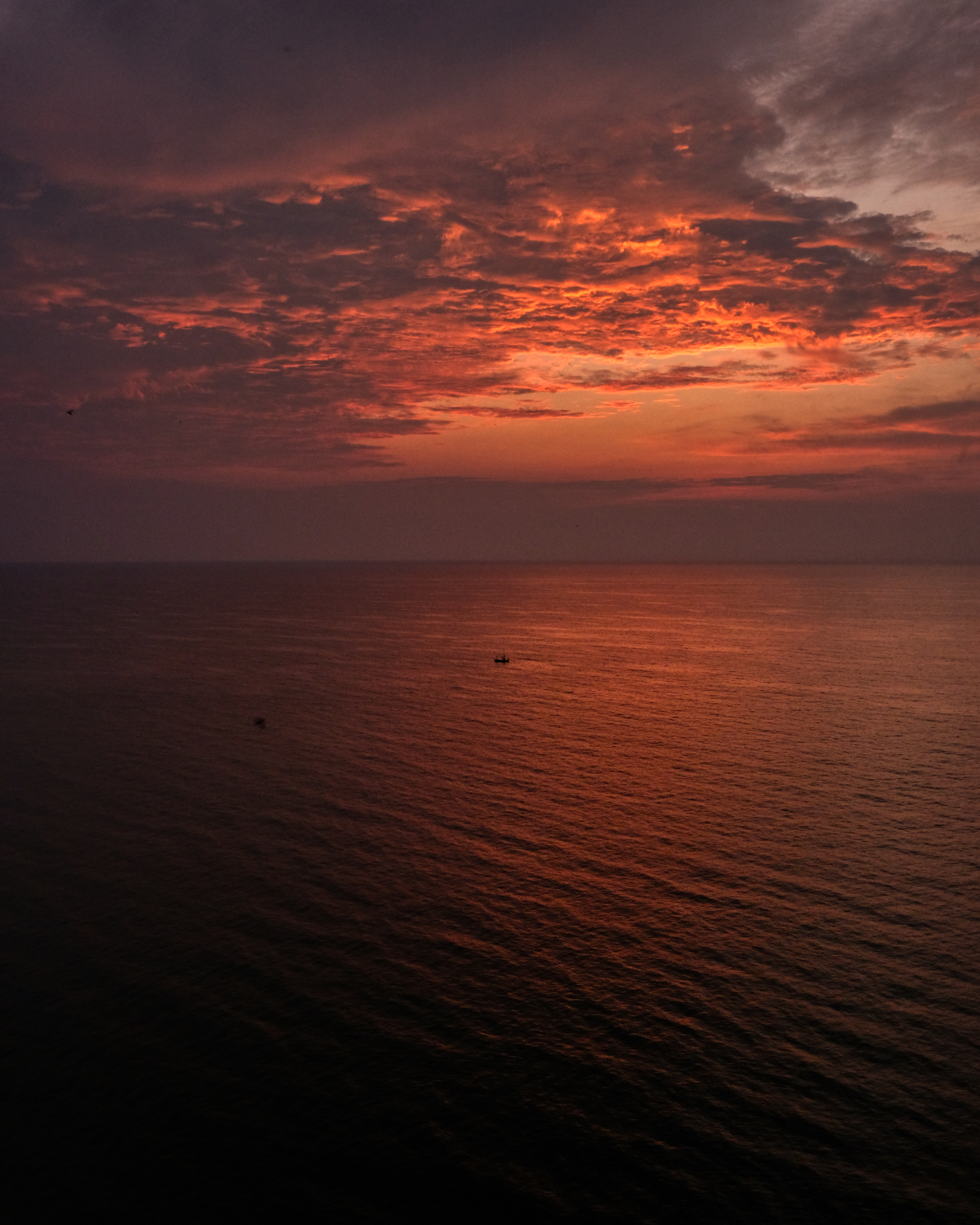 It's nice to sit on the balcony drinking the the first morning cup of coffee while the sun is rising over the Gulf of Thailand. The squid fishermen were returning with their catch after having been out to sea all night.
It's nice to sit on the balcony drinking the the first morning cup of coffee while the sun is rising over the Gulf of Thailand. The squid fishermen were returning with their catch after having been out to sea all night.
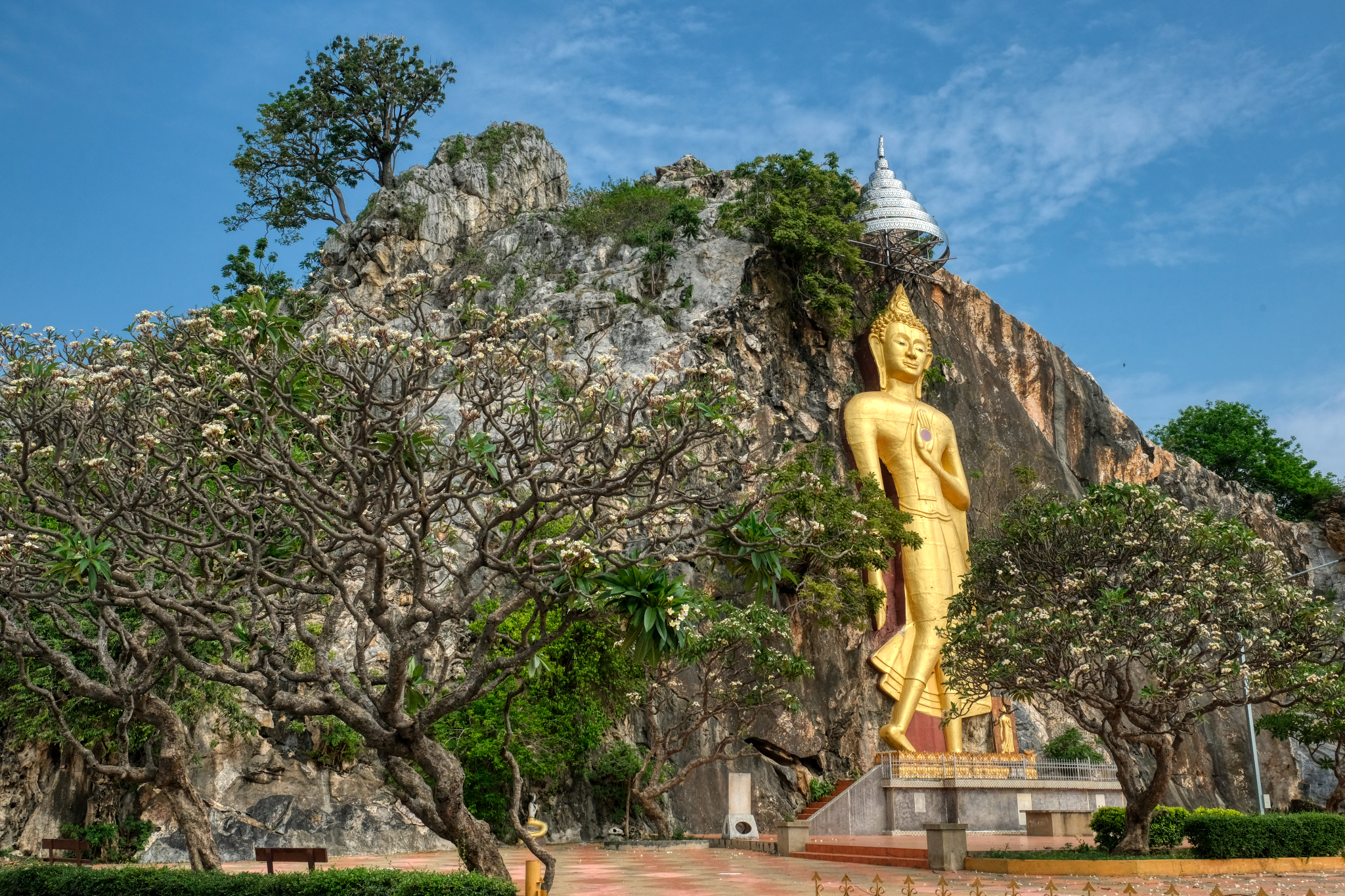 Along the Ratchaburi highway . . . a giant Buddha statue . . . without a place name.
Along the Ratchaburi highway . . . a giant Buddha statue . . . without a place name.
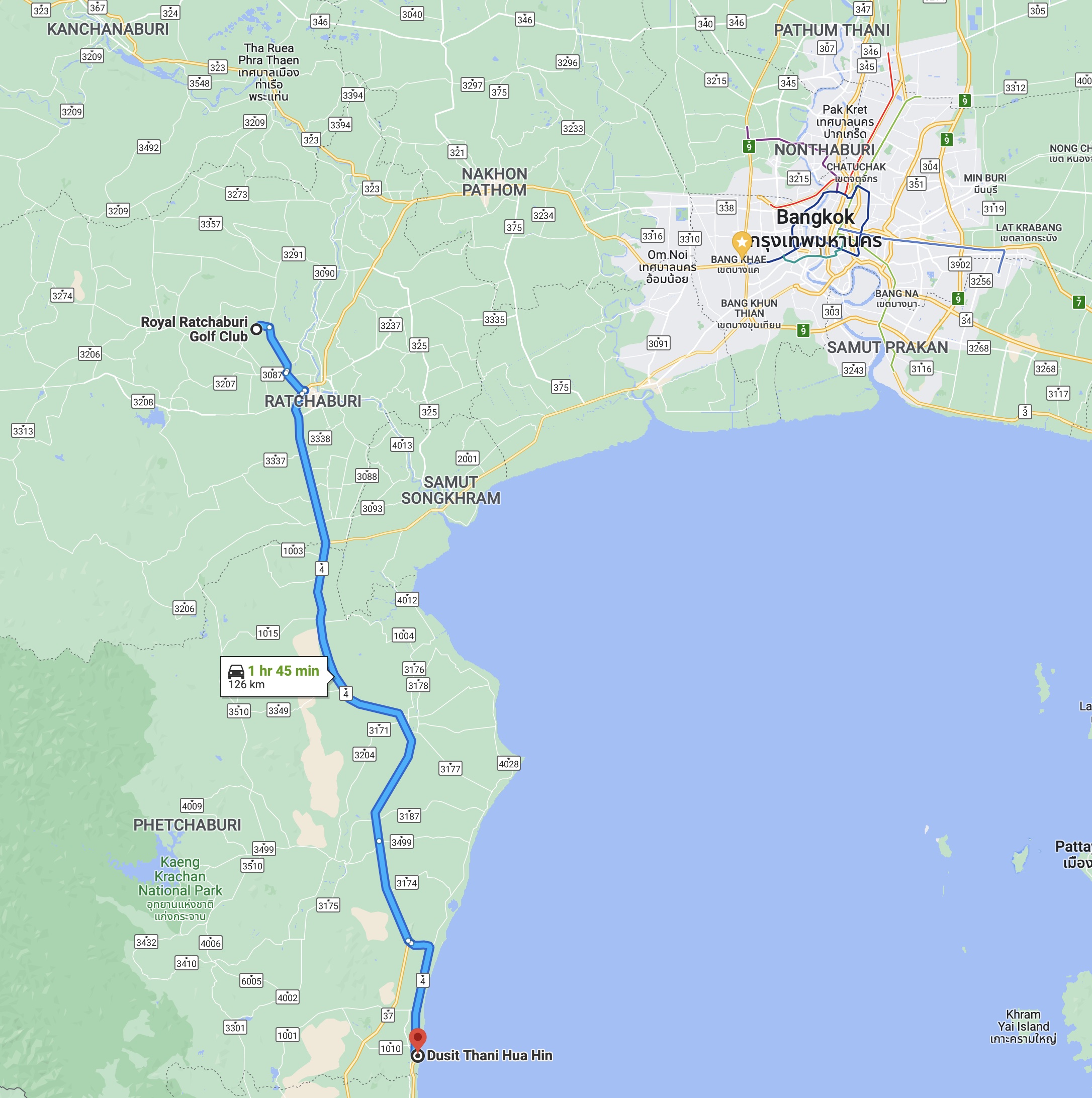 Only an hour and 45 minutes away . . . up and into the hilly Ratchaburi Province.
Only an hour and 45 minutes away . . . up and into the hilly Ratchaburi Province.
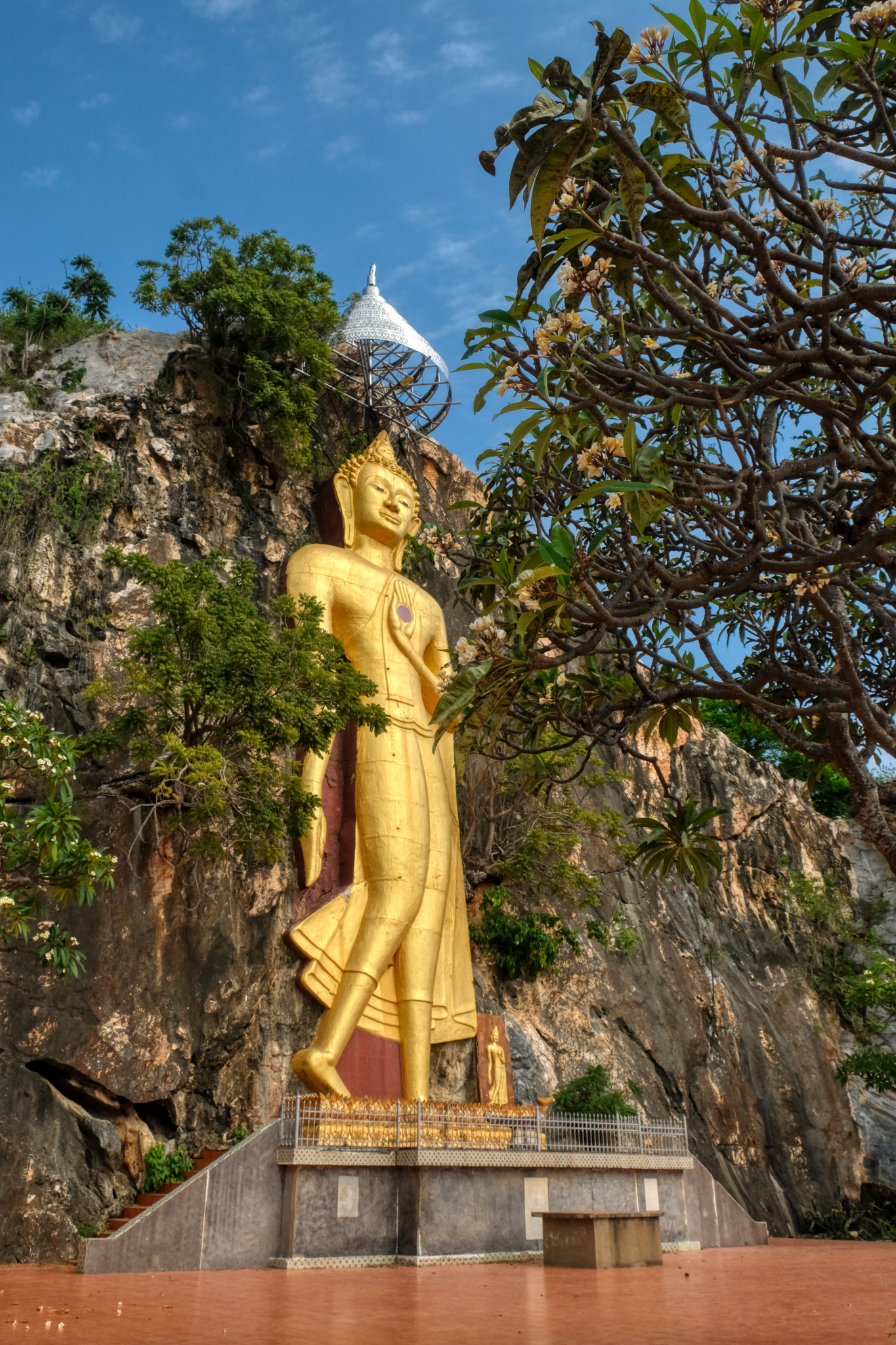 Small provincial roads in Thailand always serve up some amazing sights.
Small provincial roads in Thailand always serve up some amazing sights.
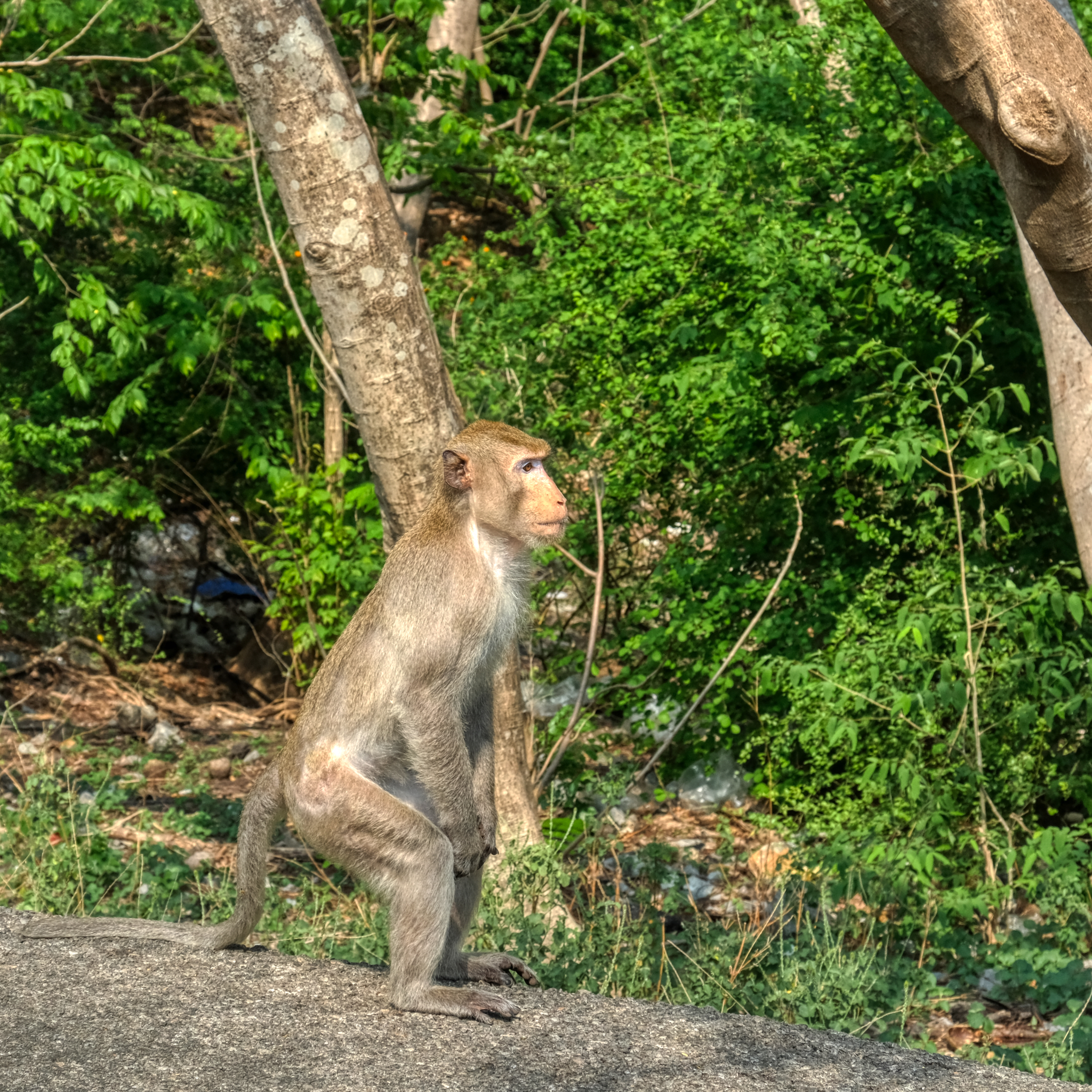 Yes, they have monkeys in Thailand. This one, and about 20 of his buddies kept me from leaving my car to walk up a trail to a large cave Buddha temple.
Yes, they have monkeys in Thailand. This one, and about 20 of his buddies kept me from leaving my car to walk up a trail to a large cave Buddha temple.
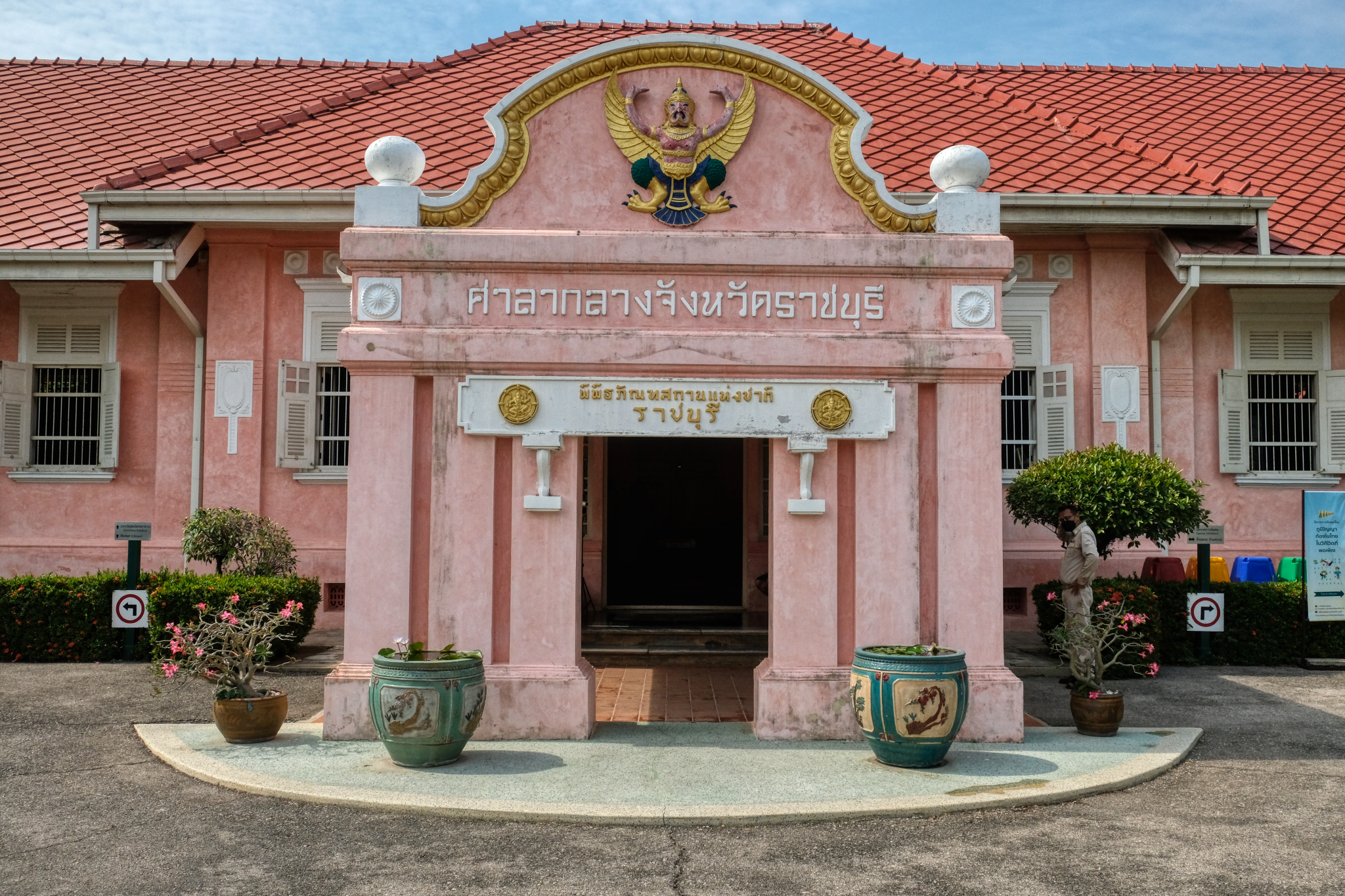 As I was on a 'ramble', I had no particular place to go. I made my way to Ratchaburi, a town I had never visited. I arrived in Ratchaburi on small roads and on the outskirts of town I discovered this wonderful place: The Ratchaburi National Museum.
As I was on a 'ramble', I had no particular place to go. I made my way to Ratchaburi, a town I had never visited. I arrived in Ratchaburi on small roads and on the outskirts of town I discovered this wonderful place: The Ratchaburi National Museum.
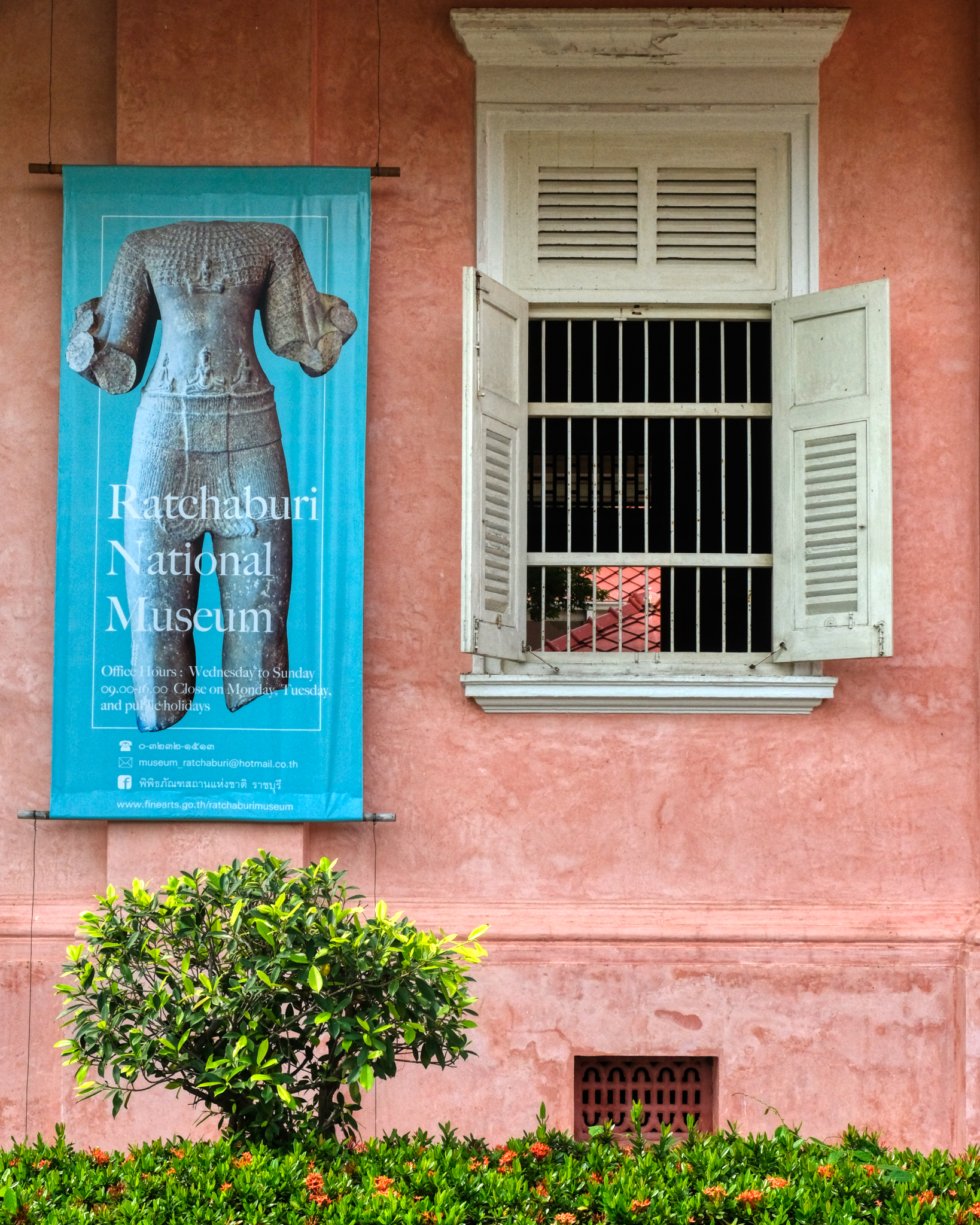 It was a gorgeous building . . . old Thai monumental style.
It was a gorgeous building . . . old Thai monumental style.
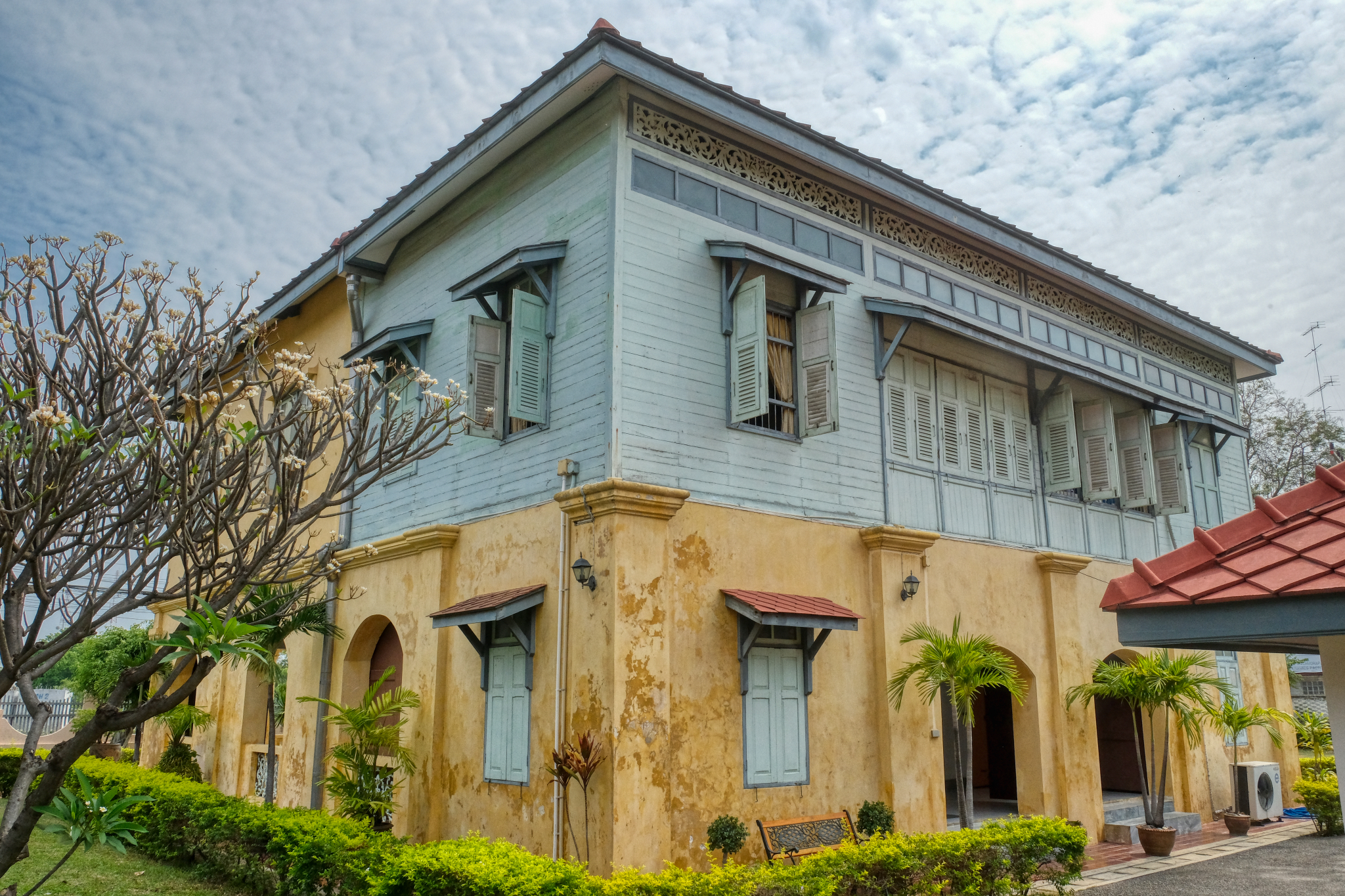 There were two buildings on the museum property. I adored the patina, color, and style of this old gem.
There were two buildings on the museum property. I adored the patina, color, and style of this old gem.
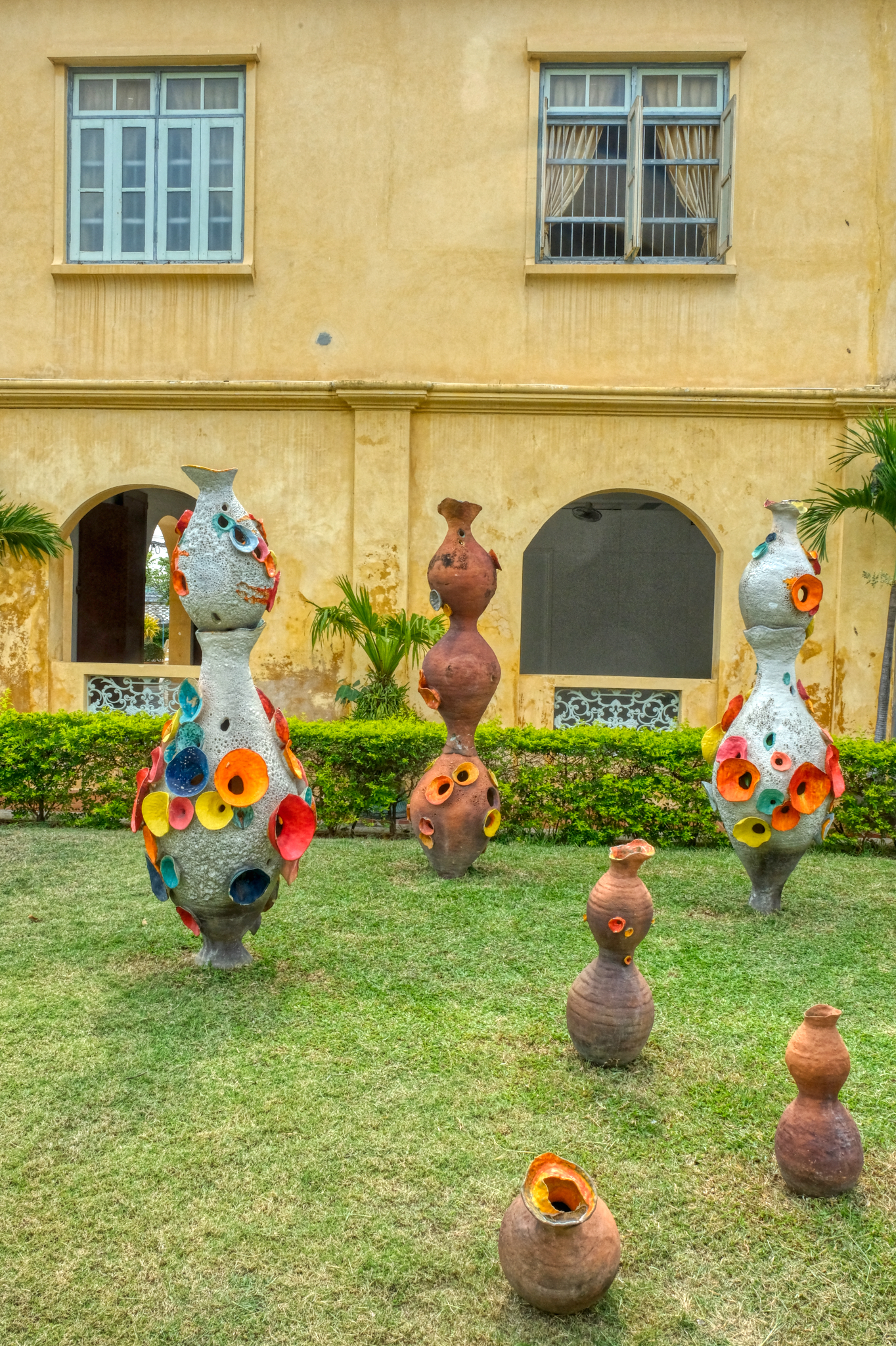 Being a museum, they had yard art too.
Being a museum, they had yard art too.
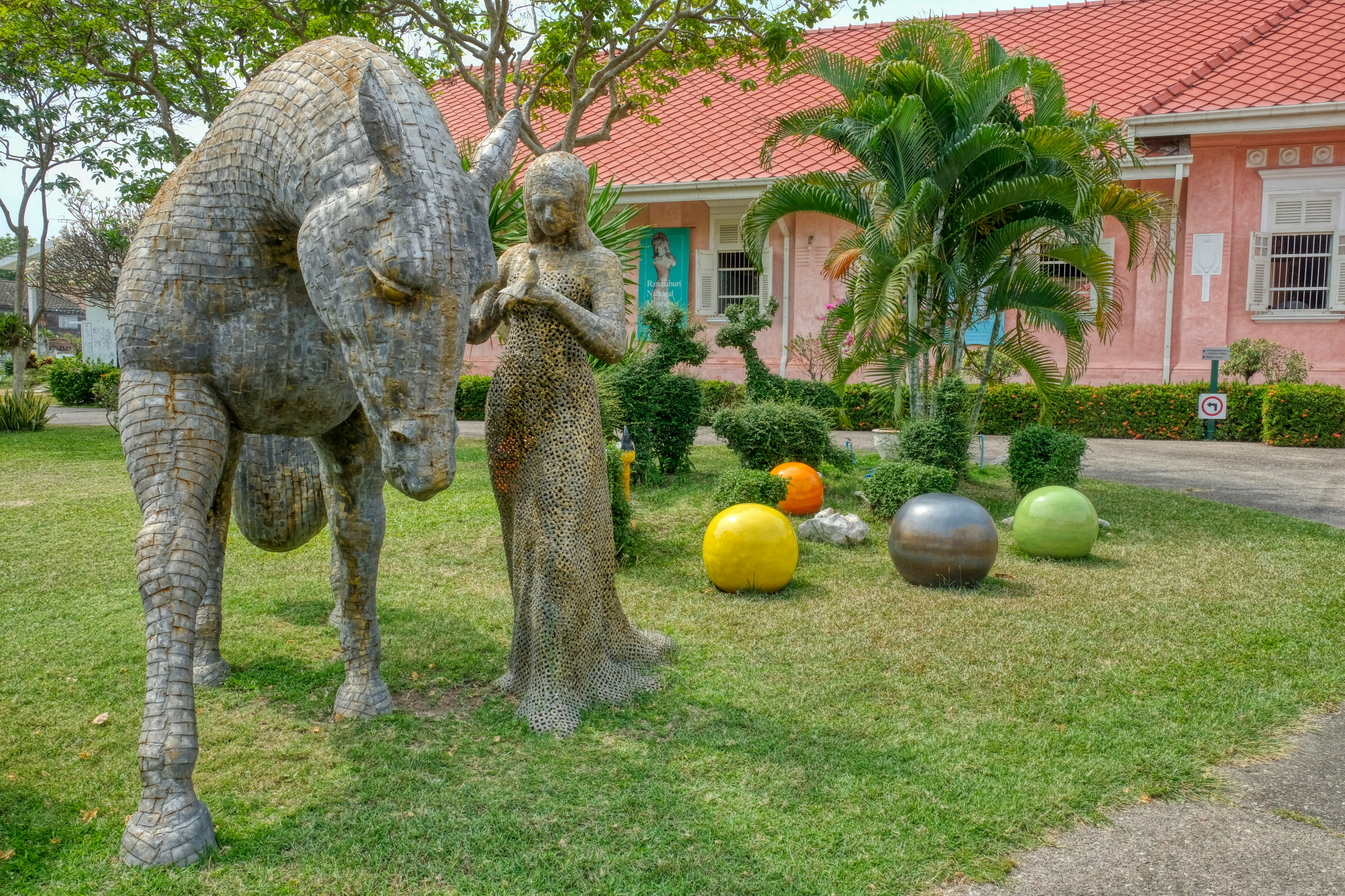 This large metal sculpture was fantastic.
This large metal sculpture was fantastic.
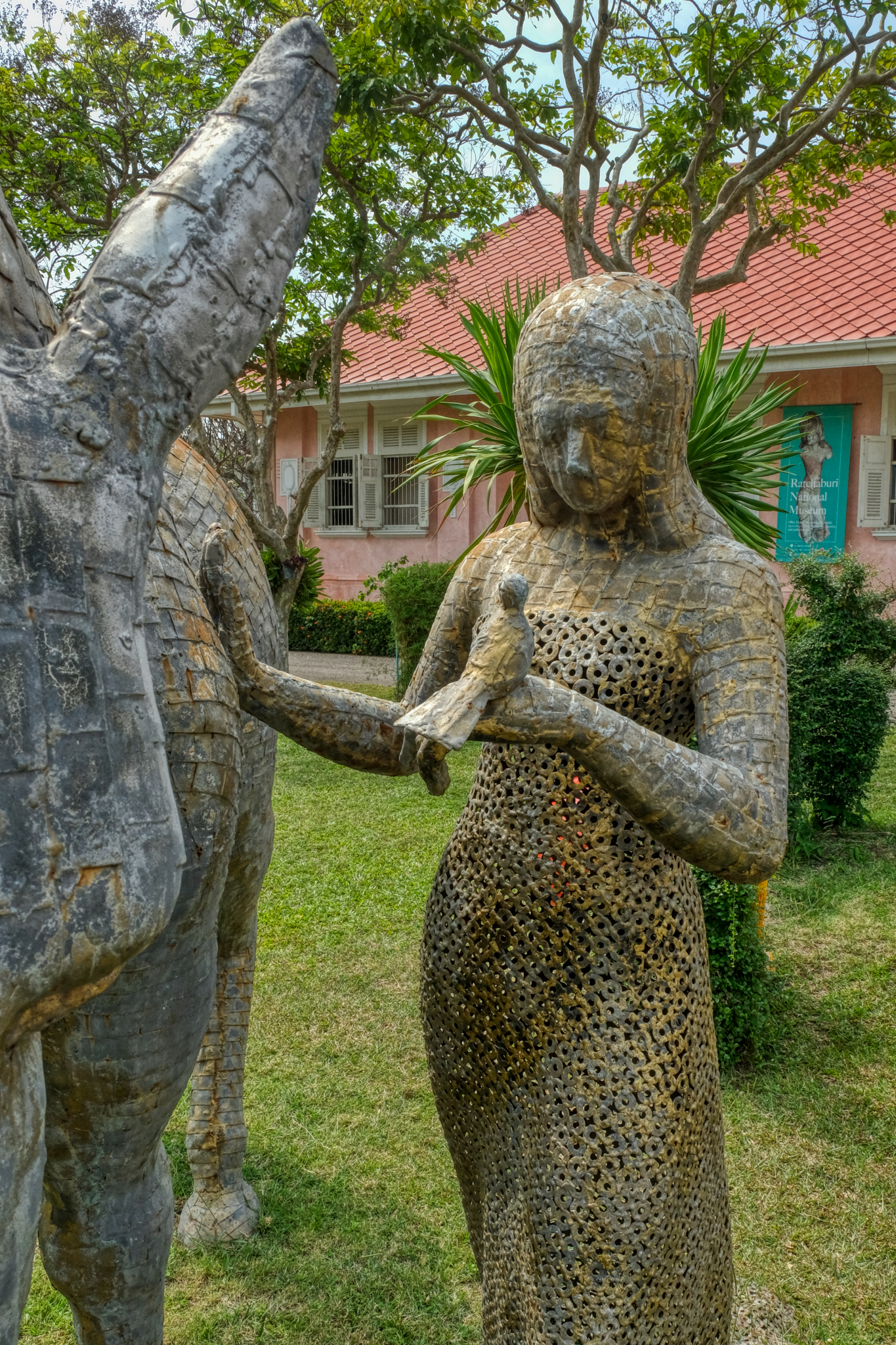 Made entirely of ordinary steel washers and small squares of steel. Amazing.
Made entirely of ordinary steel washers and small squares of steel. Amazing.
 The museum rules strictly prohibited photography of the exhibits . . . and they enforced this rule by having one of the museum staff follow me from room to room. They did, however, allow me to photograph the halls and courtyard when I asked.
The museum rules strictly prohibited photography of the exhibits . . . and they enforced this rule by having one of the museum staff follow me from room to room. They did, however, allow me to photograph the halls and courtyard when I asked.
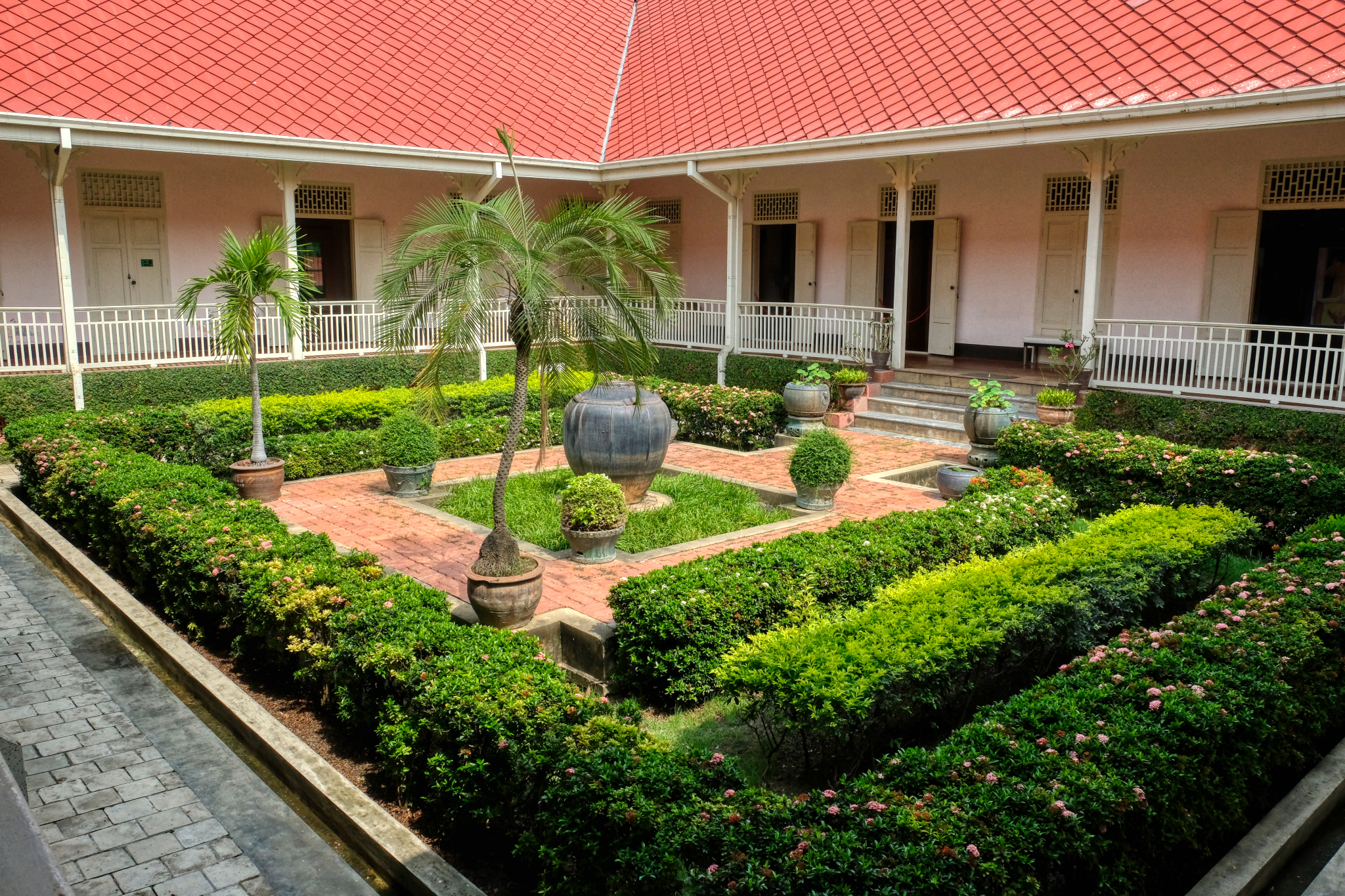 The museum collection was excellent and very well organized. The exhibits began in prehistory and ancient geology of the area and proceeded chronologically as you walked from room to room around the courtyard. It was one of the best, most informative provincial museums I have been to anywhere in the world.
The museum collection was excellent and very well organized. The exhibits began in prehistory and ancient geology of the area and proceeded chronologically as you walked from room to room around the courtyard. It was one of the best, most informative provincial museums I have been to anywhere in the world.
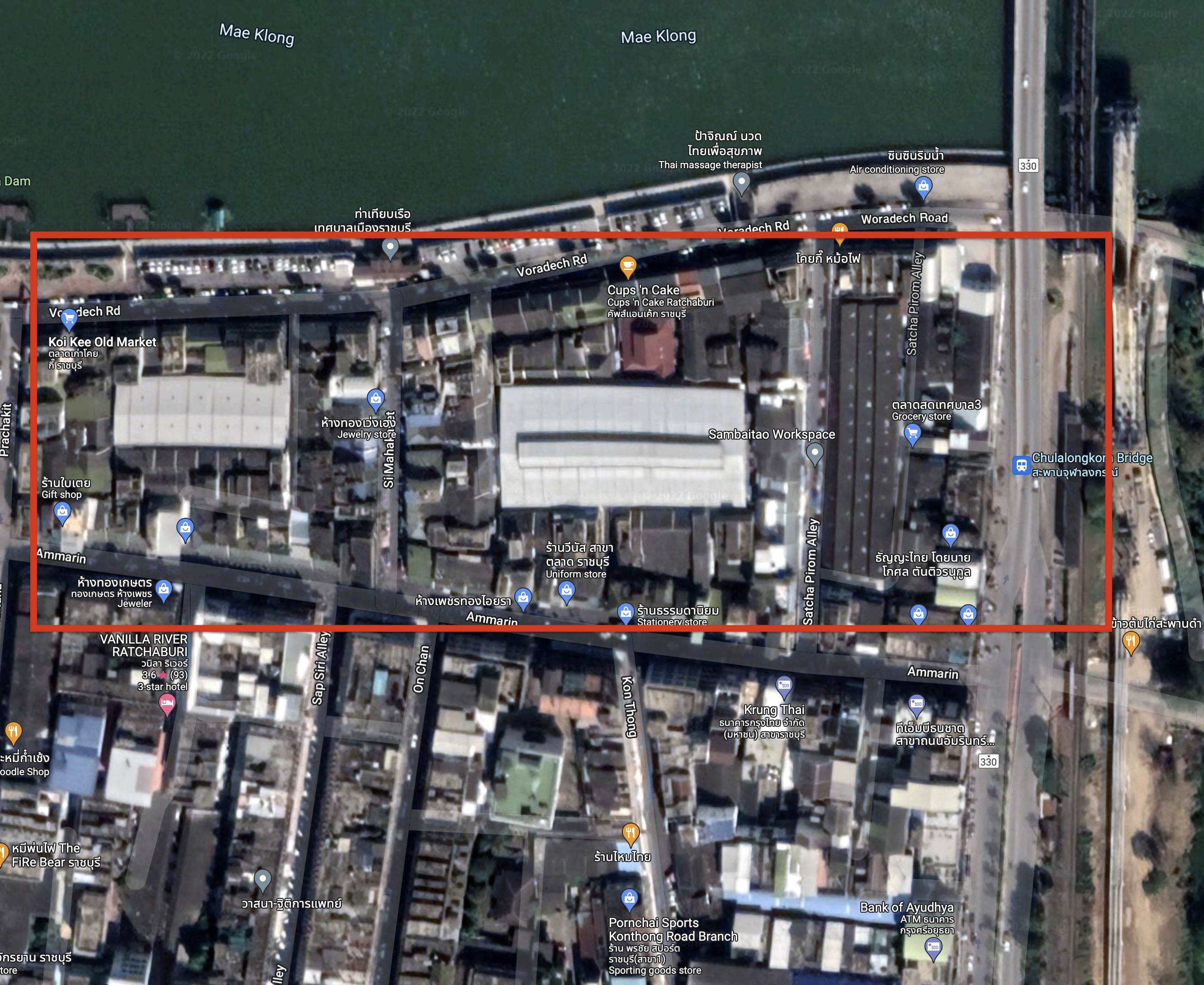 I next drove into the town center and the old city center market. The market occupies the inside center alleyways of several blocks along the Mae Klong River.
I next drove into the town center and the old city center market. The market occupies the inside center alleyways of several blocks along the Mae Klong River.
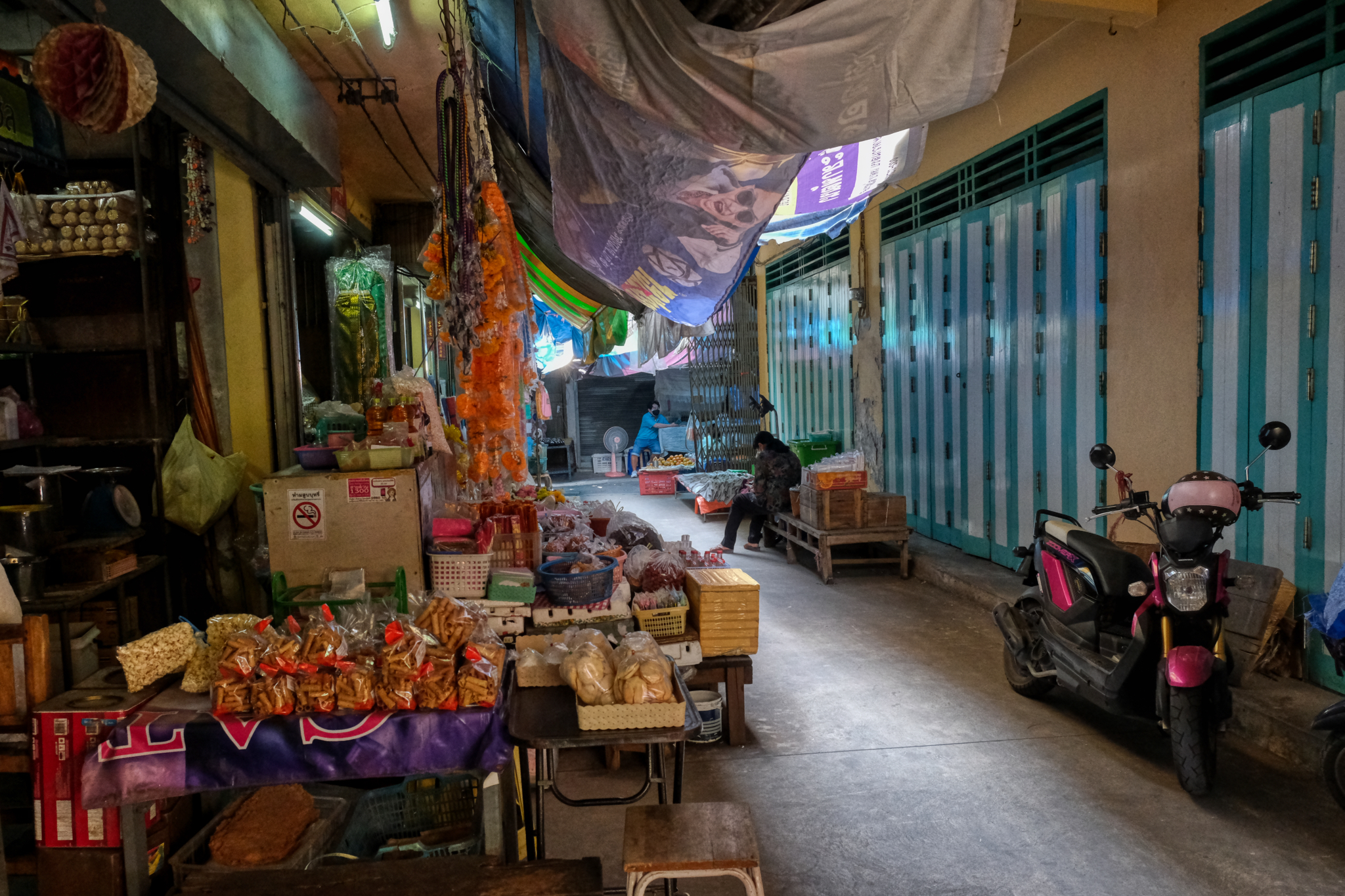 As I left the museum I looked on my GoogleMaps and spotted a river and "Old Town Market" . . . so I drove straight there. I love these old town, city center markets in Thailand's small cities. This market would have been in it's prime during the 1950s and 1960s.
As I left the museum I looked on my GoogleMaps and spotted a river and "Old Town Market" . . . so I drove straight there. I love these old town, city center markets in Thailand's small cities. This market would have been in it's prime during the 1950s and 1960s.
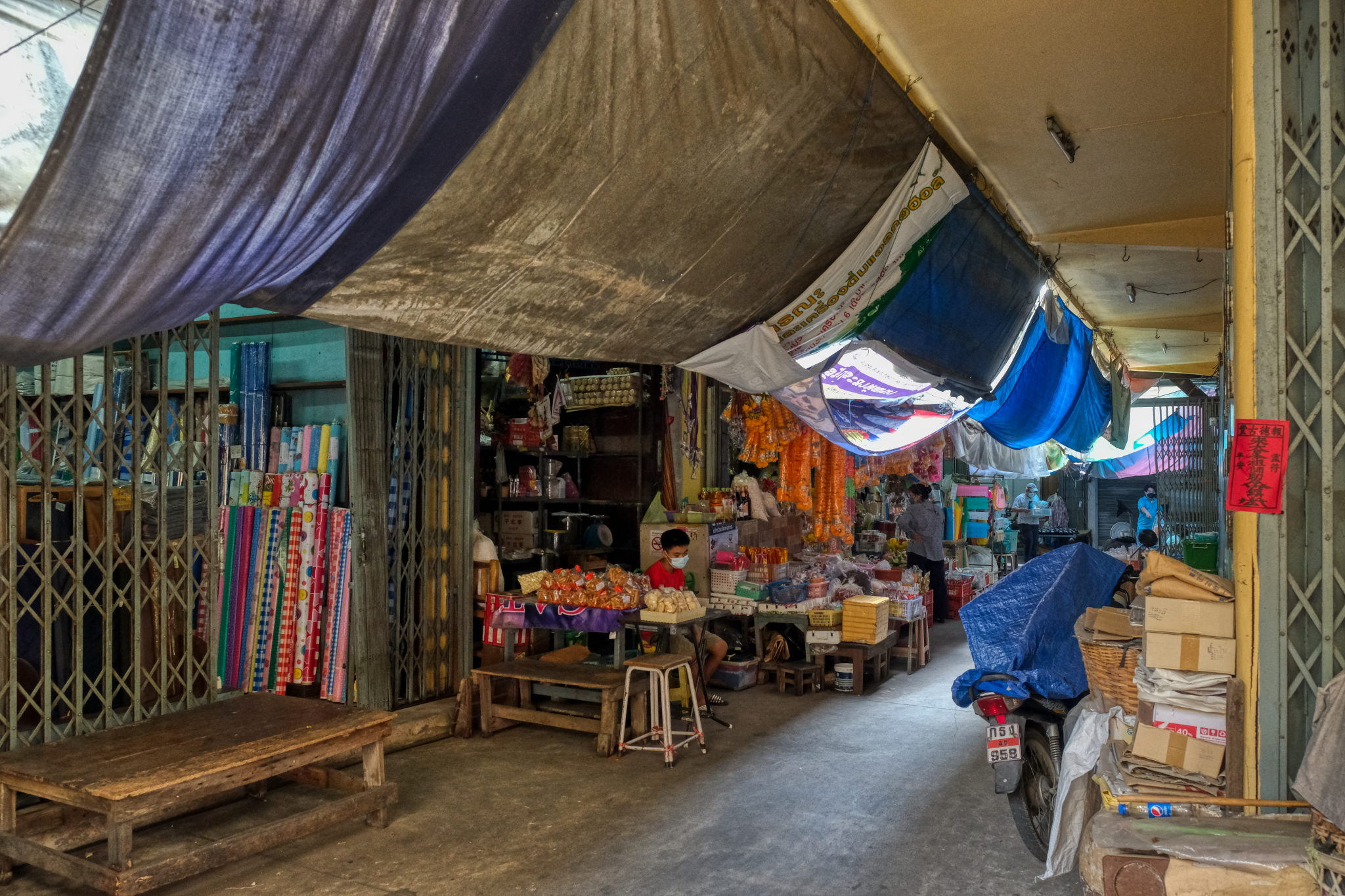 The old markets are the remnants of the oldest parts of Thai cities and maintain an older way of doing business.
The old markets are the remnants of the oldest parts of Thai cities and maintain an older way of doing business.
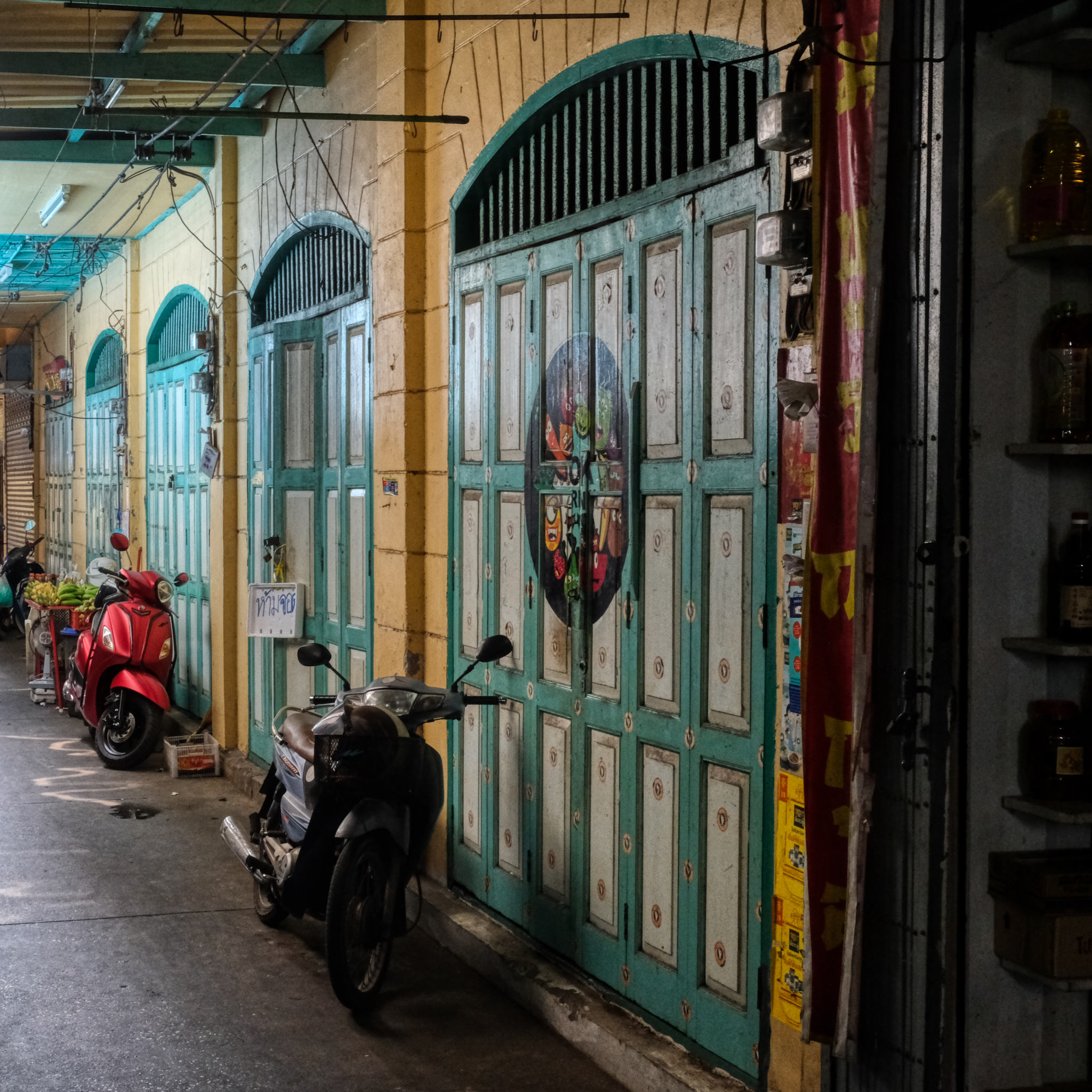 The city or local area government seems to have taken an interest in this old market. Many of the walls and old panel doors seem to have been painted recently. It looked very good.
The city or local area government seems to have taken an interest in this old market. Many of the walls and old panel doors seem to have been painted recently. It looked very good.
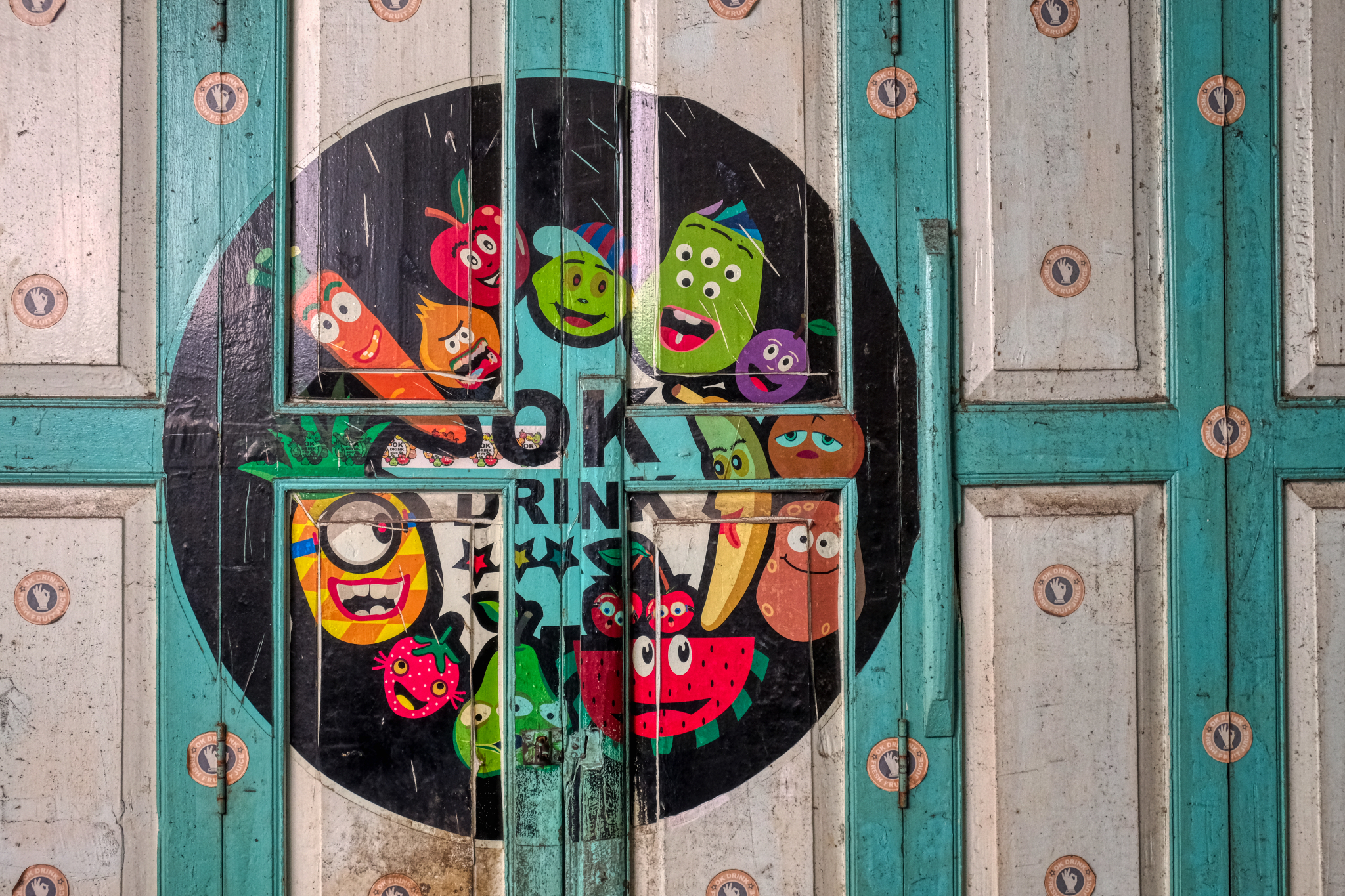 A colorful advertisement on the panel doors.
A colorful advertisement on the panel doors.
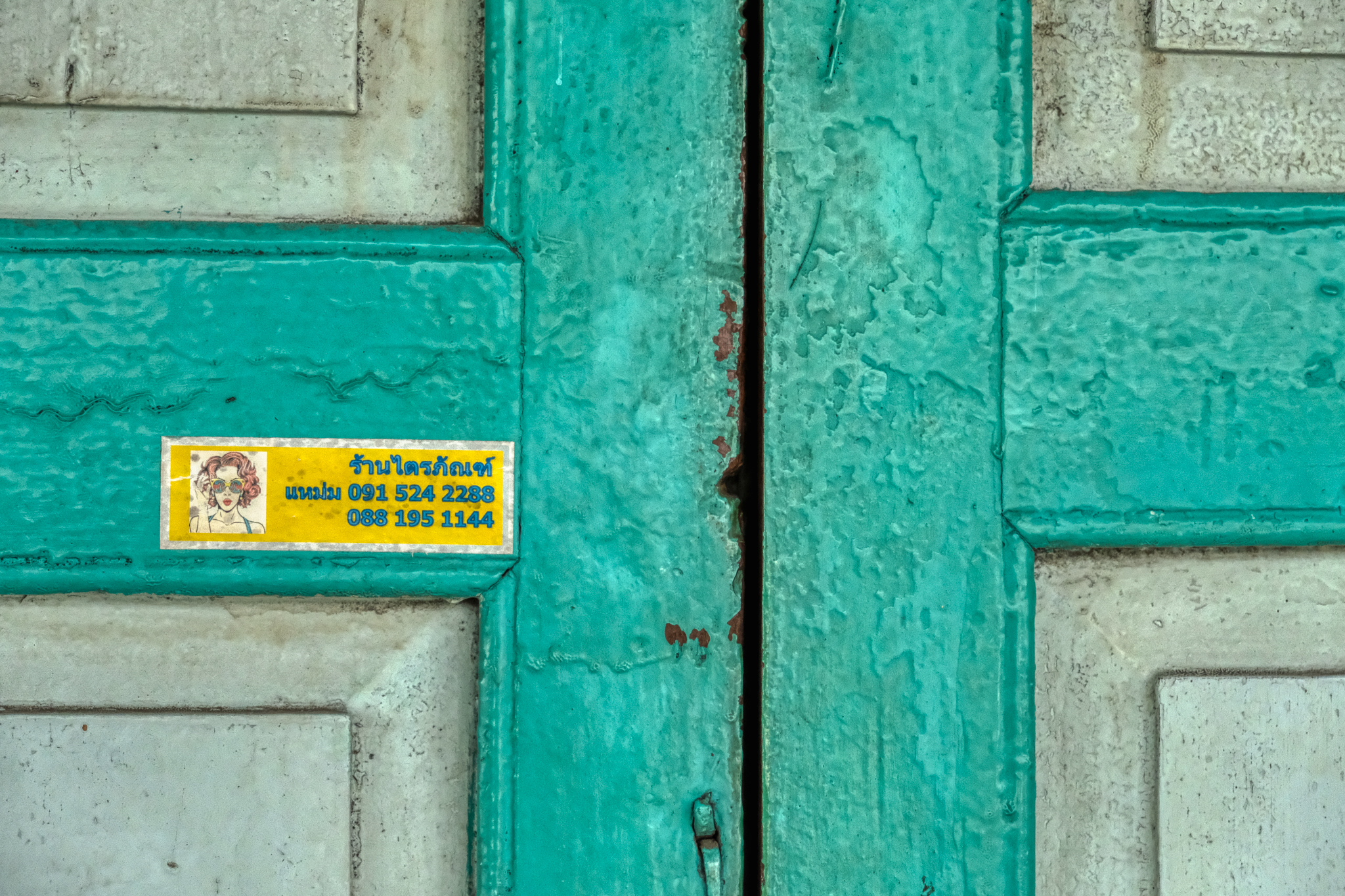 History in paint.
History in paint.
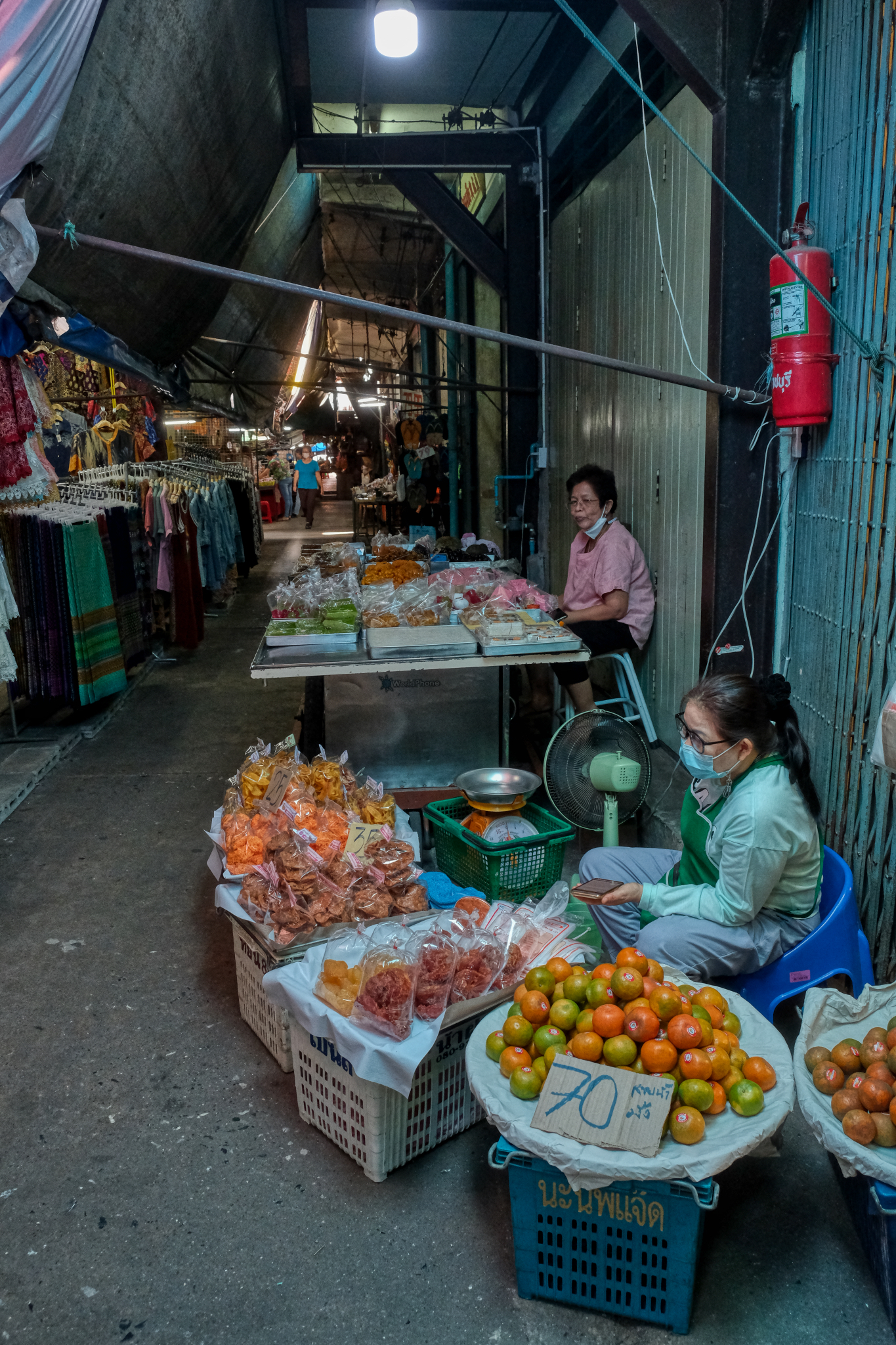 Small business in the alleys, which are themselves lined with very old small shops.
Small business in the alleys, which are themselves lined with very old small shops.
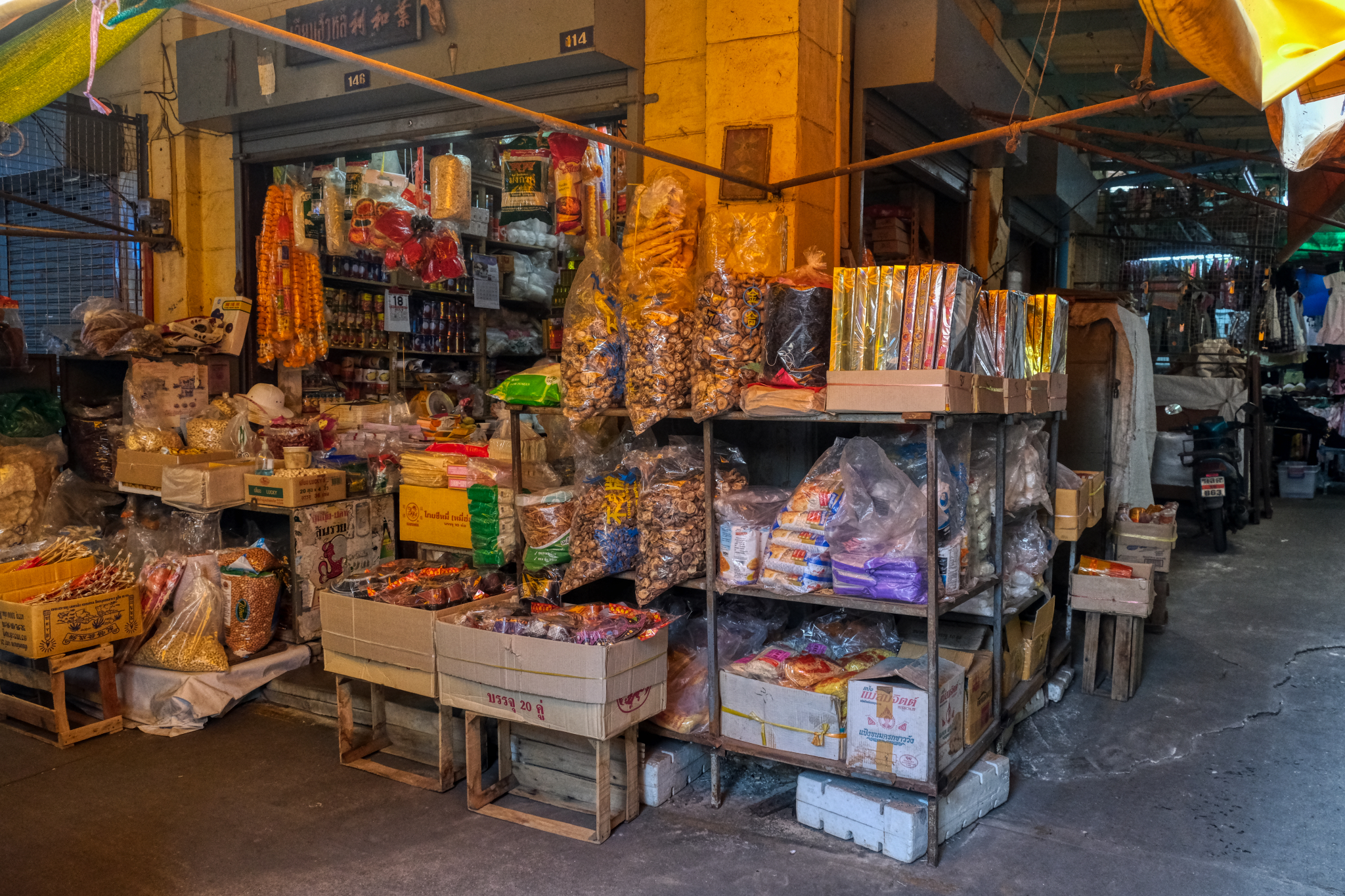 My first thought when seeing this shop was, 'supply and demand.' What kind of world is outside of this market can be deduced by what one sees for sale in it. There is an old pattern of consumption, imbedded in the cultural practices, the anthropology of food, that still demands these items.
My first thought when seeing this shop was, 'supply and demand.' What kind of world is outside of this market can be deduced by what one sees for sale in it. There is an old pattern of consumption, imbedded in the cultural practices, the anthropology of food, that still demands these items.
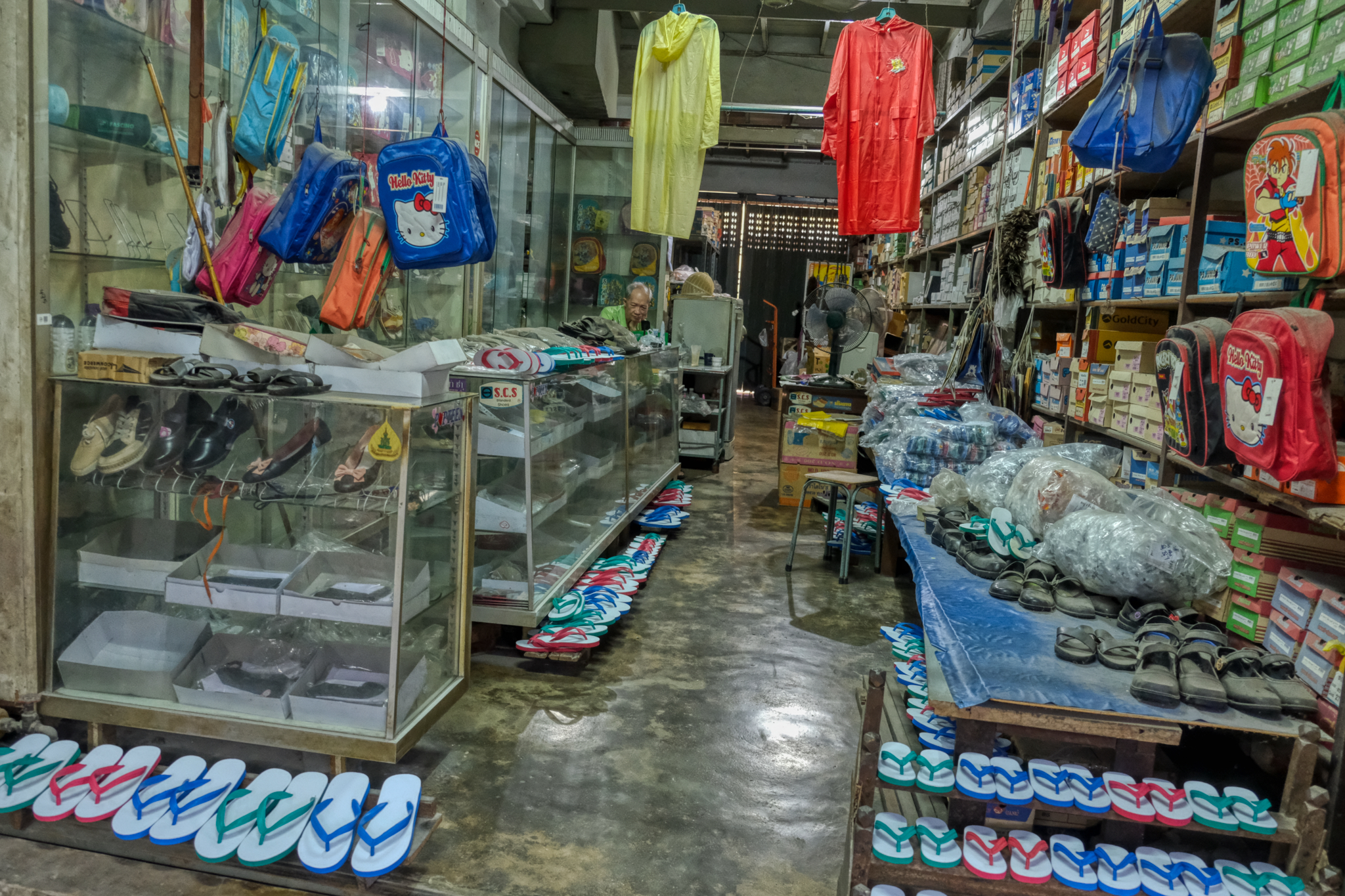 Times change. There was a time, maybe 50 years ago, when this shop was at the center of the Ratchaburi commercial center. You came here, and here only, if you wanted to buy a pair of new shoes. But the city grew in a different direction: what was the busy hub of activity has now became the backwater of the old town 'wet market.' This old man seems to have been here as long as the furniture. He doesn't even bother to dust off the shoes any more.
Times change. There was a time, maybe 50 years ago, when this shop was at the center of the Ratchaburi commercial center. You came here, and here only, if you wanted to buy a pair of new shoes. But the city grew in a different direction: what was the busy hub of activity has now became the backwater of the old town 'wet market.' This old man seems to have been here as long as the furniture. He doesn't even bother to dust off the shoes any more.
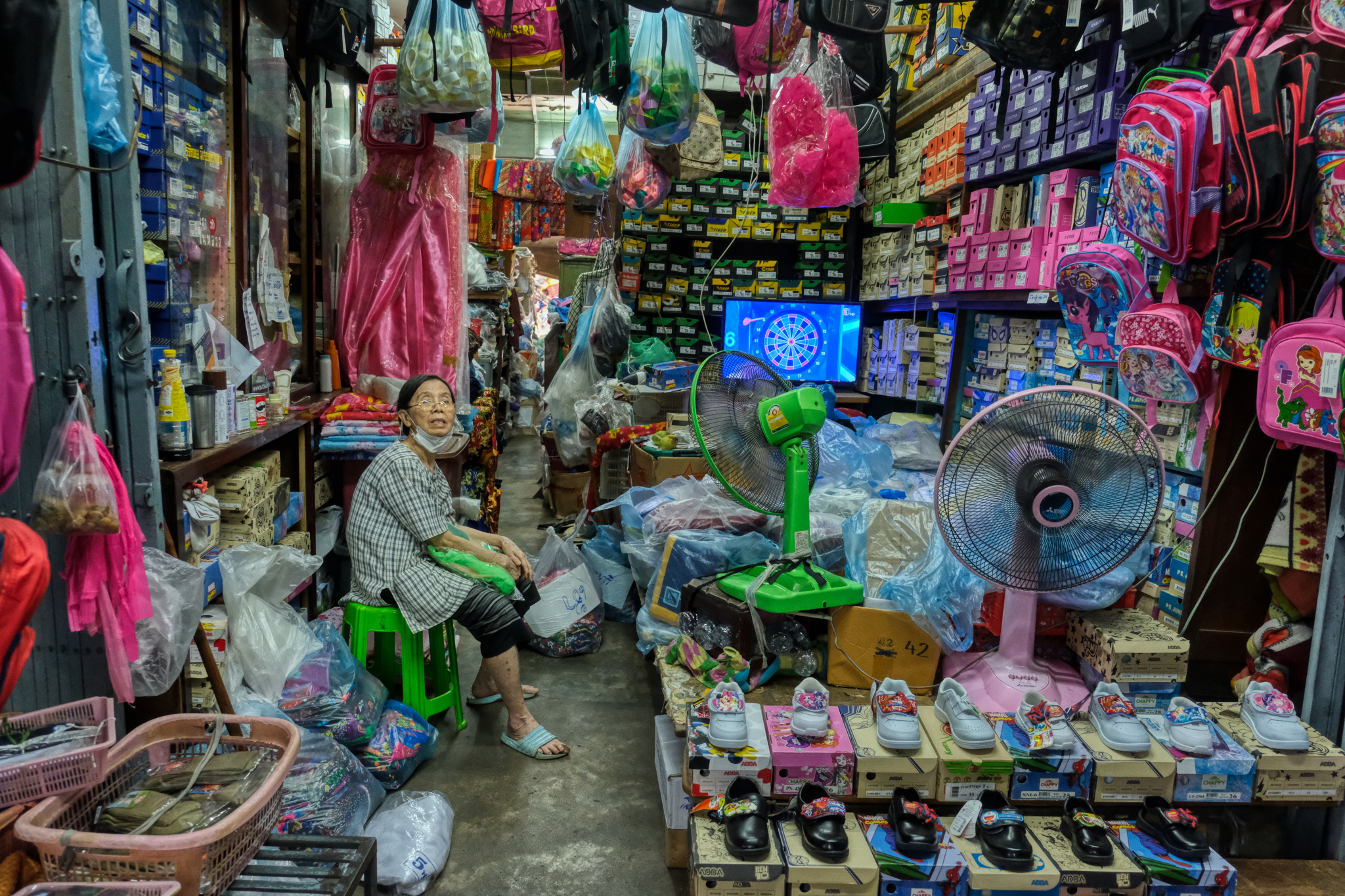 She is still hopeful and making an effort. These shops have suffered terribly during the pandemic: people do not like to congregate in the tight quarters of these narrow alleyways. I am sure she lives in the back of this shop.
She is still hopeful and making an effort. These shops have suffered terribly during the pandemic: people do not like to congregate in the tight quarters of these narrow alleyways. I am sure she lives in the back of this shop.
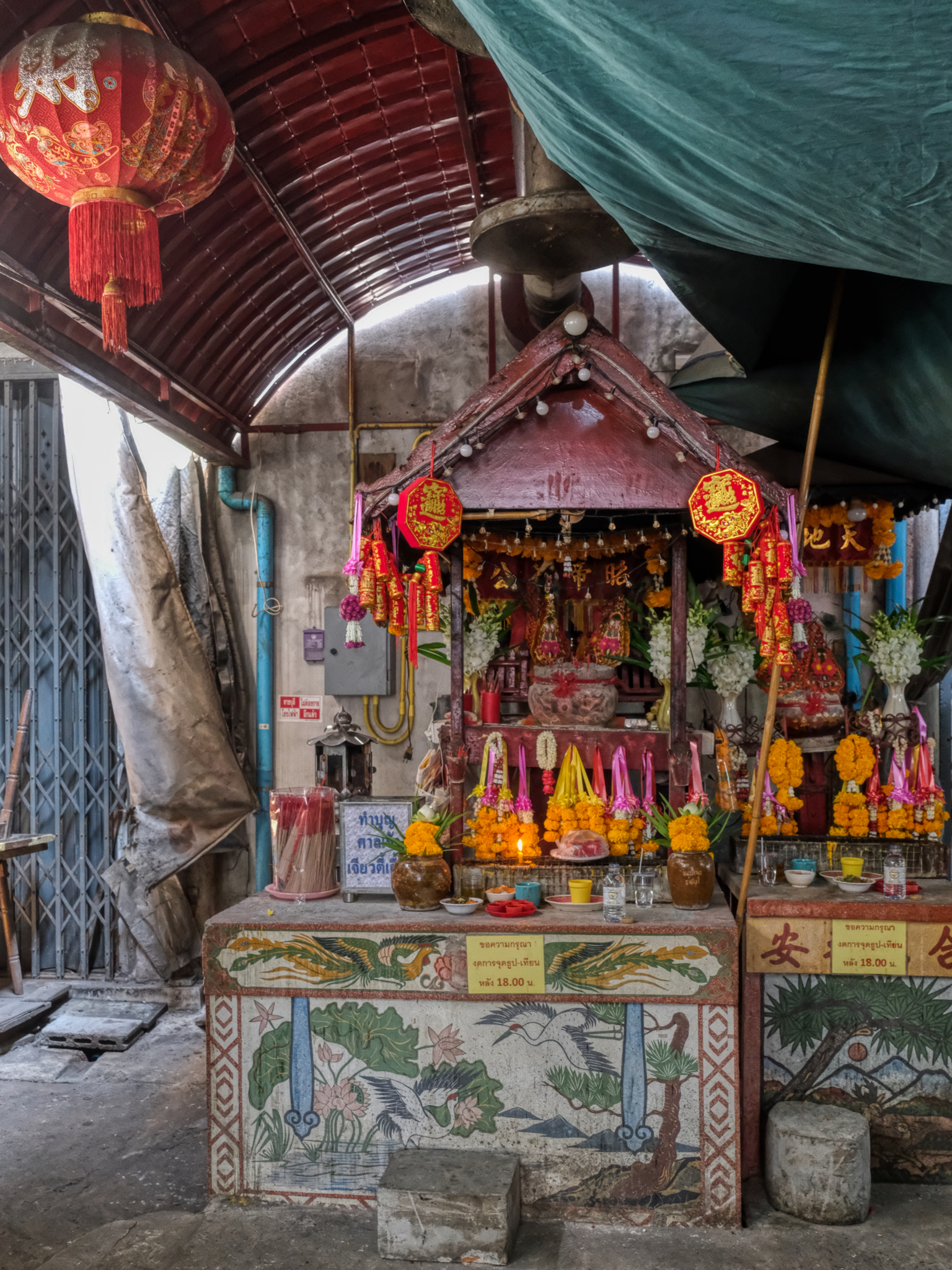 Tucked away deep in the old market is the spirit house/spirit altar for the shopkeepers to leave their offerings in hopes of better luck. The flowers and other offerings were all fresh from this very morning.
Tucked away deep in the old market is the spirit house/spirit altar for the shopkeepers to leave their offerings in hopes of better luck. The flowers and other offerings were all fresh from this very morning.
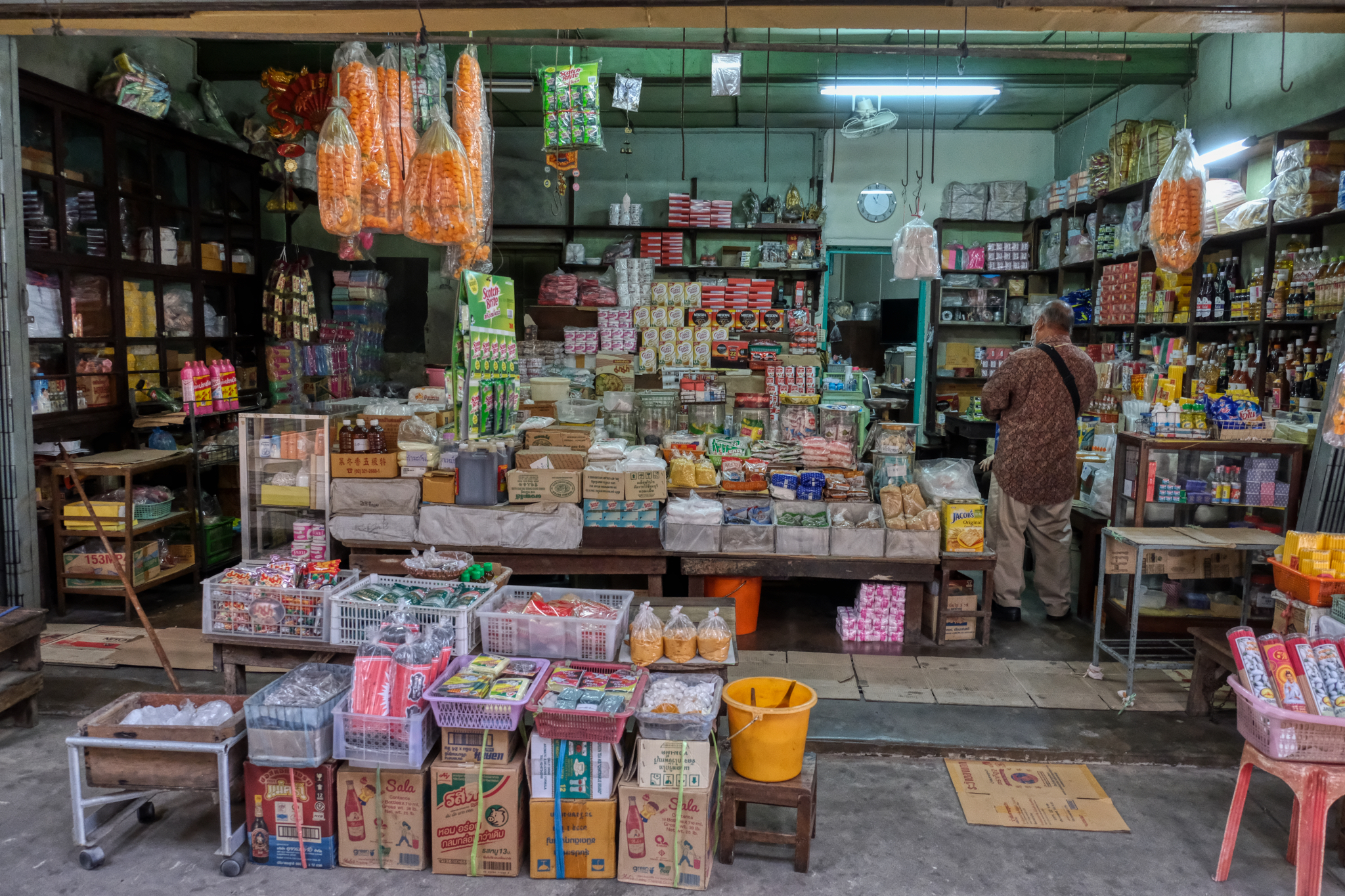 This dry goods shop in the old market seemed to be doing pretty good. You have to remember that less than a mile from this spot there are several multinational big box giant supermarkets. It is hard to understand how these small shops survive. I assume it survives by servicing those who work in the old market itself.
This dry goods shop in the old market seemed to be doing pretty good. You have to remember that less than a mile from this spot there are several multinational big box giant supermarkets. It is hard to understand how these small shops survive. I assume it survives by servicing those who work in the old market itself.
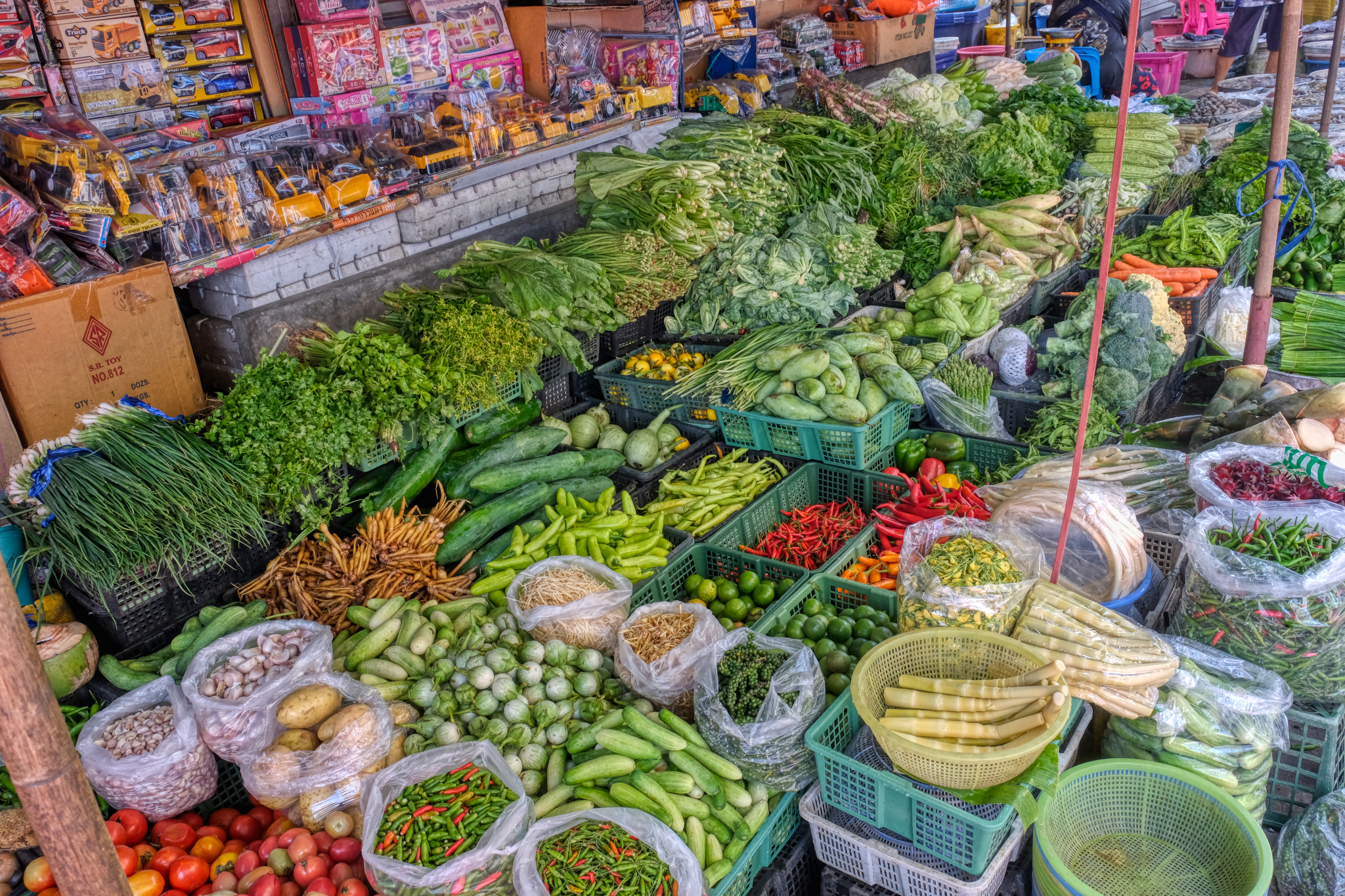 There were many sections of the old town market, and of course, one of them was for fresh fruits and vegetables. So delicious in Thailand.
There were many sections of the old town market, and of course, one of them was for fresh fruits and vegetables. So delicious in Thailand.
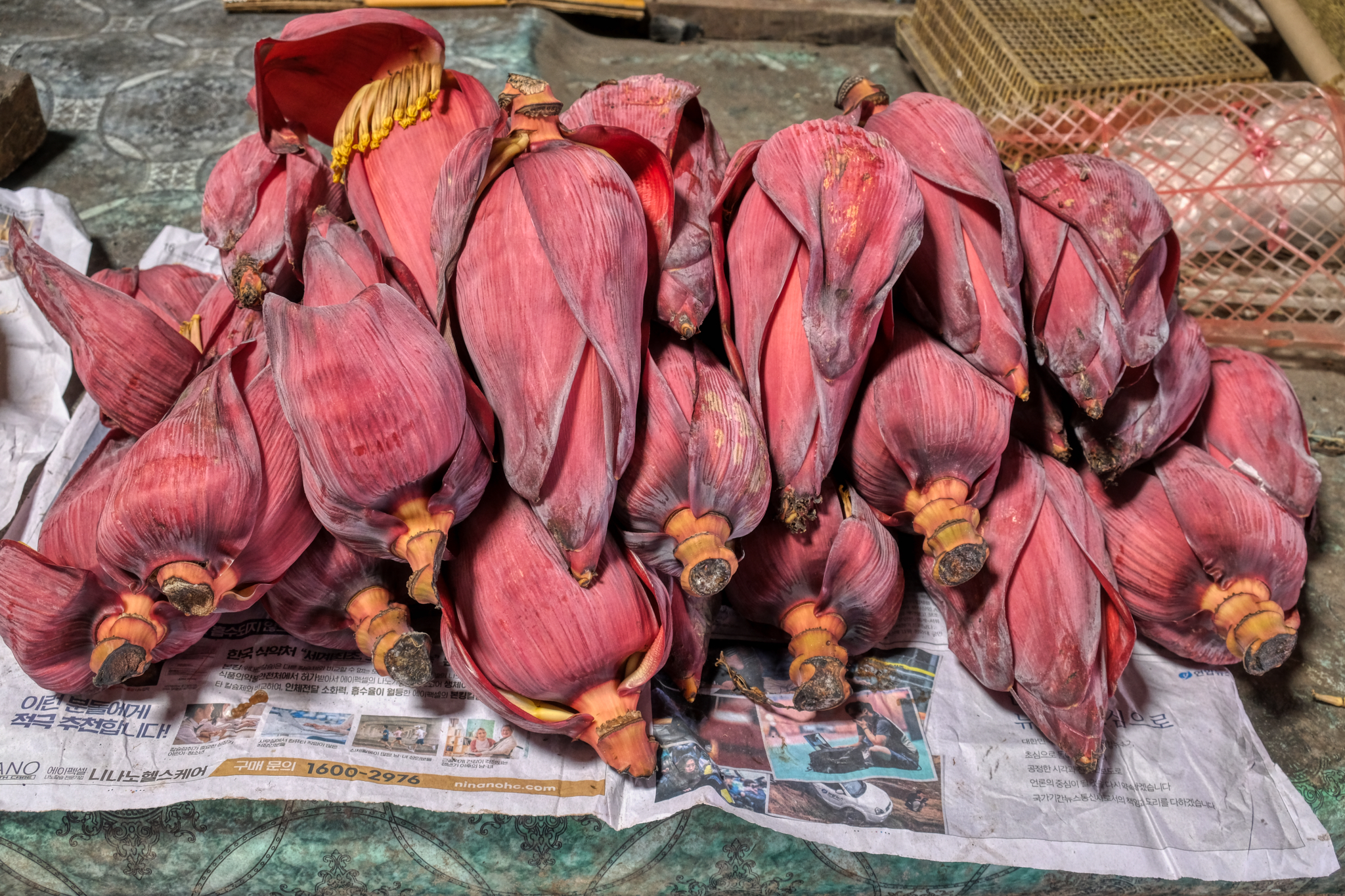 Banana flower hearts . . . used in some Thai dishes.
Banana flower hearts . . . used in some Thai dishes.
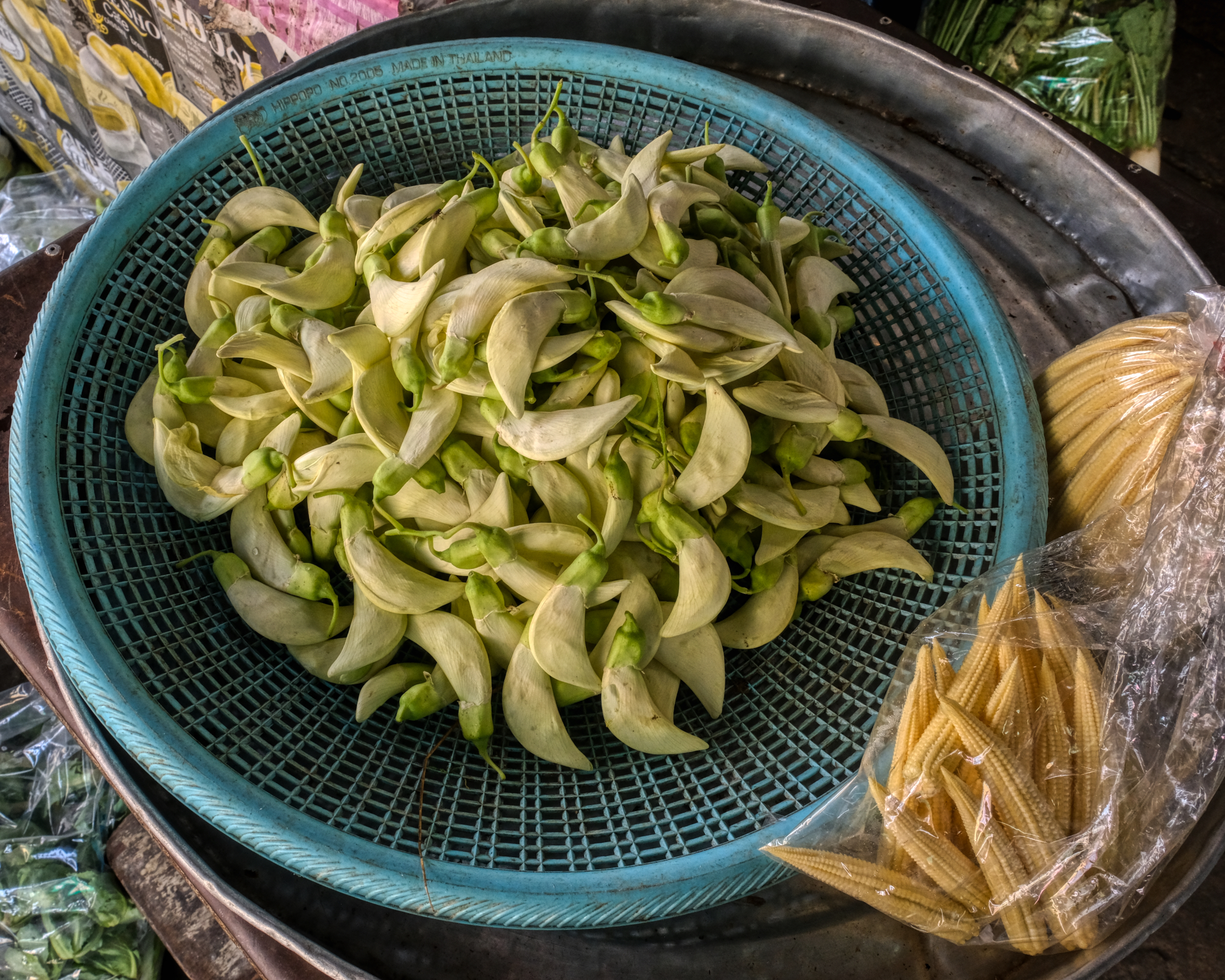 I had never seen this before . . . some kind of flower bud for use in one of the many thousands of Thai dishes.
I had never seen this before . . . some kind of flower bud for use in one of the many thousands of Thai dishes.
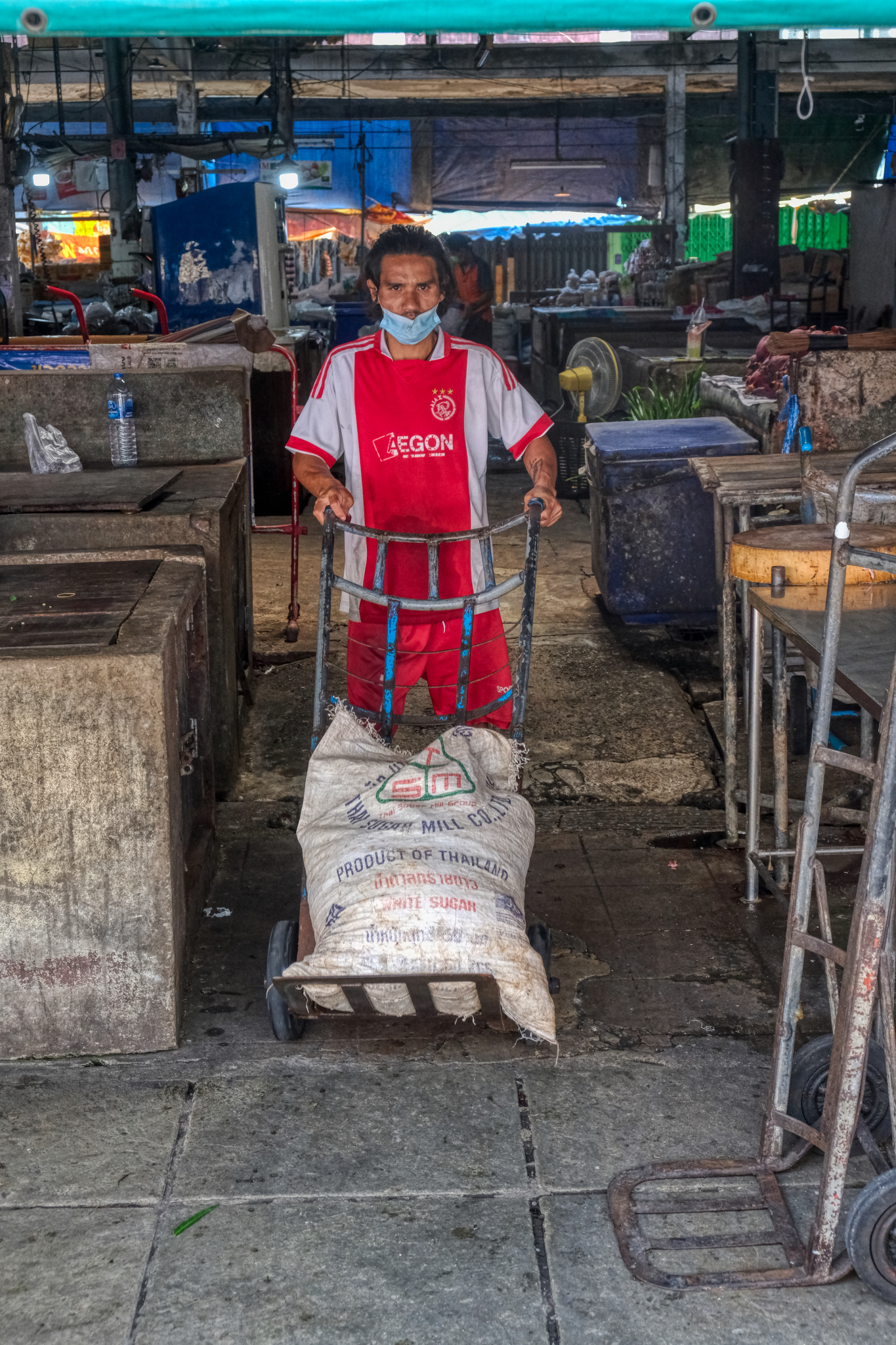 Although most of the market I saw so far was clean, neat, and recently refurbished, I eventually found the oldest part of the market. It was partially abandoned and the commerce there seemed to be left to the poorest people.
Although most of the market I saw so far was clean, neat, and recently refurbished, I eventually found the oldest part of the market. It was partially abandoned and the commerce there seemed to be left to the poorest people.
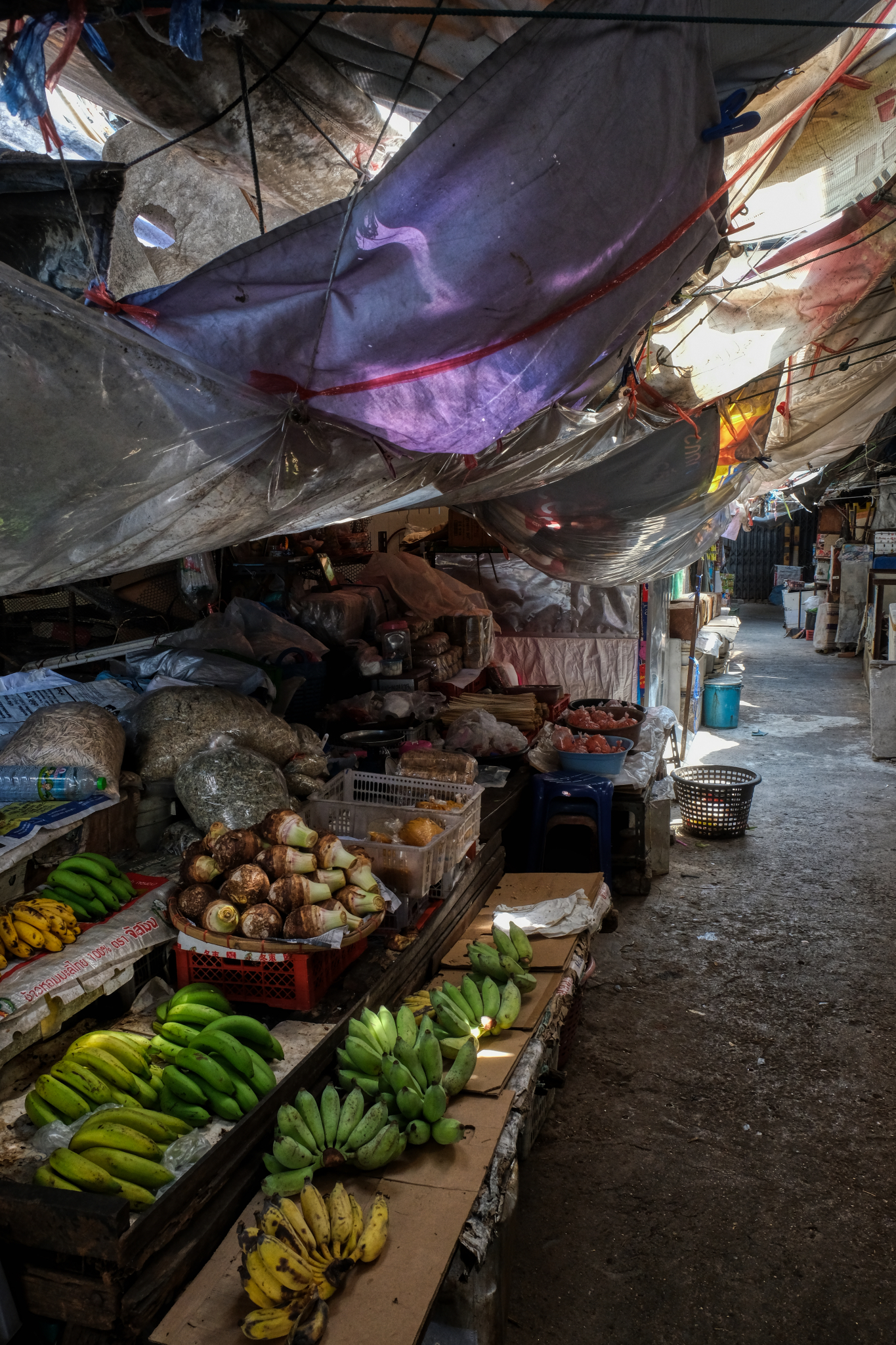 Old plastic rain flies over meagre offerings in the old, dead market. It is here we see the dilapidation caused by the corporate big box stores a couple of blocks away. I LOVE this photo.
Old plastic rain flies over meagre offerings in the old, dead market. It is here we see the dilapidation caused by the corporate big box stores a couple of blocks away. I LOVE this photo.
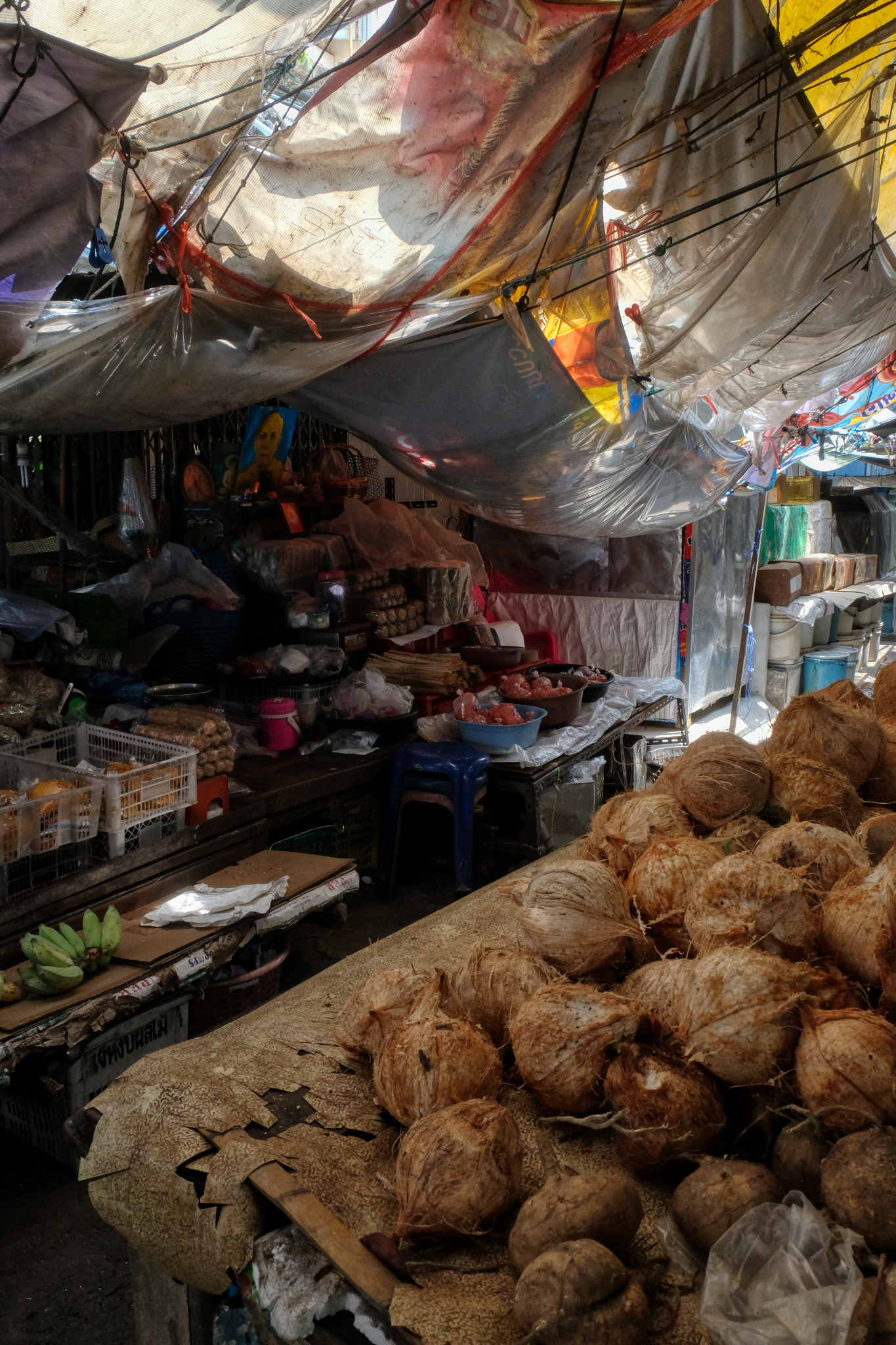 Old coconuts for sale.
Old coconuts for sale.
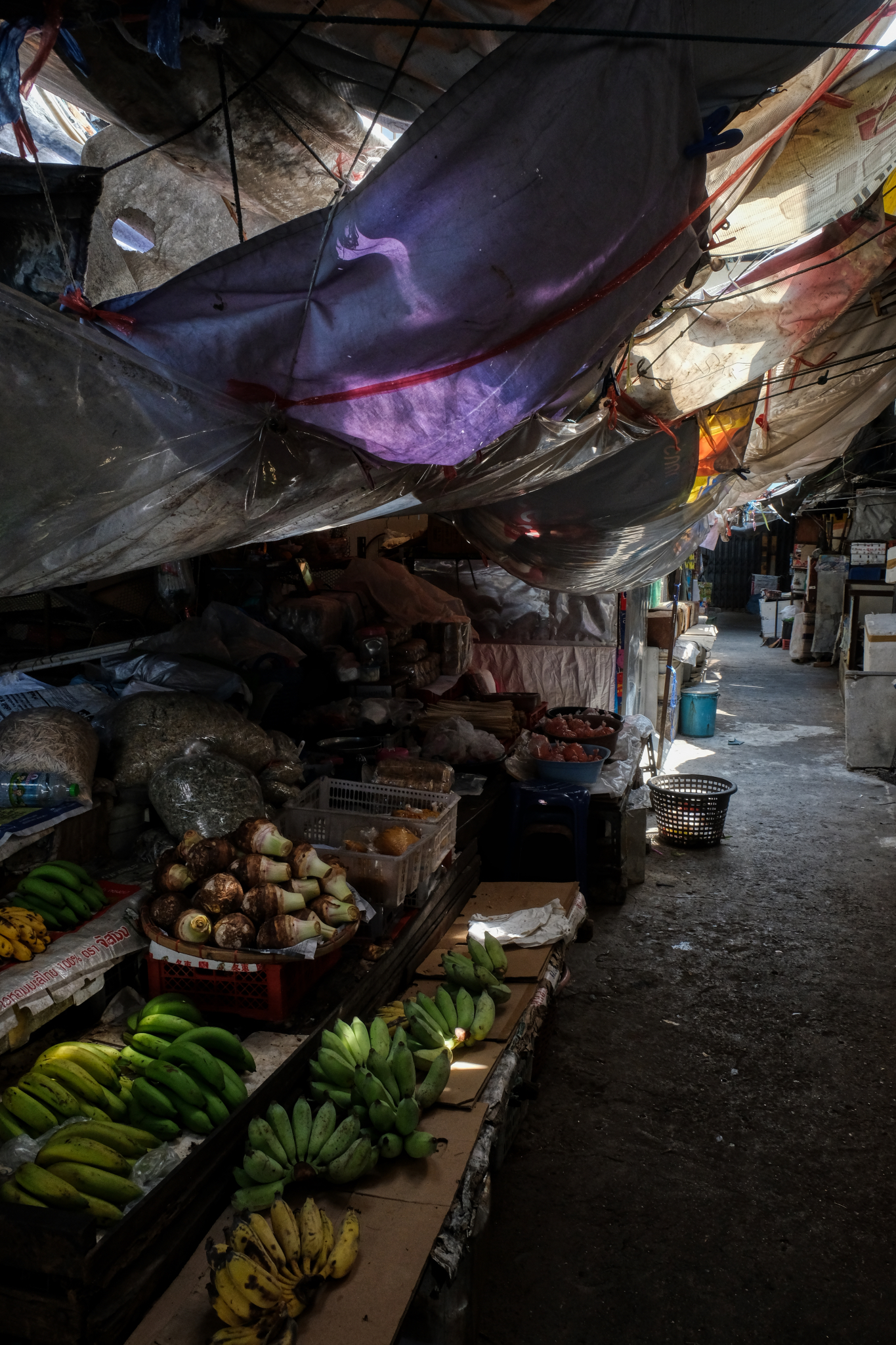 I was the ONLY person in this part of the market. Nobody was here, not even the merchants . . . at 10:00 in the morning.
I was the ONLY person in this part of the market. Nobody was here, not even the merchants . . . at 10:00 in the morning.
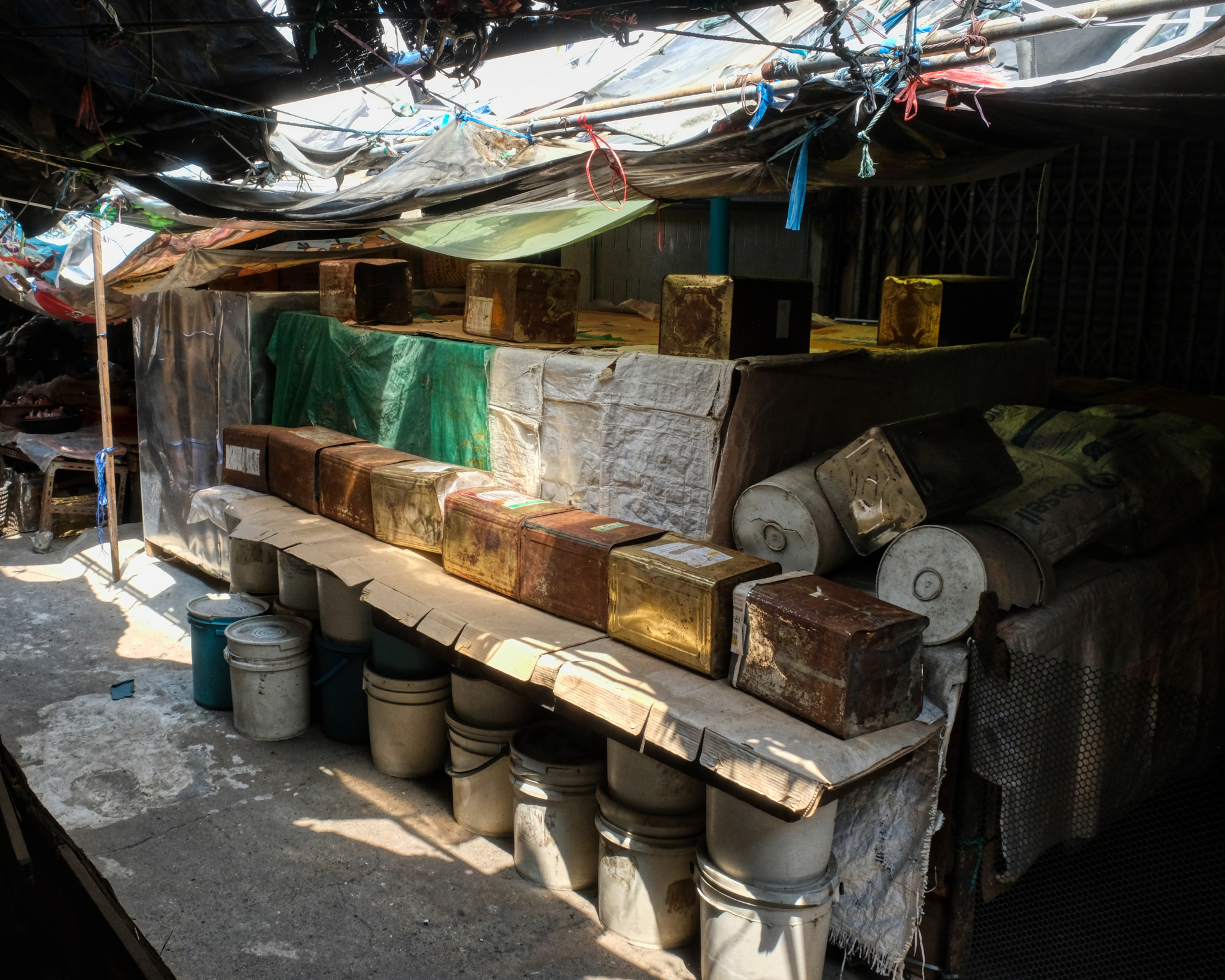 I tried to imagine what this 'business' was . . . but came up short.
I tried to imagine what this 'business' was . . . but came up short.
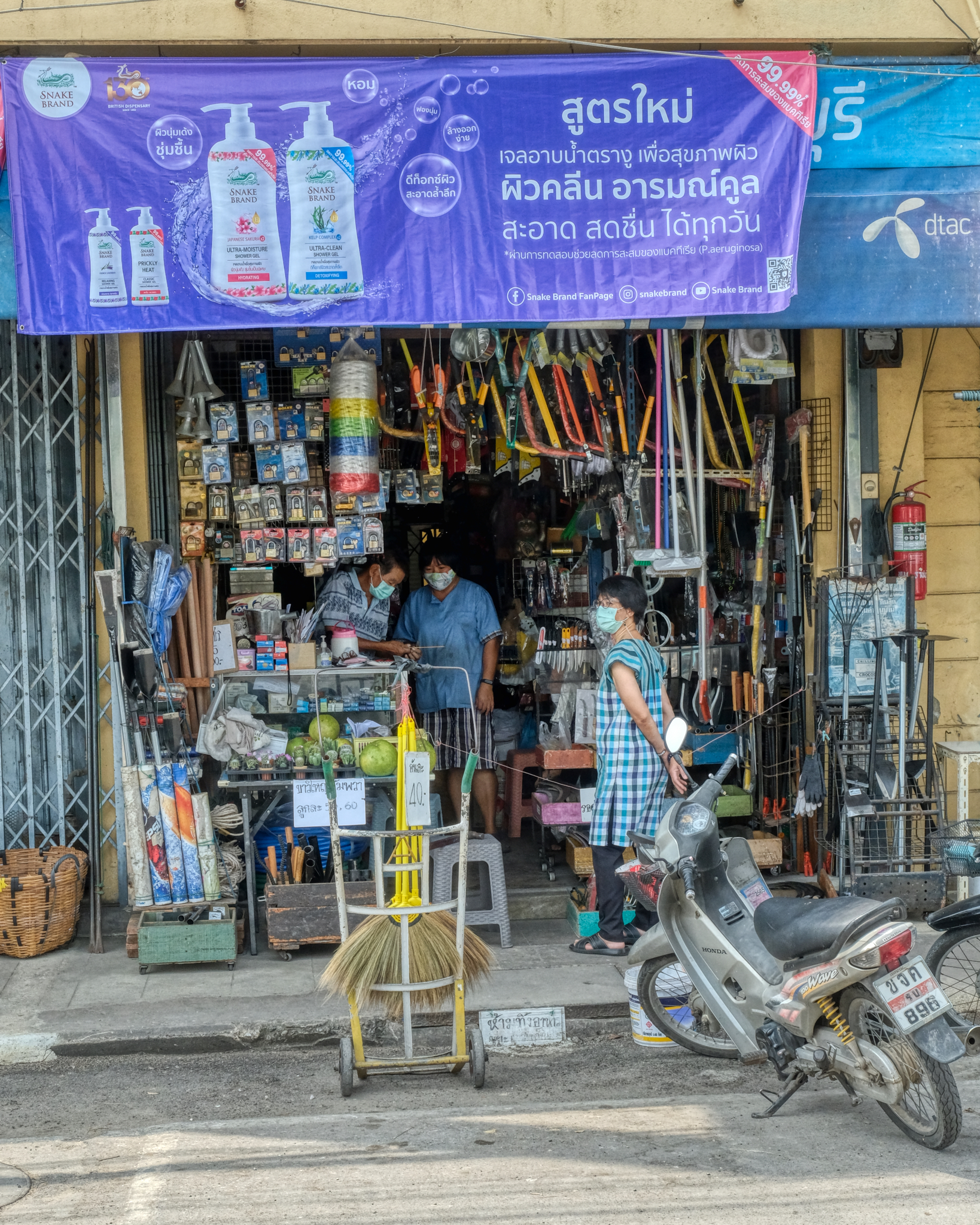
Outside of the inner alleyways of the old market, along the city streets, are more businesses. Here ,a hardware store.
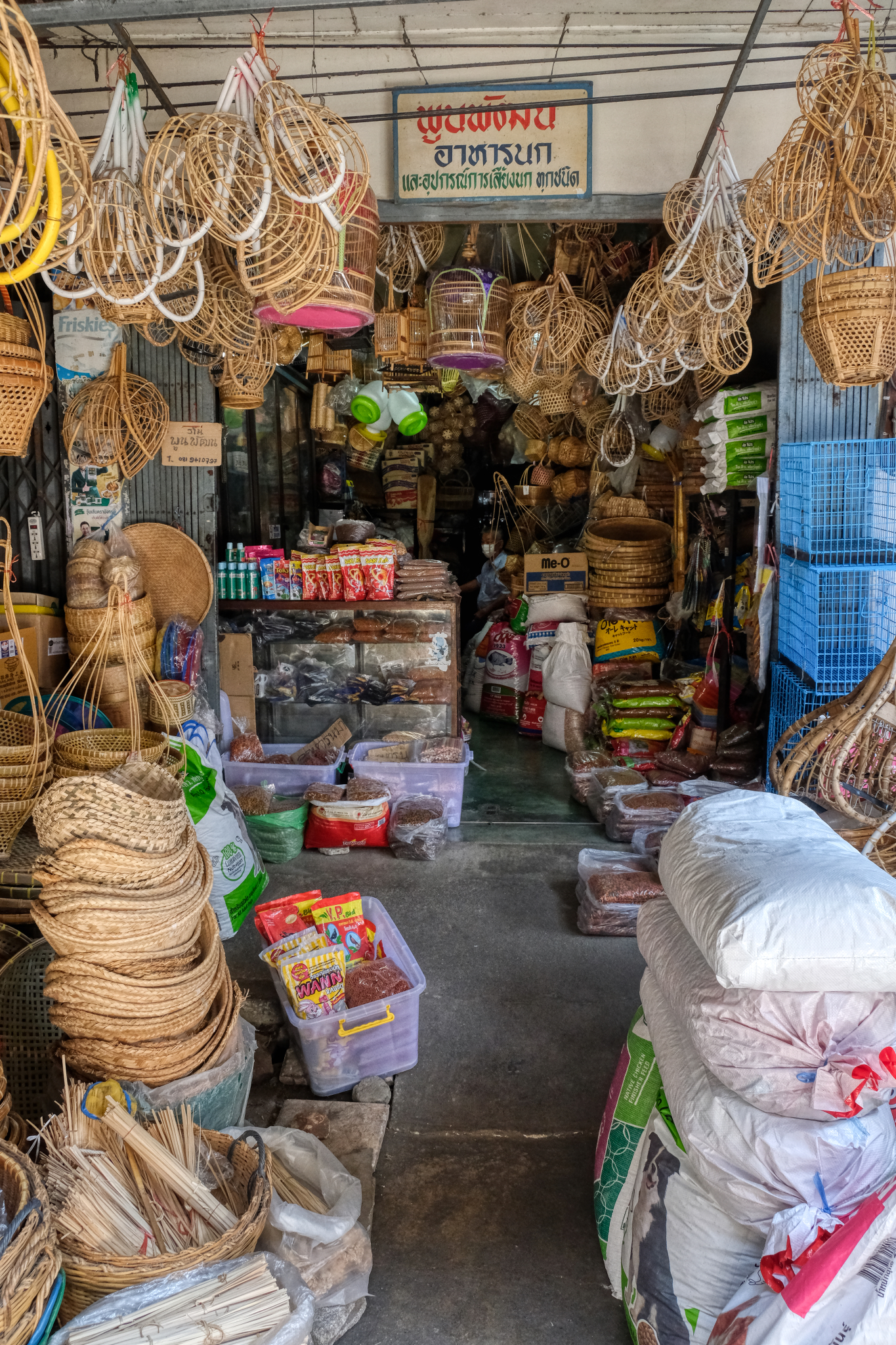 Shops that have everything a local resident would want and need.
Shops that have everything a local resident would want and need.
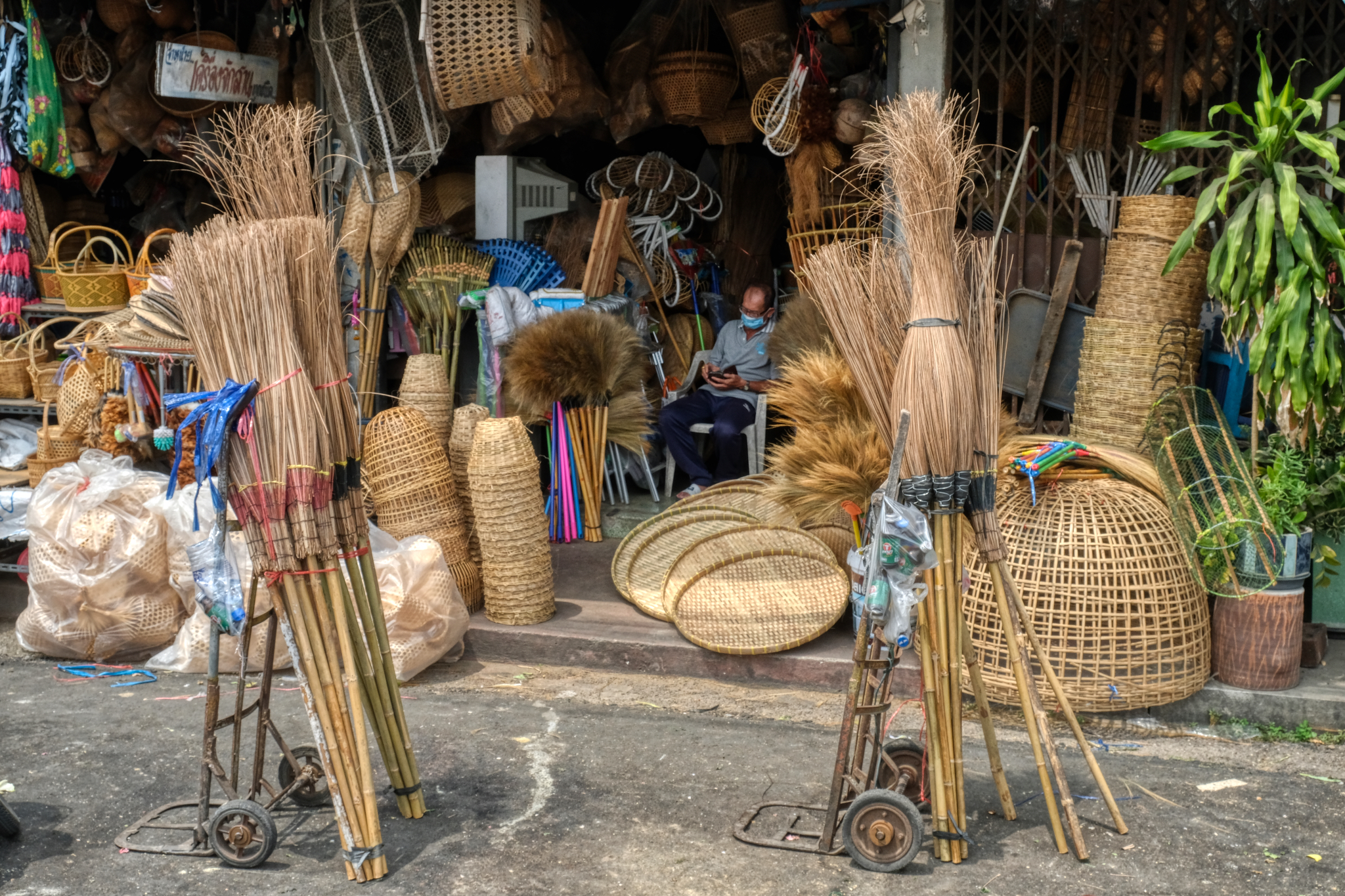 If it can be made out of straw, bamboo, or wicker . . . . they have it here.
If it can be made out of straw, bamboo, or wicker . . . . they have it here.
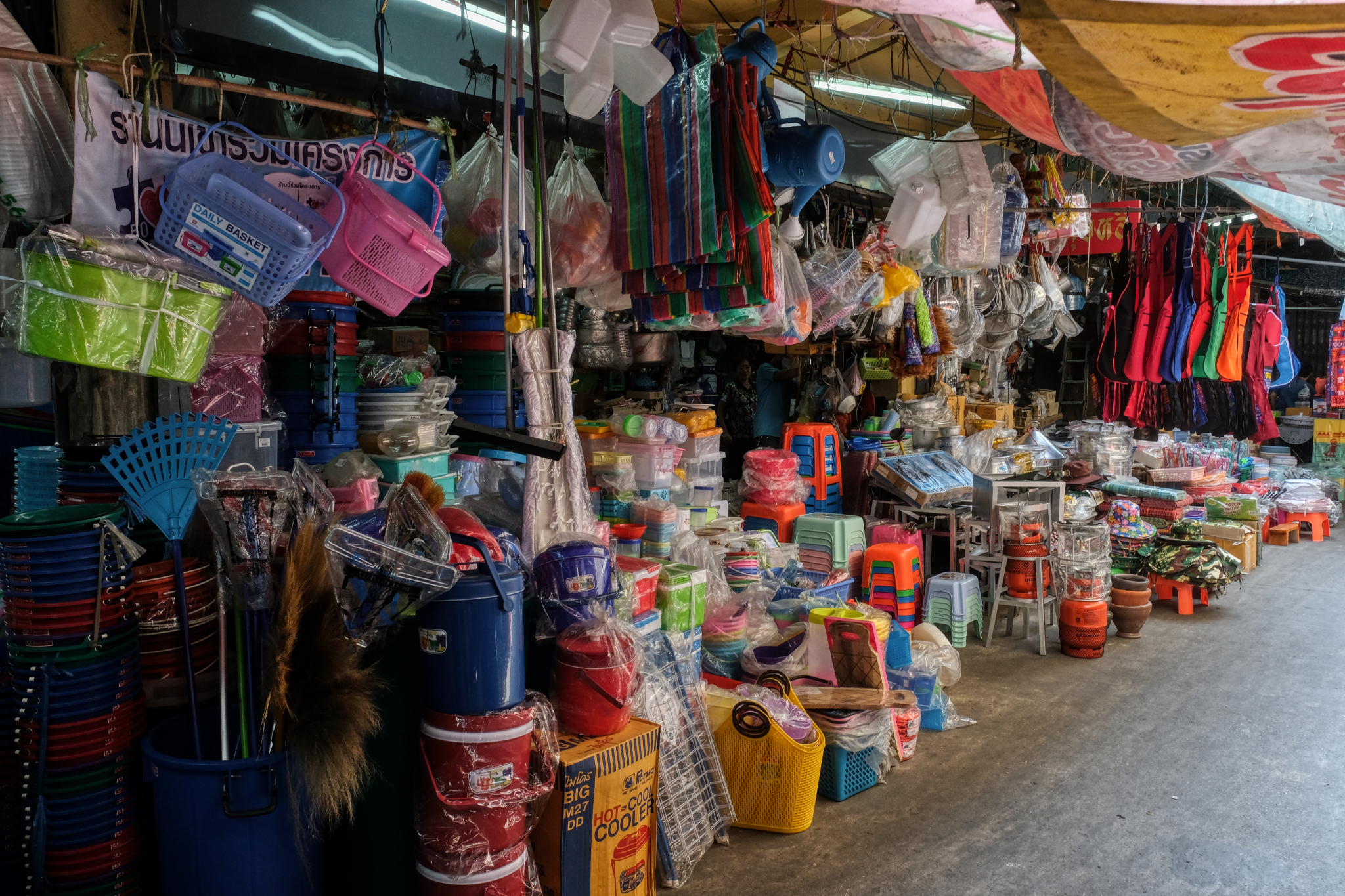 Of course, if it can be made out of straw, bamboo, or wicker . . . it can also be made out of plastic.
Of course, if it can be made out of straw, bamboo, or wicker . . . it can also be made out of plastic.
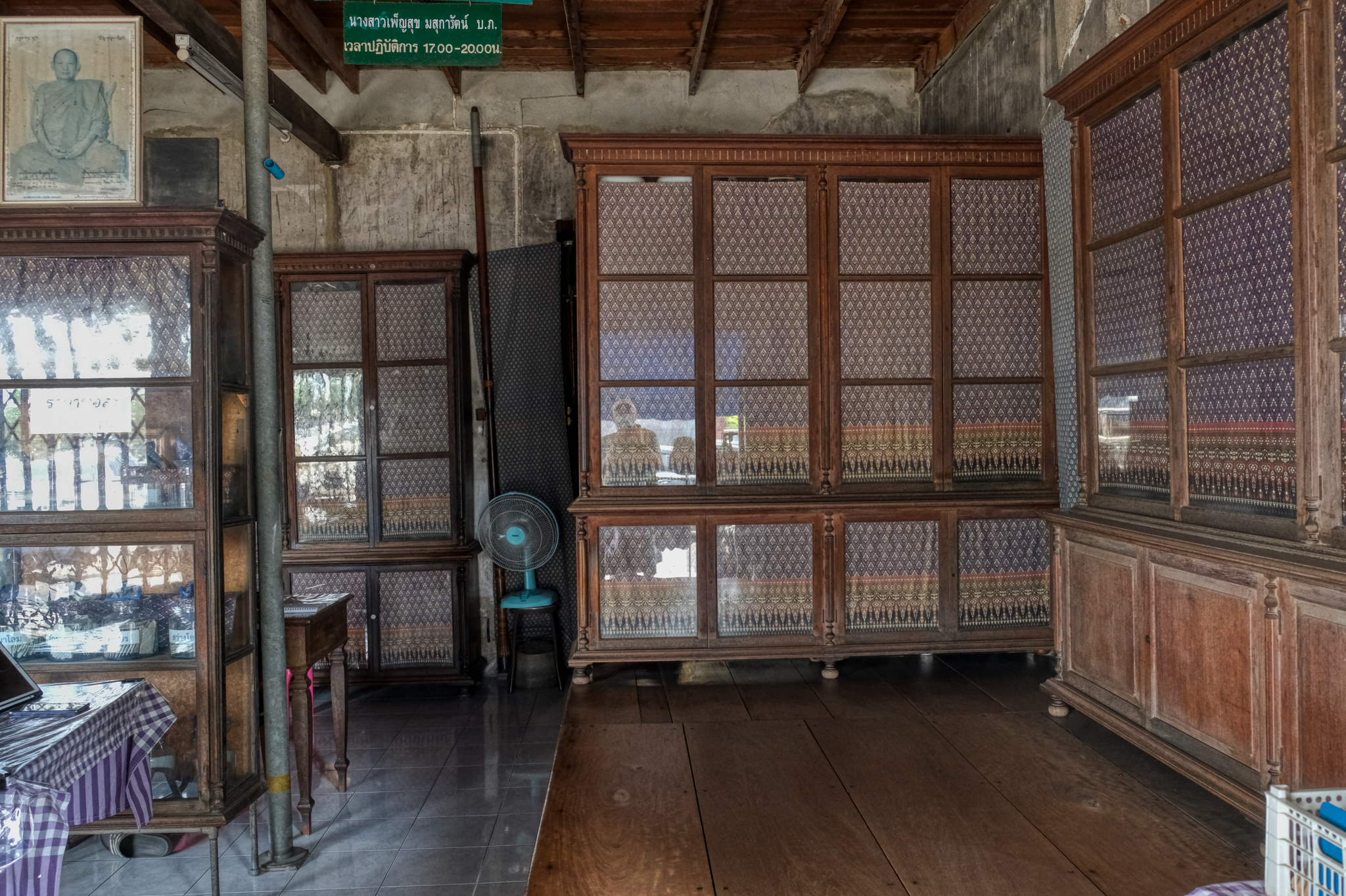 The owner of this shop told me it was restored to how it was when her family started it 100 years ago. A beautiful look into the past times in Thailand.
The owner of this shop told me it was restored to how it was when her family started it 100 years ago. A beautiful look into the past times in Thailand.
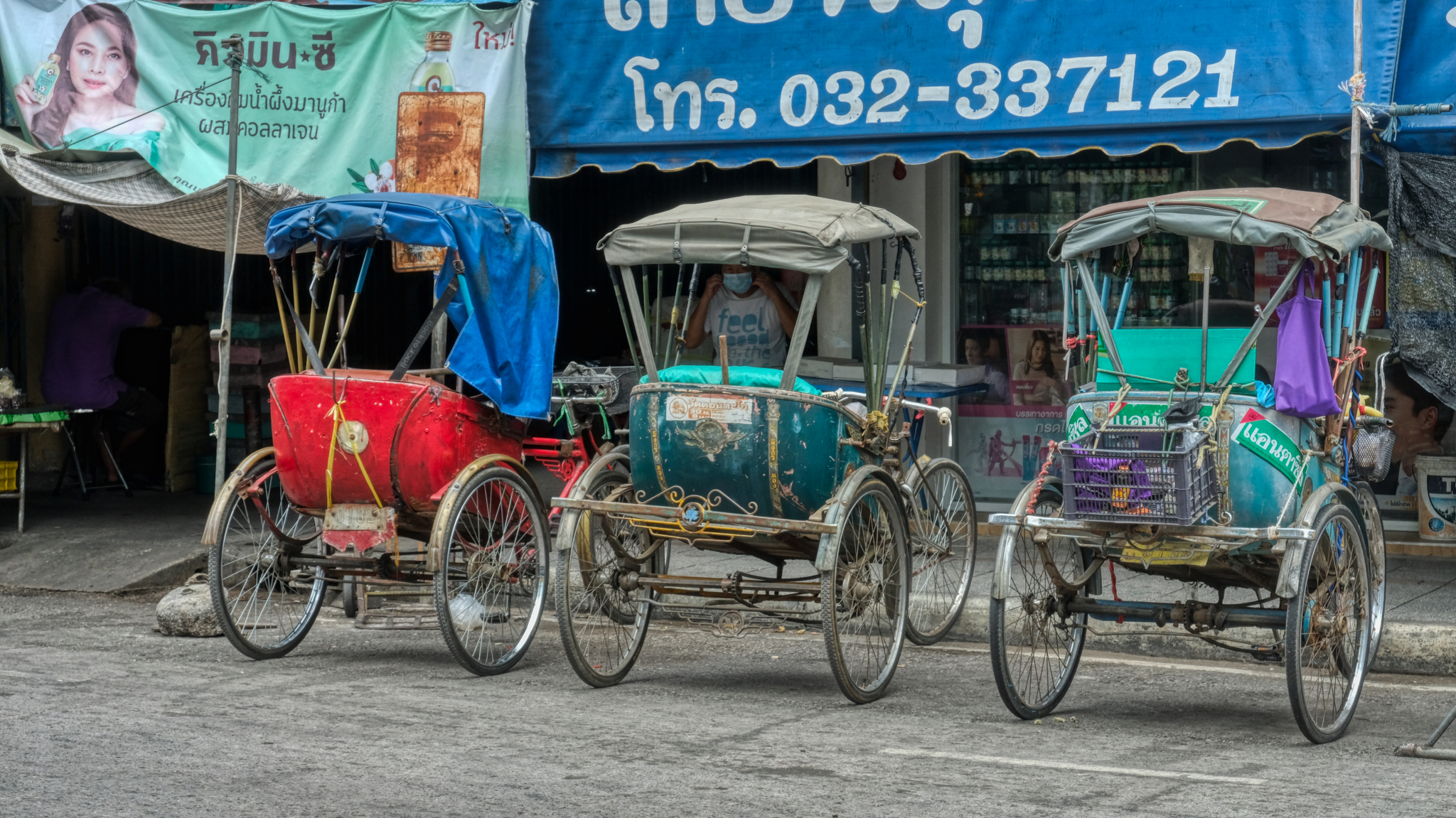 When I came to live in Thailand 26 years ago these samlors were ubiquitous. There would always be 20-30 of these 'pedal cabs' lied up next to the wet markets ready to take the customers home. Now it is rare to see them anywhere any more.
When I came to live in Thailand 26 years ago these samlors were ubiquitous. There would always be 20-30 of these 'pedal cabs' lied up next to the wet markets ready to take the customers home. Now it is rare to see them anywhere any more.
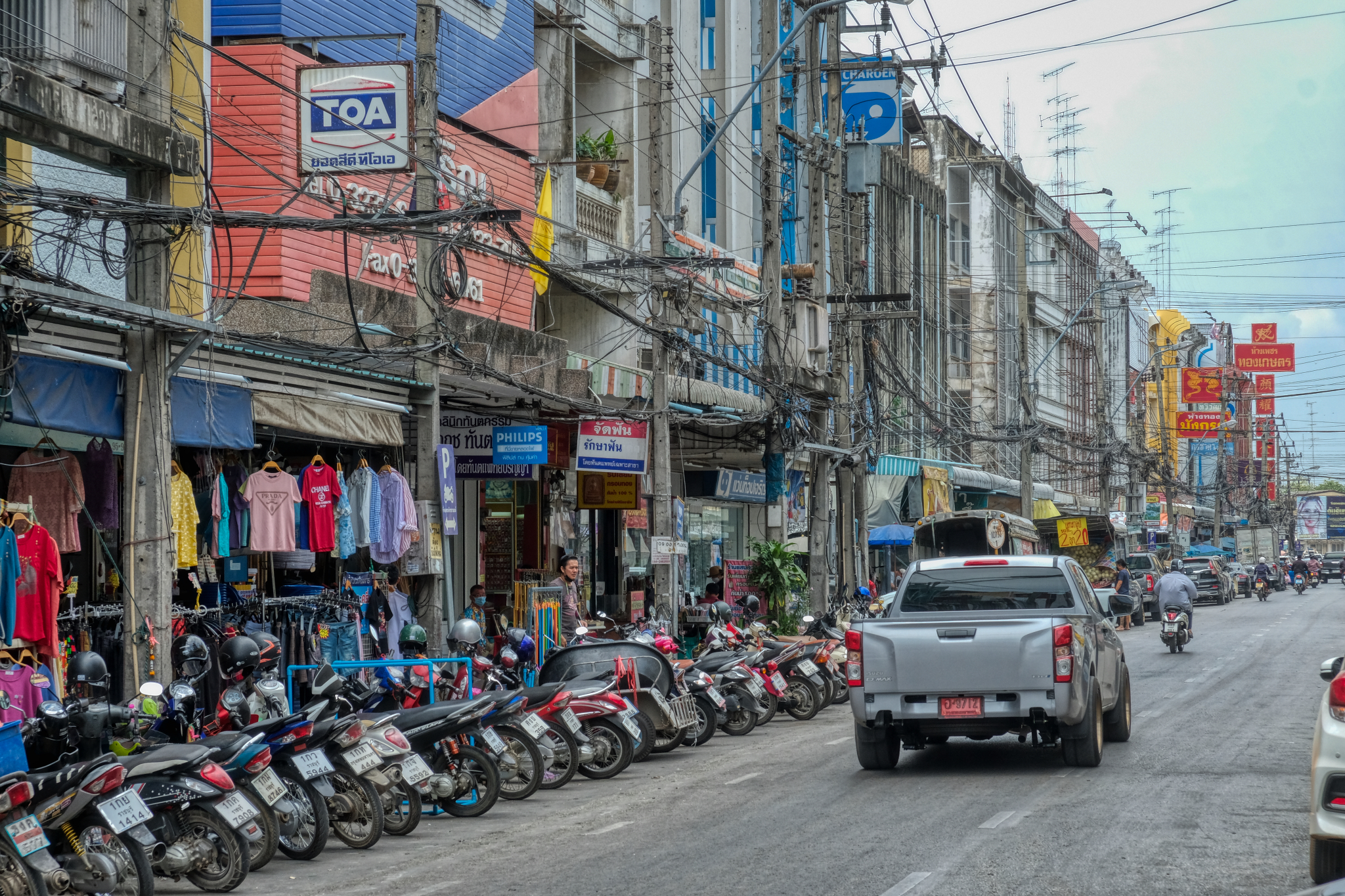 The "modern" Ratchiburi commercial center, dating from the 1970s and 1980s. Of course the true 'modern' Ratchiburi commercial zone is now located in the multinational Big Box stores and shopping malls that dot the major roads leading in and out of the town . . . and the Thais drive there in their pick-up trucks.
The "modern" Ratchiburi commercial center, dating from the 1970s and 1980s. Of course the true 'modern' Ratchiburi commercial zone is now located in the multinational Big Box stores and shopping malls that dot the major roads leading in and out of the town . . . and the Thais drive there in their pick-up trucks.
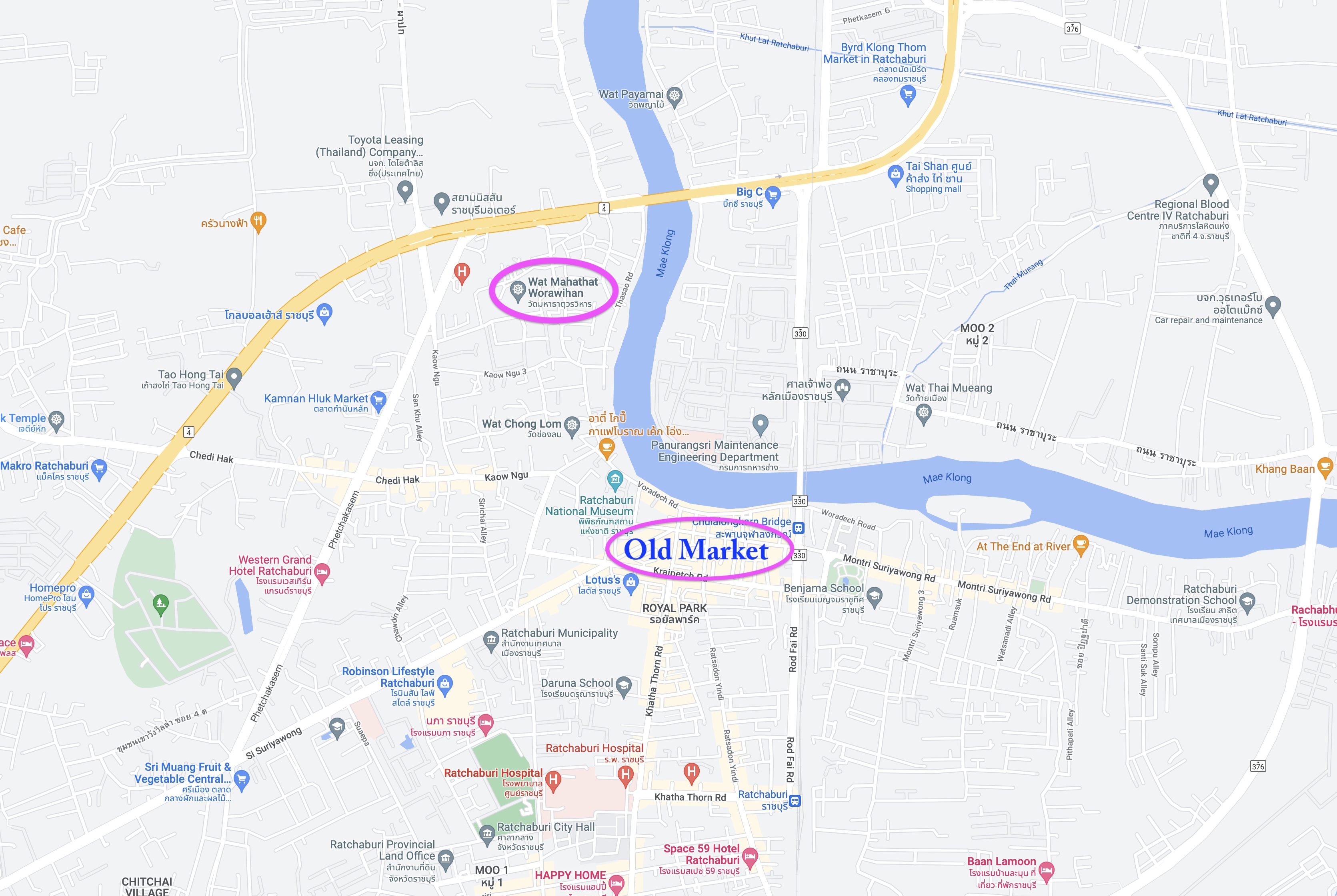 My last stop was at the amazing 10th century Wat Mahathat Worawihan.
My last stop was at the amazing 10th century Wat Mahathat Worawihan.
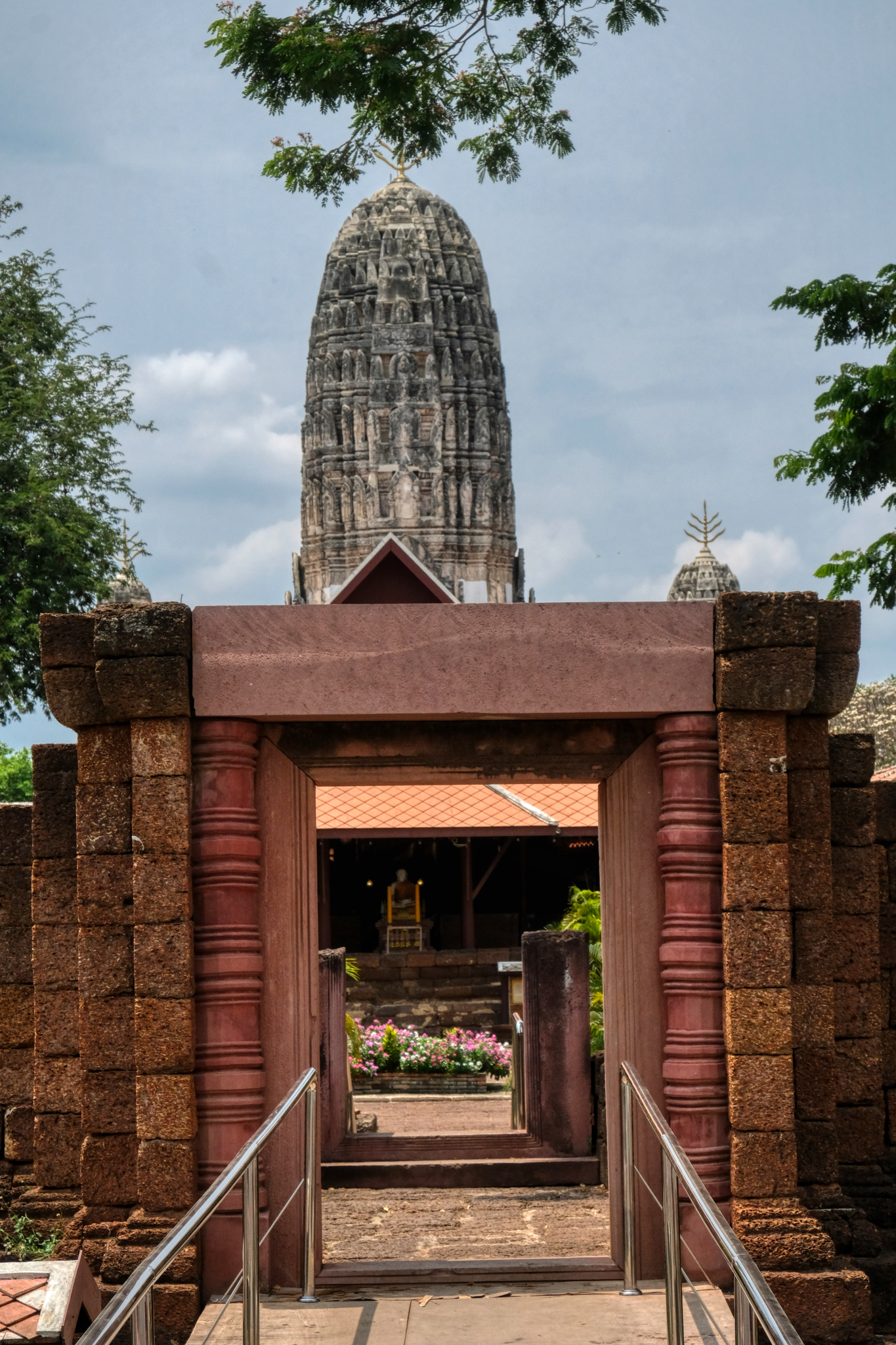 The front gate of Wat Mahathat Worawihan did not impress. But what was within astonished me.
The front gate of Wat Mahathat Worawihan did not impress. But what was within astonished me.
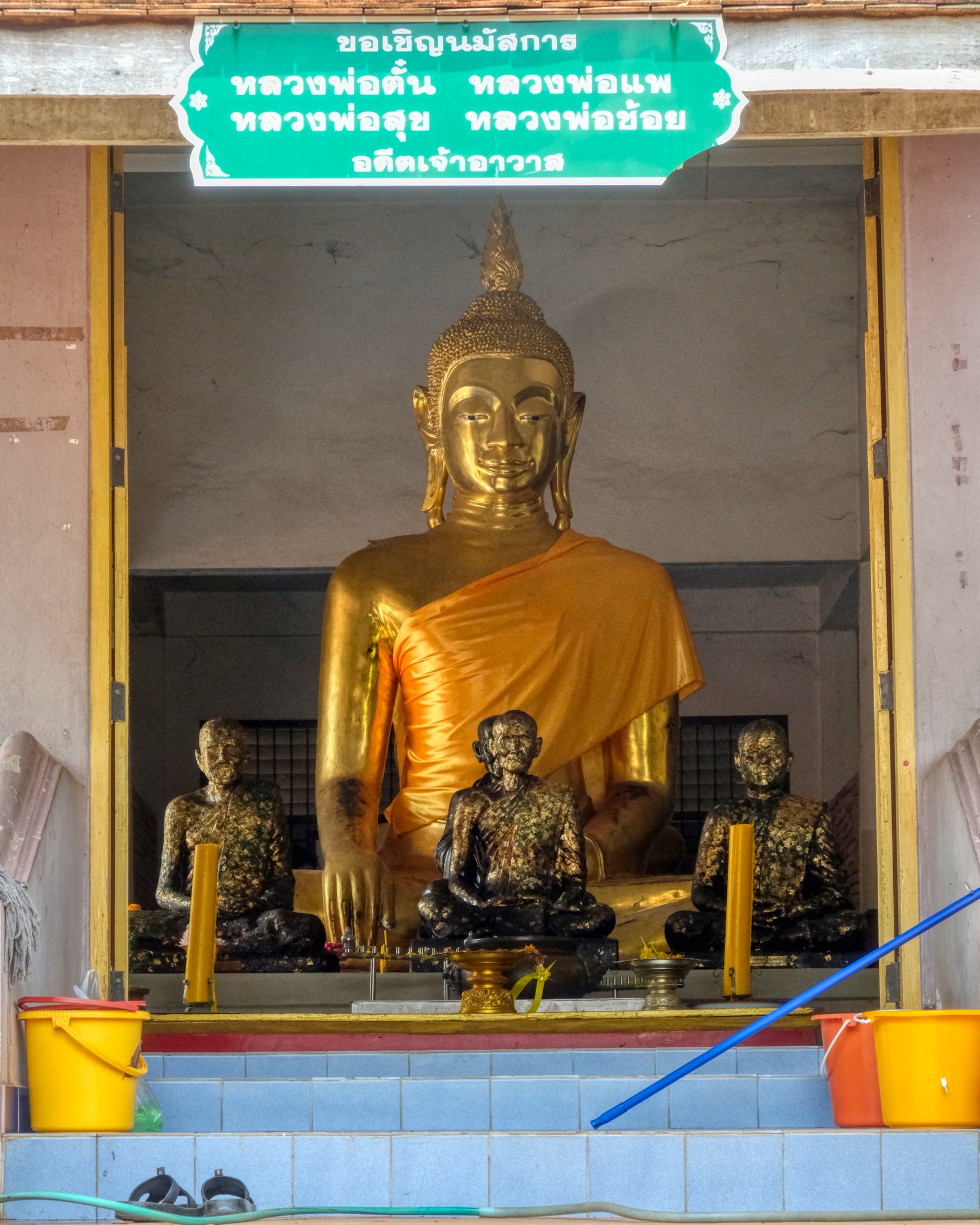 My first inkling about the beauty within this was was when I looked through a small building's window and saw this.
My first inkling about the beauty within this was was when I looked through a small building's window and saw this.
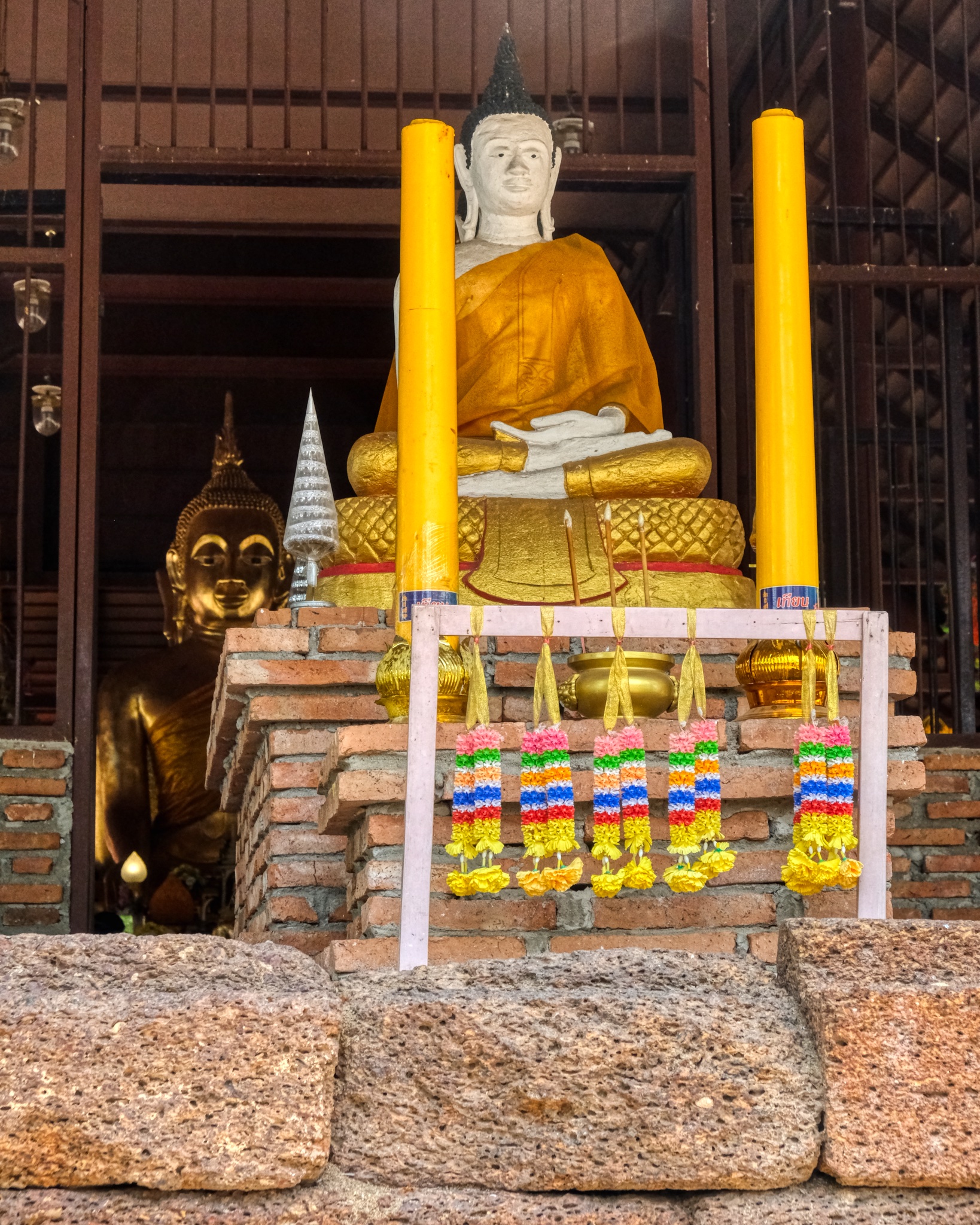 The sala/temple straight ahead looked inviting. I could see a large Buddha image within.
The sala/temple straight ahead looked inviting. I could see a large Buddha image within.
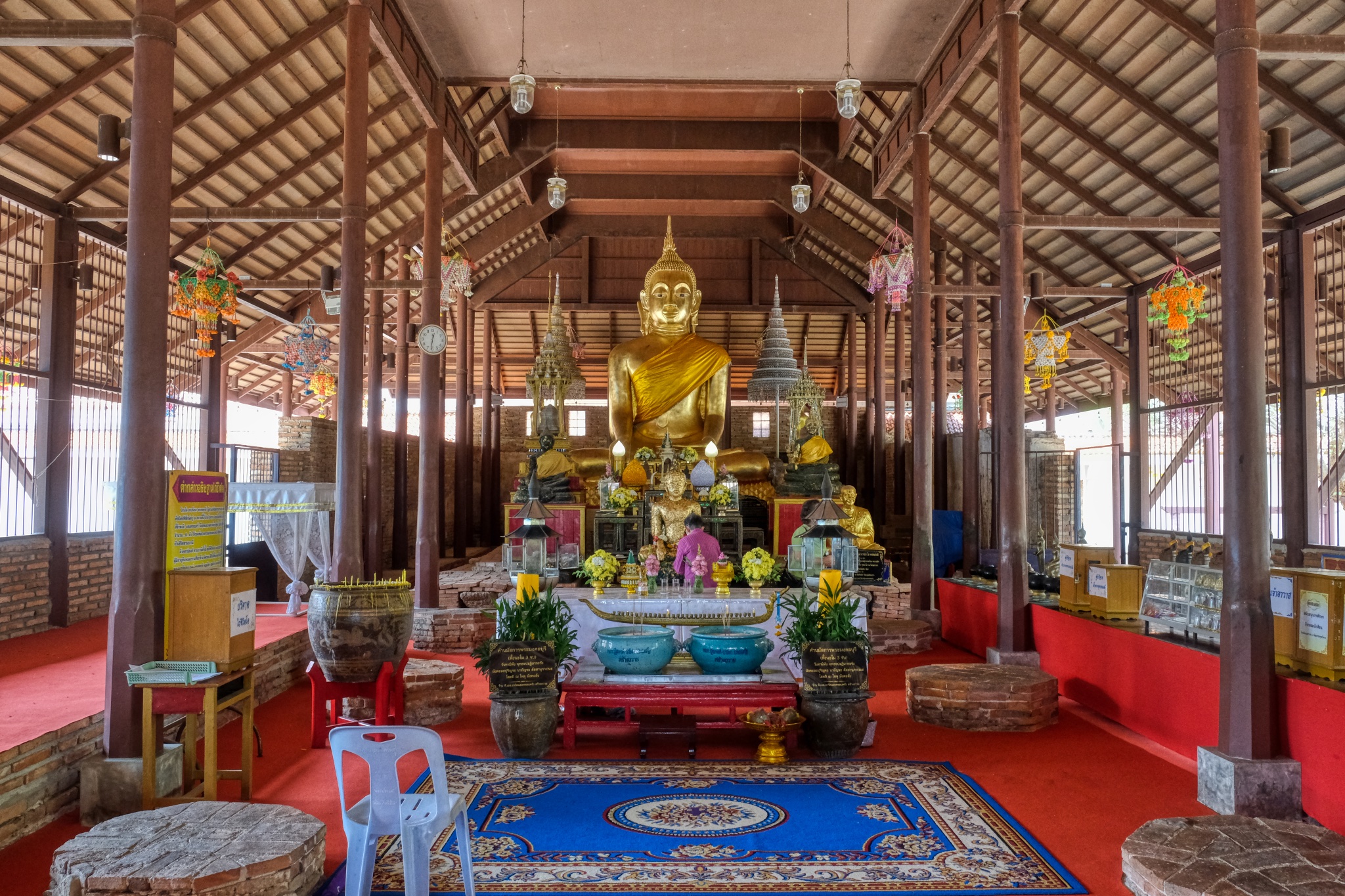 I took my shoes off and went in and discovered this remarkable spiritual space. If you look closely you can see the bases of the pillars that held up an earlier temple in the same location. "It is believed that this temple was built in the Dvaravati Period, around the 10th-11th Century, nearly the same time as when the old city of Ratchaburi was built. Later, a Khmer or Lop Buri sanctuary was built over the temple around the 13th Century to be the centre of the town according to the Khmer belief regarding the universe."
I took my shoes off and went in and discovered this remarkable spiritual space. If you look closely you can see the bases of the pillars that held up an earlier temple in the same location. "It is believed that this temple was built in the Dvaravati Period, around the 10th-11th Century, nearly the same time as when the old city of Ratchaburi was built. Later, a Khmer or Lop Buri sanctuary was built over the temple around the 13th Century to be the centre of the town according to the Khmer belief regarding the universe."
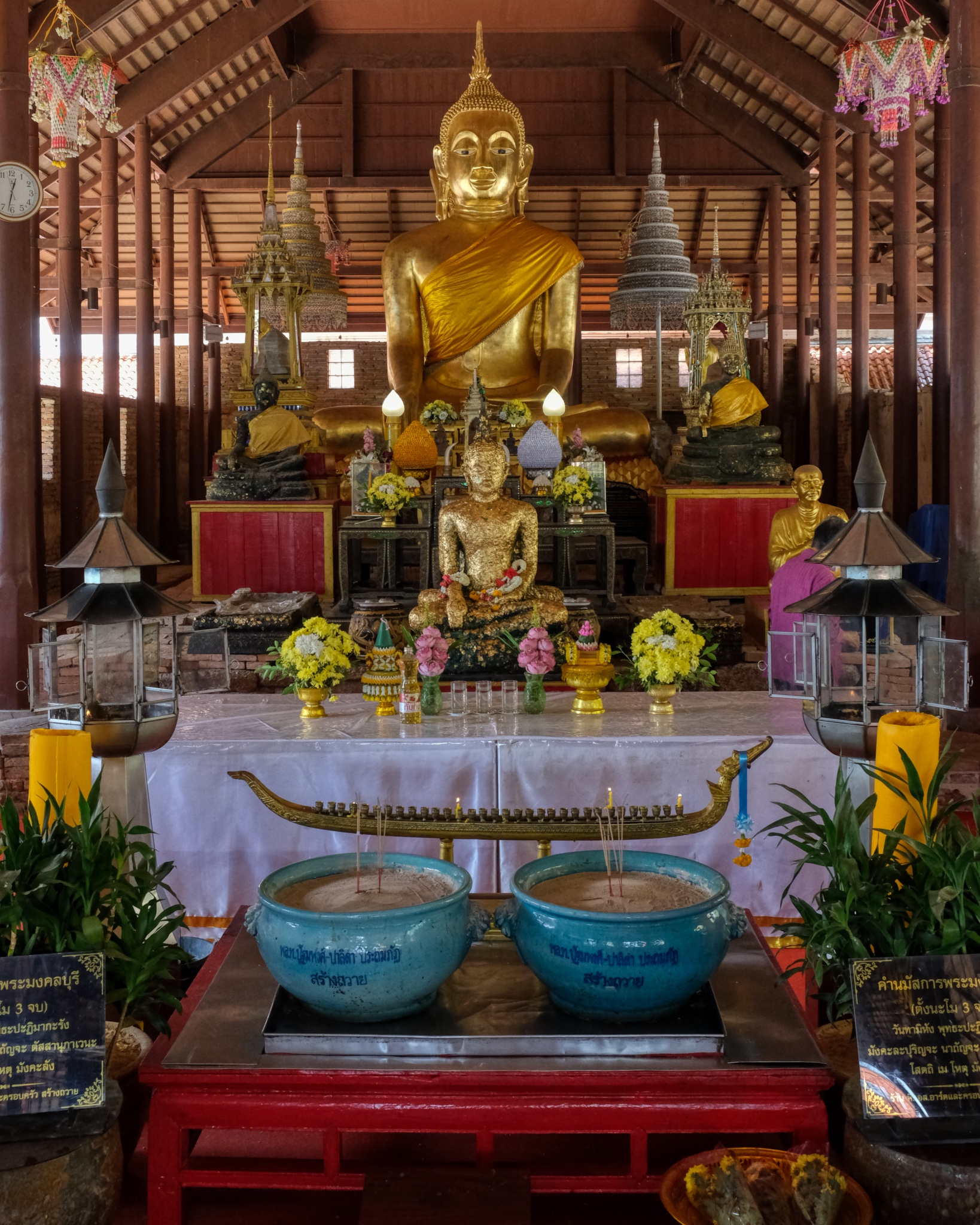 Exquisite Buddha images and a fine altar.
Exquisite Buddha images and a fine altar.
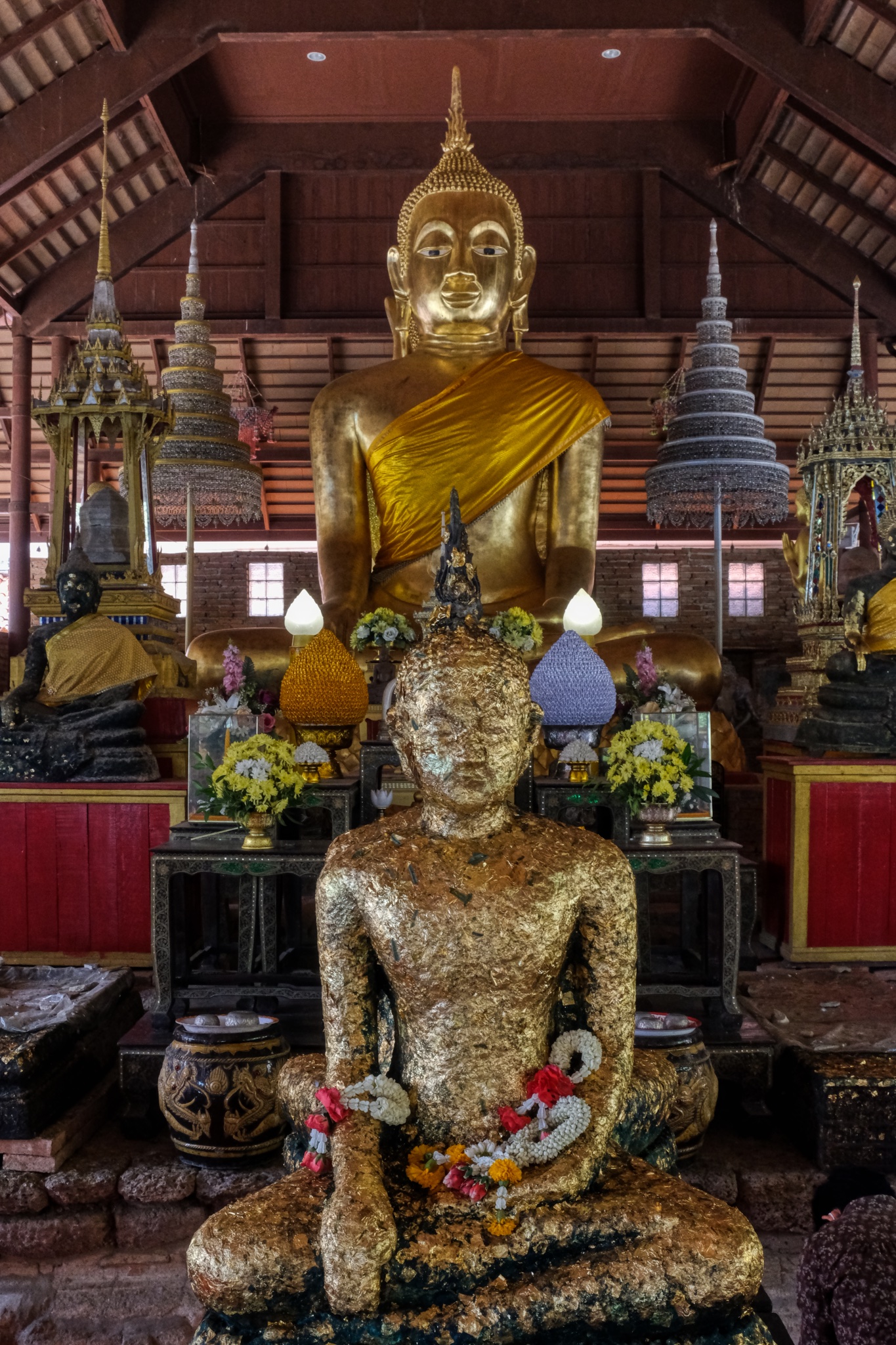 Buddha.
Buddha.
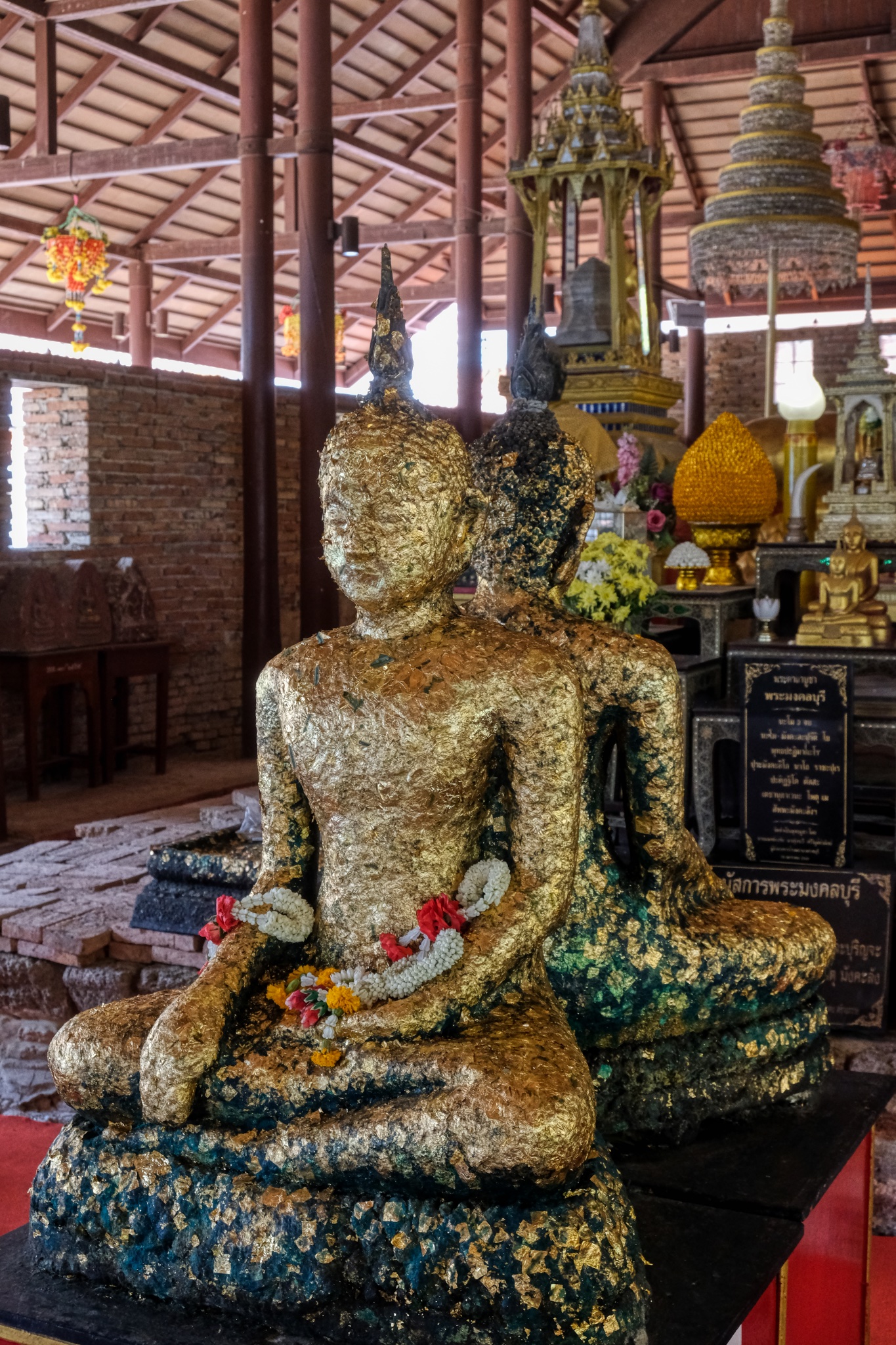 Devotees adorn Buddha images with gold leaf as a part of respectful practices. I was intrigued by these two Buddhas sitting back-to-back.
Devotees adorn Buddha images with gold leaf as a part of respectful practices. I was intrigued by these two Buddhas sitting back-to-back.
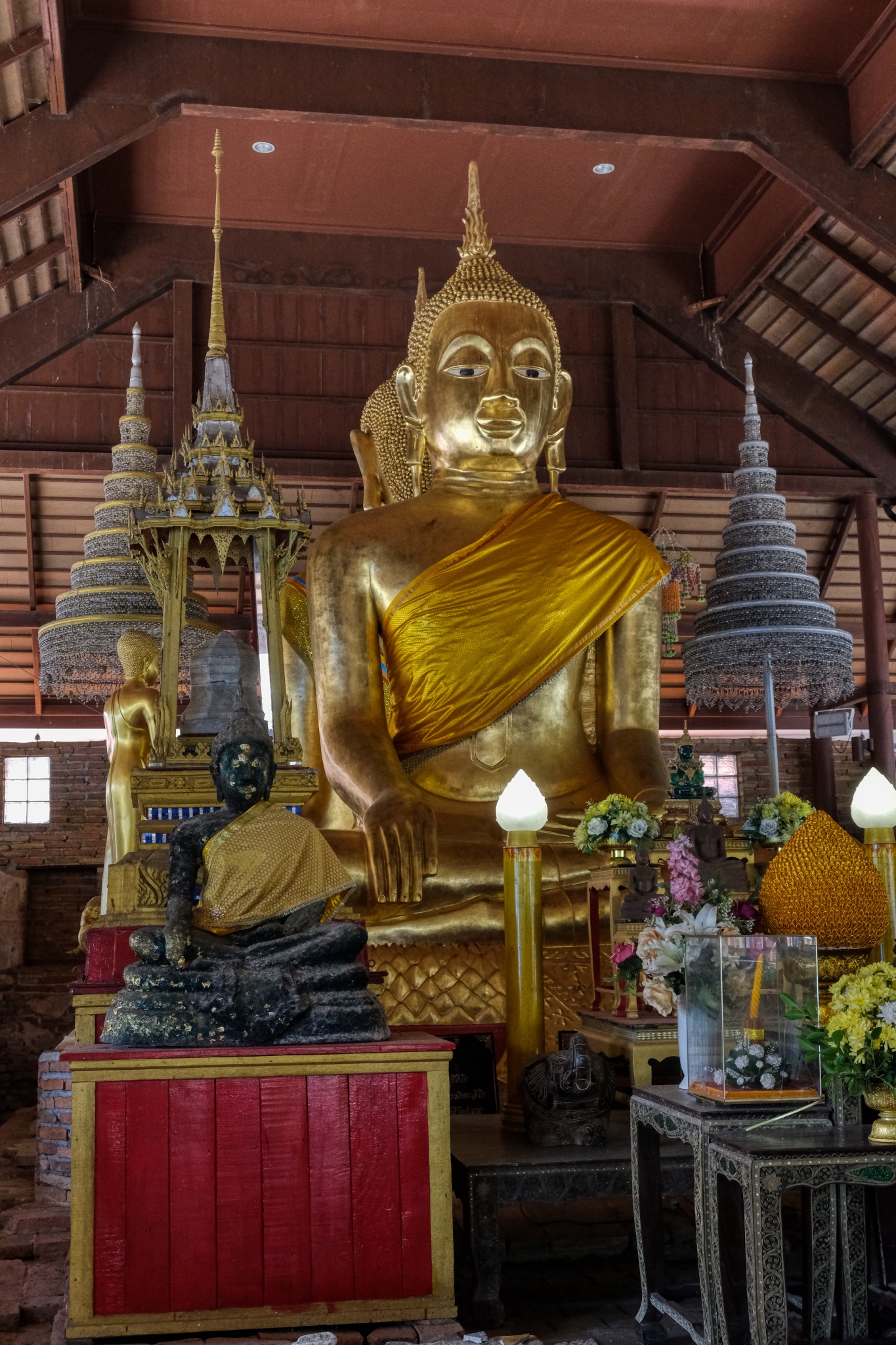 When I looked up at the main, large Buddha image I noticed that it was also a double Buddha. It is very unusual to see two Buddhas sitting back-to-back.
When I looked up at the main, large Buddha image I noticed that it was also a double Buddha. It is very unusual to see two Buddhas sitting back-to-back.
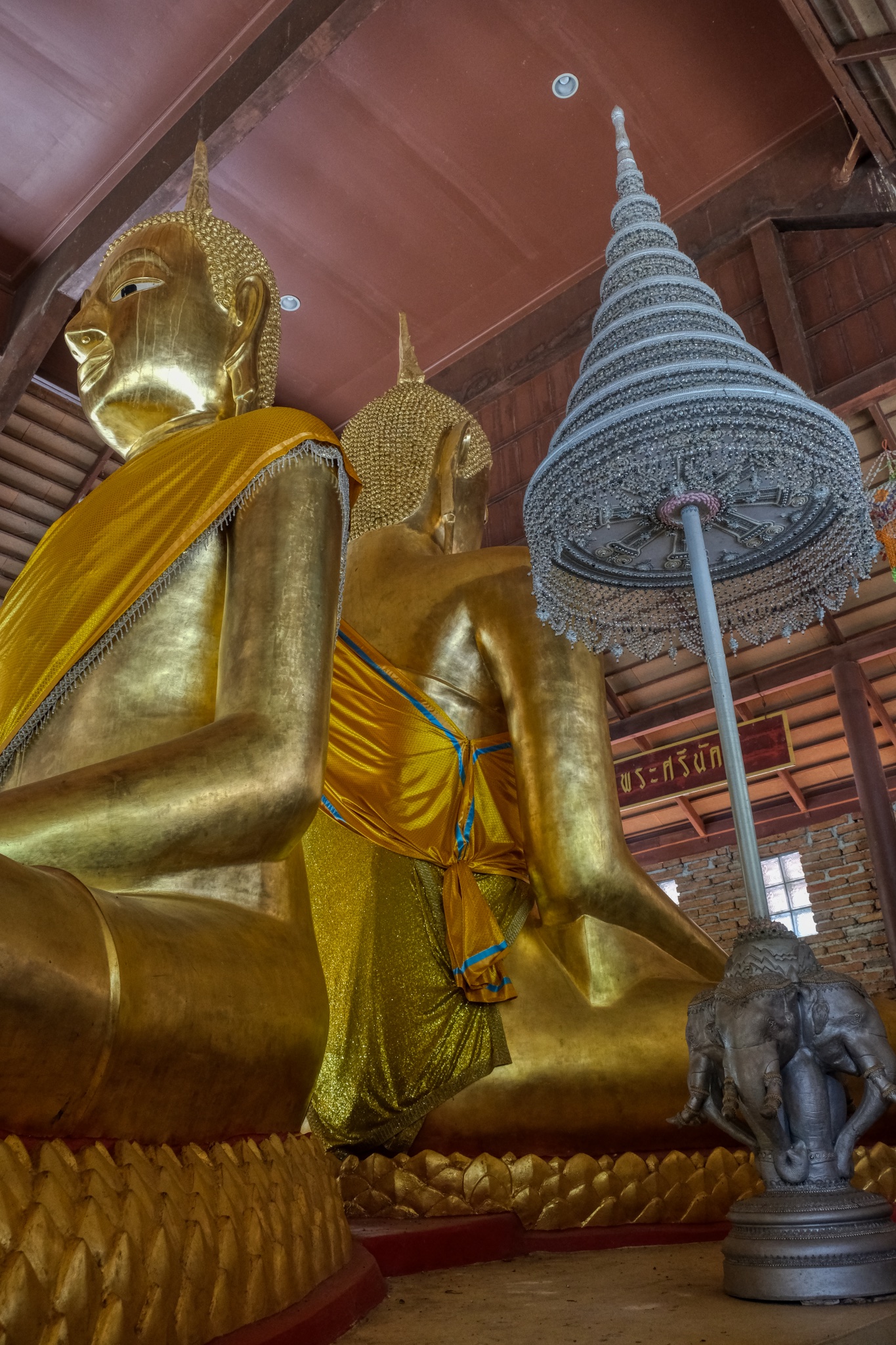 Normally only one Buddha sits in a Wat, and normally facing East.
Normally only one Buddha sits in a Wat, and normally facing East.
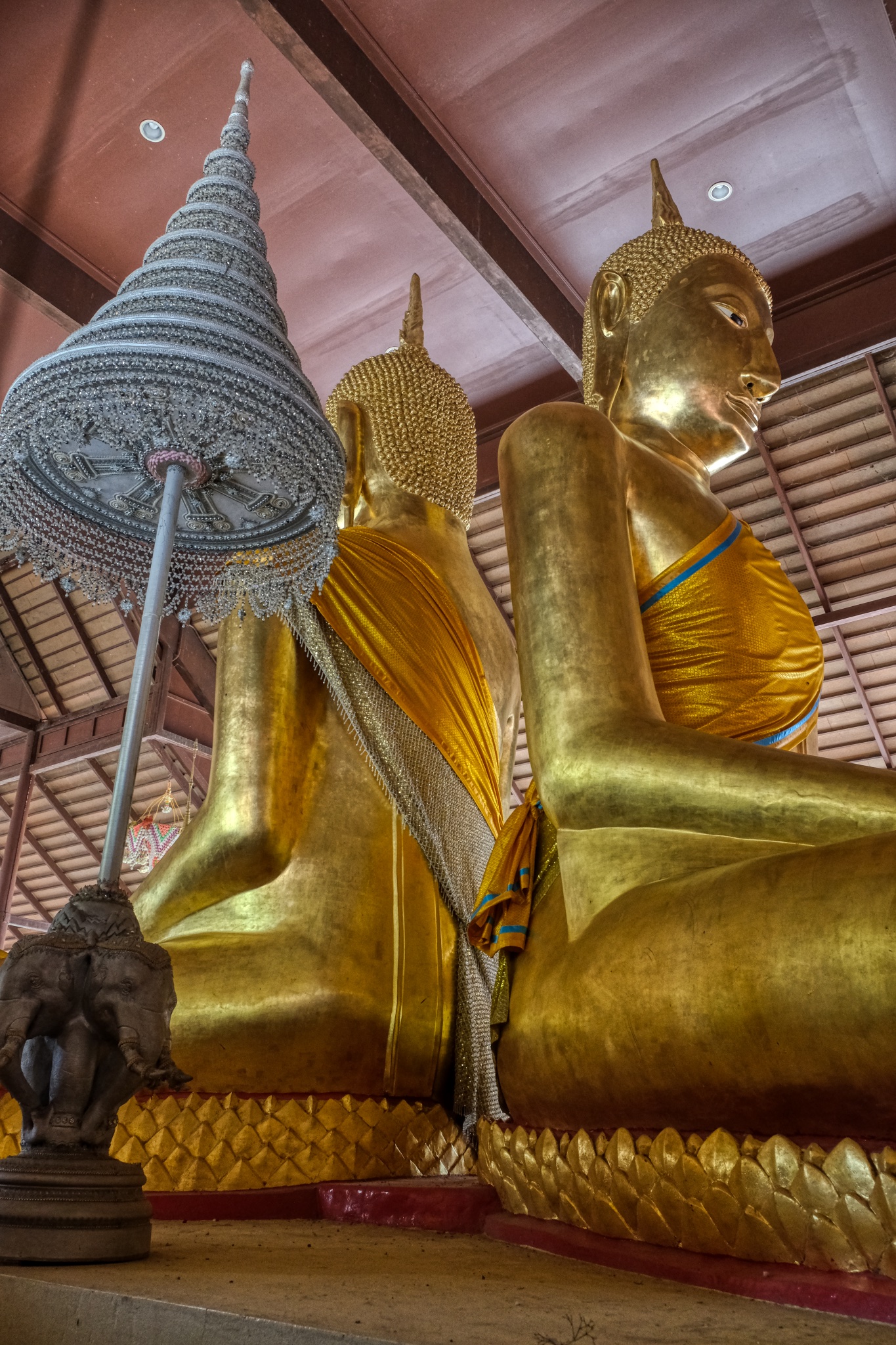 They were extraordinarily beautiful Buddhas. My research turned this up:"It is a stucco Buddha image in the gesture of subduing Mara, which has a lap width of 8 Sok 1 Khuep. Its characteristic is of the Pre-Ayutthaya art, with a Sukhothai style face. It has a long body but short knees. He turns his face to the east, and there is another Buddha image behind his back, turning its face to the opposite side or the west. This means we ask the Buddha’s blessing to prevent danger from the front as well as the back." (citation)
They were extraordinarily beautiful Buddhas. My research turned this up:"It is a stucco Buddha image in the gesture of subduing Mara, which has a lap width of 8 Sok 1 Khuep. Its characteristic is of the Pre-Ayutthaya art, with a Sukhothai style face. It has a long body but short knees. He turns his face to the east, and there is another Buddha image behind his back, turning its face to the opposite side or the west. This means we ask the Buddha’s blessing to prevent danger from the front as well as the back." (citation)
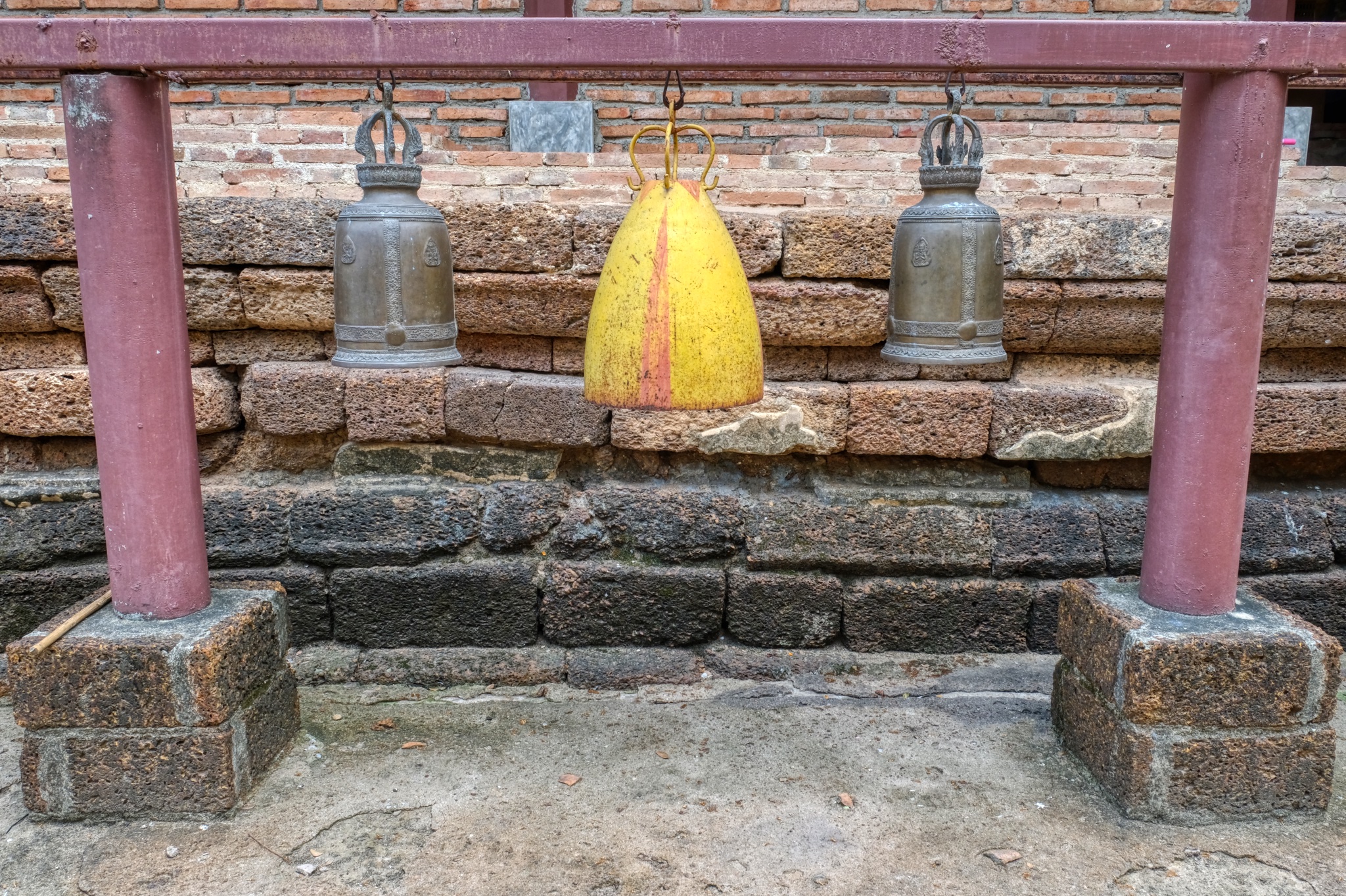 I left the Buddha hall to wander around the wat grounds.
I left the Buddha hall to wander around the wat grounds.
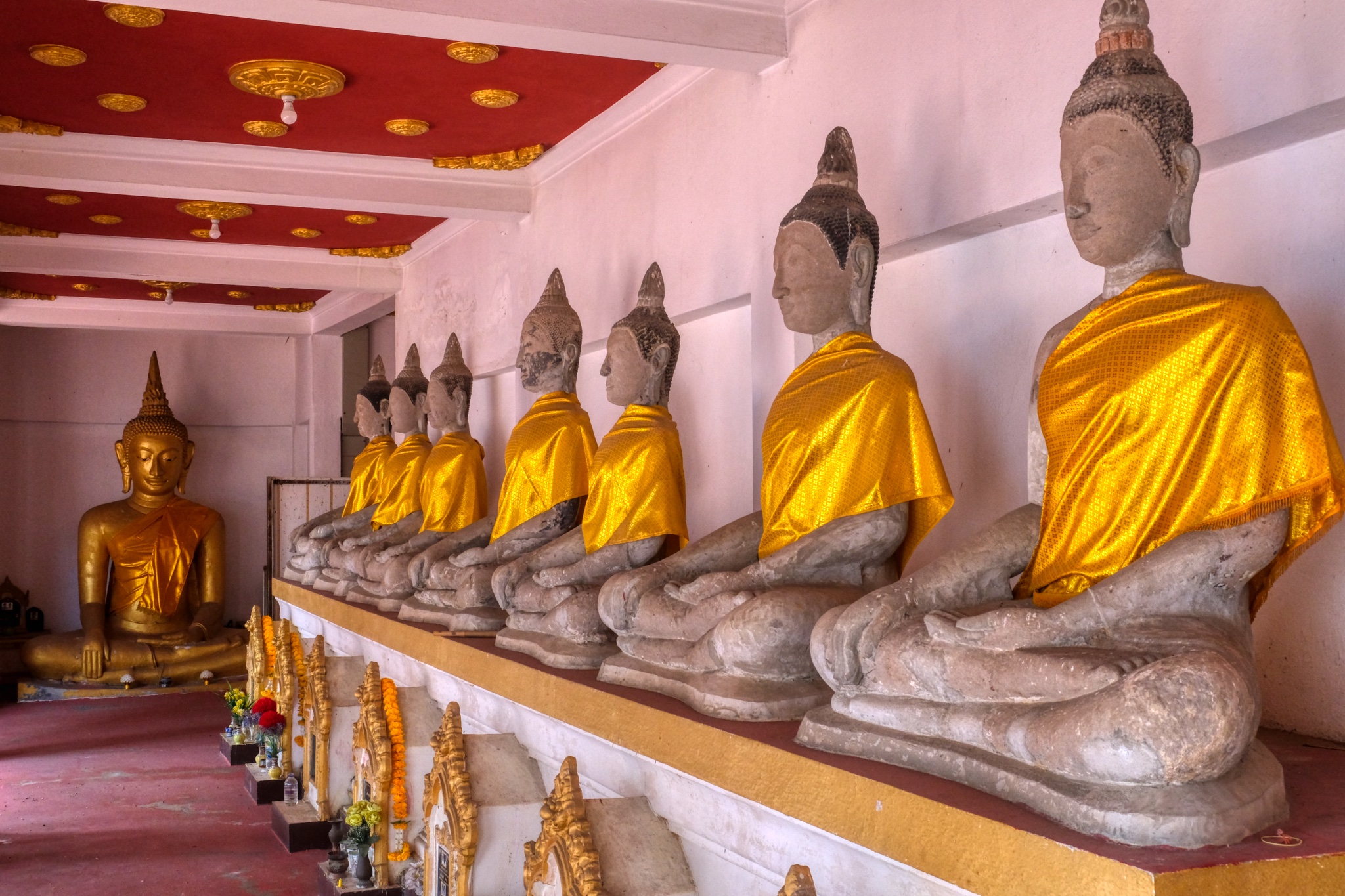 Like many Thai wats, there are covered halls lined with Buddha images, often as markers for the cremated remains of former monks and doners, as is the case here.
Like many Thai wats, there are covered halls lined with Buddha images, often as markers for the cremated remains of former monks and doners, as is the case here.
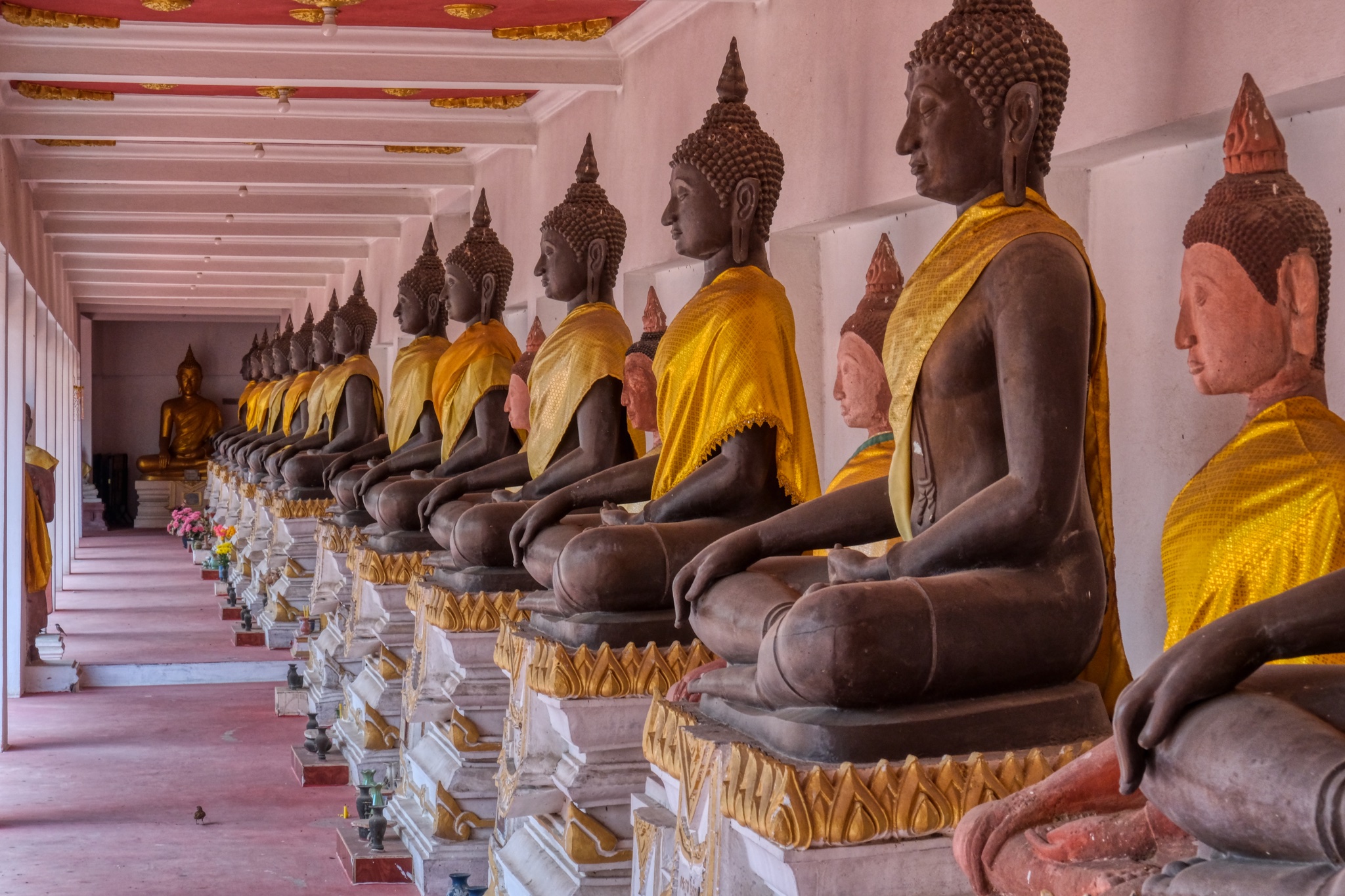 Such a beautiful sight.
Such a beautiful sight.
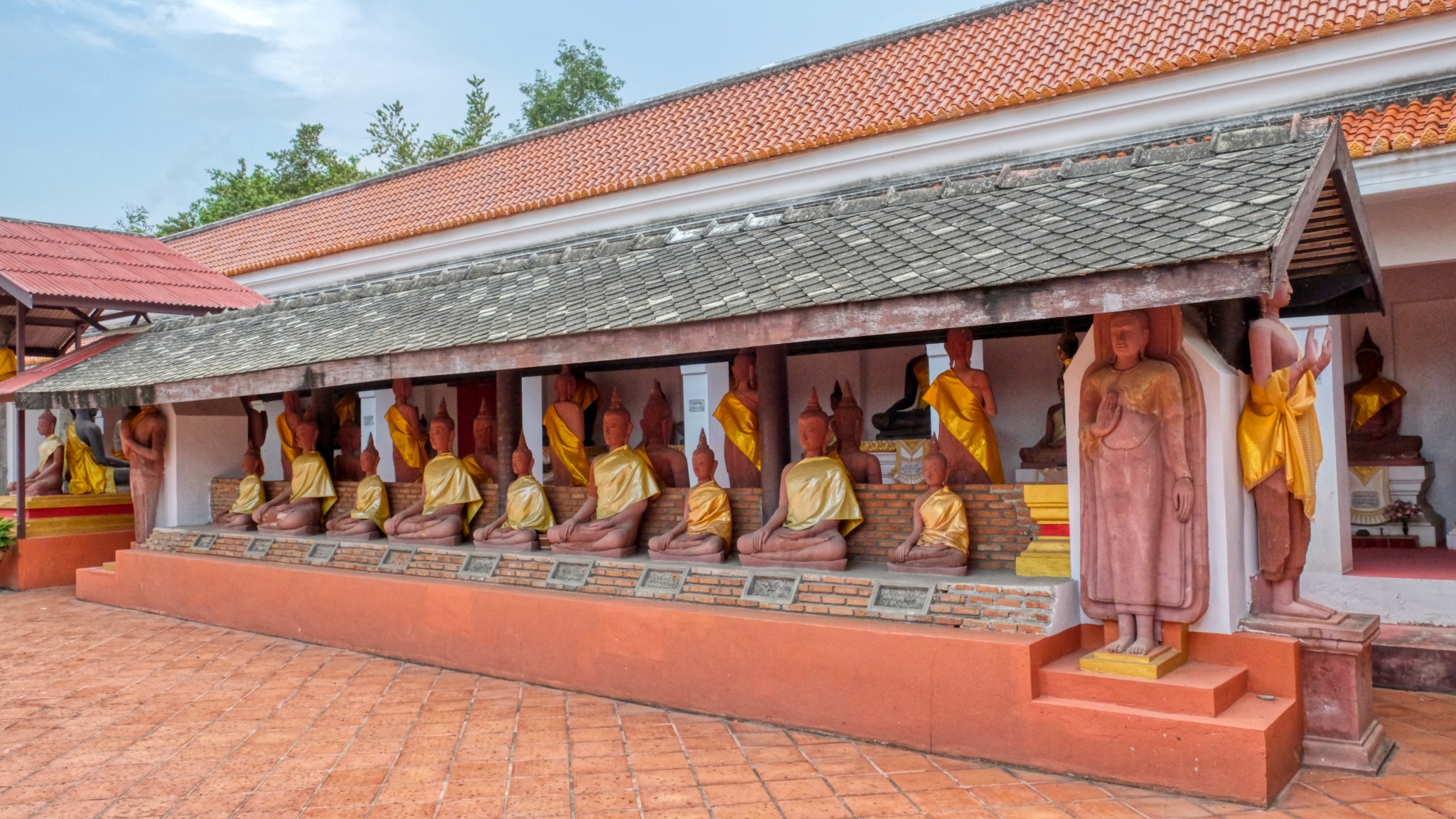 In fact, there are several rows of these grave marking Buddha statues.
In fact, there are several rows of these grave marking Buddha statues.
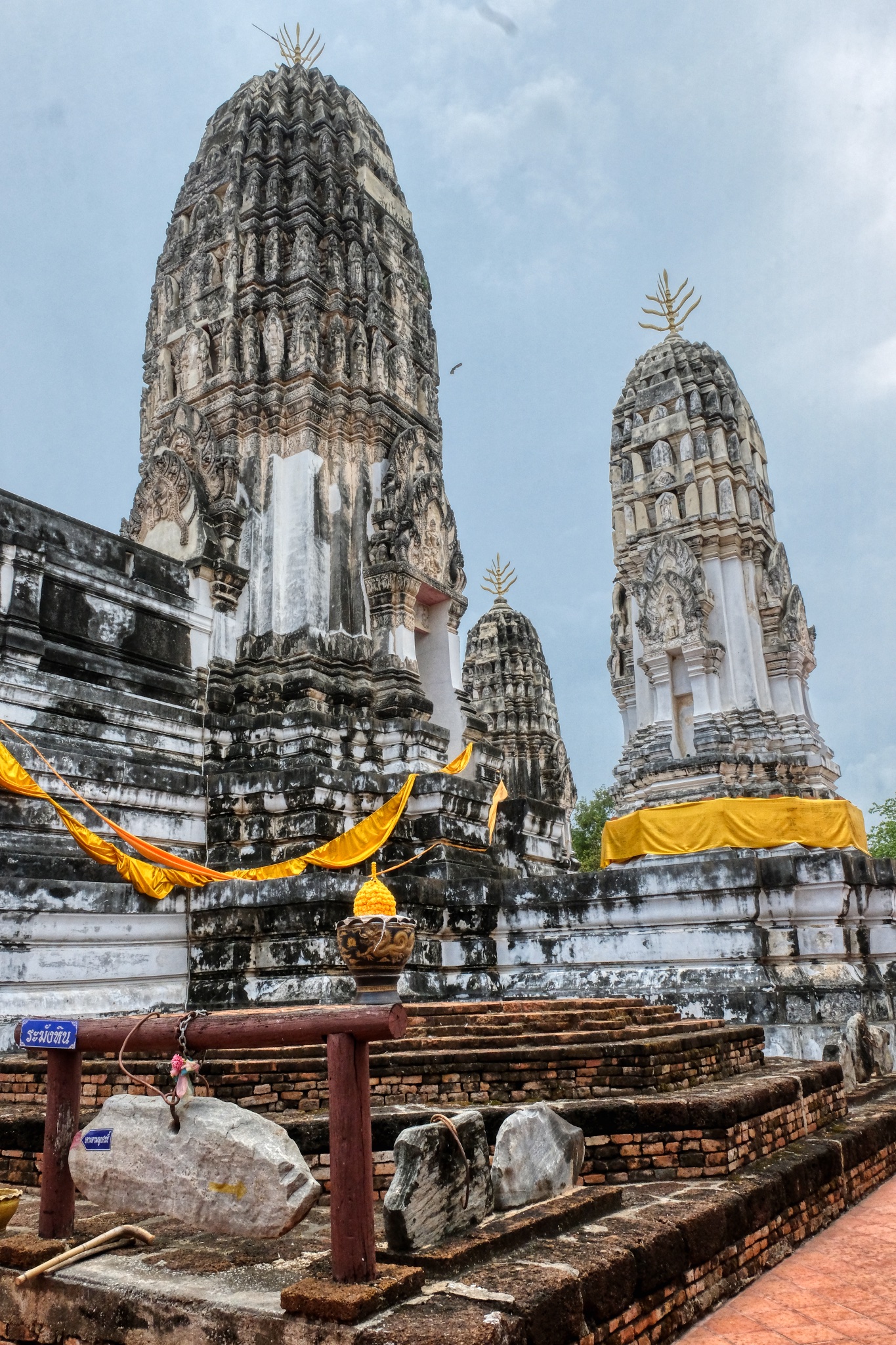 The Five Prangs. At the center of th Wat is a large courtyard enclosed by a cloister. At the center of the courtyard stand five massive parangs, known as "Phra Prang Ha Yod", or five peak prang. The Khmer/Lopburi style towers were constructed during the Sukhothai era.
The Five Prangs. At the center of th Wat is a large courtyard enclosed by a cloister. At the center of the courtyard stand five massive parangs, known as "Phra Prang Ha Yod", or five peak prang. The Khmer/Lopburi style towers were constructed during the Sukhothai era.
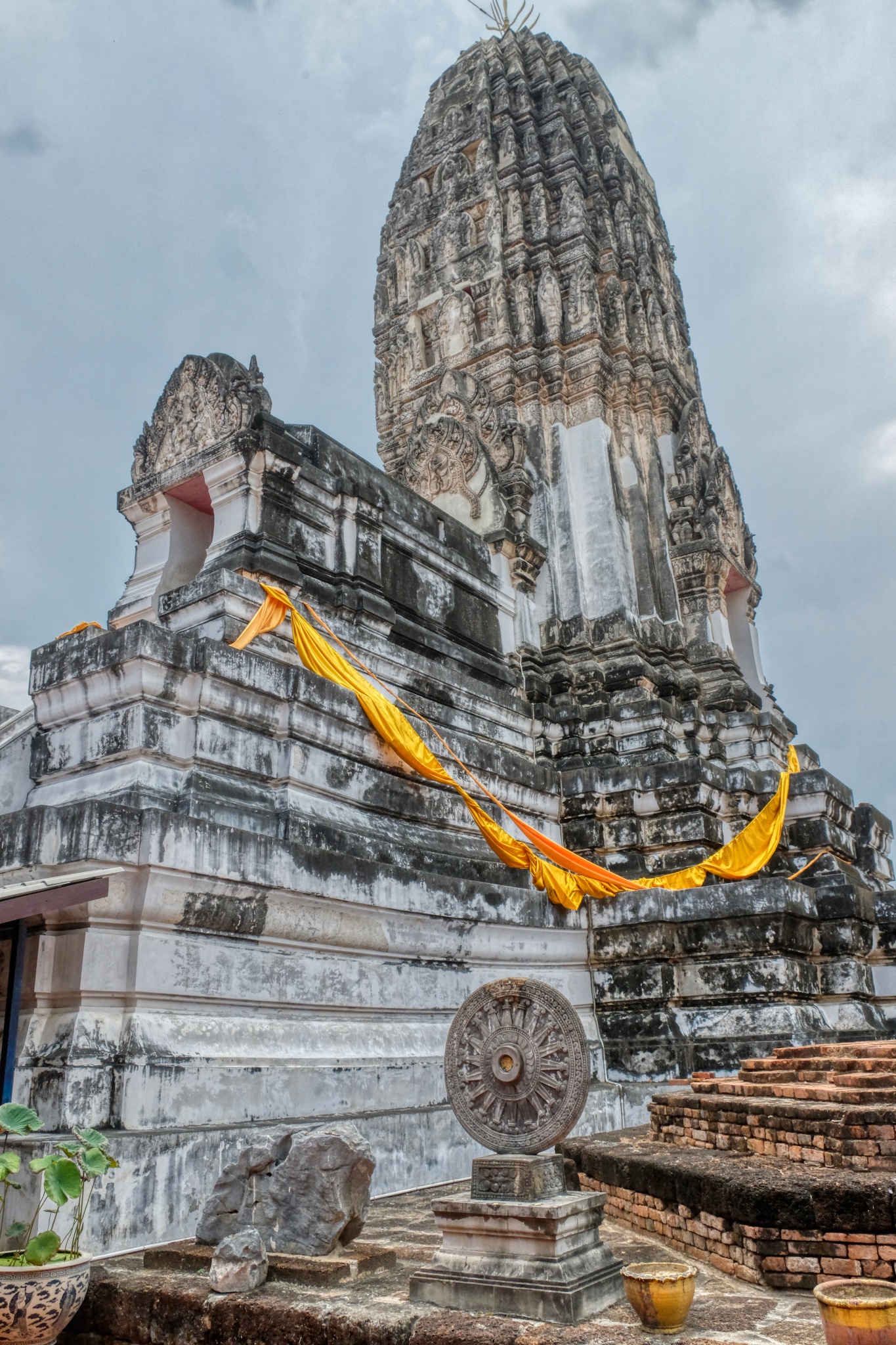
"Surrounded by four smaller ones, the tallest central prang rising over forty meters enshrines Buddha relics. Enshrined in large niches on all of its four faces are standing golden images of the Buddha. The brick plastered prangs, decorated with fine stucco work are topped with a trishula, a three pointed spear, the weapon of the Hindu God Shiva. Sheltering them is a small multi tiered ceremonial umbrella" (citation)
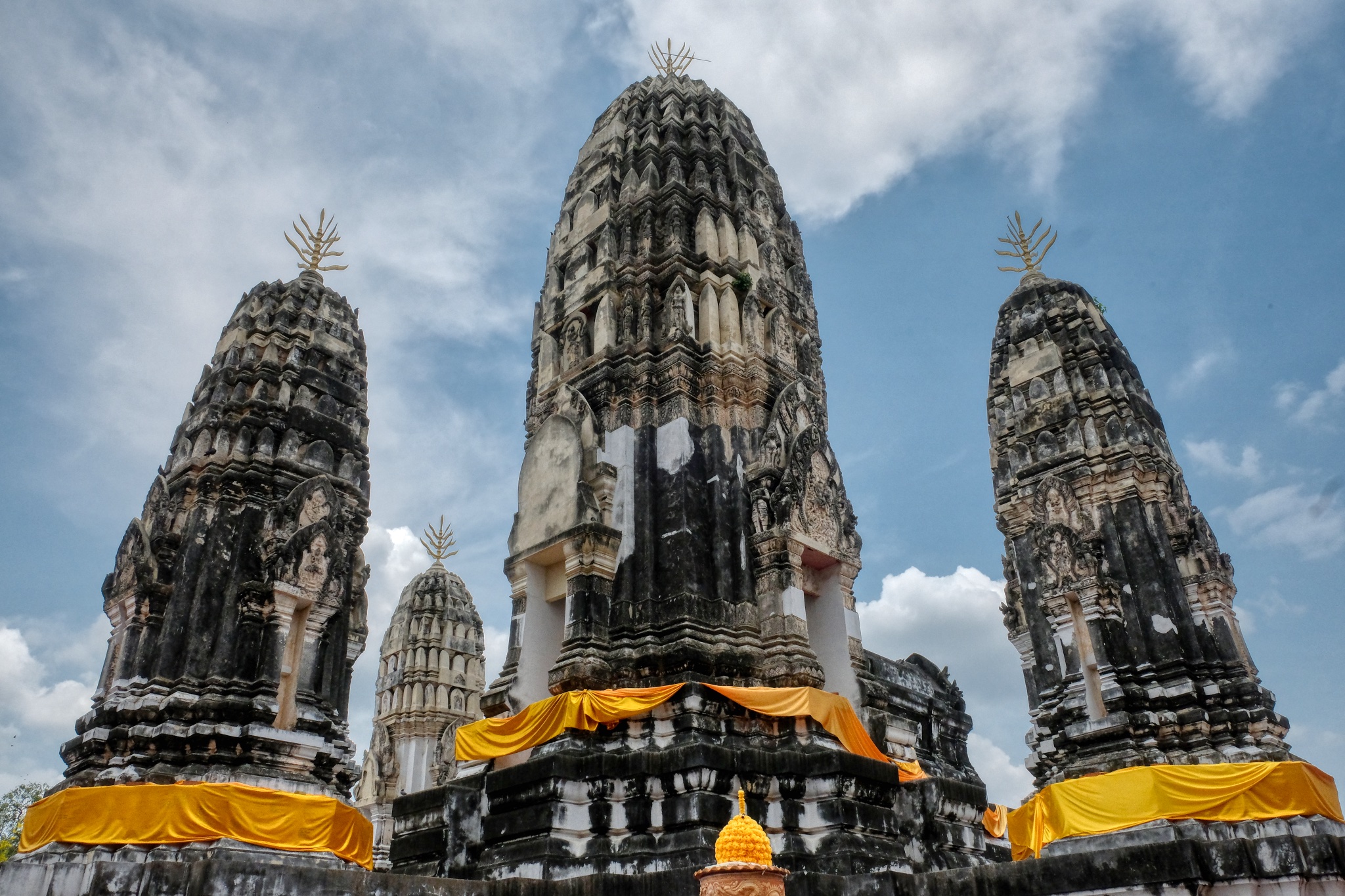 Extraordinary.
Extraordinary.
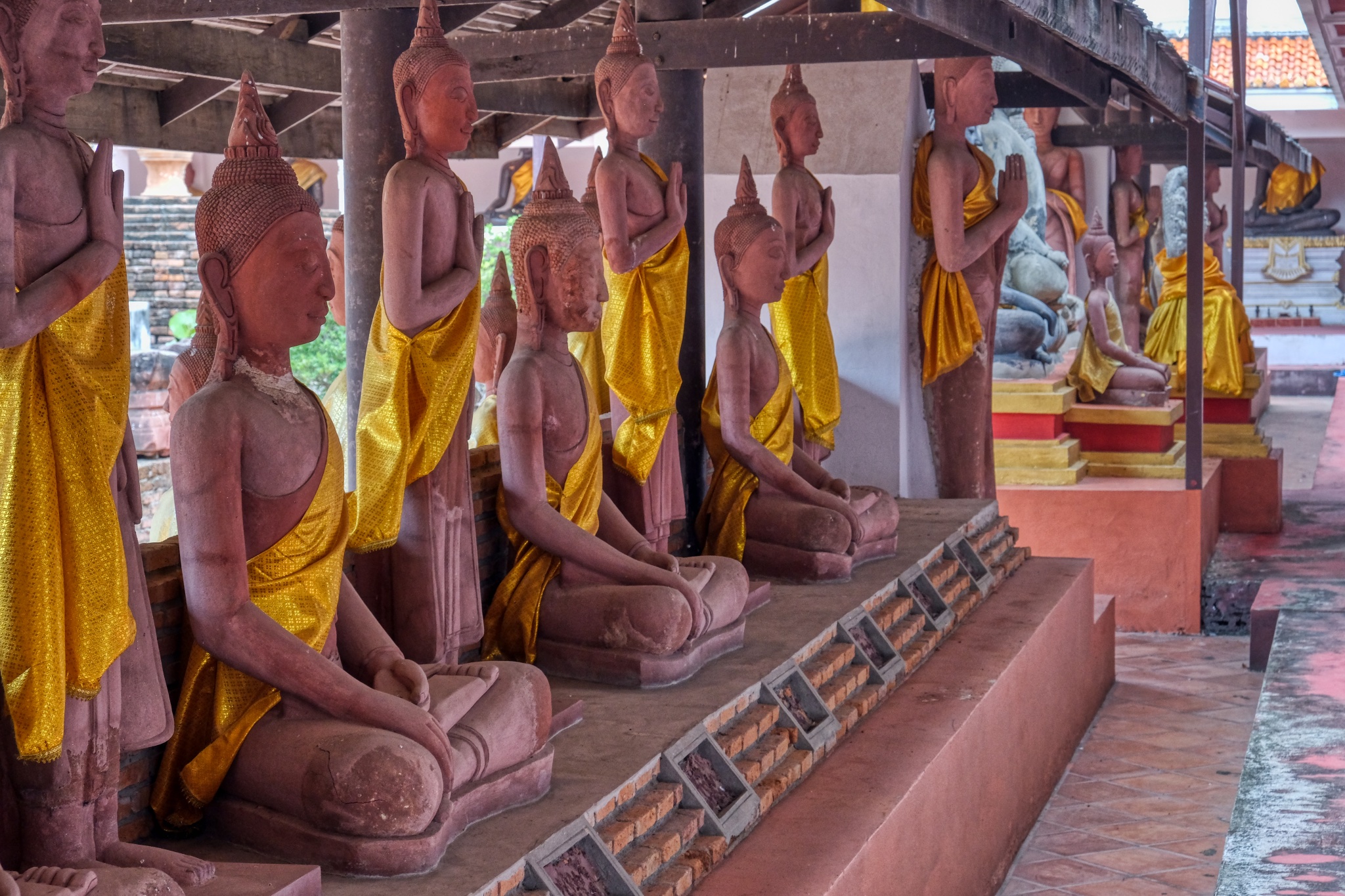 Ah! A phone message from my wife: she is on the 16th hole. Time for me to leave this amazing place. I headed back out along the Buddha colonnades.
Ah! A phone message from my wife: she is on the 16th hole. Time for me to leave this amazing place. I headed back out along the Buddha colonnades.
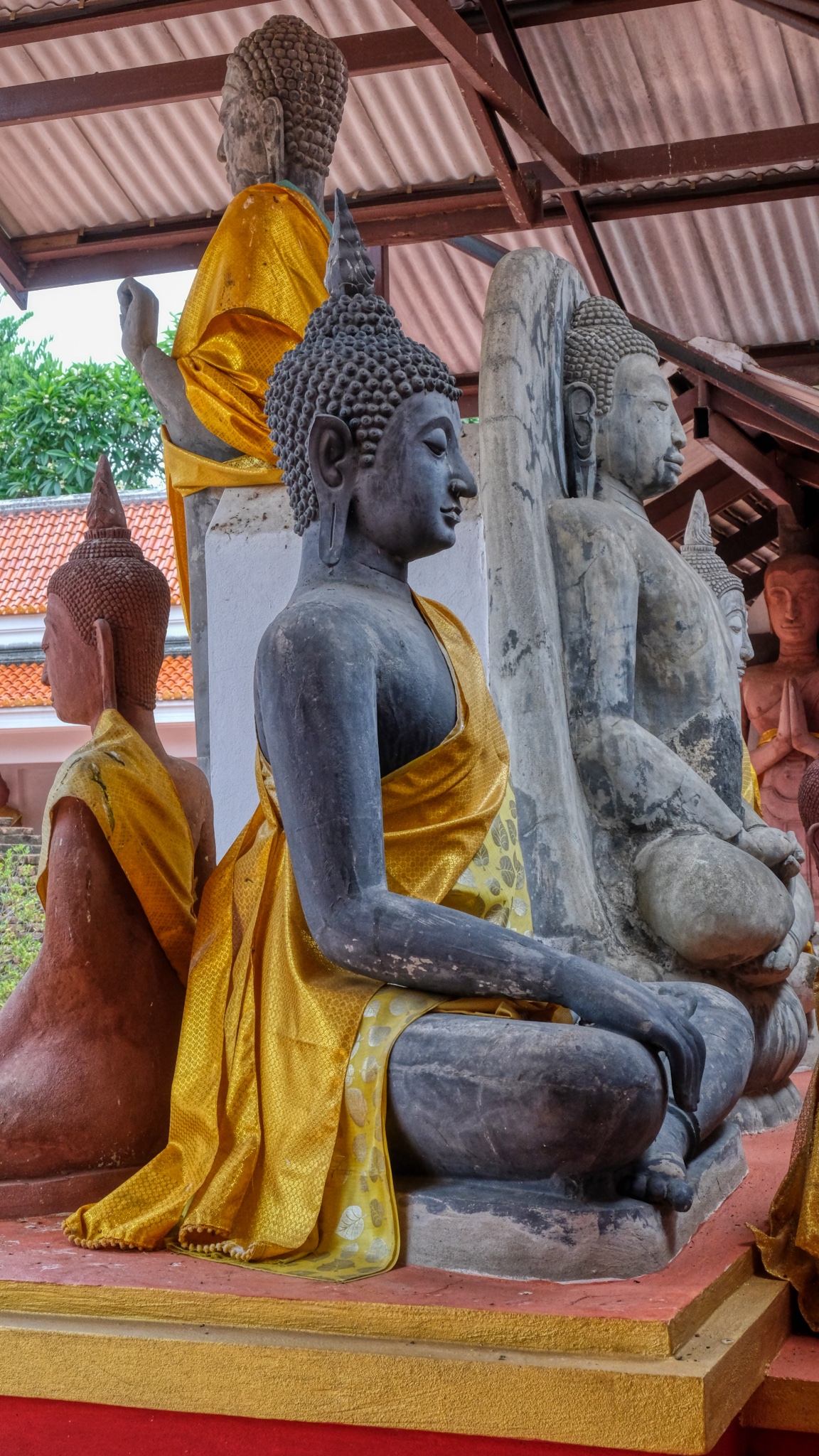 A wide variety of Buddha images present.
A wide variety of Buddha images present.
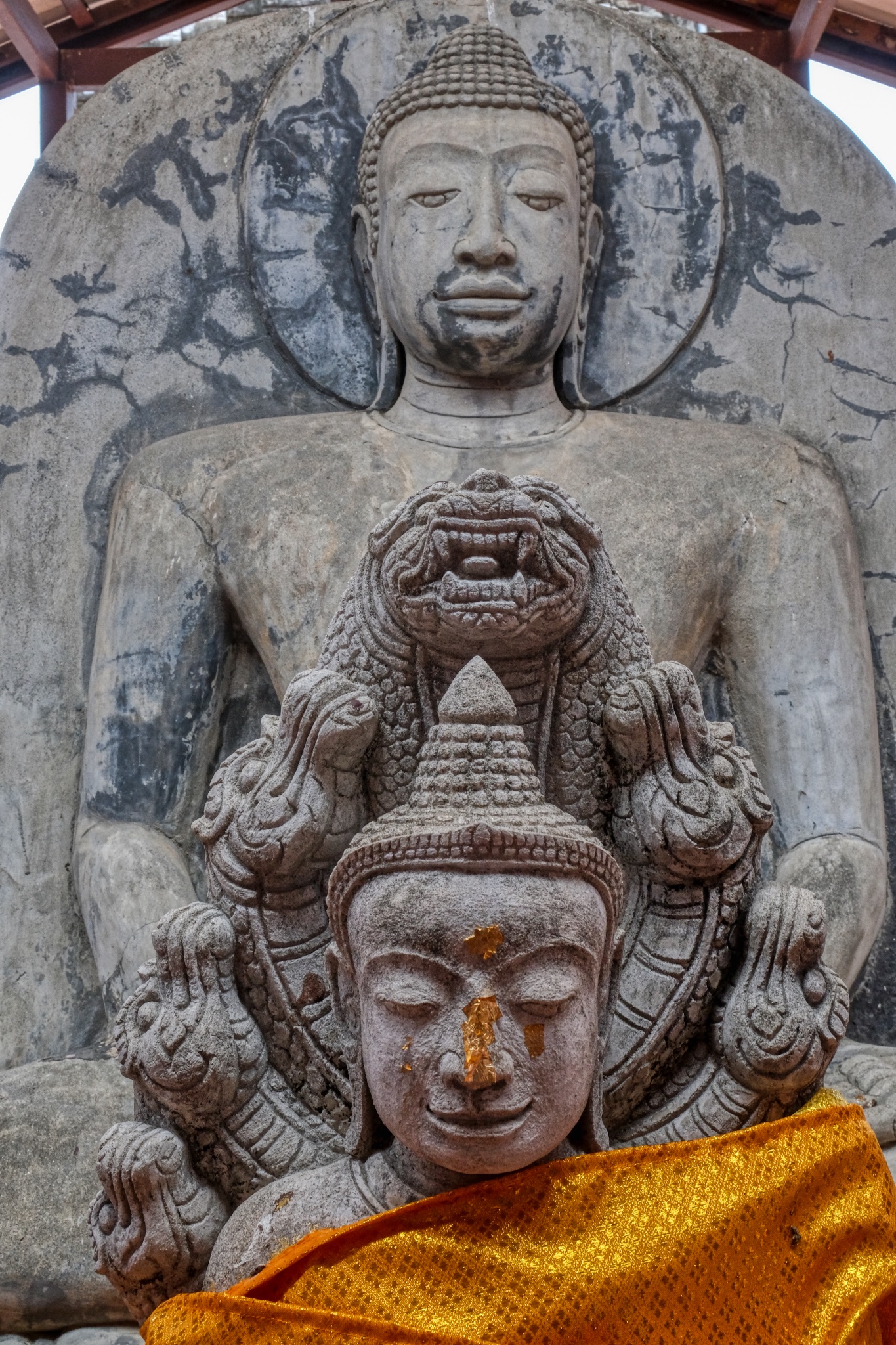 A fine reminder about my mortality and a questioning about what I am doing with my conscieness.
A fine reminder about my mortality and a questioning about what I am doing with my conscieness.
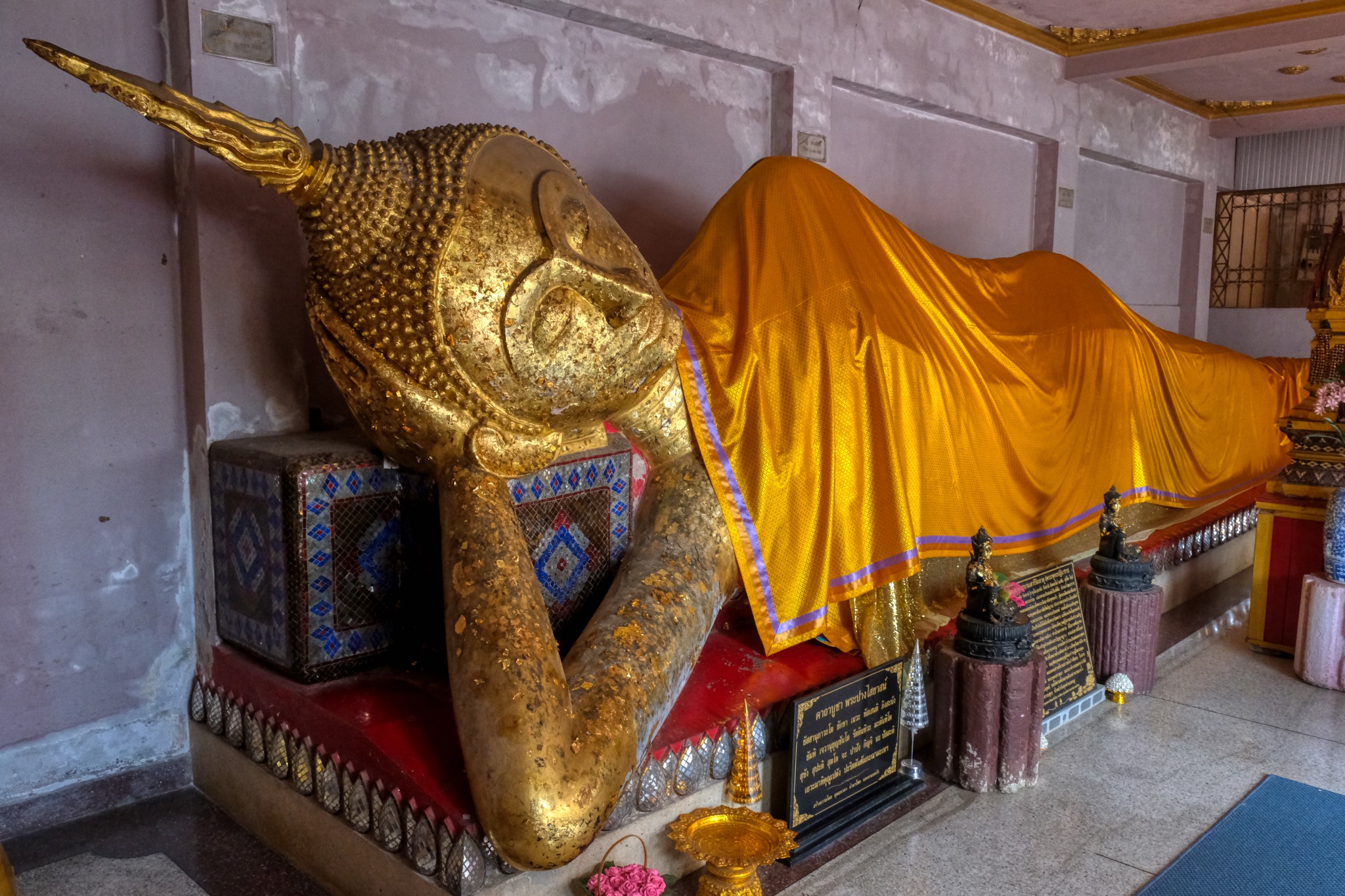 One last grotto . . . to visit a reclining Buddha.
One last grotto . . . to visit a reclining Buddha.
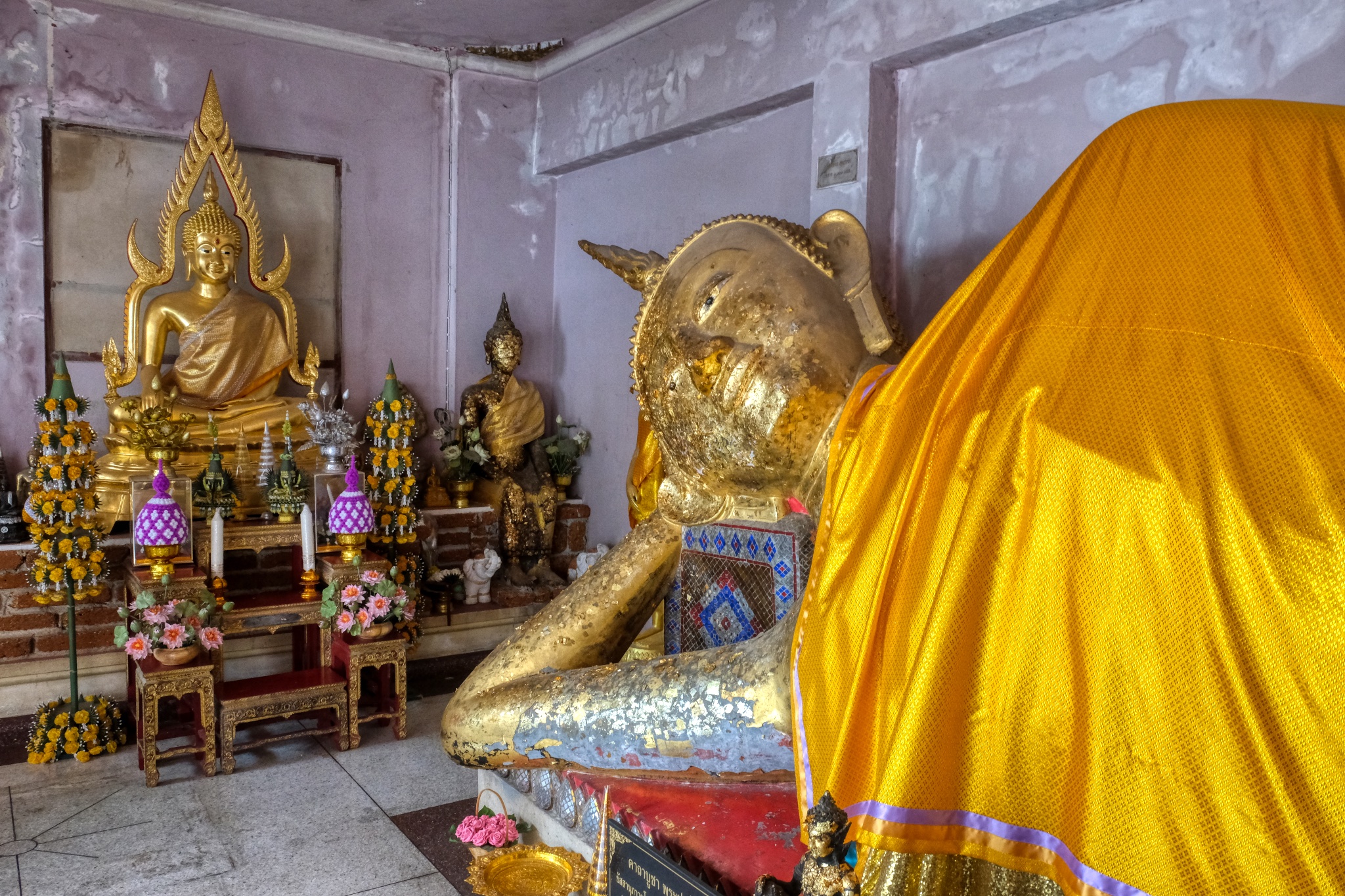 Such a beautiful display. An old 'nun' altar keeper offered me a bottle of water here, which I took. It was a hot day!
Such a beautiful display. An old 'nun' altar keeper offered me a bottle of water here, which I took. It was a hot day!
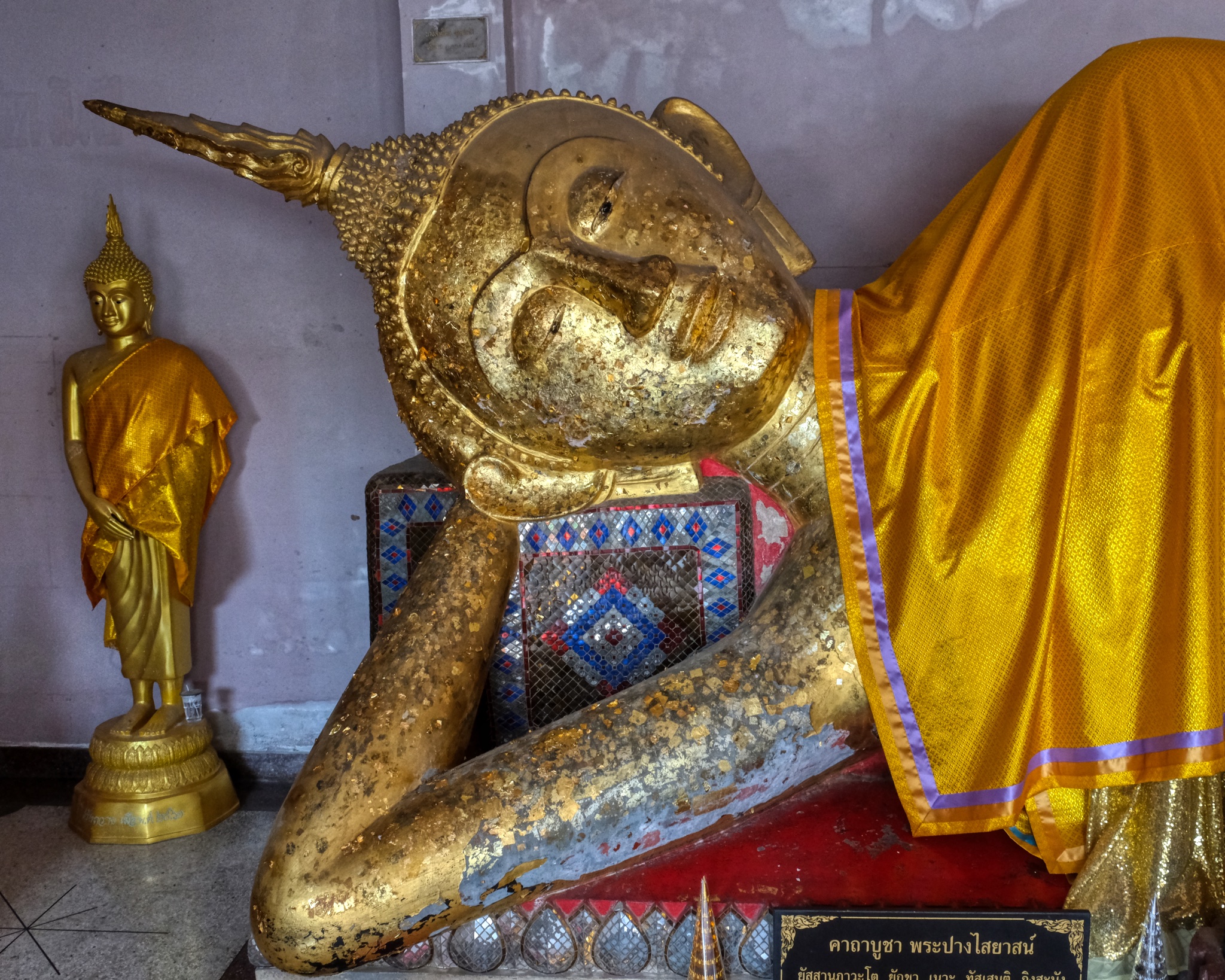 I lingered in this space to pay my respect to the Buddha. I also left my donation here.
I lingered in this space to pay my respect to the Buddha. I also left my donation here.
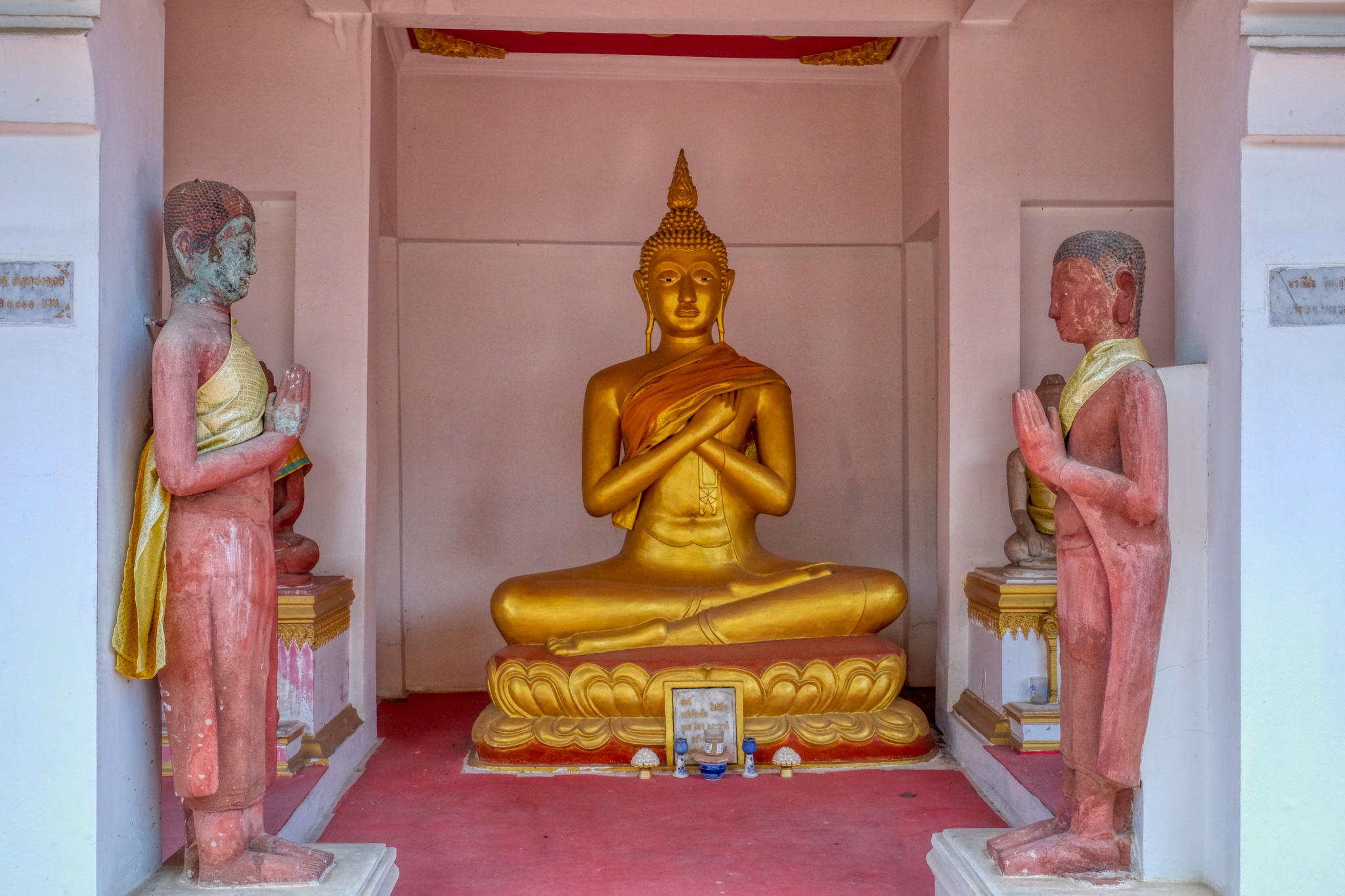 My last stop. Then the 25 minute drive to pick up my wife at the golf course and the 1 hour 45 minute drive back to Hua Hin. A wonderful day . . . .
My last stop. Then the 25 minute drive to pick up my wife at the golf course and the 1 hour 45 minute drive back to Hua Hin. A wonderful day . . . .
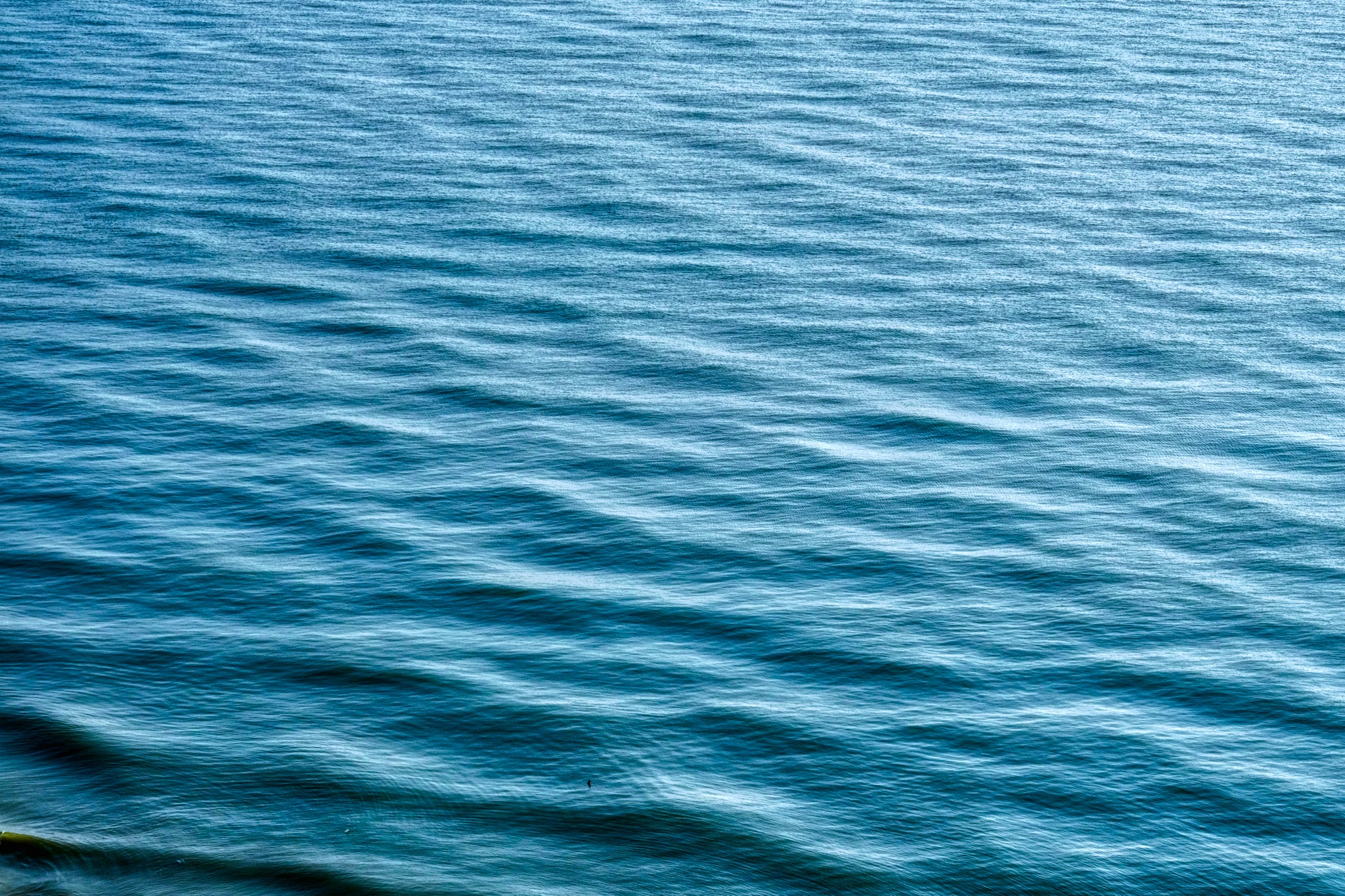 Back on the balcony for a gin & tonic and this strange blue sea . . .
Back on the balcony for a gin & tonic and this strange blue sea . . .
USA Road Trip: The Wild West - Pipe Springs and Cove Fort
 Thursday, February 24, 2022 at 6:50PM
Thursday, February 24, 2022 at 6:50PM PIPE SPRINGS, ARIZONA
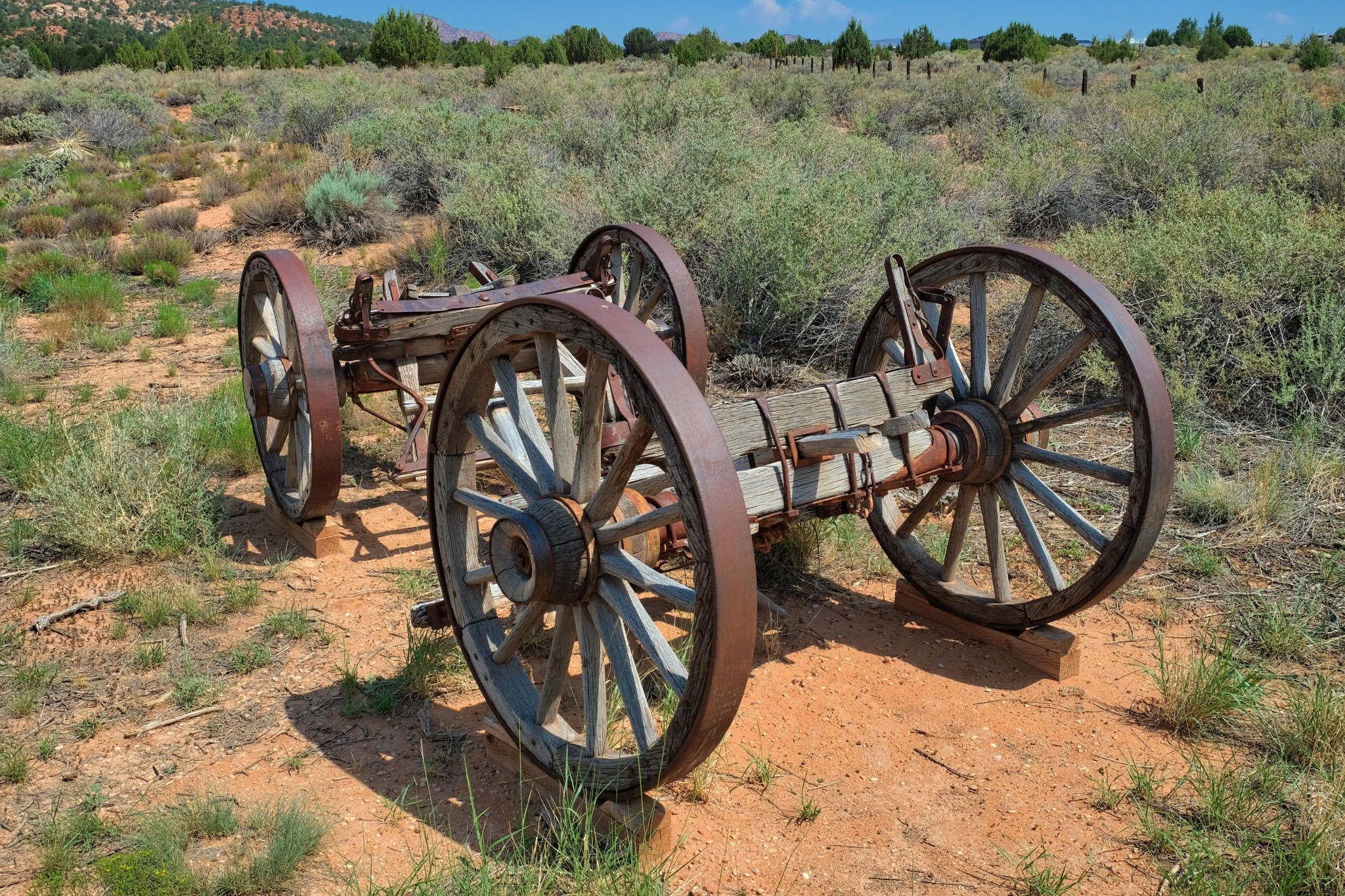 Out on the dry, high elevation chaparral of Northern Arizona, along the road between Zion National Park and the North Rim of the Grand Canyon . . . a remnant of a bygone era . . . The Wild West . . . Pipe Springs National Monument.
Out on the dry, high elevation chaparral of Northern Arizona, along the road between Zion National Park and the North Rim of the Grand Canyon . . . a remnant of a bygone era . . . The Wild West . . . Pipe Springs National Monument.
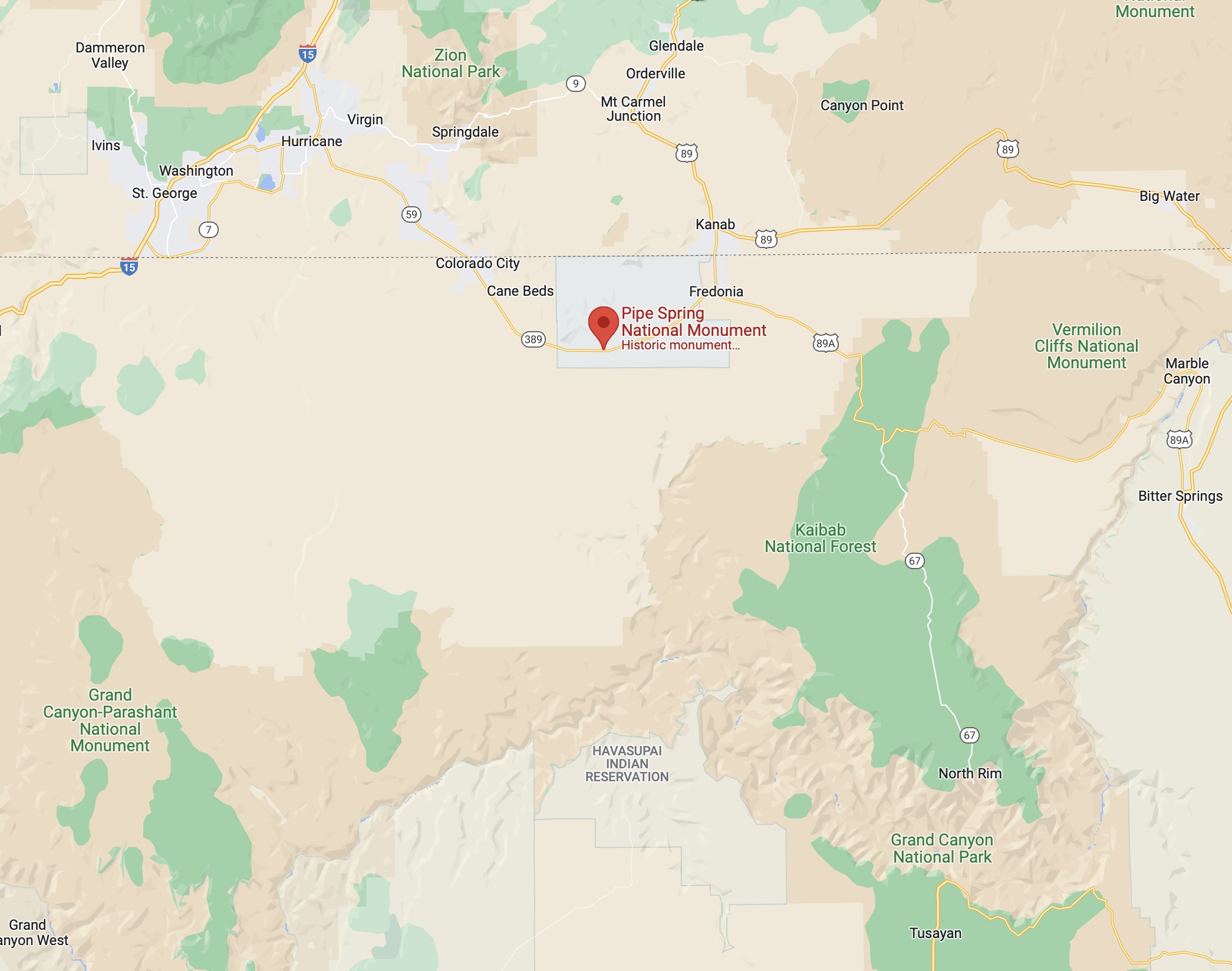 My road trip took me along many wonderful roads.
My road trip took me along many wonderful roads.
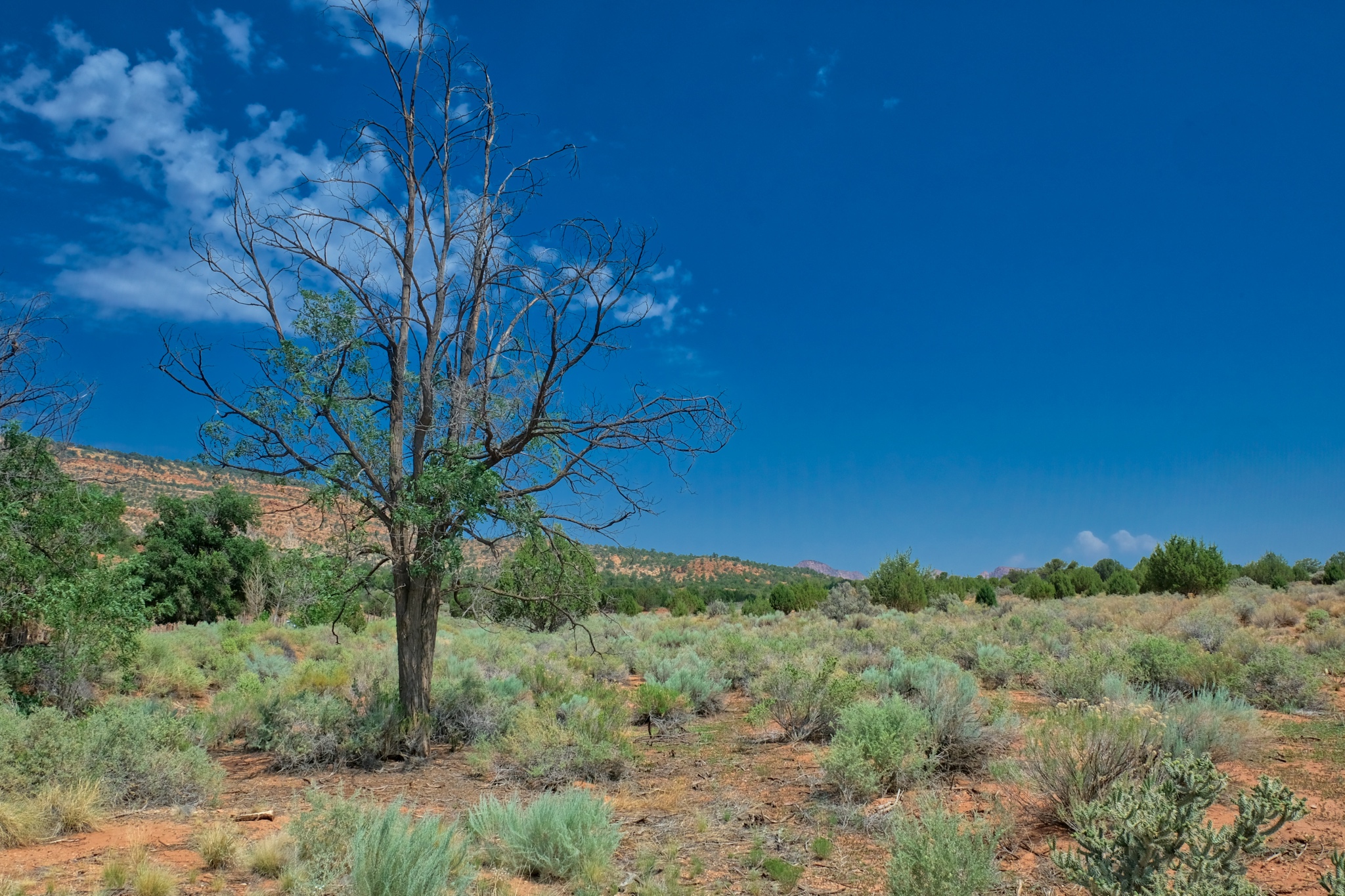 Pipe Springs is established as a grasslands preservation area to reestablish the area as it was before settlers arrived in 1850.
Pipe Springs is established as a grasslands preservation area to reestablish the area as it was before settlers arrived in 1850.
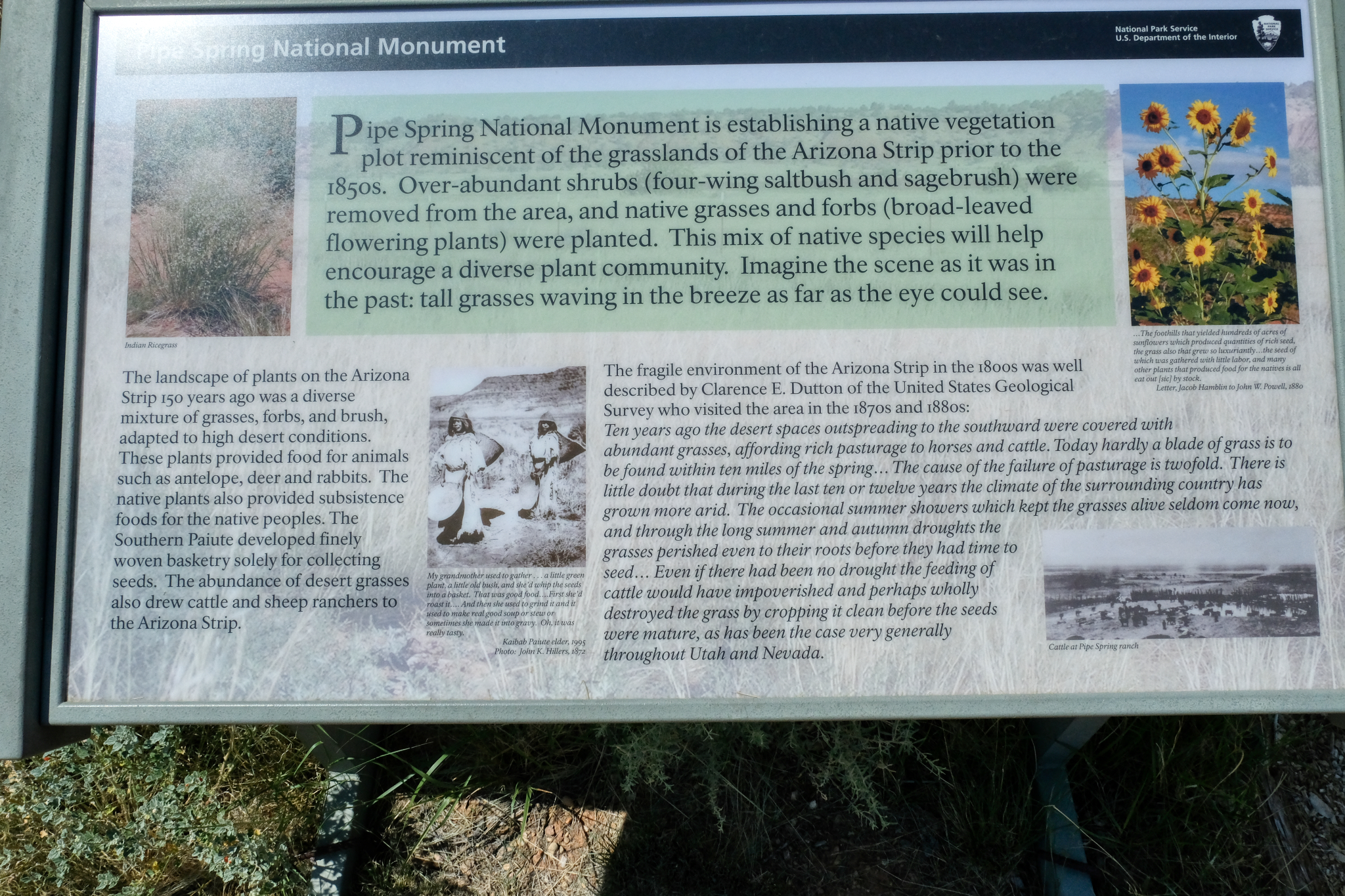 In addition to very informative signage, there was also a fine visitors center.
In addition to very informative signage, there was also a fine visitors center.
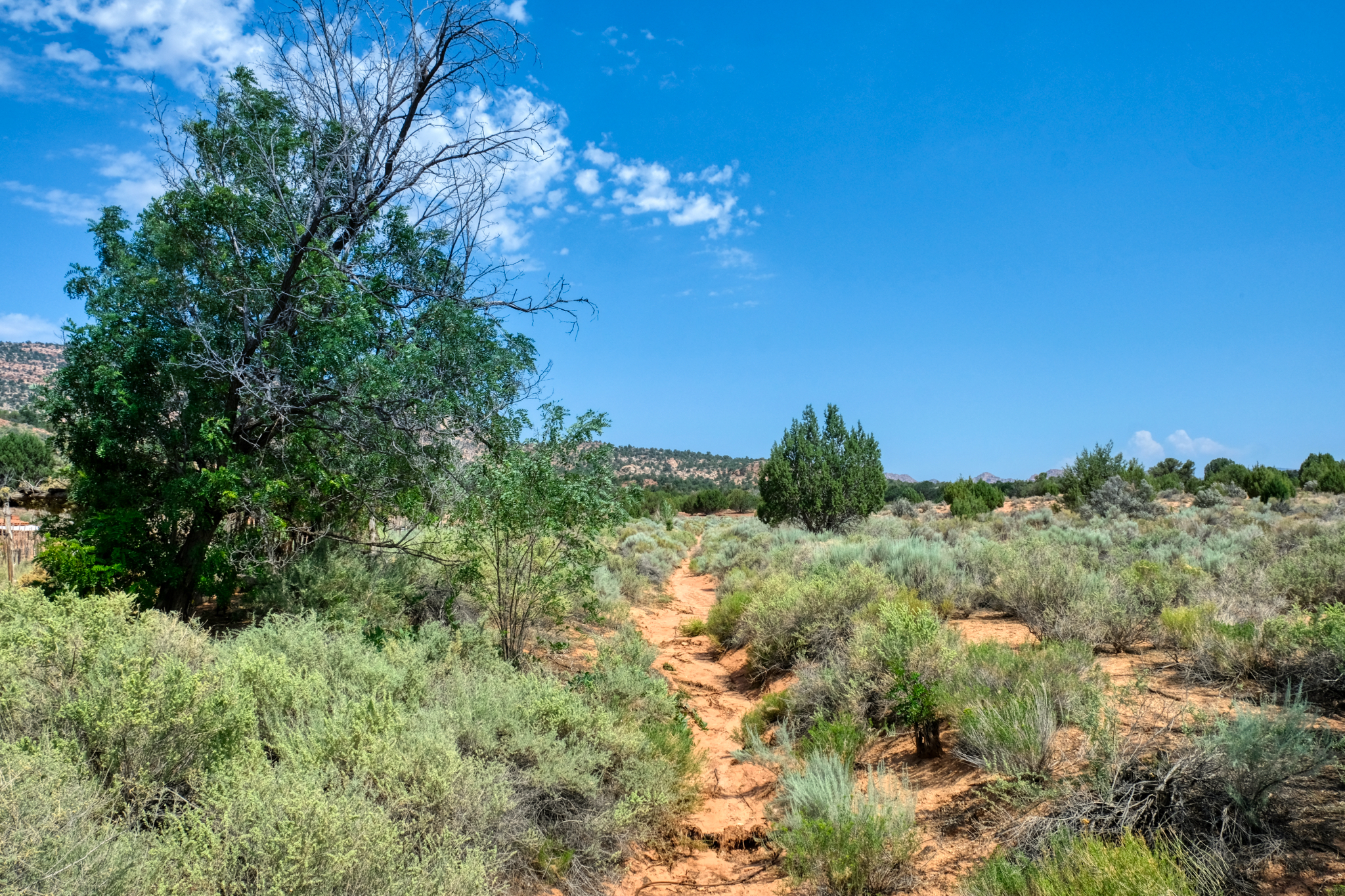 A nice place for a walk to nowhere.
A nice place for a walk to nowhere.
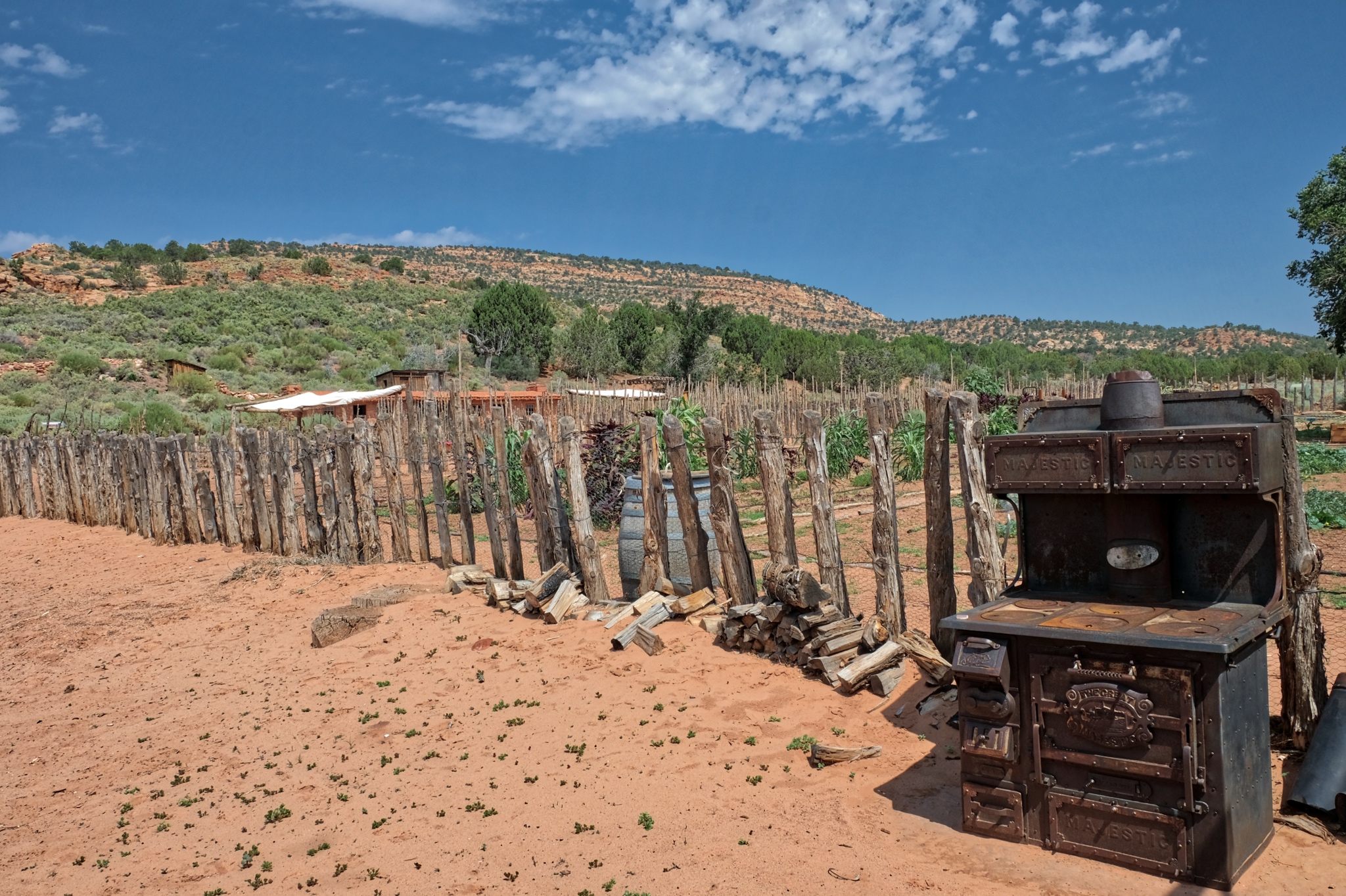 Pipe springs was established at a natural spring as a U.S. Army Calvary Fort, but it was also a self-sustaining farm to support the soldiers stationed there during 'The Indian Wars' in the region.
Pipe springs was established at a natural spring as a U.S. Army Calvary Fort, but it was also a self-sustaining farm to support the soldiers stationed there during 'The Indian Wars' in the region.
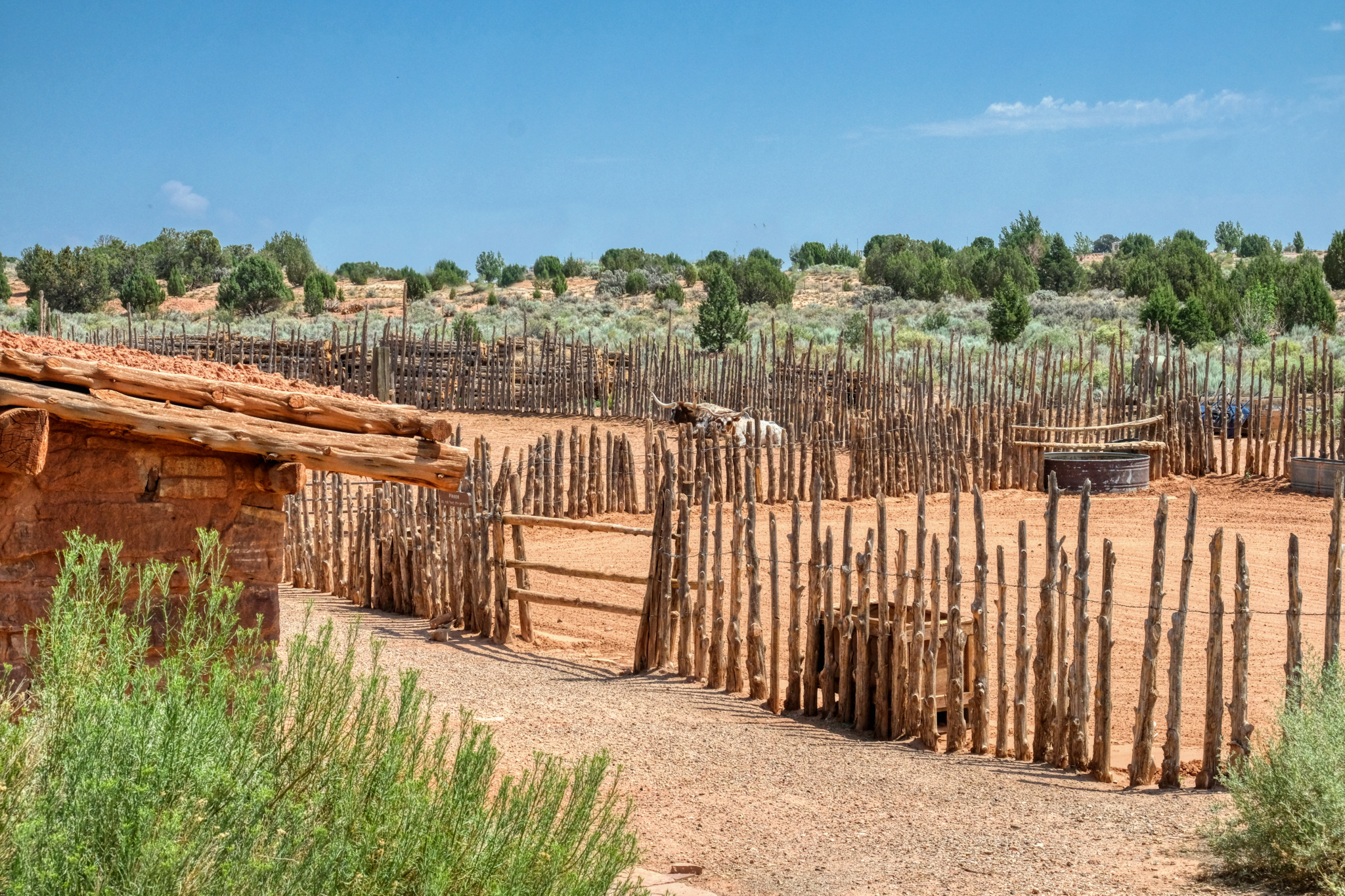 The National Monument still maintains a farm on site in the manner of the settlers and soldiers around 1850. A very nice depiction of the living conditions and methods of the early Western settlers.
The National Monument still maintains a farm on site in the manner of the settlers and soldiers around 1850. A very nice depiction of the living conditions and methods of the early Western settlers.
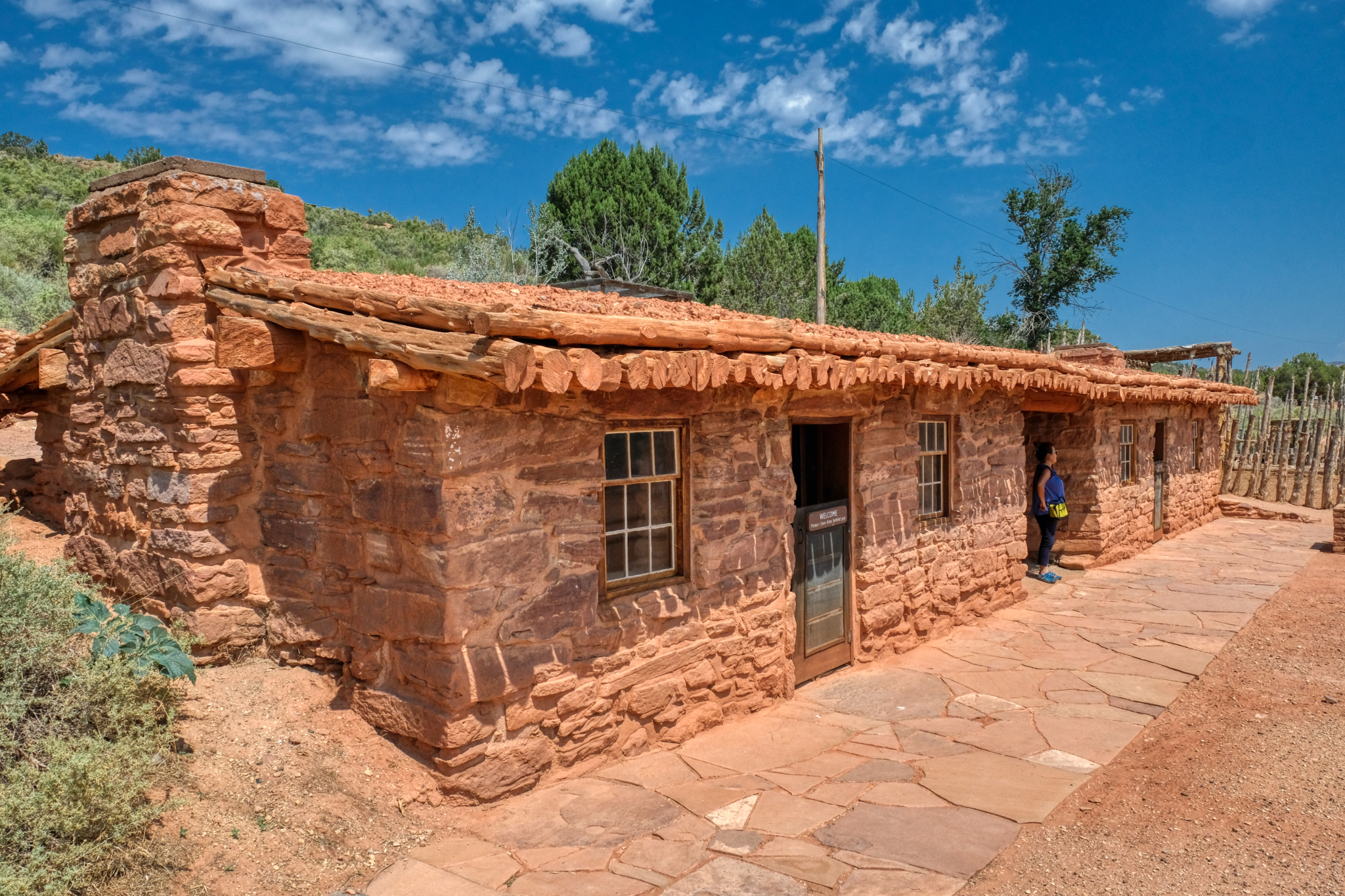 A nicely restored period blacksmith shop and tack house.
A nicely restored period blacksmith shop and tack house.
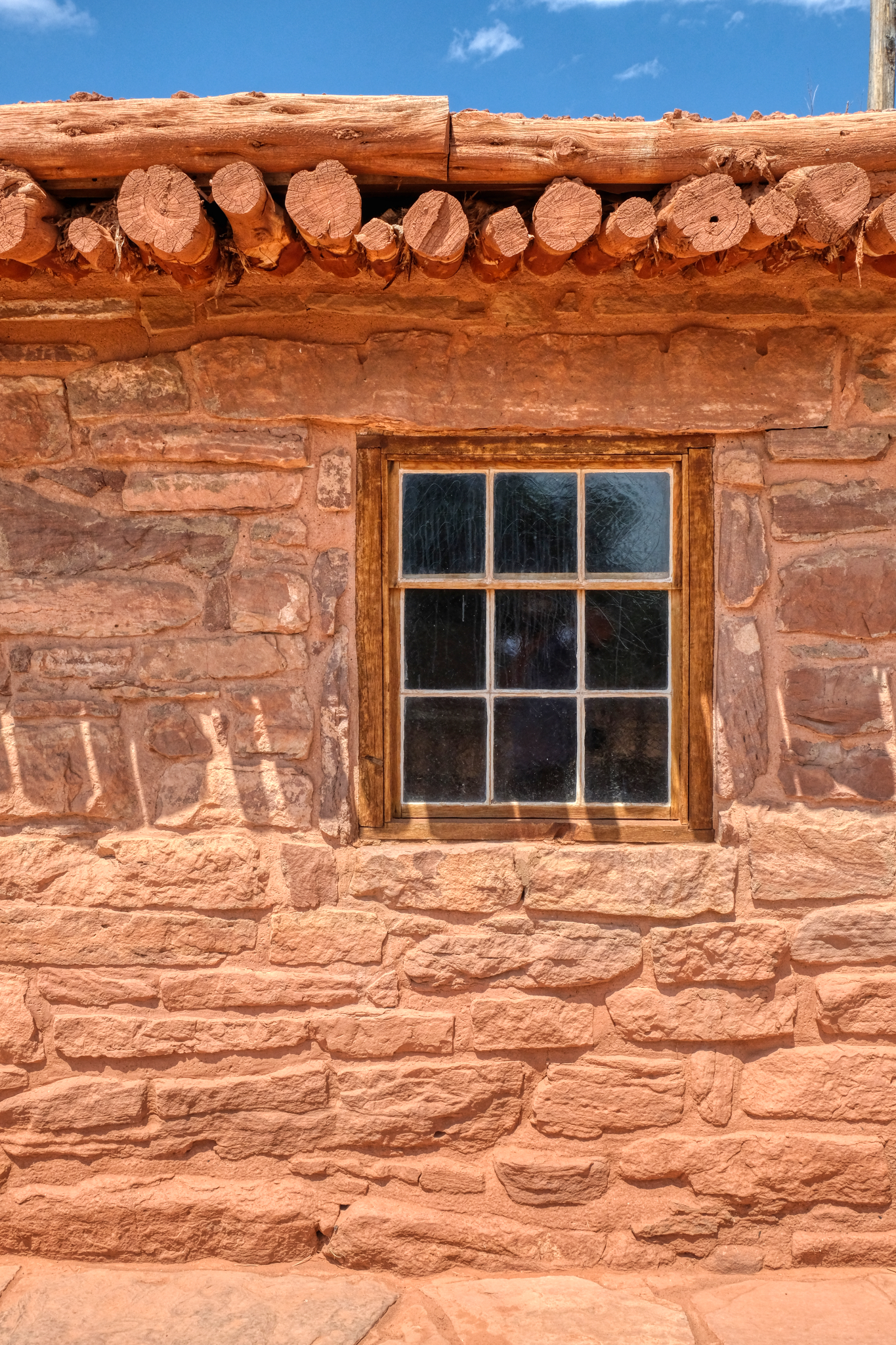 Beautiful stone construction.
Beautiful stone construction.
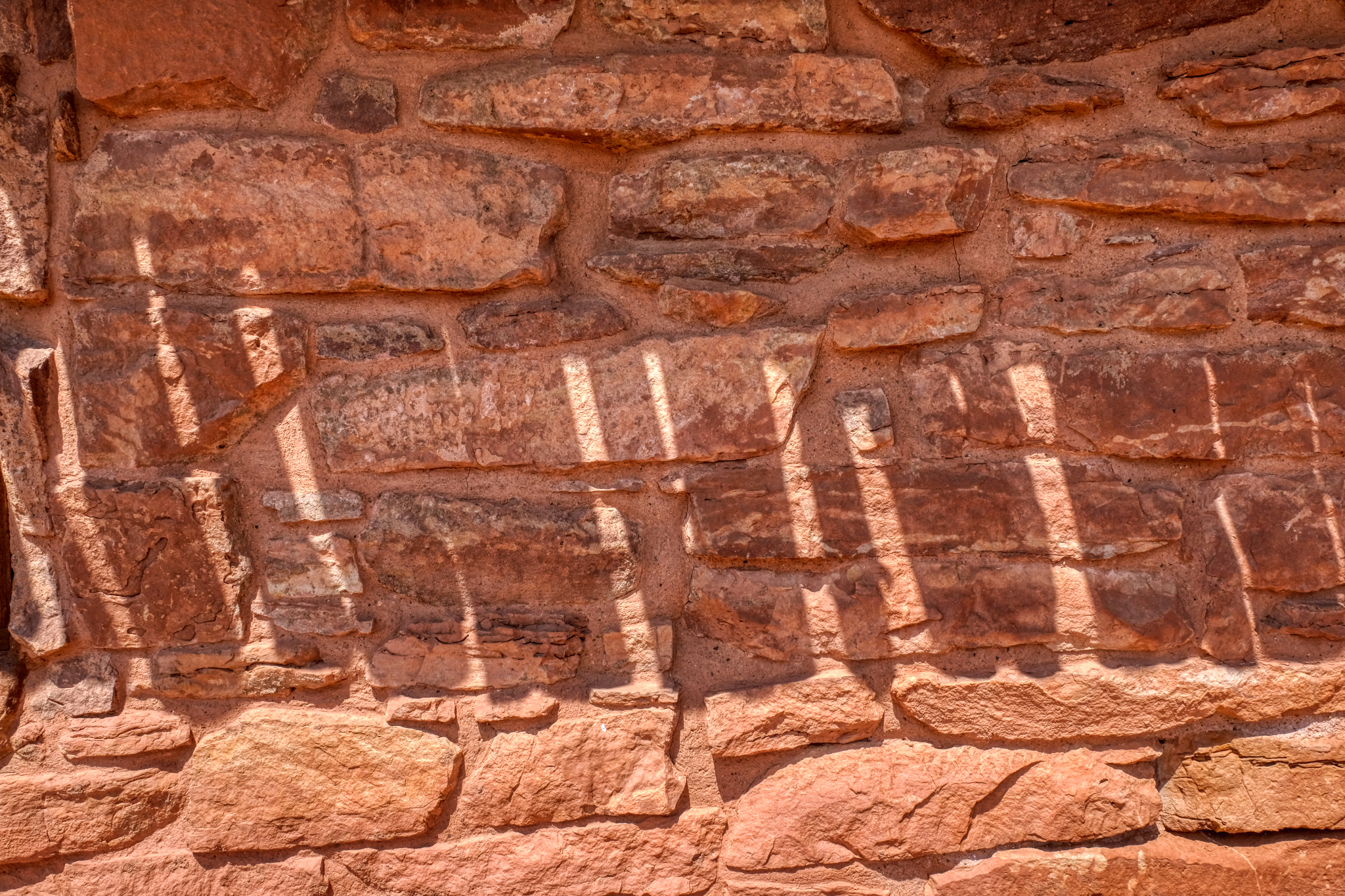 It was a hot day near noon when we arrive . . . wonderful shadows on the orange stone tack house.
It was a hot day near noon when we arrive . . . wonderful shadows on the orange stone tack house.
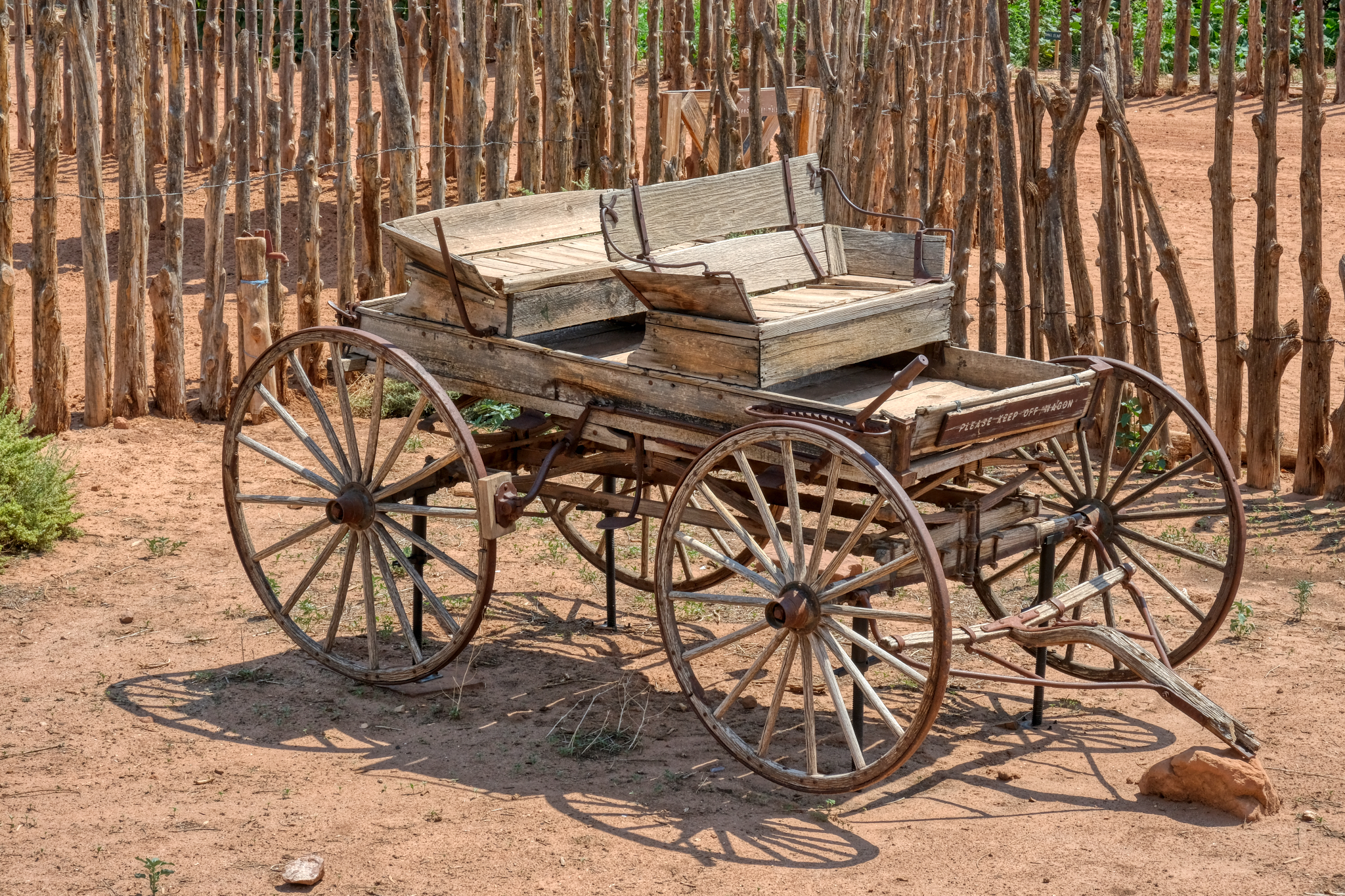 There were some beautiful antique wagons sitting about the grounds. This buggy was fantastic.
There were some beautiful antique wagons sitting about the grounds. This buggy was fantastic.
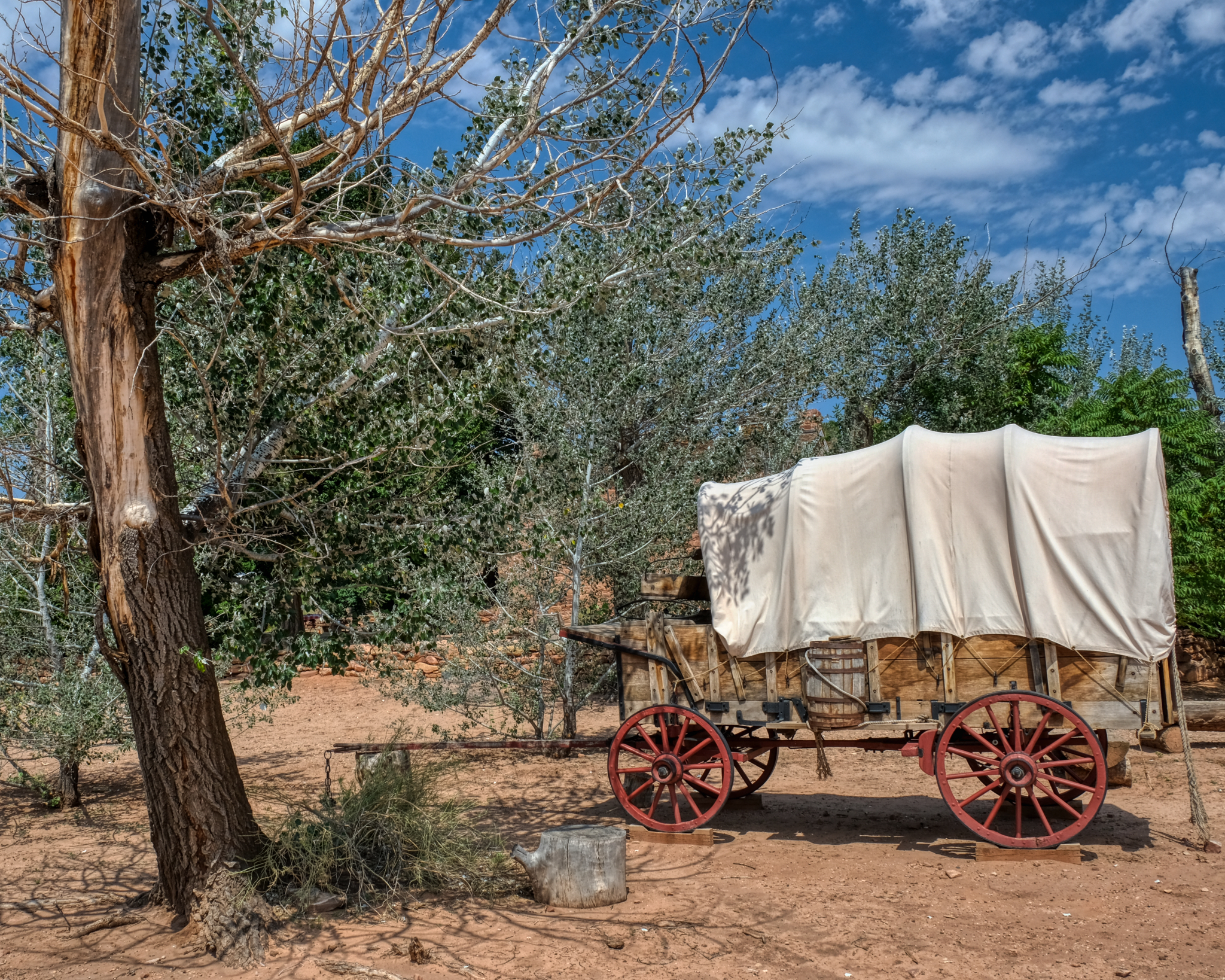 The classic western covered wagon.
The classic western covered wagon.
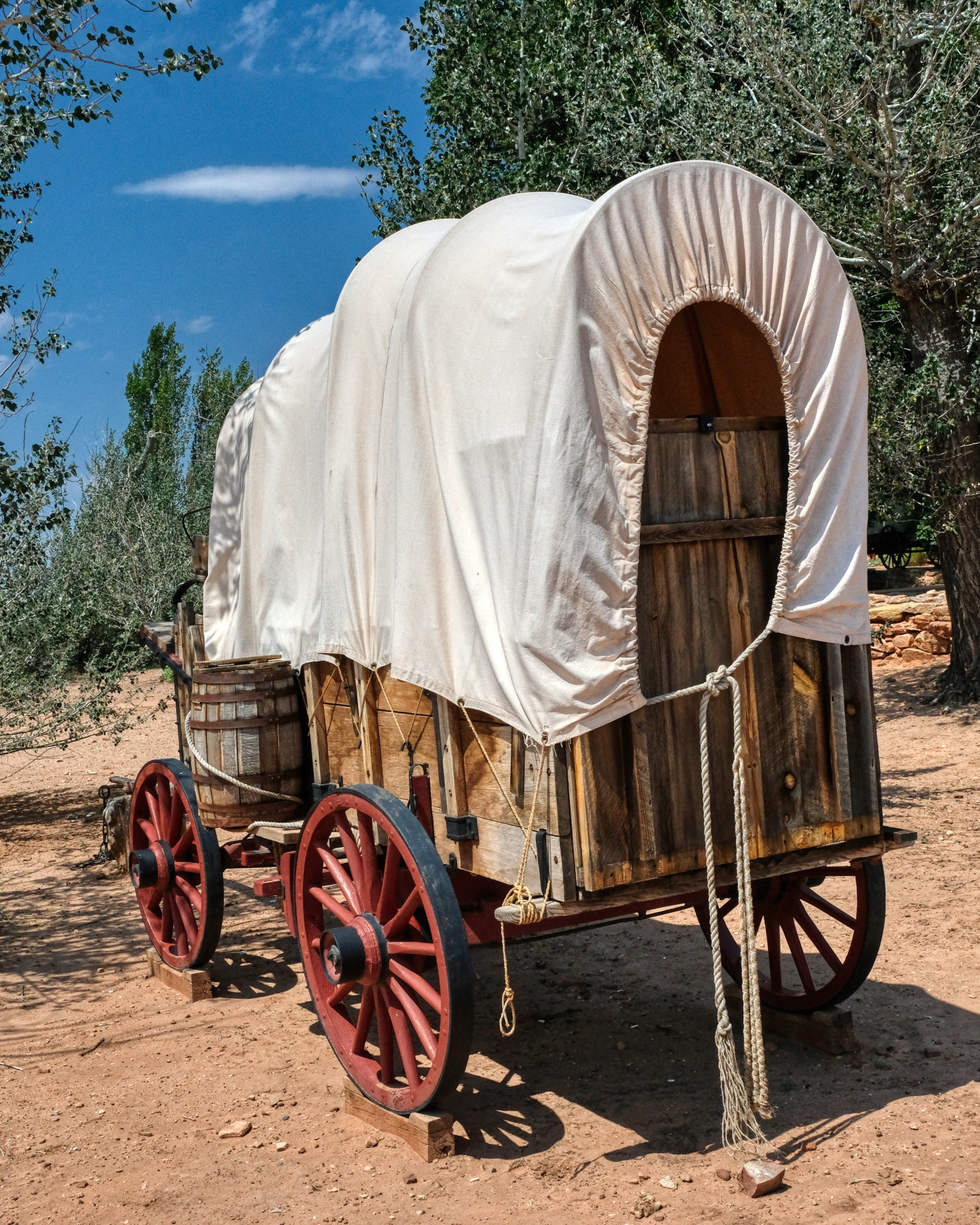 Can you imagine being one of the many thousands who crossed the breadth of America in one of these covered wagons. The faith, hope, and fortitude they must have had!
Can you imagine being one of the many thousands who crossed the breadth of America in one of these covered wagons. The faith, hope, and fortitude they must have had!
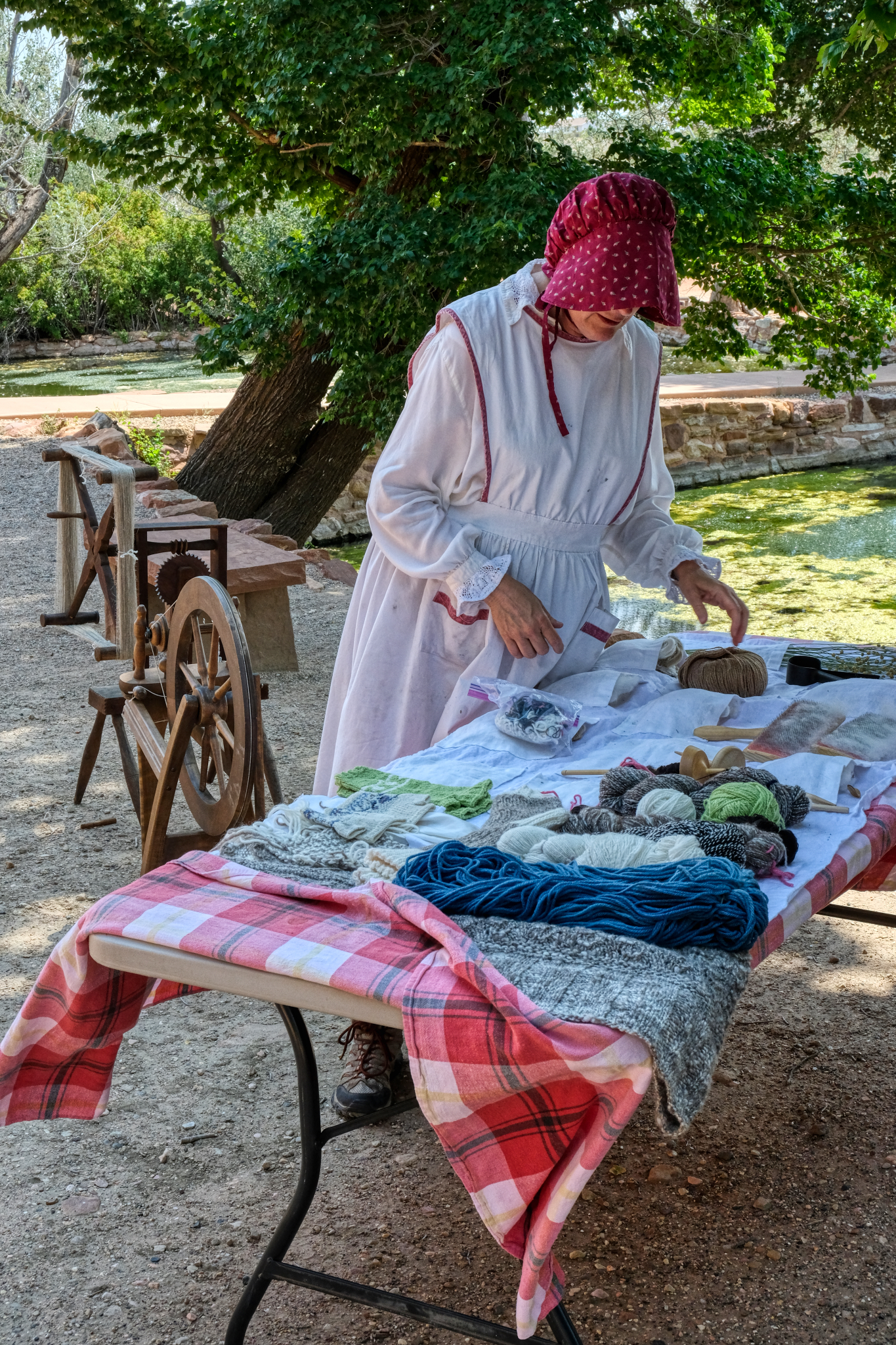 One of the park staff dressed in period costume displaying the kind of textiles the pioneers there would have been making in the 1860s.
One of the park staff dressed in period costume displaying the kind of textiles the pioneers there would have been making in the 1860s.
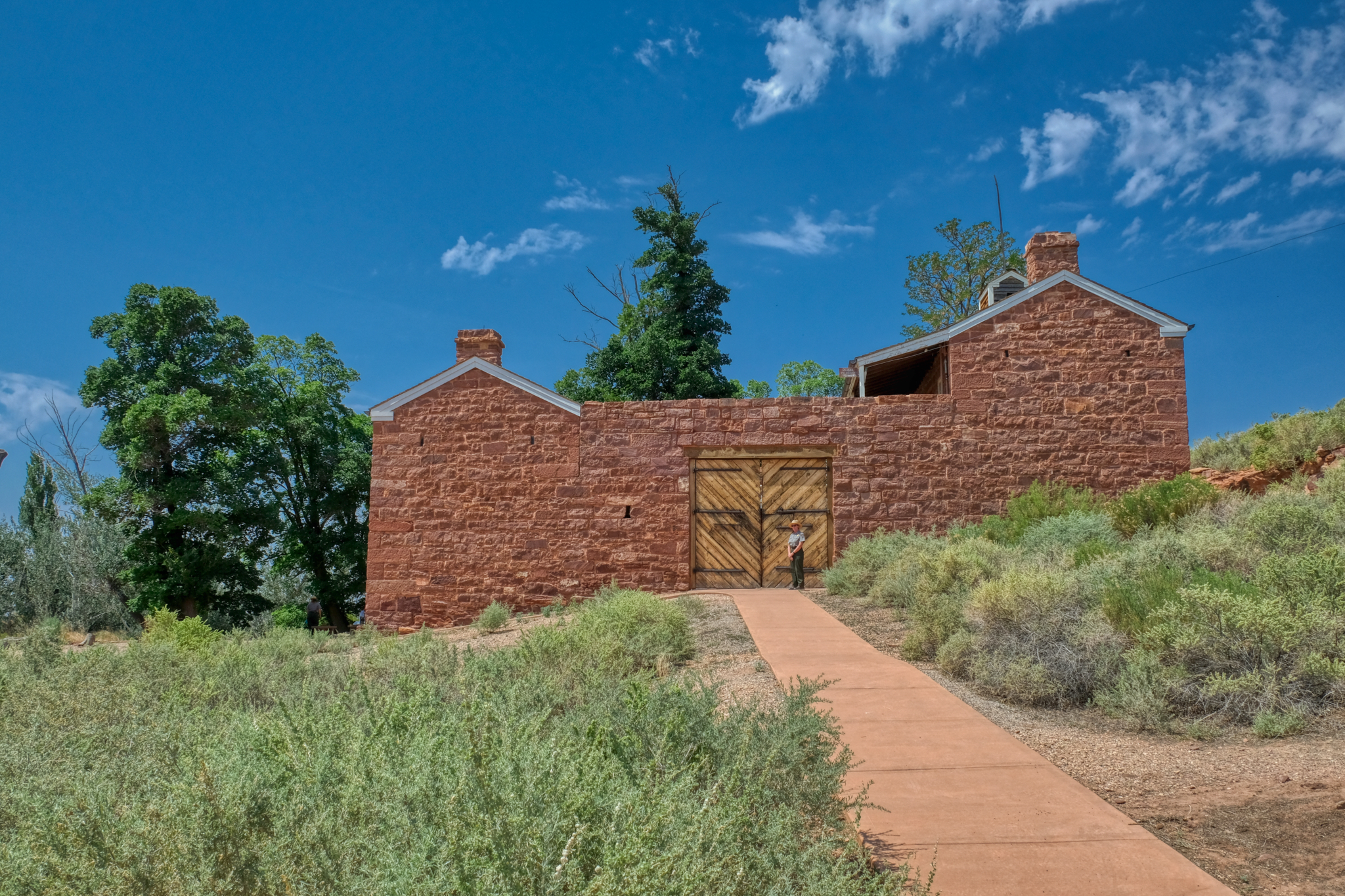 The real purpose of Pipe Springs was as a military fort to provide safety and security for settlers and ranchers during periods of 'Indian trouble.'
The real purpose of Pipe Springs was as a military fort to provide safety and security for settlers and ranchers during periods of 'Indian trouble.'
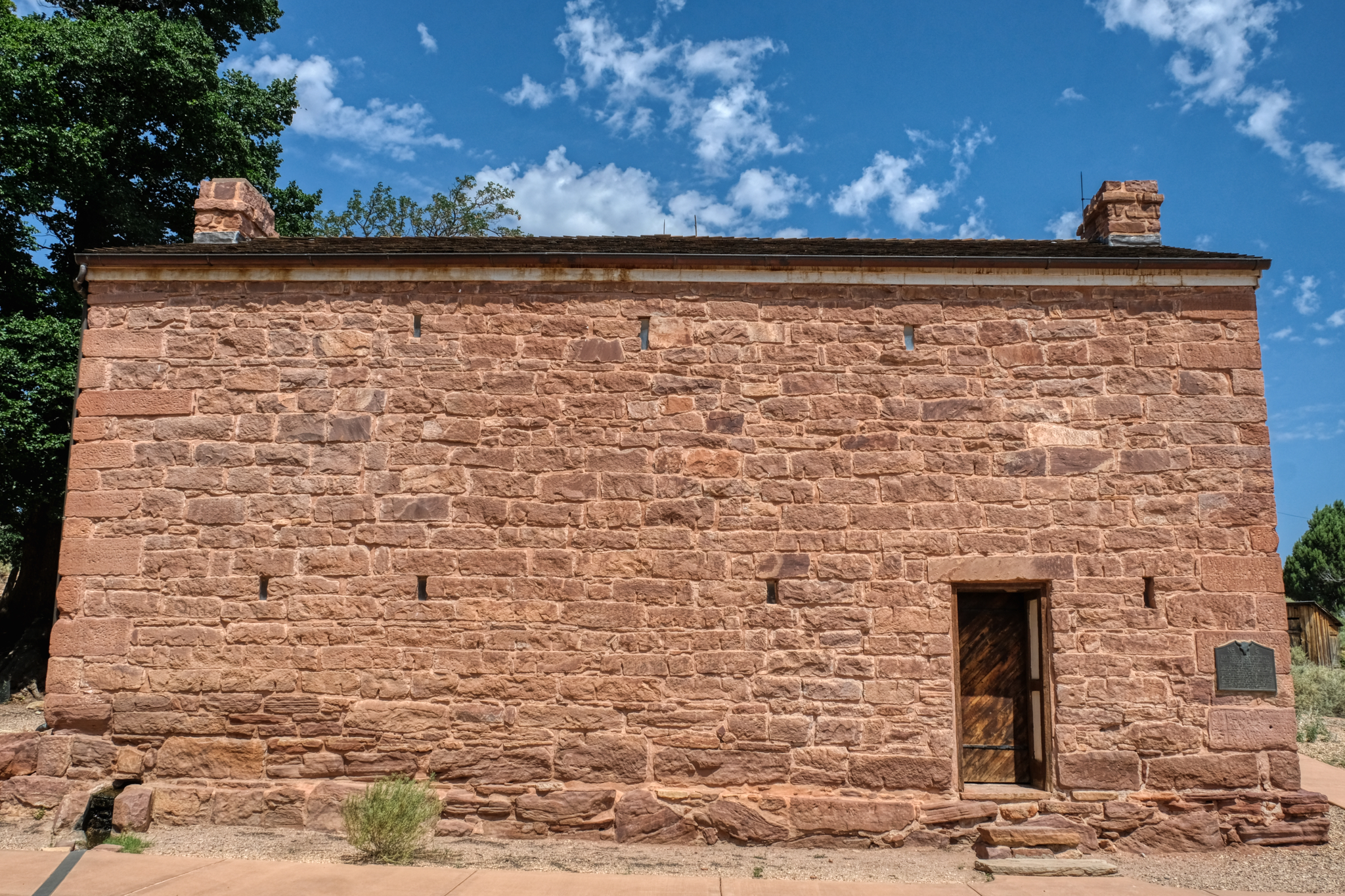 It looks very secure to me. We did not go on the inside.
It looks very secure to me. We did not go on the inside.
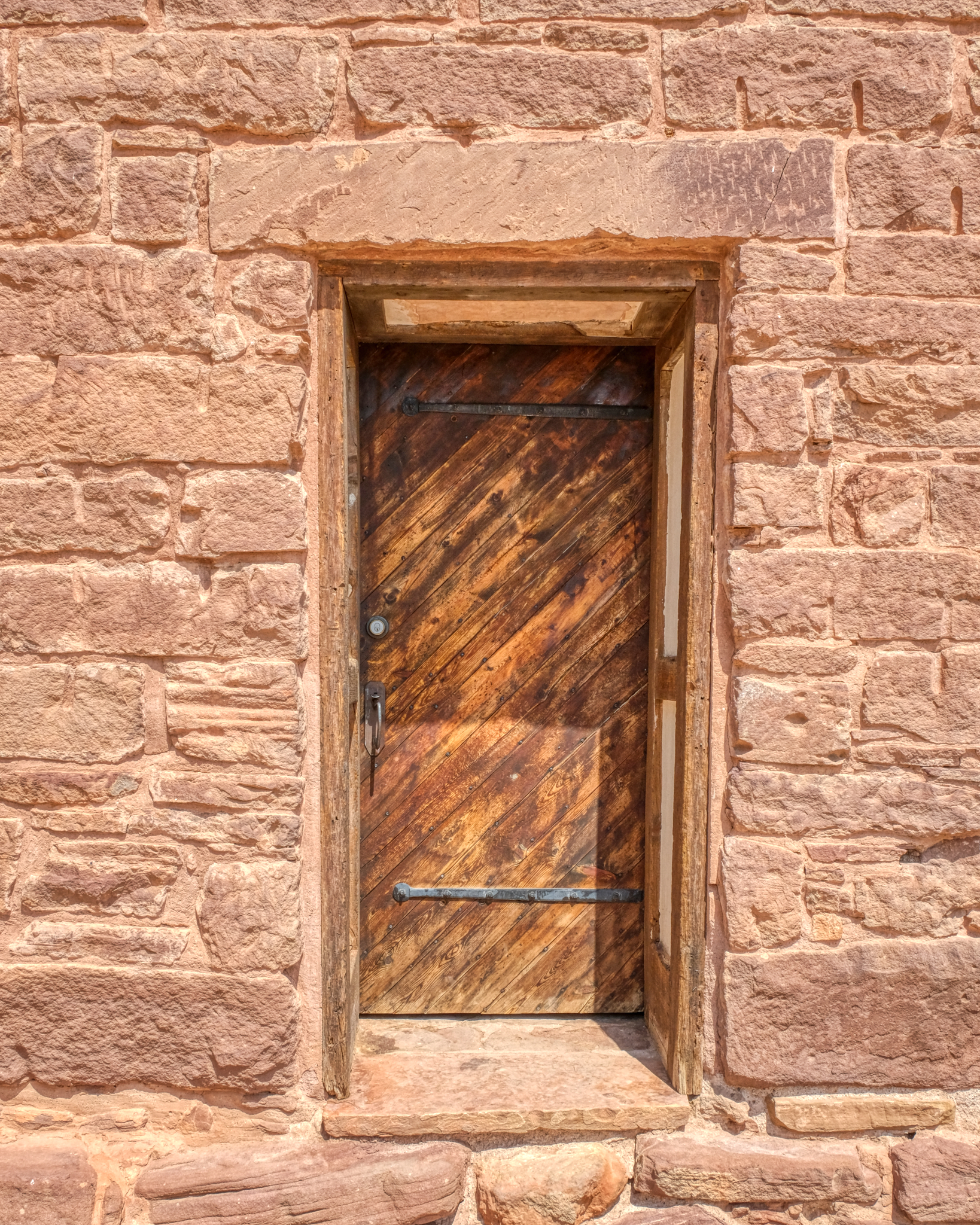 A very photogenic old door at Pipe Springs Fort.
A very photogenic old door at Pipe Springs Fort.
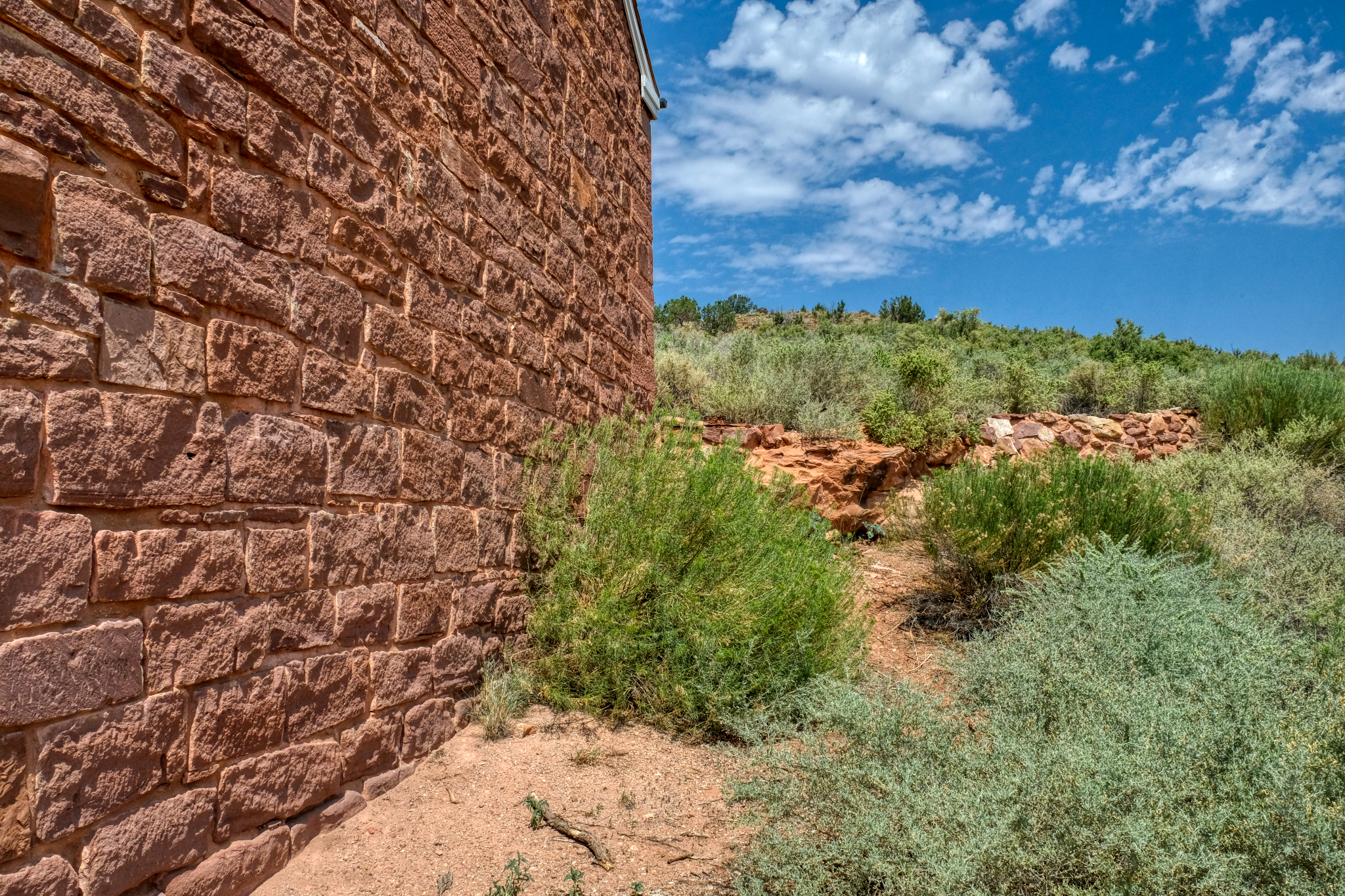 This photo represents, for me, the isolation of the fort within the vast western landscape.
This photo represents, for me, the isolation of the fort within the vast western landscape.
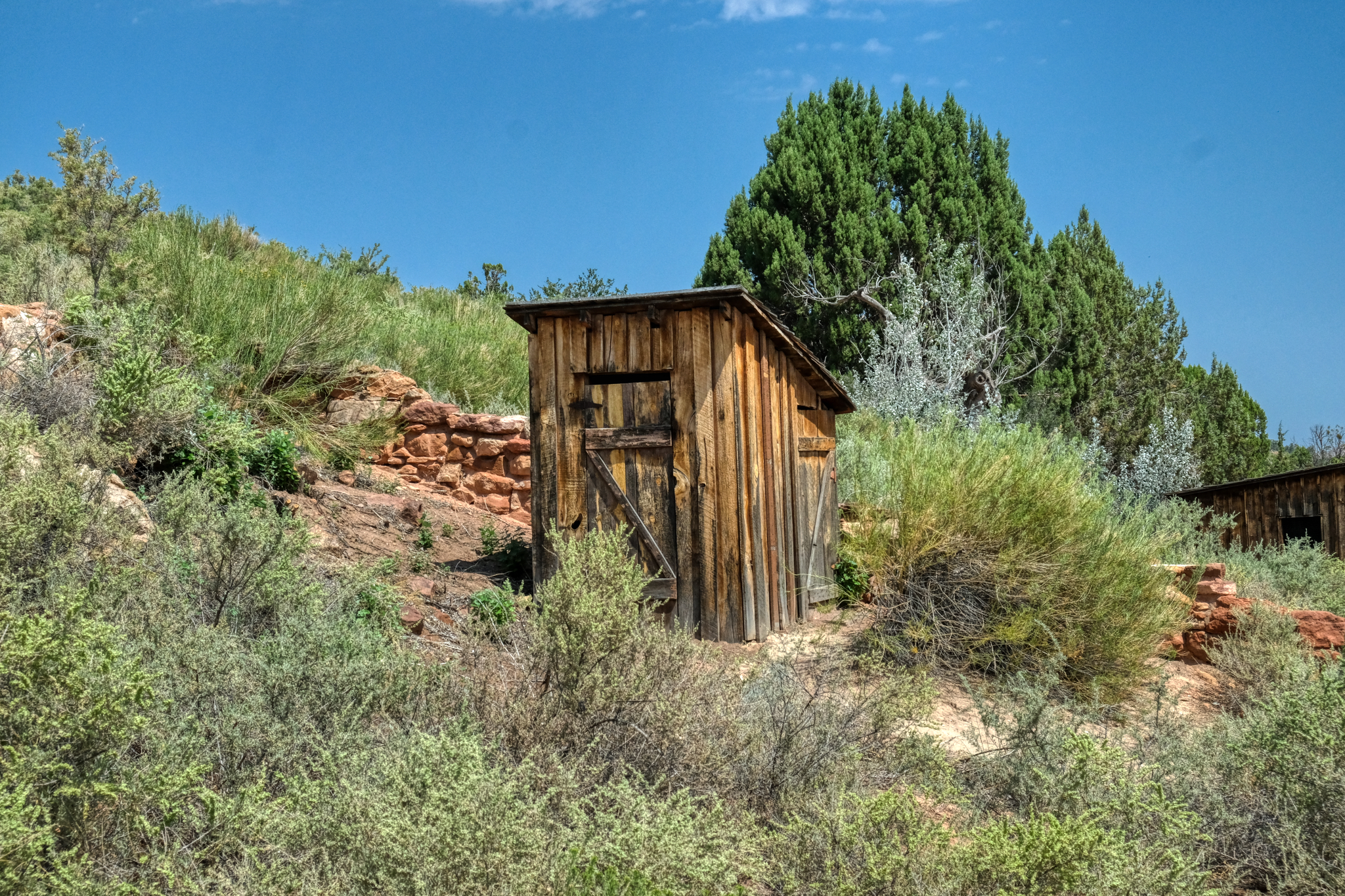 Yep, the outhouse.
Yep, the outhouse.
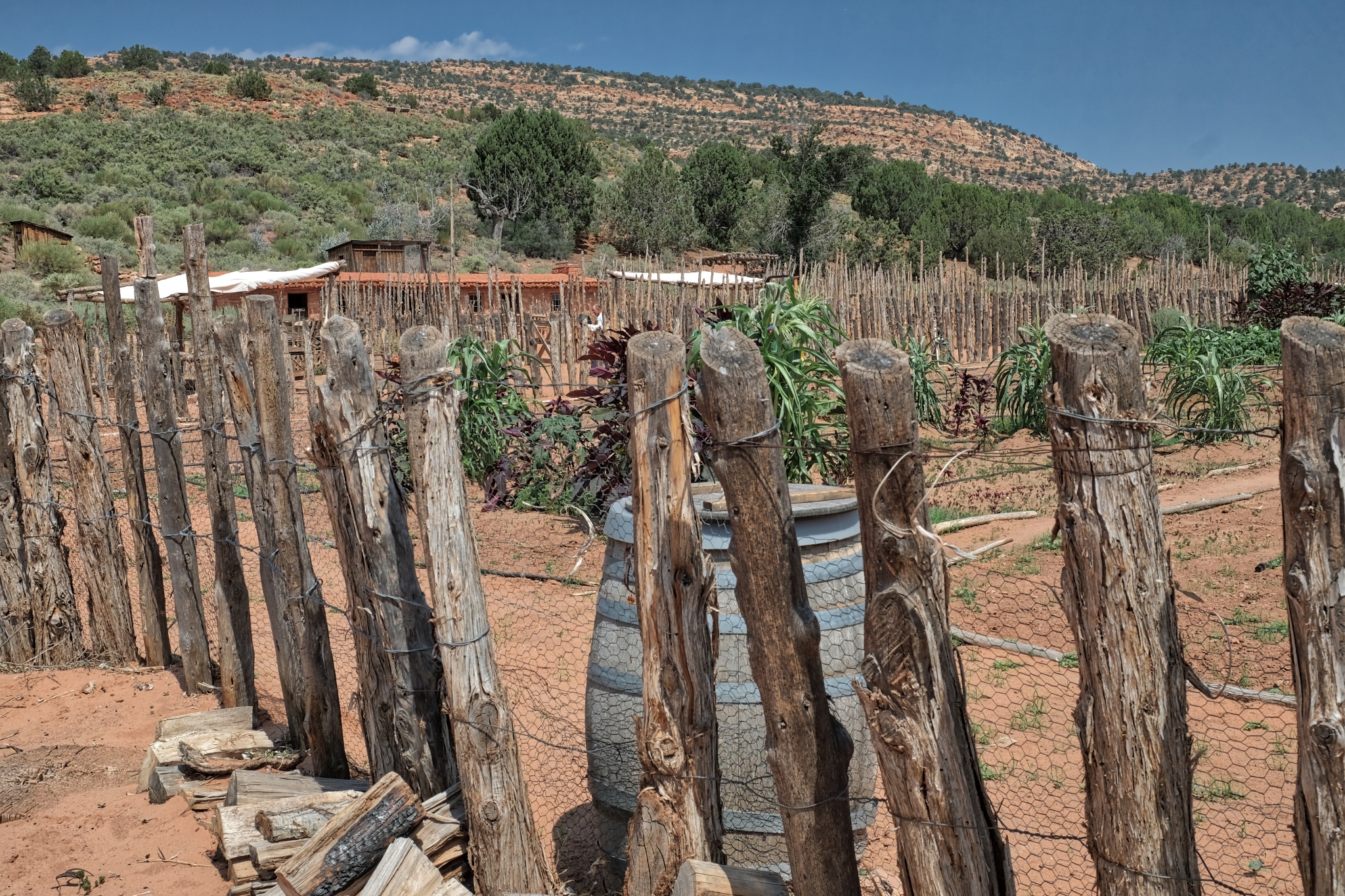 And so we left Pipe Springs to drive on toward the North Rim of the Grand Canyon.
And so we left Pipe Springs to drive on toward the North Rim of the Grand Canyon.
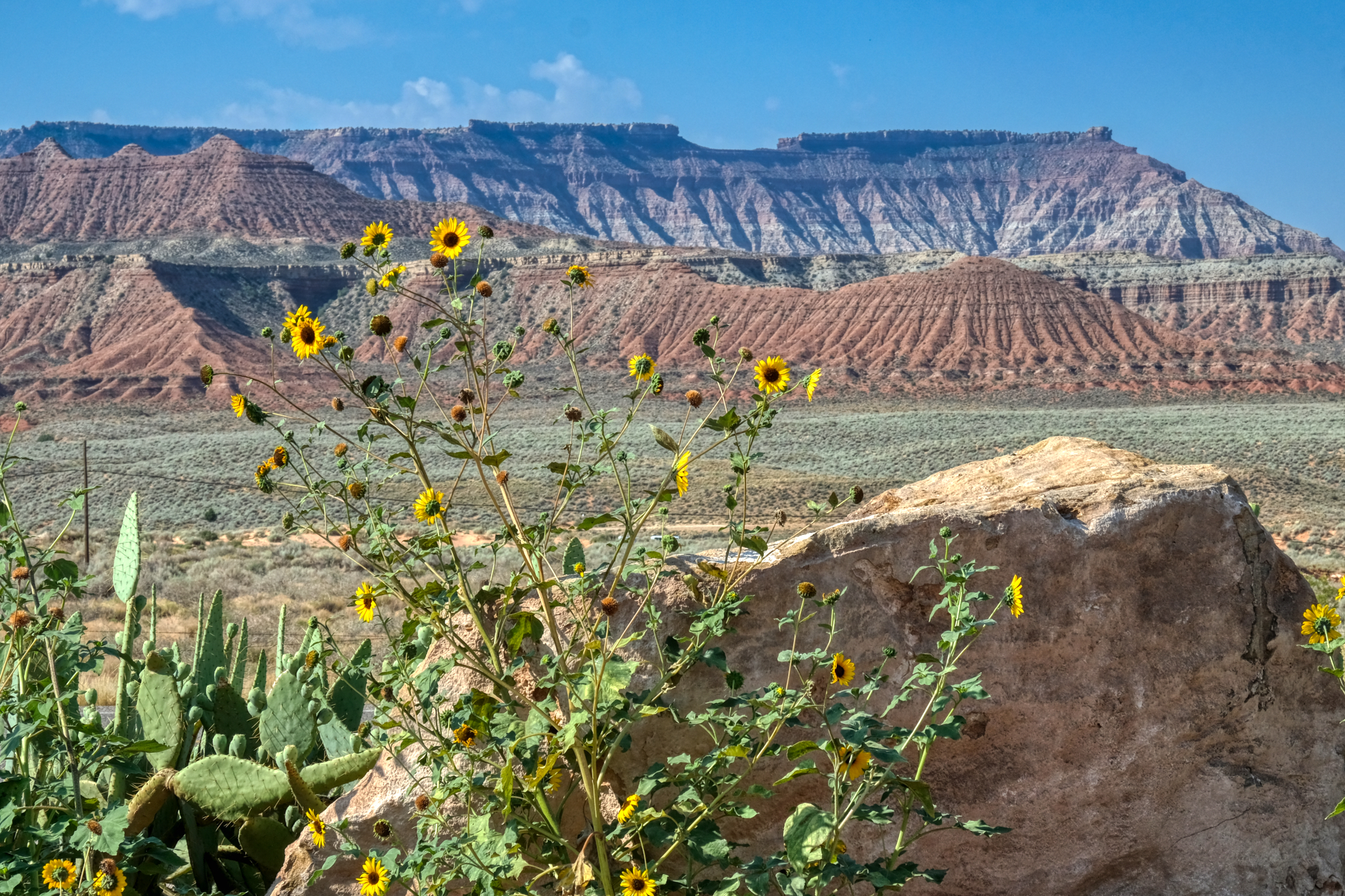 Driving along Arizona Highway 389 trough beautiful mesa country . . .with sunflowers?
Driving along Arizona Highway 389 trough beautiful mesa country . . .with sunflowers?
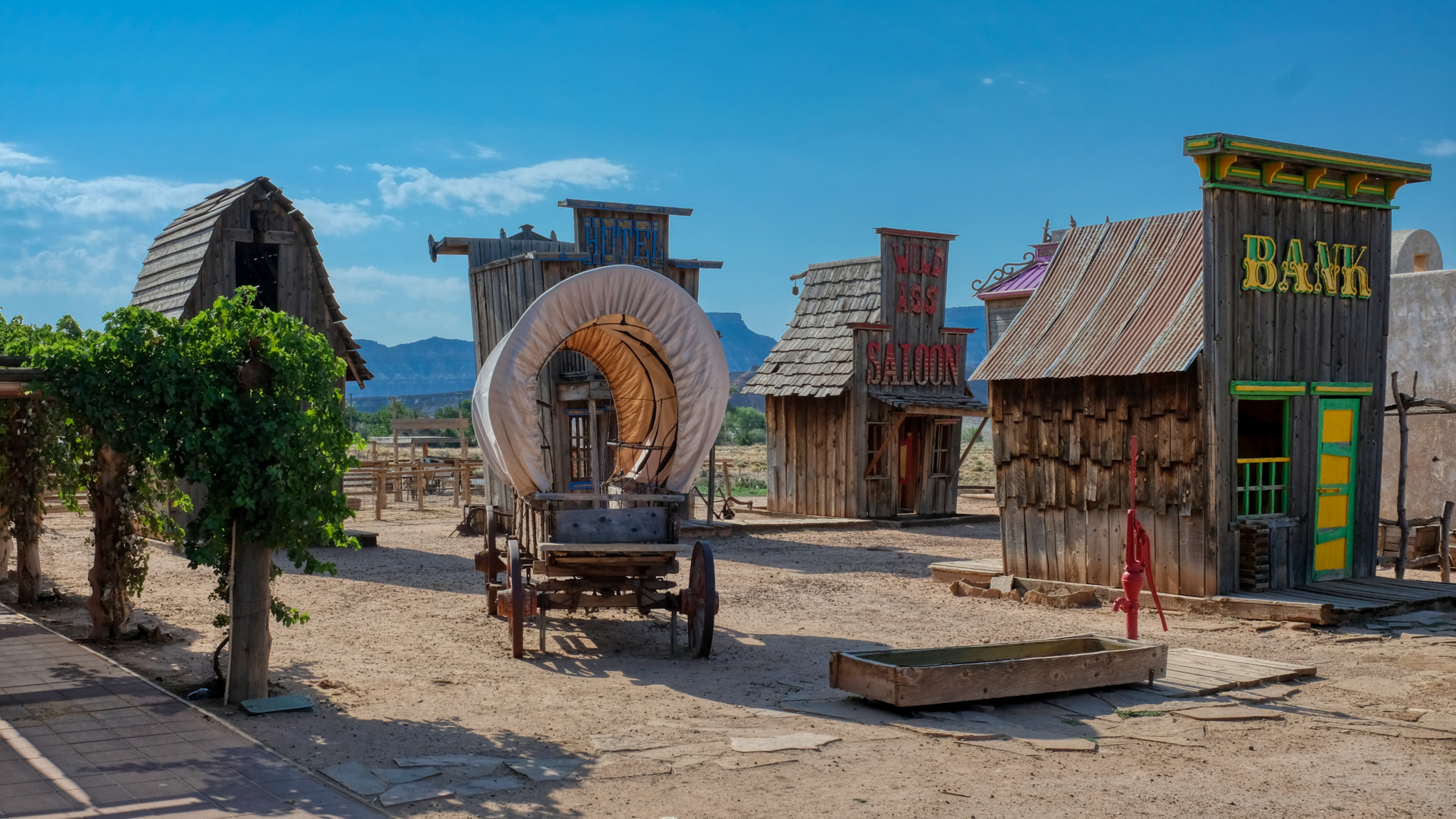 "Just another roadside attraction" . . . a "Wild West Souvenir Store" out along the highway with a cartoonish Wild West Town "Photograph You Family and Friends!" the sign said. I didn't pay the US$5.oo, but instead took photos through the fence . . . duh!
"Just another roadside attraction" . . . a "Wild West Souvenir Store" out along the highway with a cartoonish Wild West Town "Photograph You Family and Friends!" the sign said. I didn't pay the US$5.oo, but instead took photos through the fence . . . duh!
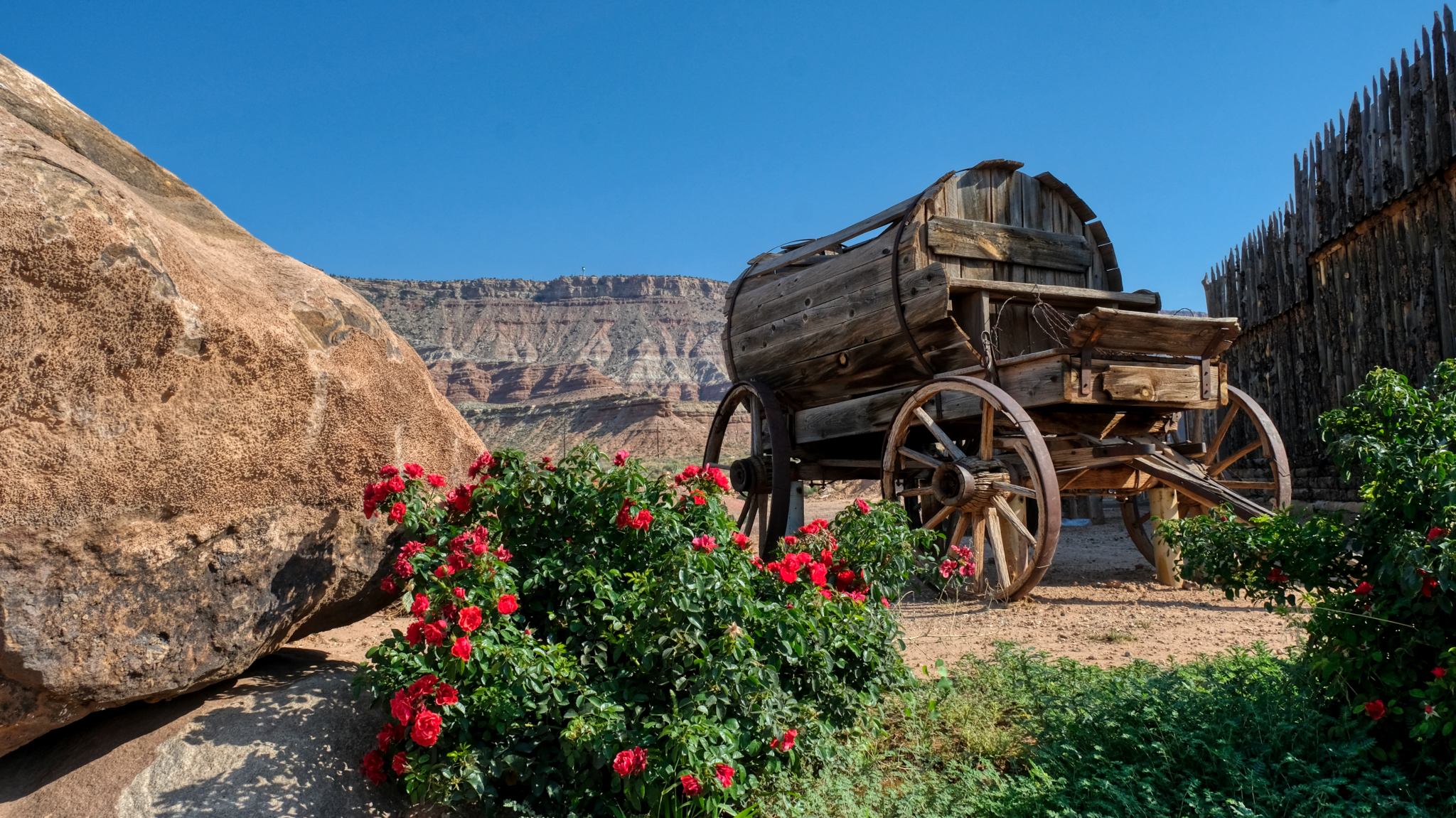 There was a magnificent antique water wagon out back of the store . . . a reminder of the realities of trying to survive in such a dry climate a century-and-a-half ago.
There was a magnificent antique water wagon out back of the store . . . a reminder of the realities of trying to survive in such a dry climate a century-and-a-half ago.
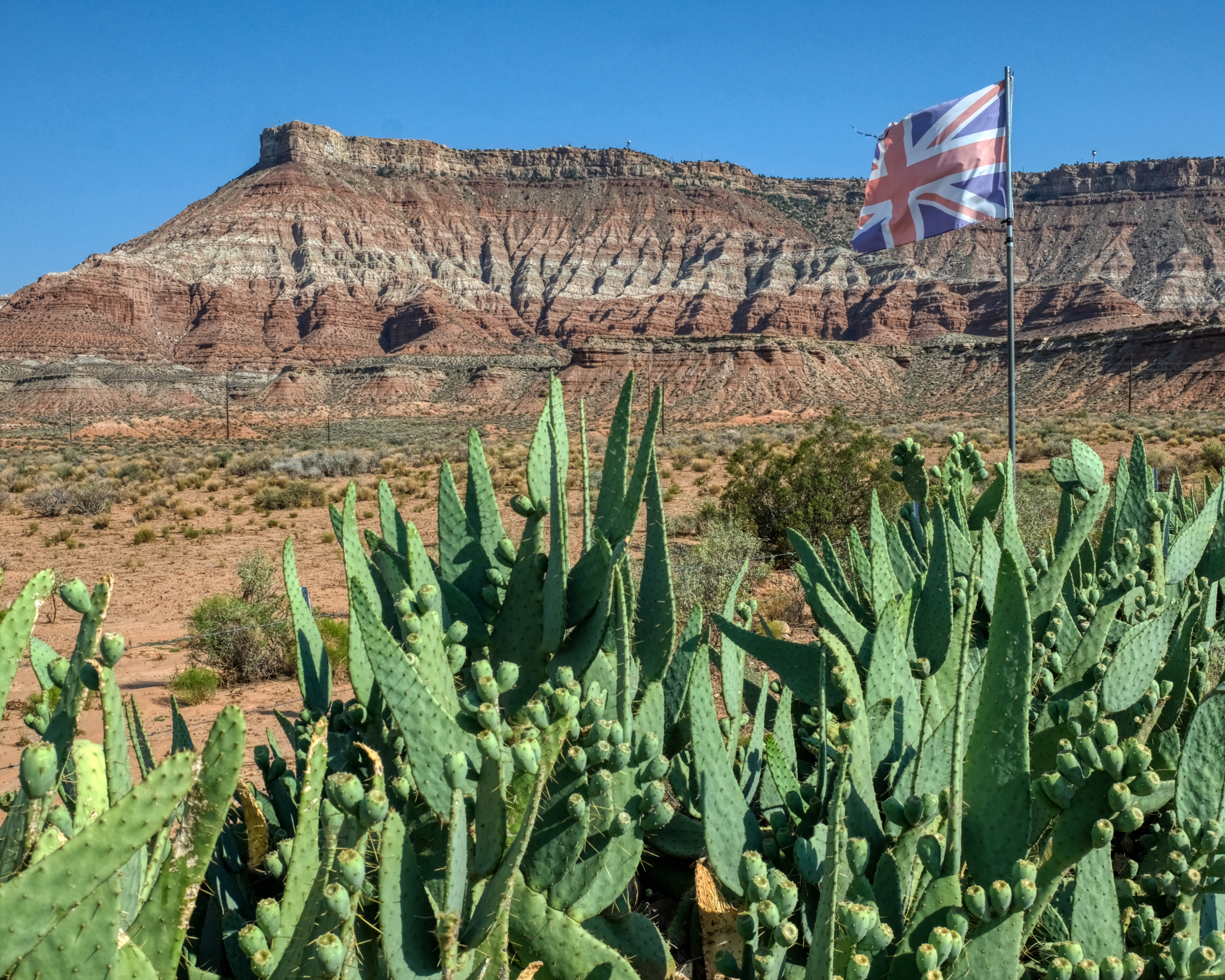 The Western Store was trying to lure tourists from the UK apparently.
The Western Store was trying to lure tourists from the UK apparently.
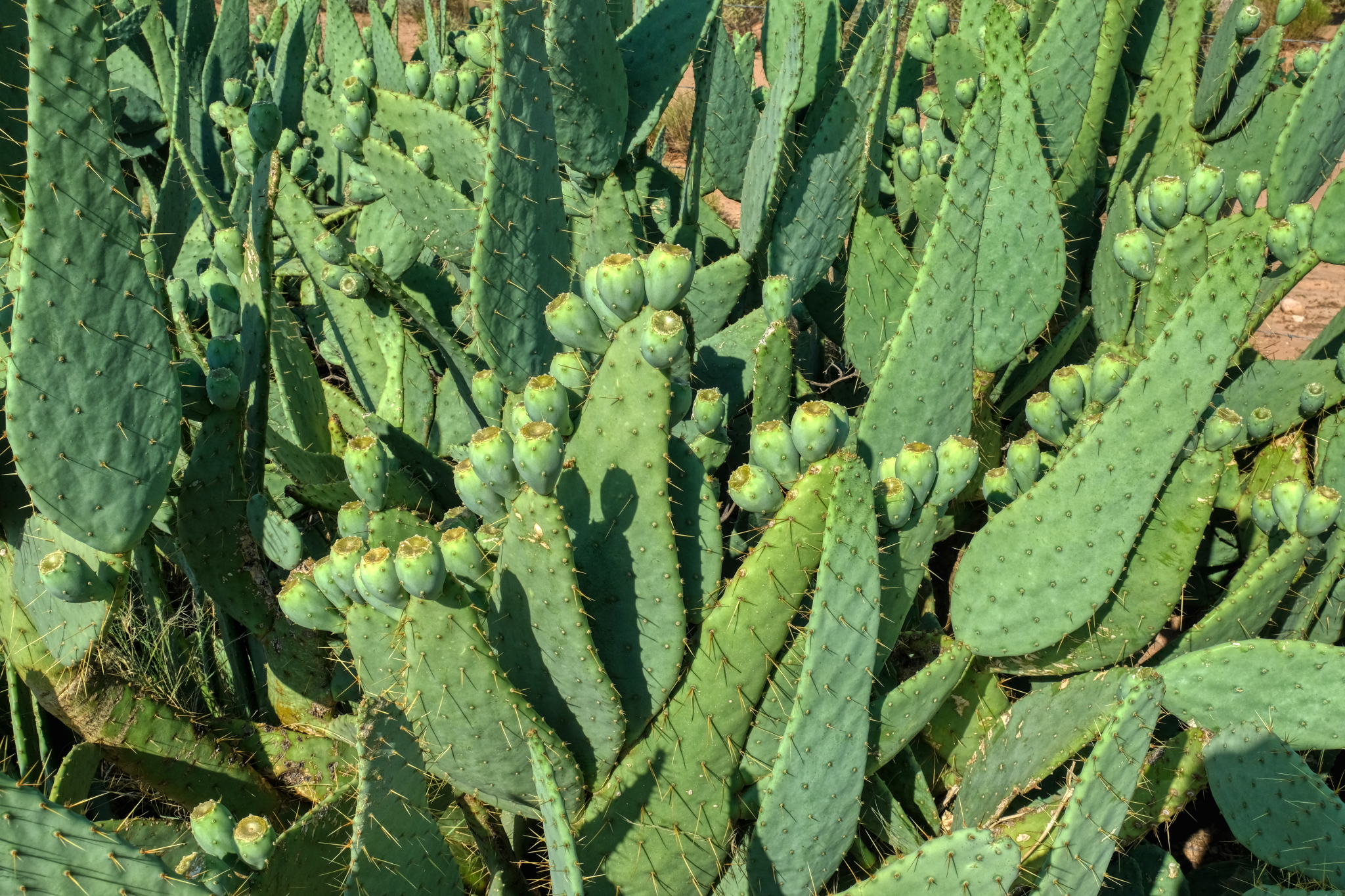 There was a fantastic clump of prickly pear cactus next to their fence.
There was a fantastic clump of prickly pear cactus next to their fence.
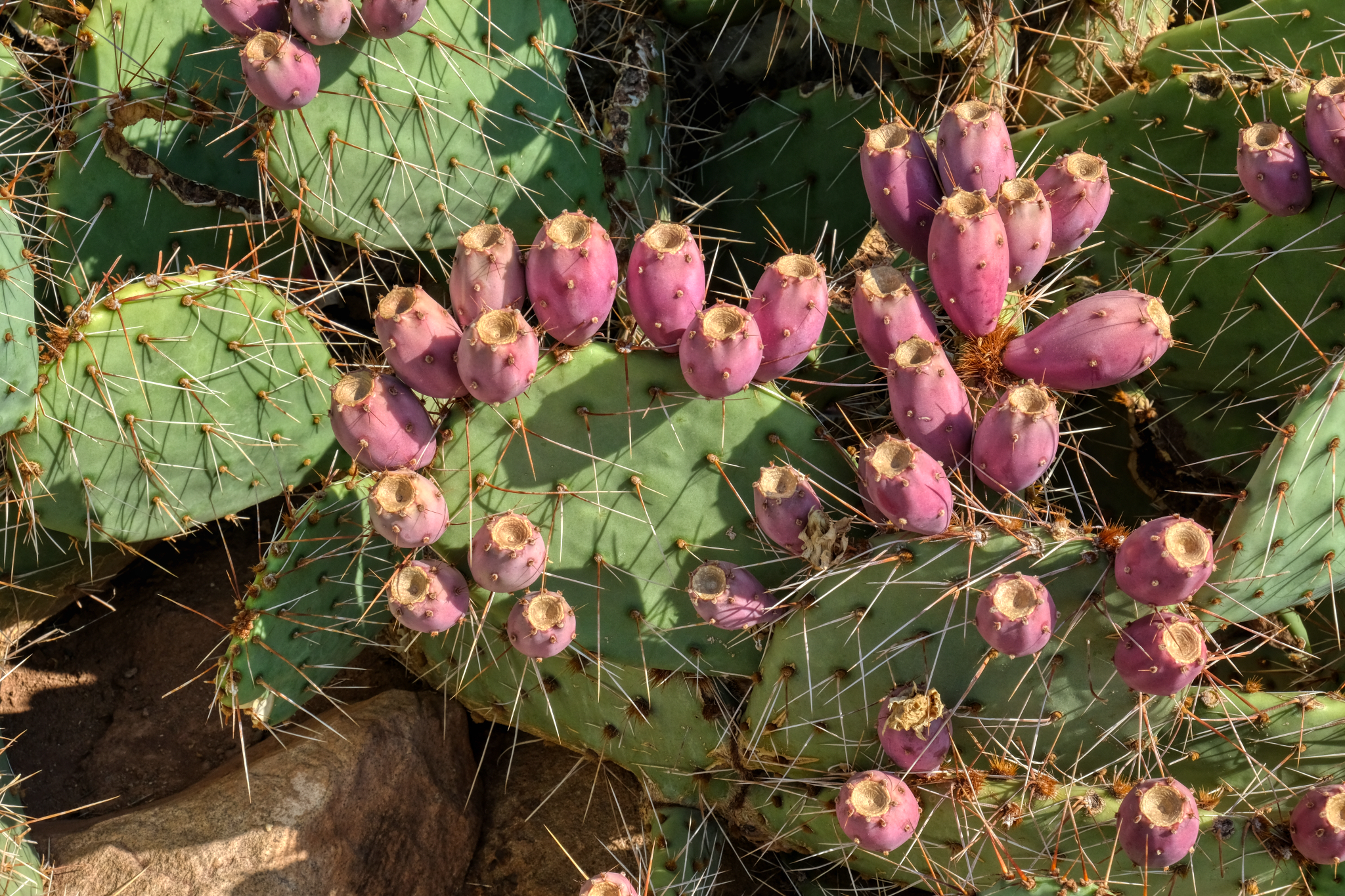 "The fruit of prickly pears (Opunita), commonly called cactus fruit, cactus fig, Indian fig, nopales or tuna in Spanish, is edible, although it must be peeled carefully to remove the small spines on the outer skin before consumption. If the outer layer is not properly removed, glochids can be ingested, causing discomfort of the throat, lips, and tongue, as the small spines are easily lodged in the skin. Native Americans like the Tequesta would roll the fruit around in a suitable medium (e.g. grit) to "sand" off the glochids. Alternatively, rotating the fruit in the flame of a campfire or torch has been used to remove the glochids. Today, parthenocarpic (seedless) cultivars are also available. The seeds can be used for flour." ****
"The fruit of prickly pears (Opunita), commonly called cactus fruit, cactus fig, Indian fig, nopales or tuna in Spanish, is edible, although it must be peeled carefully to remove the small spines on the outer skin before consumption. If the outer layer is not properly removed, glochids can be ingested, causing discomfort of the throat, lips, and tongue, as the small spines are easily lodged in the skin. Native Americans like the Tequesta would roll the fruit around in a suitable medium (e.g. grit) to "sand" off the glochids. Alternatively, rotating the fruit in the flame of a campfire or torch has been used to remove the glochids. Today, parthenocarpic (seedless) cultivars are also available. The seeds can be used for flour." ****
_____________________________________________
COVE FORT, UTAH
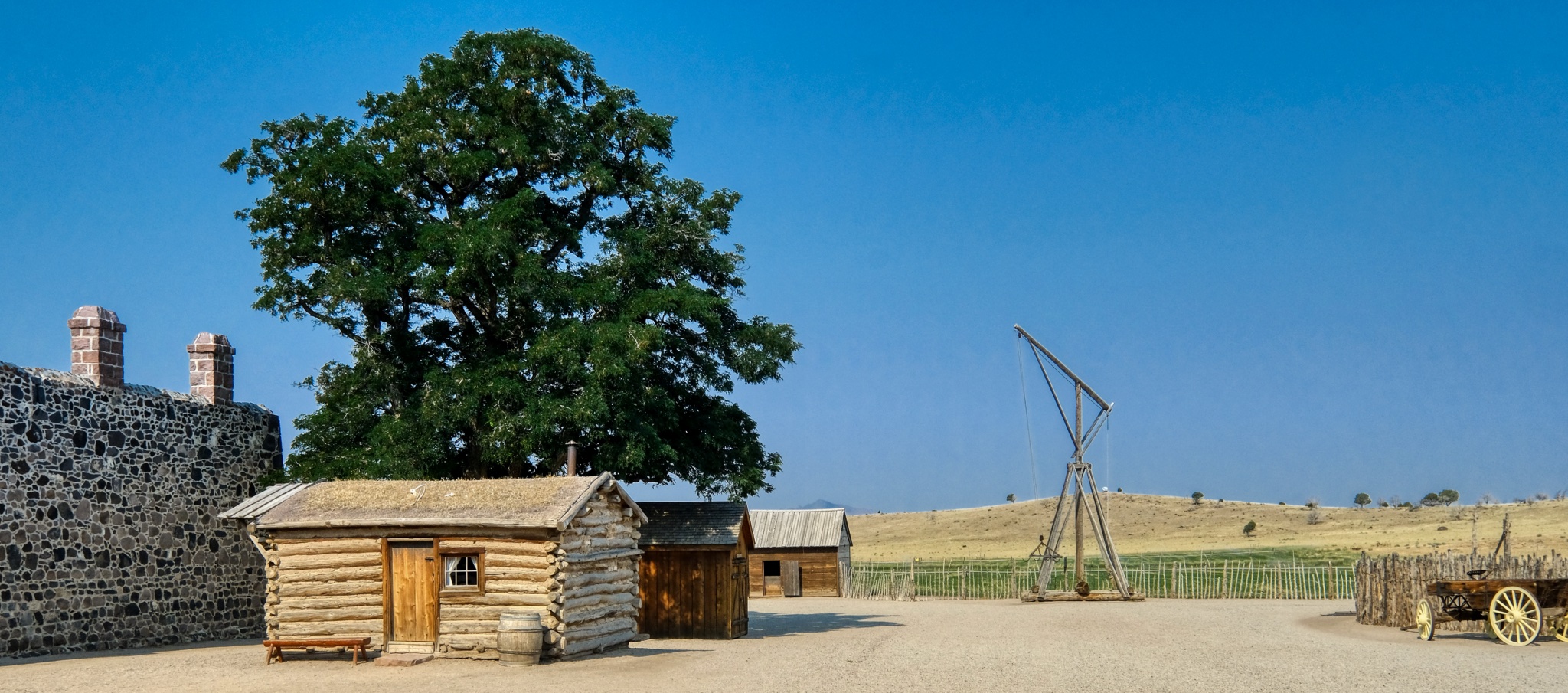 One of the joys of a road trip in the USA are the highway signs announcing "Historic Site Next Right Exit. Fort Cove". So, you take the next right off of I-15.
One of the joys of a road trip in the USA are the highway signs announcing "Historic Site Next Right Exit. Fort Cove". So, you take the next right off of I-15.
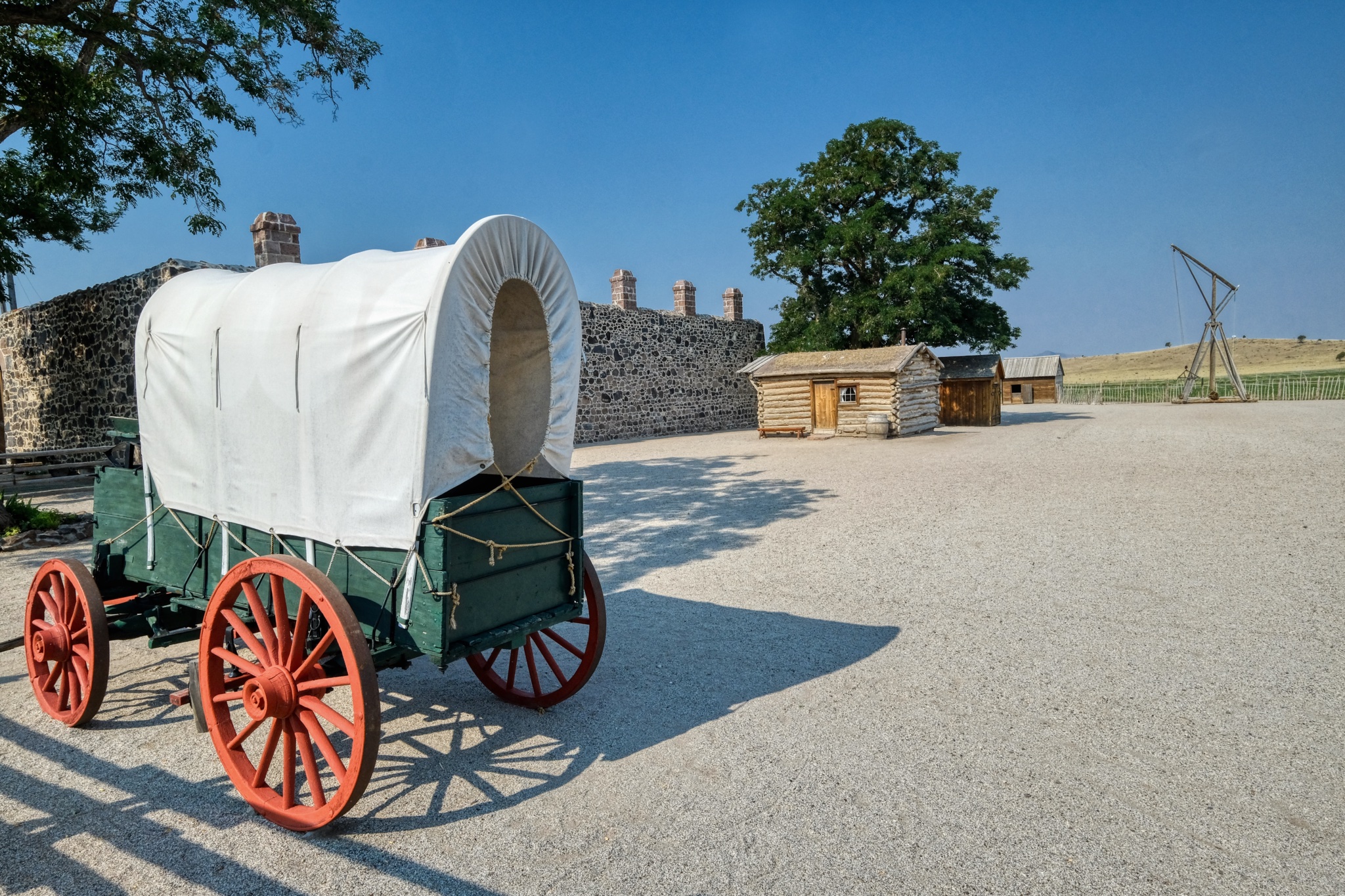
"Cove Fort is a fort, unincorporated community, and historical site located in Millard County, Utah. It was founded in 1867 at the request of Brigham Young. One of its distinctive features is the use of volcanic rock in the construction of the walls, rather than the wood used in many mid-19th-century western forts. This difference in construction is the reason it is one of very few forts of this period still surviving." ***
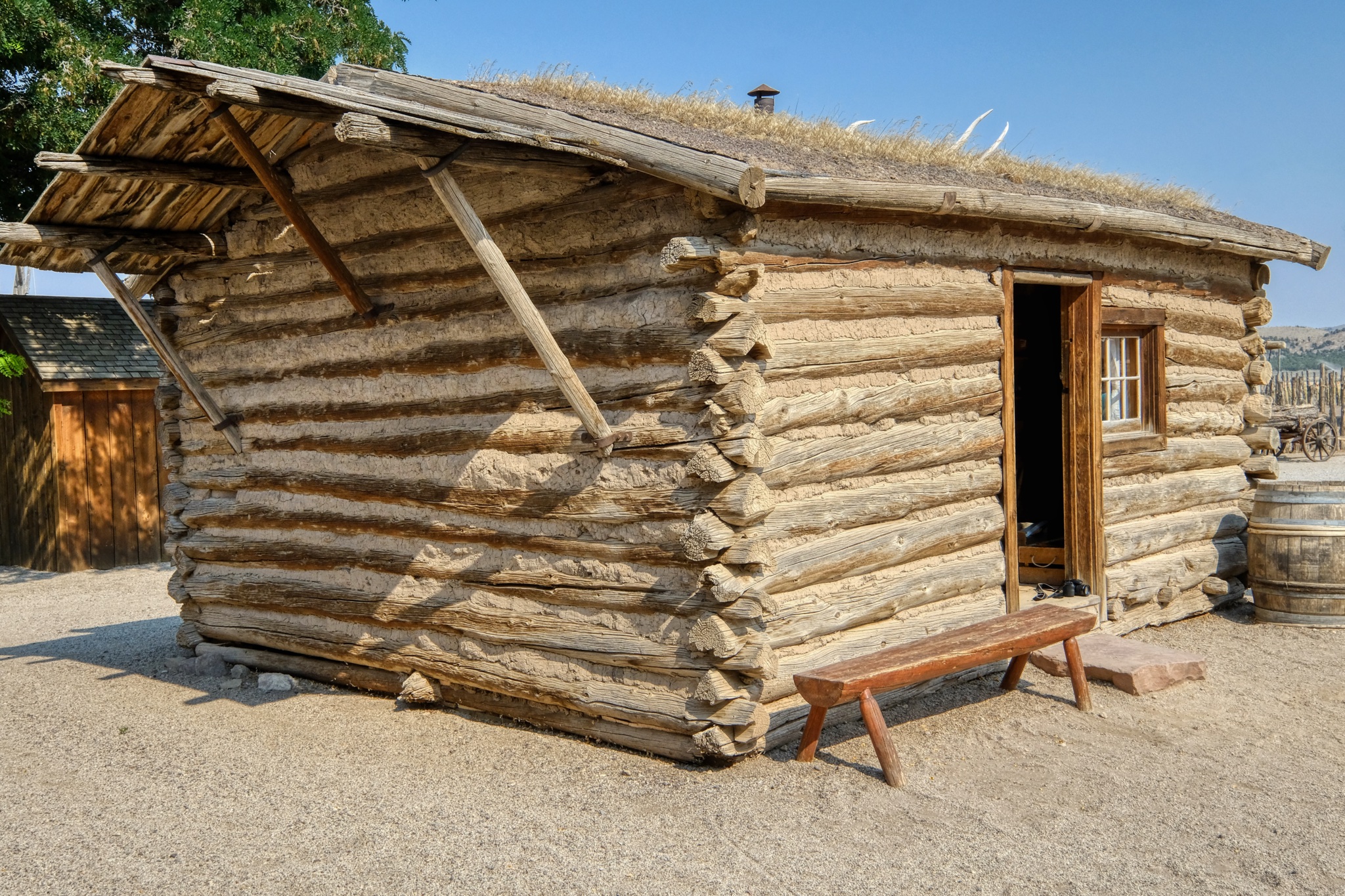 A very nice recreation of an early pioneer cabin.
A very nice recreation of an early pioneer cabin.
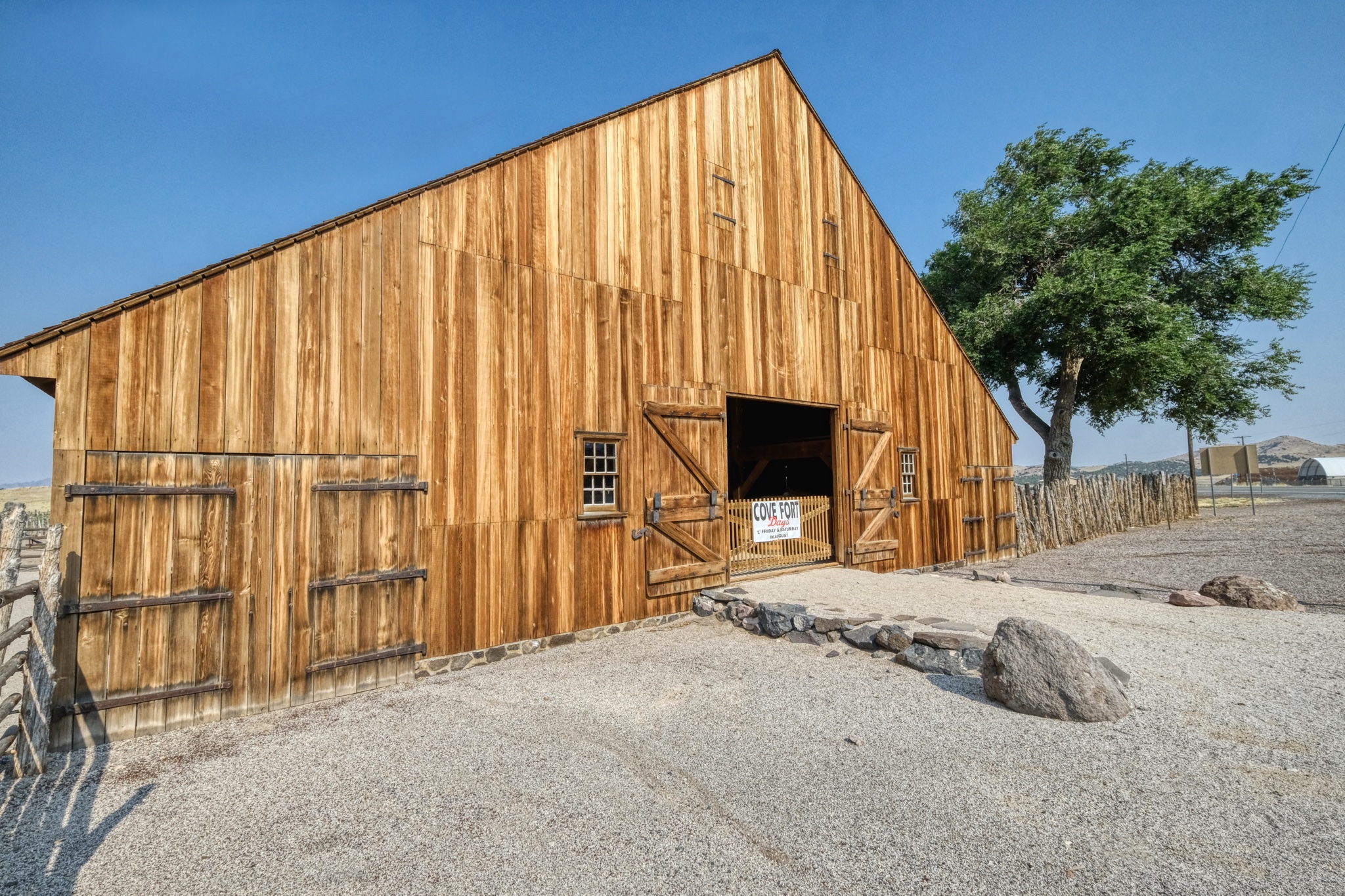 There was a fine reproduction barn, nearly new.
There was a fine reproduction barn, nearly new.
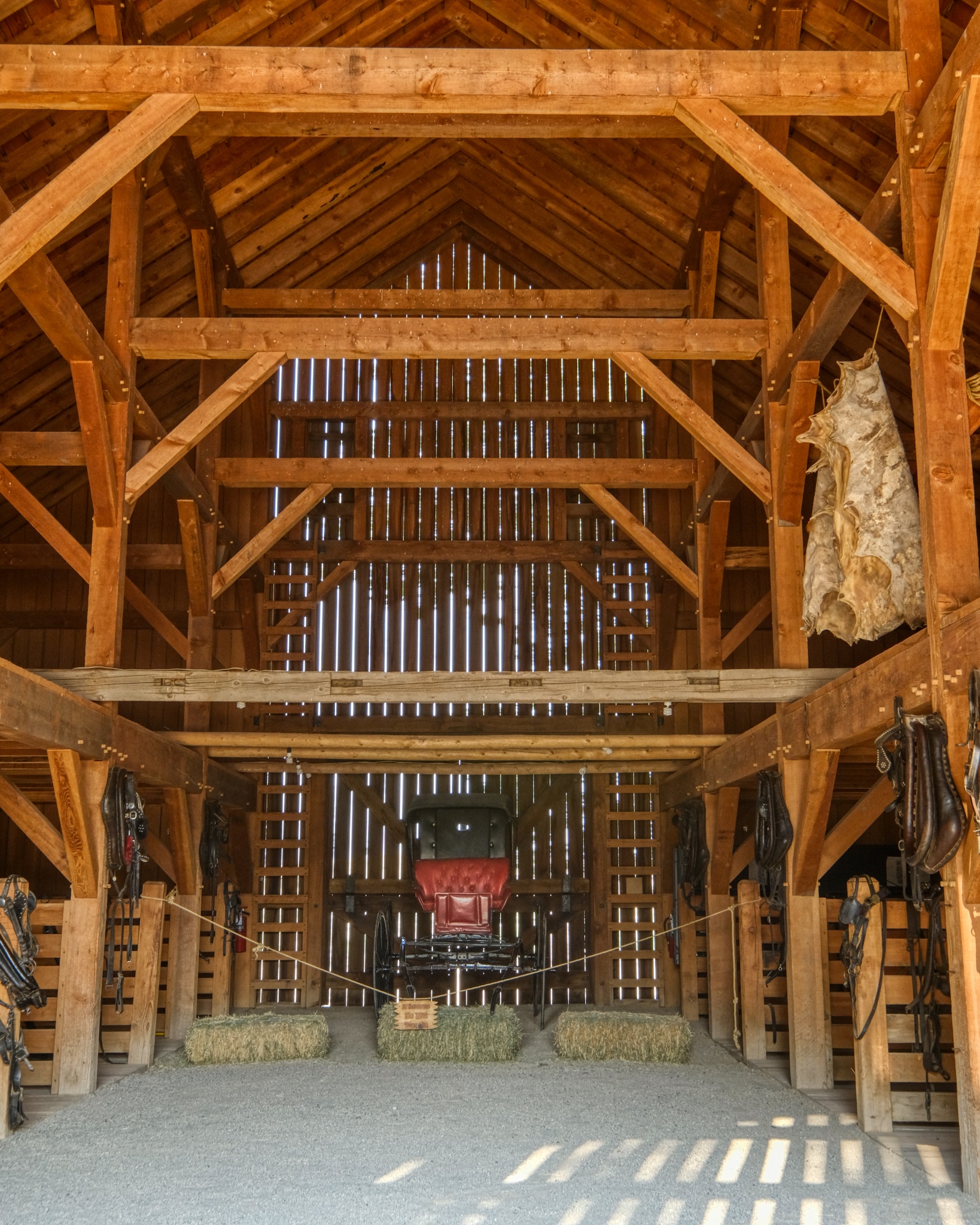 The interior of the big barn had displays of period items, well, related to barns.
The interior of the big barn had displays of period items, well, related to barns.
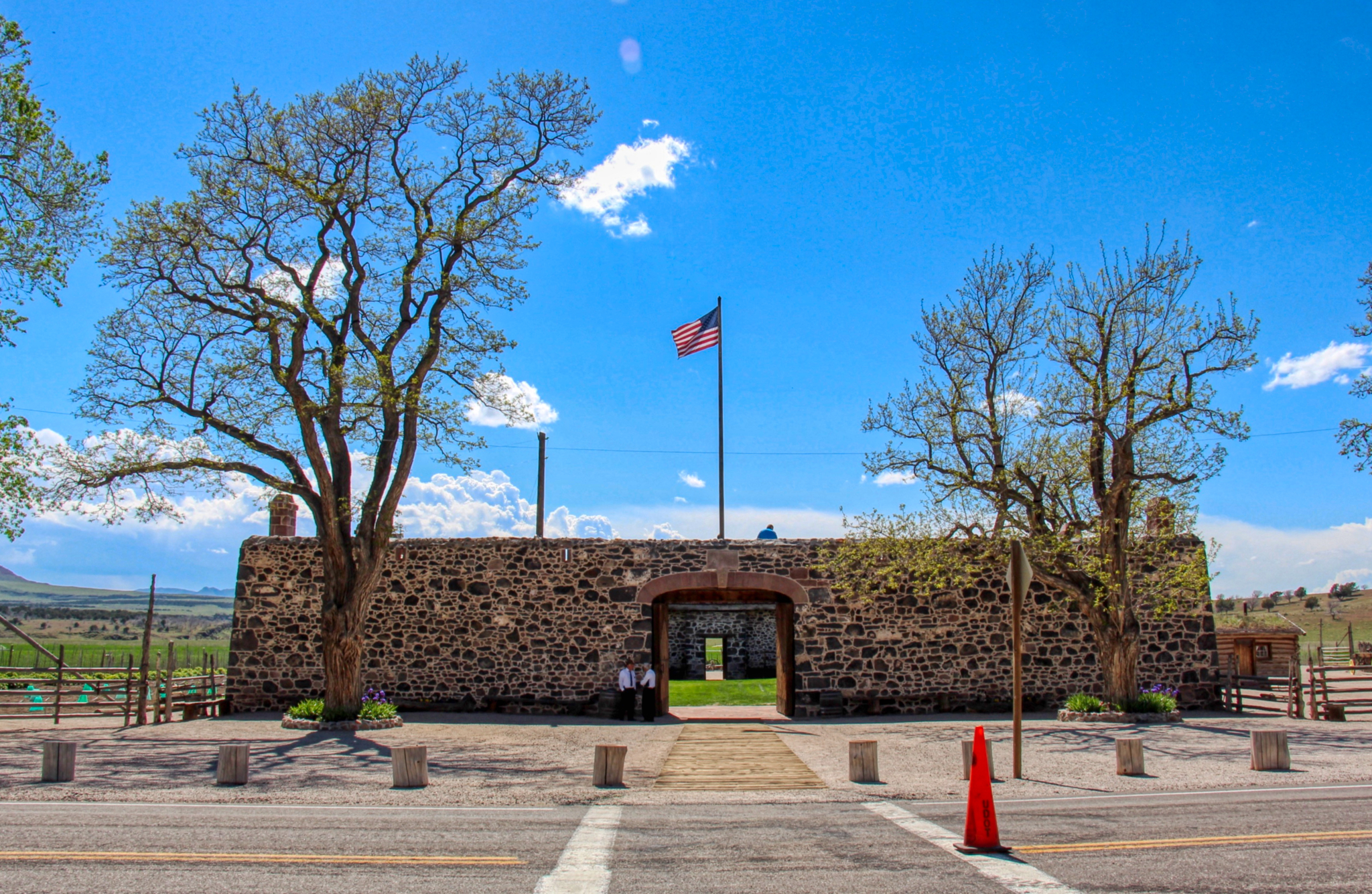 Fort Cove, Utah (Photo from Wikipedia)
Fort Cove, Utah (Photo from Wikipedia)
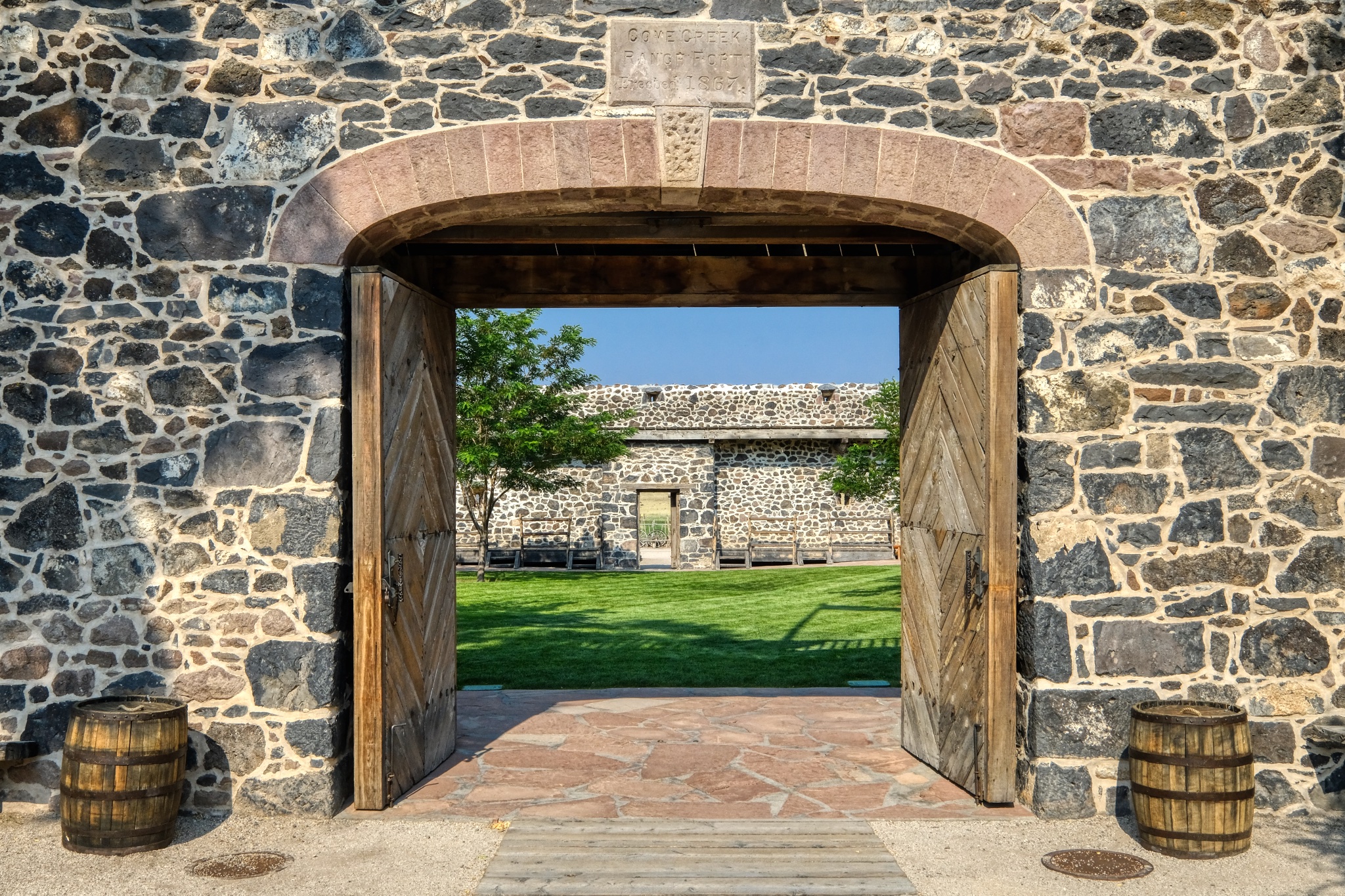 The 1867 Fort Cove gate.
The 1867 Fort Cove gate.
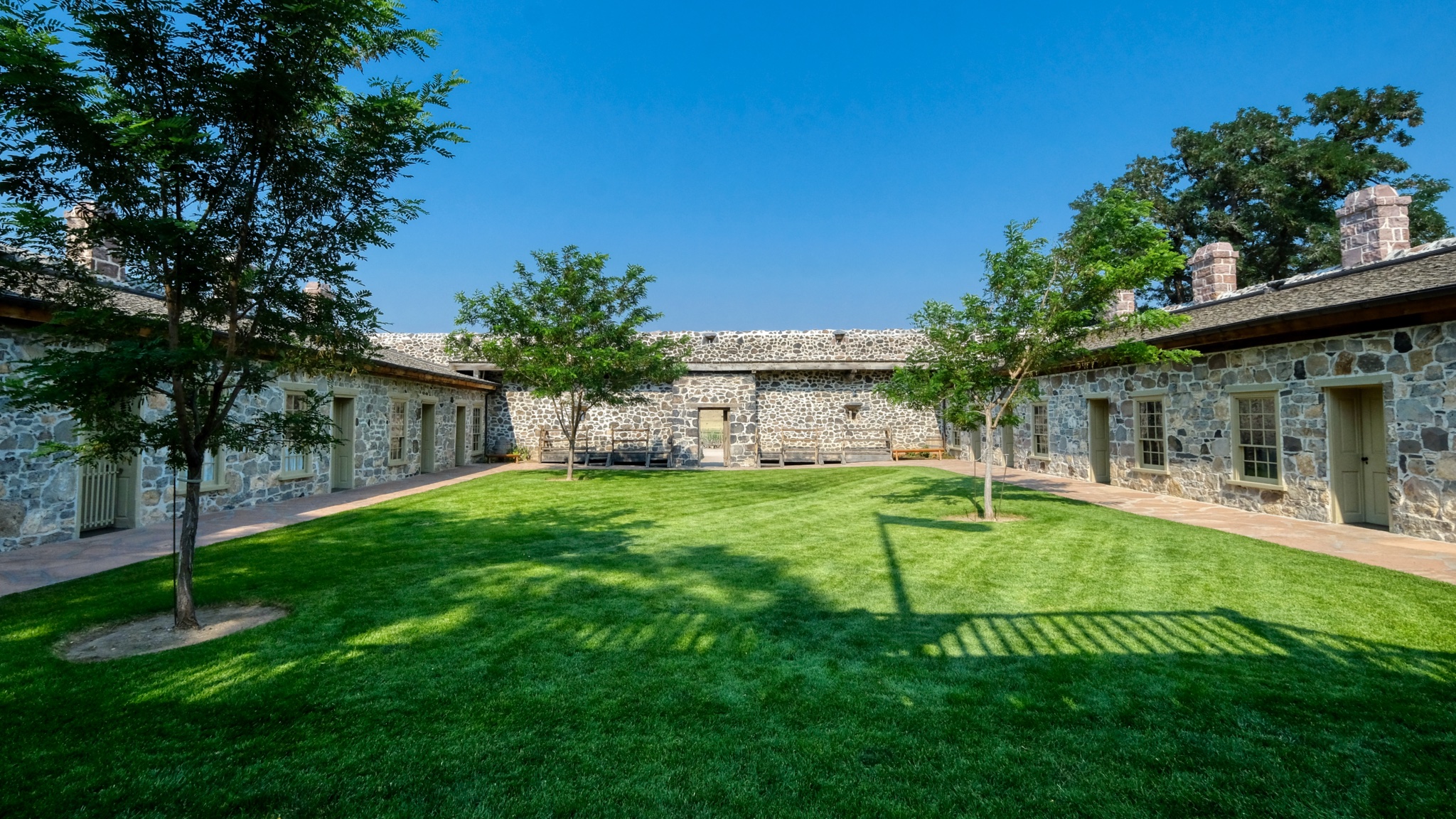 I was surprised by the verdant green, lush lawn in the fort's inner courtyard. Imagine how wonderful this would have been to the soldiers posted here and the passing visitors in their covered wagons!
I was surprised by the verdant green, lush lawn in the fort's inner courtyard. Imagine how wonderful this would have been to the soldiers posted here and the passing visitors in their covered wagons!
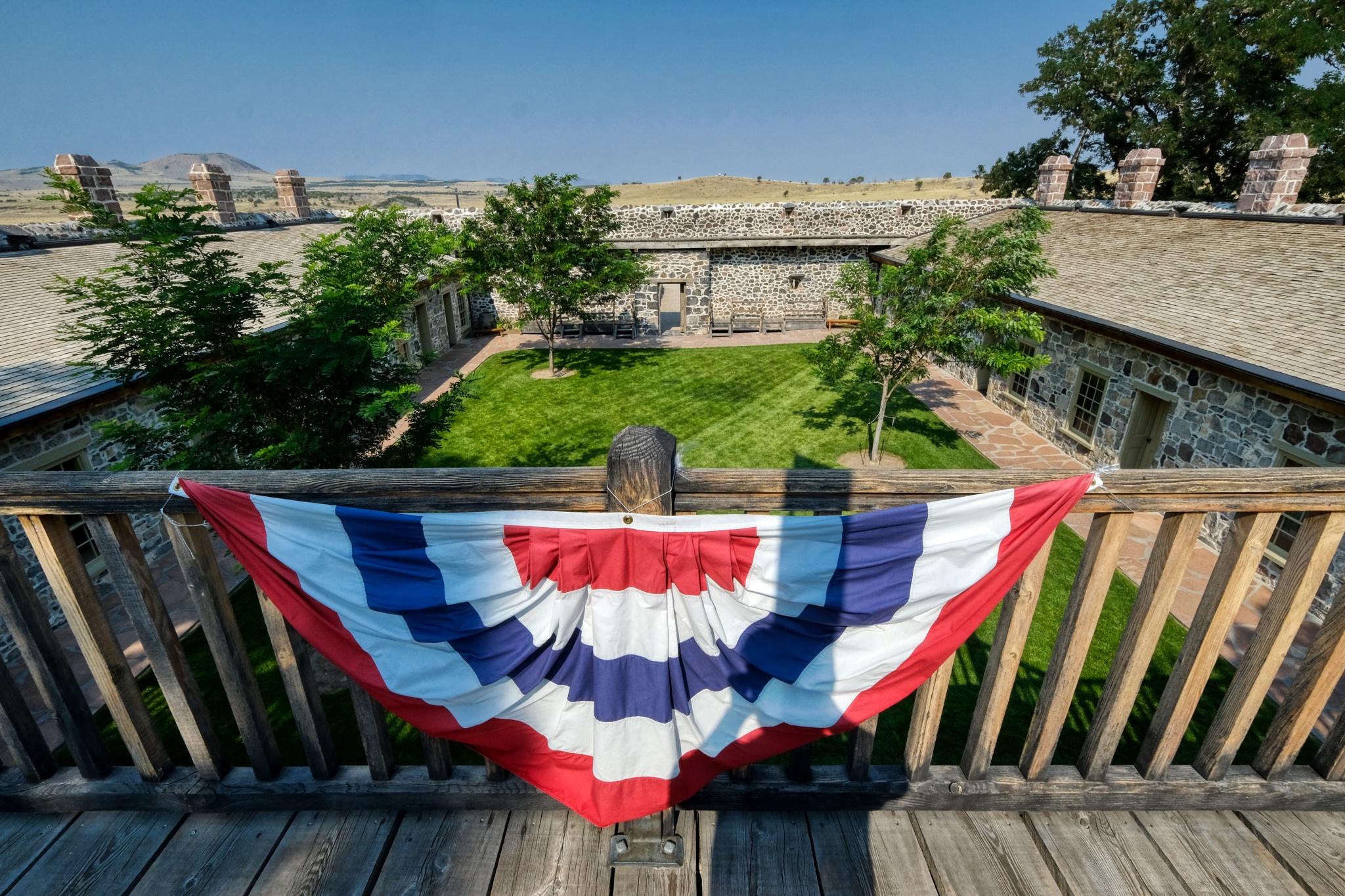 We went up the stairs to the roof of the fort for the view.
We went up the stairs to the roof of the fort for the view.
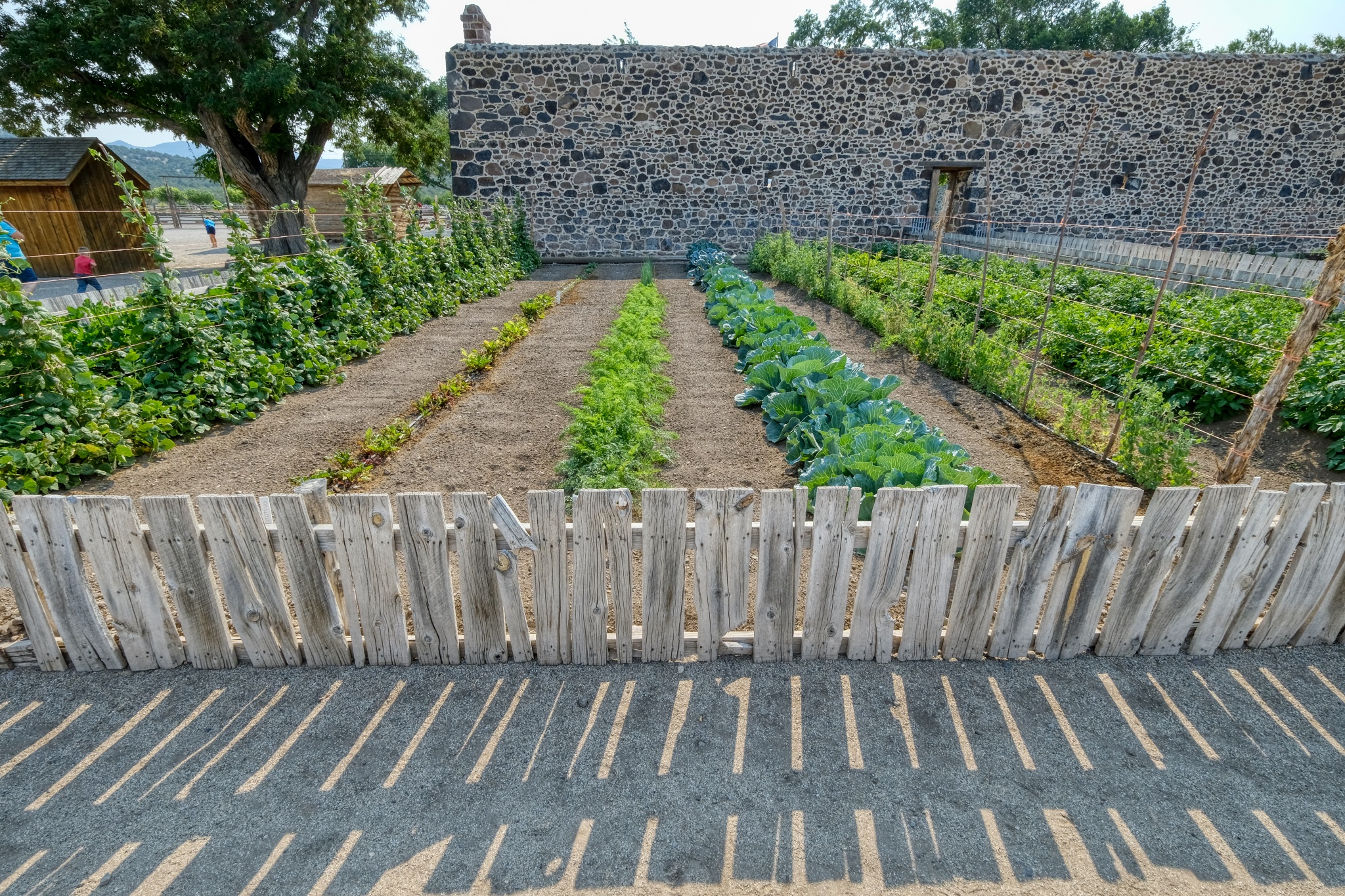 Behind the fort was the vegetable garden.
Behind the fort was the vegetable garden.
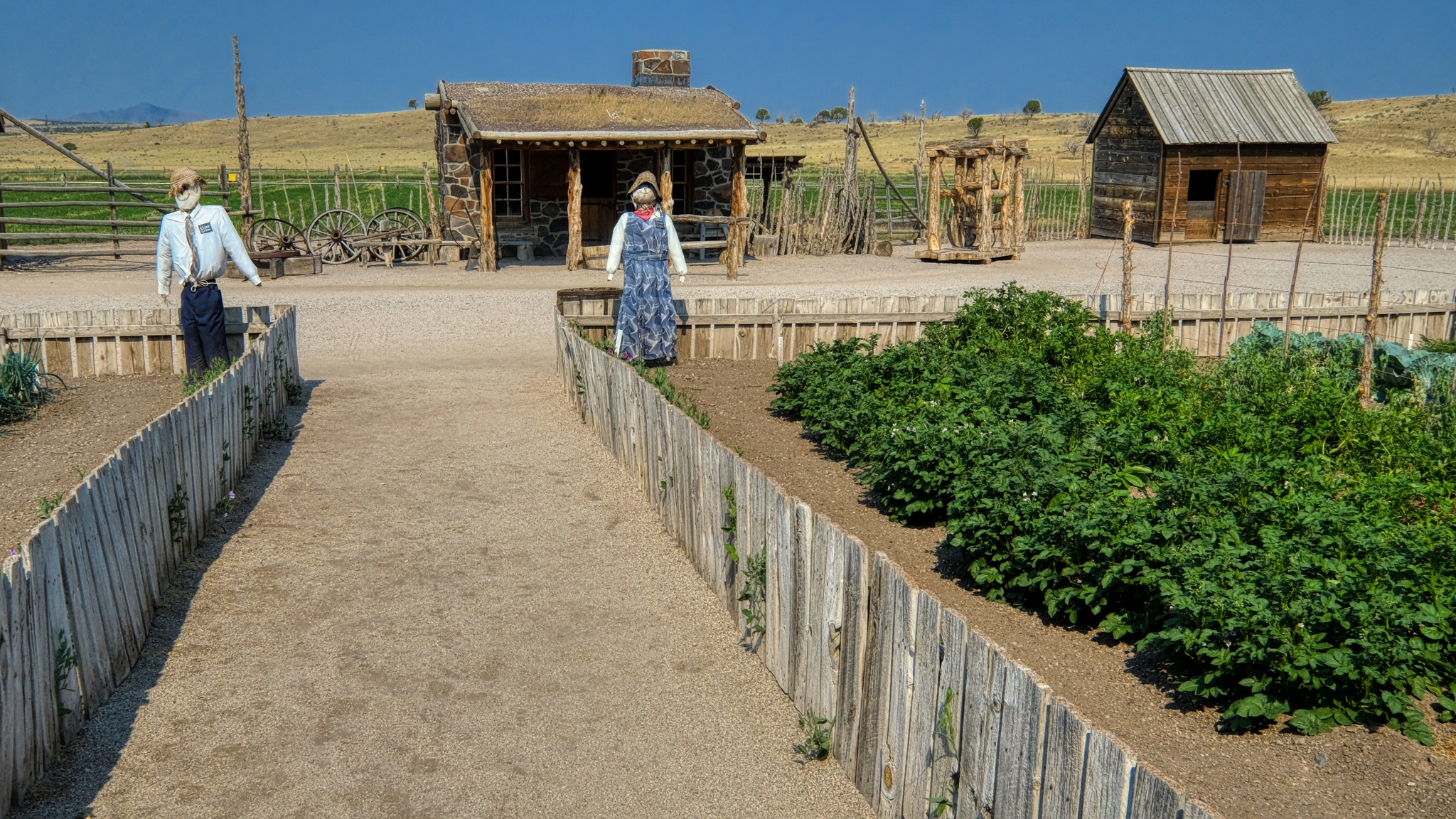 The garden path leading to displays of various Mormon settler shacks, sheds, and cabins that were trucked to the site and restored.
The garden path leading to displays of various Mormon settler shacks, sheds, and cabins that were trucked to the site and restored.
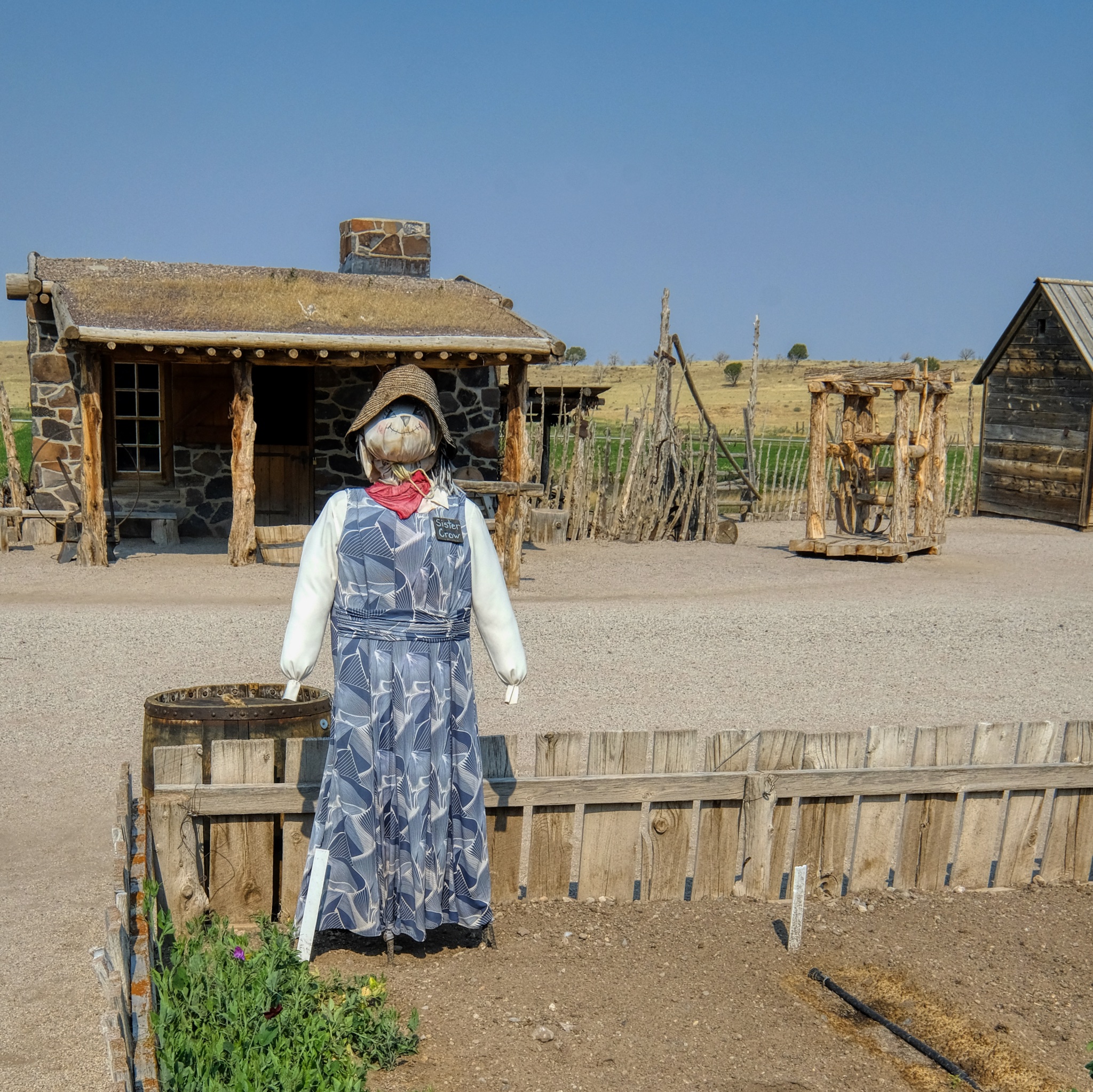 A superb scarecrow!
A superb scarecrow!
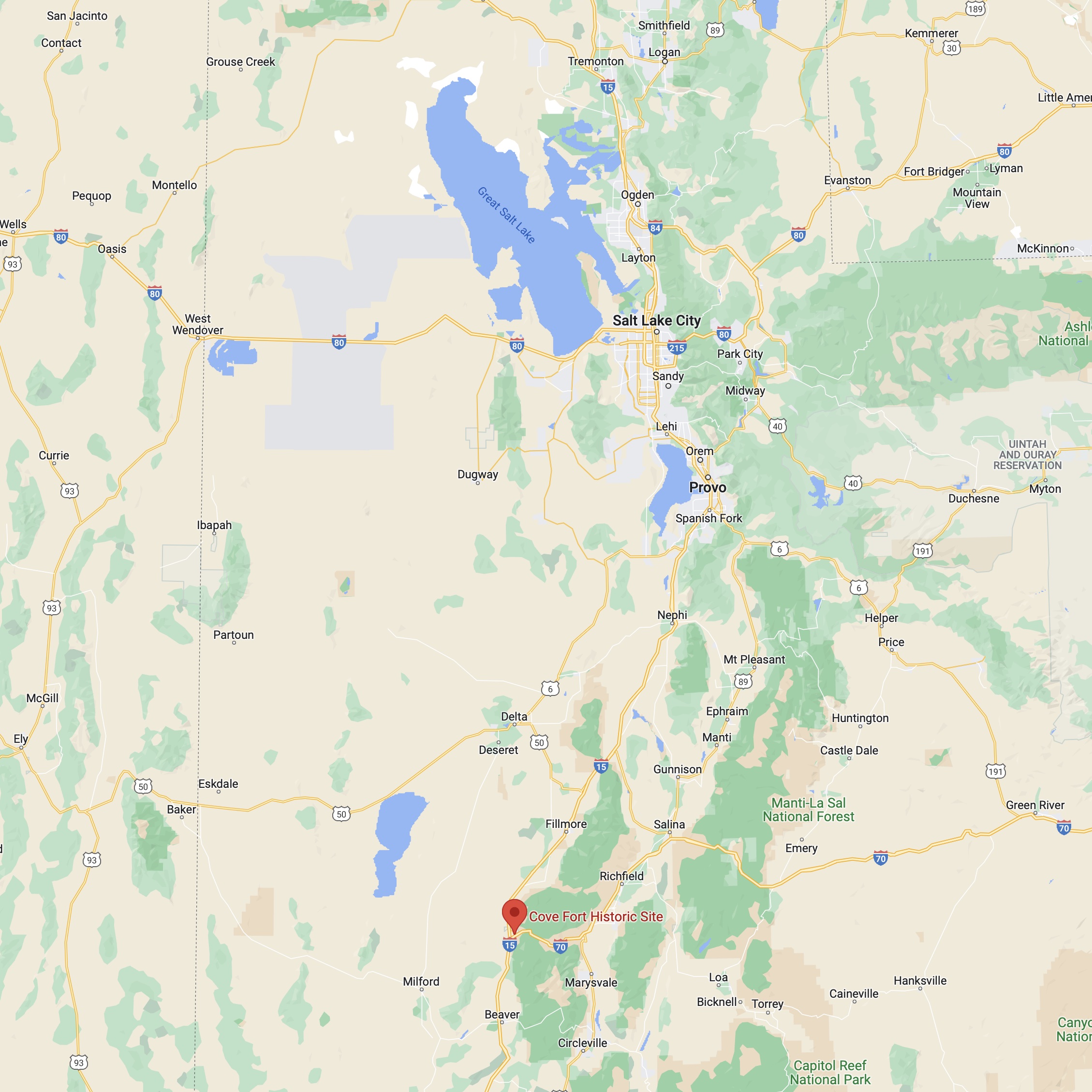
Then back out on the highway I-15 north . . . and an Allison Krauss and Willy Nelson concert in Bend, Oregon!!!
Pandemic Silver Linings: Two Week-End Trips in Khao Yai
 Sunday, March 21, 2021 at 11:16AM
Sunday, March 21, 2021 at 11:16AM The first Khao Yai week-end . . . . small roads and beautiful temples.
 As my university has called off live, in-person instruction, I have been making my lessons at home and posting them online. This has had the hidden benefit of allowing me to physically be wherever I want to be, as long as I have a computer and a good internet connection. So twice in the last month my wonderful wife and I have gone up to the mountains of Khao Yai, 2 1/2 hours northeast of Bangkok.
As my university has called off live, in-person instruction, I have been making my lessons at home and posting them online. This has had the hidden benefit of allowing me to physically be wherever I want to be, as long as I have a computer and a good internet connection. So twice in the last month my wonderful wife and I have gone up to the mountains of Khao Yai, 2 1/2 hours northeast of Bangkok.
 We visited friends at Toscana Valley in Khao Yai.
We visited friends at Toscana Valley in Khao Yai.
 Khao Yai is a region at the western end of Sankamphaeng Mountain Range and is a heavily wooded area with a fair amount of natural environment still with wild animals, such as elephant and tigers, in the Khao Yai National Park.
Khao Yai is a region at the western end of Sankamphaeng Mountain Range and is a heavily wooded area with a fair amount of natural environment still with wild animals, such as elephant and tigers, in the Khao Yai National Park.
 Although Khao Yai is known for the National Park, much of the region is developed for weekenders from Bangkok to escape the city hear (especially in the 'cool season'). There are many, many small resorts and tourist activities sprinkled around the beautiful countryside . . . as well as an interesting assortment of Buddhist Wats.
Although Khao Yai is known for the National Park, much of the region is developed for weekenders from Bangkok to escape the city hear (especially in the 'cool season'). There are many, many small resorts and tourist activities sprinkled around the beautiful countryside . . . as well as an interesting assortment of Buddhist Wats.
 So, while my wife played golf at the beautiful courses in the area, I explored the small roads to see what I could see. . . .
So, while my wife played golf at the beautiful courses in the area, I explored the small roads to see what I could see. . . .
 I had fun following 'points of interest' signs . . . and seeing if I could get to the hilltop temples I could see here and there in the landscape.
I had fun following 'points of interest' signs . . . and seeing if I could get to the hilltop temples I could see here and there in the landscape.
 Wat Sanaamsai is a giant white Buddha statue on top of a hill. To get there you have to climb up hundreds of stairs.
Wat Sanaamsai is a giant white Buddha statue on top of a hill. To get there you have to climb up hundreds of stairs.
 Hundreds of stairs and hundreds of bells to be rung.
Hundreds of stairs and hundreds of bells to be rung.
 I am often amused by the cartoonish monks who adorn Buddhist shrines and altars in Thailand. I decided to light some incense and candles before I embarked on the hundreds of steps. Fortunately, some nice people pointed out that I could drive all the way to the top if I wanted to. So I drove up.
I am often amused by the cartoonish monks who adorn Buddhist shrines and altars in Thailand. I decided to light some incense and candles before I embarked on the hundreds of steps. Fortunately, some nice people pointed out that I could drive all the way to the top if I wanted to. So I drove up.
 In addition to a fine mandala, there was a wonderful view across Khao Yai from the top of the stairs.
In addition to a fine mandala, there was a wonderful view across Khao Yai from the top of the stairs.
 I was glad that I hadn't walked up the stairs!
I was glad that I hadn't walked up the stairs!
 A fantastic giant Buddha image looking out over the valley.
A fantastic giant Buddha image looking out over the valley.

I loved this row of Buddha statues in the many symbolic poses.
 So many beautiful Wats in rural Thailand, and it seemed like there were more than the average number here in Khao Yai.
So many beautiful Wats in rural Thailand, and it seemed like there were more than the average number here in Khao Yai.
 Such a pretty setting for this hilltop Wat.
Such a pretty setting for this hilltop Wat.
 Back out driving on the small farm roads through a great variety of agricultural crops. These were planted in quite a few fields . . . but I have no idea what they were for.
Back out driving on the small farm roads through a great variety of agricultural crops. These were planted in quite a few fields . . . but I have no idea what they were for.
 Even out on the smallest rural roads there are little stalls for Thai street food.
Even out on the smallest rural roads there are little stalls for Thai street food.
 I saw a temple on a hill top and drove along very small rural lanes until I found the entrance.
I saw a temple on a hill top and drove along very small rural lanes until I found the entrance.
 I eventually found the Wat entry . . . and drove up the steep hill.
I eventually found the Wat entry . . . and drove up the steep hill.
 The road did not go all the way to the top. I parked and found the steep steps to the top. I opted to take a service path that wound along the side of the steep hill.
The road did not go all the way to the top. I parked and found the steep steps to the top. I opted to take a service path that wound along the side of the steep hill.
 The walk up to the temple had wonderful views out over the surrounding farm land. Some say this area looks like the Italian countryside around Tuscany.
The walk up to the temple had wonderful views out over the surrounding farm land. Some say this area looks like the Italian countryside around Tuscany.
 I arrived at last on top to discover a very fine, new Wat.
I arrived at last on top to discover a very fine, new Wat.
 Magnificent. Wat Pa Phu Hai Long.
Magnificent. Wat Pa Phu Hai Long.
 Buddhas of all kinds atop the hill.
Buddhas of all kinds atop the hill.
 A grand view.
A grand view.
 I love these stone balls that have been covered in gold leaf by pilgrims.
I love these stone balls that have been covered in gold leaf by pilgrims.
 Such an interesting contrast of shapes and textures . . .
Such an interesting contrast of shapes and textures . . .
 I left a donation at the beautiful altar.
I left a donation at the beautiful altar.
 I was sorry I had to leave this wat . . . it was so beautiful up on the hilltop.
I was sorry I had to leave this wat . . . it was so beautiful up on the hilltop.
 I enjoyed my walk back down the hill from the temple . . . and admired the view. Many people say this region of Thailand reminds them of Tuscany in Italy . . . yes, it does.
I enjoyed my walk back down the hill from the temple . . . and admired the view. Many people say this region of Thailand reminds them of Tuscany in Italy . . . yes, it does.
 I saw this little fellow near the car park.
I saw this little fellow near the car park.
 We stayed at the guest house at the Tuscana Resort, an Italian-themed development for mostly Bangkok week-enders. Beautiful.
We stayed at the guest house at the Tuscana Resort, an Italian-themed development for mostly Bangkok week-enders. Beautiful.
___________________________________________________
A Second Week-end Trip to Khao Yai: A Buddha Cave and a Floating Market Garden
 Another week-end out and about on the country roads of Khao Yai while my wife played golf.
Another week-end out and about on the country roads of Khao Yai while my wife played golf.
 Just a village Wat along a country road.
Just a village Wat along a country road.
 Such a wonderful, and brand new temple. So new, in fact, there was no sign and no marking on GoogleMaps.
Such a wonderful, and brand new temple. So new, in fact, there was no sign and no marking on GoogleMaps.
 There are an abundance of Wats to see in Khao Yai. This one on the way to the Magic Caves.
There are an abundance of Wats to see in Khao Yai. This one on the way to the Magic Caves.
 A beautiful multi-roofed staircase leading to a hilltop Chedi and temple . . .
A beautiful multi-roofed staircase leading to a hilltop Chedi and temple . . .
 I opted not to walk up the hundreds of steps to the top of the hill. The caves beckoned.
I opted not to walk up the hundreds of steps to the top of the hill. The caves beckoned.
 My GPS took me to this place.
My GPS took me to this place.
 My GPS makes perfect artistic decisions sometimes, for next to the hill was this fantastic corrugated building hung with an aging banner of some long forgotten festival. Textures to dream about!
My GPS makes perfect artistic decisions sometimes, for next to the hill was this fantastic corrugated building hung with an aging banner of some long forgotten festival. Textures to dream about!
 Road dust obscuring a sitting monk image . . . and corrugation . . .
Road dust obscuring a sitting monk image . . . and corrugation . . .
 The other end of the banner held another fabulous image.
The other end of the banner held another fabulous image.
MAGIC CAVE LAND
 After snooping around for a while I found the cave entrance located inside Wat Tham Trai Rat, a woman approached me and showed me a card that said she was an official guide for the Magic Cave Land. I asked how much it cost (in Thai)" and she answered in English, "Something or nothing." She took out her keys and we walked in the cave.
After snooping around for a while I found the cave entrance located inside Wat Tham Trai Rat, a woman approached me and showed me a card that said she was an official guide for the Magic Cave Land. I asked how much it cost (in Thai)" and she answered in English, "Something or nothing." She took out her keys and we walked in the cave.
 And down we went under the Earth into a colorful and wondrous world.
And down we went under the Earth into a colorful and wondrous world.
 Not long after the Buddha altar grottos began to appear. Magnificent!
Not long after the Buddha altar grottos began to appear. Magnificent!
 Ad on in to the cave we walked. Of course there were colored psychedelic lighting throughout!
Ad on in to the cave we walked. Of course there were colored psychedelic lighting throughout!
 Buddhas, monks, and hermit statuary throughout.
Buddhas, monks, and hermit statuary throughout.
 Some of the Buddha altars were more formal . . .
Some of the Buddha altars were more formal . . .
 I'll bet this place was on the Hippie 'must see' list!
I'll bet this place was on the Hippie 'must see' list!
 It seemed like wherever you looked there would be a Buddha statue in a nitch in the rocks. Wonderful.
It seemed like wherever you looked there would be a Buddha statue in a nitch in the rocks. Wonderful.
 Although the cave is not completely full of amazing rock formations, there are enough to make anyone with an interest in geology interested.
Although the cave is not completely full of amazing rock formations, there are enough to make anyone with an interest in geology interested.
 There were some fascinating flowing rock formations.
There were some fascinating flowing rock formations.
 After about 39 minutes of walking and stooping through narrow and low passages, a sign in the dim shadows appeared . . . I thought, "this is going to be interesting" . . .
After about 39 minutes of walking and stooping through narrow and low passages, a sign in the dim shadows appeared . . . I thought, "this is going to be interesting" . . .
 "Interesting" is an understatement. Truly a wondrous thing to see deep in a cave in Thailand.
"Interesting" is an understatement. Truly a wondrous thing to see deep in a cave in Thailand.
 Not only 'cave man bones' but the bones of animals and perhaps other humans were embedded in the stone display.
Not only 'cave man bones' but the bones of animals and perhaps other humans were embedded in the stone display.
 We caught up with a big family here . . . they were rubbing the bones and then spreading the 'bone spirits' around their heads . . . so, of course, I did the same. Very therapeutic.
We caught up with a big family here . . . they were rubbing the bones and then spreading the 'bone spirits' around their heads . . . so, of course, I did the same. Very therapeutic.
 As there always are, pots for making donations to the upkeep of the caves and nearby wat. I left coins in each.
As there always are, pots for making donations to the upkeep of the caves and nearby wat. I left coins in each.
 At one point there was an opening in the cave ceiling and a perfect light shaft shown through . . . I wished it had fallen on a golden Buddha . . . but it didn't.
At one point there was an opening in the cave ceiling and a perfect light shaft shown through . . . I wished it had fallen on a golden Buddha . . . but it didn't.
 My favorite Buddha altar in the cave. Magnificent.
My favorite Buddha altar in the cave. Magnificent.
 Astonishingly beautiful cave Buddha altar.
Astonishingly beautiful cave Buddha altar.
 Colorfully lit passages . . .
Colorfully lit passages . . .
 Passing from underground room to room and 'discovering' new vistas and Buddha altars. Extraordinary!
Passing from underground room to room and 'discovering' new vistas and Buddha altars. Extraordinary!
 After a 90 minute 'tour' underground we at last came to the stairs leading out. It was a very interesting experience in a low key kind of way. The cave was very low key, not at all an over-developed tourist attraction. It is, after all a Buddhist temple.
After a 90 minute 'tour' underground we at last came to the stairs leading out. It was a very interesting experience in a low key kind of way. The cave was very low key, not at all an over-developed tourist attraction. It is, after all a Buddhist temple.
The Khao Yai Floating Market
 I stopped in at the Khao Yai Floating Market and was greeted by this old Chevy pick-up. Nice.
I stopped in at the Khao Yai Floating Market and was greeted by this old Chevy pick-up. Nice.
 Another nice, funky old Vespa with a side-car at the entrance.
Another nice, funky old Vespa with a side-car at the entrance.
 Although it would be fair to say that the Khao Yai Floating Market is a bit of a 'tourist trap' . . . it is not without its charms, beauty, interest, pretty gardens, and photo opportunities.
Although it would be fair to say that the Khao Yai Floating Market is a bit of a 'tourist trap' . . . it is not without its charms, beauty, interest, pretty gardens, and photo opportunities.
 You enter the 'floating market' through pleasant gardens before walking 100 meters down a hill to the pond (not a river) they dug for the water feature.
You enter the 'floating market' through pleasant gardens before walking 100 meters down a hill to the pond (not a river) they dug for the water feature.
 I didn't have a map of the layout, so I followed the signs . . . OH! COFFEE! I'll have to check it out . . . but first . . .
I didn't have a map of the layout, so I followed the signs . . . OH! COFFEE! I'll have to check it out . . . but first . . .
 I started along this wooden boardwalk to explore the old buildings. Very pretty.
I started along this wooden boardwalk to explore the old buildings. Very pretty.
 The actual 'floating market' does not actually float. It is a manufactured replica of a traditional Thai floating market [my photos of a real floating market can be found here]. It looks nice, but is not authentic.
The actual 'floating market' does not actually float. It is a manufactured replica of a traditional Thai floating market [my photos of a real floating market can be found here]. It looks nice, but is not authentic.
 Before the pandemic, one assumes, Bangkok week-enders would flock here for food, a little shopping, and to enjoy the gardens.
Before the pandemic, one assumes, Bangkok week-enders would flock here for food, a little shopping, and to enjoy the gardens.
 At 10:00am on the morning I visited the Khao Yai Floating Market I was the only patron.
At 10:00am on the morning I visited the Khao Yai Floating Market I was the only patron.
 Fortunately there was ONE little food stand open selling my favorite papaya salad (sum-tam).
Fortunately there was ONE little food stand open selling my favorite papaya salad (sum-tam).
 A side order of sticky rice and puffed rice cakes (and a CokeZero) made a nice snack. It was delicious.
A side order of sticky rice and puffed rice cakes (and a CokeZero) made a nice snack. It was delicious.
 I cold see that it would be nice to while away a hot afternoon in a hammock here . . .
I cold see that it would be nice to while away a hot afternoon in a hammock here . . .
 There were a few antique items setting around to create an old-timey feel.
There were a few antique items setting around to create an old-timey feel.
 The wooden boardwalk was a thing of beauty (to me!). It was a little strange to be in this place all alone . . .
The wooden boardwalk was a thing of beauty (to me!). It was a little strange to be in this place all alone . . .
 I was fascinated by this old barber shop . . . I wondered if a real barber occupied it as a business during more touristy times.
I was fascinated by this old barber shop . . . I wondered if a real barber occupied it as a business during more touristy times.
 All the little shops along the boardwalk were closed . . . on to the gardens.
All the little shops along the boardwalk were closed . . . on to the gardens.
 This is good. I love flower gardens.
This is good. I love flower gardens.
 A vast and wonderful hillside garden greeted me!
A vast and wonderful hillside garden greeted me!
 They had a good eye for color.
They had a good eye for color.
 I followed a black butterfly around for a while . . .
I followed a black butterfly around for a while . . .
 Sunflowers are such a happy sight . . . always.
Sunflowers are such a happy sight . . . always.
 A sunflower is an amazingly complex thing.
A sunflower is an amazingly complex thing.
 A sunflower is one big flower filled with many, many smaller flowers opening up in rings around the center. WOW!
A sunflower is one big flower filled with many, many smaller flowers opening up in rings around the center. WOW!
 Each sunflower is quite unique.
Each sunflower is quite unique.
 Someone thought it was a good idea to plant sunflowers in the rose garden . . . it sorta worked . . .
Someone thought it was a good idea to plant sunflowers in the rose garden . . . it sorta worked . . .
 Many different flower beds winding up the hill to what I hoped was an open coffee stand.
Many different flower beds winding up the hill to what I hoped was an open coffee stand.
 Beautiful colored whispy fronds.
Beautiful colored whispy fronds.
 The flower gardens were quite extensive and well-maintained, considering the wet season had yet to begin.
The flower gardens were quite extensive and well-maintained, considering the wet season had yet to begin.
 Up on the hill were a row of lounging huts . . . places to spend the day.
Up on the hill were a row of lounging huts . . . places to spend the day.
 The coffee shop was open . . . and the coffee was delicious. There were pleasant places to relax while enjoying the coffee (and a brownie) too.
The coffee shop was open . . . and the coffee was delicious. There were pleasant places to relax while enjoying the coffee (and a brownie) too.
 Two couples in their 20s showed up and took photos of each other in this heart-shaped 'frame.'
Two couples in their 20s showed up and took photos of each other in this heart-shaped 'frame.'
 It was hot, and it was time to leave. I walked back down the hill under the cover on these wonderful stairs.
It was hot, and it was time to leave. I walked back down the hill under the cover on these wonderful stairs.
 Shadow and pattern . . . on the stairs down . . .
Shadow and pattern . . . on the stairs down . . .
 I passed this along the way . . . I have no idea what the plan was for it . . . but it was very interesting.
I passed this along the way . . . I have no idea what the plan was for it . . . but it was very interesting.
 And back along the pond . . .
And back along the pond . . .
 . . . and across a very rickety bamboo bridge . . .
. . . and across a very rickety bamboo bridge . . .
 For some reason, there was an old fashioned schoolroom set up. I suspect the developers were collectors of all kinds of old stuff, and this project was a good place to display it.
For some reason, there was an old fashioned schoolroom set up. I suspect the developers were collectors of all kinds of old stuff, and this project was a good place to display it.
 And at last I was back to the Strawberry People and the park exit. It was worth the nominal entry fee for a nice morning of photography and coffee.
And at last I was back to the Strawberry People and the park exit. It was worth the nominal entry fee for a nice morning of photography and coffee.
 And we finished the day at our friends house for a magnificent BBQ in Toscana.
And we finished the day at our friends house for a magnificent BBQ in Toscana.
A Petchaburi, Thailand 'Photo Ramble'
 Wednesday, March 17, 2021 at 4:03PM
Wednesday, March 17, 2021 at 4:03PM A 'photo ramble' blog entry in four parts: The Old Town of Petchaburi, The Buddhist Temples (Wats) of Petchaburi Town, Two Old Fishing Ports in Petchaburi Province, and Salt Pan Workers in Petchaburi Province.
PART 1: THE OLD TOWN
 Petchaburi is a provincial capital located between Bangkok and the beach towns of Cha Am and Hua Hin. It is a very small city that I pass by whenever I go to Hua Hin for a beach getaway from the pace of urban Bangkok . . . but I never stop to see what is there . . . until my old friend, John Stiles, and I decided to take a "photo ramble" there last week. [The 11th century Wat Mahathat Worawihan in the background.]
Petchaburi is a provincial capital located between Bangkok and the beach towns of Cha Am and Hua Hin. It is a very small city that I pass by whenever I go to Hua Hin for a beach getaway from the pace of urban Bangkok . . . but I never stop to see what is there . . . until my old friend, John Stiles, and I decided to take a "photo ramble" there last week. [The 11th century Wat Mahathat Worawihan in the background.]
 Petchaburi is only two hours away on good divided highway from home . . . and seemingly in a different decade.
Petchaburi is only two hours away on good divided highway from home . . . and seemingly in a different decade.
 We arrived and parked, as we planned to spend the day on foot. At first look, Petchaburi looks like a lot of old Thai market towns. An old, somewhat worn out downtown area with lots of 'street life' - civic culture. In Thai, Phetchaburi means "city of diamonds".
We arrived and parked, as we planned to spend the day on foot. At first look, Petchaburi looks like a lot of old Thai market towns. An old, somewhat worn out downtown area with lots of 'street life' - civic culture. In Thai, Phetchaburi means "city of diamonds".
 There are some interesting old buildings with a lot of character . . .
There are some interesting old buildings with a lot of character . . .
 . . . and ample material for one of my favorite photographic subjects: old door portraits.
. . . and ample material for one of my favorite photographic subjects: old door portraits.
 A magnificent old door with its life story written all over it.
A magnificent old door with its life story written all over it.
 Old Thai market towns have a special dilapidated charm I really enjoy.
Old Thai market towns have a special dilapidated charm I really enjoy.
 A corner coffee shop. We stopped here for iced coffee with milk. Very good.
A corner coffee shop. We stopped here for iced coffee with milk. Very good.
 The Petchaburi clothing shops spill right out onto the sidewalks.
The Petchaburi clothing shops spill right out onto the sidewalks.
 Buddhist votive offerings shops near the main city center Wat (temple).
Buddhist votive offerings shops near the main city center Wat (temple).
 These old wooden shop houses are slowly disappearing in Thailand's larger towns and cities.
These old wooden shop houses are slowly disappearing in Thailand's larger towns and cities.
 Our casual stroll brought us into an area of old alleys and a wet market.
Our casual stroll brought us into an area of old alleys and a wet market.
 We were literally stopped in our tracks when we rounded a corner into this narrow alley . . . and found a street full of art. Fantastic!
We were literally stopped in our tracks when we rounded a corner into this narrow alley . . . and found a street full of art. Fantastic!
 This was such a whimsical painting, made more so by the actual, real door knob that had been mounted in the wall!
This was such a whimsical painting, made more so by the actual, real door knob that had been mounted in the wall!
 The wall art was wonderfully integrated into the structures of the alley.
The wall art was wonderfully integrated into the structures of the alley.
 Dragon art . . .
Dragon art . . .
 A drayman starting his rounds in front of a fish mural. Wonderful!
A drayman starting his rounds in front of a fish mural. Wonderful!
 There was a 'missing building' in the art alley . . . no problem: paint the revered former King of Thailand on the exposed end . . .
There was a 'missing building' in the art alley . . . no problem: paint the revered former King of Thailand on the exposed end . . .
 There seemed to be a "pet" theme across much of the alley art work.
There seemed to be a "pet" theme across much of the alley art work.
 Scrumptious and stylish . . .
Scrumptious and stylish . . .
 A wall of sweet kitties.
A wall of sweet kitties.
 None of this Petchaburi alley art was signed, but we guessed that these two lovely people were the artists.
None of this Petchaburi alley art was signed, but we guessed that these two lovely people were the artists.
 Refreshed with Art, we walked on through the alleys of old Petchaburi town.
Refreshed with Art, we walked on through the alleys of old Petchaburi town.
 There were many very old shops in Peetchaburi . . . from a time before big box franchises and bar code stock control.
There were many very old shops in Peetchaburi . . . from a time before big box franchises and bar code stock control.
 I had the feeling that this woman has been sitting in this auto parts shop for a very, very long time.
I had the feeling that this woman has been sitting in this auto parts shop for a very, very long time.
 A city fabric shop . . . with cushions and plastic door mats.
A city fabric shop . . . with cushions and plastic door mats.
 My friend John among the basketry taking candid street photos.
My friend John among the basketry taking candid street photos.
 Our wanderings brought us to the Petchaburi River, which bisects the city.
Our wanderings brought us to the Petchaburi River, which bisects the city.
 We stopped here for a delicious lunch of noodle soup. Gotta love Thai street food!
We stopped here for a delicious lunch of noodle soup. Gotta love Thai street food!
 We left the old town and its interesting old alleys to explore the many Wats.
We left the old town and its interesting old alleys to explore the many Wats.
PART 2: THE BUDDHIST TEMPLES
 Wat Khoi on the outskirts of Petchaburi, near the hilltop Wat.
Wat Khoi on the outskirts of Petchaburi, near the hilltop Wat.
 Wat Khoi is a very special and architecturally unique Wat.
Wat Khoi is a very special and architecturally unique Wat.
 Wat Khoi is in the shadow of the Petchaburi hilltop Phra Nakhon Khiri (Khao Wang).
Wat Khoi is in the shadow of the Petchaburi hilltop Phra Nakhon Khiri (Khao Wang).
 There is a very beautiful Kuan Yin statue in the garden of Wat Khoi.
There is a very beautiful Kuan Yin statue in the garden of Wat Khoi.
 Wat Khoi had these amazing. worked metal bas reliefs of Thai people across a wall.
Wat Khoi had these amazing. worked metal bas reliefs of Thai people across a wall.
 The 500 year old Wat Sa-Bua was once a center of Buddhist evangelism in southern Thailand.
The 500 year old Wat Sa-Bua was once a center of Buddhist evangelism in southern Thailand.
 Two kind Wat Sa-Bua monks opened up the ancient Wat for us to take photos. Thank you.
Two kind Wat Sa-Bua monks opened up the ancient Wat for us to take photos. Thank you.
 This black Buddha statue is said to be even older than the Wat, +500 years old.
This black Buddha statue is said to be even older than the Wat, +500 years old.
 An amazing tree on the Wat grounds . . . and a monkey!
An amazing tree on the Wat grounds . . . and a monkey!
 Wat Sa-Bua is built up against a wooded hill with many monkeys scampering all over!
Wat Sa-Bua is built up against a wooded hill with many monkeys scampering all over!
 This ornery fellow let me know I was getting close enough.
This ornery fellow let me know I was getting close enough.
 The rocky hillside behind Wat Sa-Bua haad fantastic old chedis.
The rocky hillside behind Wat Sa-Bua haad fantastic old chedis.
 A beautiful and highly revered chedi.
A beautiful and highly revered chedi.
 We enjoyed our time at Wat Sa-Bua, but walked on up the road to see more Wats nearby . . .
We enjoyed our time at Wat Sa-Bua, but walked on up the road to see more Wats nearby . . .
 The area near the hill attracted many monkeys . . . some ventured out into the nearby neighborhood on a monkey elevated highway!
The area near the hill attracted many monkeys . . . some ventured out into the nearby neighborhood on a monkey elevated highway!
 Yep, just a monkey hanging out on your roof.
Yep, just a monkey hanging out on your roof.
 We drove up a small drive along the hillside hoping it would take us to the uppermost temples, but the road did not go all the way up. No problem, we found Wat Rattana Trai on the way.
We drove up a small drive along the hillside hoping it would take us to the uppermost temples, but the road did not go all the way up. No problem, we found Wat Rattana Trai on the way.
 There was a marvelous old Wat at this hillside Buddhist compound.
There was a marvelous old Wat at this hillside Buddhist compound.
 The beautiful arches and lighting made for perfect portraits. [Your humble photographer.]
The beautiful arches and lighting made for perfect portraits. [Your humble photographer.]
 John and I took turns posing for portraits.
John and I took turns posing for portraits.
 I appreciate old doors, but this one was very special . . .
I appreciate old doors, but this one was very special . . .
 Exquisitely inlaid door panels.
Exquisitely inlaid door panels.
 There were many chedis up the hillside behind Wat Rattana Trai. So interesting.
There were many chedis up the hillside behind Wat Rattana Trai. So interesting.
 We walked back out through the beautiful arches to move on to the city center . . . and the big Wat there.
We walked back out through the beautiful arches to move on to the city center . . . and the big Wat there.
 Near the center of the old city we found the gate to the 11th century Wat Mahathat Worawihan.
Near the center of the old city we found the gate to the 11th century Wat Mahathat Worawihan.
 This ancient Wat had amazing old structures as well as new buildings, like this one. These are living, contemporary places of devotion, not abandoned museums.
This ancient Wat had amazing old structures as well as new buildings, like this one. These are living, contemporary places of devotion, not abandoned museums.
 And we were not disappointed in the ancient temples still in perfect repair. So beautiful.
And we were not disappointed in the ancient temples still in perfect repair. So beautiful.
 Lovely artistry.
Lovely artistry.
 A large Buddha image in one of the many small temple buildings within the grounds of Wat Mahathat Worawihan.
A large Buddha image in one of the many small temple buildings within the grounds of Wat Mahathat Worawihan.
 The Wat temples were very crowed that day with devotees on Makha Bucha Day, a celebration of the ideal Buddhist community started by Buddha Gotama.
The Wat temples were very crowed that day with devotees on Makha Bucha Day, a celebration of the ideal Buddhist community started by Buddha Gotama.
 This temple entry . . . . stunning artistry.
This temple entry . . . . stunning artistry.
 Gorgeous Buddhist art.
Gorgeous Buddhist art.
 There were many monks around the Wat on this special day conducting blessings to the followers.
There were many monks around the Wat on this special day conducting blessings to the followers.
 This monk arrived at the temple and asked the 20 or so devotees to leave for a few minutes while he vacuumed.
This monk arrived at the temple and asked the 20 or so devotees to leave for a few minutes while he vacuumed.
 A 1000 year old window. Magnificent.
A 1000 year old window. Magnificent.
 An ancient founders' marker stone tablet.
An ancient founders' marker stone tablet.
 In our wanderings a round the Wat we came across this interesting building.
In our wanderings a round the Wat we came across this interesting building.
 Inside we found the monk meeting hall where the monks would gather every morning to take teachings from the Abbot.
Inside we found the monk meeting hall where the monks would gather every morning to take teachings from the Abbot.
PART 3: THE FISHING PORTS
 Rather than drive back to Bangkok, we spent the night just outside of Hua Hin. We woke up early to catch the sunrise along the road home. We stopped on this bridge over a canal for wonderful sunrise photos.
Rather than drive back to Bangkok, we spent the night just outside of Hua Hin. We woke up early to catch the sunrise along the road home. We stopped on this bridge over a canal for wonderful sunrise photos.
 Looking west along the same canal in the hot and humid misty Thai morning.
Looking west along the same canal in the hot and humid misty Thai morning.
 The next morning heading back to Bangkok along the tiny local farm roads, we happened upon two fishing ports, the first of which was very small.
The next morning heading back to Bangkok along the tiny local farm roads, we happened upon two fishing ports, the first of which was very small.
 I love these colorful Thai wooden fishing/squid boats.
I love these colorful Thai wooden fishing/squid boats.
 The first roadside fishing port was very small and seemingly very poor.
The first roadside fishing port was very small and seemingly very poor.
 These fishermen festoon their fishing boats' bows with colorful streamers for good luck.
These fishermen festoon their fishing boats' bows with colorful streamers for good luck.
 Where you have fishing boats and fish . . . you have cats.
Where you have fishing boats and fish . . . you have cats.
 There was a primitive charm to this old, unnamed fishing port.
There was a primitive charm to this old, unnamed fishing port.
 The second port we 'discovered', Moo 2 (Bang Tabun, Ban Laem District, Petchaburi Province), was an industrial fishing port. Bigger boats, lots of warehouses and clean, orderly docks.
The second port we 'discovered', Moo 2 (Bang Tabun, Ban Laem District, Petchaburi Province), was an industrial fishing port. Bigger boats, lots of warehouses and clean, orderly docks.
 A very busy port with boats coming and going all the time.
A very busy port with boats coming and going all the time.
 A delightful nautical scene.
A delightful nautical scene.
 Industrial squid boats with their outrigger bright light booms folded in. They catch squid by putting out very bright amber or green lights to lure the squid to the surface where the deck crew scoops them up with net scoops on long poles.
Industrial squid boats with their outrigger bright light booms folded in. They catch squid by putting out very bright amber or green lights to lure the squid to the surface where the deck crew scoops them up with net scoops on long poles.
 There were only a few of these small boats here.
There were only a few of these small boats here.
 I could have stood on this bridge watching the fishing boats come and go all day. But we needed to move on.
I could have stood on this bridge watching the fishing boats come and go all day. But we needed to move on.
 Before leaving the Moo 2 fishing port we explored a nearby Wat with amazing carvings on the roof ends.
Before leaving the Moo 2 fishing port we explored a nearby Wat with amazing carvings on the roof ends.
PART 4: SALT PAN WORKERS
 Back on the small coastal road we drove into a salt pan area with many white egrets.
Back on the small coastal road we drove into a salt pan area with many white egrets.
 We saw many of these old salt warehouses bursting at the seams out in the salt pans as we drove along . . . and wondered if there would be salt harvesting.
We saw many of these old salt warehouses bursting at the seams out in the salt pans as we drove along . . . and wondered if there would be salt harvesting.
 It wasn't long before we found the salt workers toiling in the heat to remove the salt, two baskets-full at a time.
It wasn't long before we found the salt workers toiling in the heat to remove the salt, two baskets-full at a time.
 Damp salt cones, raked by a previous crew, await portage.
Damp salt cones, raked by a previous crew, await portage.
 Hard work: scooping damp salt into your baskets and lugging it out to the road . . . but still a friendly spirit.
Hard work: scooping damp salt into your baskets and lugging it out to the road . . . but still a friendly spirit.
 The 'salt boss' keeping track of basket loads . . . many Thais wear these masks when working in the sun . . . they do not want their skin to become dark.
The 'salt boss' keeping track of basket loads . . . many Thais wear these masks when working in the sun . . . they do not want their skin to become dark.
 There was a steady line of salt porters delivering their loads from the pans.
There was a steady line of salt porters delivering their loads from the pans.
 No reason to not be colorful and stylish . . . .
No reason to not be colorful and stylish . . . .
 Reflecting on our experience, we had a wonder-full 36 hours in Petchaburi city and province. Did I really just say that?
Reflecting on our experience, we had a wonder-full 36 hours in Petchaburi city and province. Did I really just say that?
The Outer Hebrides
 Sunday, June 7, 2020 at 6:44PM
Sunday, June 7, 2020 at 6:44PM
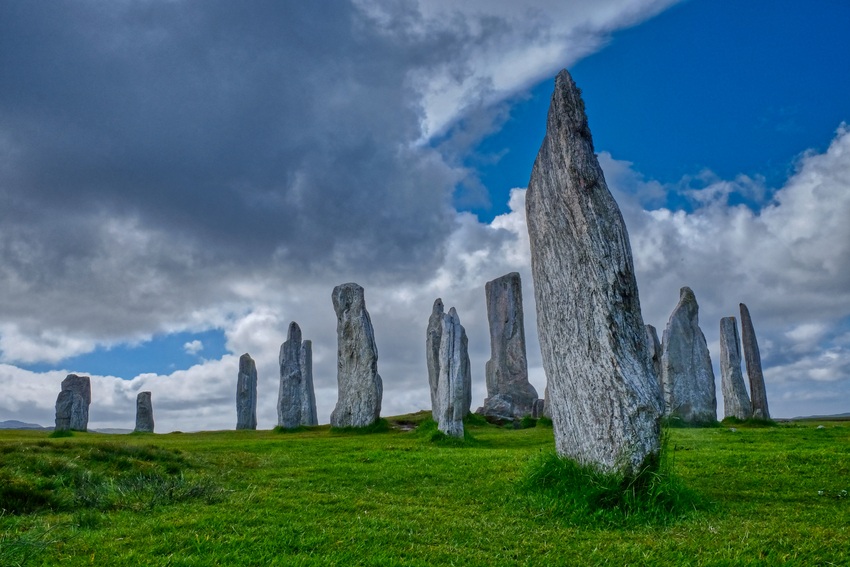 The Outer Hebrides are filled with archeological wonders!
The Outer Hebrides are filled with archeological wonders!
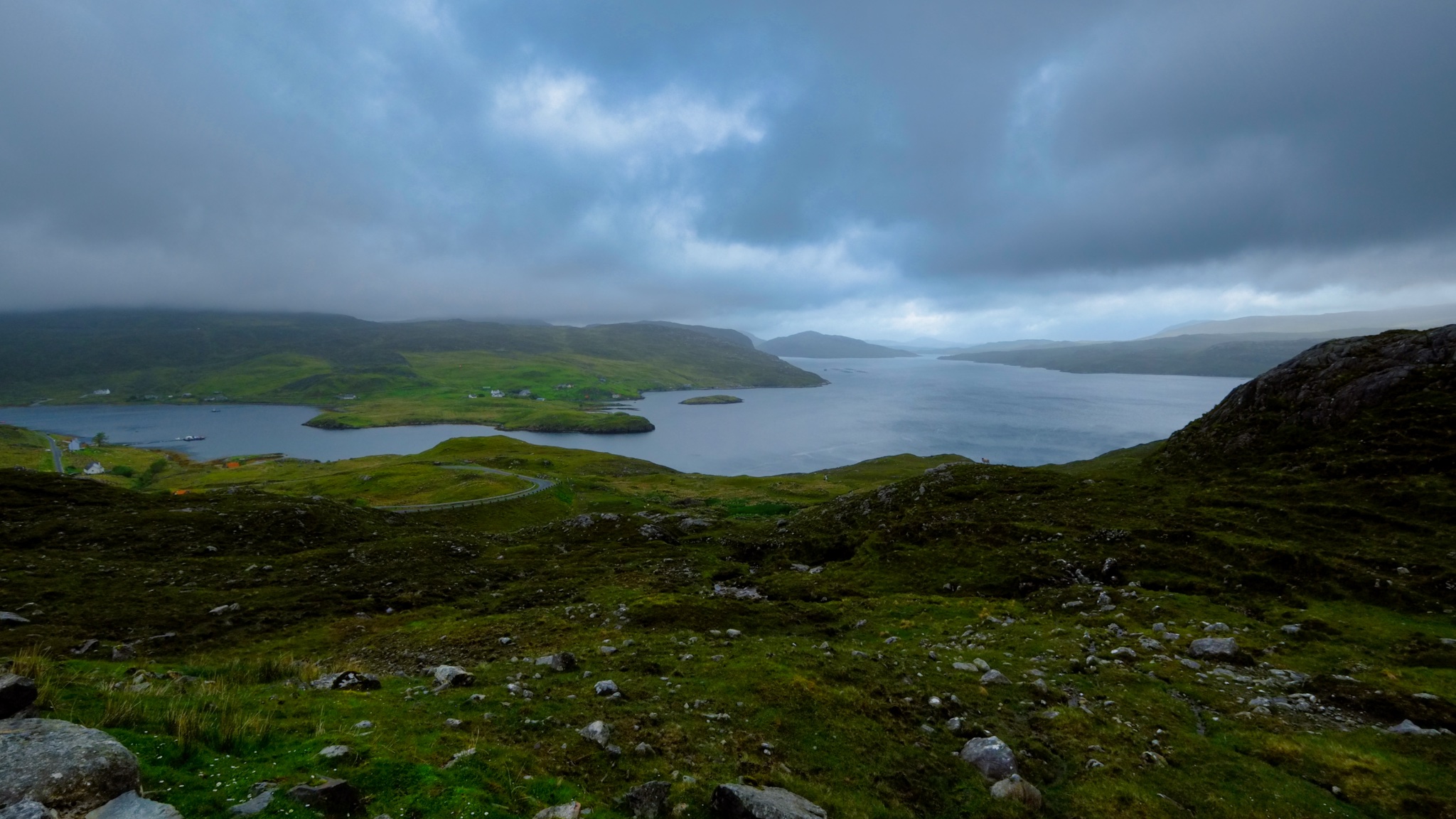
Magnificent views around every corner of the winding single track roads!
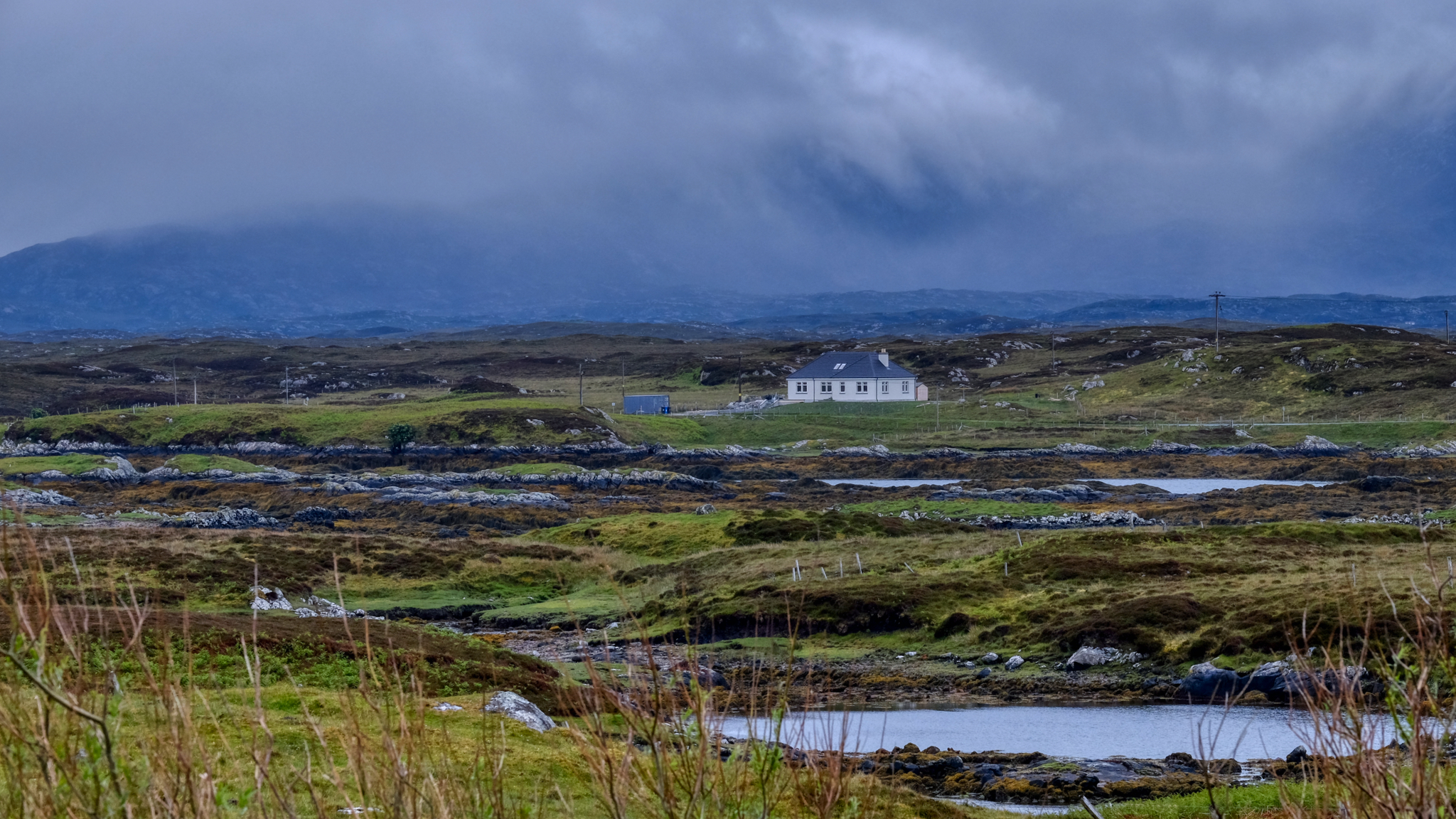 Otherworldly scenes . . .
Otherworldly scenes . . .
-----------------------------------------------------
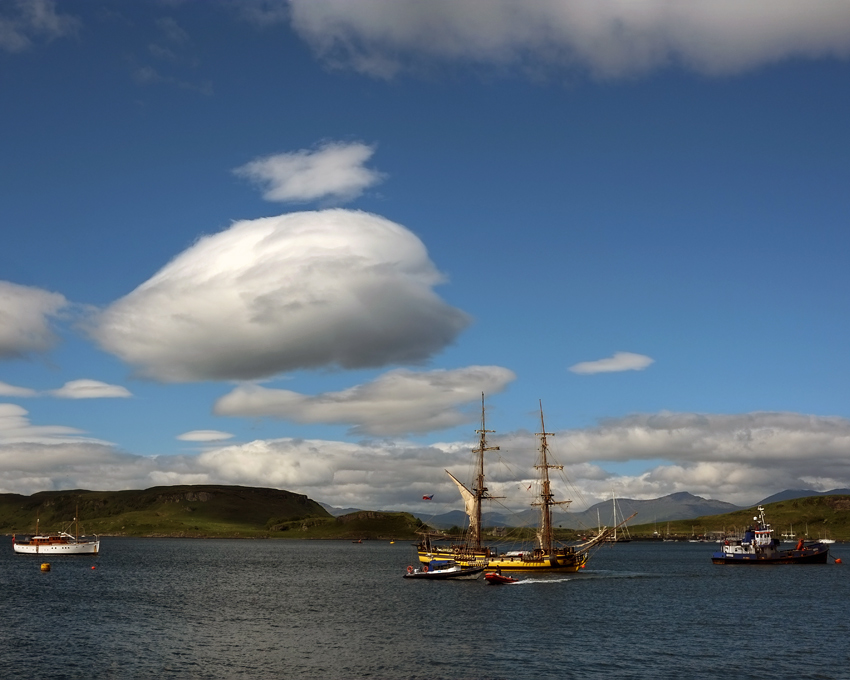
Our journey from the mainland of Scotland began on a fine late June day in Oban harbour.
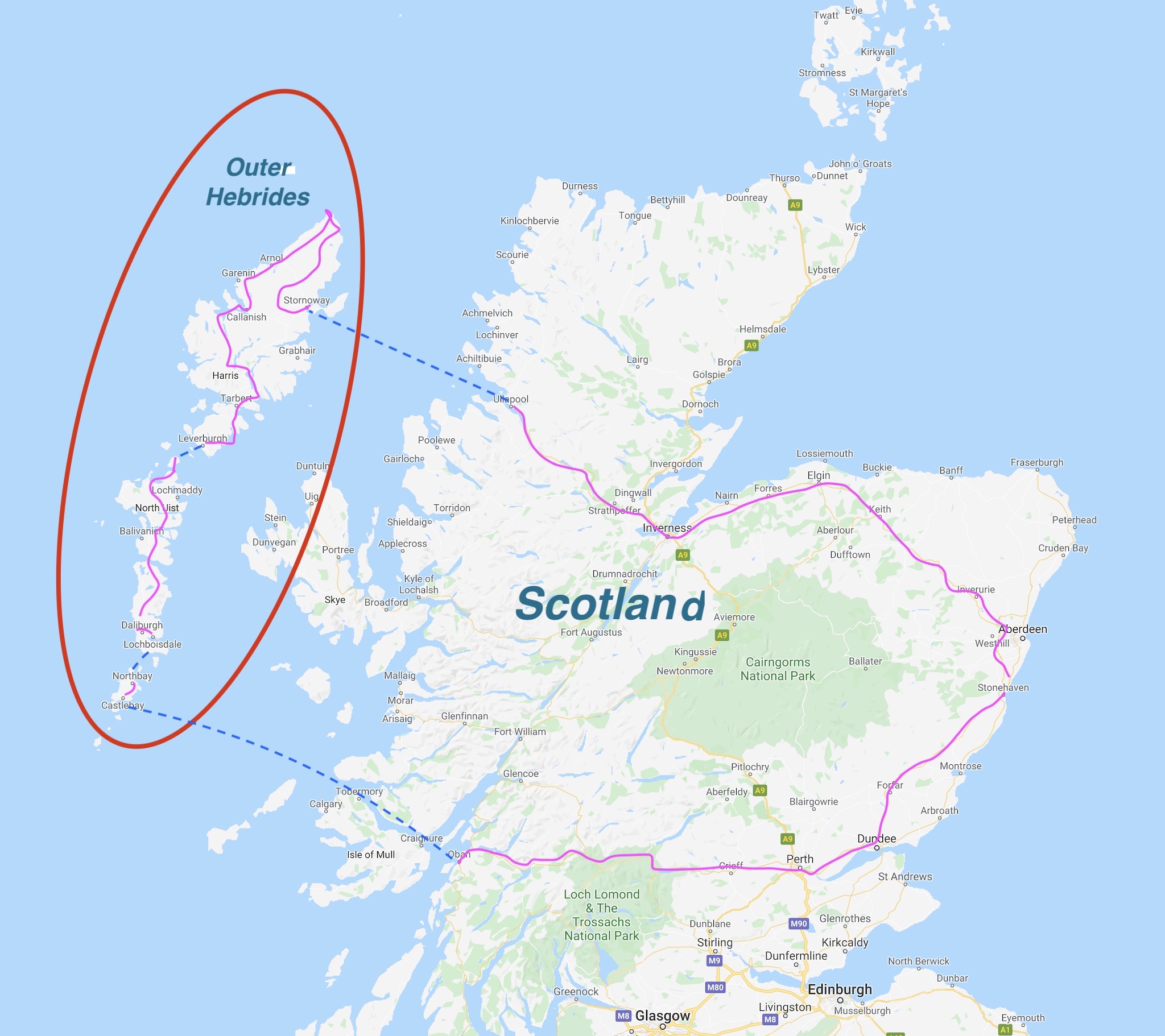 Our 10-day road and ferry trip began at our [then] home in Aberdeen, on the east coast. We spent six of those wonderful days out on the one-lane roads and ferry crossings of the Outer Hebrides.
Our 10-day road and ferry trip began at our [then] home in Aberdeen, on the east coast. We spent six of those wonderful days out on the one-lane roads and ferry crossings of the Outer Hebrides.
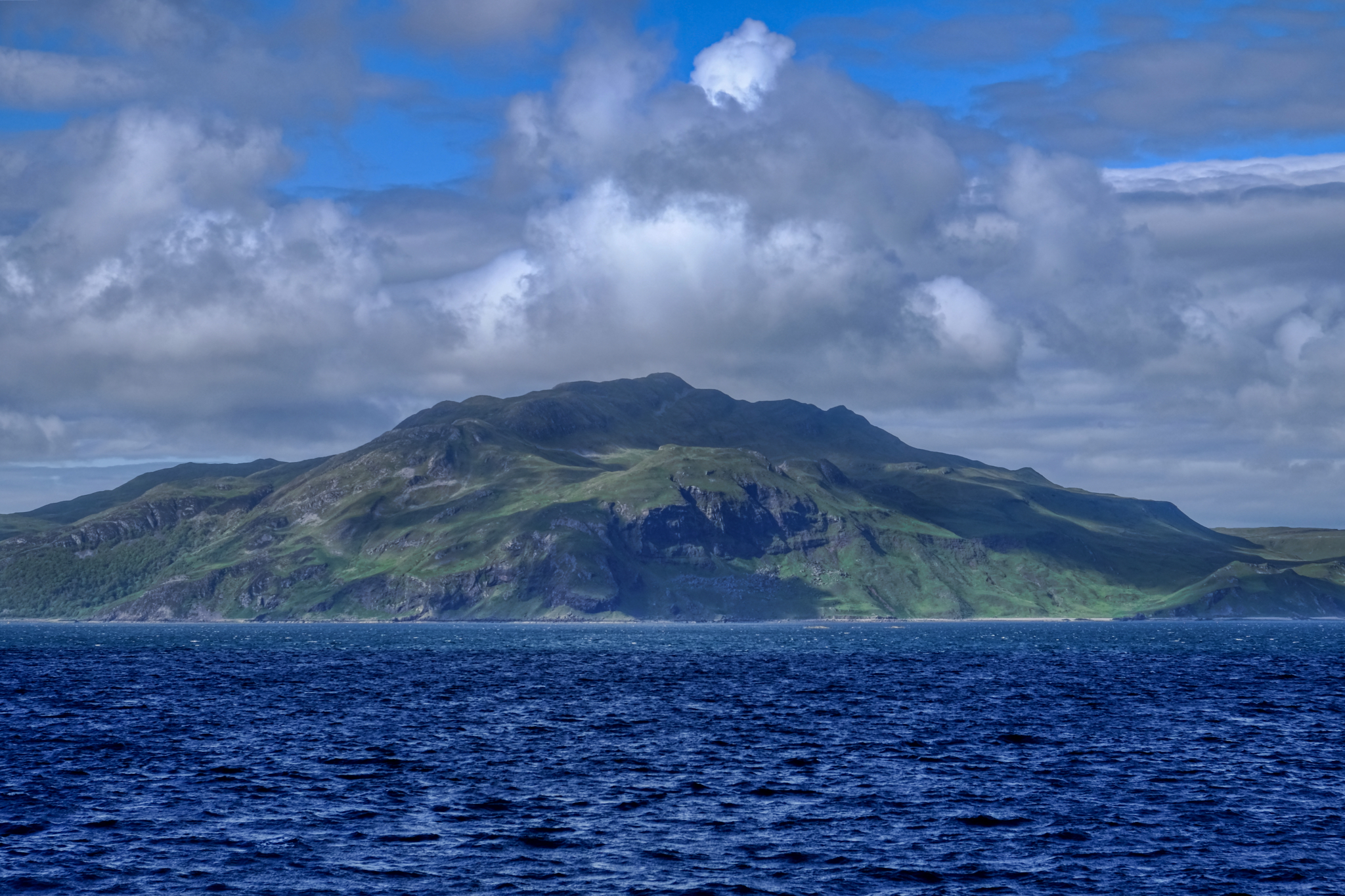
The ferry out of Oban passes through a straight with views of the Isle of Mull on one side.
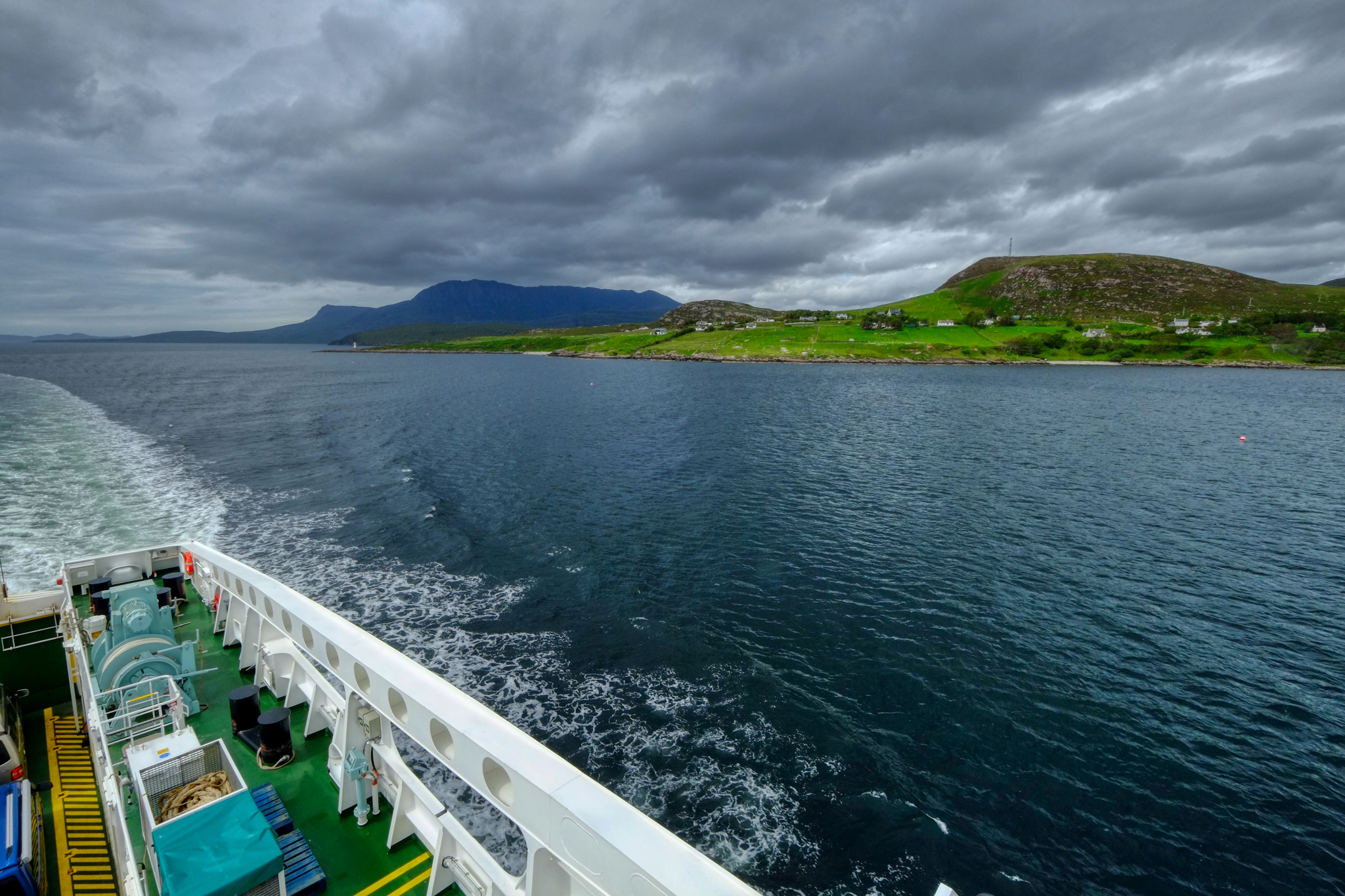 It was a gorgeous 4 hour and 45 minute ferry trip . . . it is important to book your ferry well in advance in the summer months, including the small inter-island ferries out in the Outer Hebrides.
It was a gorgeous 4 hour and 45 minute ferry trip . . . it is important to book your ferry well in advance in the summer months, including the small inter-island ferries out in the Outer Hebrides.
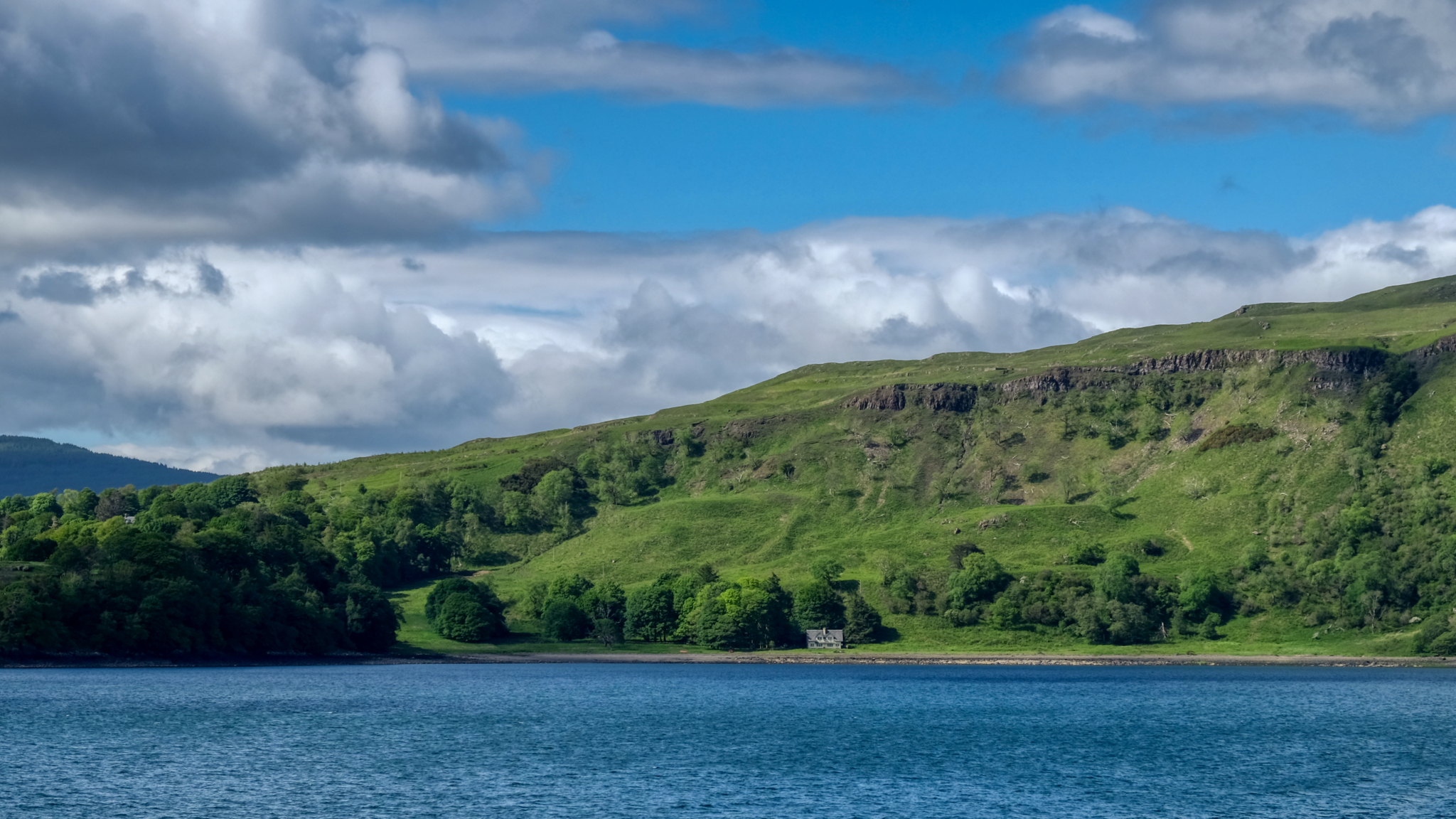 Yes, I would live here . . . .
Yes, I would live here . . . .
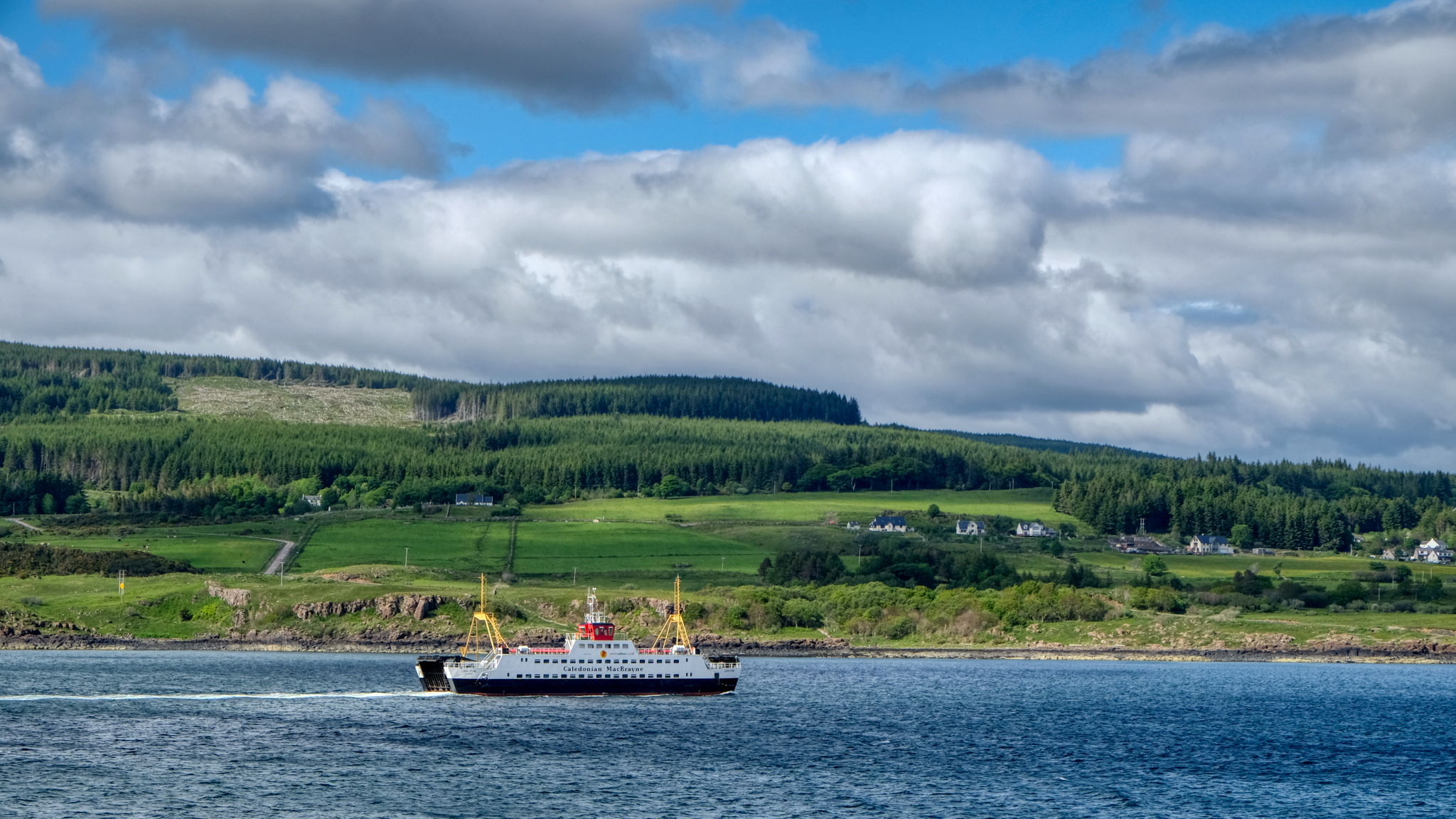 With so many islands off the west coast of Scotland, there are many small ferry routes.
With so many islands off the west coast of Scotland, there are many small ferry routes.
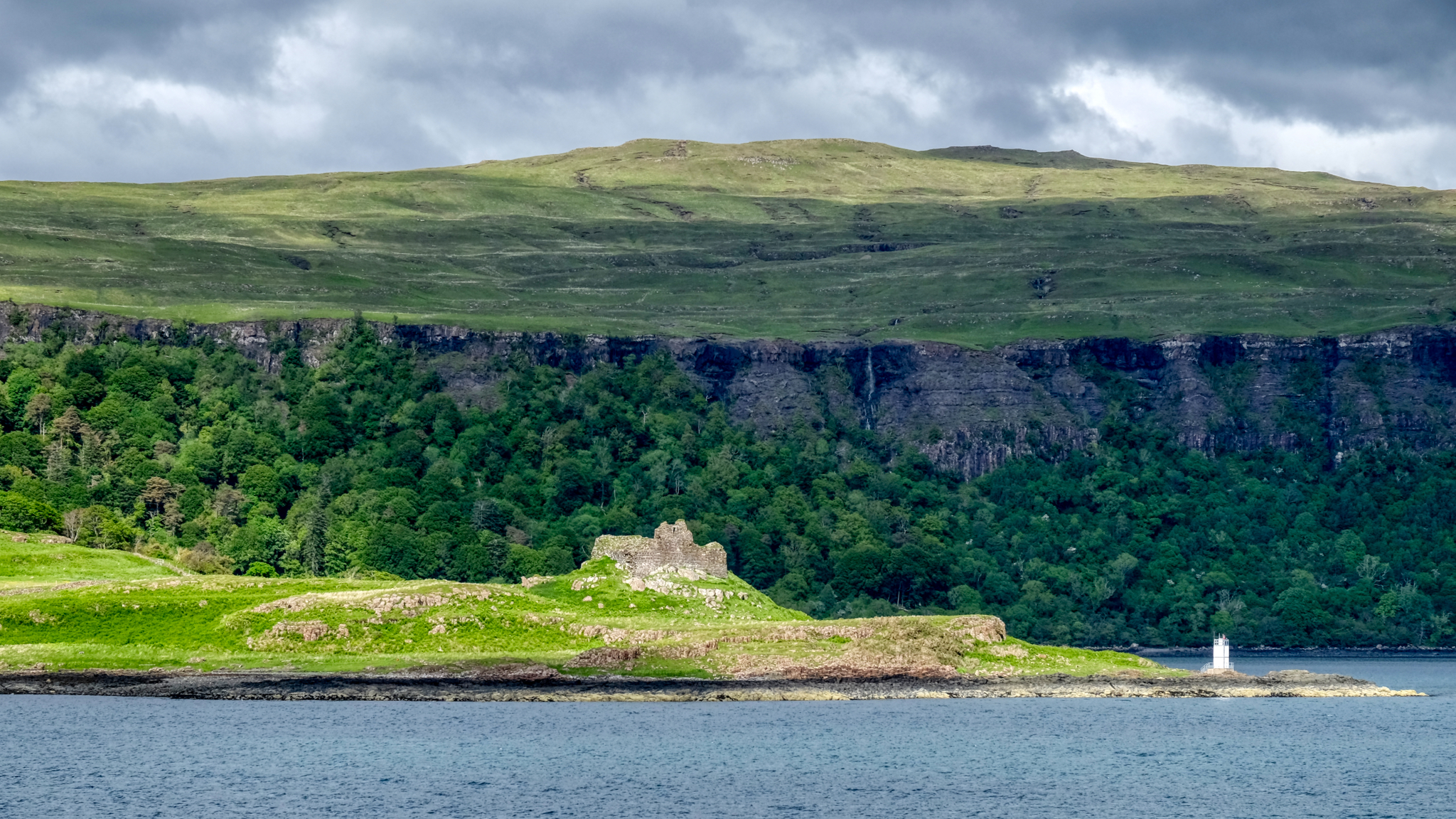 History is everywhere along our route. Castle ruins seem to dot the landscape.
History is everywhere along our route. Castle ruins seem to dot the landscape.
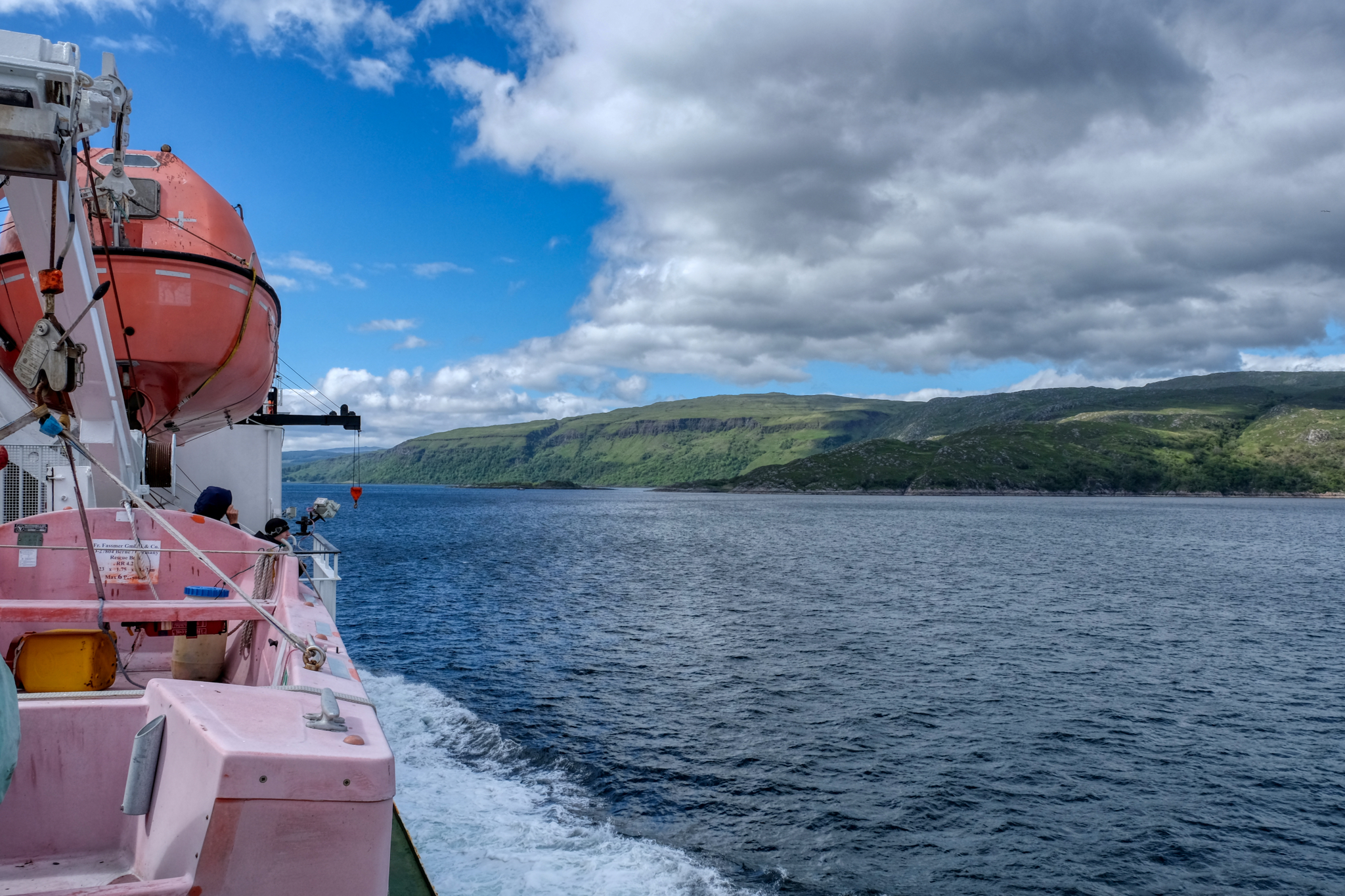 Such a relaxing way to travel.
Such a relaxing way to travel.
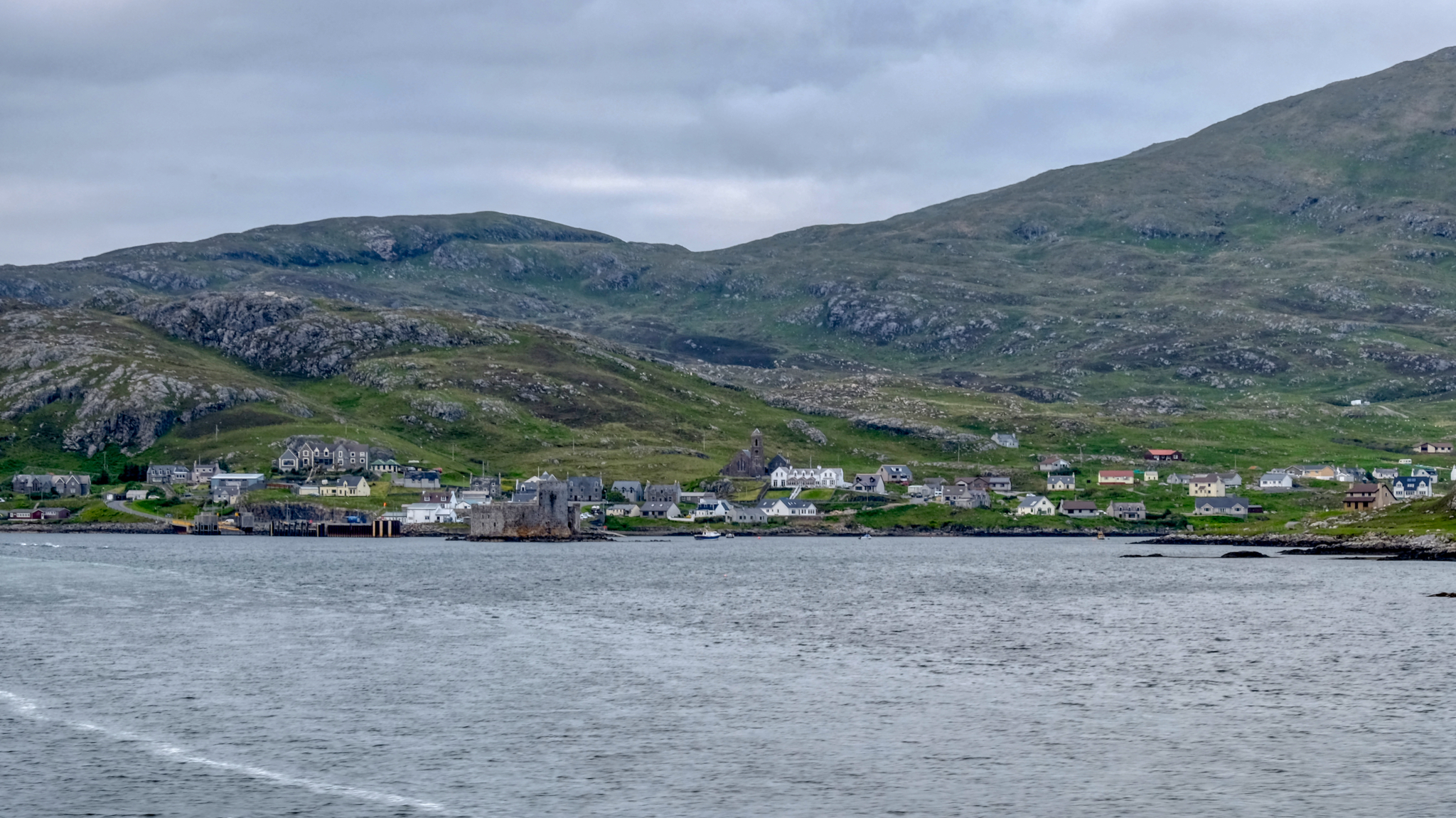 Time passed quickly and we found ourselves nearing Castlebay, the southernmost port on the Outer Hebrides, the Isle of Barra.
Time passed quickly and we found ourselves nearing Castlebay, the southernmost port on the Outer Hebrides, the Isle of Barra.
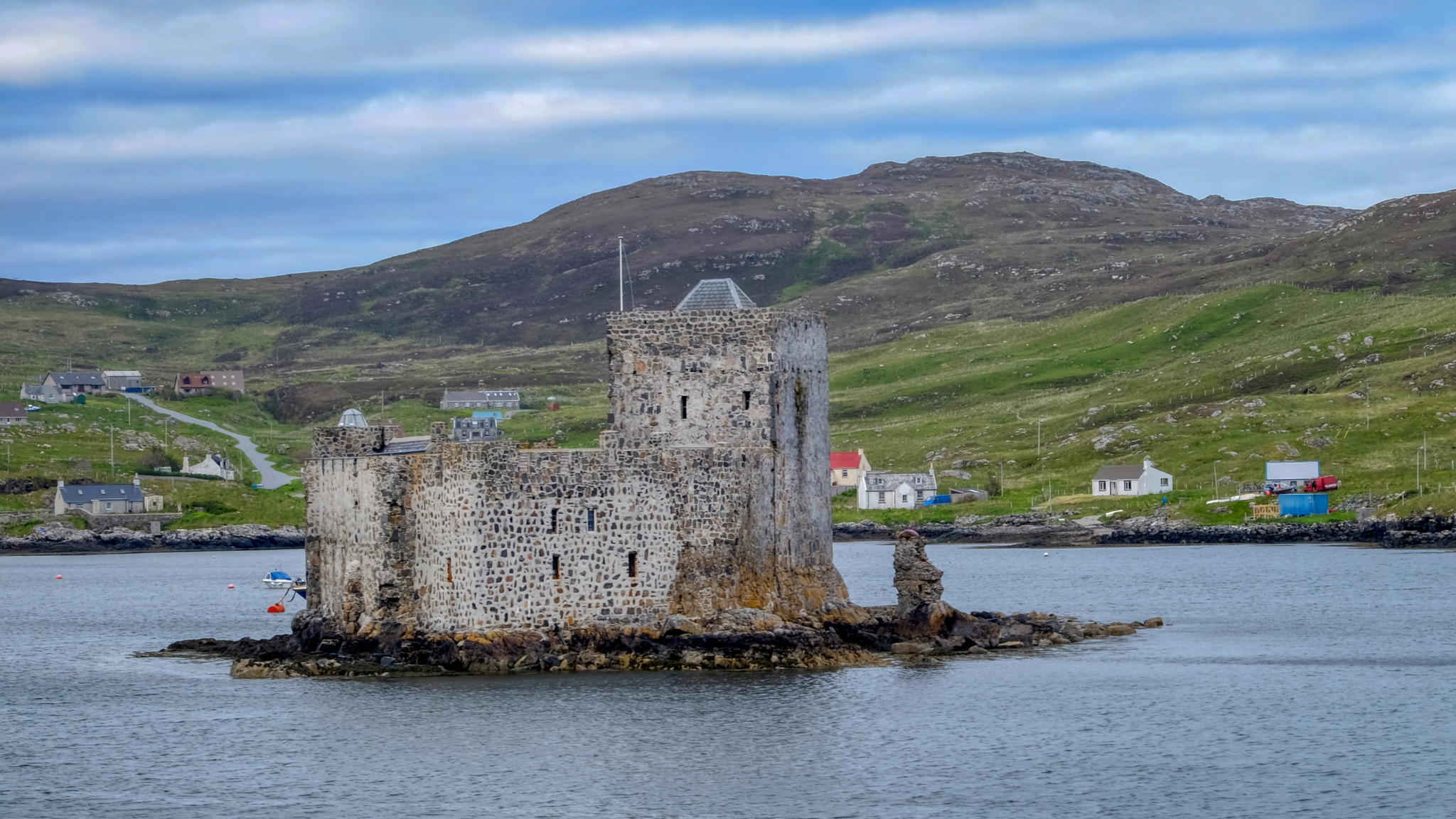 This castle sits in the bay of Castlebay . . . perhaps having something to do with the naming of the town . . . perhaps.
This castle sits in the bay of Castlebay . . . perhaps having something to do with the naming of the town . . . perhaps.
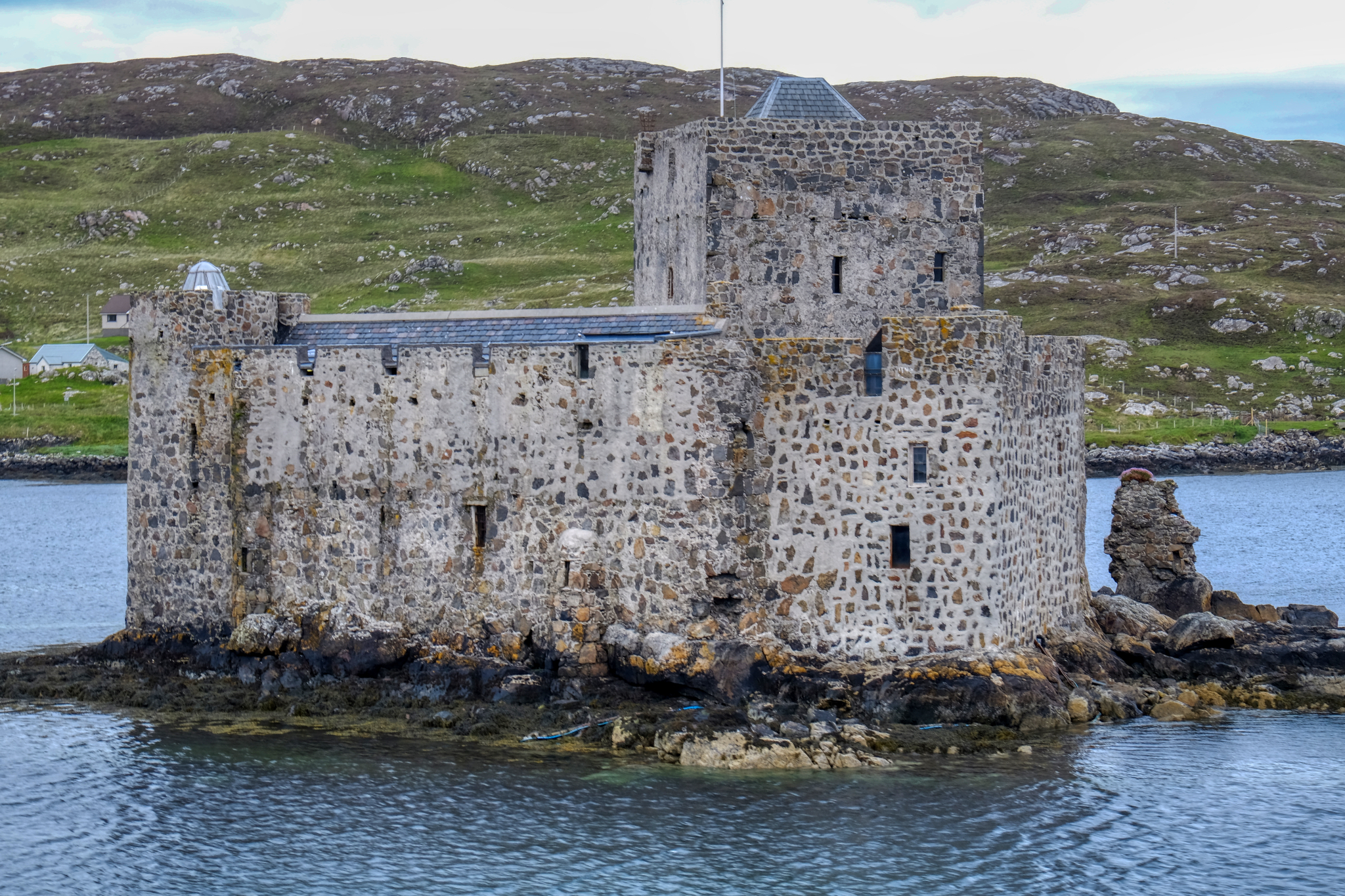 The castle in the bay of Castlebay is Kisimul Castle, dating from the late 16th century. It is now leased to Historic Scotland Trust by the Clan MacNeil for 1 pound a year. It is a castle with an interesting history (see link).
The castle in the bay of Castlebay is Kisimul Castle, dating from the late 16th century. It is now leased to Historic Scotland Trust by the Clan MacNeil for 1 pound a year. It is a castle with an interesting history (see link).
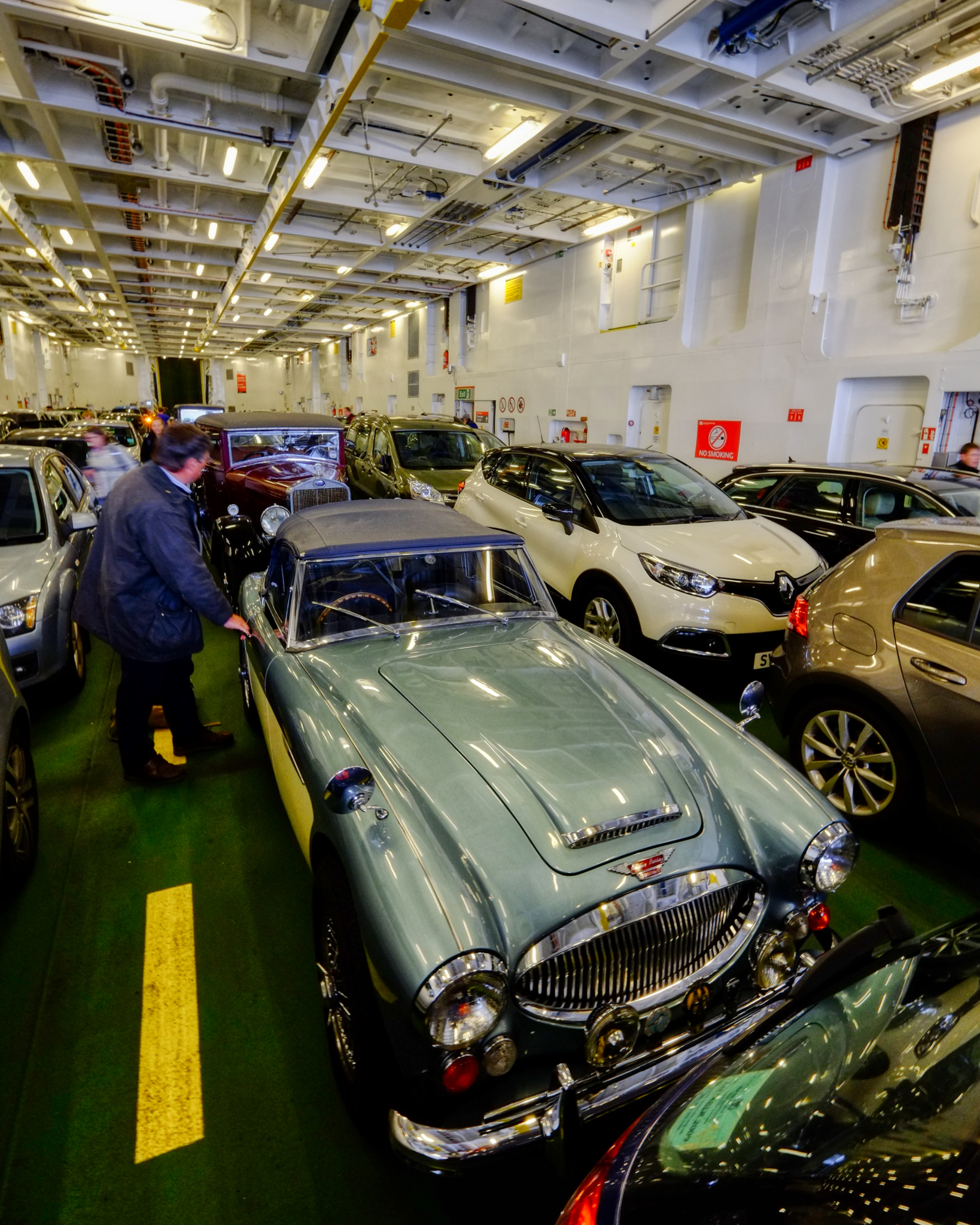
We were called to the car deck just before docking in Castlebay . . . what a surprise to see several antique and collector cars there (they must have loaded after we did). Perhaps there was a collector car rally . . . or they were returning from one.
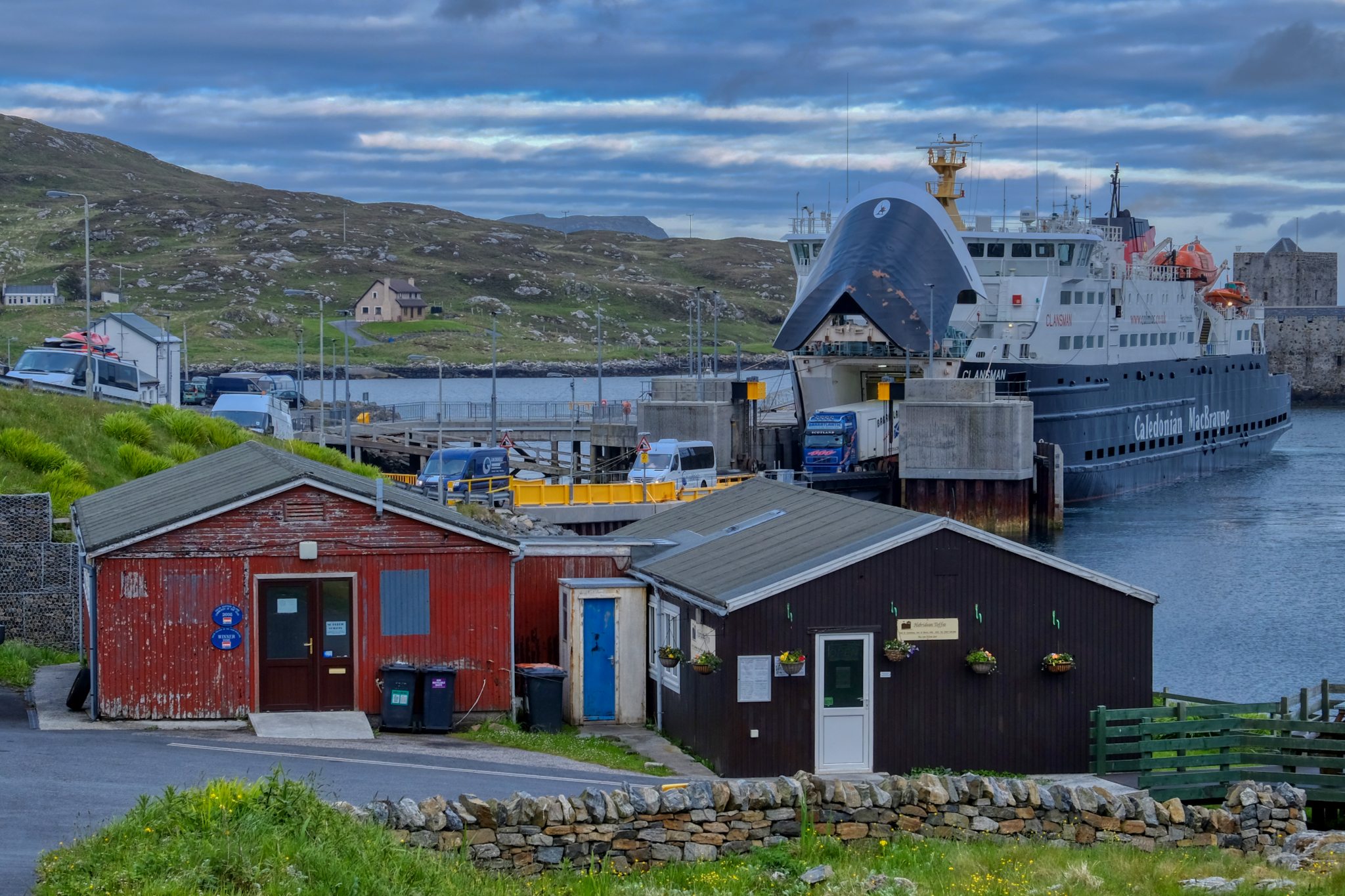 We drove off the ferry and turned, stopped to take a look at where we had come from.
We drove off the ferry and turned, stopped to take a look at where we had come from.
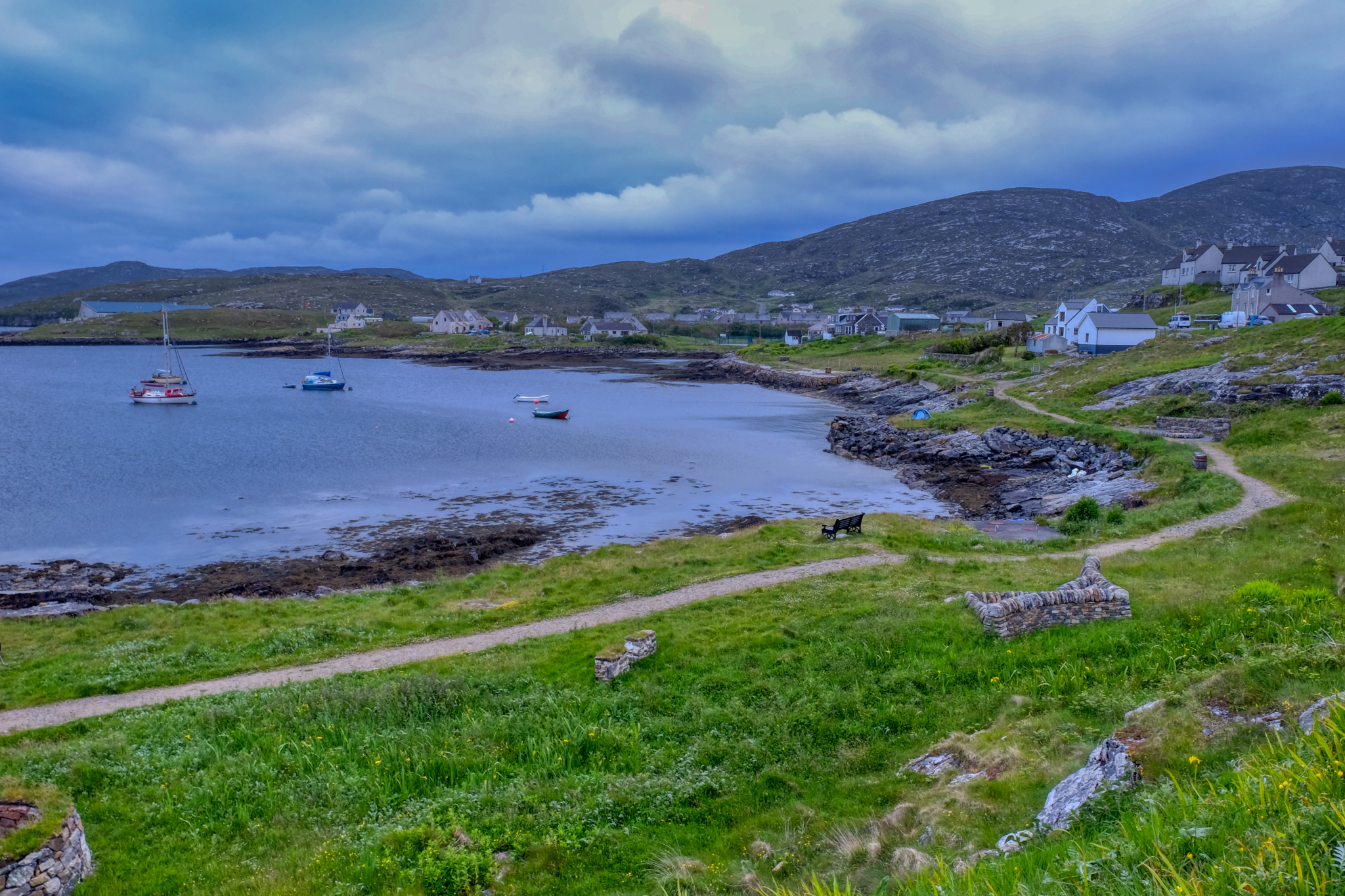 Castlebay has an 'End of the World' feeling of remoteness about it like no other place I have ever been.
Castlebay has an 'End of the World' feeling of remoteness about it like no other place I have ever been.
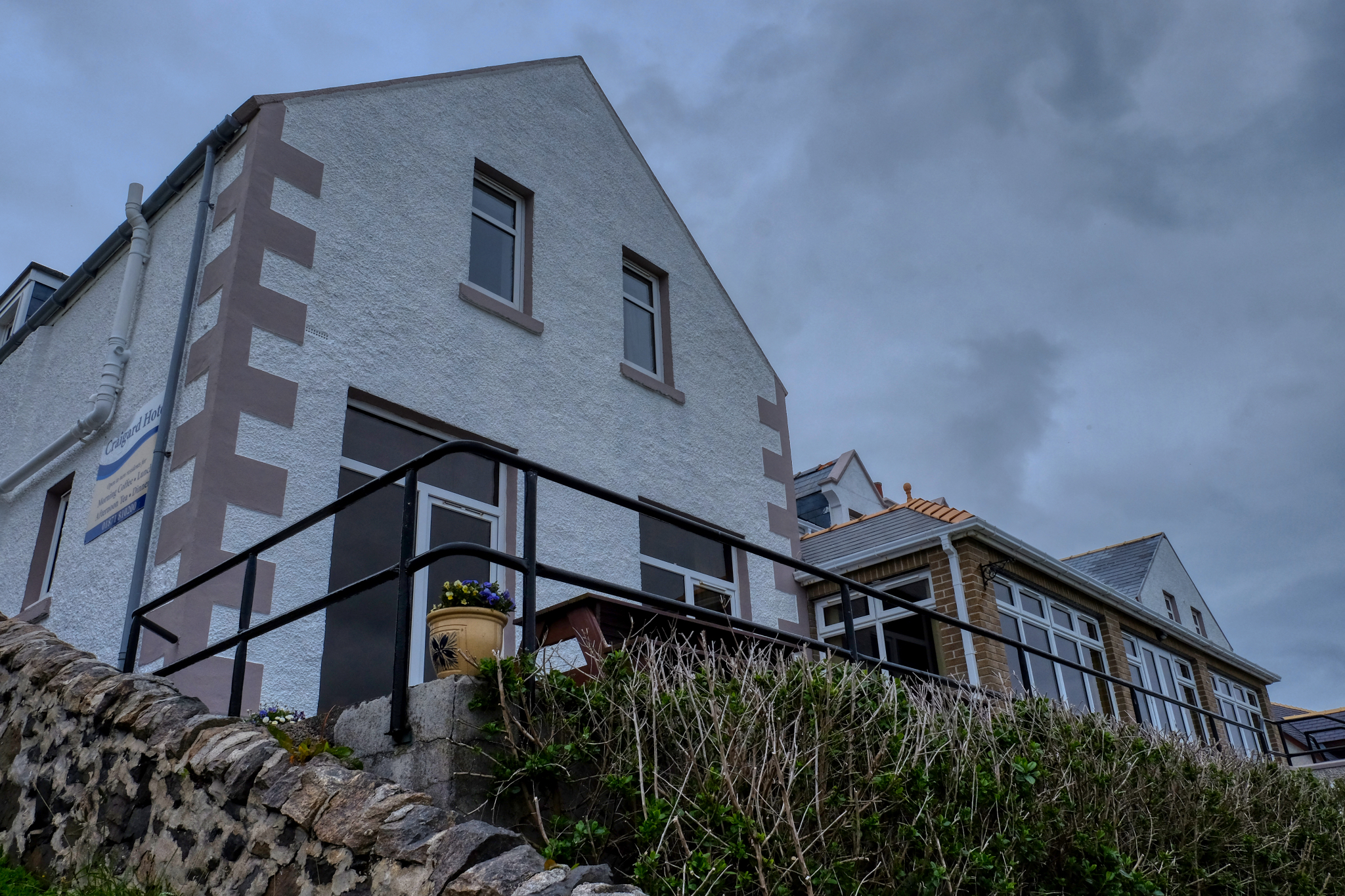 We found our old hotel (it wasn't too difficult!) and checked in.
We found our old hotel (it wasn't too difficult!) and checked in.
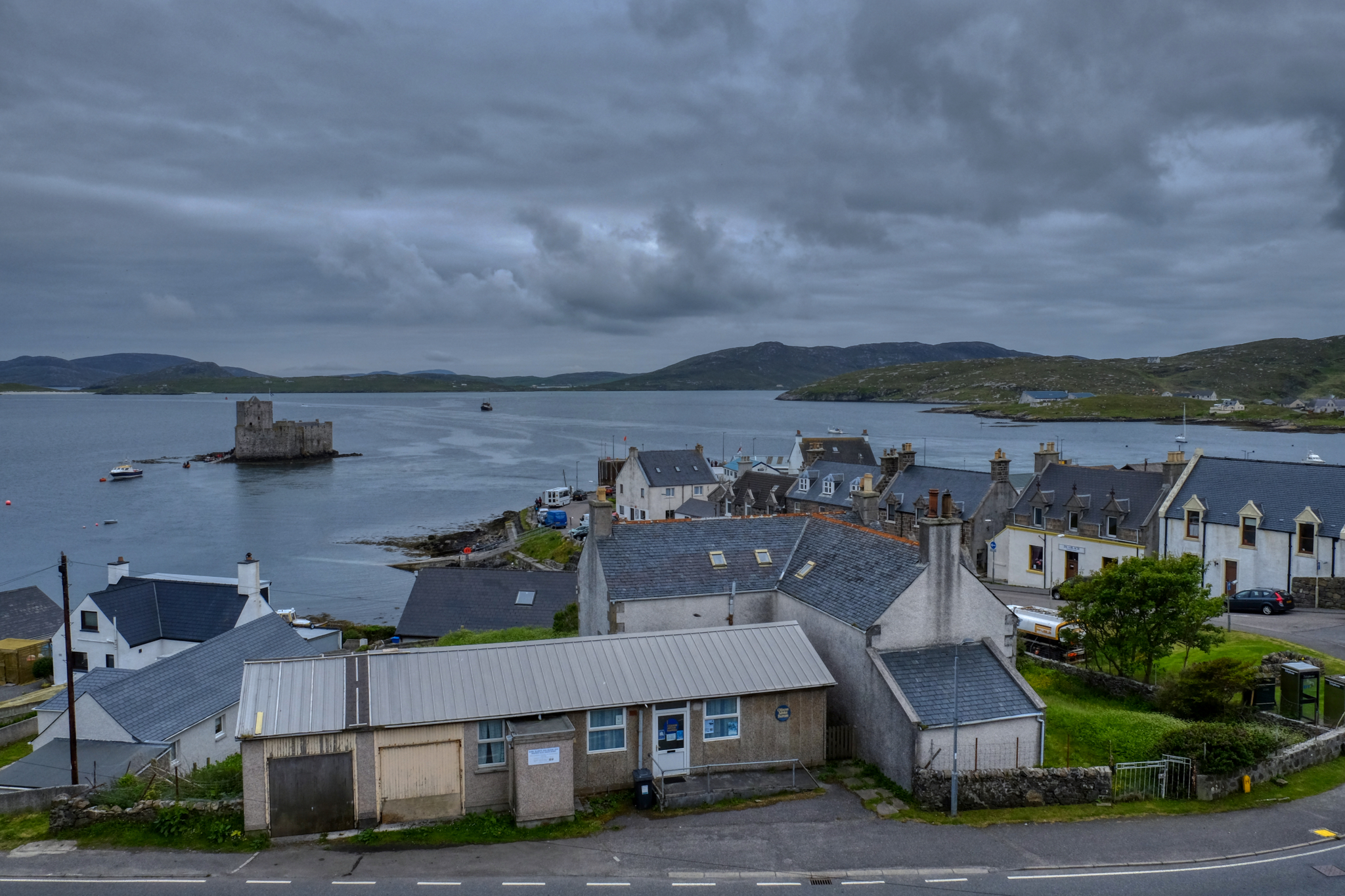 The view of Castlebay from our hotel room. Very nice.
The view of Castlebay from our hotel room. Very nice.
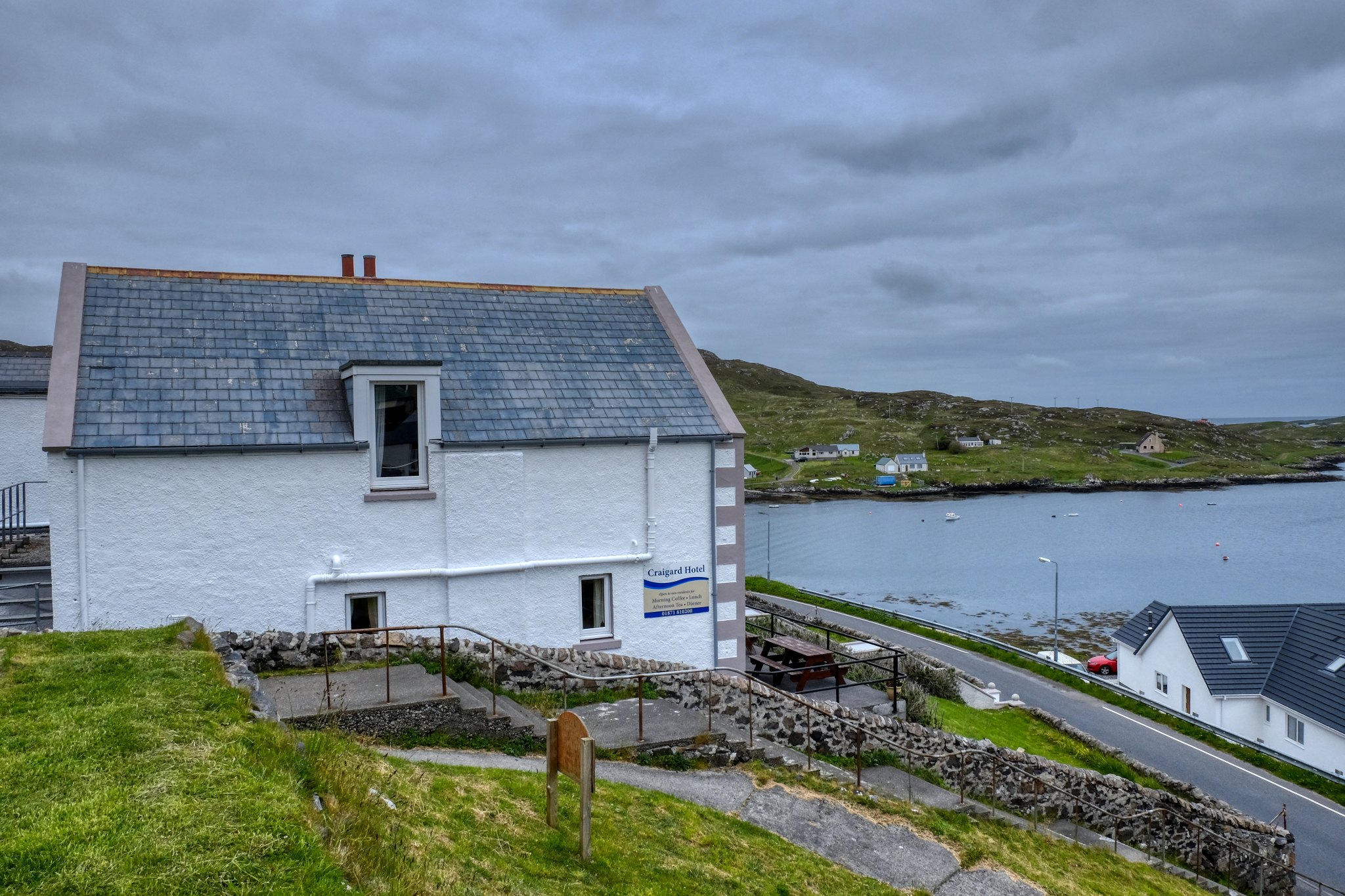 The sun stays up very late in June this far north. I took a walk from our Craigard Hotel at 10:30pm.
The sun stays up very late in June this far north. I took a walk from our Craigard Hotel at 10:30pm.
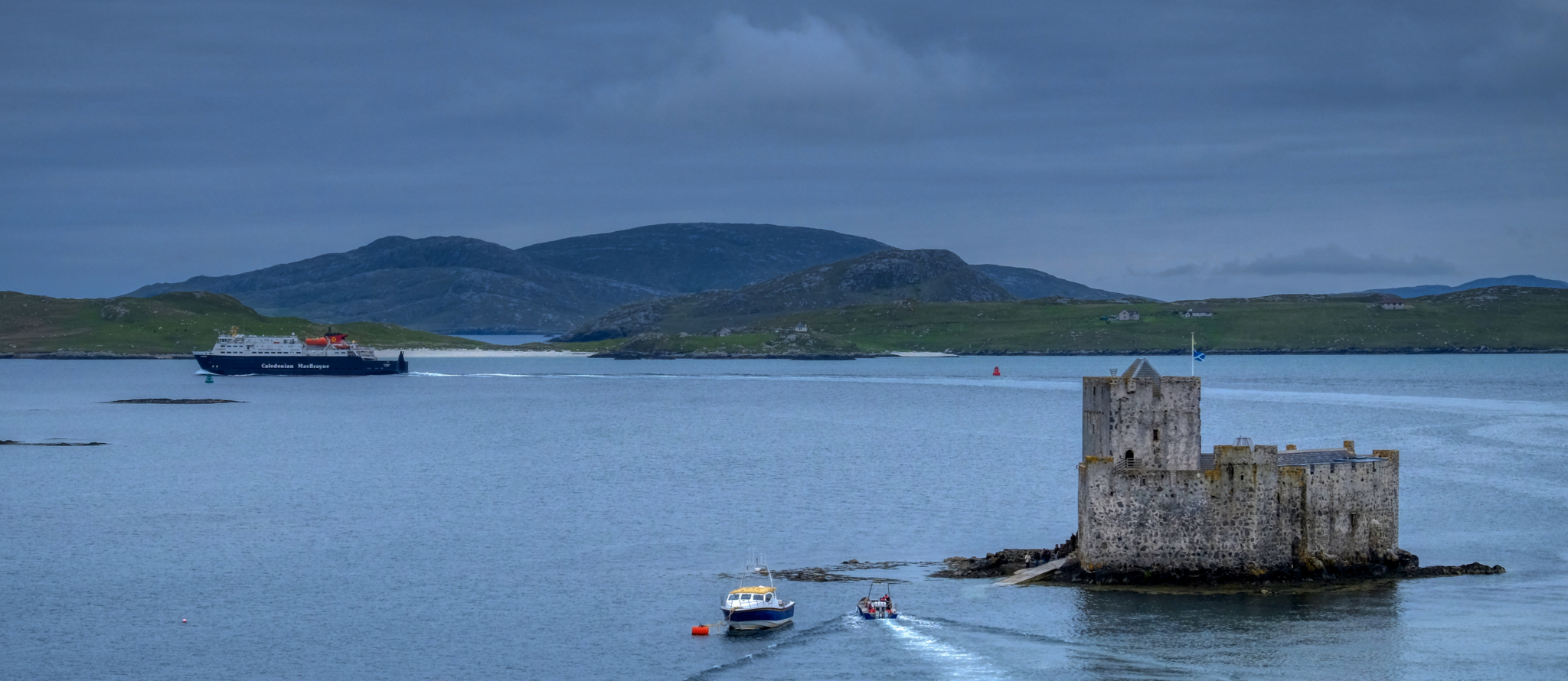 From the hill behind our hotel I saw our ferry, reloaded, making its return voyage to Oban.
From the hill behind our hotel I saw our ferry, reloaded, making its return voyage to Oban.
 I sat in the evening gloom and watched the ferry pass out of sight.
I sat in the evening gloom and watched the ferry pass out of sight.
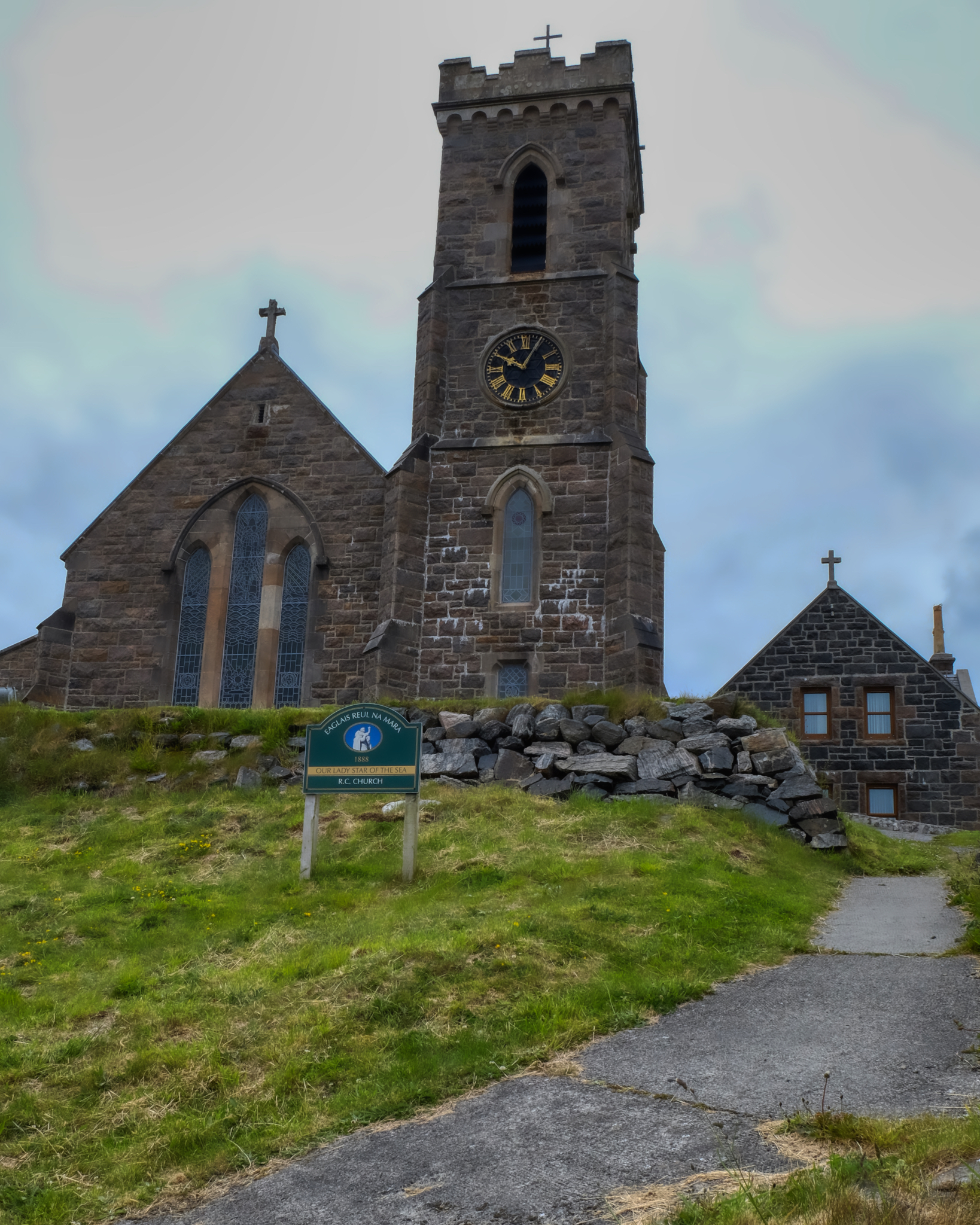 An old church, Our Lady of the Sea, behind our hotel.
An old church, Our Lady of the Sea, behind our hotel.
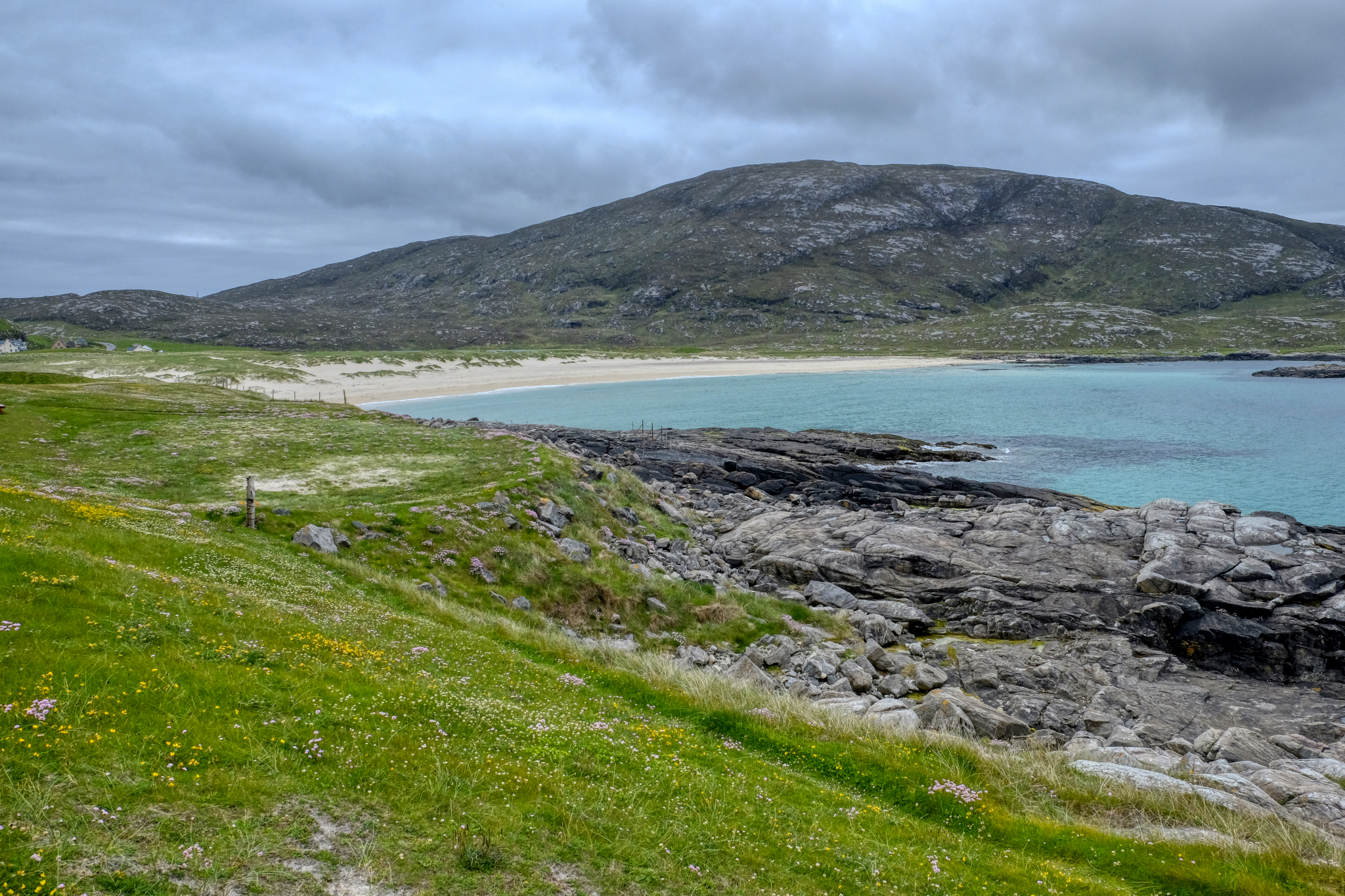 And off we drove up the west coast of the Isle of Barra. Magnificent bay views, white sand and aqua waters.
And off we drove up the west coast of the Isle of Barra. Magnificent bay views, white sand and aqua waters.
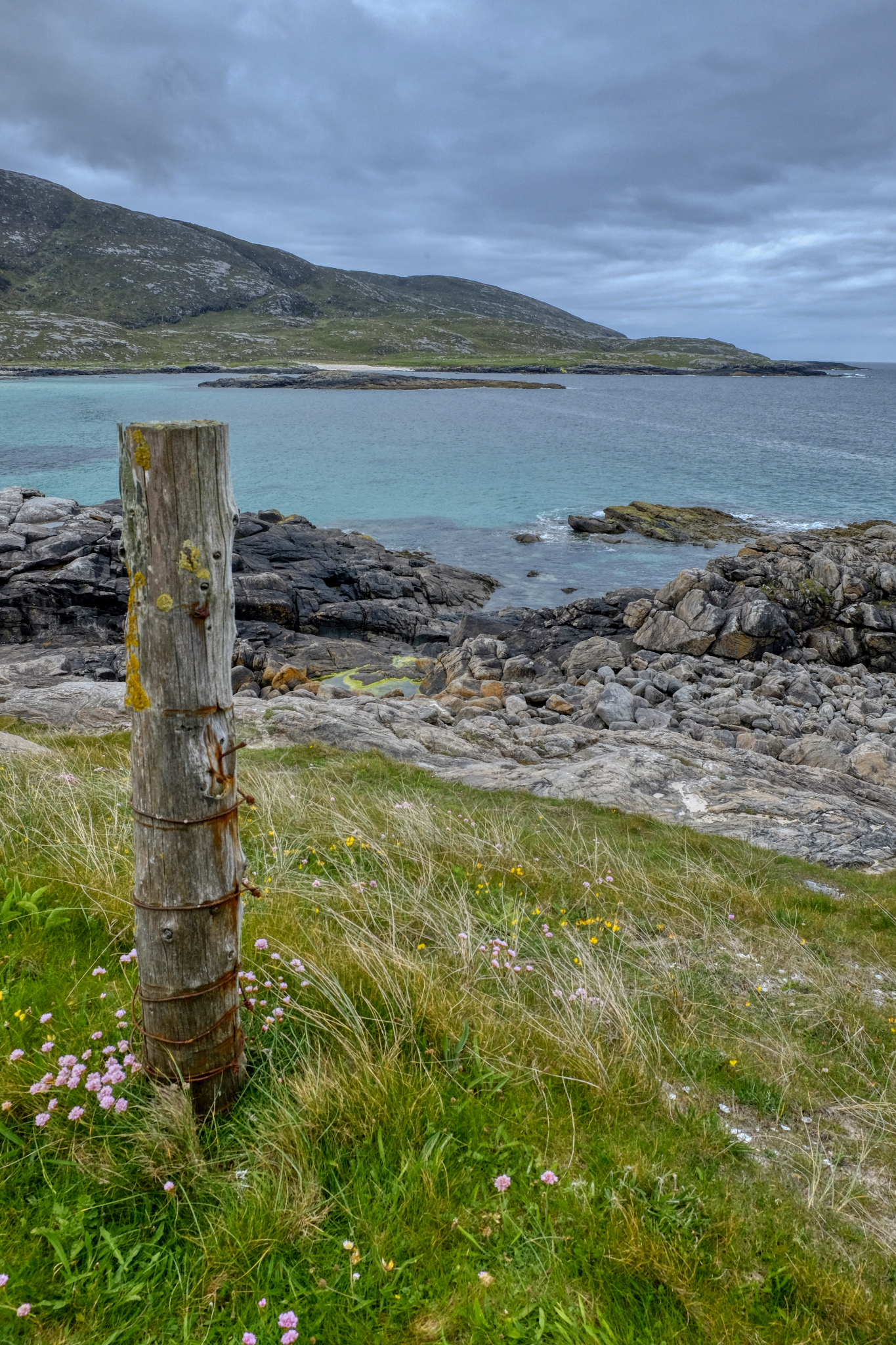 Such a pleasant place.
Such a pleasant place.
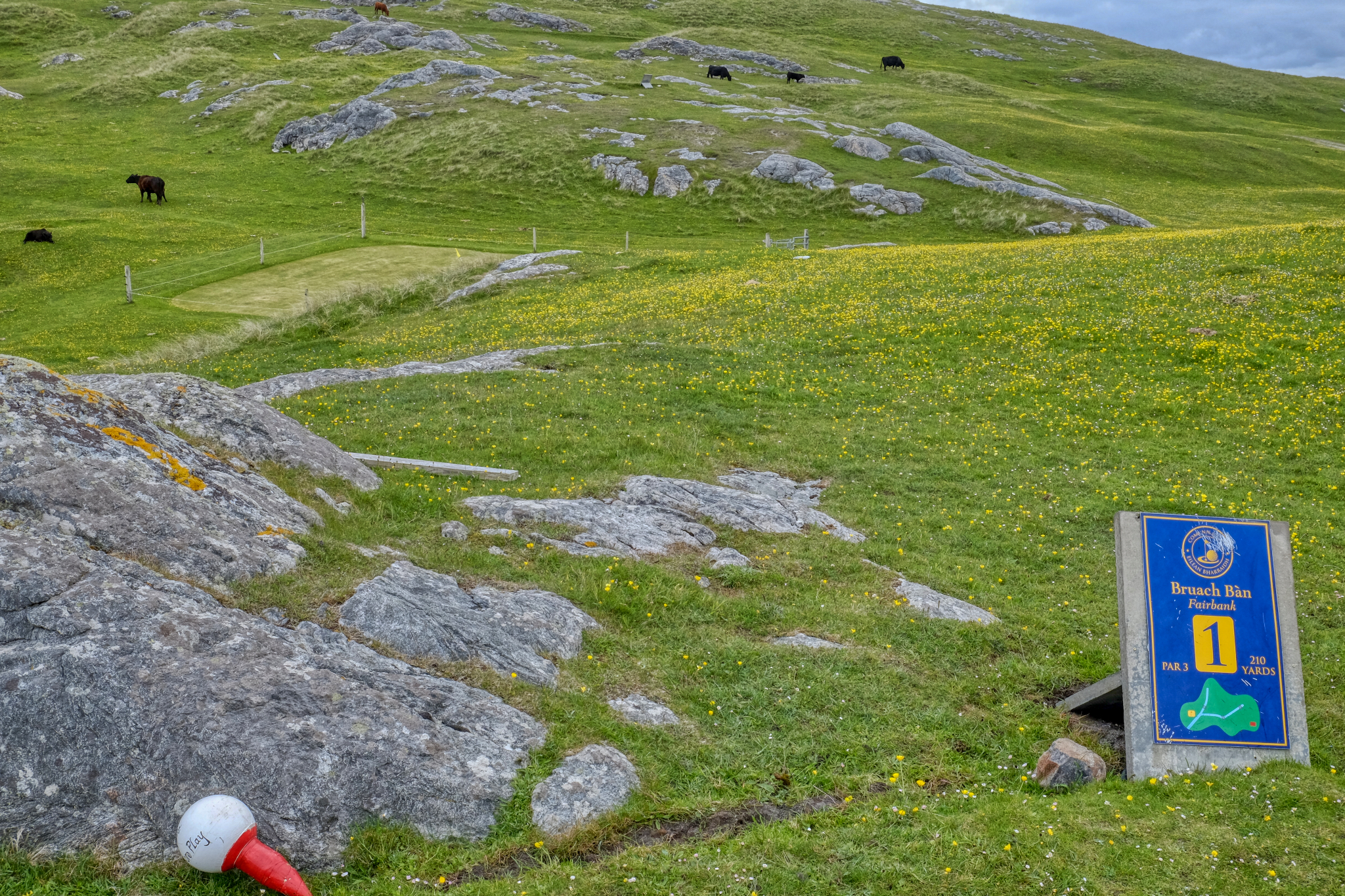 My wife is an avid golfer, so of course we stopped in at the amazing Barra Golf Course.
My wife is an avid golfer, so of course we stopped in at the amazing Barra Golf Course.
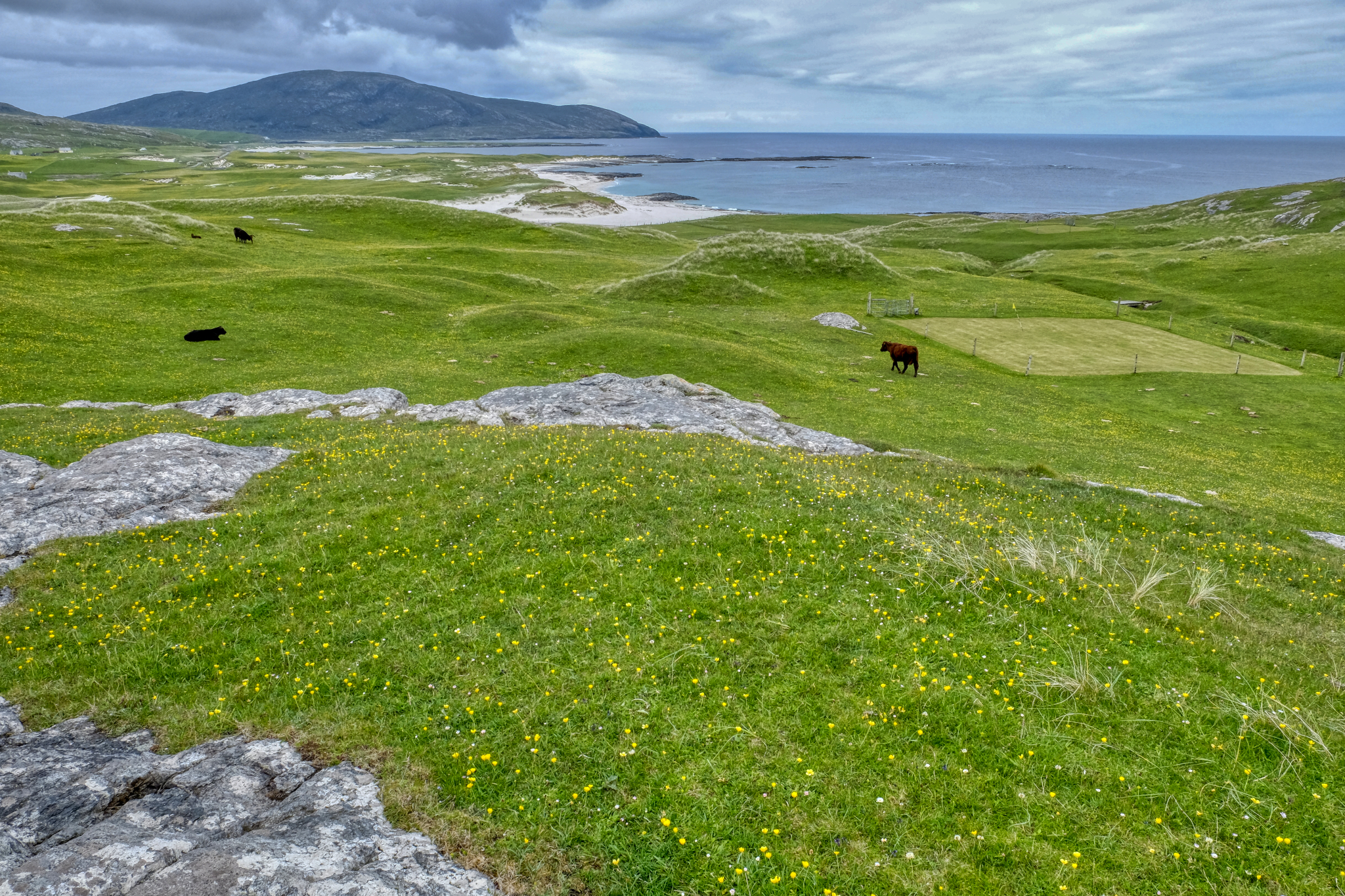 Small yellow wild flowers, the sea, cows, and a fenced off putting green (to keep the cow paddies from becoming a 'green hazard'!!!). Lovely.
Small yellow wild flowers, the sea, cows, and a fenced off putting green (to keep the cow paddies from becoming a 'green hazard'!!!). Lovely.
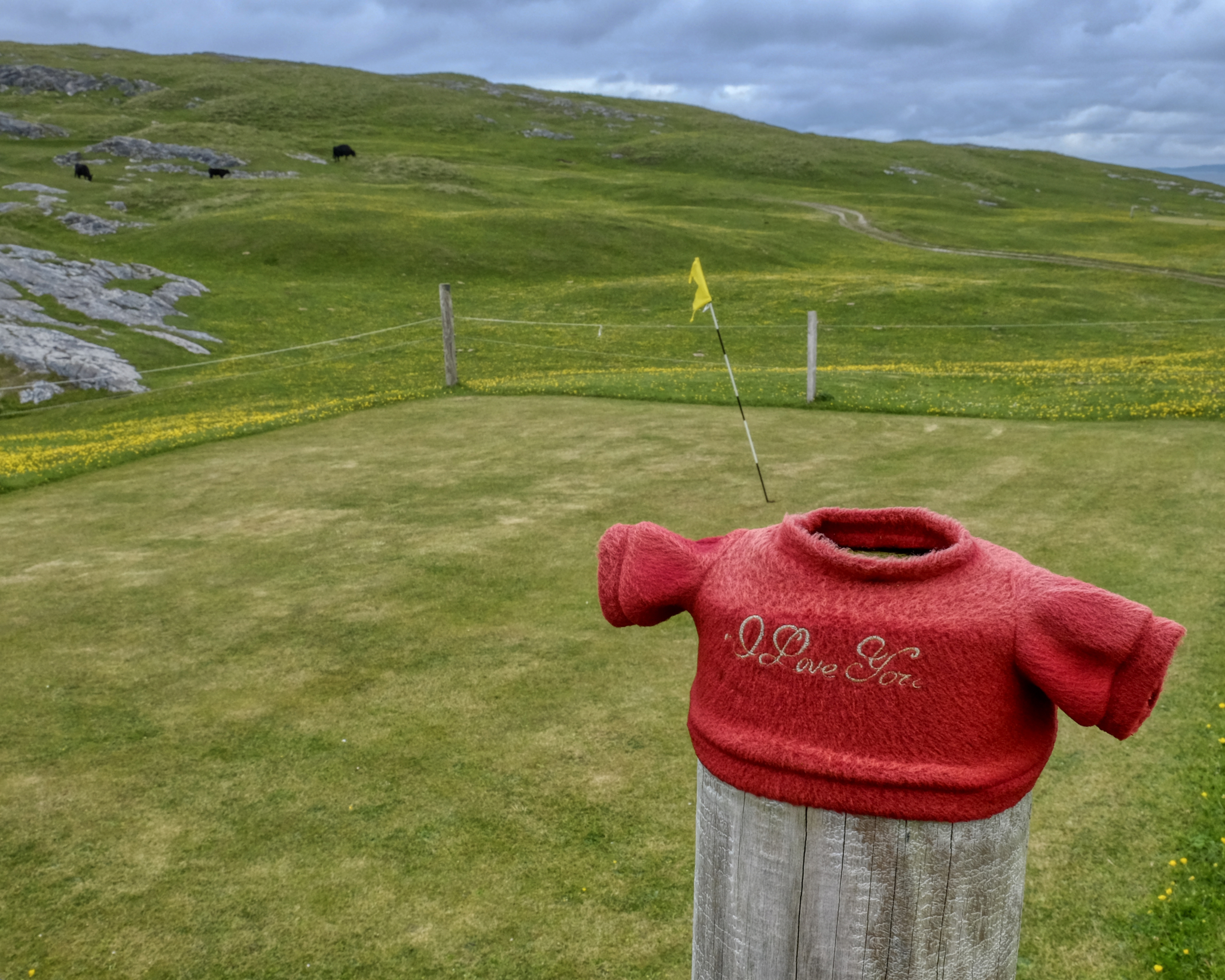 Cute . . .
Cute . . .
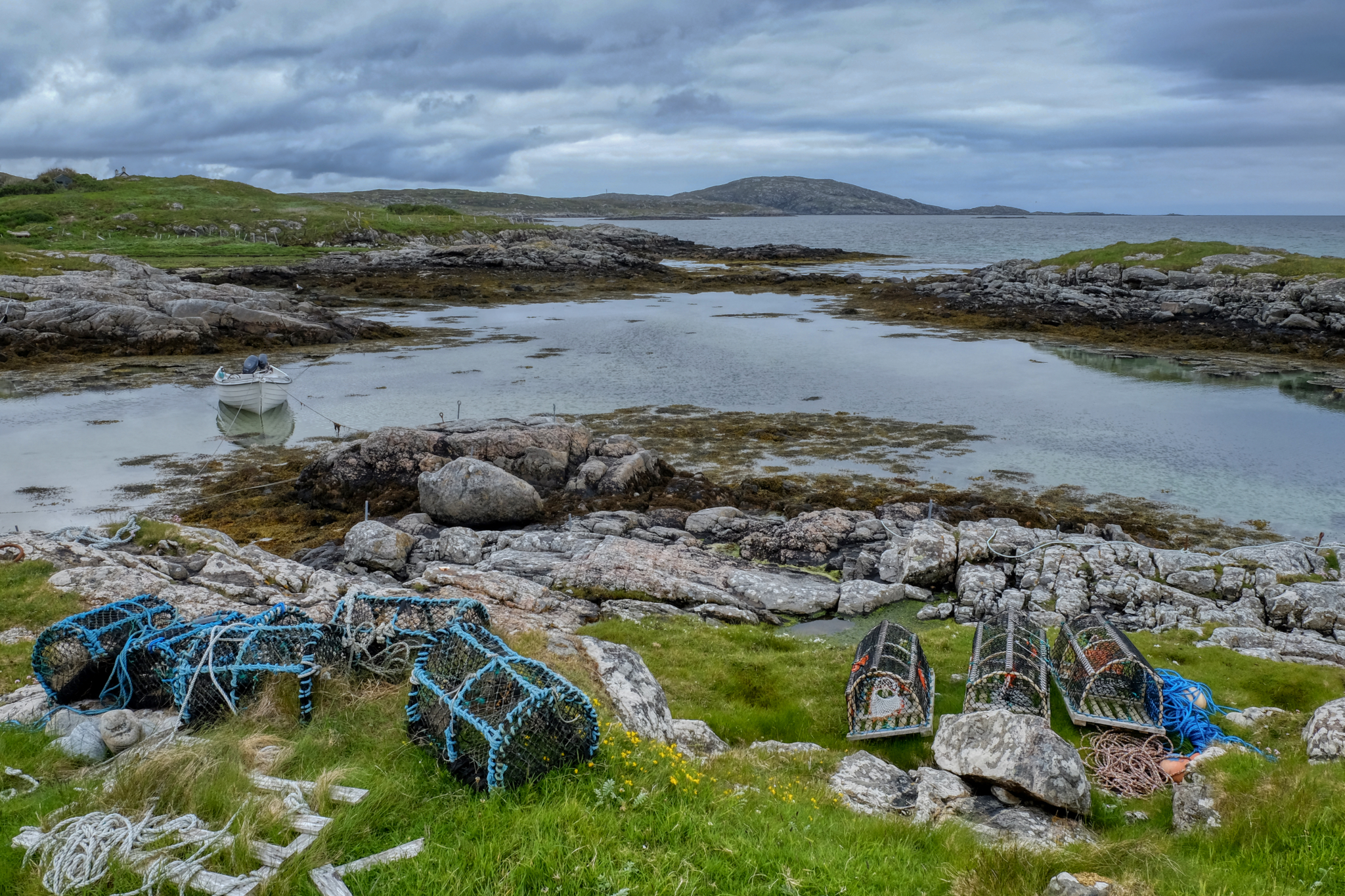 Lobster/Crab pots along a rocky cove. The scenery constantly changes.
Lobster/Crab pots along a rocky cove. The scenery constantly changes.
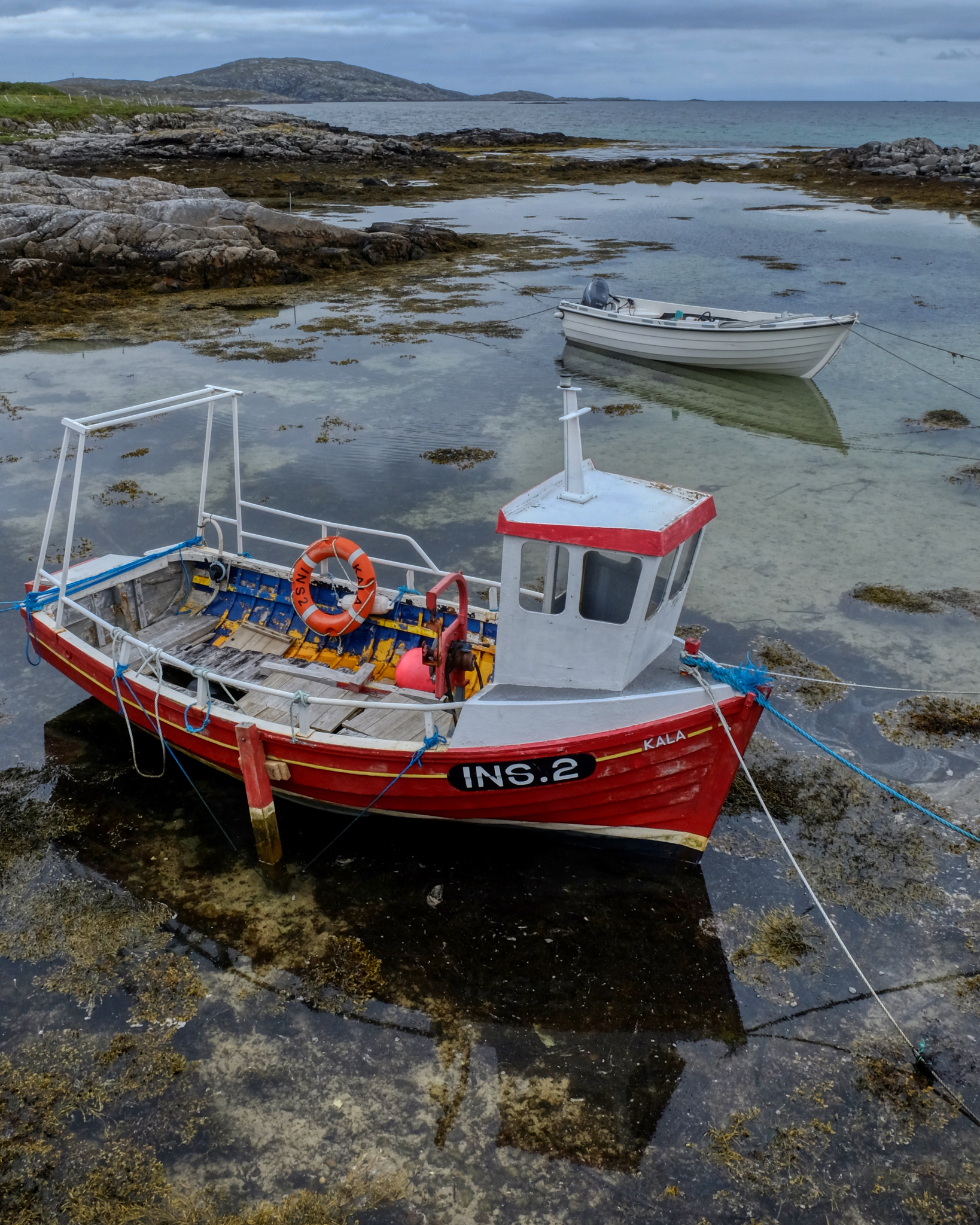 Gorgeous scenes of island life, so connected to the sea.
Gorgeous scenes of island life, so connected to the sea.
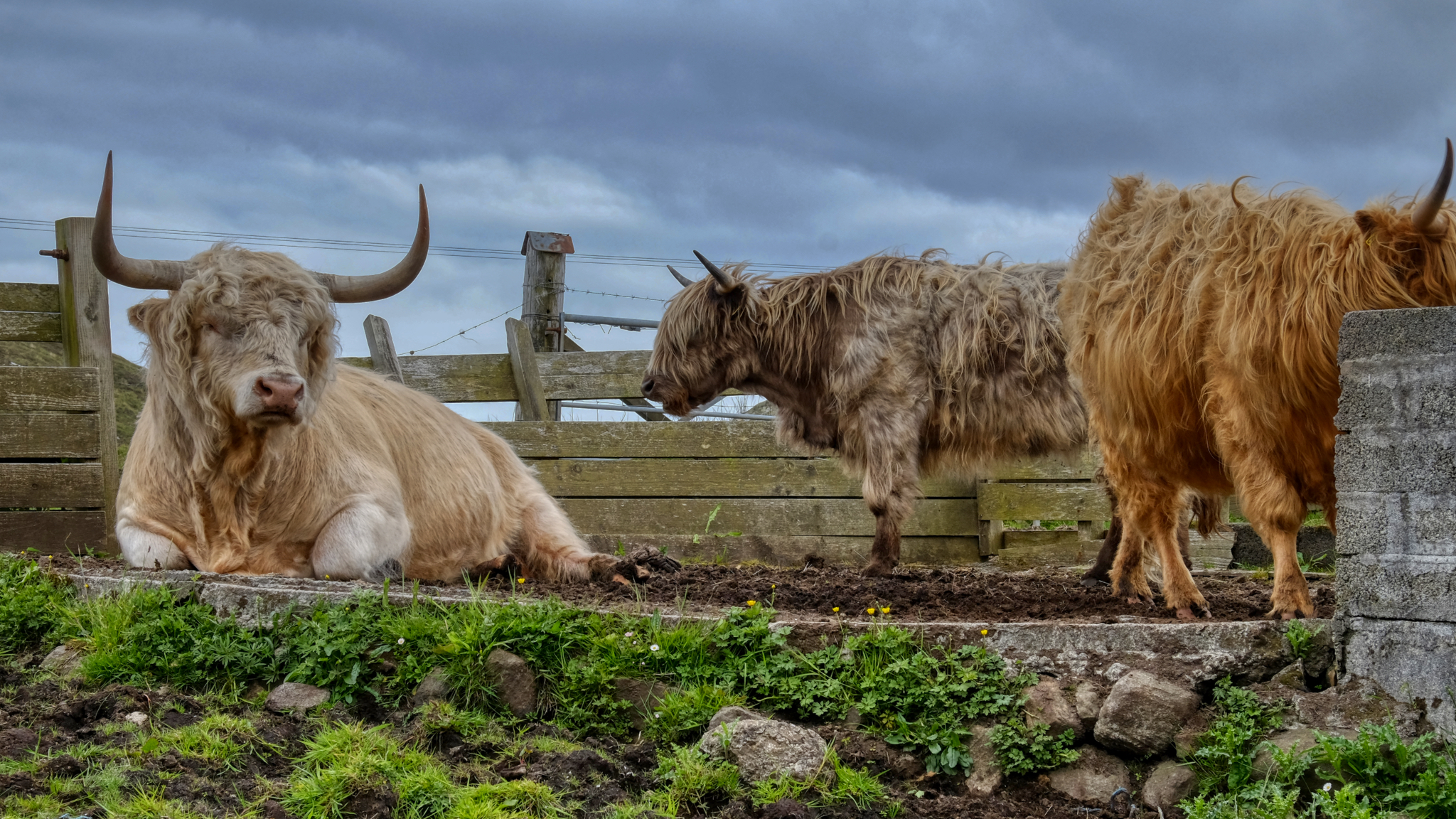 We met these fine fellows along the road. Highland cows.
We met these fine fellows along the road. Highland cows.
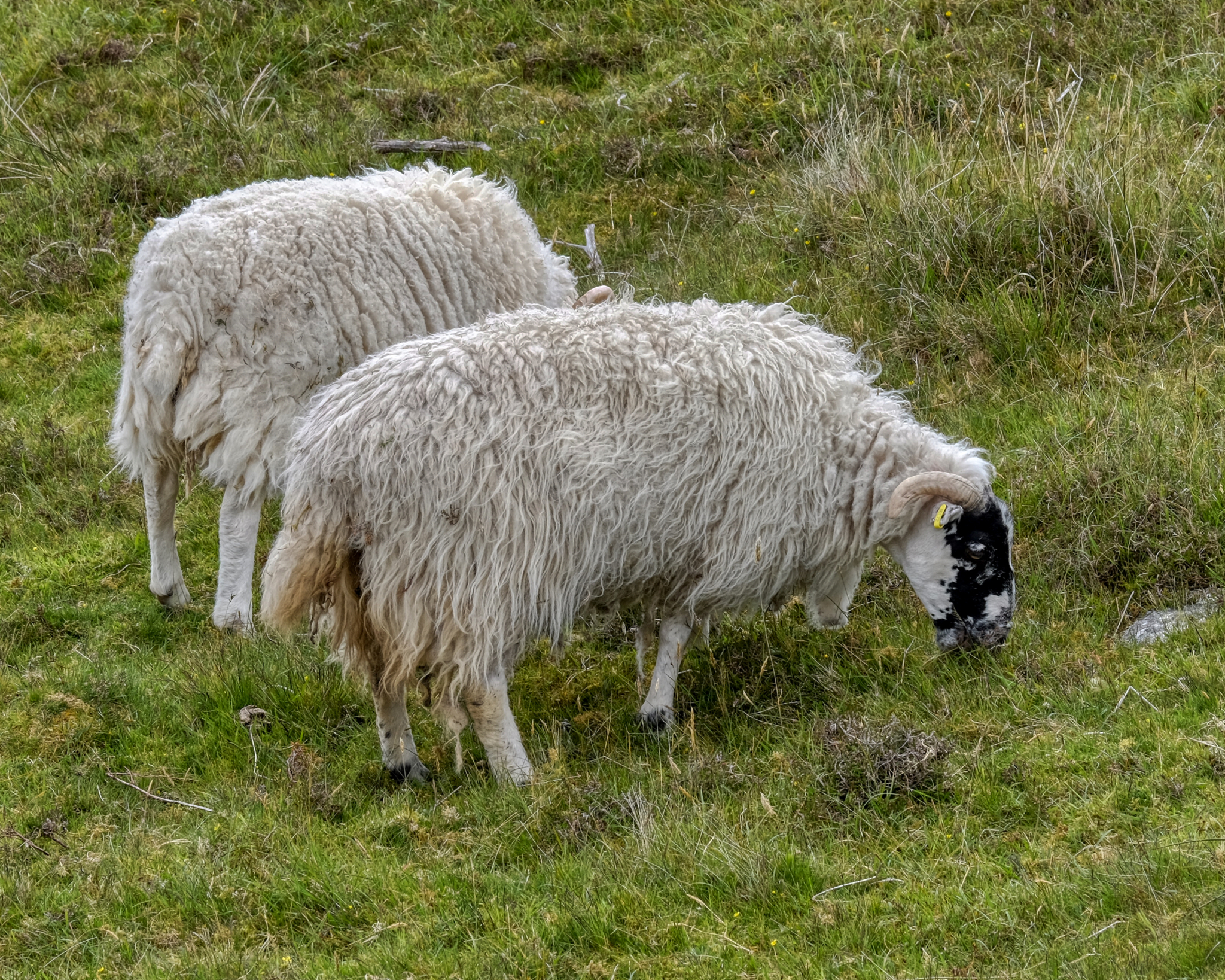 The ever-present wet sheep. We joked that all of the wool from the Outer Hebrides is already 'pre-washed.'
The ever-present wet sheep. We joked that all of the wool from the Outer Hebrides is already 'pre-washed.'
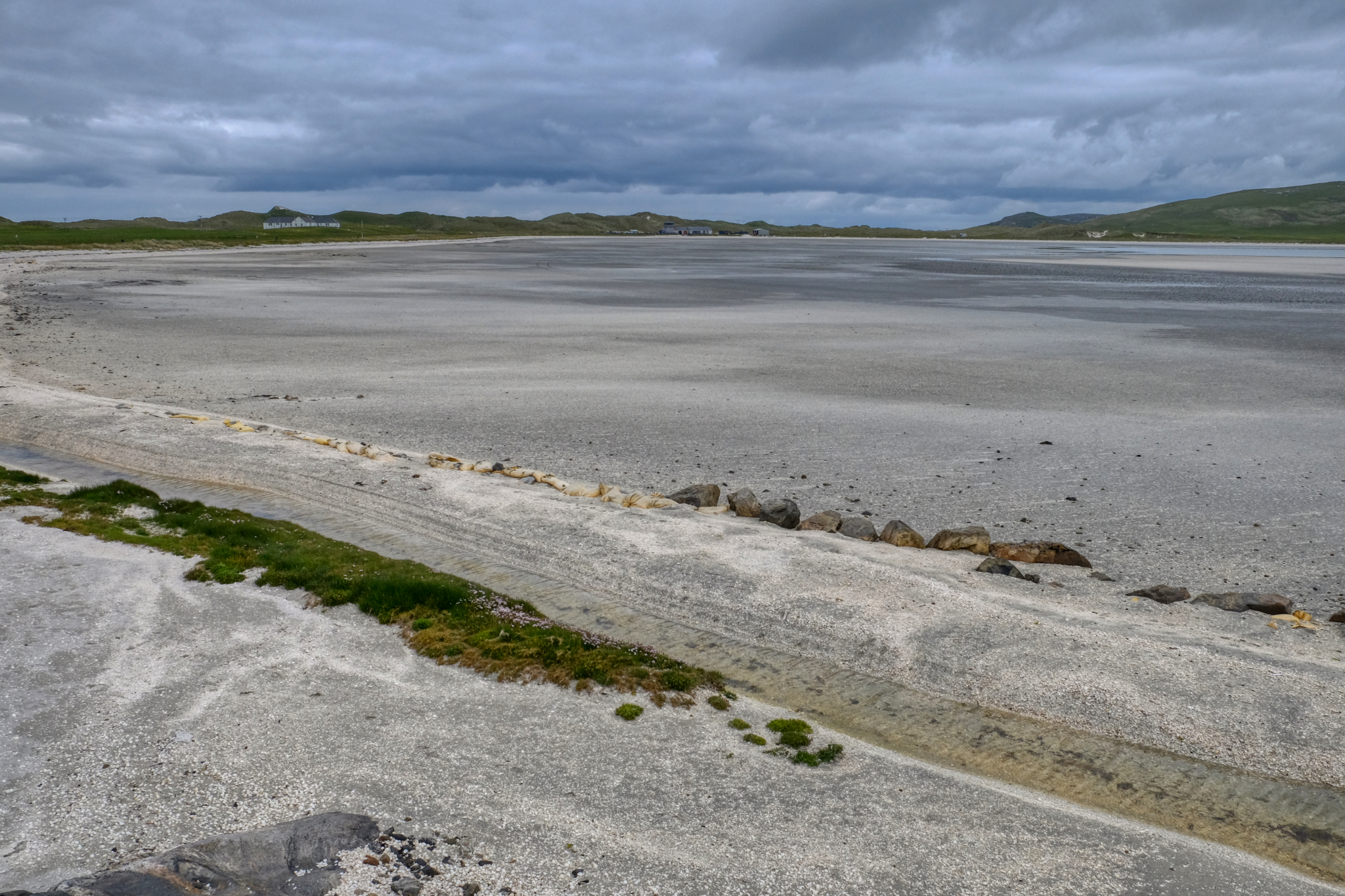 A vast stretch of the white sandy beach of a bay at low tide. Barra Airport in the background.
A vast stretch of the white sandy beach of a bay at low tide. Barra Airport in the background.
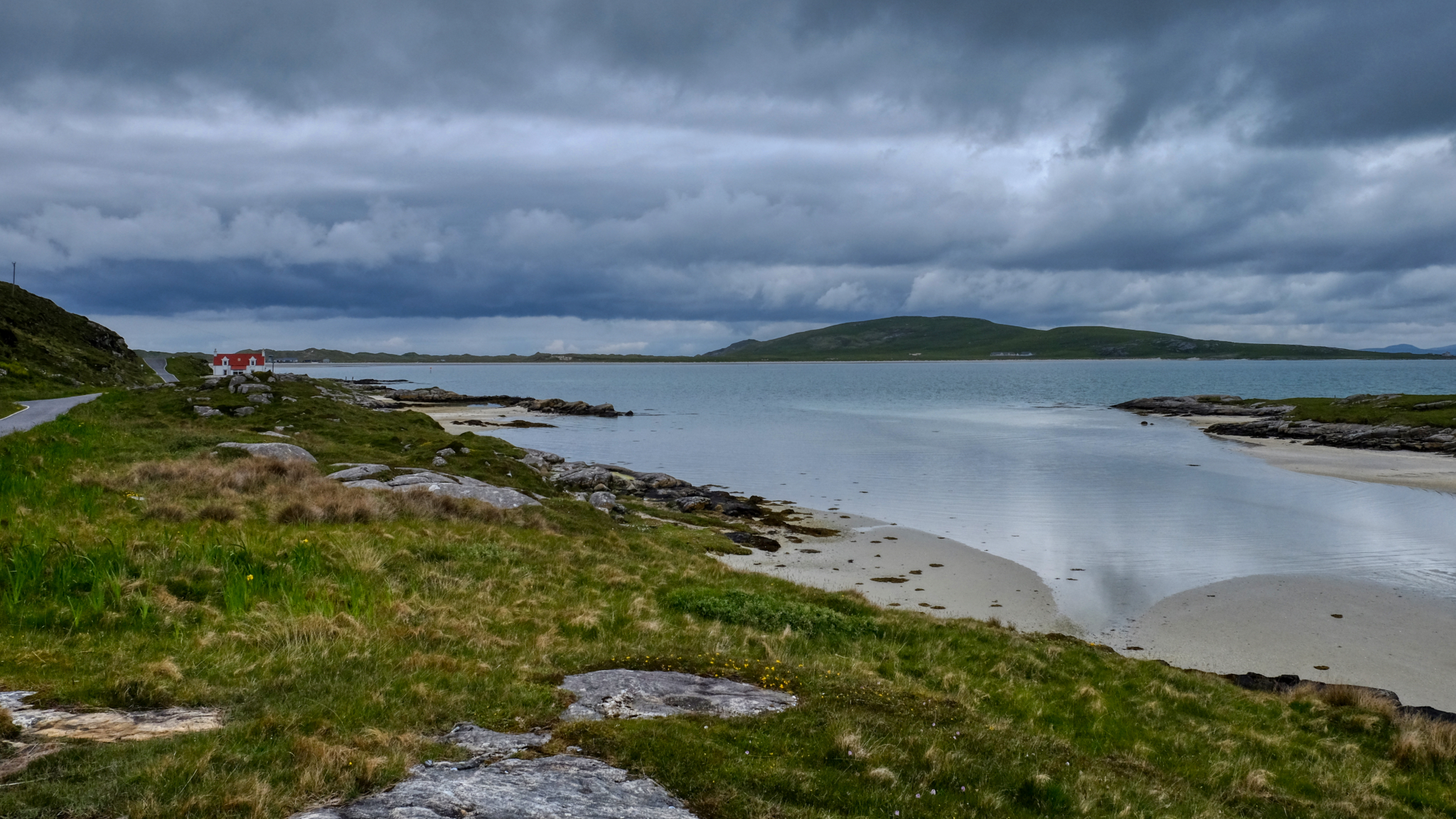 The sight of the small airport drew our attention and we drove along the bay to take a better look.
The sight of the small airport drew our attention and we drove along the bay to take a better look.
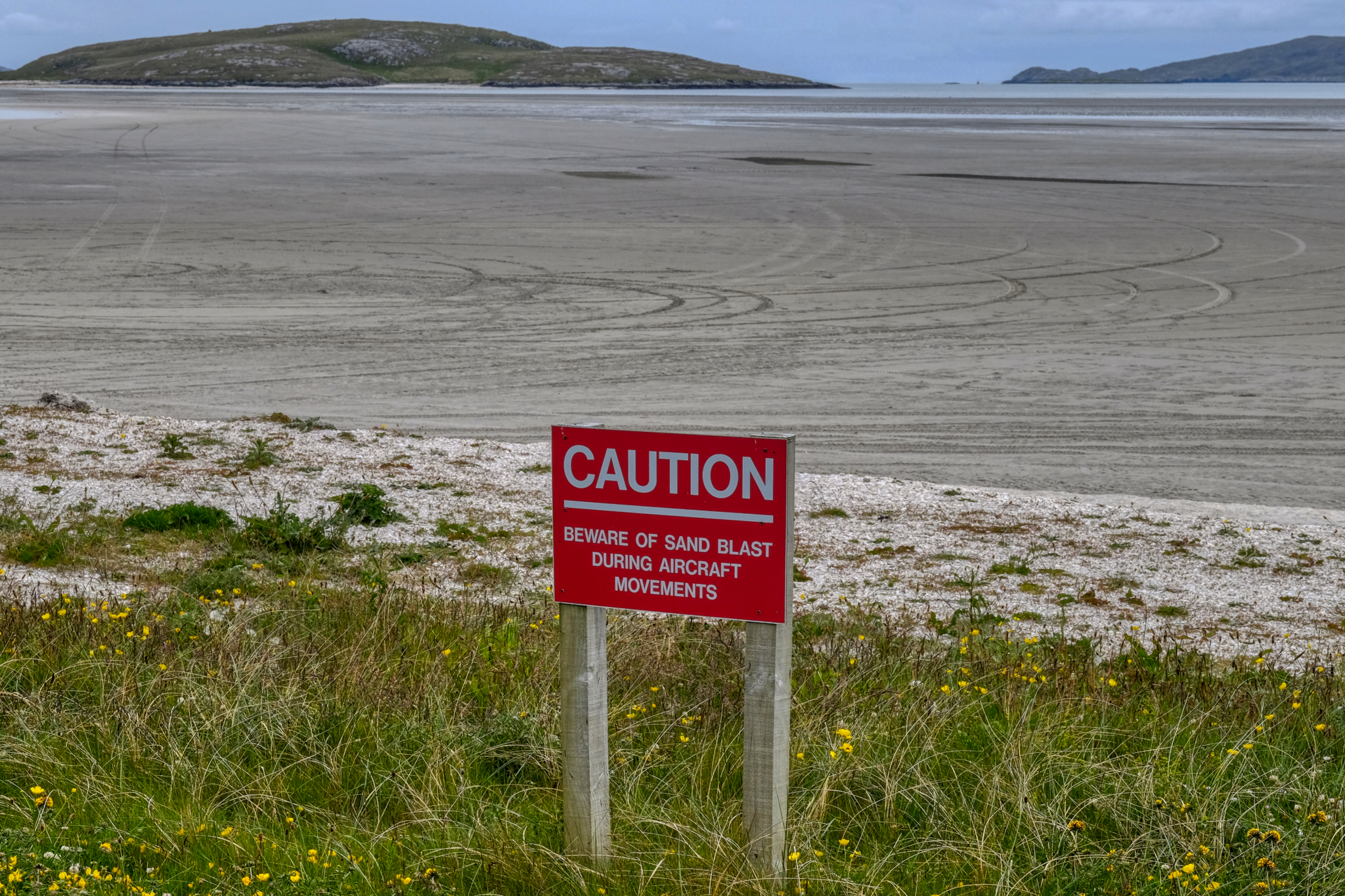 Barra Airport is the only airport in the world with regularly scheduled flights that use a sand beach for a landing strip!
Barra Airport is the only airport in the world with regularly scheduled flights that use a sand beach for a landing strip!
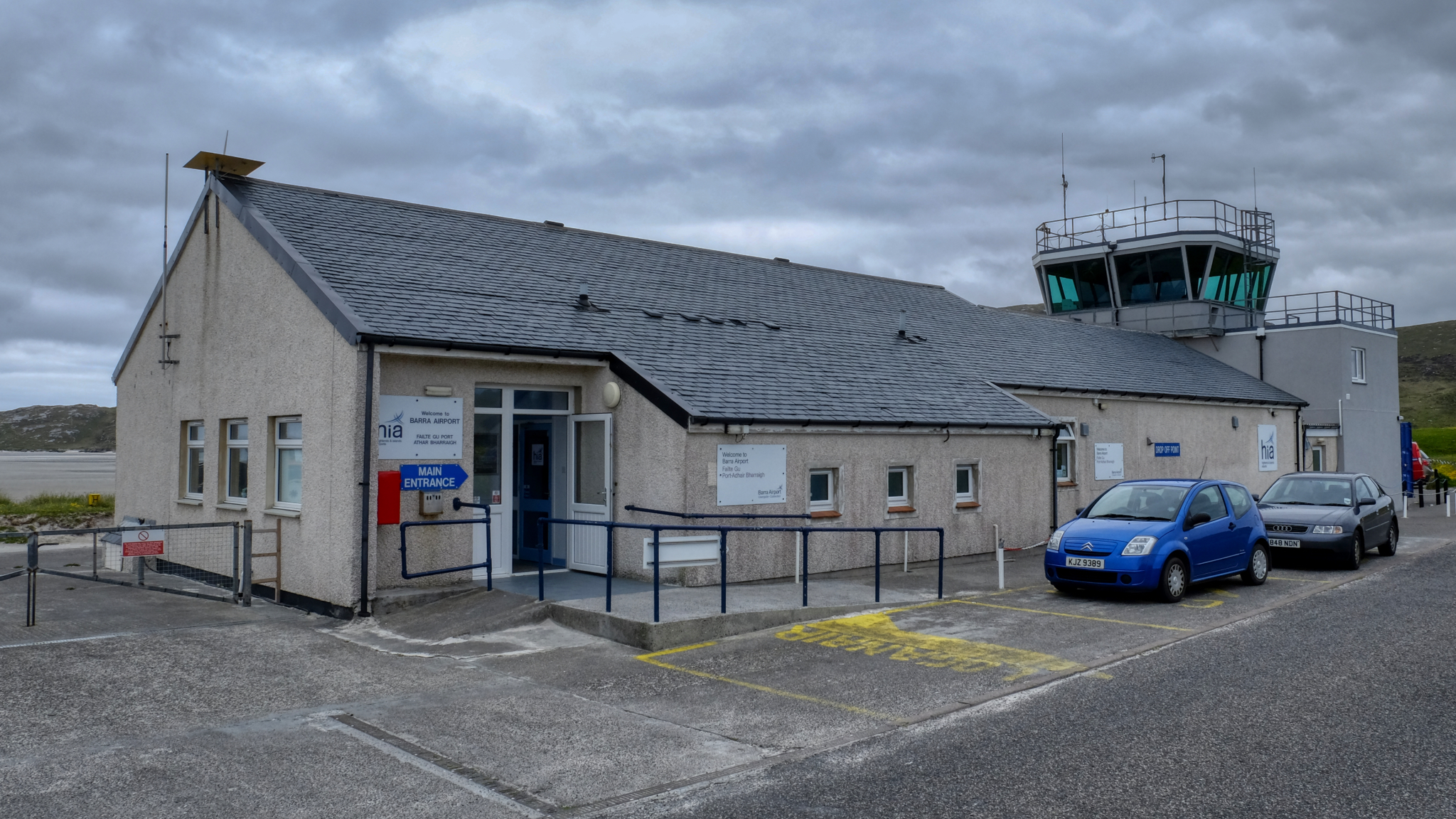 We went in the Barra Airport Terminal . . . for a cup of coffee and a snack. While we were there many people started to show up. There was a plane expected any minute. We stayed to see the big event!
We went in the Barra Airport Terminal . . . for a cup of coffee and a snack. While we were there many people started to show up. There was a plane expected any minute. We stayed to see the big event!
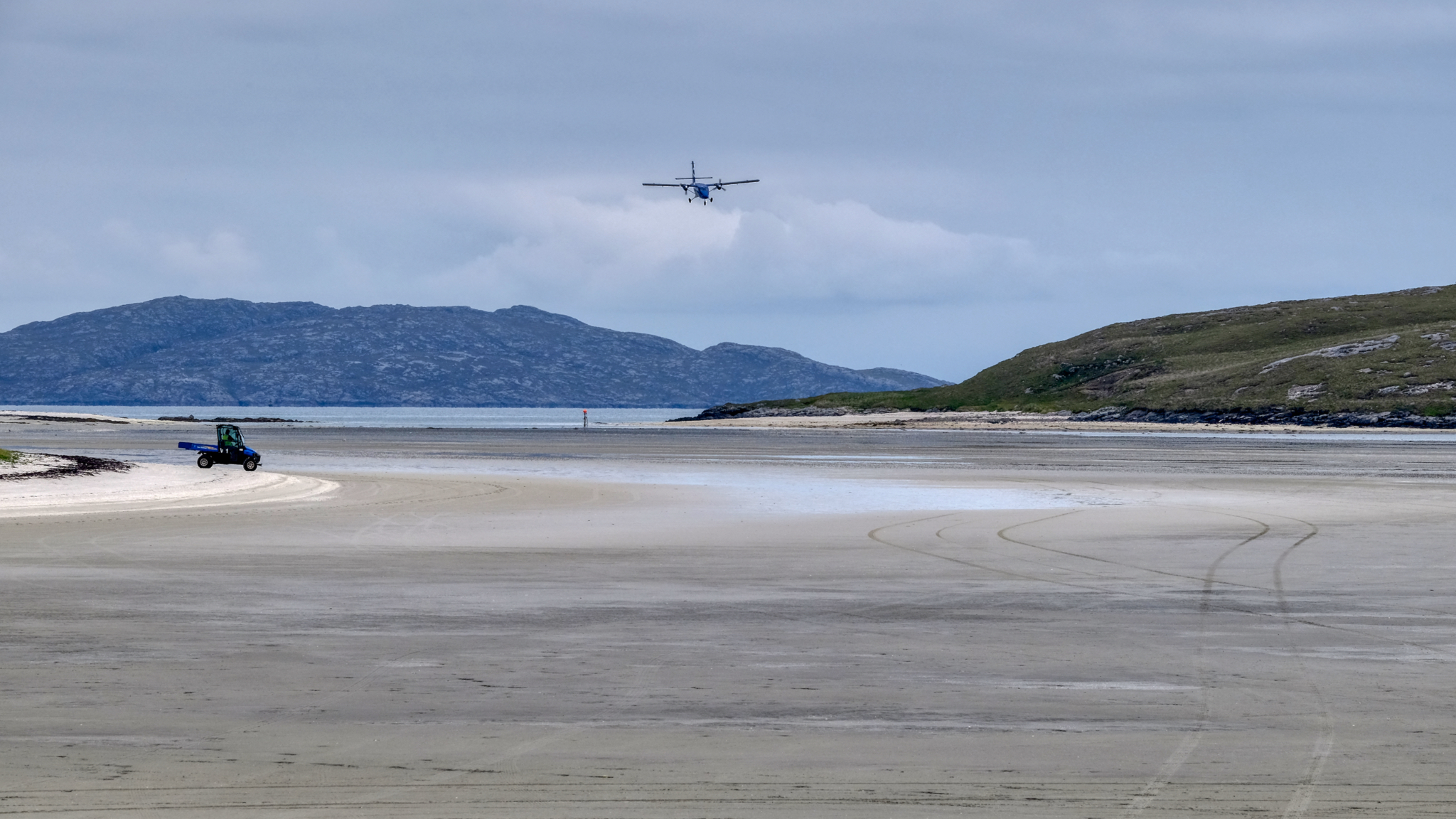 Someone called out, "There it is" . . . and we all turned to look at the airplane approaching from a distance.
Someone called out, "There it is" . . . and we all turned to look at the airplane approaching from a distance.
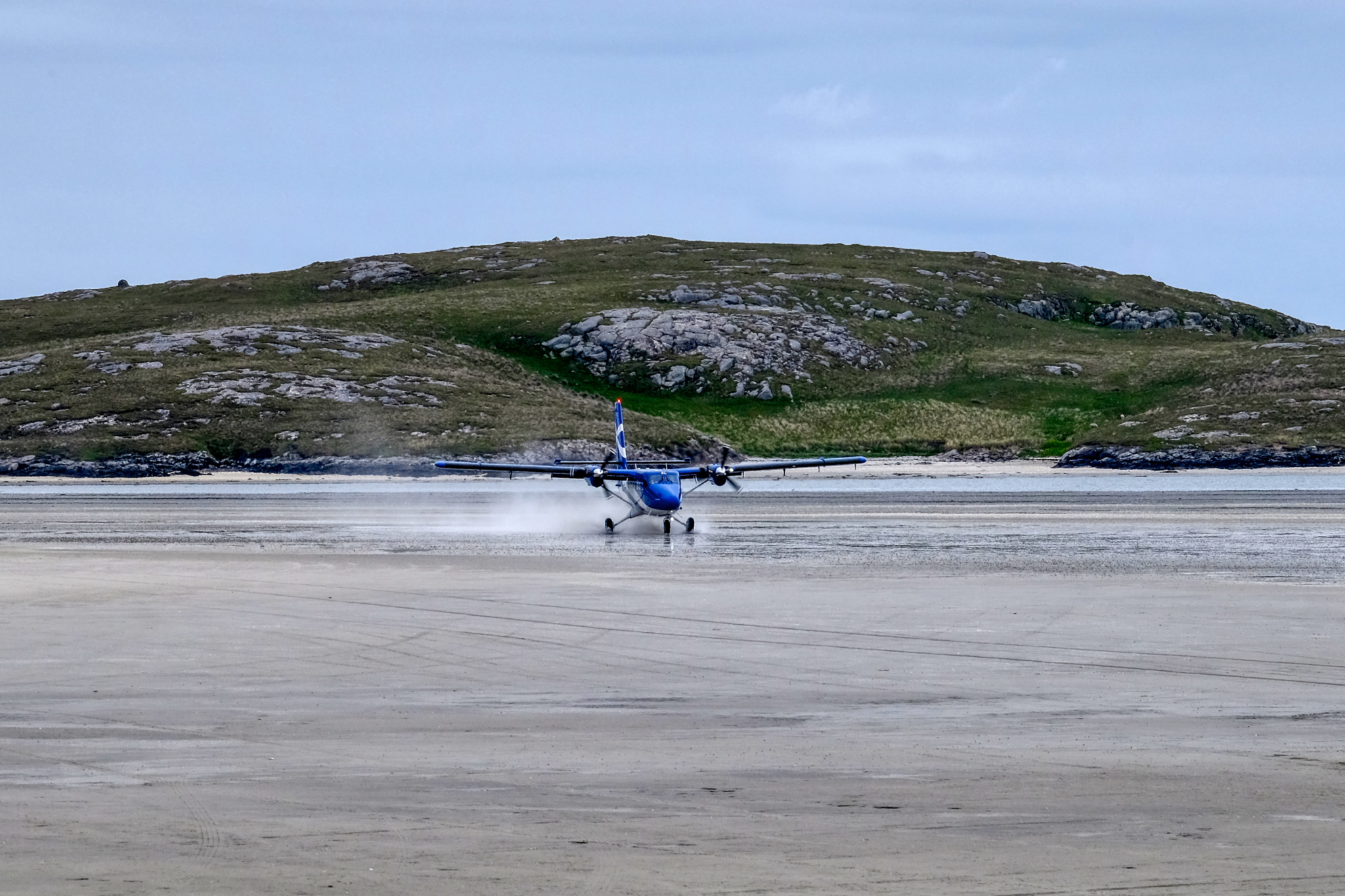 Landing on the wet beach . . .
Landing on the wet beach . . .
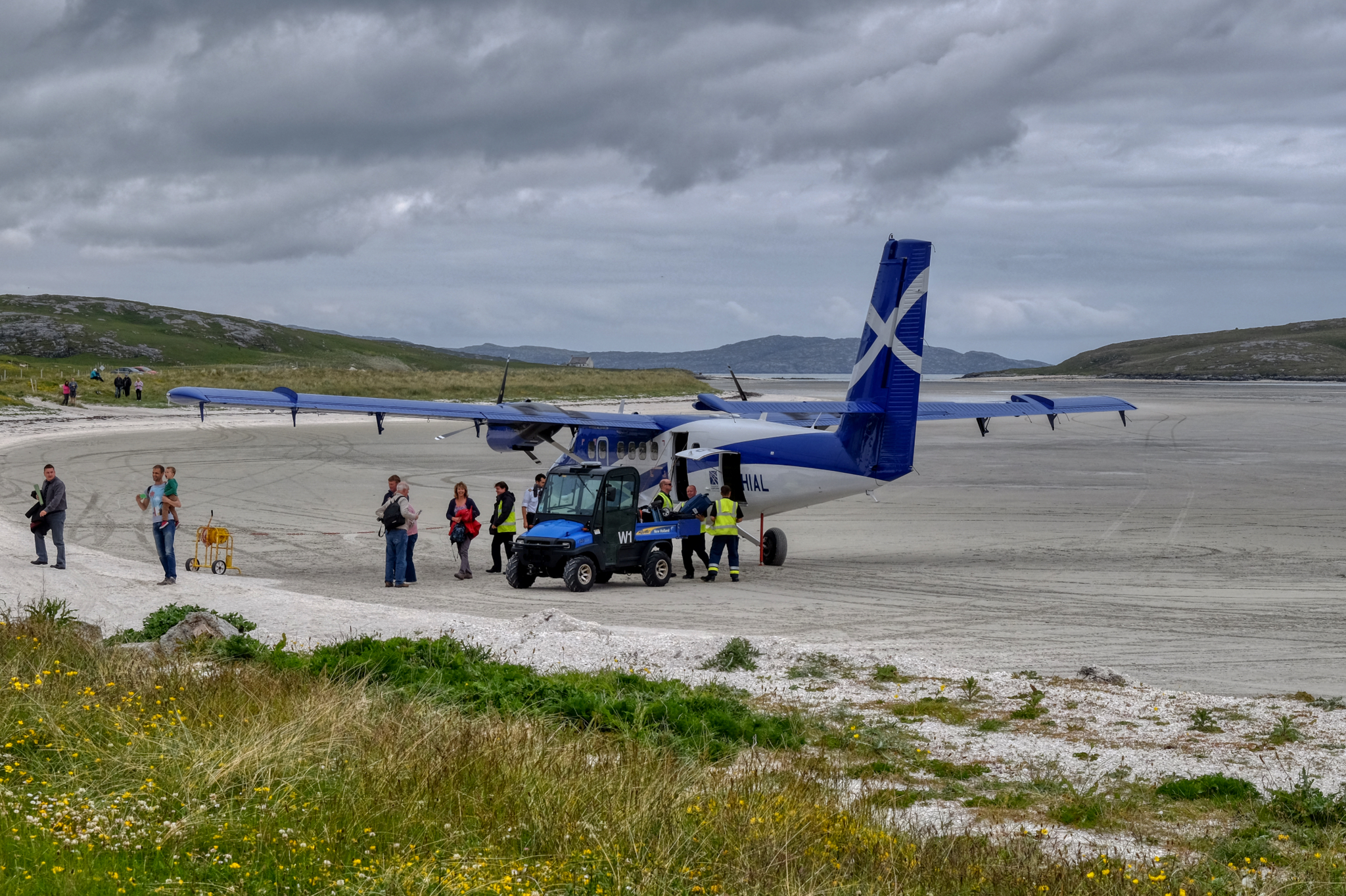 The passengers disembarked onto a sandy runway . . . as they have been doing since 1936. The only destination from this airport is Glasgow.
The passengers disembarked onto a sandy runway . . . as they have been doing since 1936. The only destination from this airport is Glasgow.
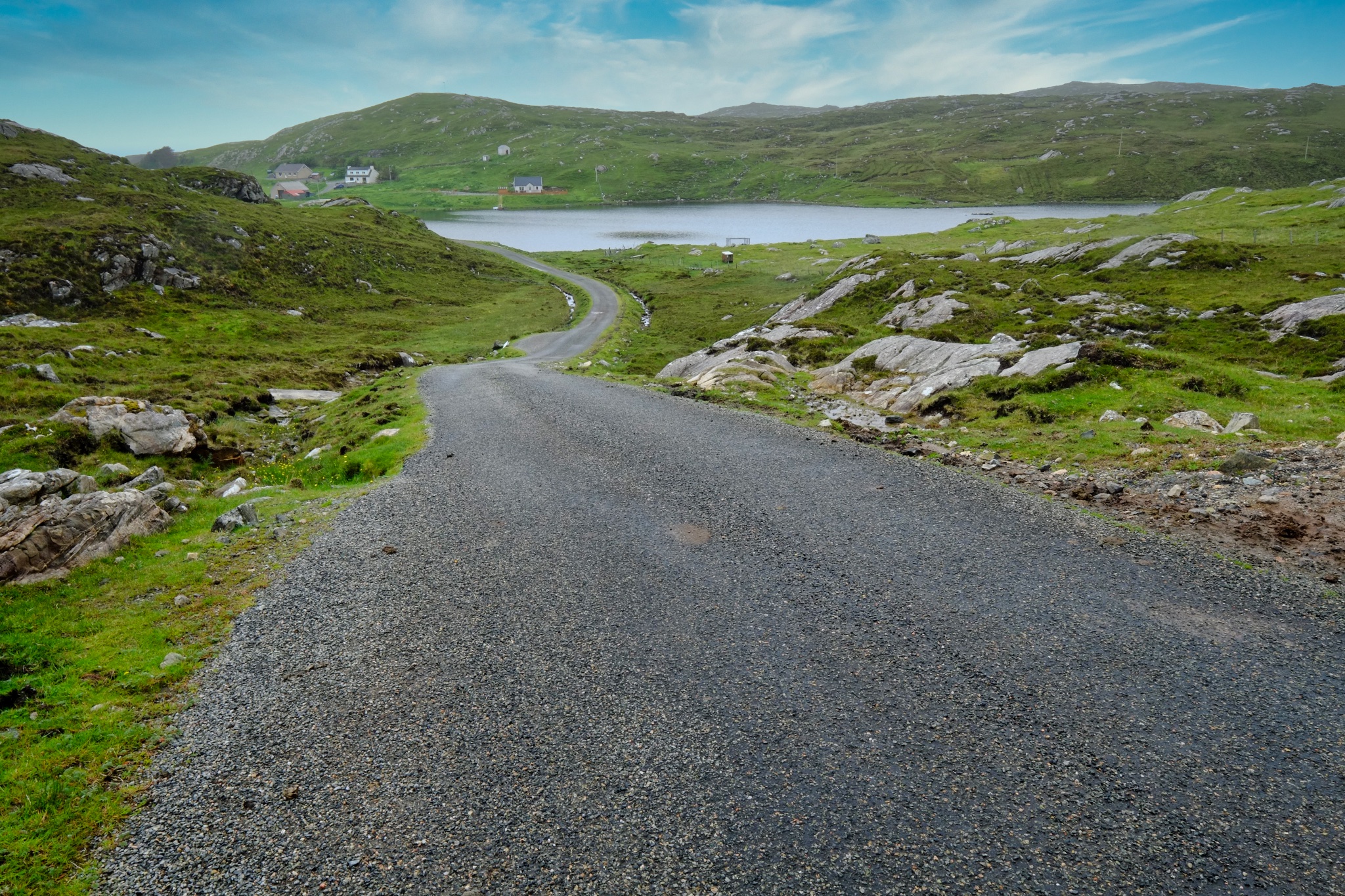 And onward we drove north on these marvelous one lane roads.
And onward we drove north on these marvelous one lane roads.
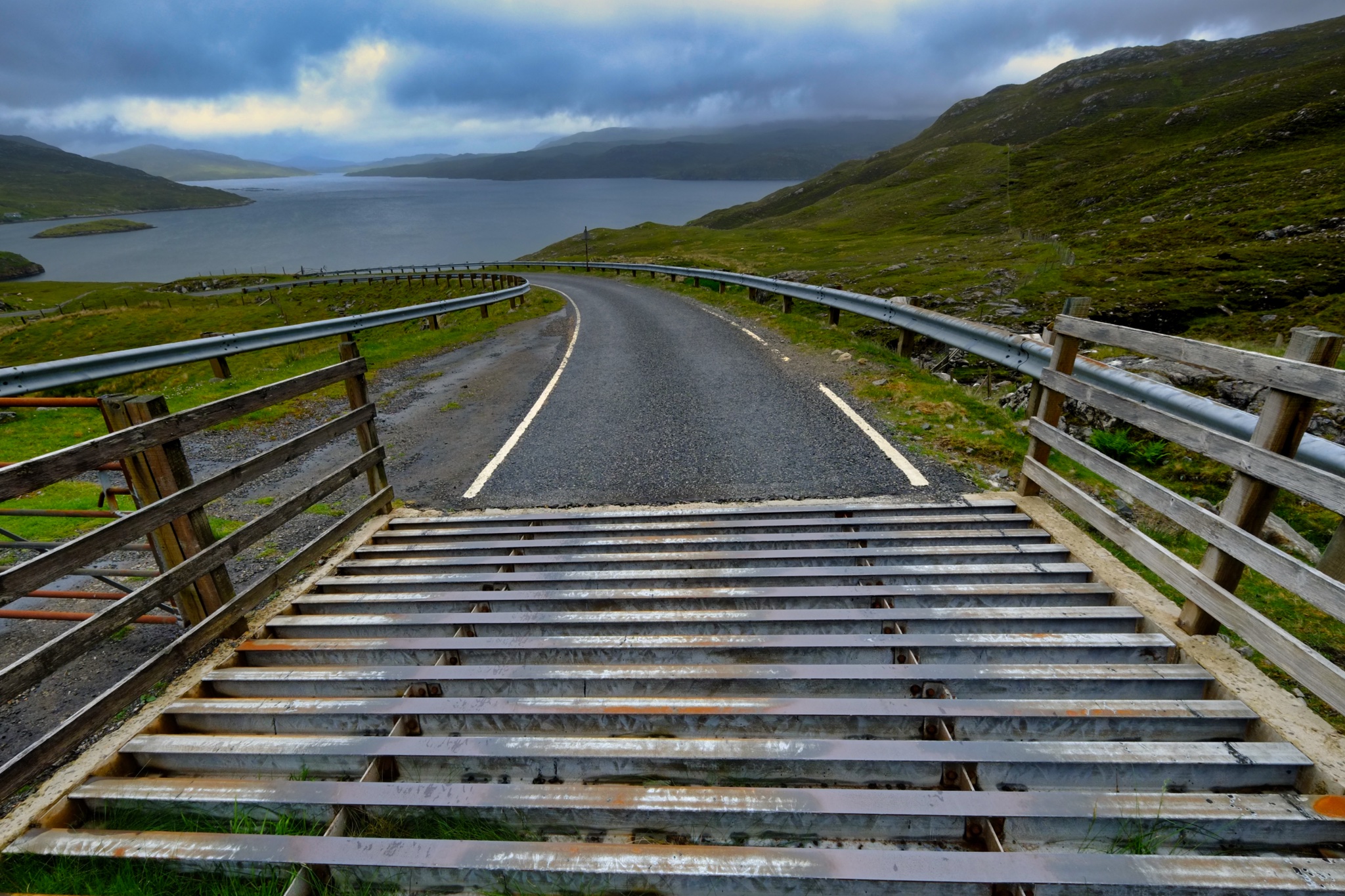 With sheep and Highland cows grazing everywhere, we encountered many of these 'cattle guards.'
With sheep and Highland cows grazing everywhere, we encountered many of these 'cattle guards.'
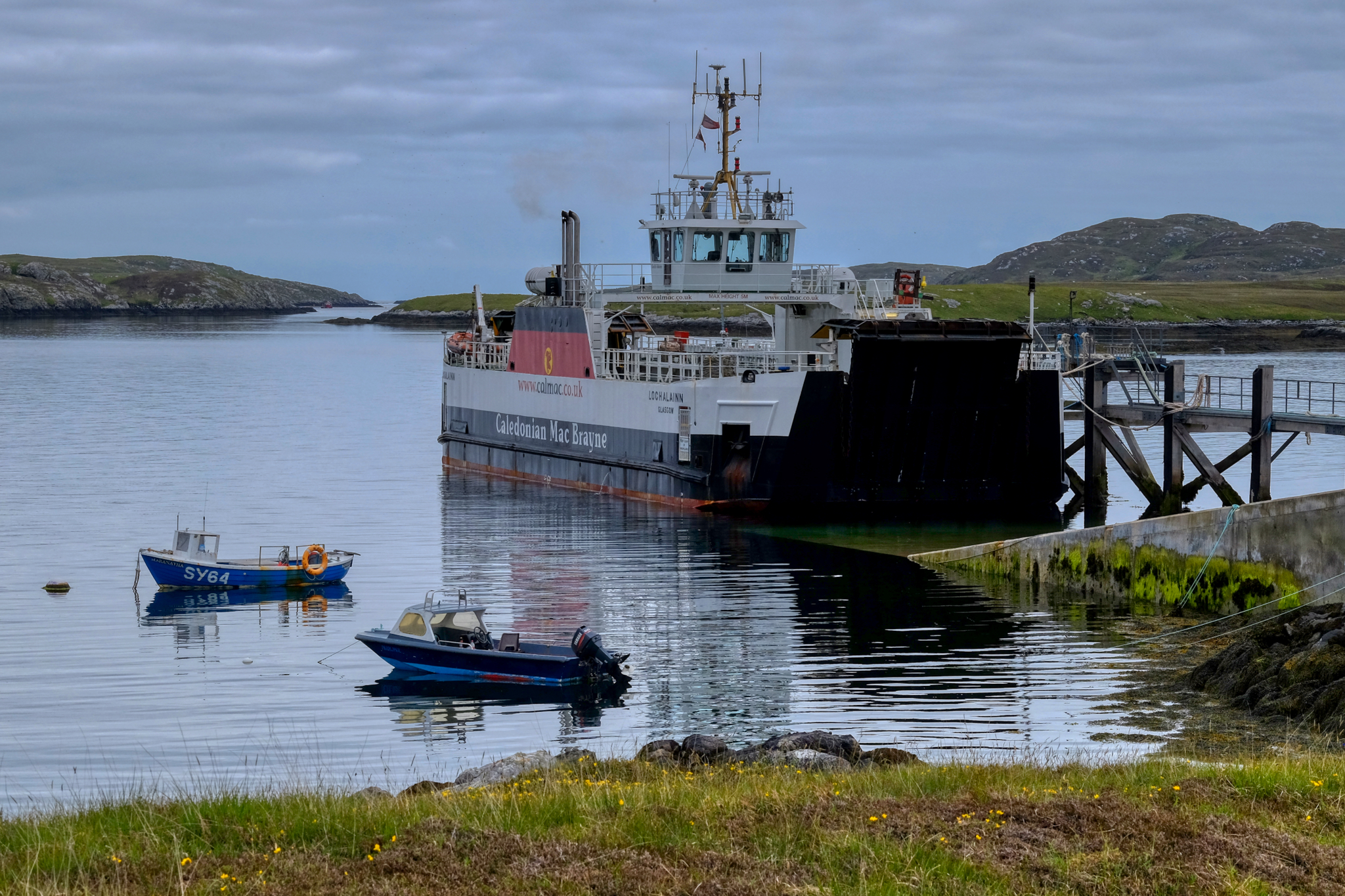 At the northern tip of Barra Island we reached the Ardmhor to Eriskay ferry. There are 5 round trips a day, each carrying only 18 vehicles. With only 90 possible places on this ferry to drive north up through the length of the Outer Hebrides, it is important to book in advance. We had.
At the northern tip of Barra Island we reached the Ardmhor to Eriskay ferry. There are 5 round trips a day, each carrying only 18 vehicles. With only 90 possible places on this ferry to drive north up through the length of the Outer Hebrides, it is important to book in advance. We had.
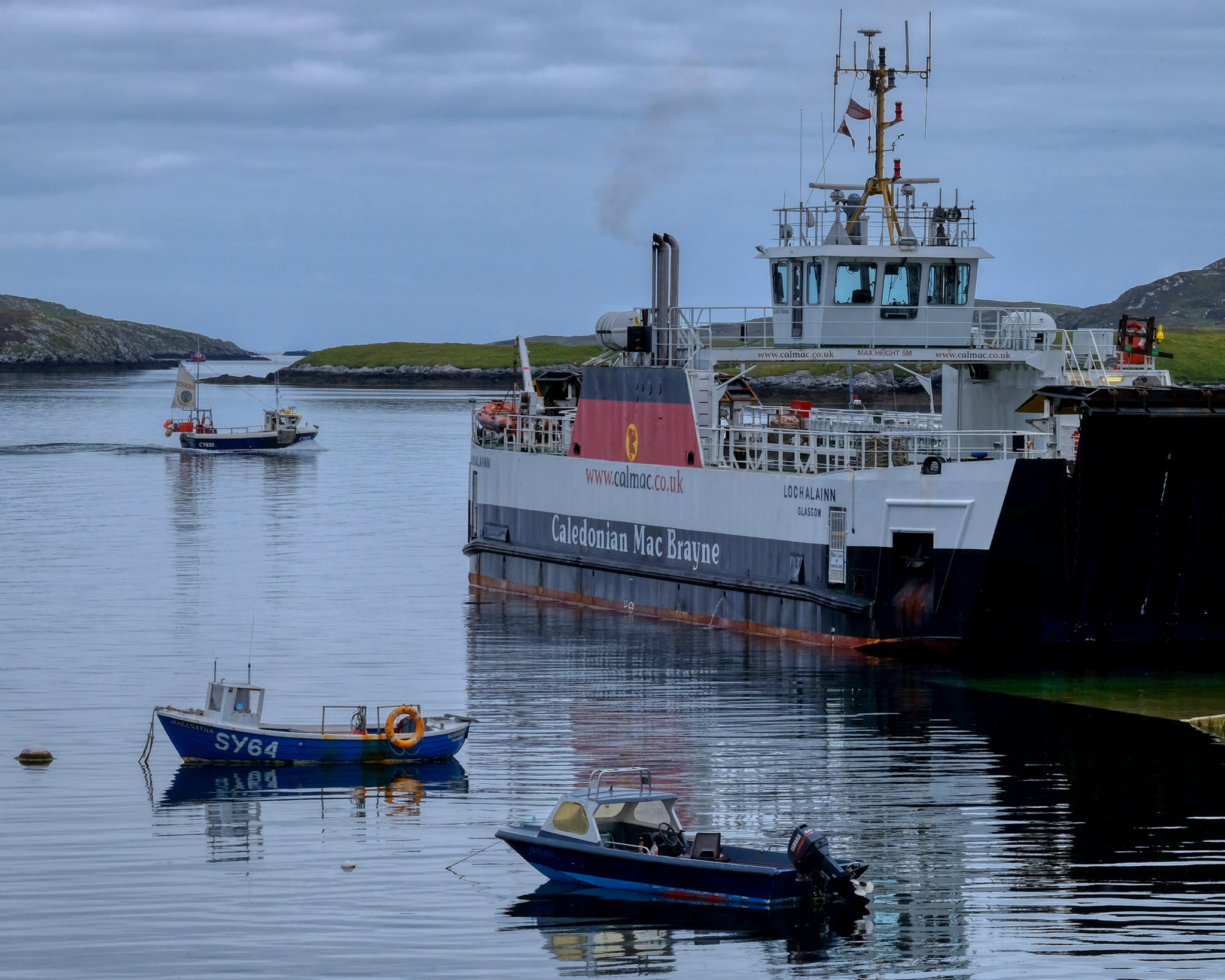 We arrived at the ferry terminal a little early . . . which allowed me some time to explore the area.
We arrived at the ferry terminal a little early . . . which allowed me some time to explore the area.
 Such a remote and fascinating place.
Such a remote and fascinating place.
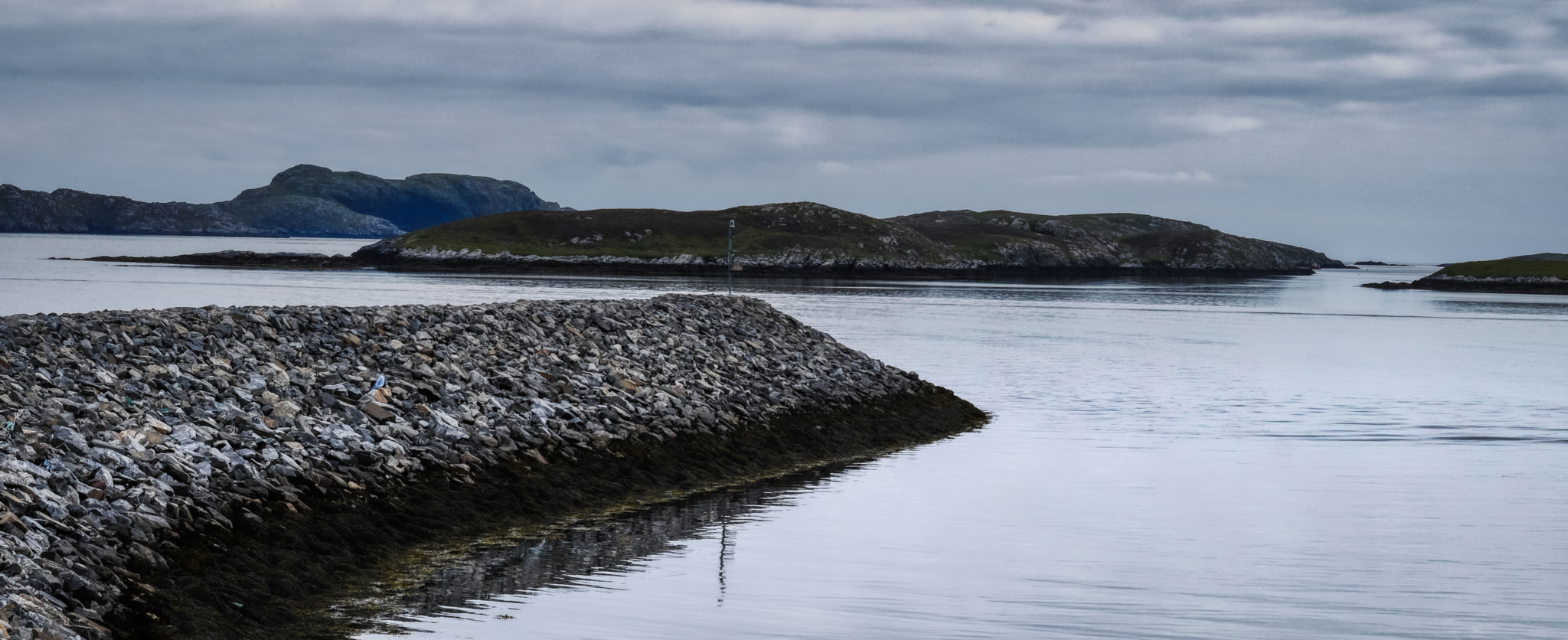 The sea always framed by outcrops of stone islands . . .
The sea always framed by outcrops of stone islands . . .
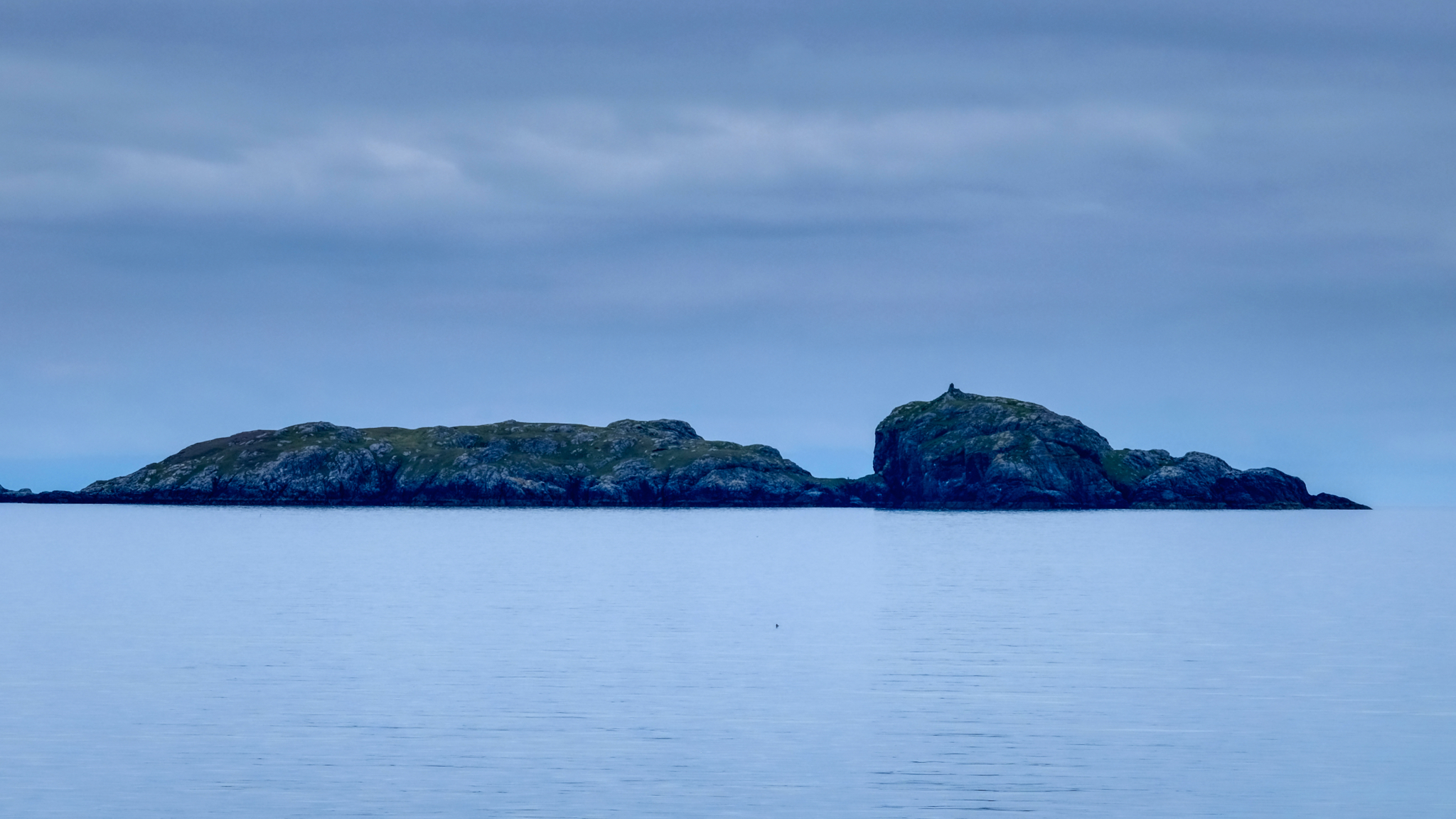 The passage between Barra Island and Eriskay Island was eerily mystical . . .
The passage between Barra Island and Eriskay Island was eerily mystical . . .
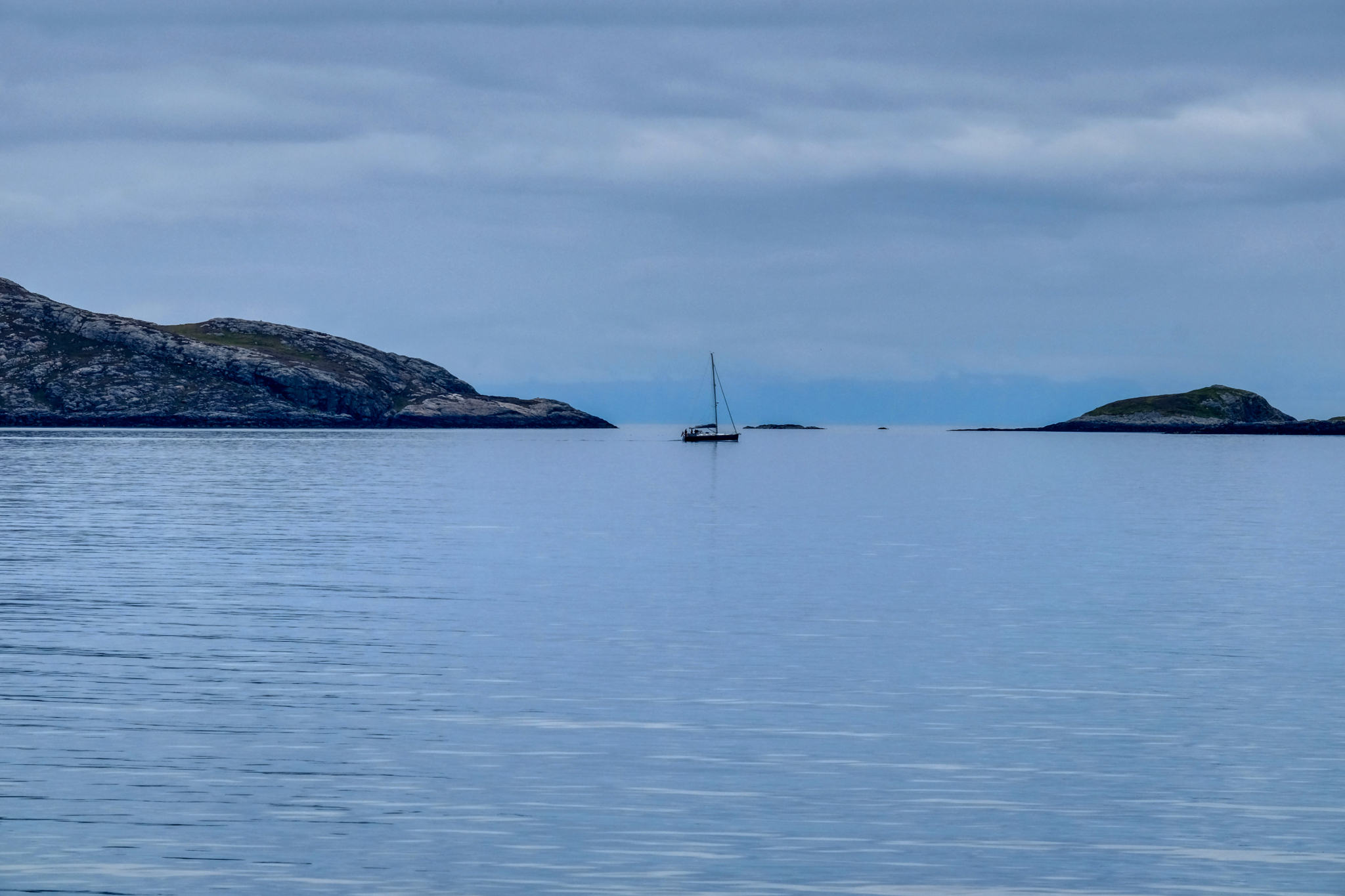 My memory of the passage was of the total silence . . . hardly a sound beyond the quiet thumping of the ferry diesel at work. Calm. Remote.
My memory of the passage was of the total silence . . . hardly a sound beyond the quiet thumping of the ferry diesel at work. Calm. Remote.
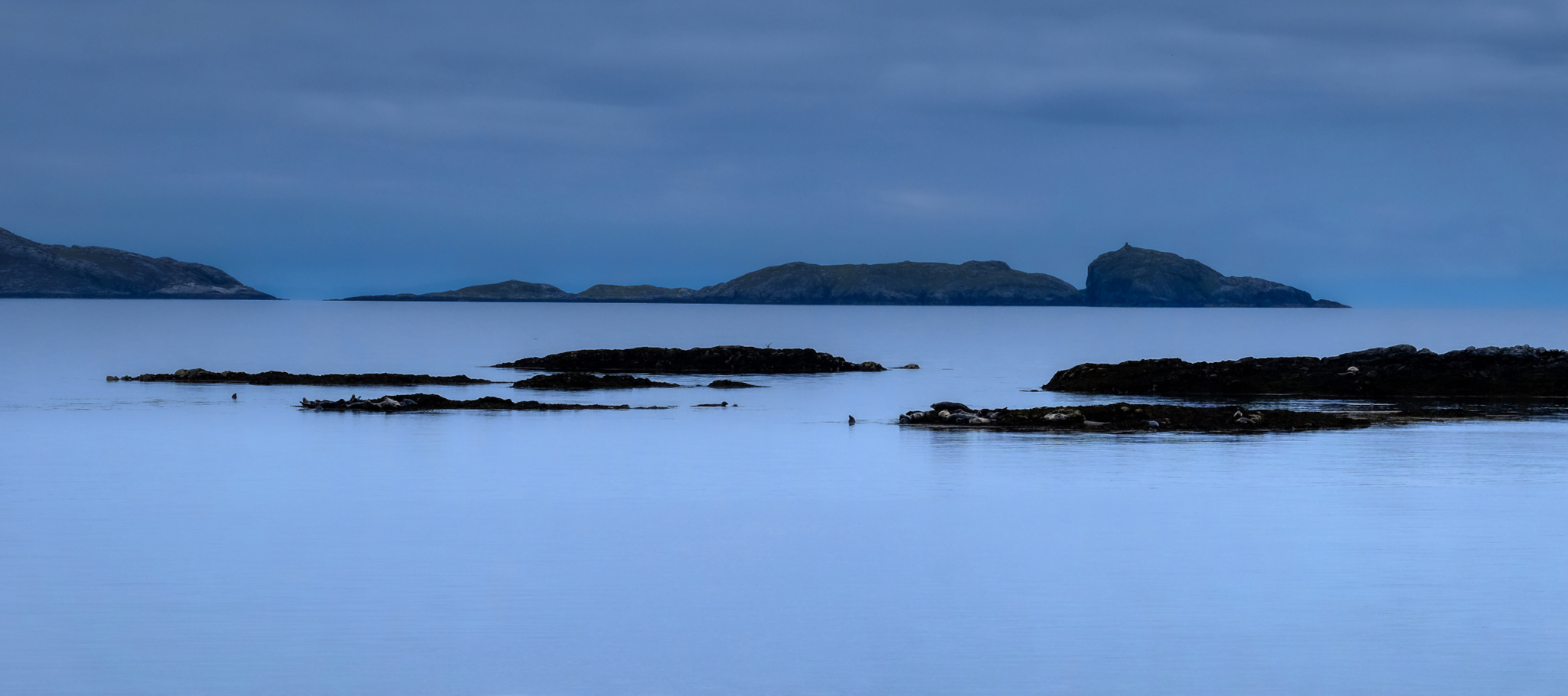 There was a bit of commotion among my fellow passengers. Someone remarked, "Look. Seals." And there they were.
There was a bit of commotion among my fellow passengers. Someone remarked, "Look. Seals." And there they were.
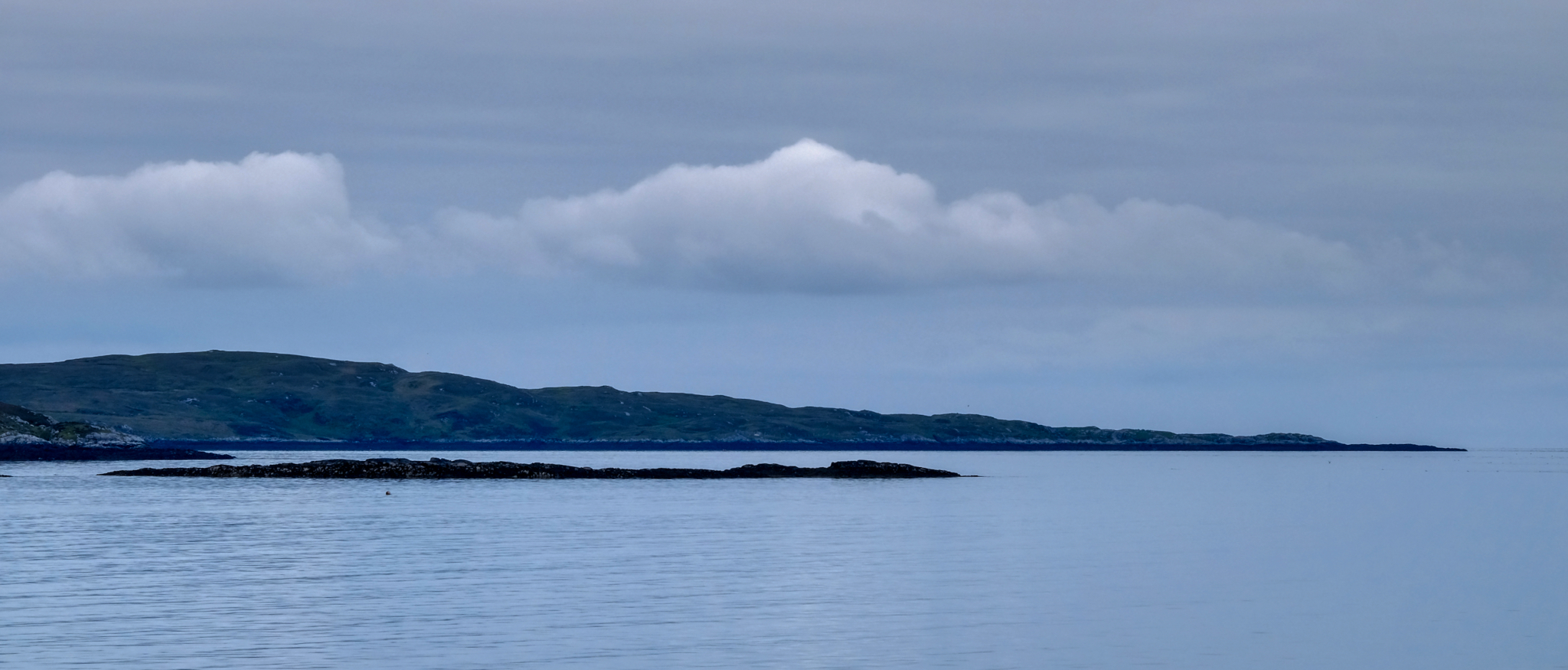 A strange, captivating, natural beauty.
A strange, captivating, natural beauty.
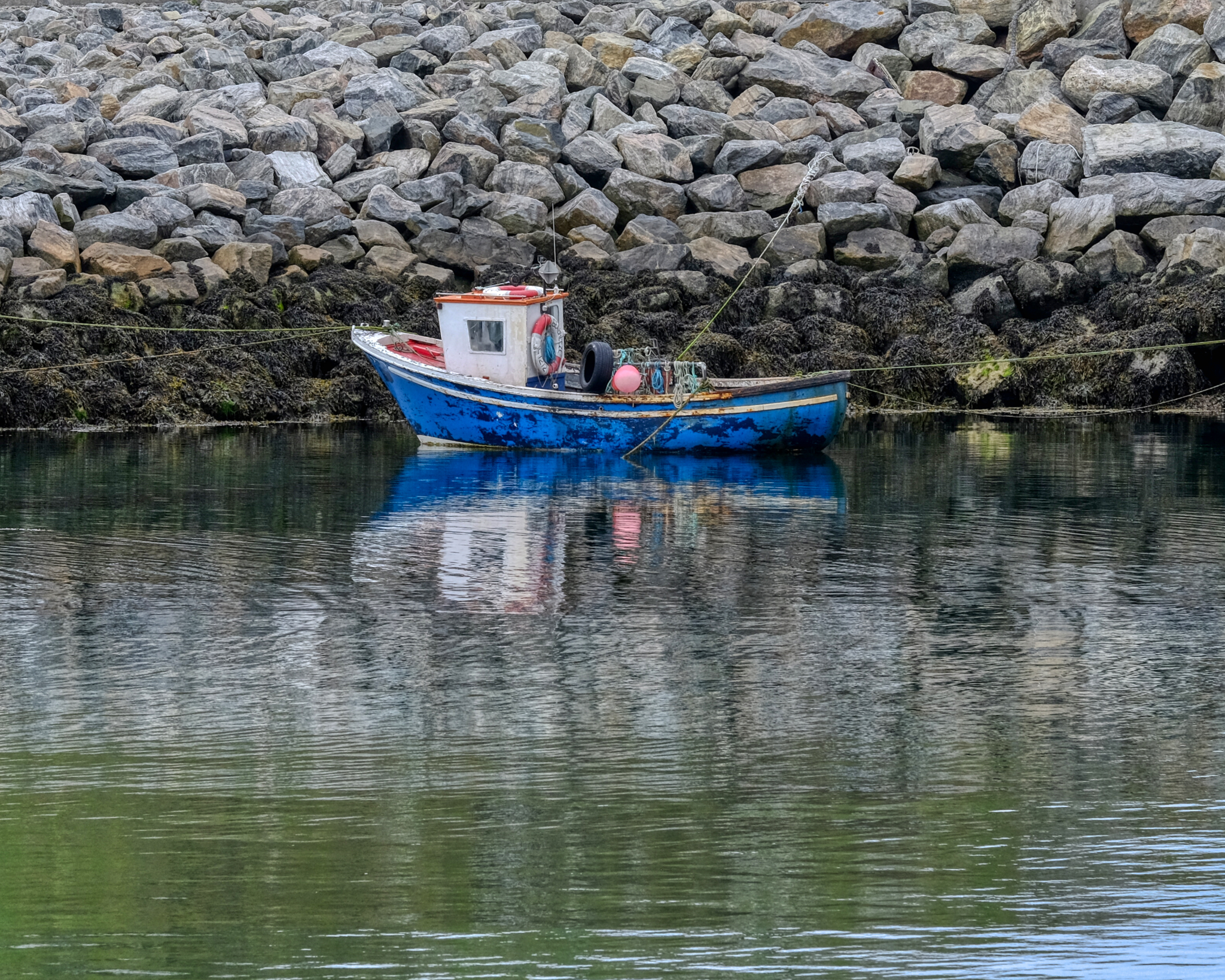 Arriving on the Isle of Eriskay.
Arriving on the Isle of Eriskay.
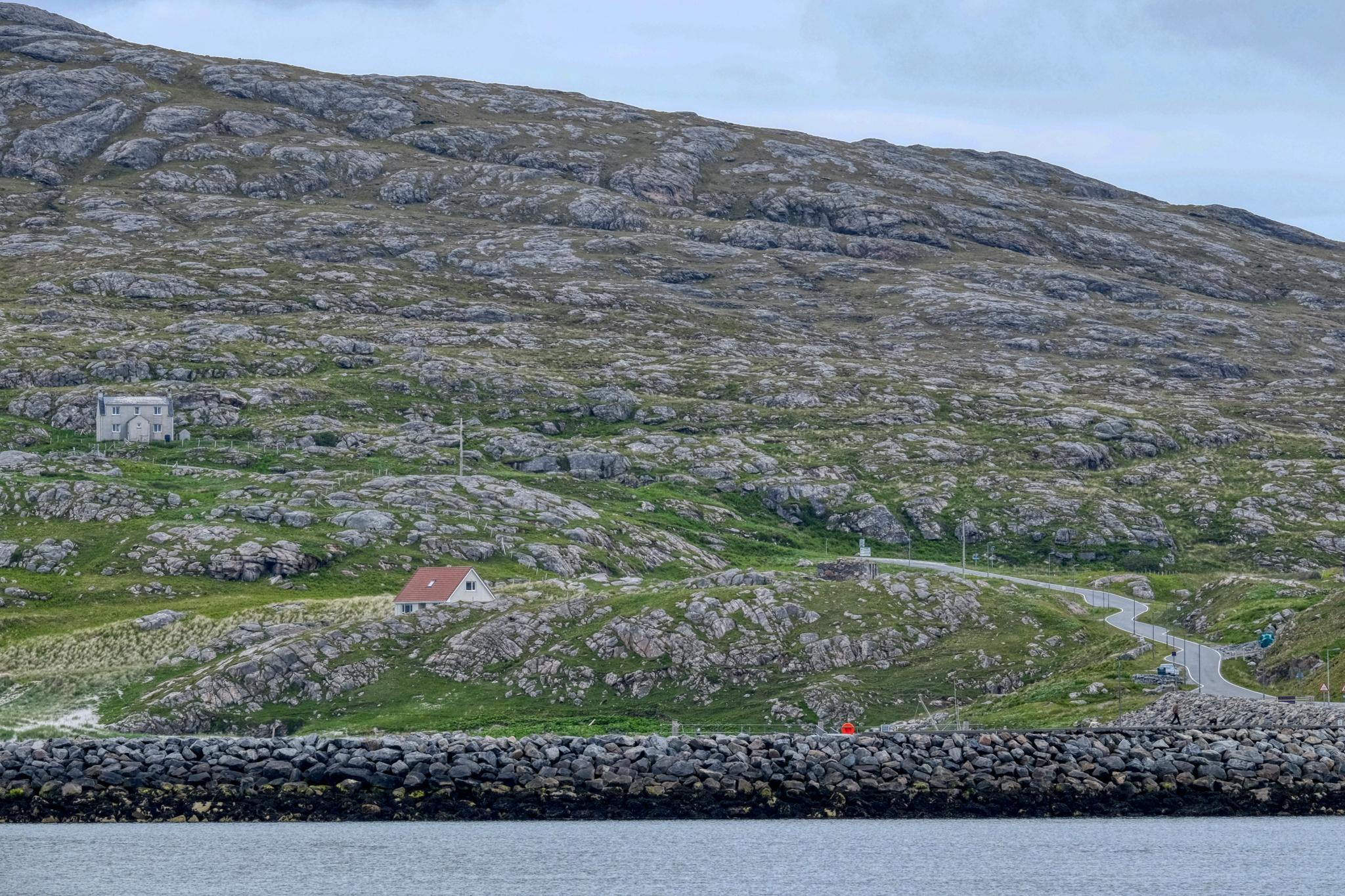 Rocky, barren hillside . . . and the one-lane road that will take us further up the Outer Hebrides chain of islands.
Rocky, barren hillside . . . and the one-lane road that will take us further up the Outer Hebrides chain of islands.
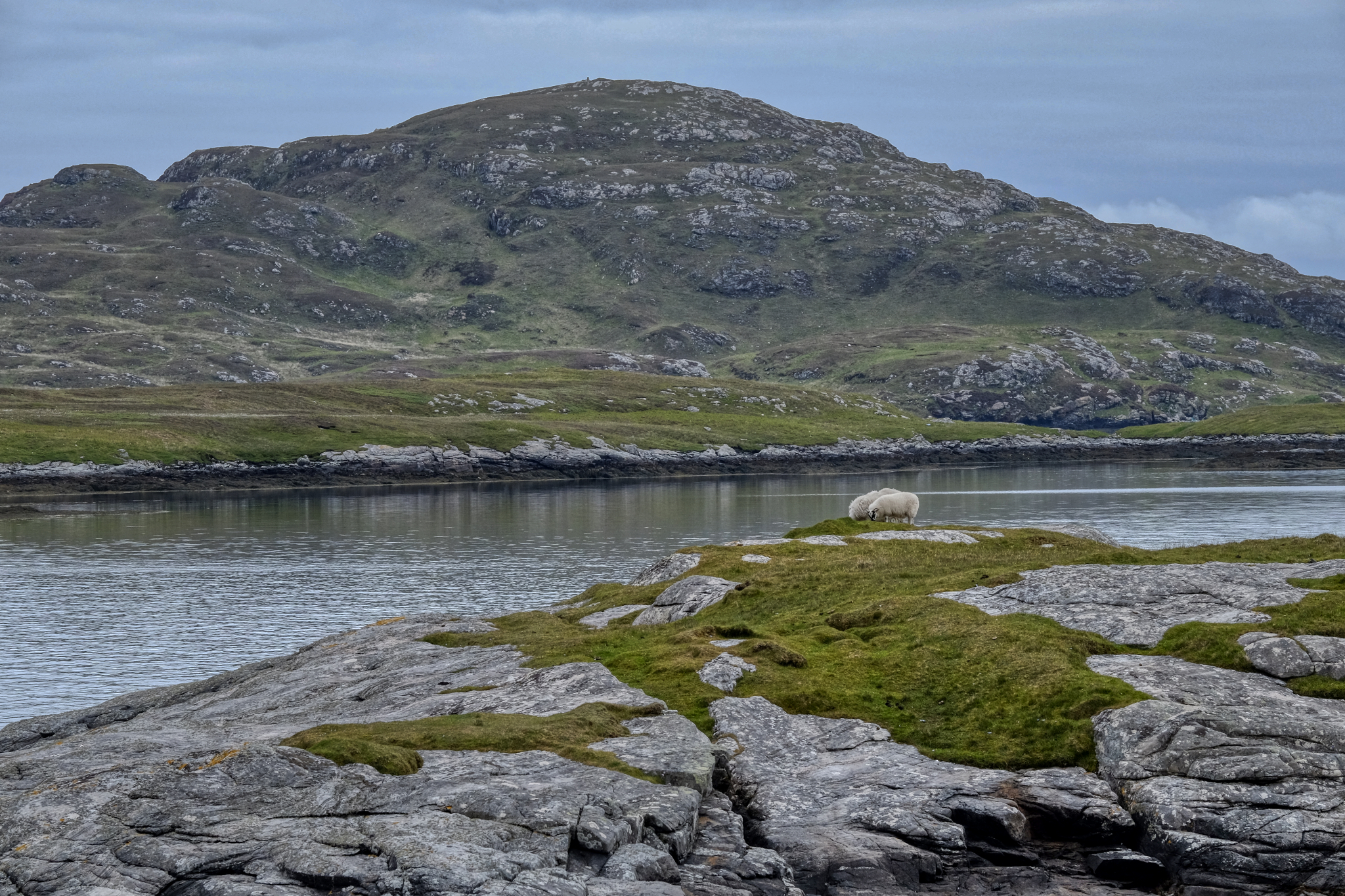 We quickly crossed Eriskay Island and drove up and across a causeway to South Uist Island.
We quickly crossed Eriskay Island and drove up and across a causeway to South Uist Island.
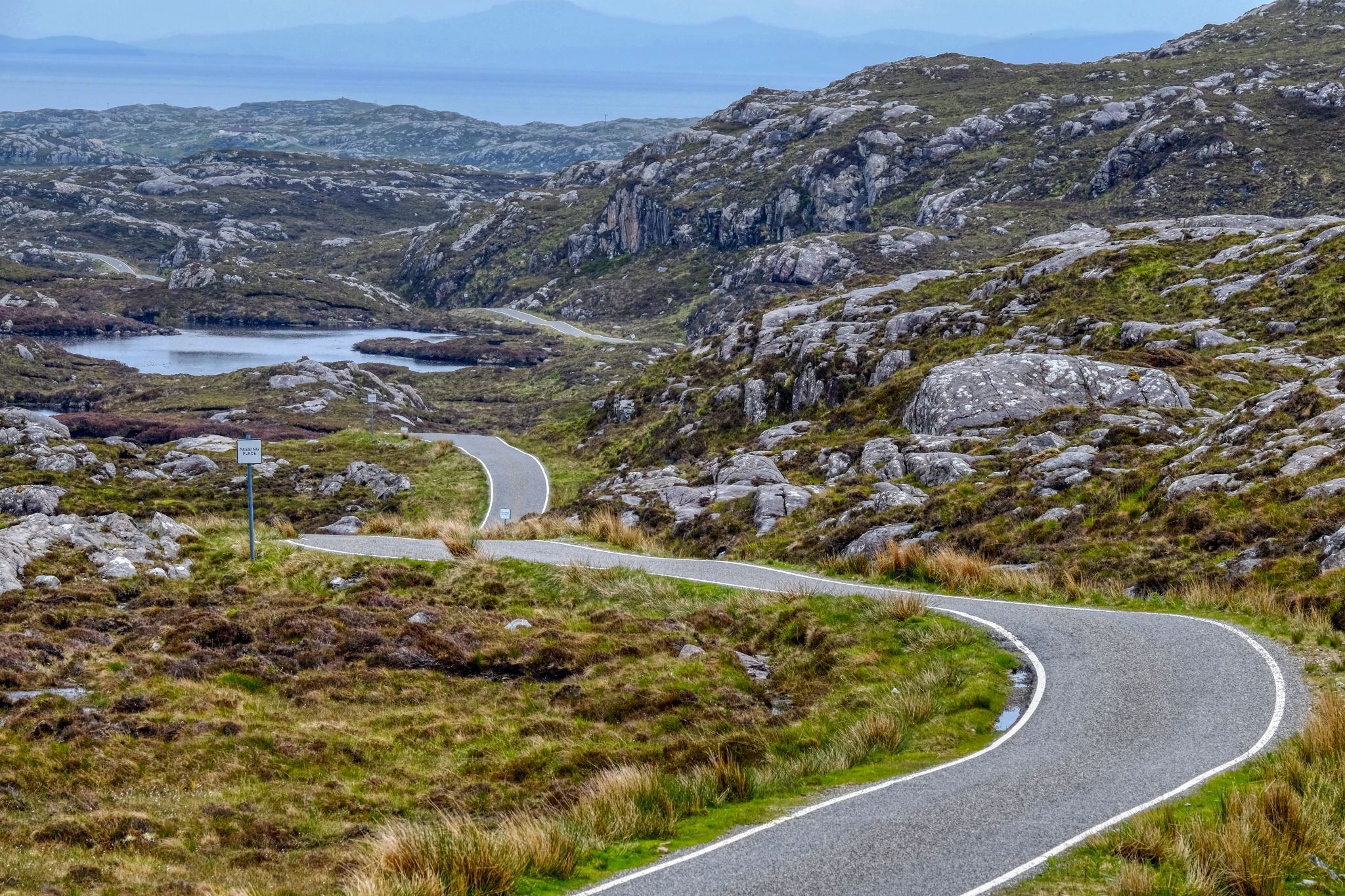 I absolutely loved driving on these narrow, winding, one-lane roads through this unique topography.
I absolutely loved driving on these narrow, winding, one-lane roads through this unique topography.
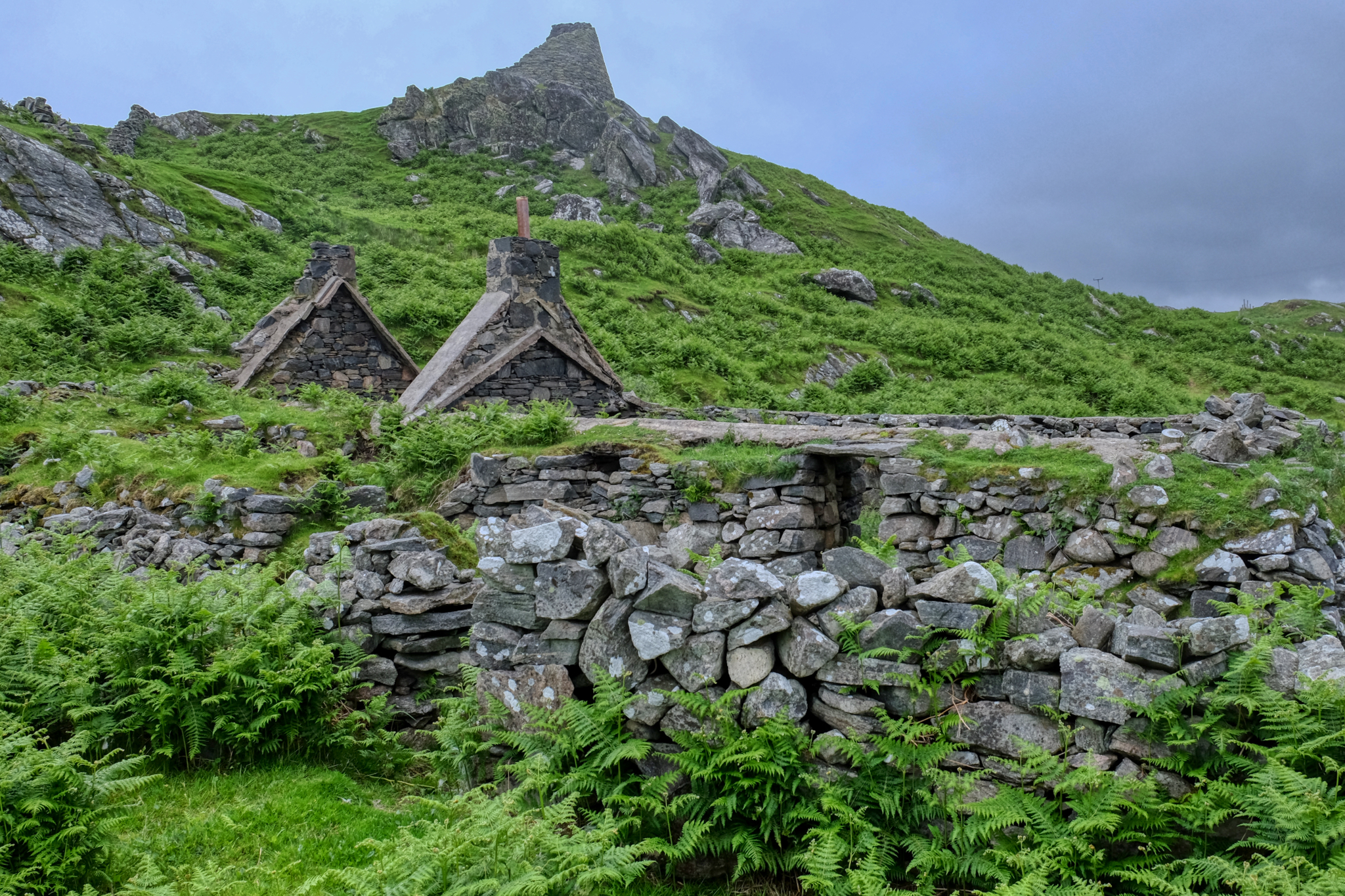 The remains of an old stone crofters house . . . and a stone tower on the hilltop.
The remains of an old stone crofters house . . . and a stone tower on the hilltop.
 Midsummer flowers, grey skies, dilapidated stone ruins . . . . The Isle of Lewis.
Midsummer flowers, grey skies, dilapidated stone ruins . . . . The Isle of Lewis.
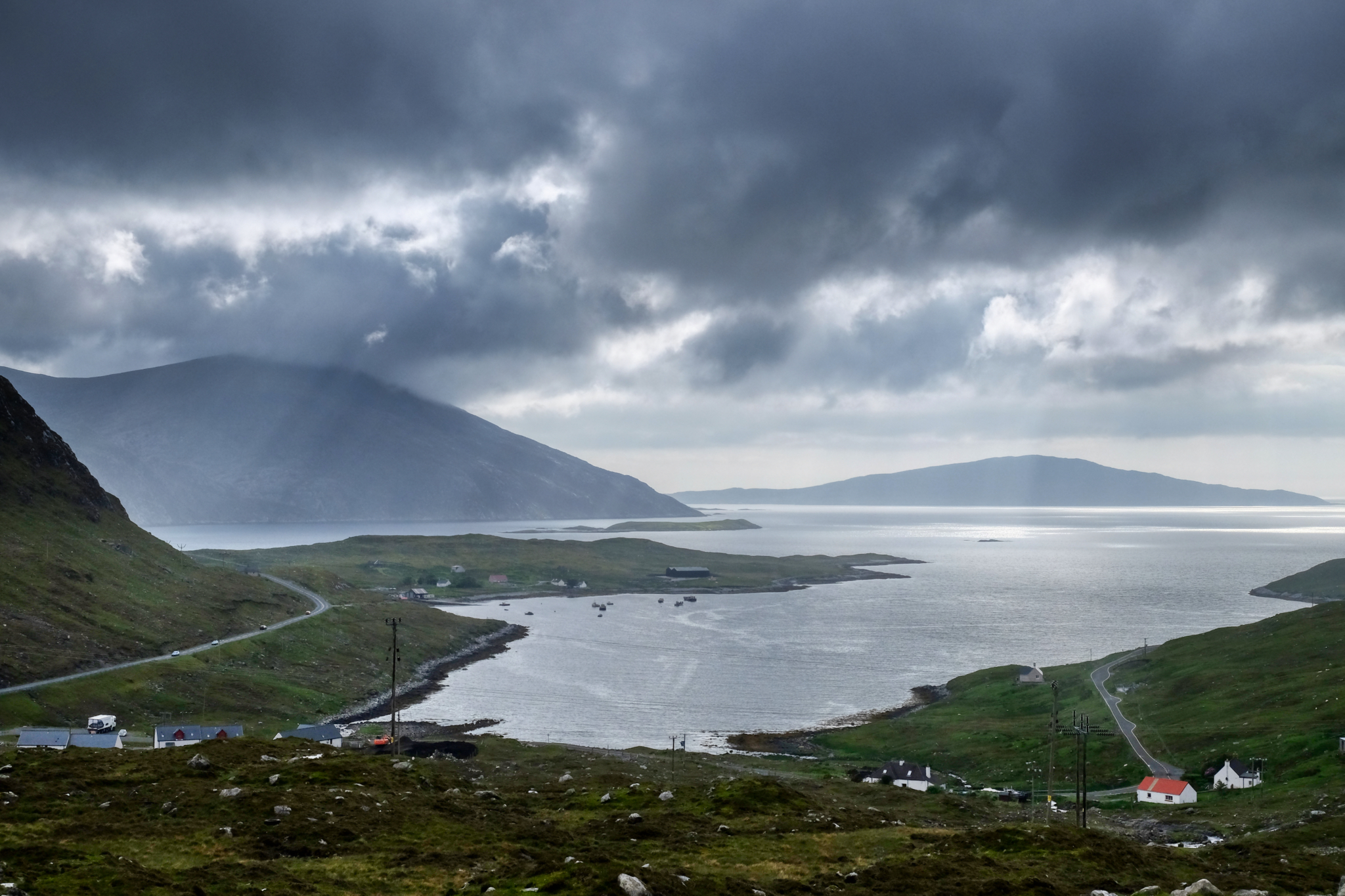 In and around mountain passes, sudden grand views out across the bays to the outlying islands. Magnificent scenery. Like no other place I have ever been.
In and around mountain passes, sudden grand views out across the bays to the outlying islands. Magnificent scenery. Like no other place I have ever been.
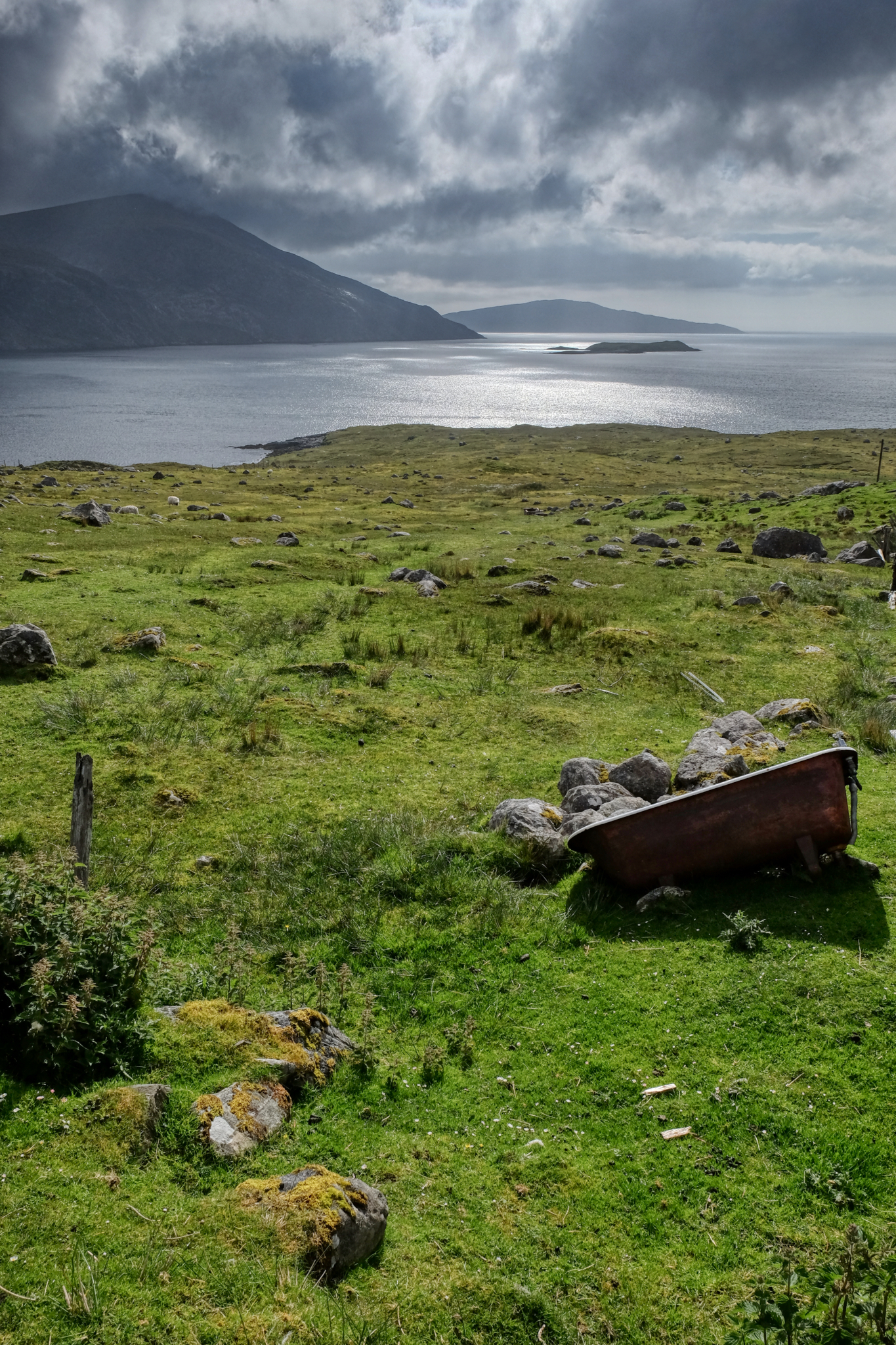 Grand views like no place else.
Grand views like no place else.
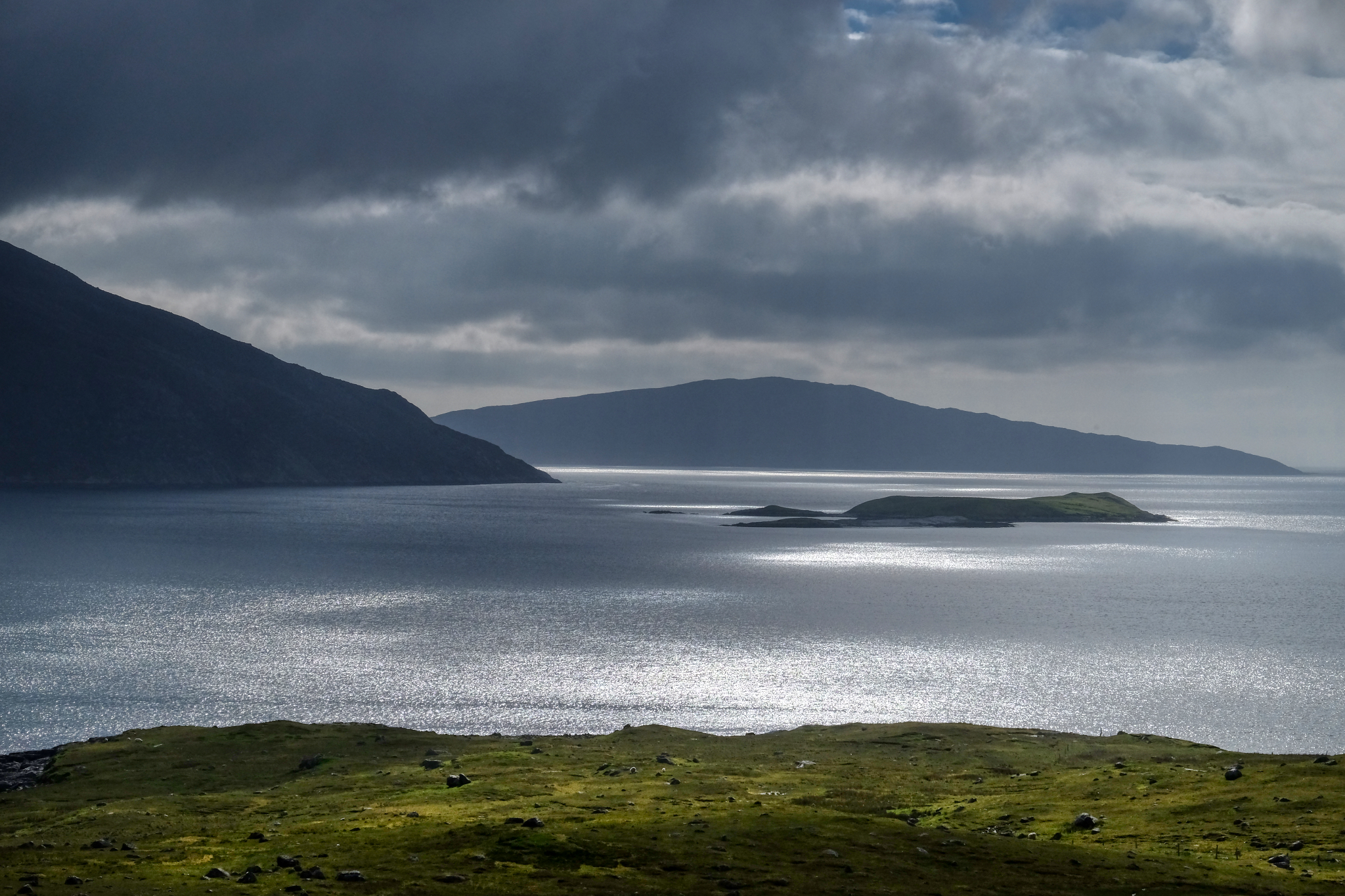 Patches of light on the sea . . .
Patches of light on the sea . . .
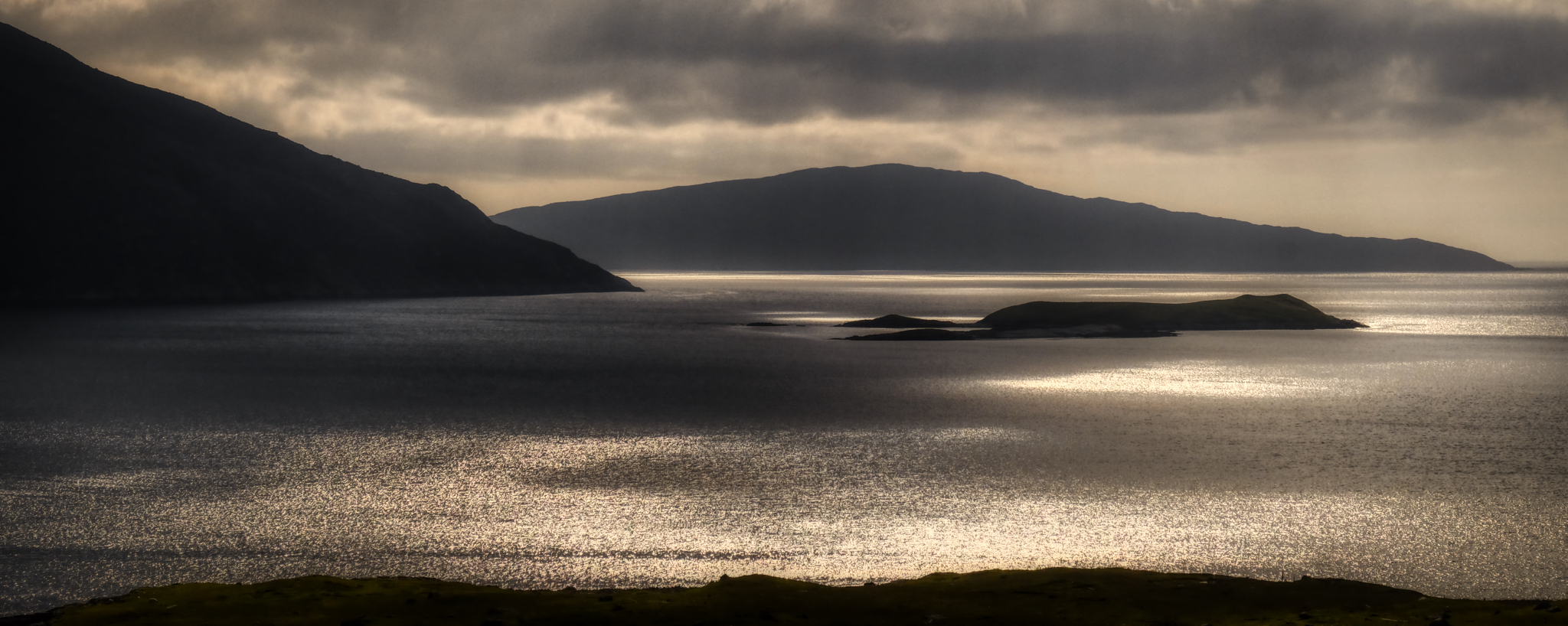 I am not usually partial to added photo 'artsy' technique, but this scene seemed to demand a sepia tone. Amazing.
I am not usually partial to added photo 'artsy' technique, but this scene seemed to demand a sepia tone. Amazing.
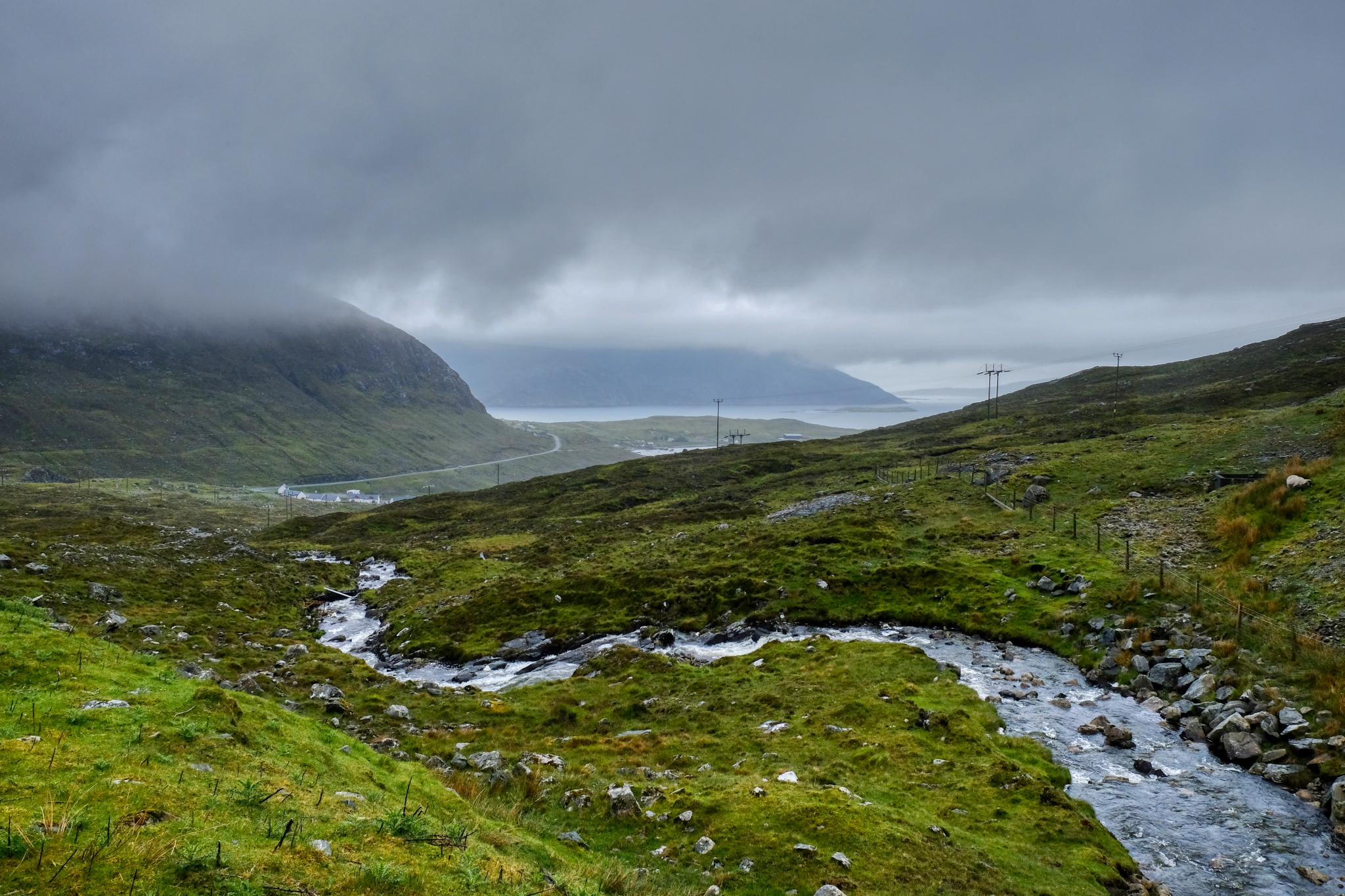 Driving up the small winding road along side a rushing stream . . . .
Driving up the small winding road along side a rushing stream . . . .
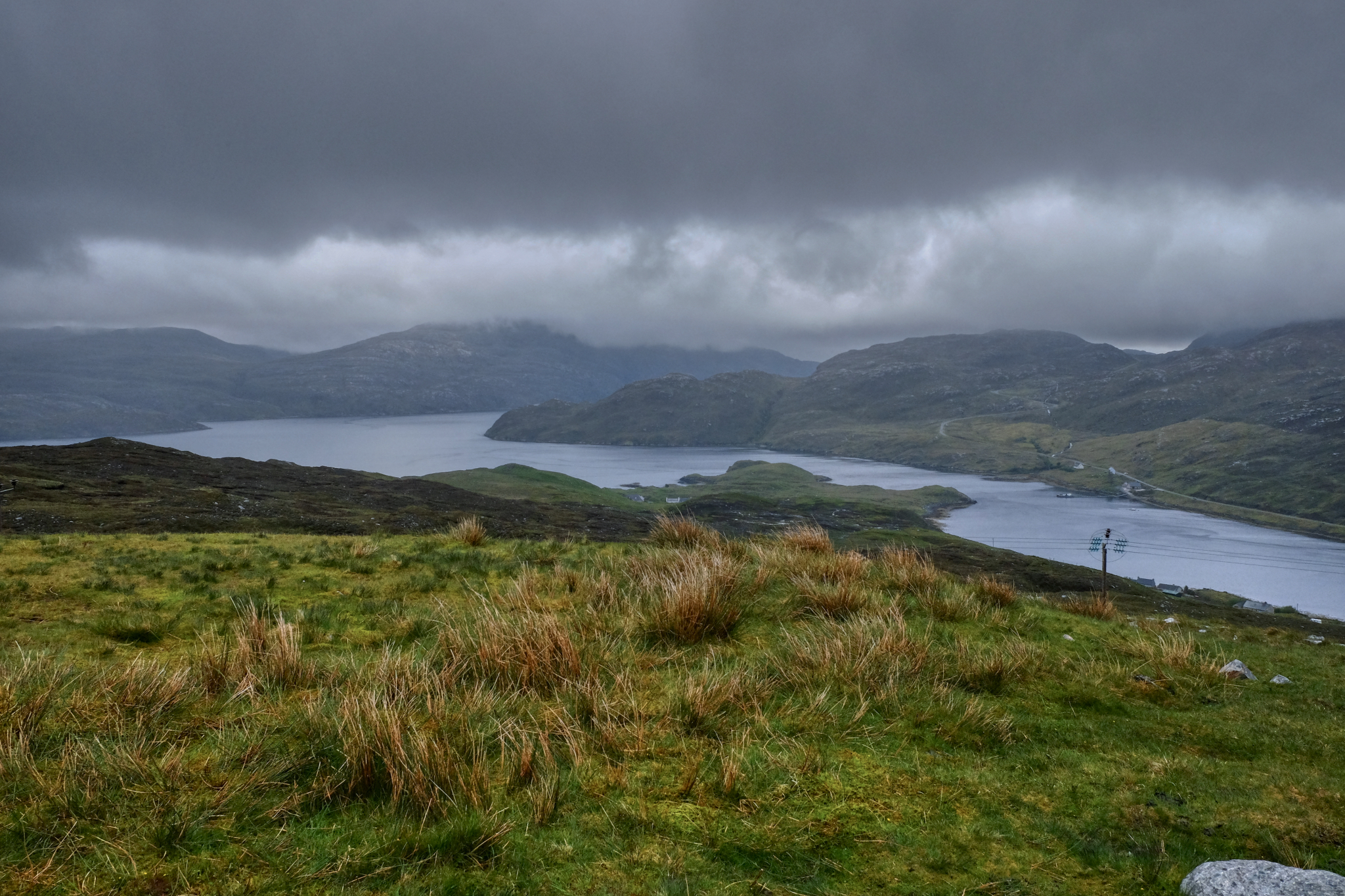 And around the bend at the hilltop . . . another magnificent view of a picturesque inlet . . . in the rain.
And around the bend at the hilltop . . . another magnificent view of a picturesque inlet . . . in the rain.
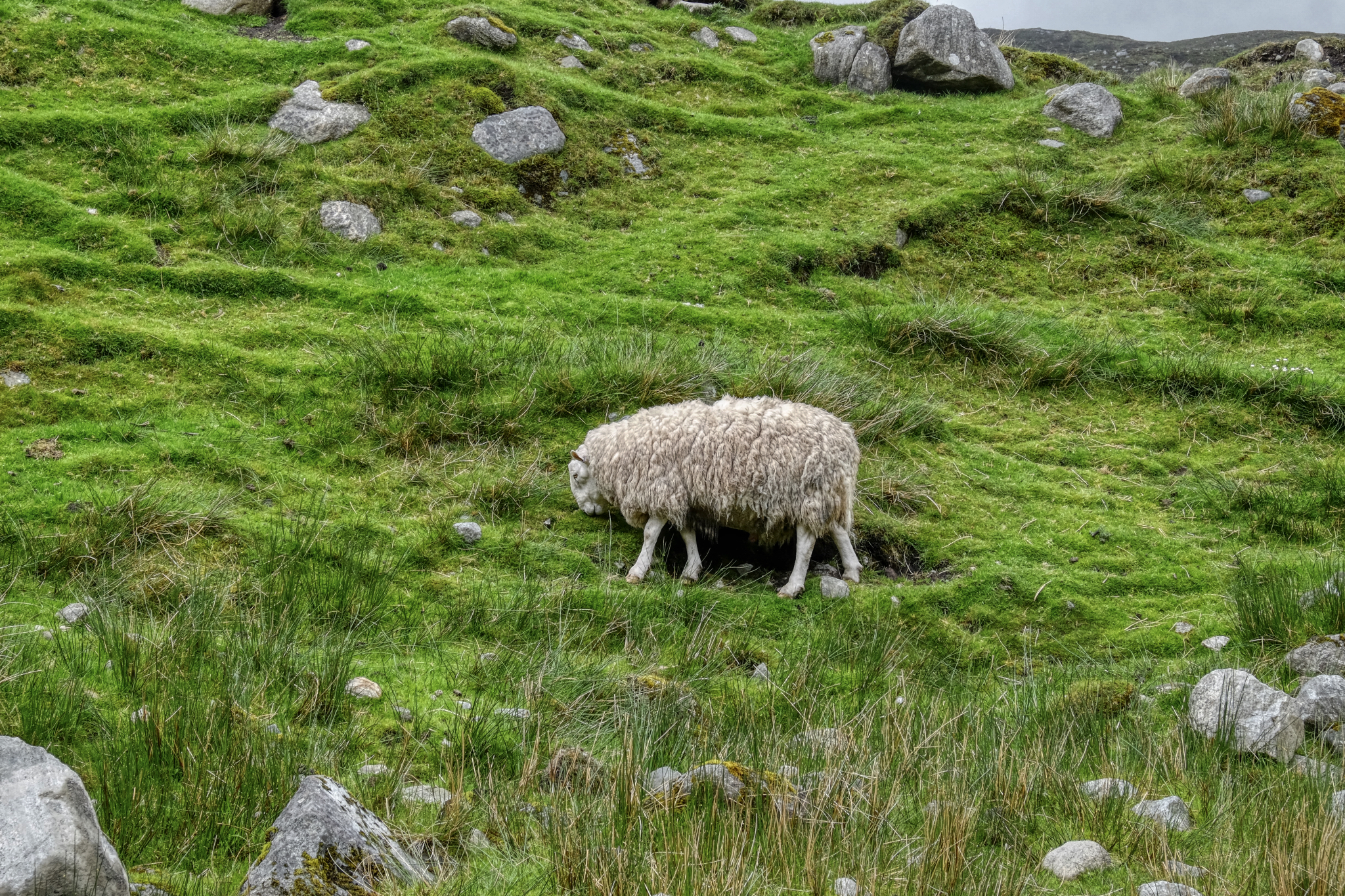 Wet sheep . . . everywhere . . .
Wet sheep . . . everywhere . . .
 Wild Hebridean stream running down out of the rugged hills.
Wild Hebridean stream running down out of the rugged hills.
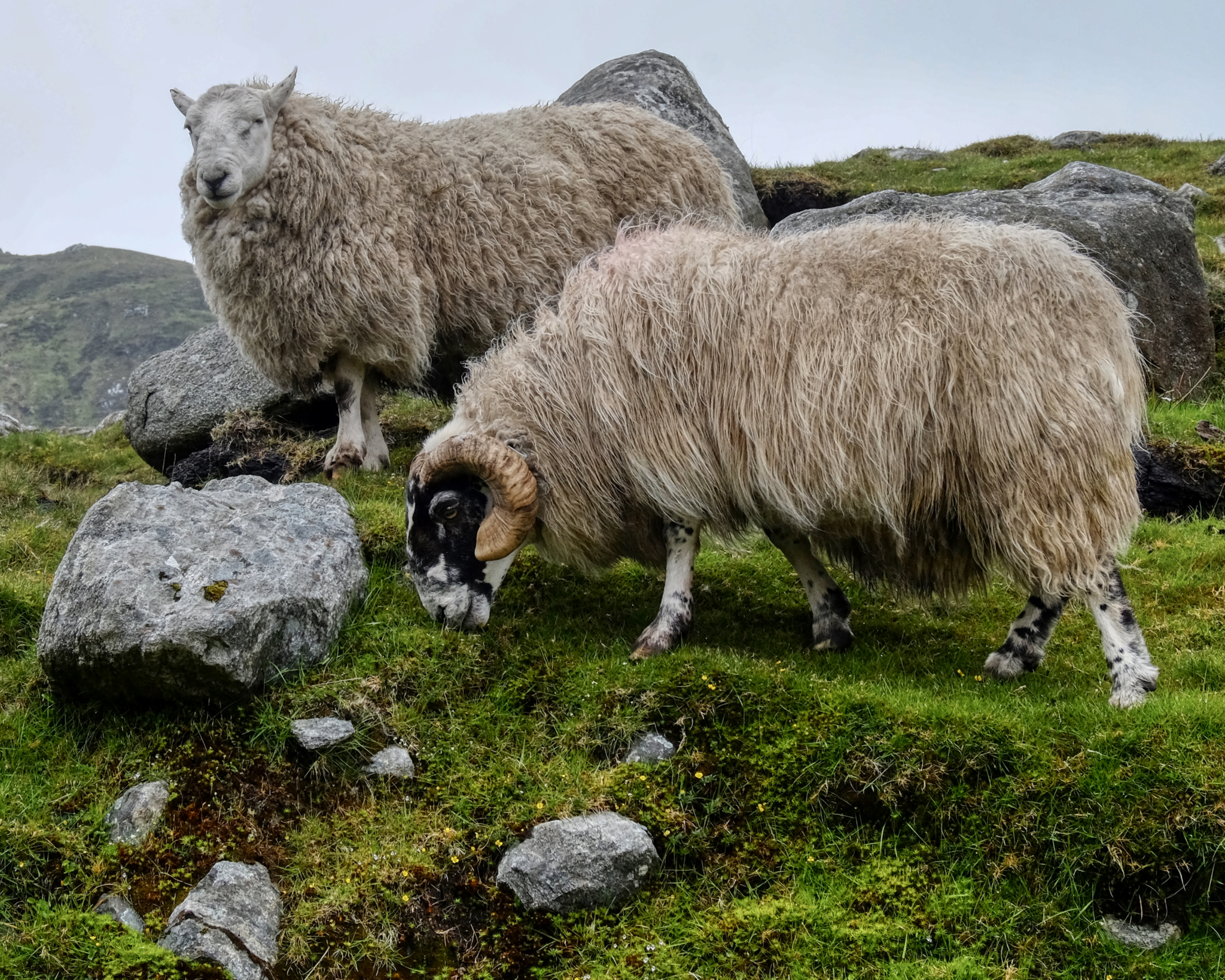 Portrait of two wet sheep. Why not?
Portrait of two wet sheep. Why not?
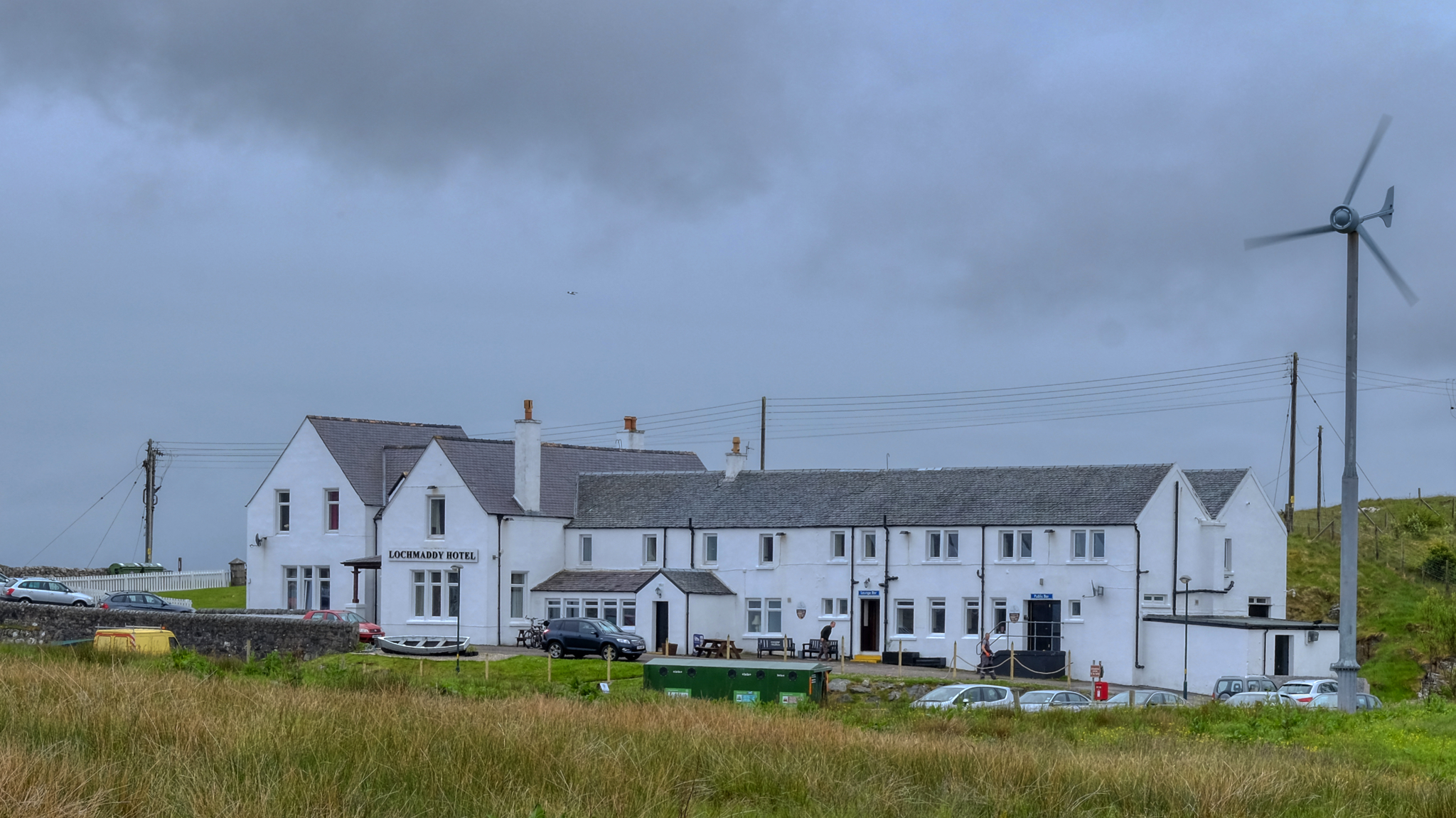 We spent one night at the charming and remote Lochmaddy Hotel on North Uist Island.
We spent one night at the charming and remote Lochmaddy Hotel on North Uist Island.
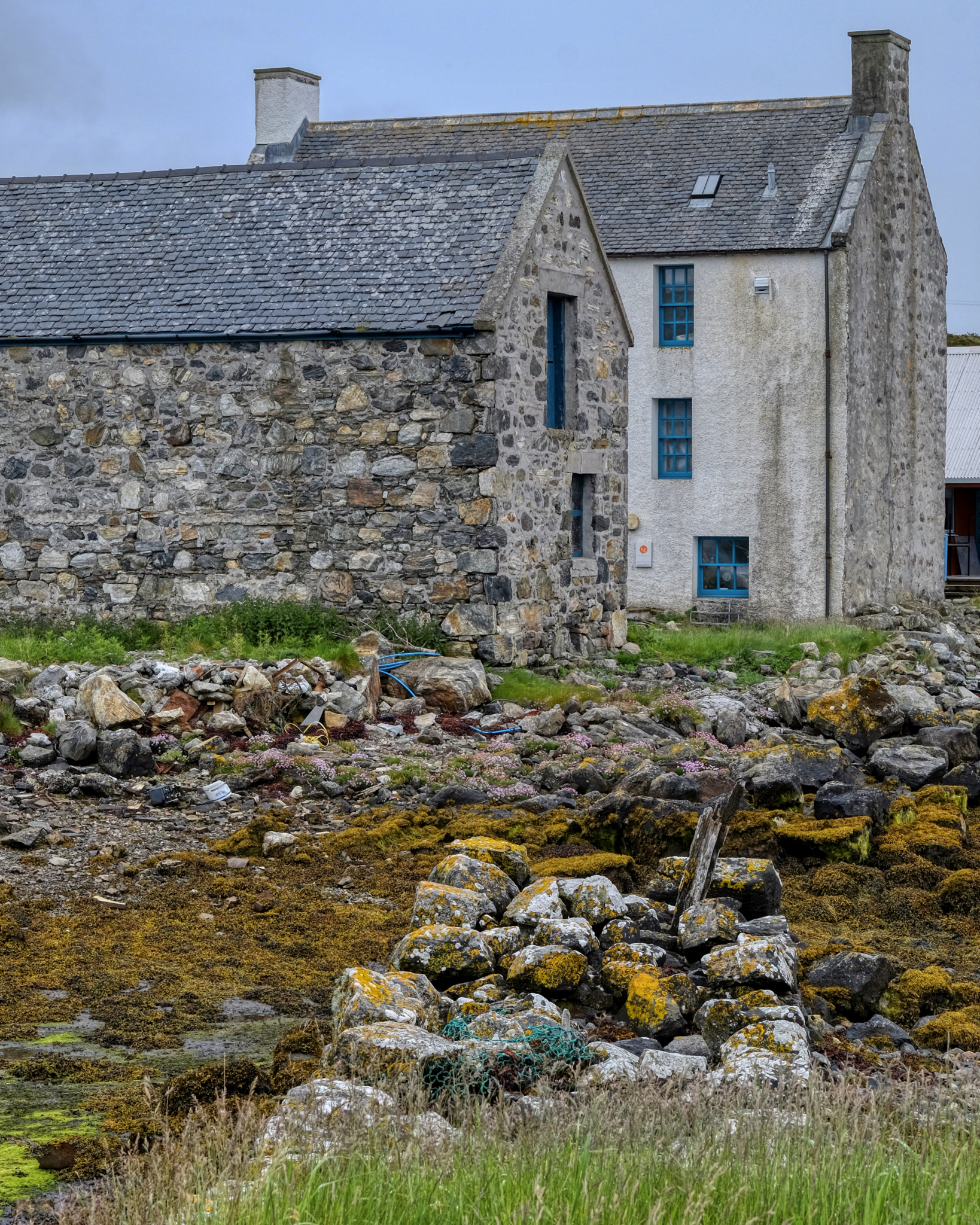 Out along the rocky bay.
Out along the rocky bay.
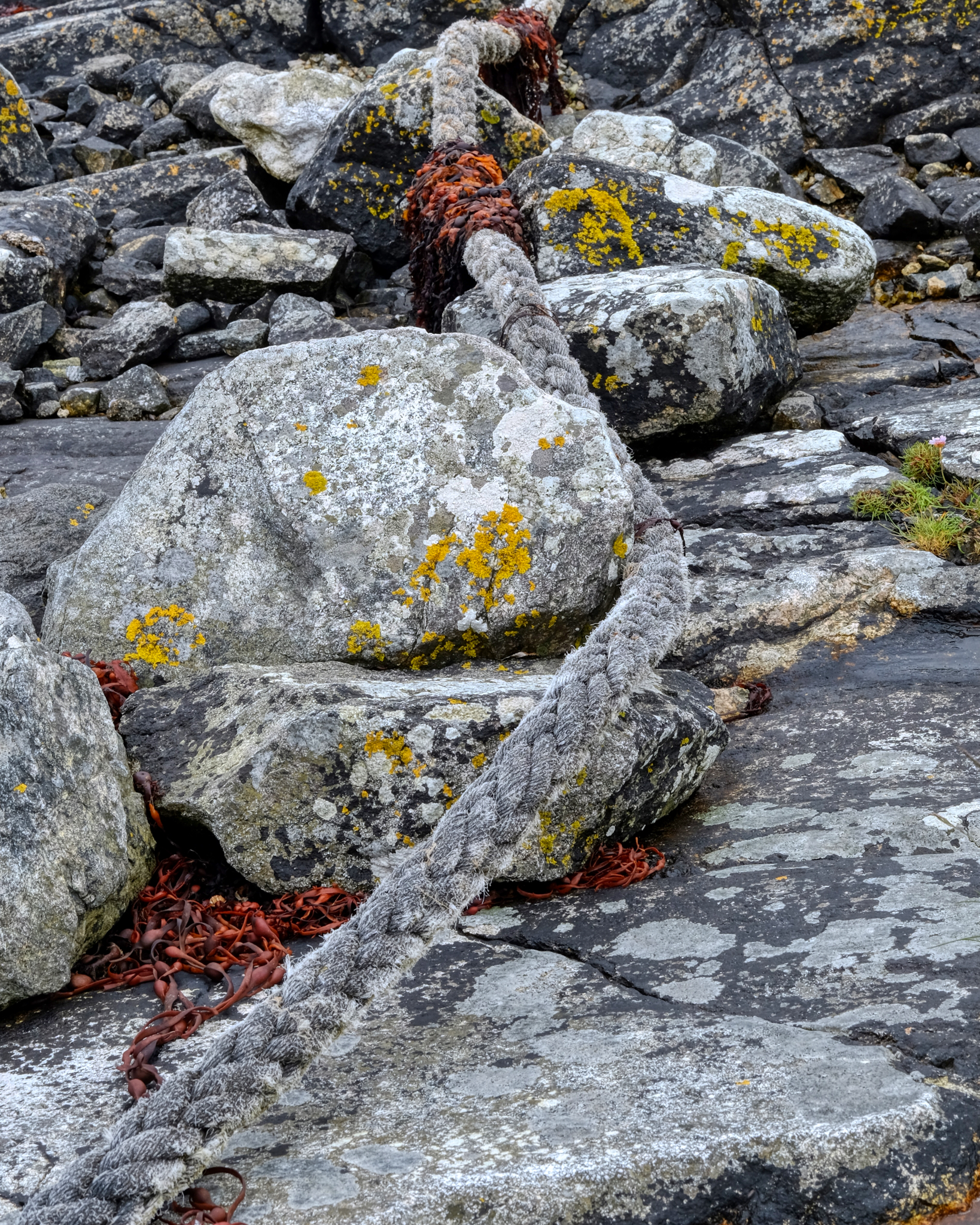 Rope mooring and stones.
Rope mooring and stones.
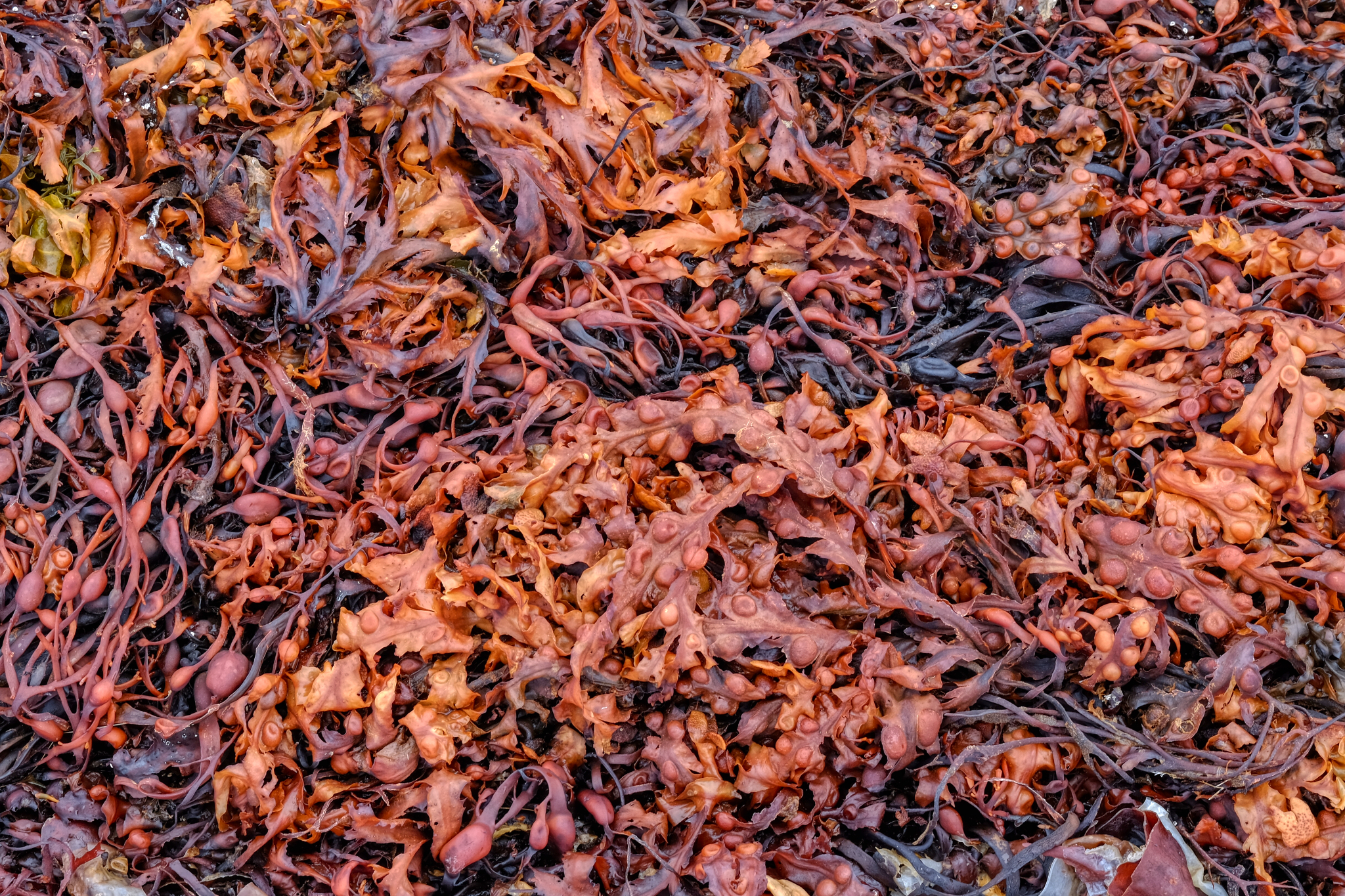 Incredibly fascinating seaweed in a North Uist bay.
Incredibly fascinating seaweed in a North Uist bay.
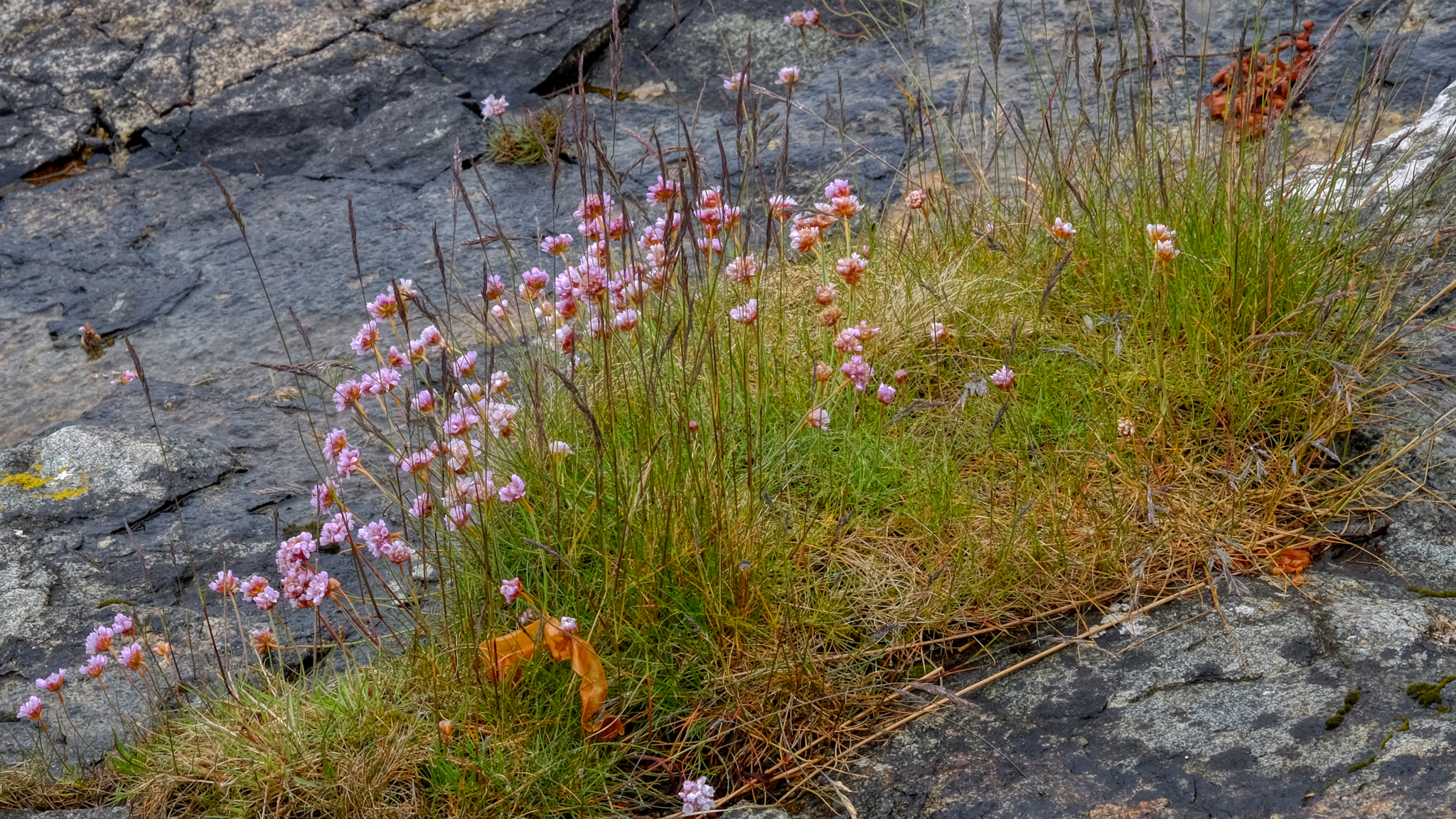 Wild flowers growing in the stony shore.
Wild flowers growing in the stony shore.
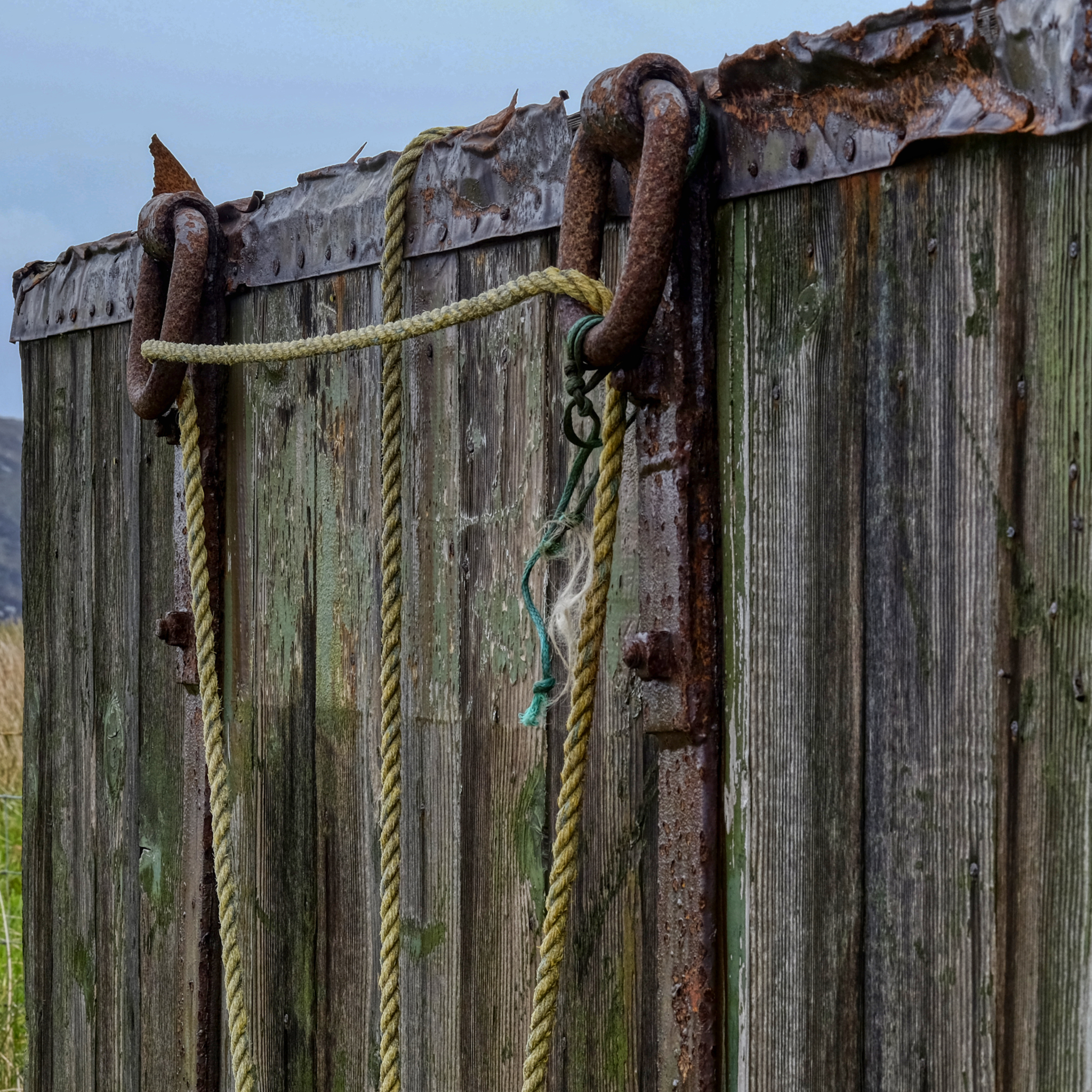 Leftover signs of fishermen long gone.
Leftover signs of fishermen long gone.
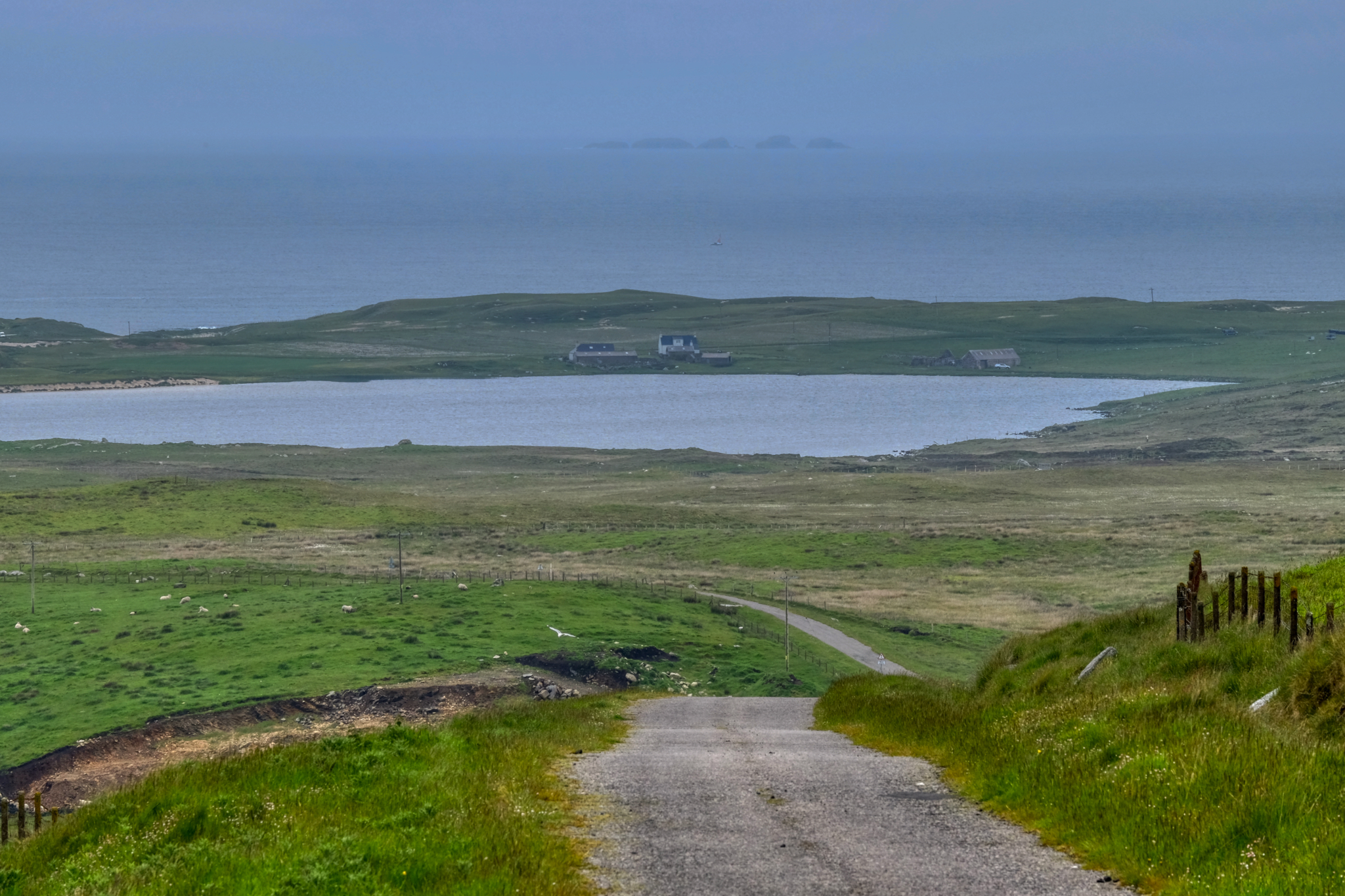 Off we went in the morning mist on the tiny roads . . .
Off we went in the morning mist on the tiny roads . . .
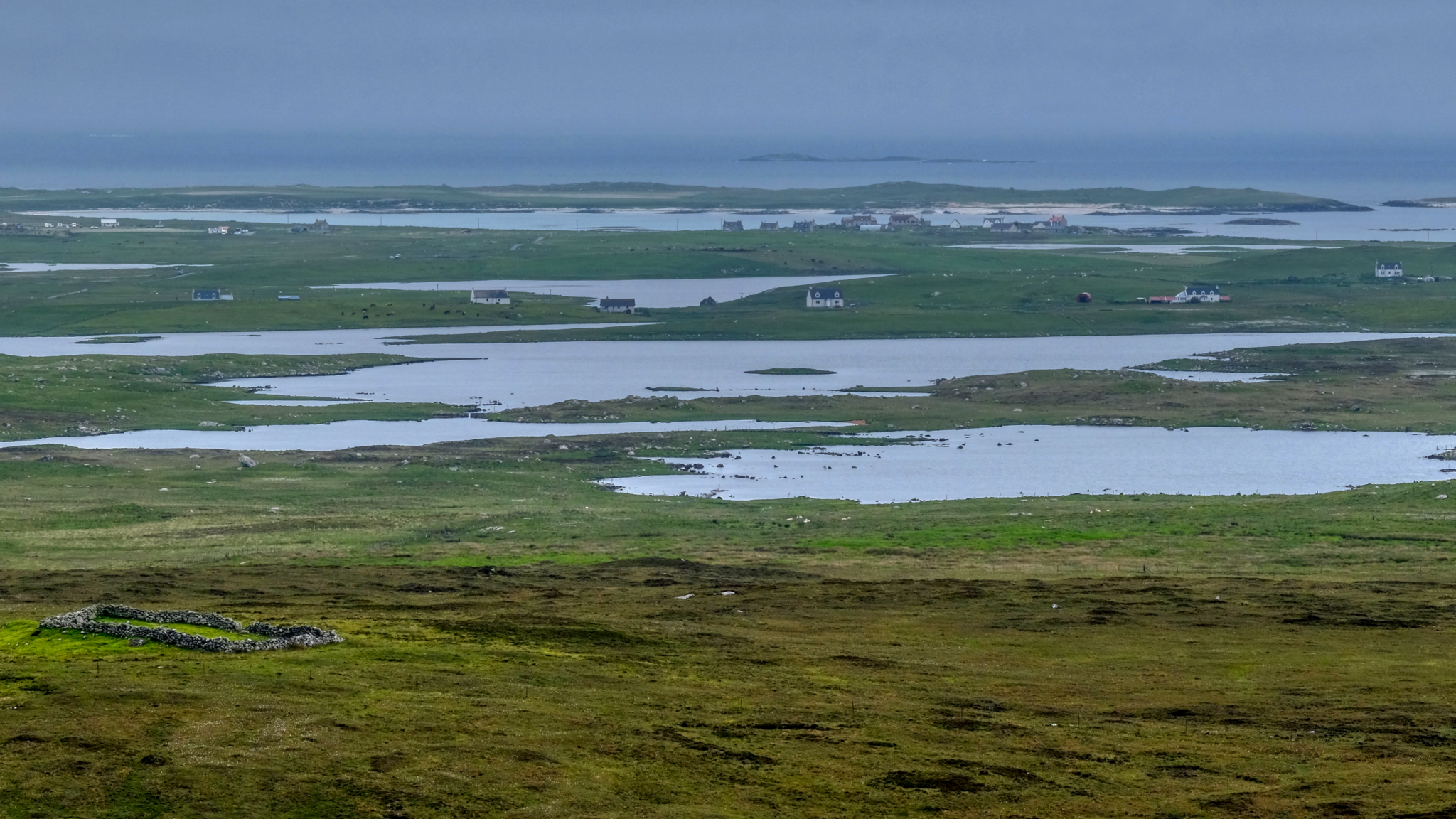 A most unusual landscape. I have never seen anything like it. Fantastically beautiful. I always have a compunction to think I would love to live in one of those houses . . . but stop myself by thinking there would be nothing for me to do there.
A most unusual landscape. I have never seen anything like it. Fantastically beautiful. I always have a compunction to think I would love to live in one of those houses . . . but stop myself by thinking there would be nothing for me to do there.
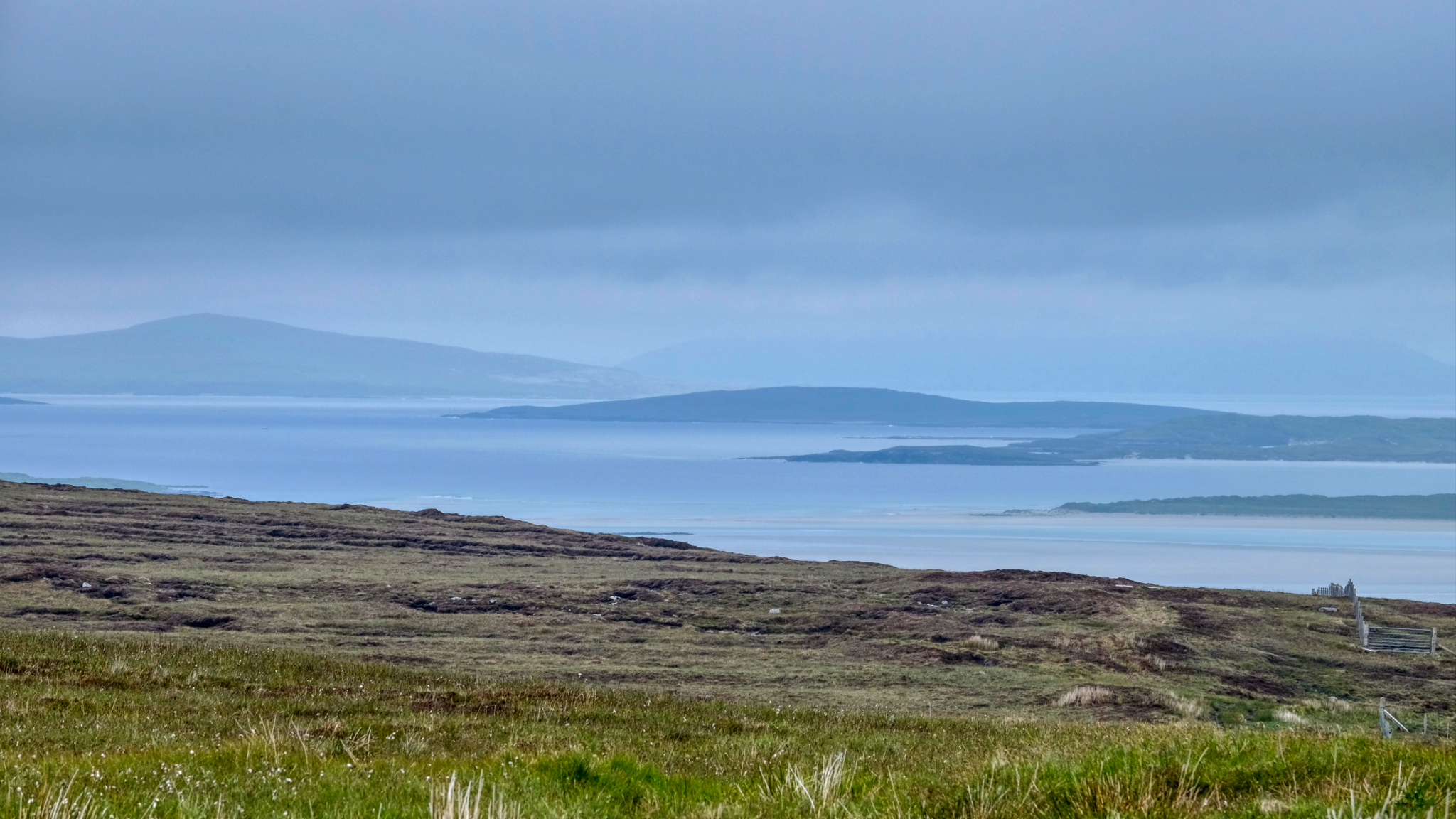 We learned there was a good restaurant out in these soggywet landscapes.
We learned there was a good restaurant out in these soggywet landscapes.
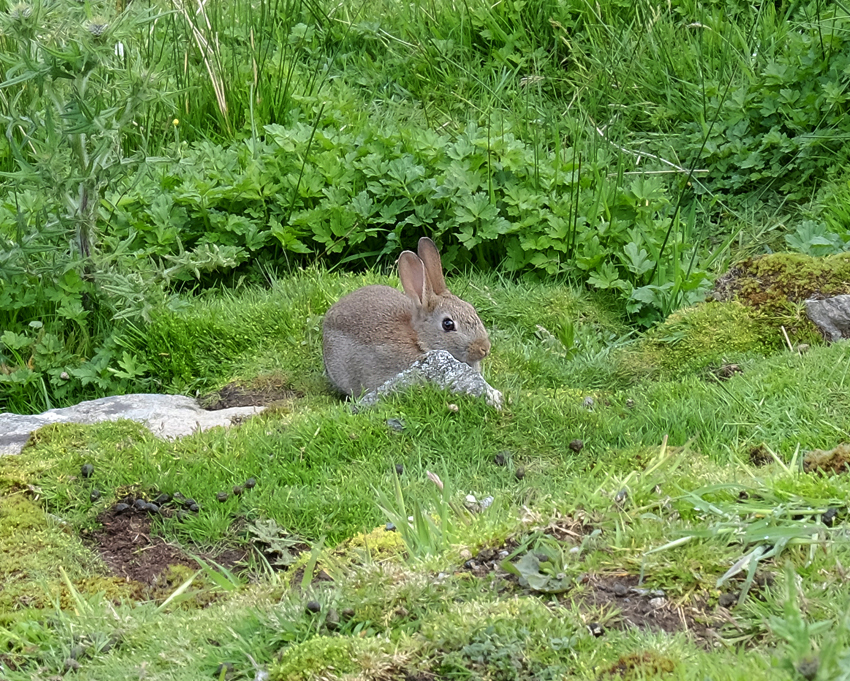 More Hebridean wildlife!
More Hebridean wildlife!
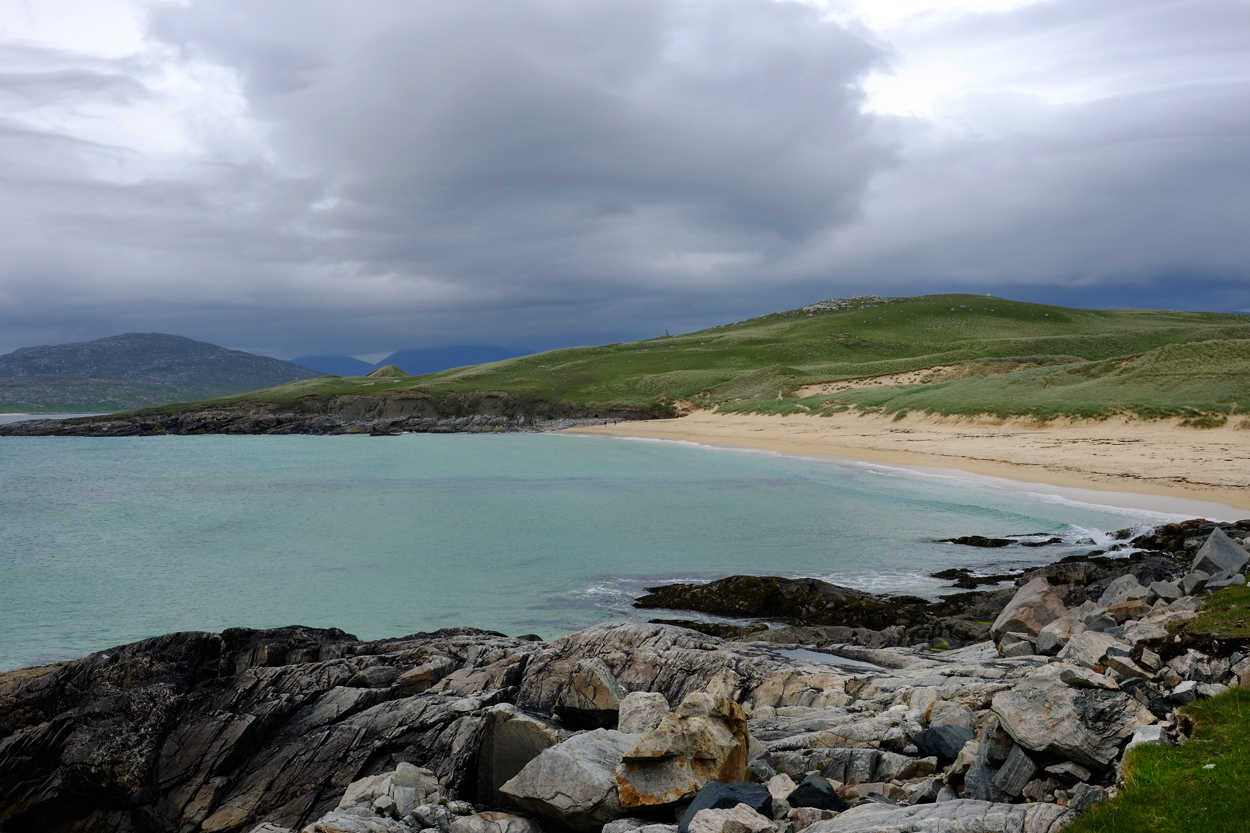 And here and there, around a bend, a sudden, almost tropical, turquoise sea and white sandy beach. Marvelous.
And here and there, around a bend, a sudden, almost tropical, turquoise sea and white sandy beach. Marvelous.
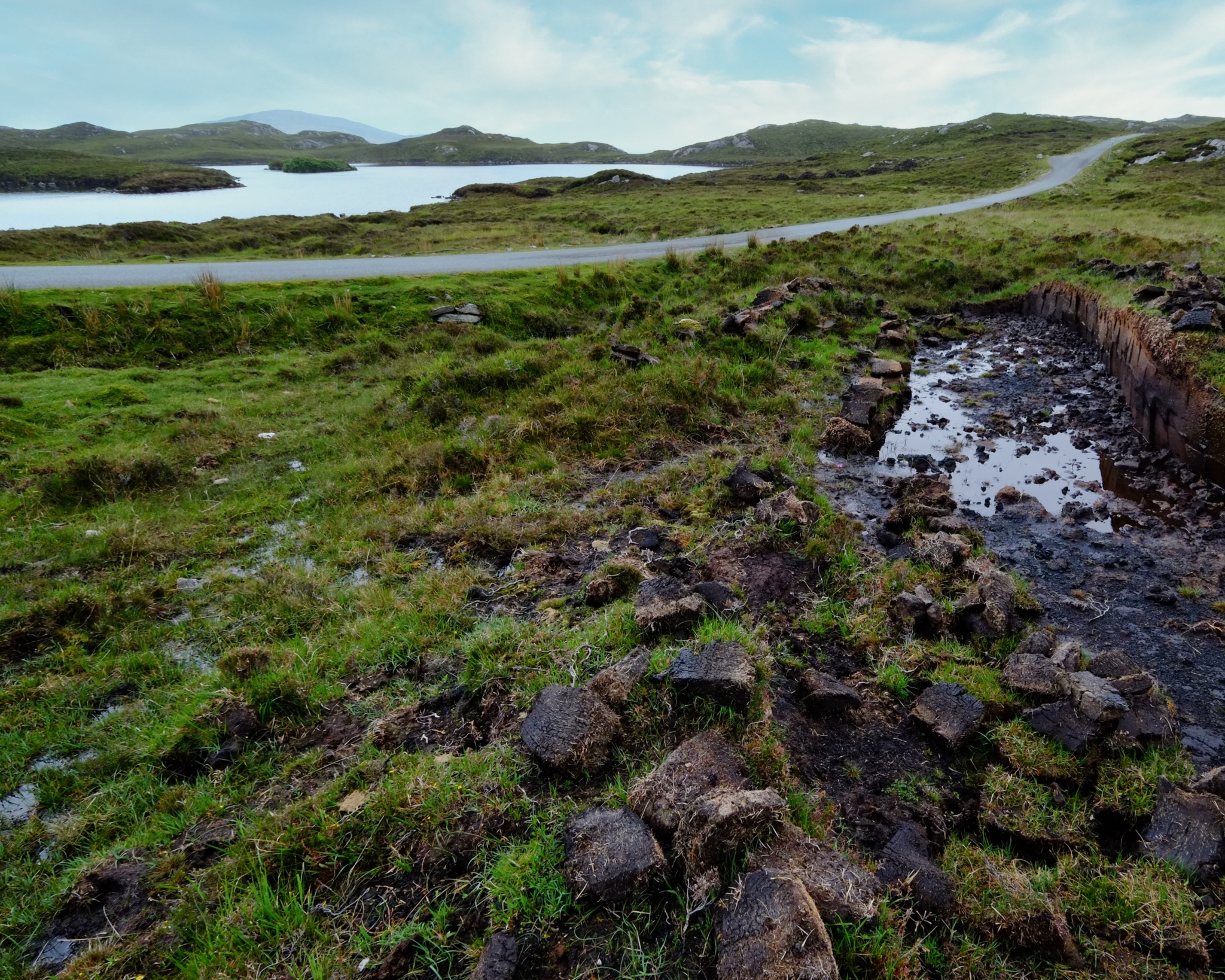 And around another bend a vale with deep cut peat harvesting in progress.
And around another bend a vale with deep cut peat harvesting in progress.
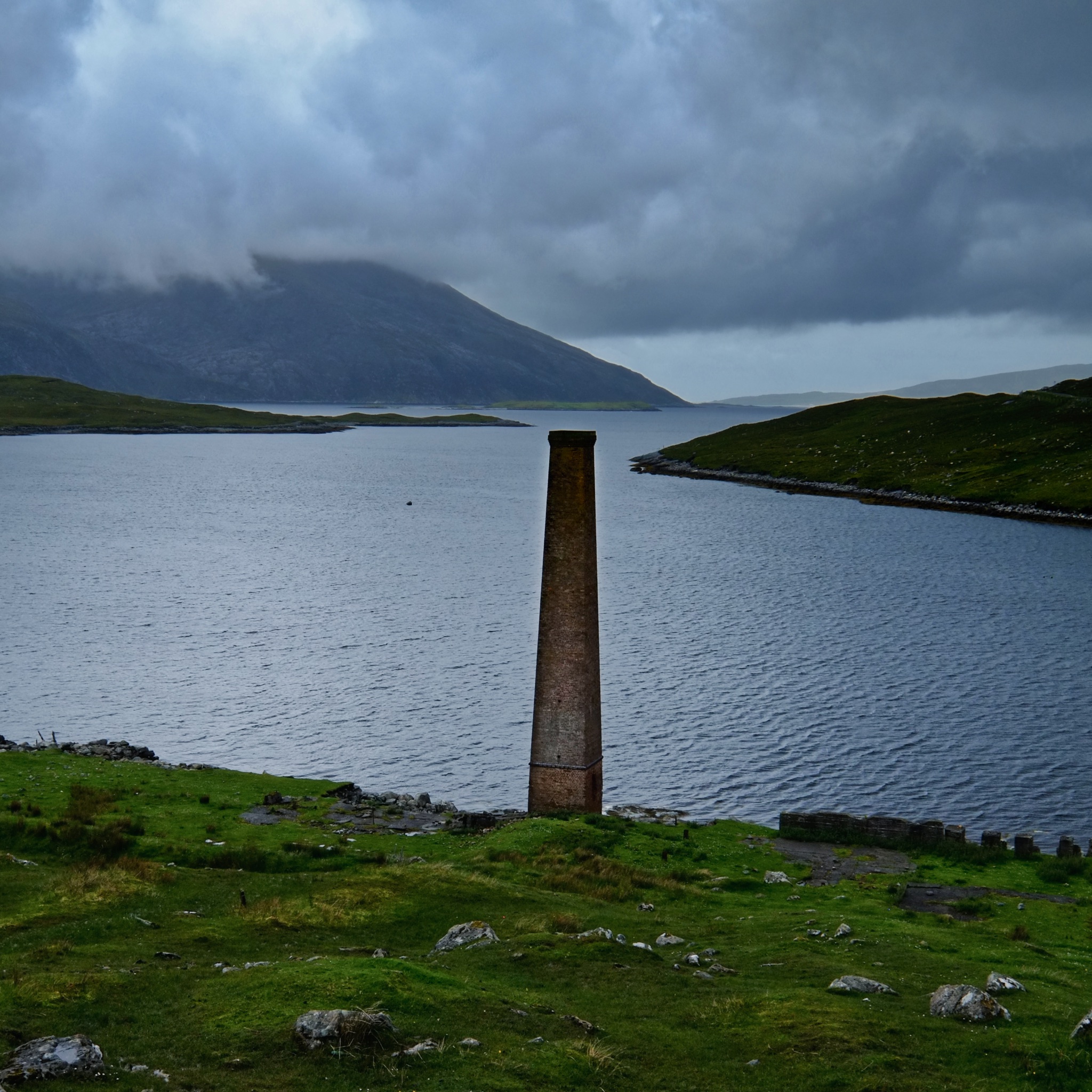 A tall smokestack . . . a monument to some previous industrial endeavor . . . all the way out here.
A tall smokestack . . . a monument to some previous industrial endeavor . . . all the way out here.
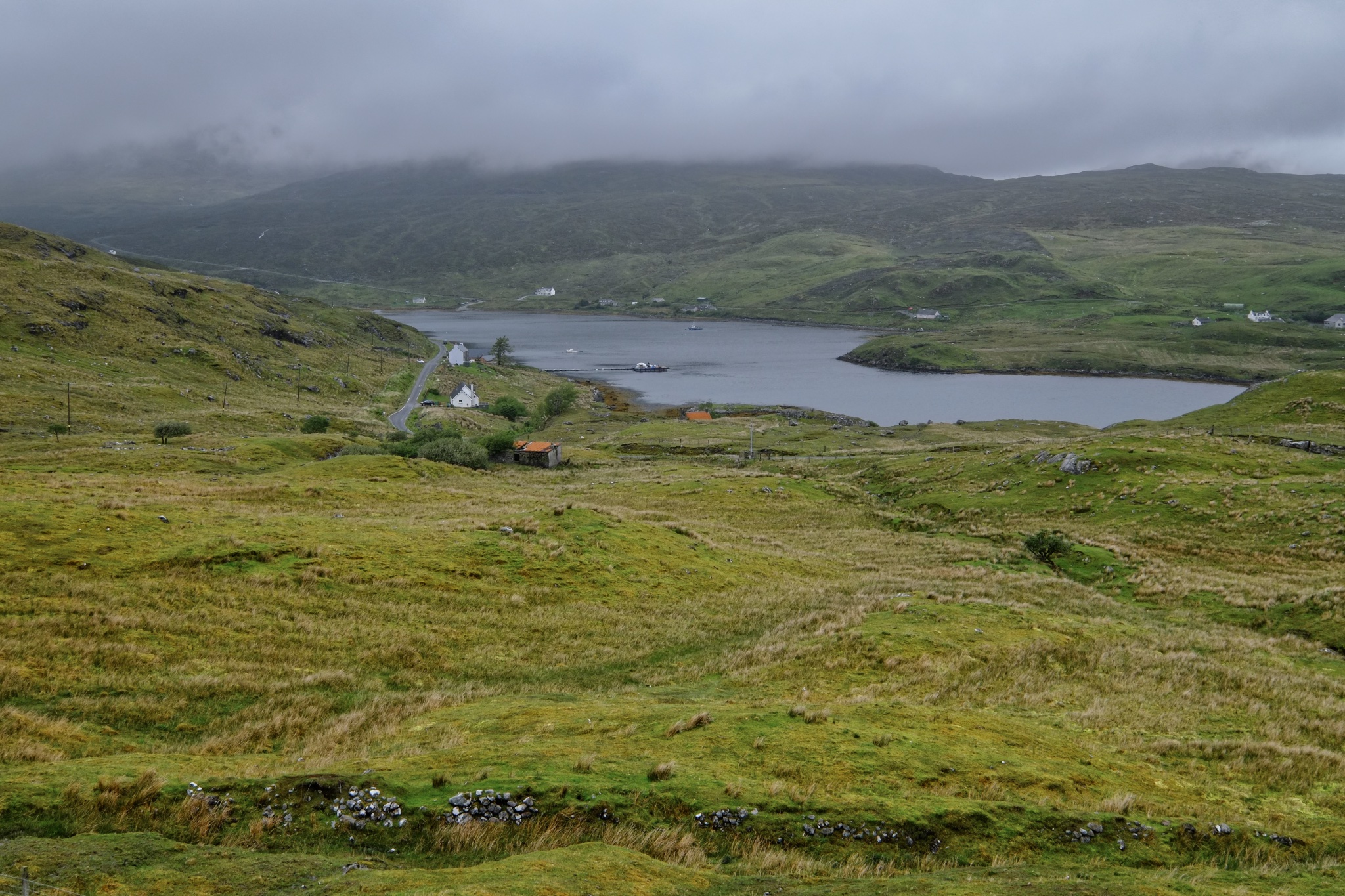 Driving the single track road in and out of the strange hills . . . always a new view . . . sometimes of a narrow bay dotted with small houses, a pier, and a fishing boat.
Driving the single track road in and out of the strange hills . . . always a new view . . . sometimes of a narrow bay dotted with small houses, a pier, and a fishing boat.
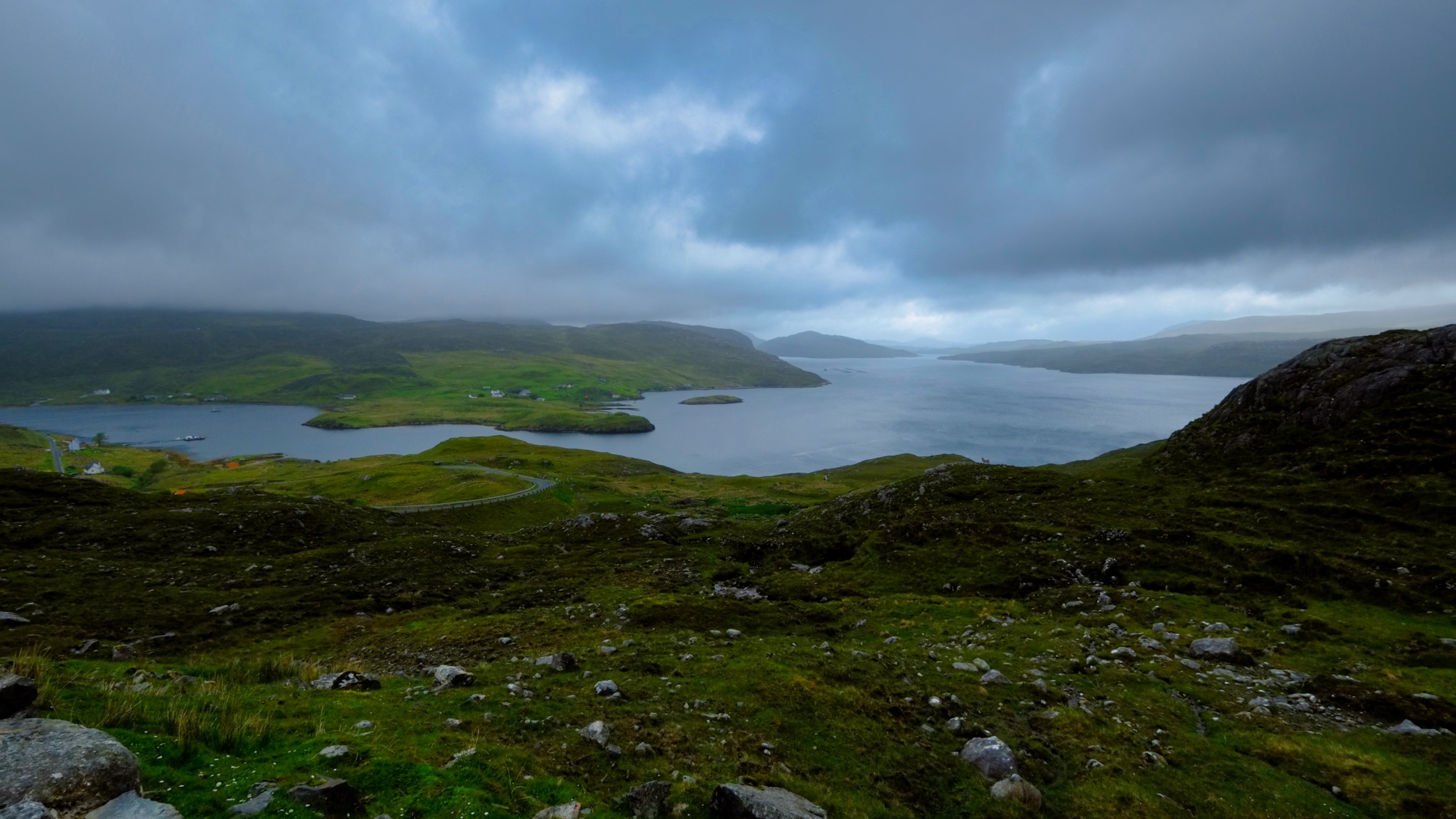 These views! The gloom!
These views! The gloom!
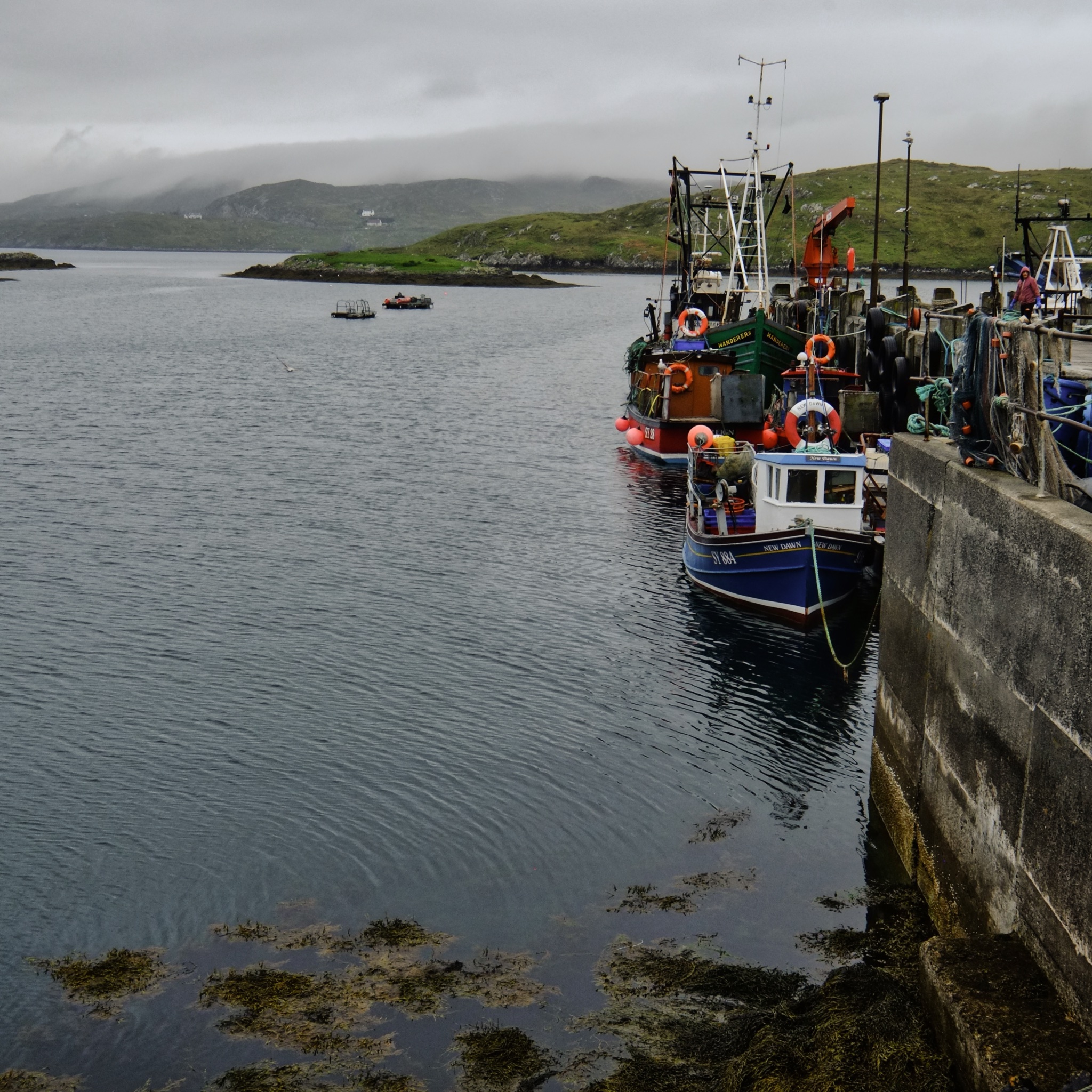 We rounded a bend in the road and arrived at a tiny fishing village, Scalpay.
We rounded a bend in the road and arrived at a tiny fishing village, Scalpay.
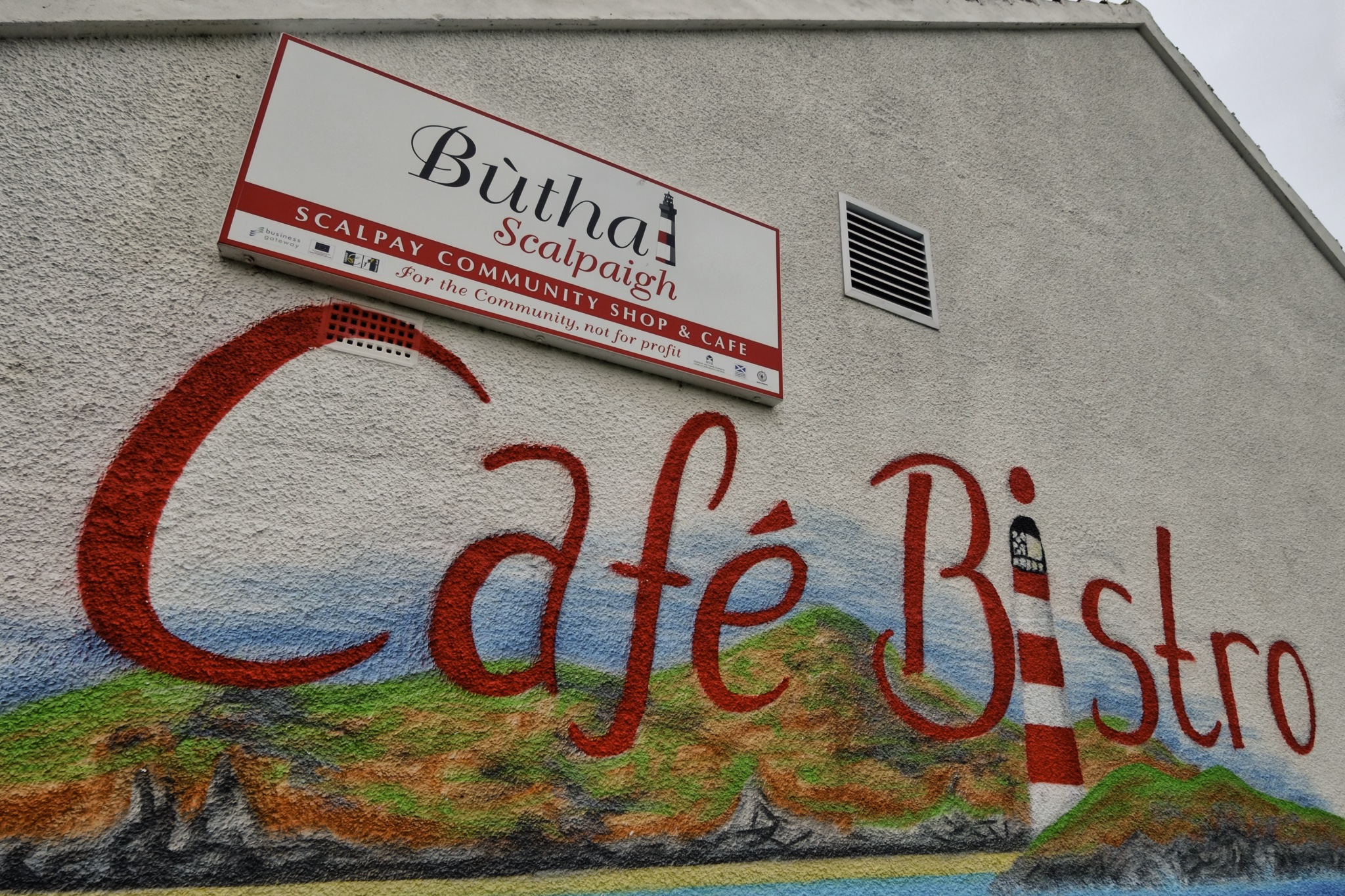
"The island used to have more than 10 shops over 30 years ago but due to lack of people and work, the last shop closed in 2007. There also used to be a salmon factory, which was a major local employer from 2001 until its closure in 2005. In the spring of 2009, local newspapers reported that the factory was to reopen as a net washing facility to support the local fish farming industry. In 2012, the Scalpay community bought and opened a community shop/café, Buth Scalpaigh." We had a delicious lunch here with friendly service . . , soup, rolls, and fried fish.
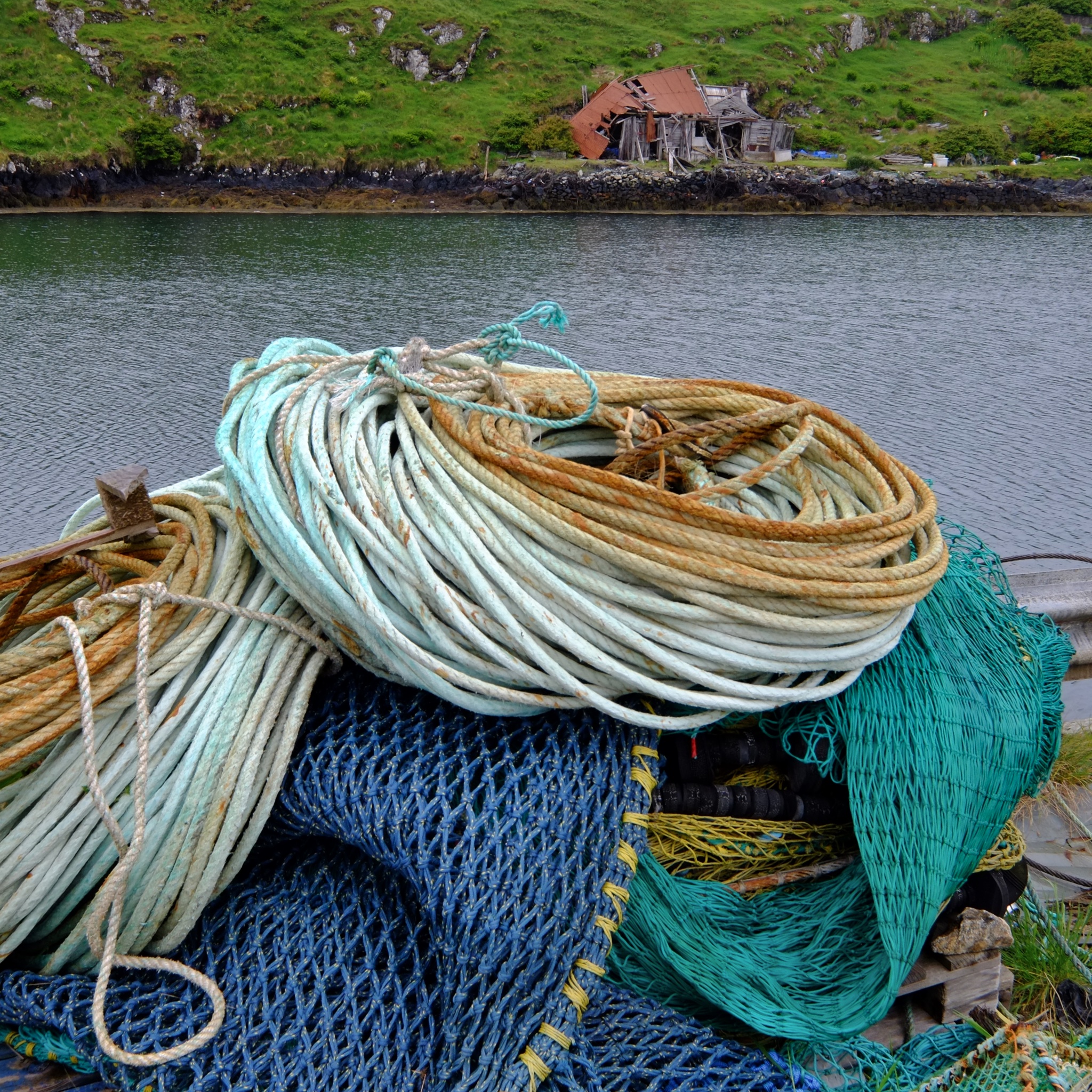 Some fishing activity survives these remote places along the craggy inlets of the Outer Hebrides.
Some fishing activity survives these remote places along the craggy inlets of the Outer Hebrides.
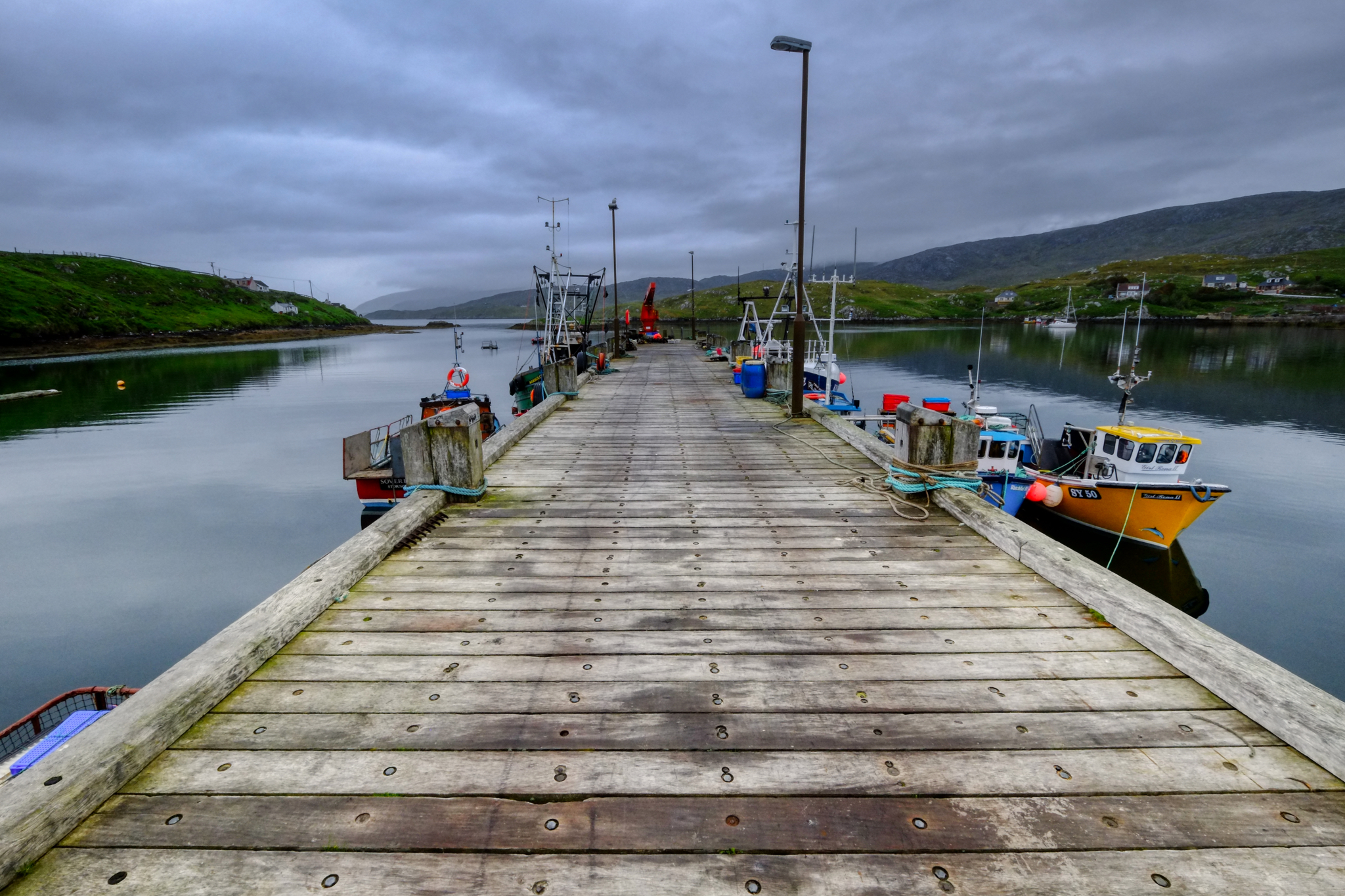 People have to eat and people have to make a living.
People have to eat and people have to make a living.
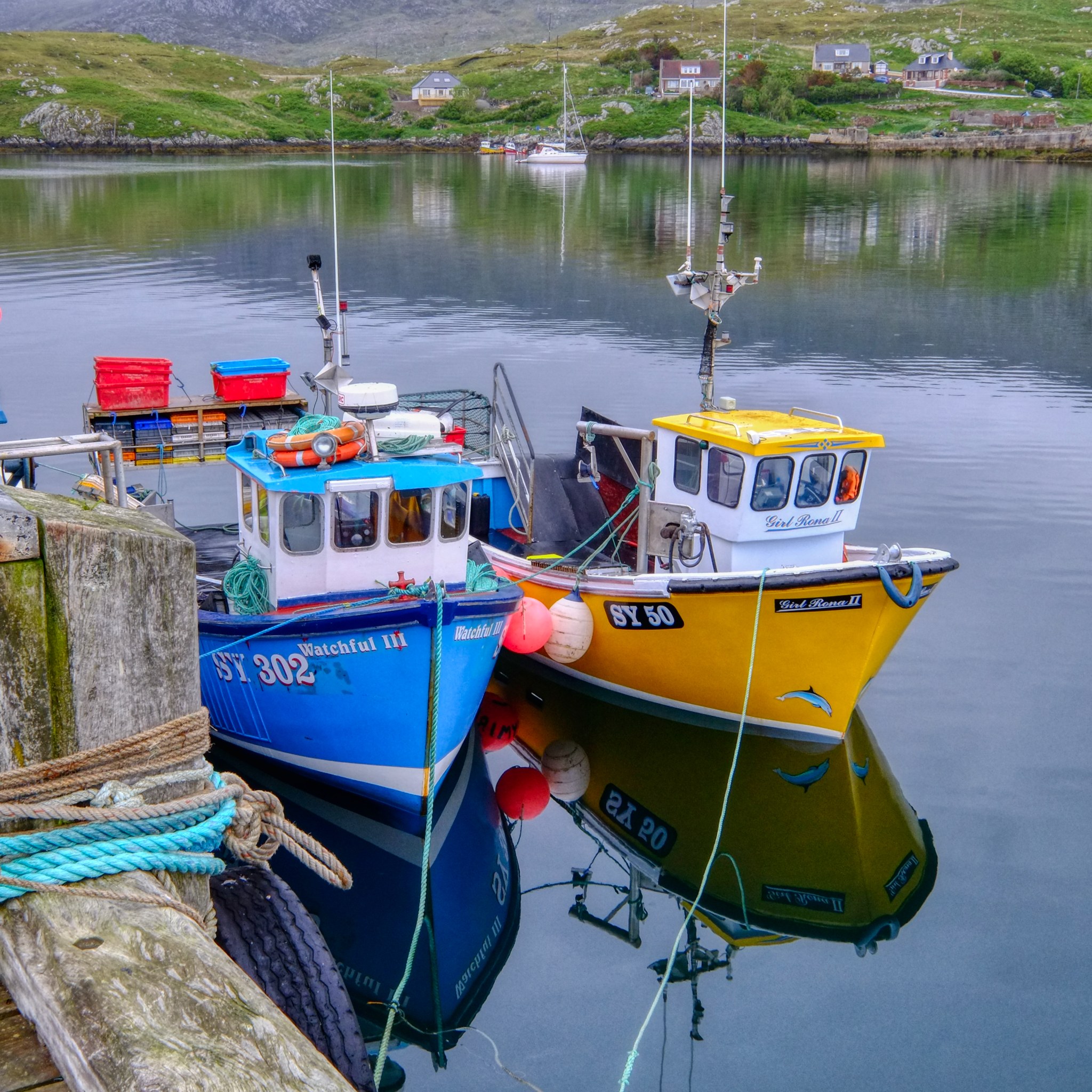 Picturesque little fishing boats.
Picturesque little fishing boats.
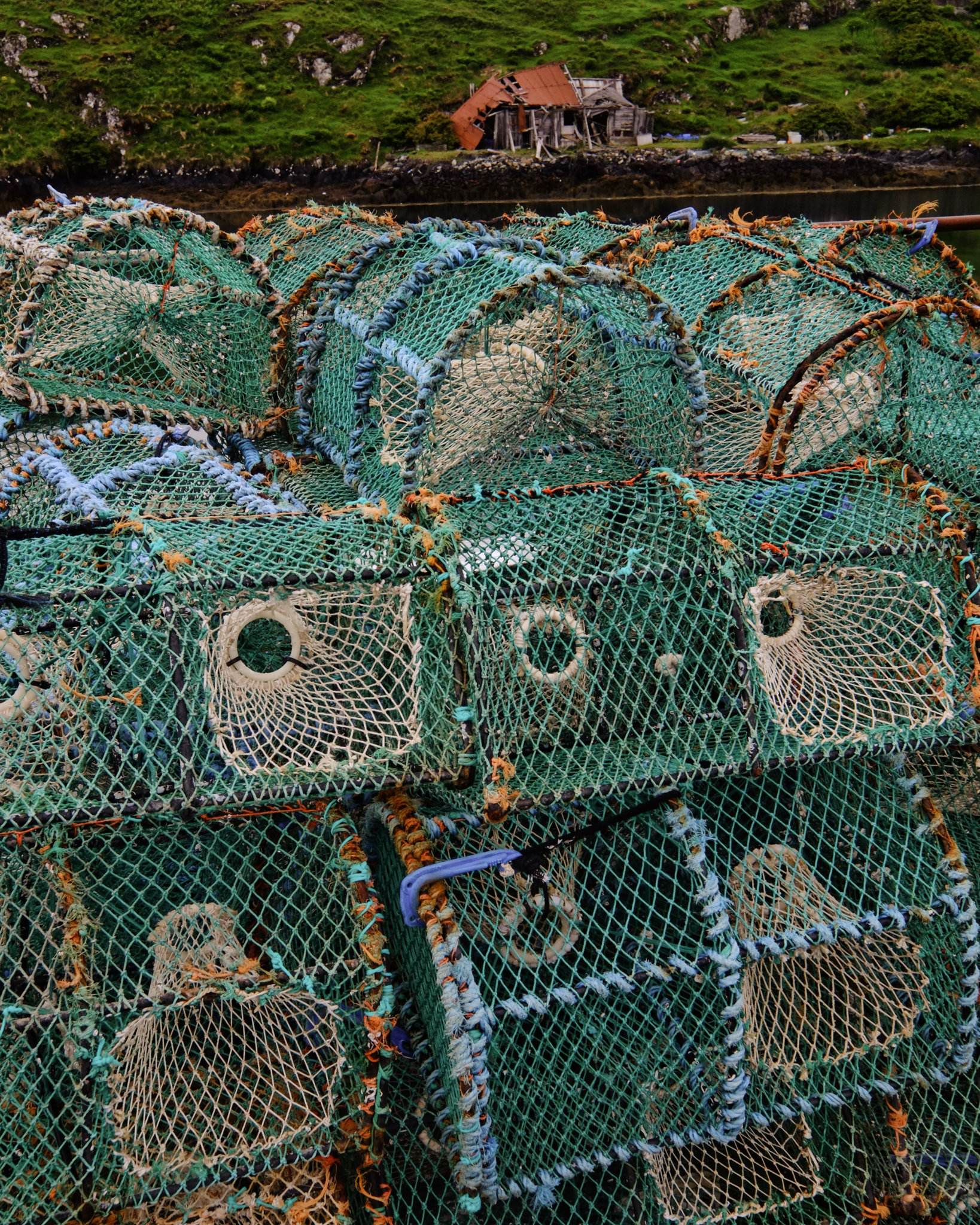 Crab or lobster pots . . .
Crab or lobster pots . . .
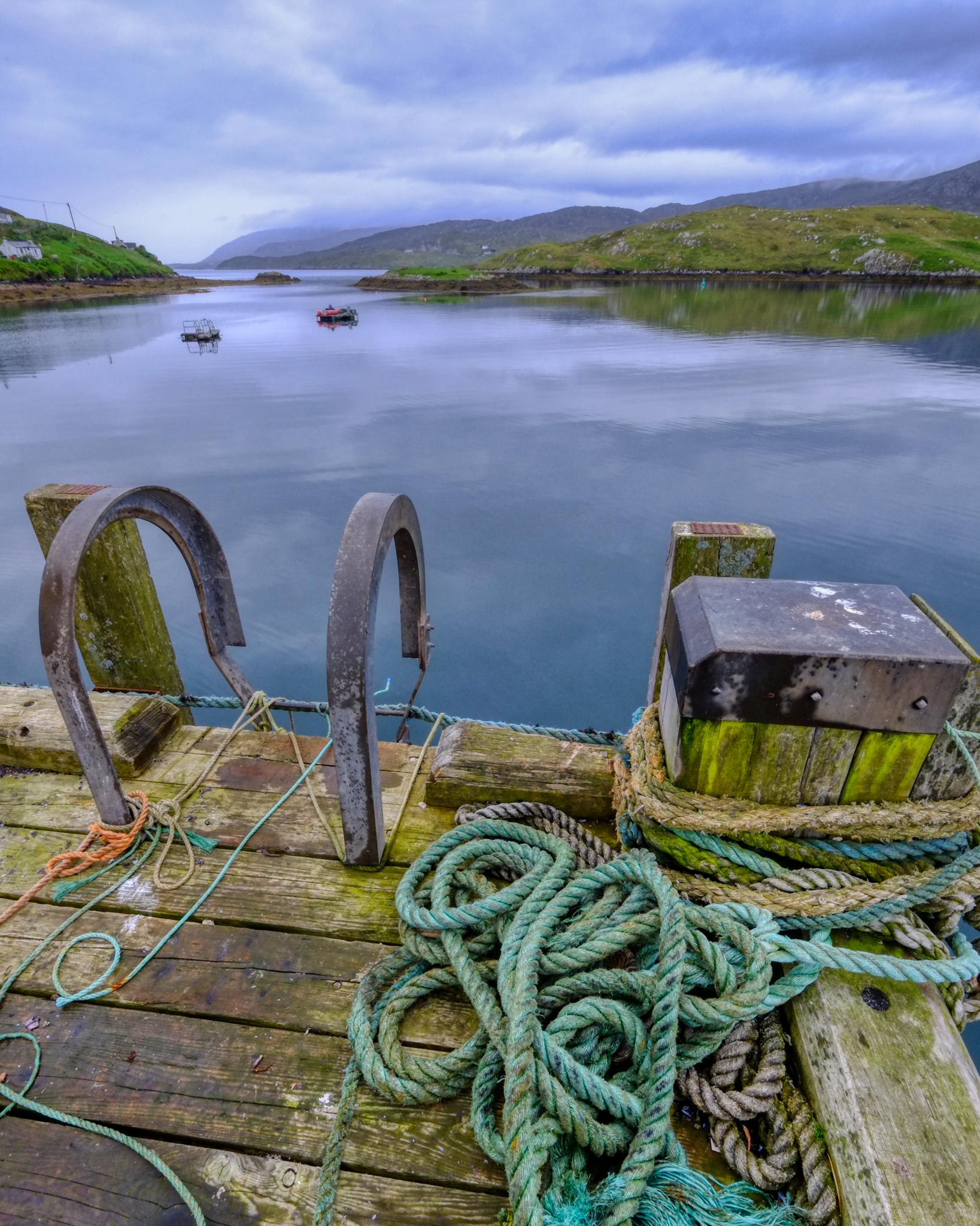 We drove North up into the Isles of Lewis and Harris.
We drove North up into the Isles of Lewis and Harris.
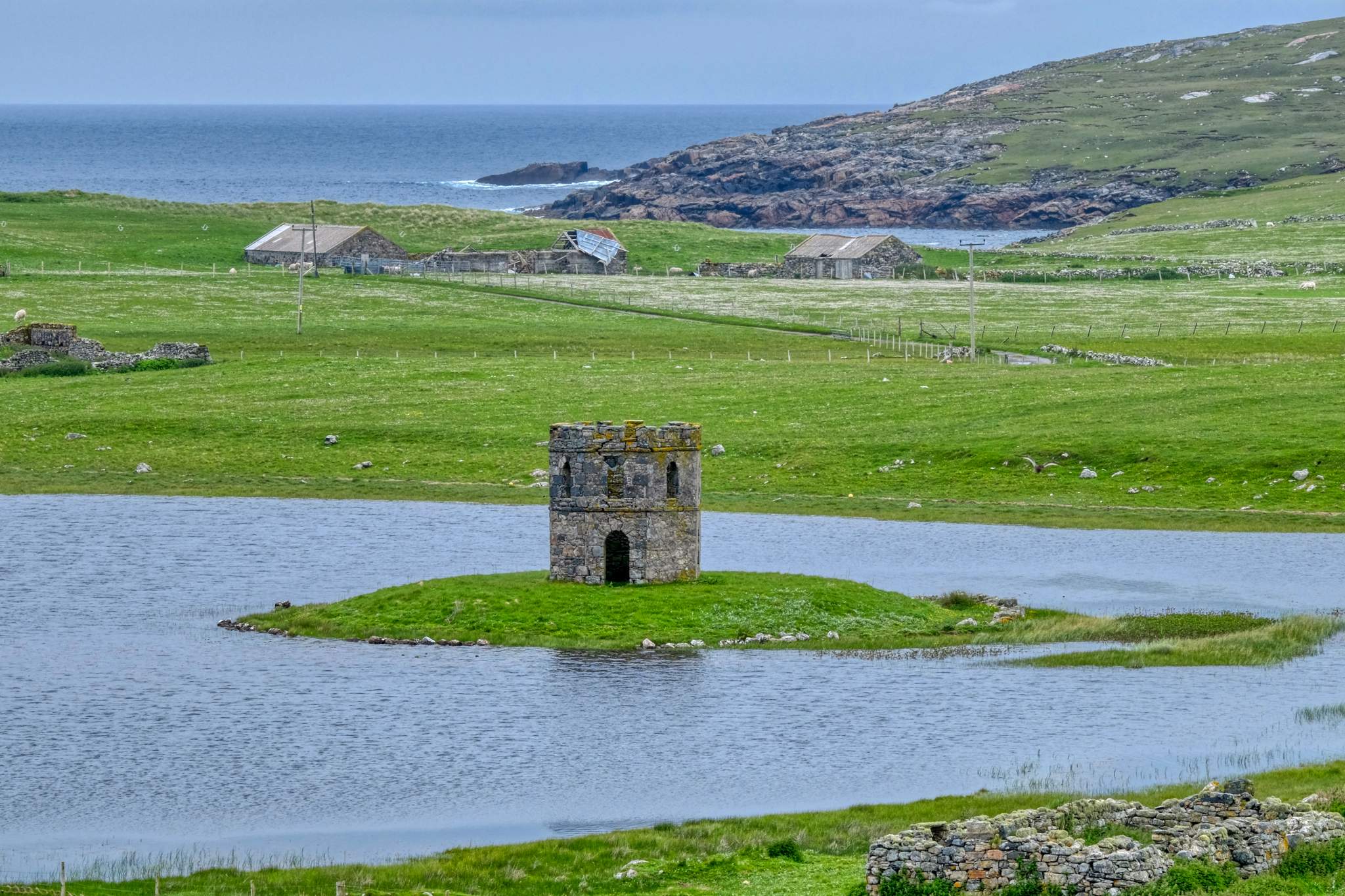 An old tower keep on a crofters place.
An old tower keep on a crofters place.
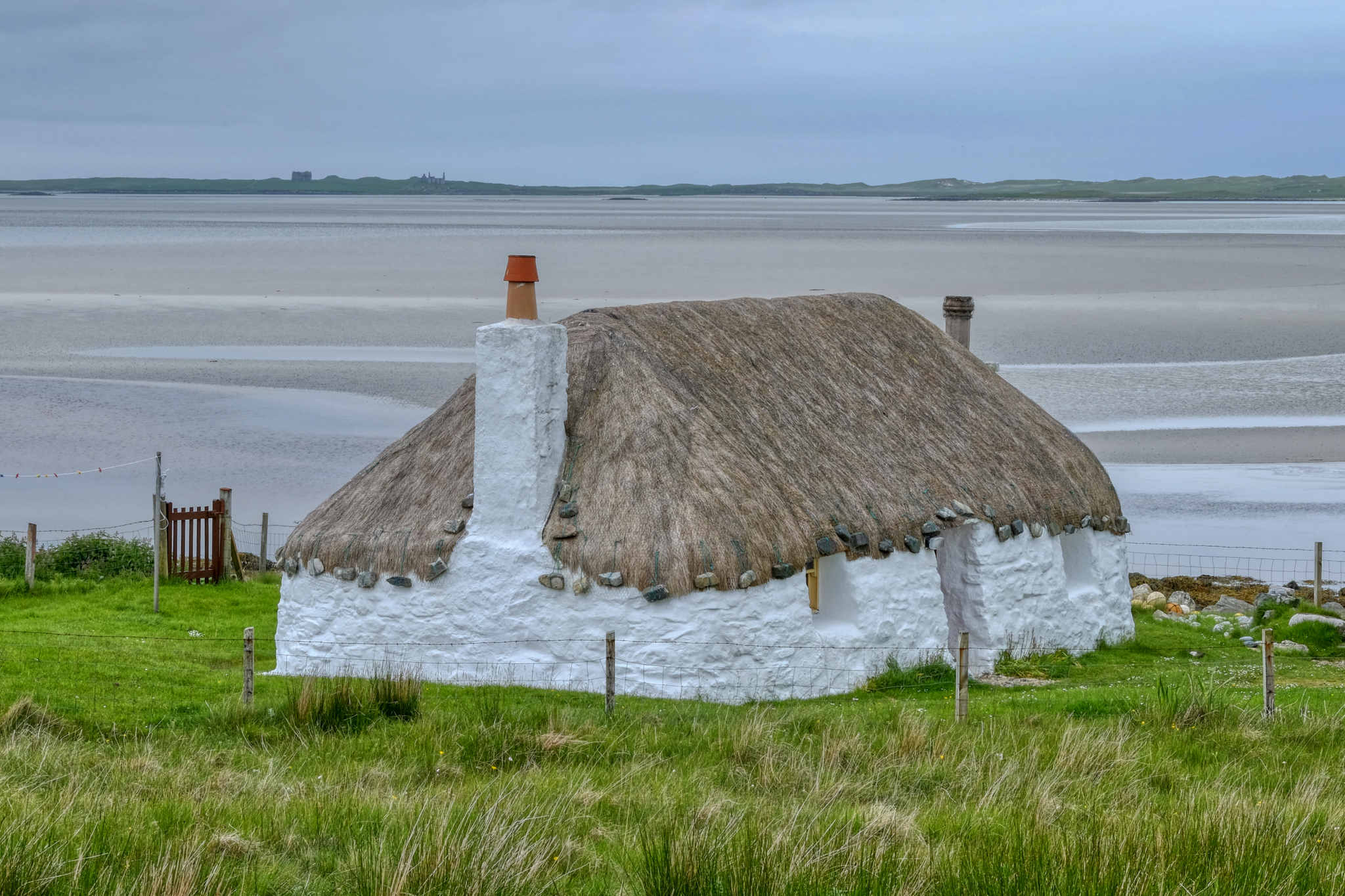 An old whitewash, thatched-roof cottage on the dandy bay. Charming.
An old whitewash, thatched-roof cottage on the dandy bay. Charming.
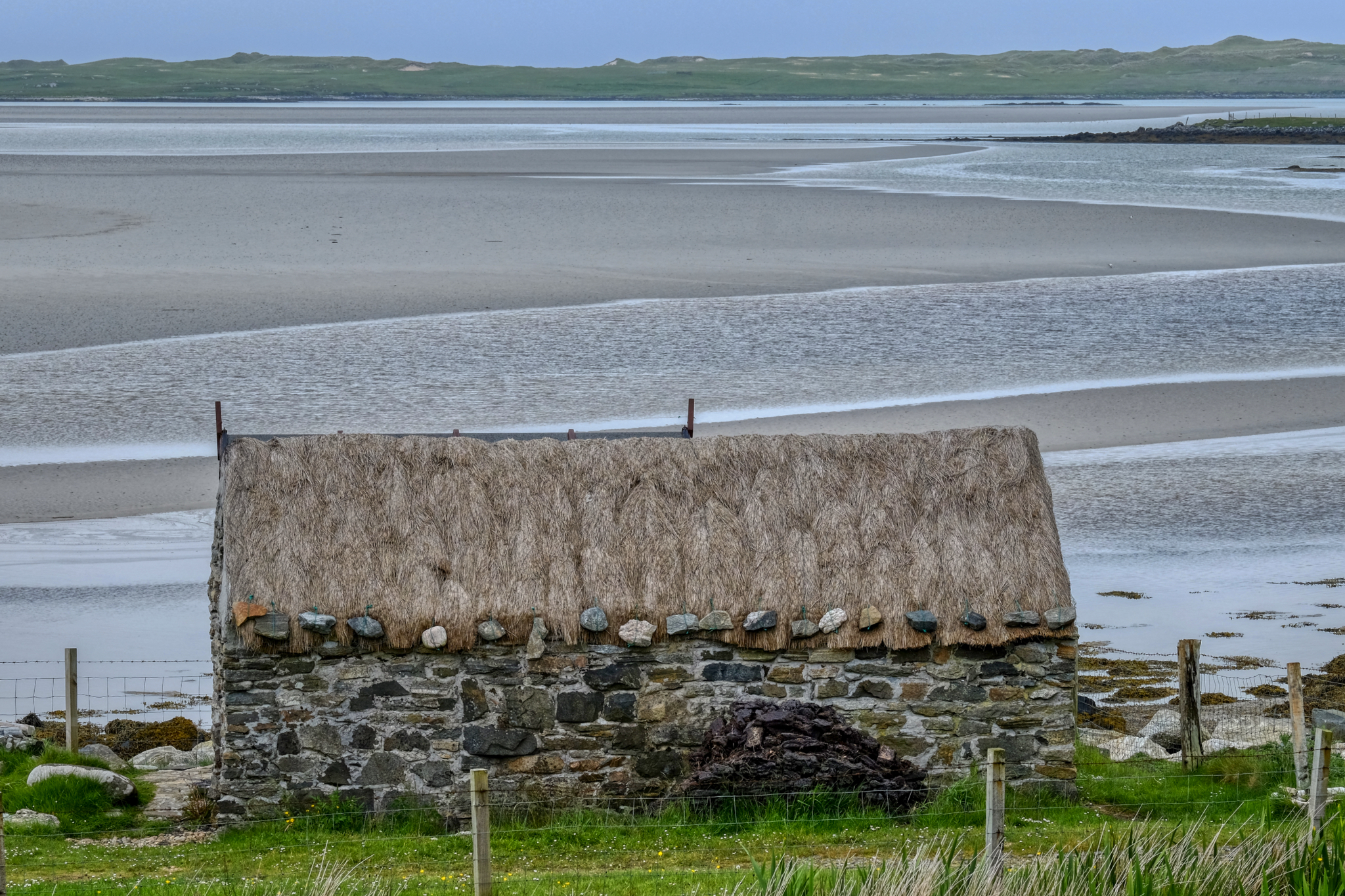 A lovely old crofter's stone barn.
A lovely old crofter's stone barn.
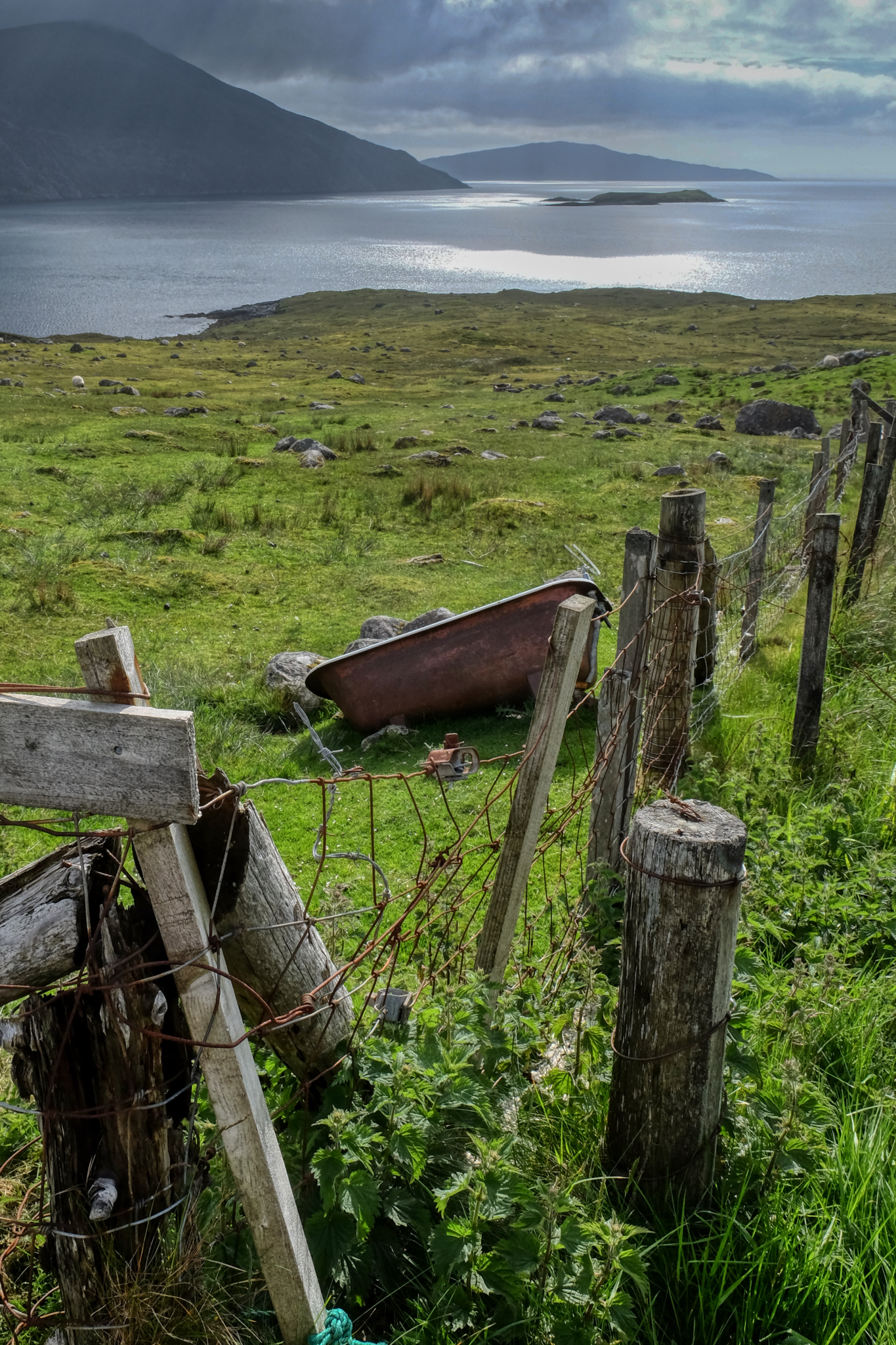 The views! Literally around every bend in the road . . . so many stunning landscapes!
The views! Literally around every bend in the road . . . so many stunning landscapes!
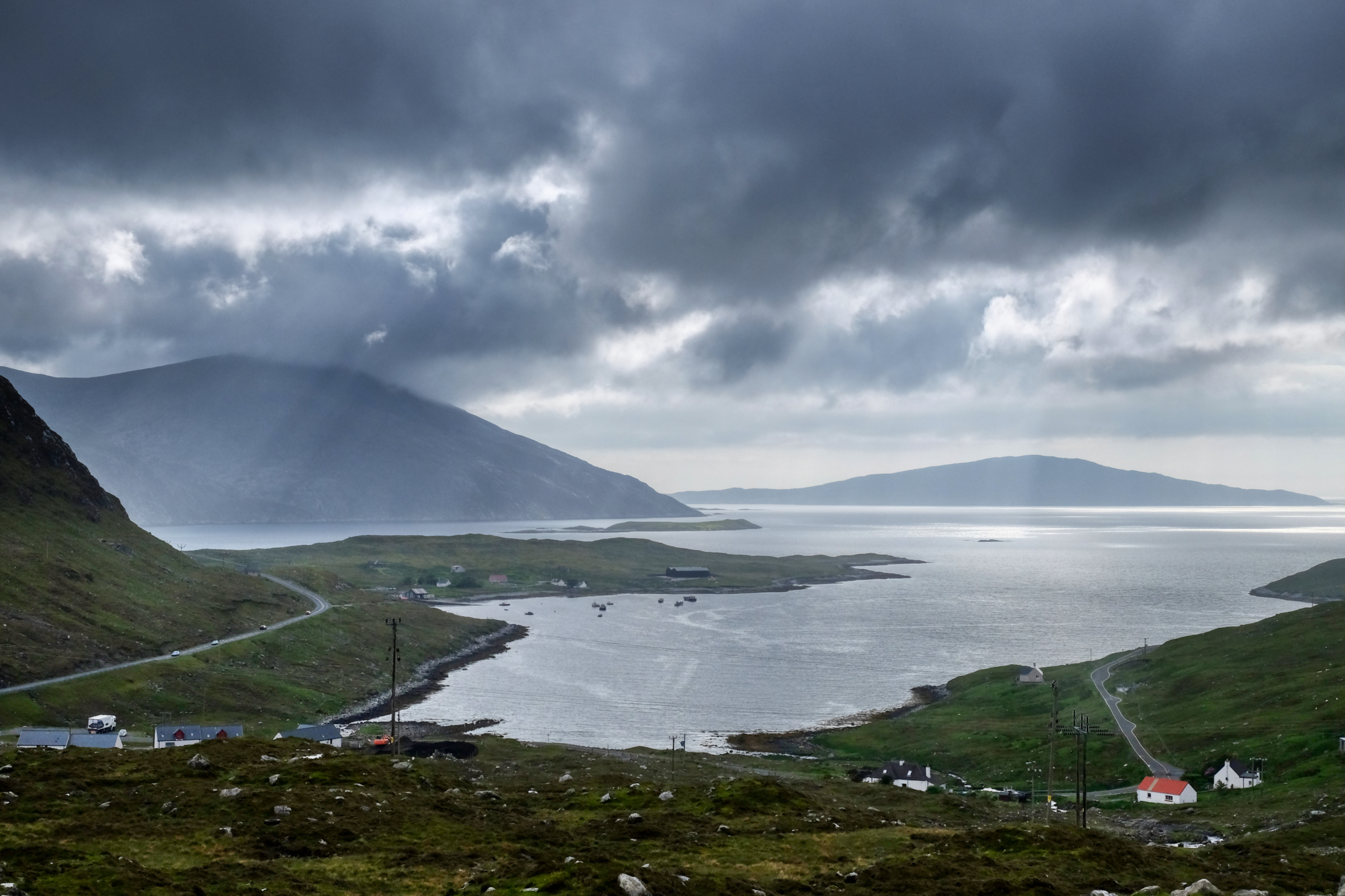 Mountains, light, sea, sky.
Mountains, light, sea, sky.
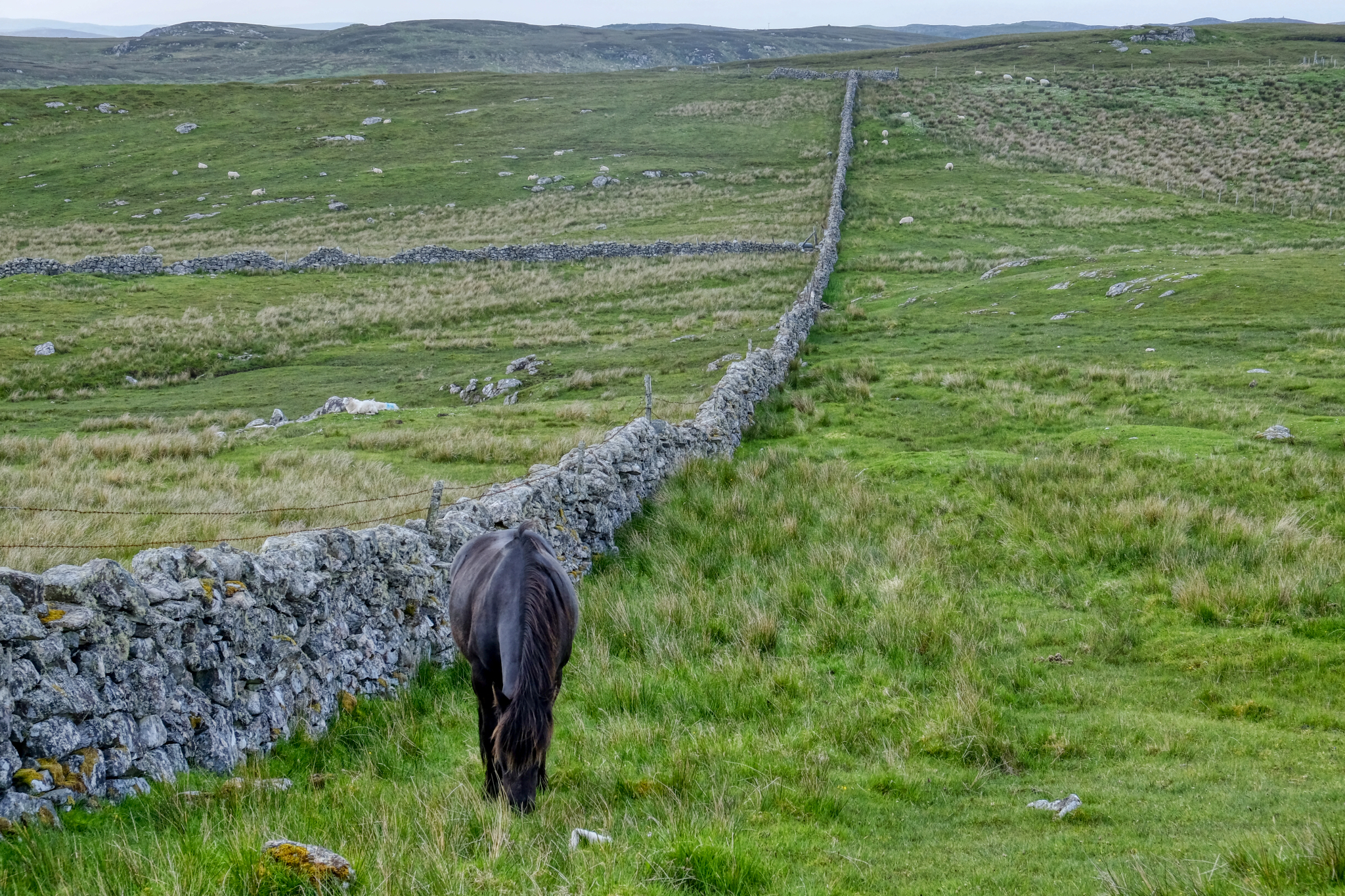 We diverted west, following a sign to Gearrannan Black House Village.
We diverted west, following a sign to Gearrannan Black House Village.
Gearrannan Black House Village
The Black House Village was a well-preserved museum of old thatched stone houses.
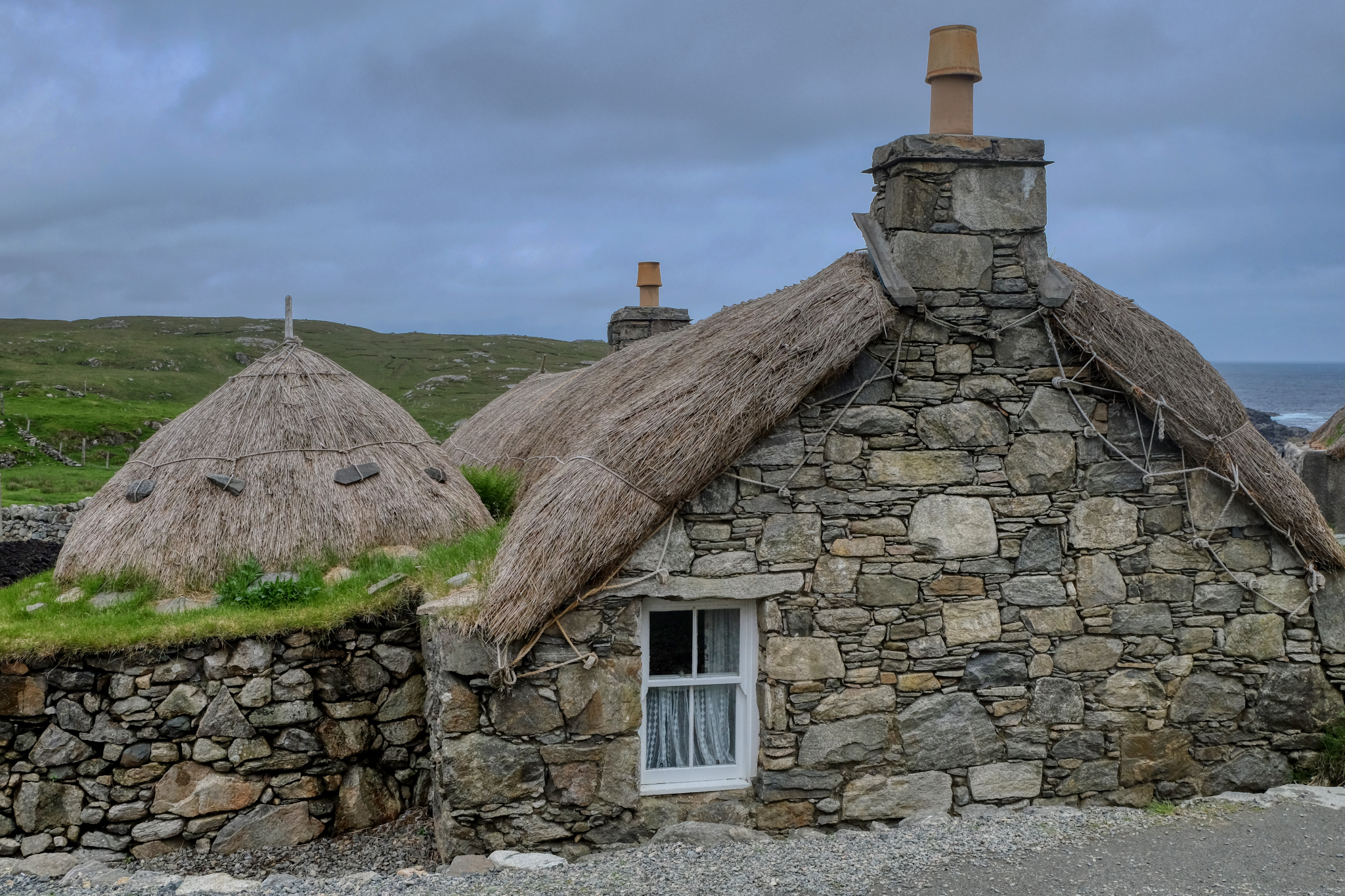 The houses here are all occupied . . . one is even a bed and breakfast . . . if we had only known!!!
The houses here are all occupied . . . one is even a bed and breakfast . . . if we had only known!!!
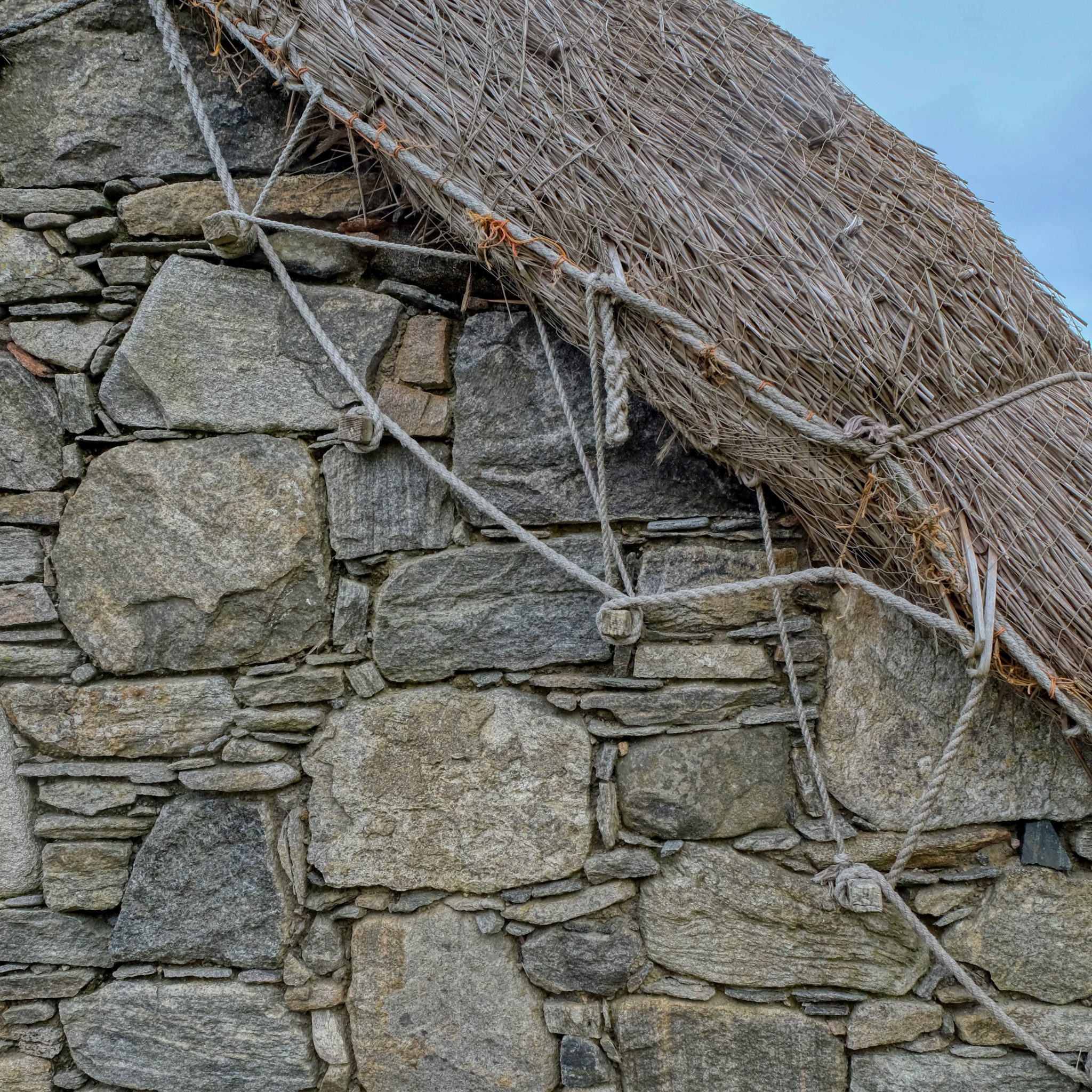 Beautifully detailed construction craft.
Beautifully detailed construction craft.
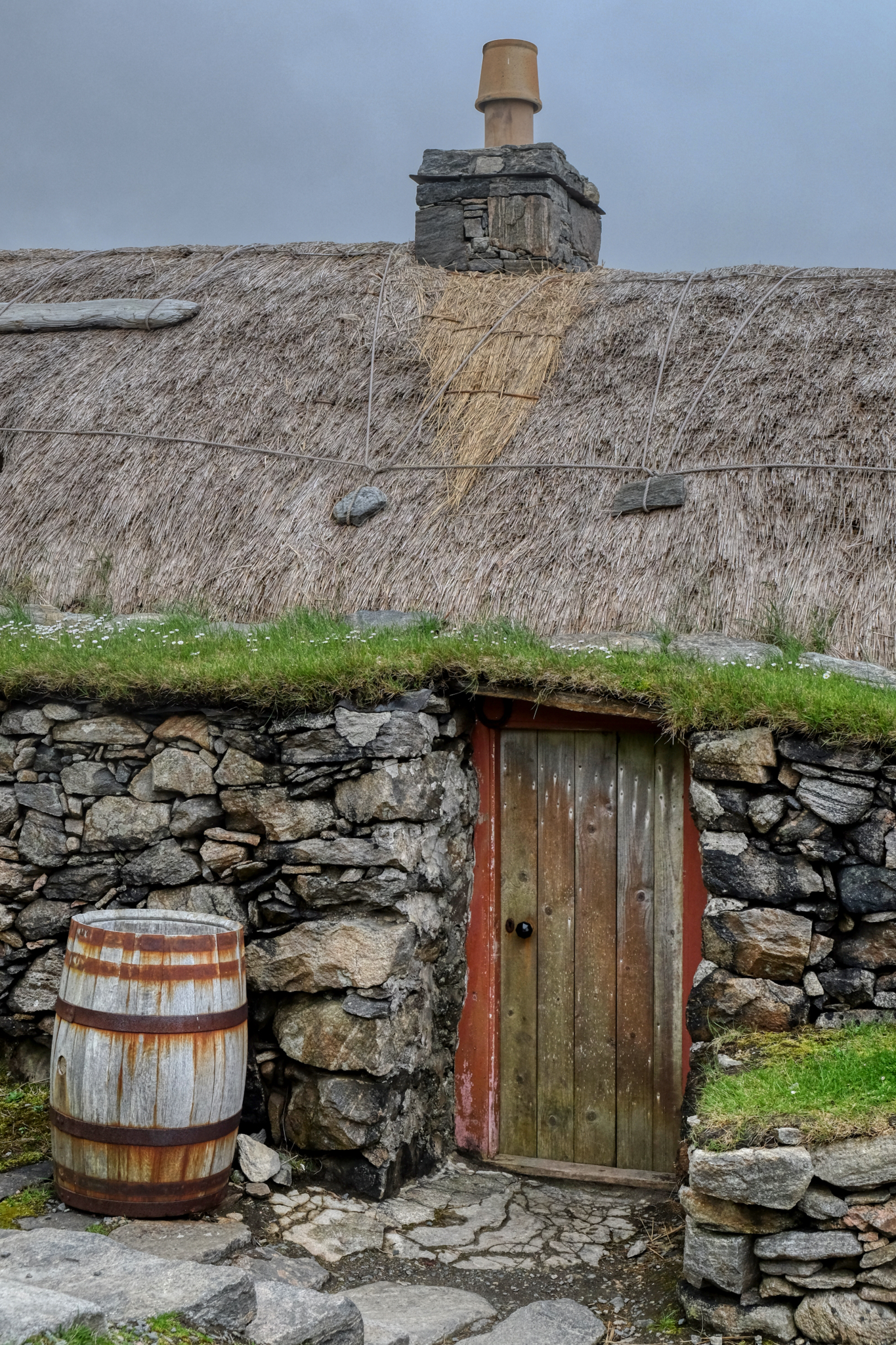 An unbelievably picturesque place.
An unbelievably picturesque place.
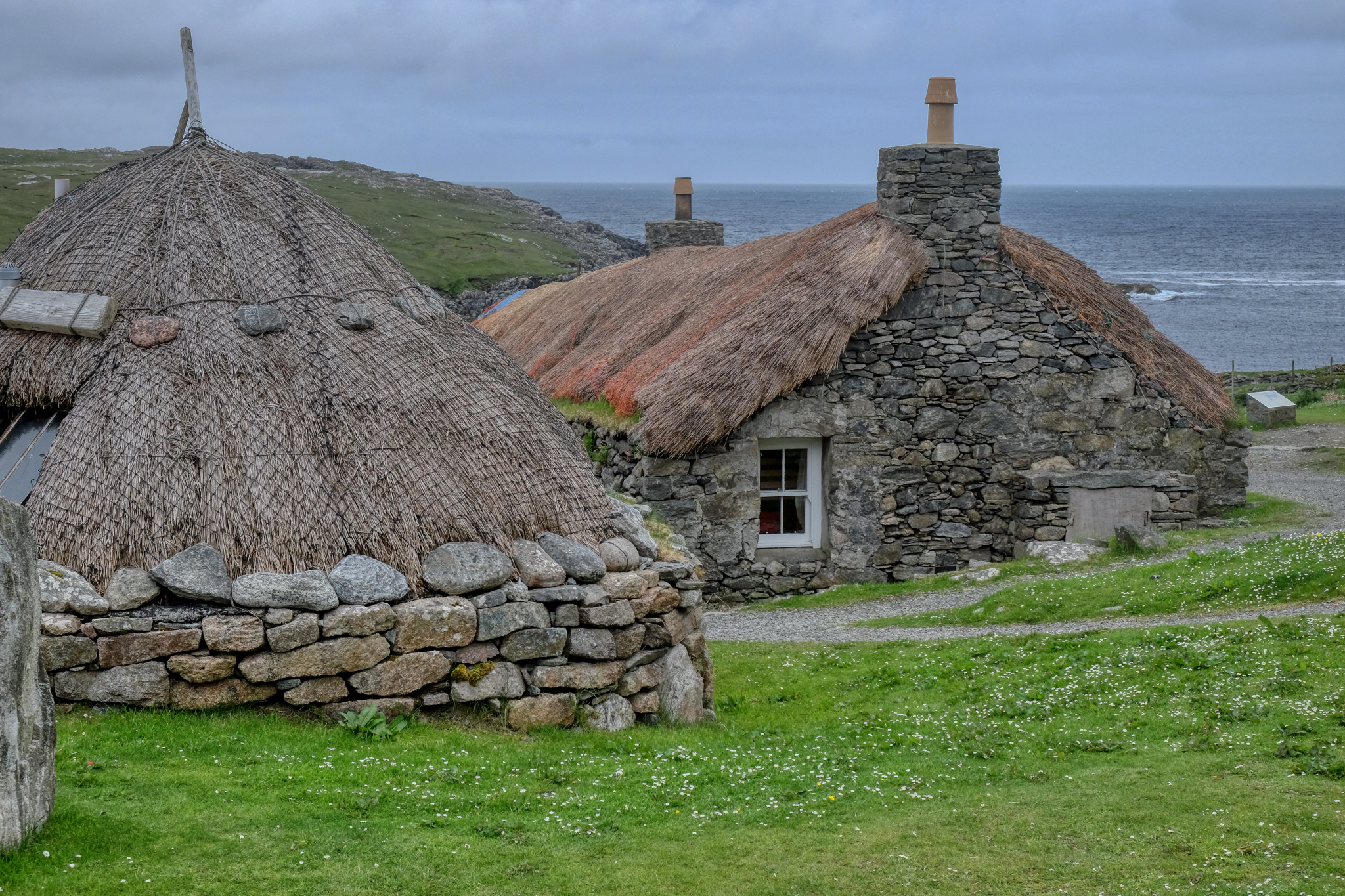 The village served as fishermen's cottages on a small bay.
The village served as fishermen's cottages on a small bay.
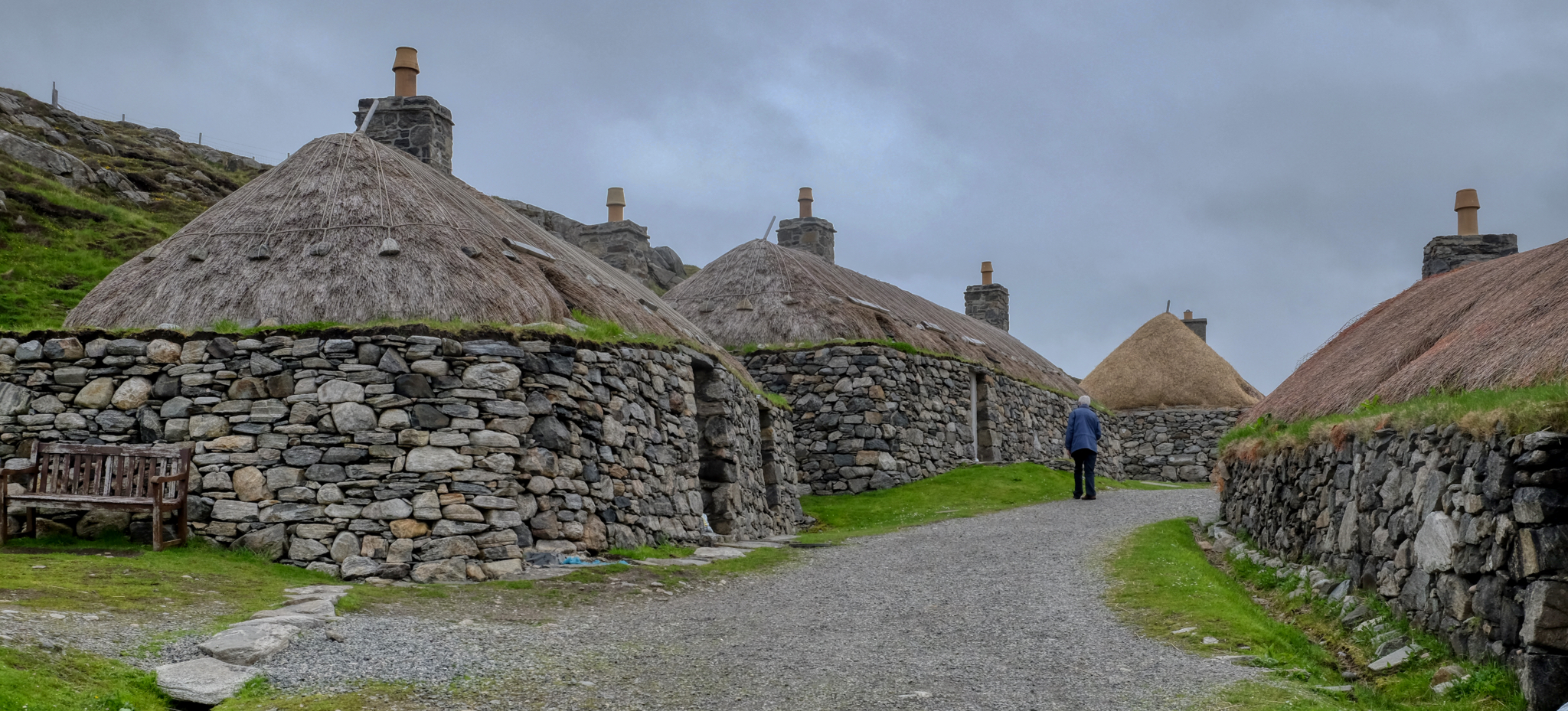 We strolled around this wonderful place for hours.
We strolled around this wonderful place for hours.
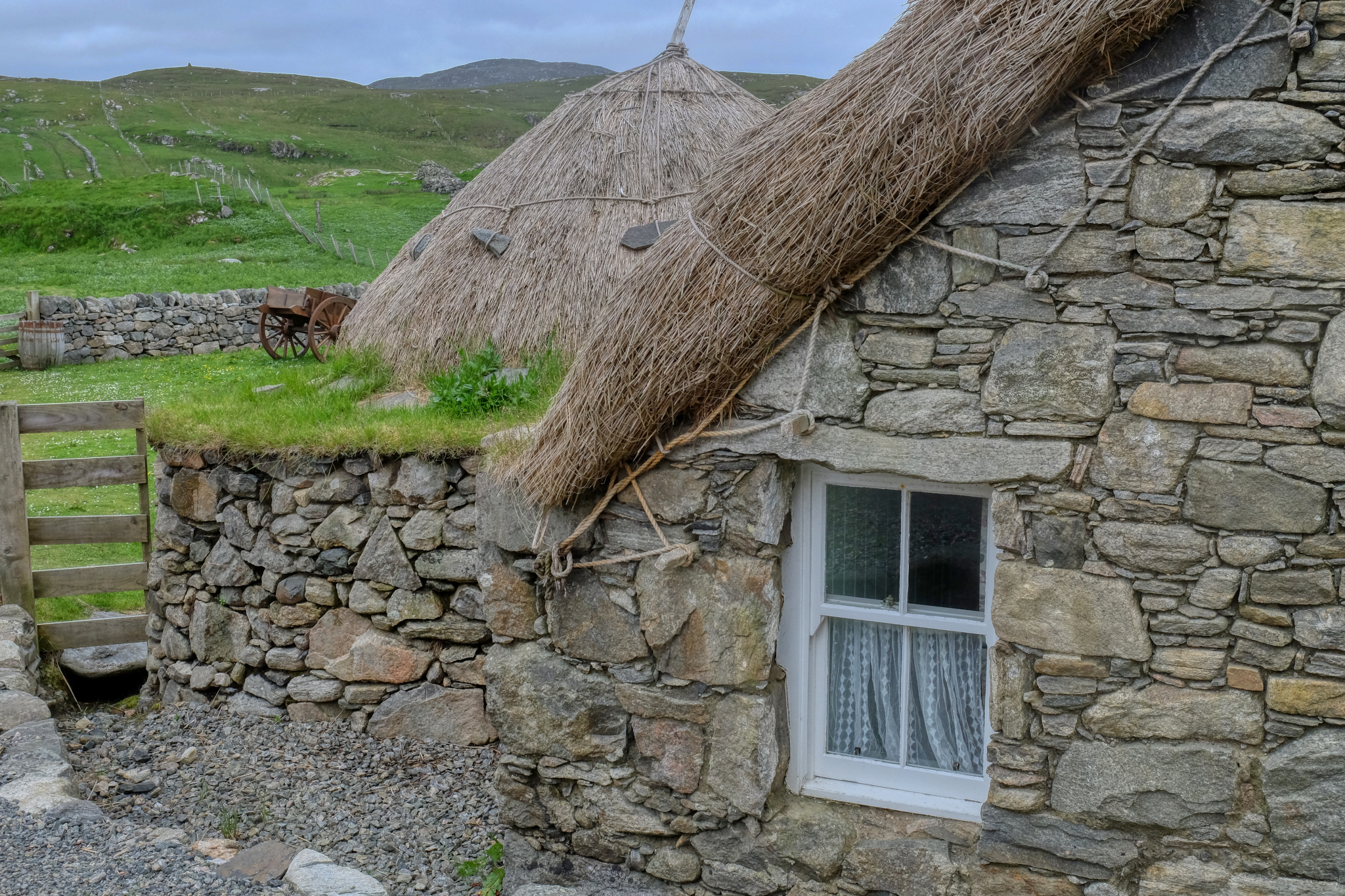 I have to confess: I took over 100 photos here . . . I couldn't help myself, I was overcome by the charming beauty.
I have to confess: I took over 100 photos here . . . I couldn't help myself, I was overcome by the charming beauty.
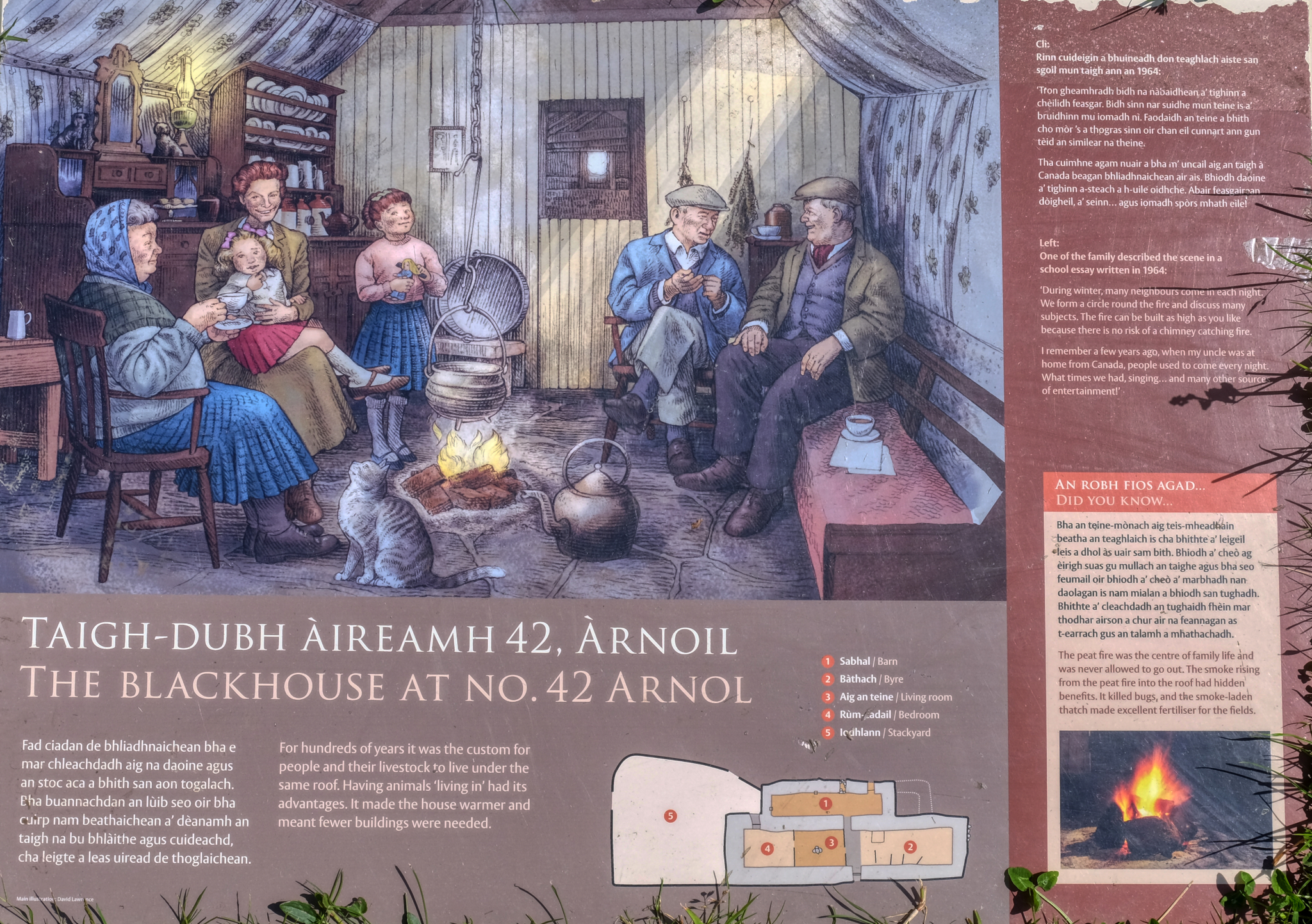 An historical marker on one of the black houses. Fascinating.
An historical marker on one of the black houses. Fascinating.
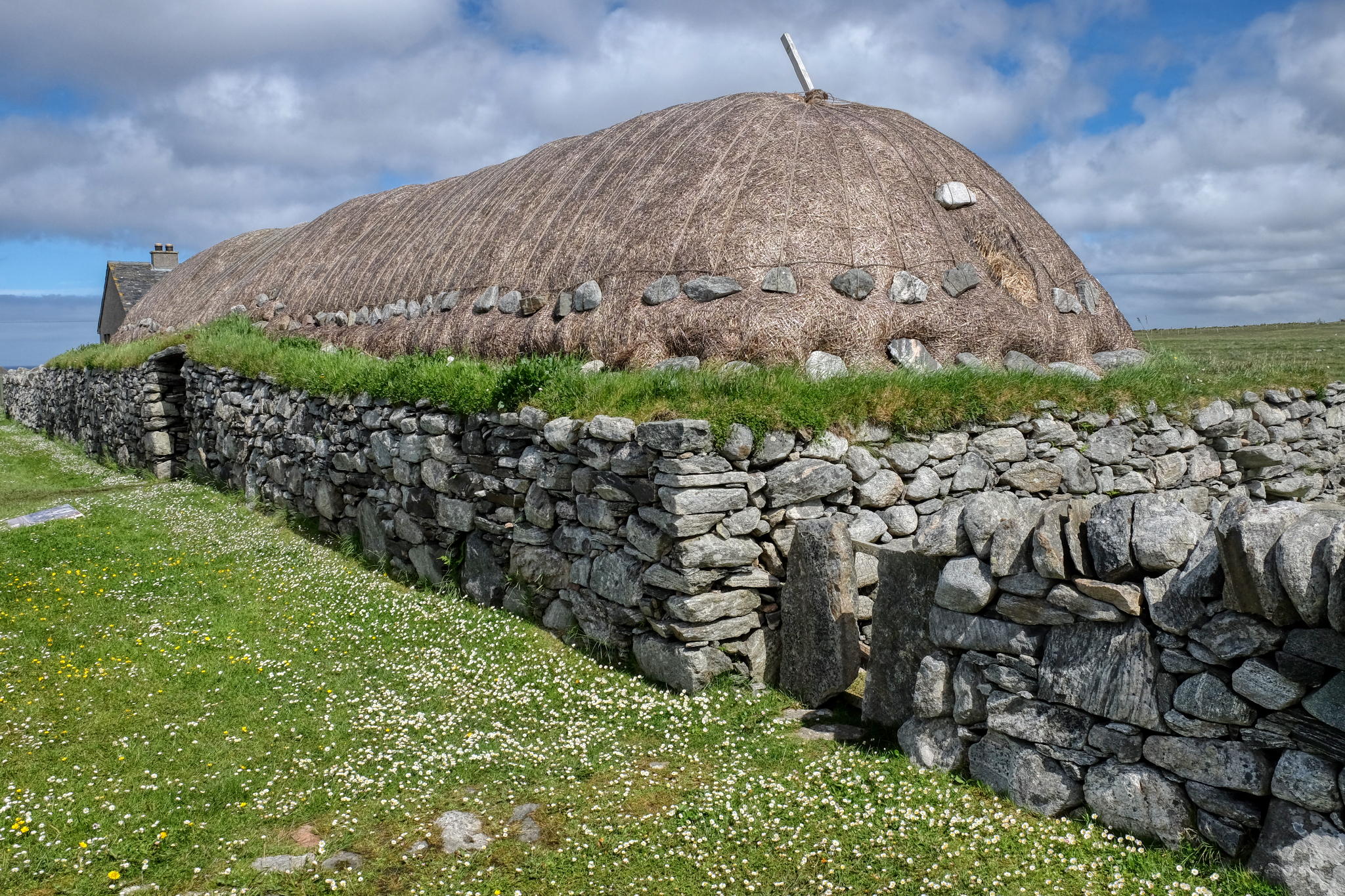 Out along the seaside west coast road of the Isle of Harris. A crofters barn, freshly thatched . . . and still in use.
Out along the seaside west coast road of the Isle of Harris. A crofters barn, freshly thatched . . . and still in use.
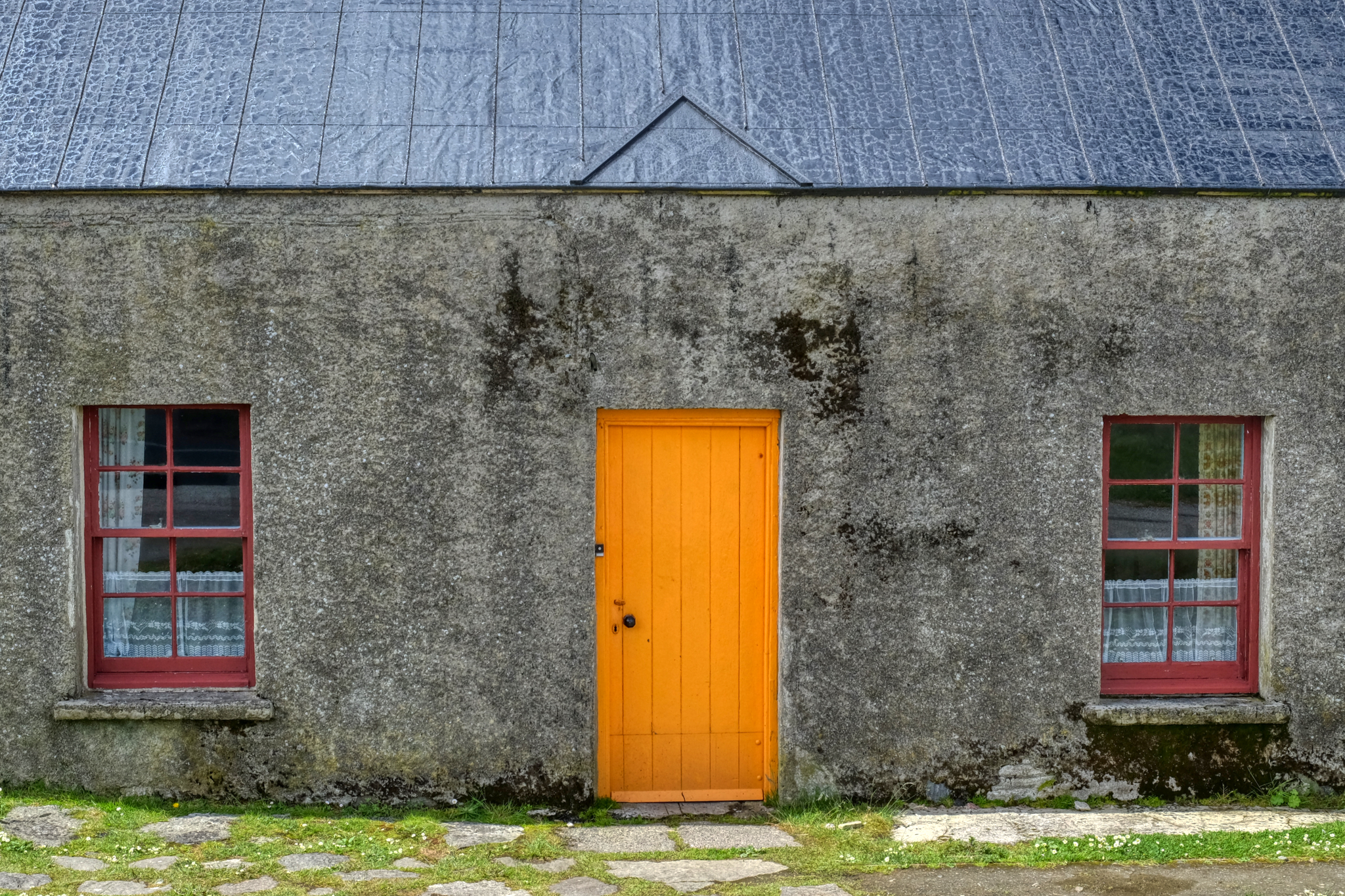 The houses here are very simple and austere . . . almost no decoration at all.
The houses here are very simple and austere . . . almost no decoration at all.
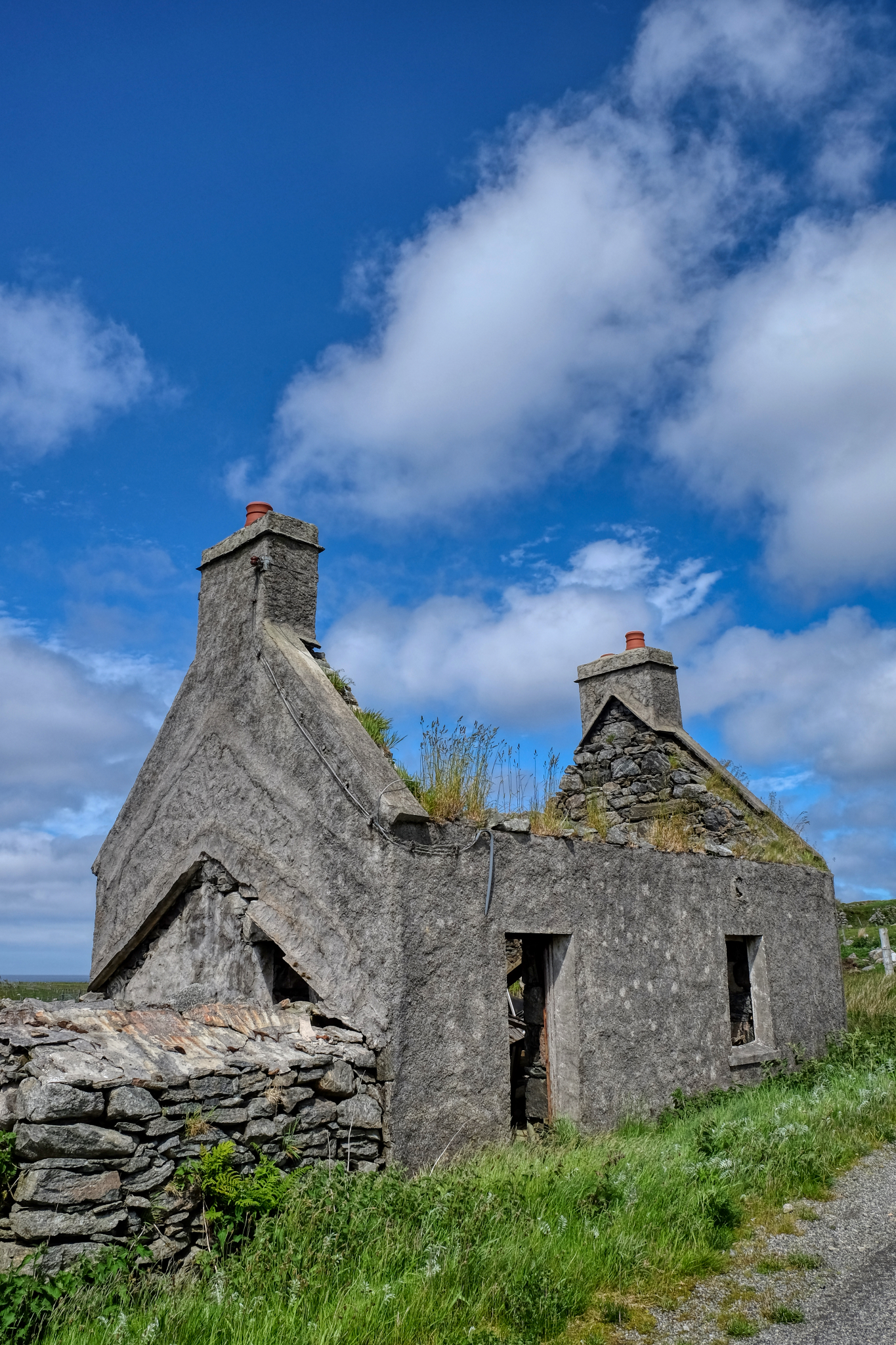 There are many abandoned houses in the west of these islands. There has been a steady drop in population as younger people move to towns and cities on the mainland of Scotland for jobs. However, some of the old houses are being restored by pensioners from as far away as London.
There are many abandoned houses in the west of these islands. There has been a steady drop in population as younger people move to towns and cities on the mainland of Scotland for jobs. However, some of the old houses are being restored by pensioners from as far away as London.
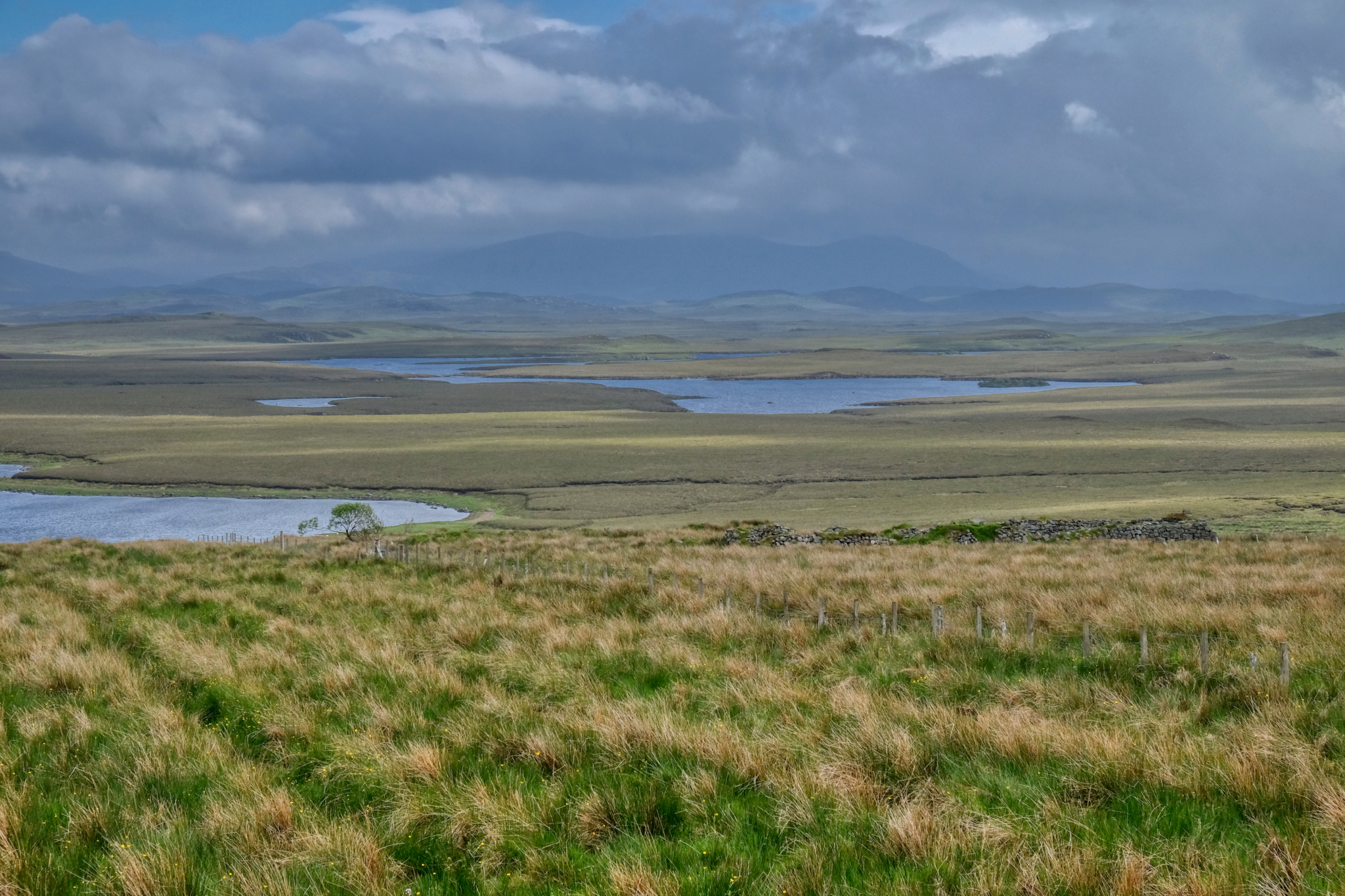 And on and on we went . . . north to see an amazing landmark . . .
And on and on we went . . . north to see an amazing landmark . . .
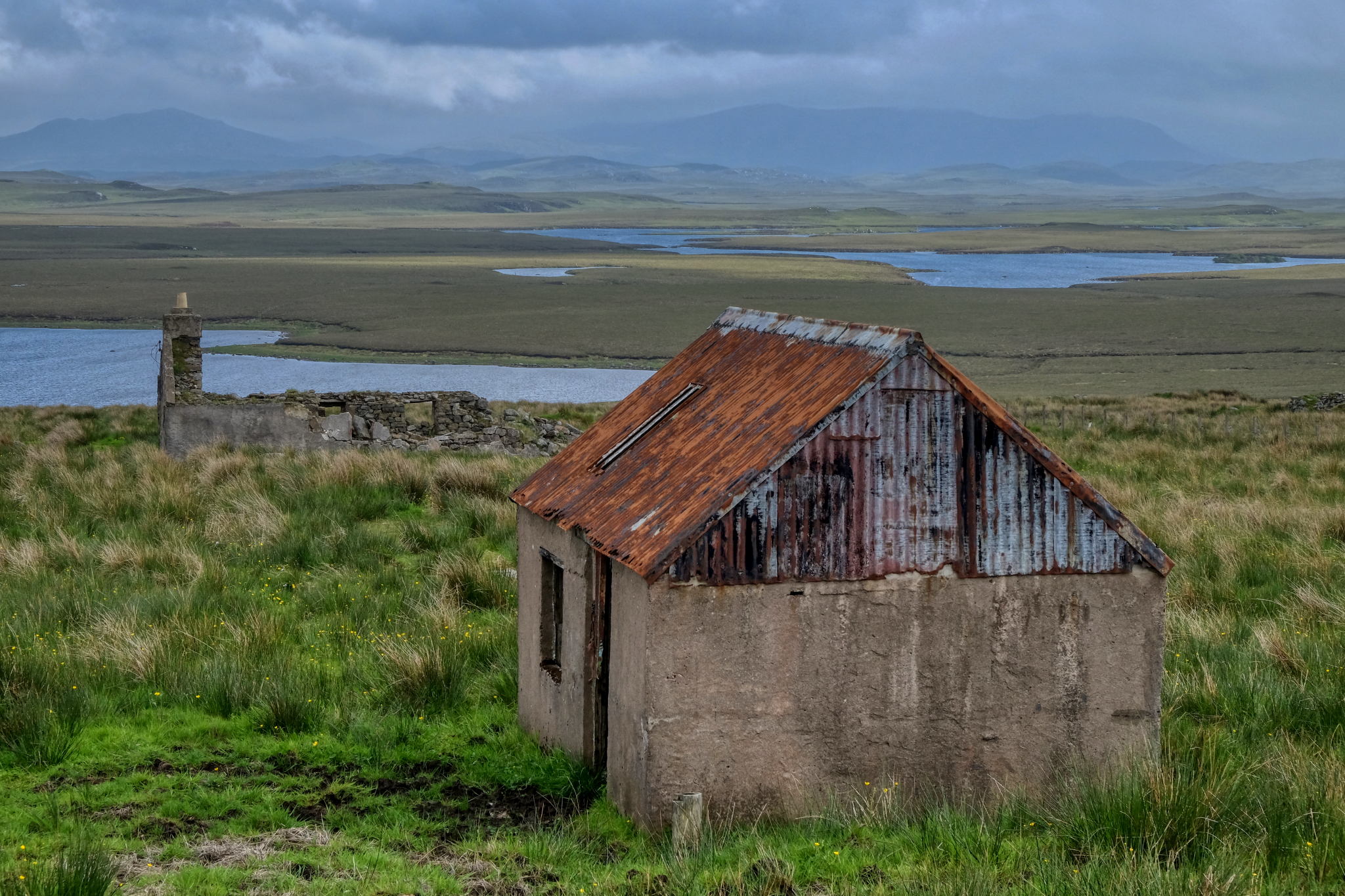 Out on a remote stretch of the north of the Isle of Lewis, more abandoned crofters cottages.
Out on a remote stretch of the north of the Isle of Lewis, more abandoned crofters cottages.
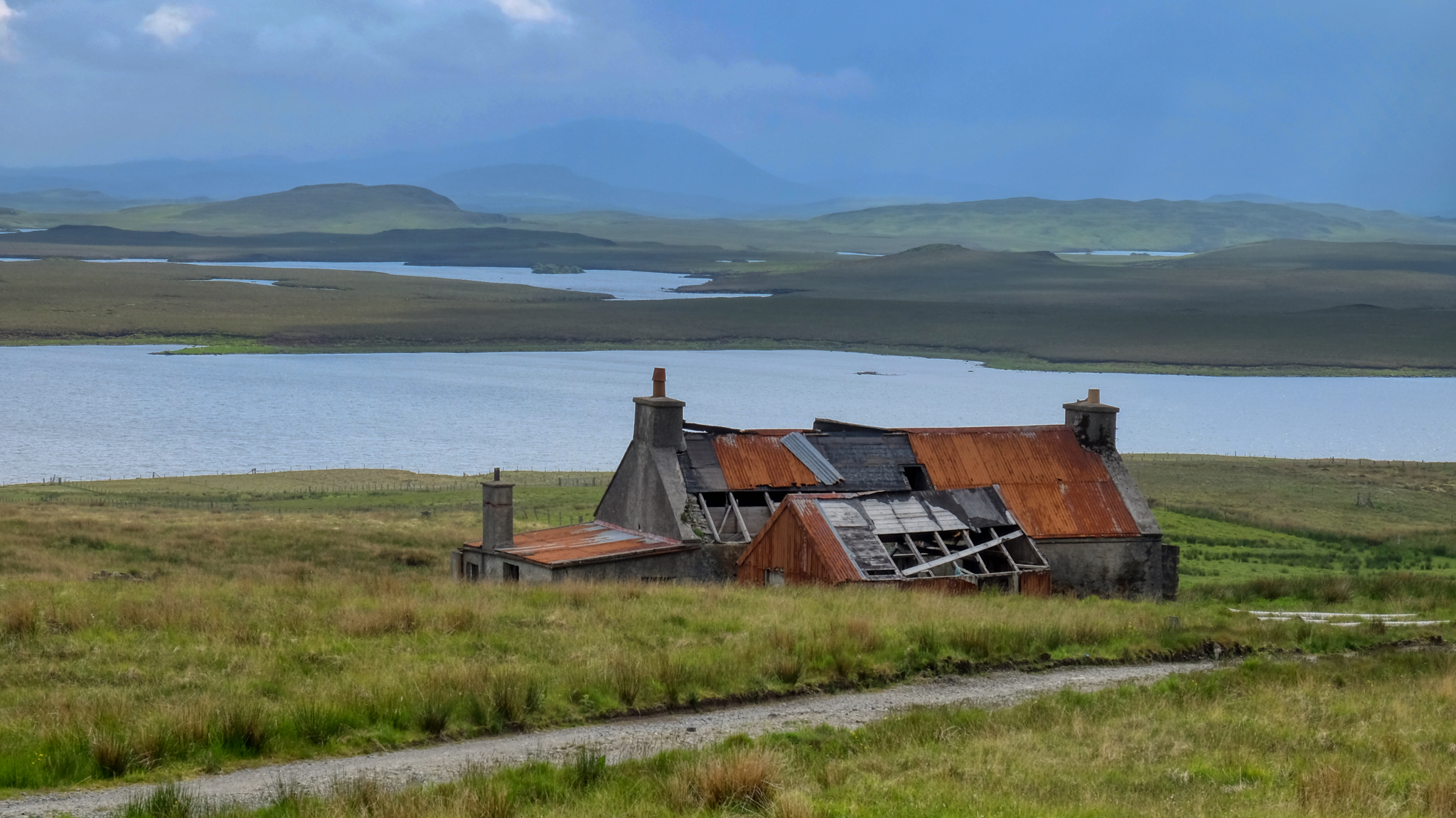 The views became more fantastical, otherworldly.
The views became more fantastical, otherworldly.
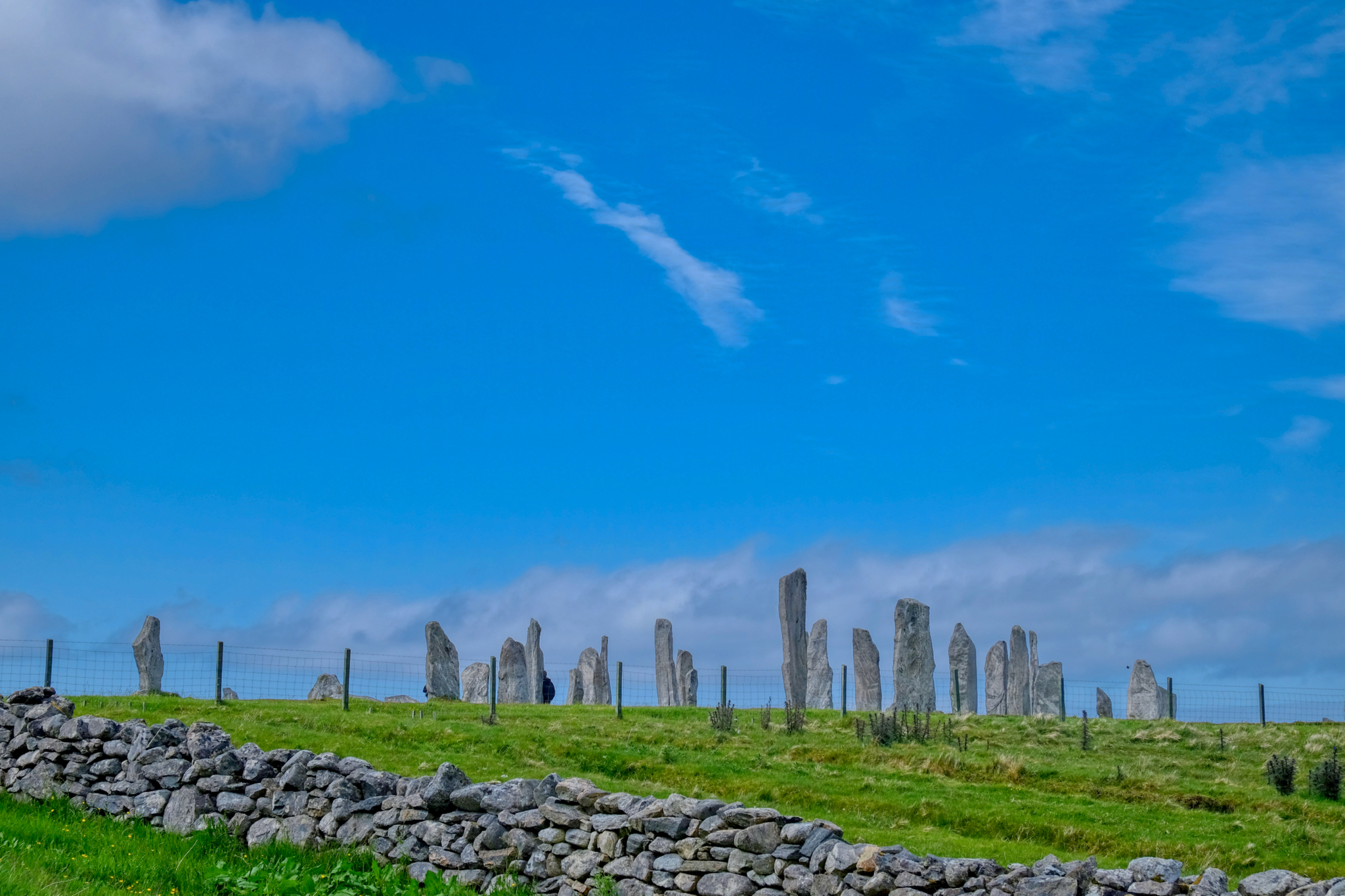 At last we had arrived at our destination: The Callanish Standing Stones!
At last we had arrived at our destination: The Callanish Standing Stones!
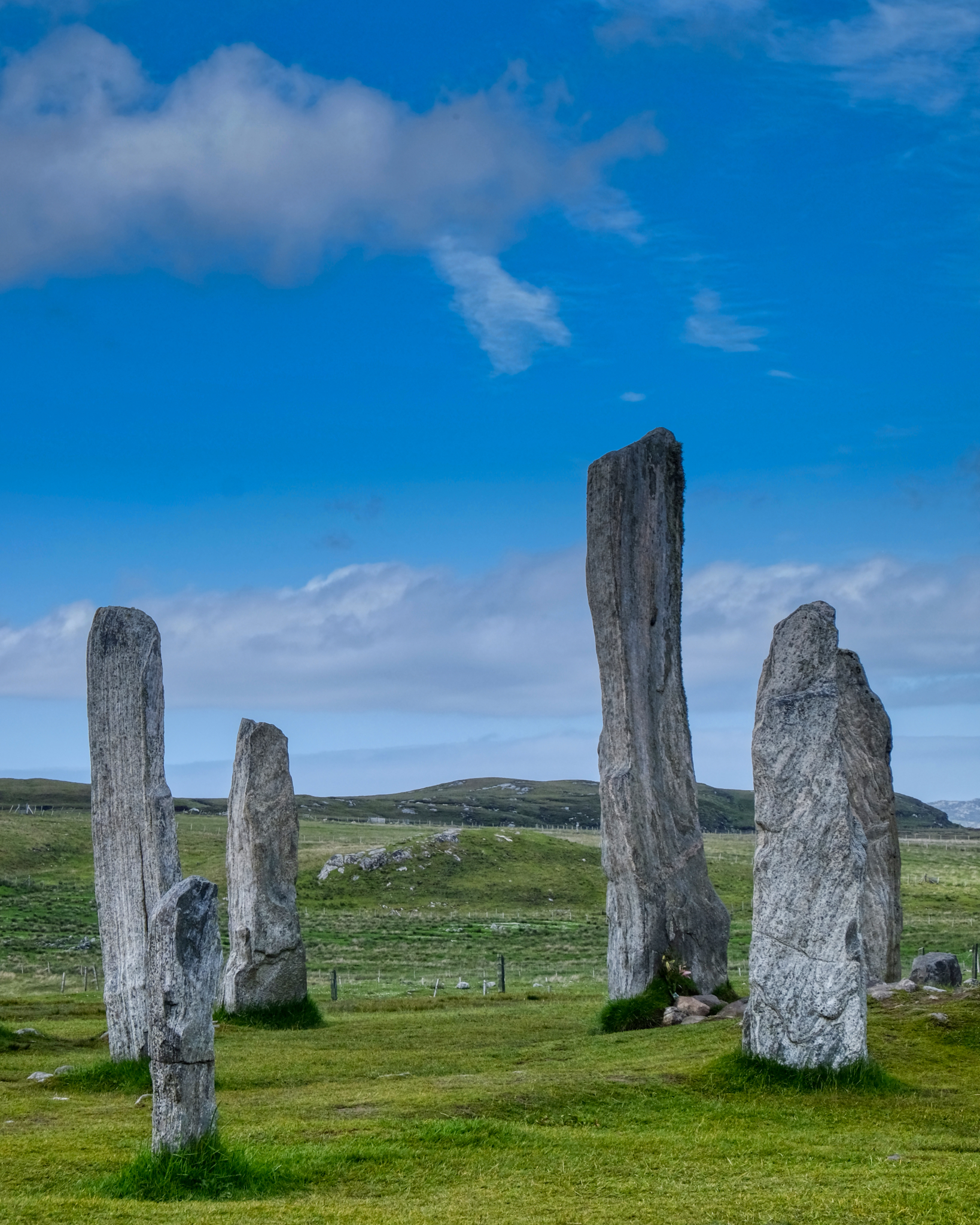 I have been to Stonehenge, but these were far more magnificent!
I have been to Stonehenge, but these were far more magnificent!
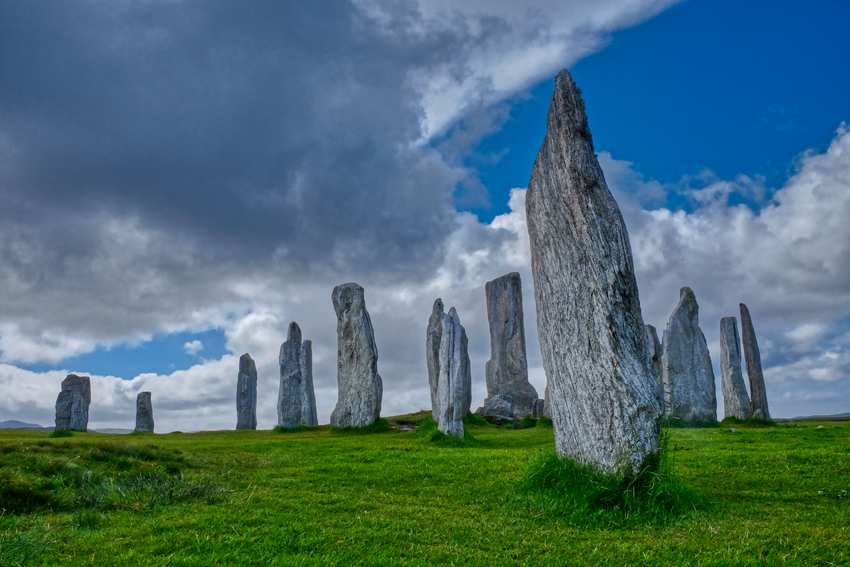
"The first traces of human activity are indicated by a broad ditch (no longer visible above ground) which appears to have belonged to some structure or enclosure. This may have been ritual, but could instead have been domestic. In the centuries around 3000 BC, however, the site was turned over to agriculture, which obliterated most of the earlier traces. After this, the site was allowed to grass over for a time." - Callanish Standing Stones
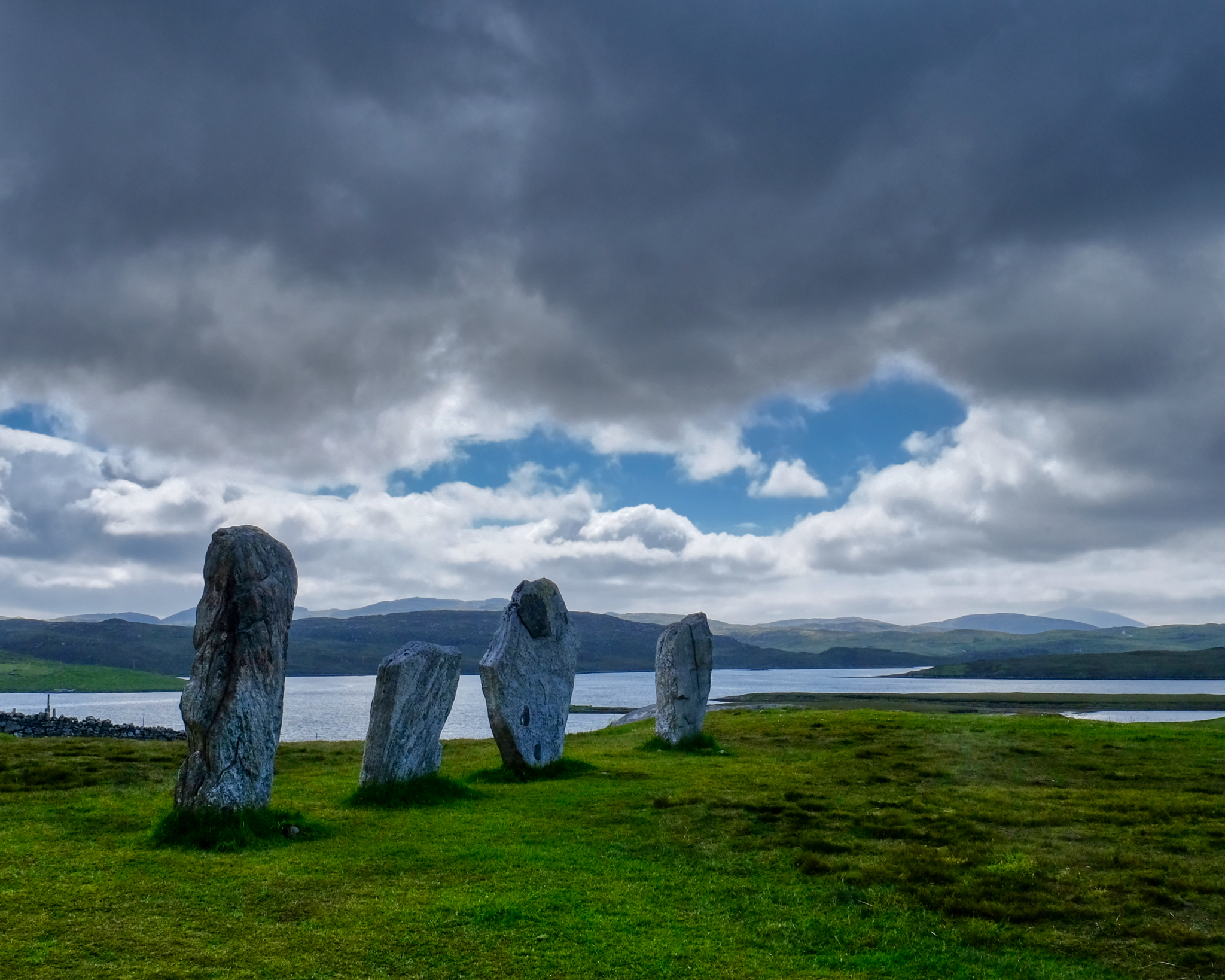 The stones sit on a hill with awesome views.
The stones sit on a hill with awesome views.
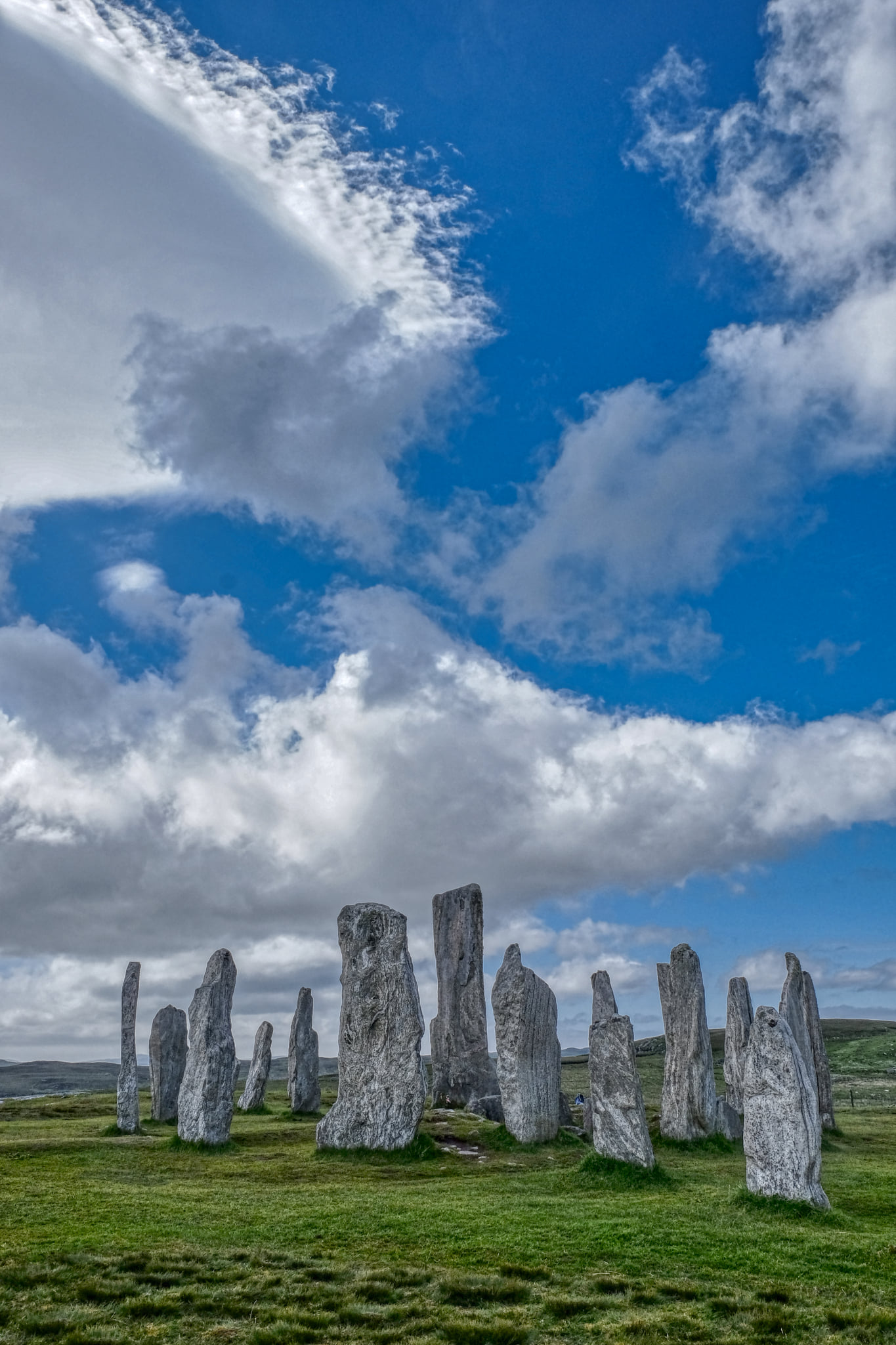 Under a stunning, ever-changing sky . . . the sun popping through now and again.
Under a stunning, ever-changing sky . . . the sun popping through now and again.
 Magic.
Magic.
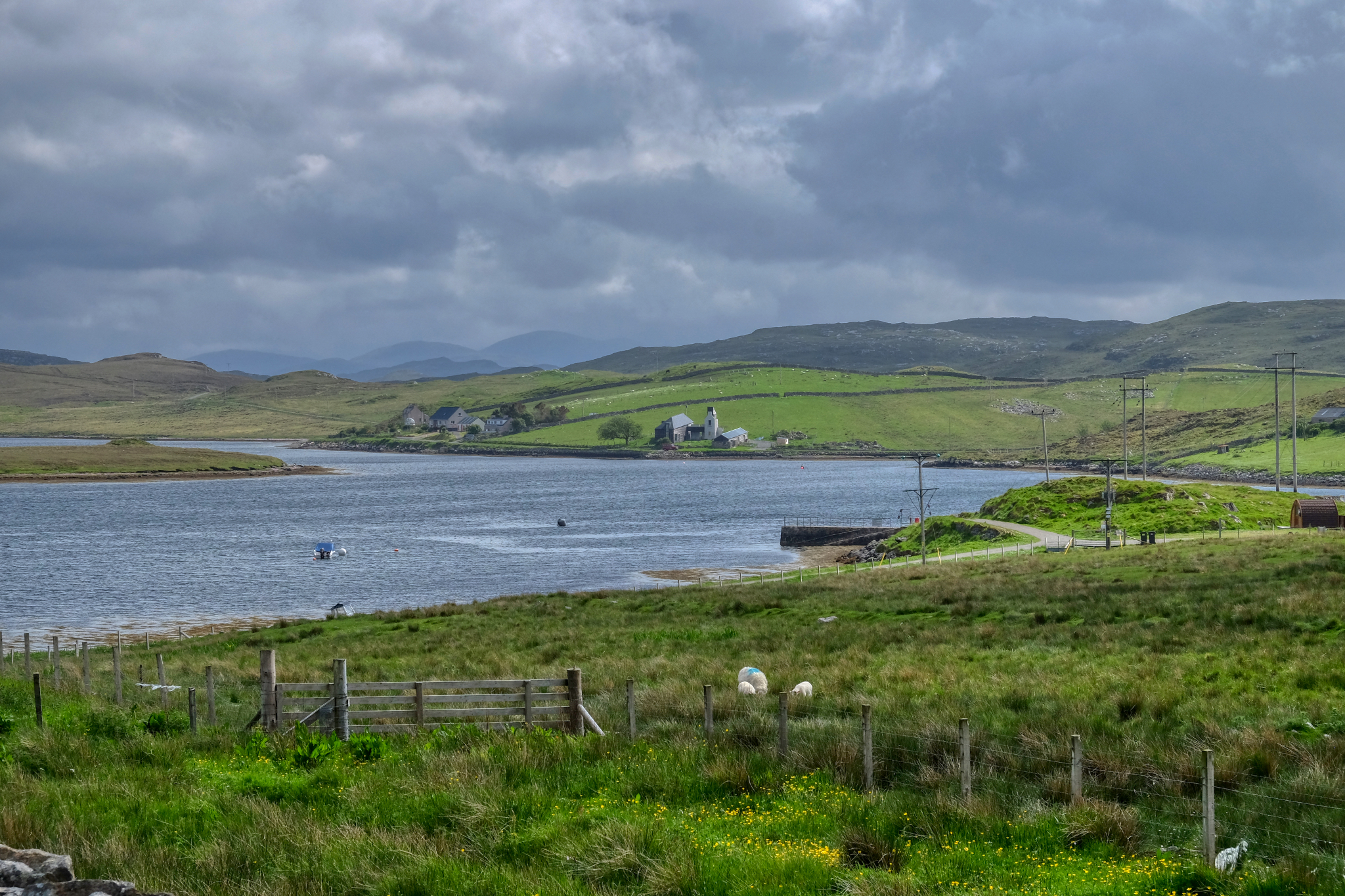 A view from the standing stones. Imagine living in a farm like this . . . in this place.
A view from the standing stones. Imagine living in a farm like this . . . in this place.
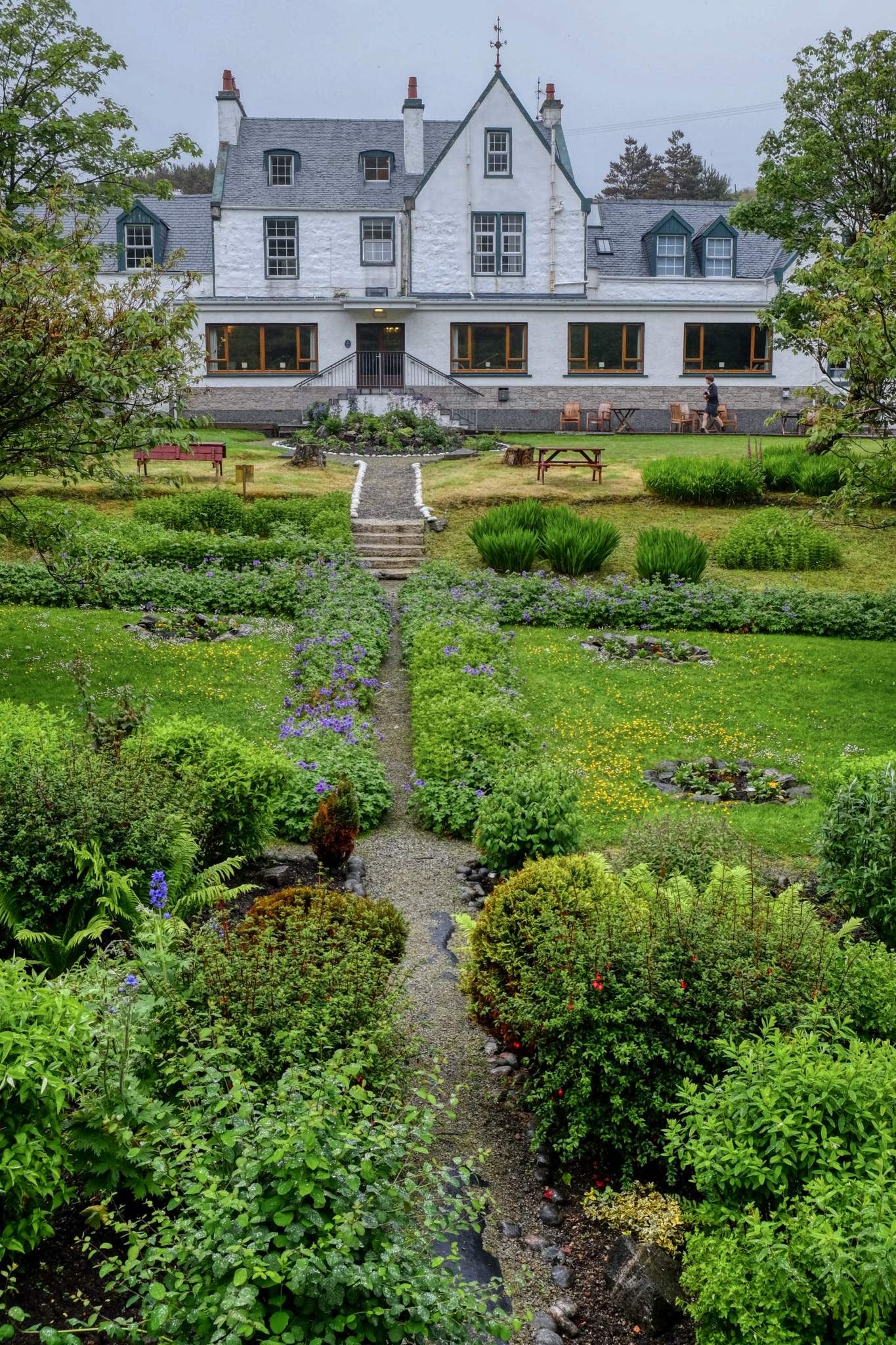 We stayed a lovely evening at the Harris Hotel, Isle of Lewis and Harris.
We stayed a lovely evening at the Harris Hotel, Isle of Lewis and Harris.
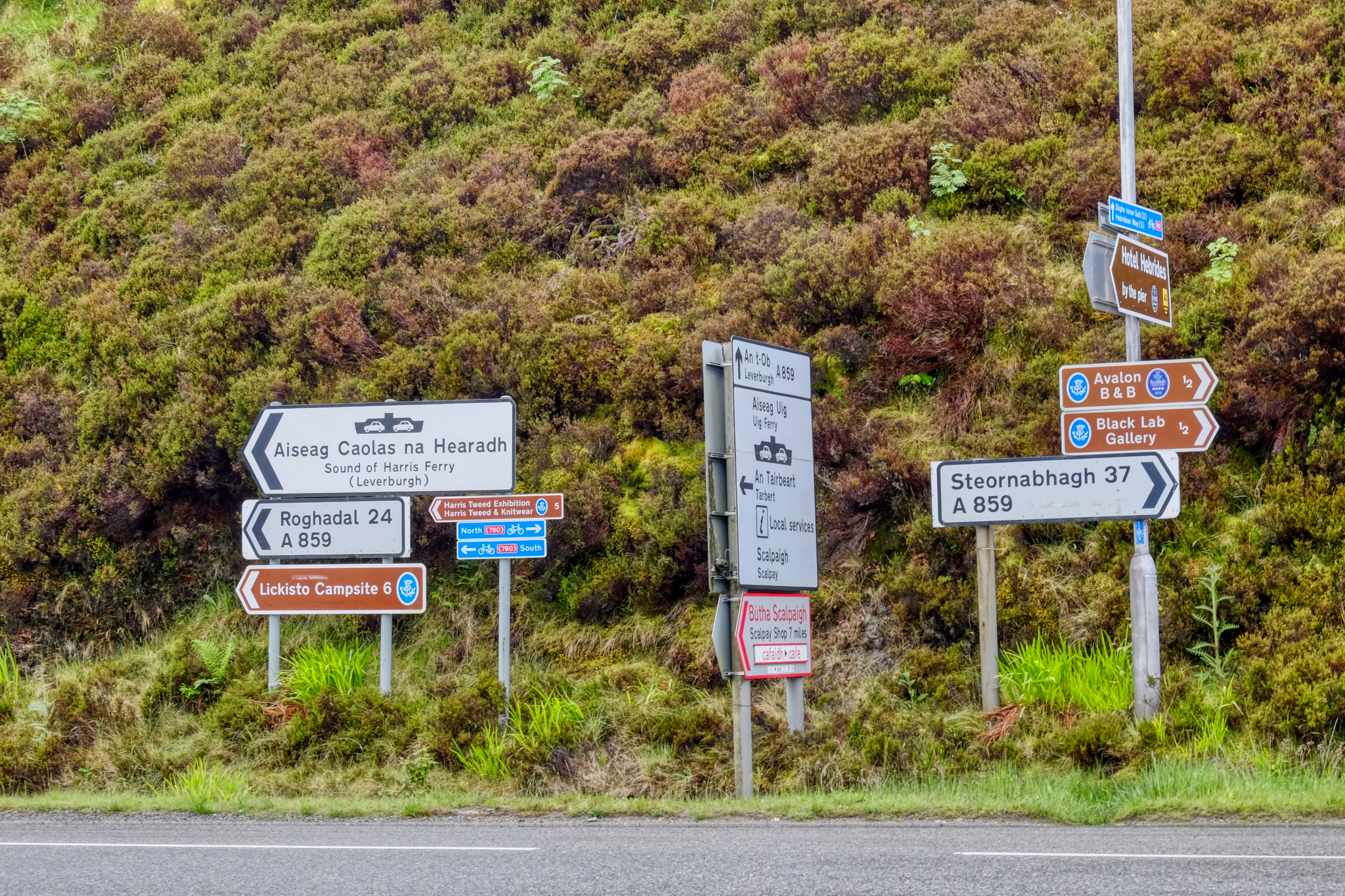 Ah! Harris tweed that way!
Ah! Harris tweed that way!
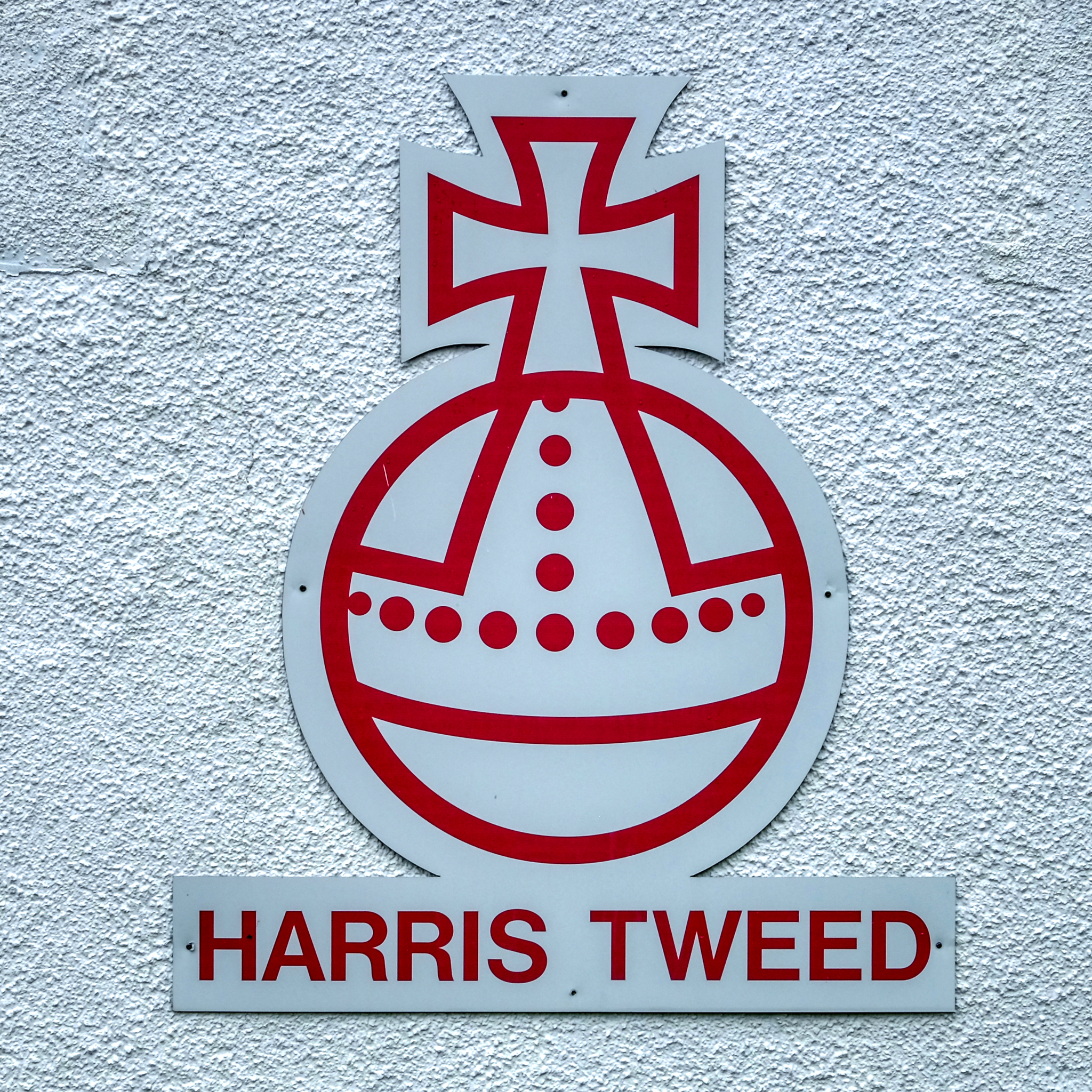 Only tweed that has been woven on the Isle of Harris can be called Harris tweed. It is famous all over the world.
Only tweed that has been woven on the Isle of Harris can be called Harris tweed. It is famous all over the world.
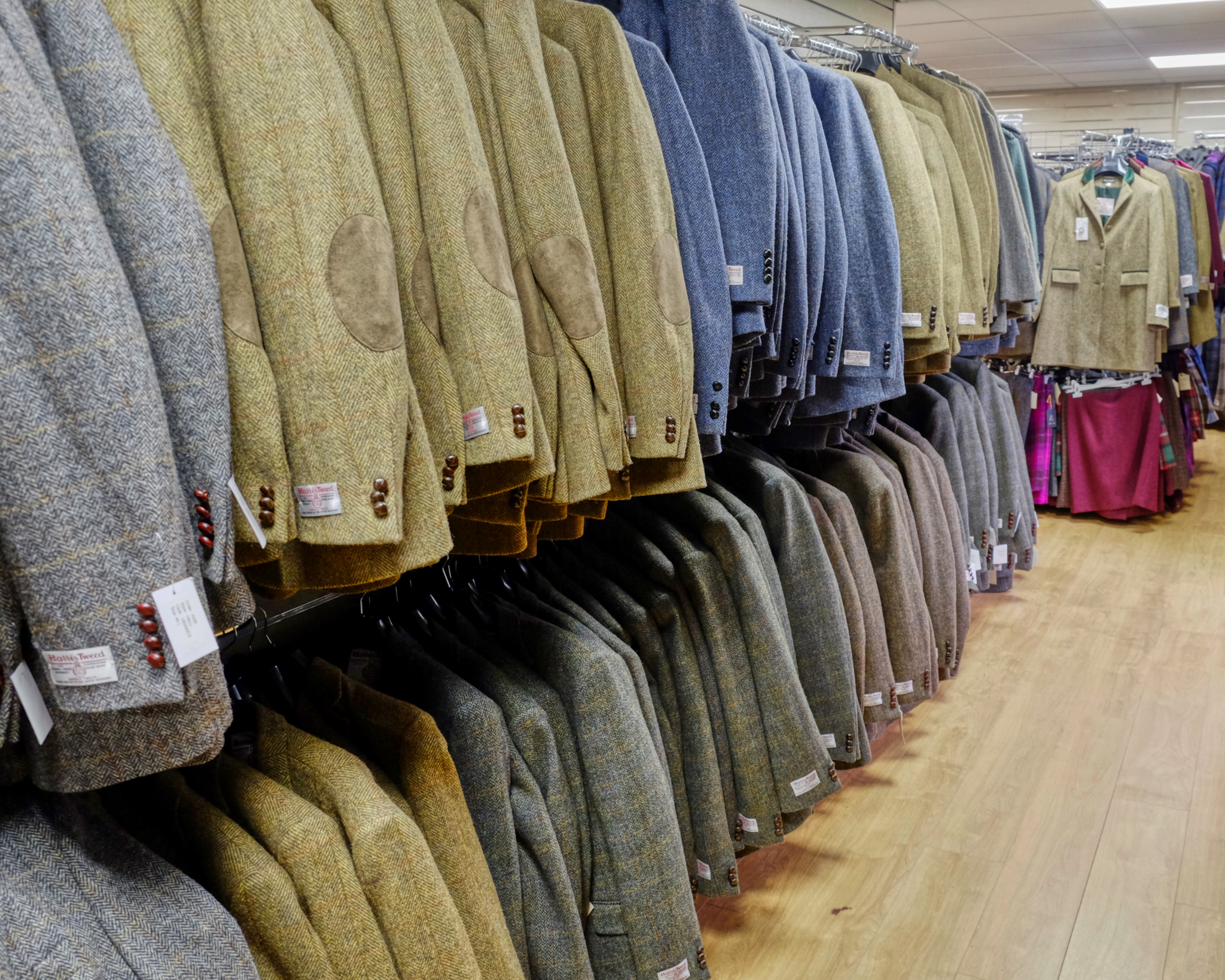 When I lived in London many years ago, I had a very nice Harris tweed sport coat. I tried several of these on . . . but they felt too old fashioned . . . and professorial.
When I lived in London many years ago, I had a very nice Harris tweed sport coat. I tried several of these on . . . but they felt too old fashioned . . . and professorial.
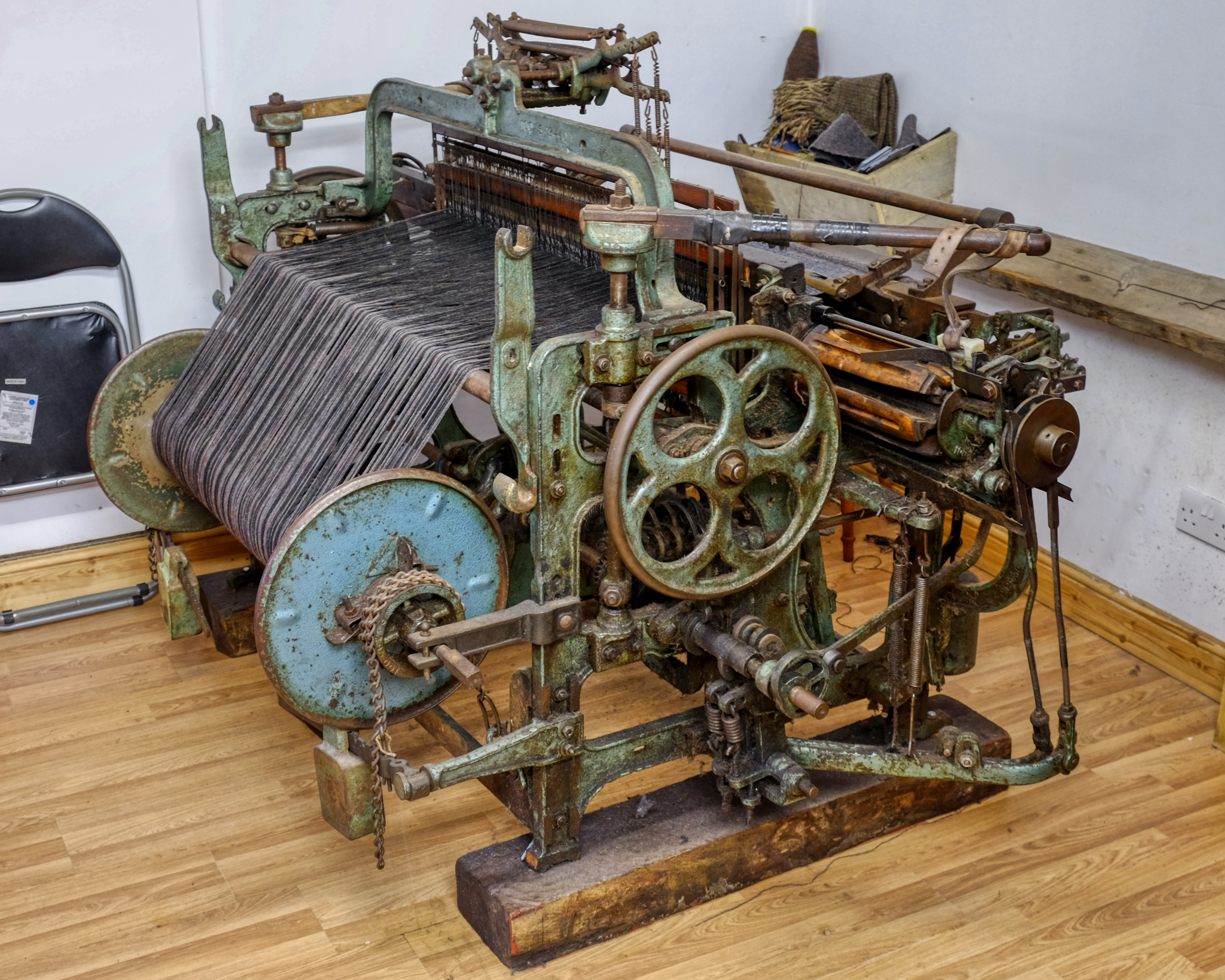 The winter nights on the Outer Hebrides are long, dark, cold, and windy. Local residents have spent the dark months weaving the distinctive tweed the island is famous for on these looms.
The winter nights on the Outer Hebrides are long, dark, cold, and windy. Local residents have spent the dark months weaving the distinctive tweed the island is famous for on these looms.
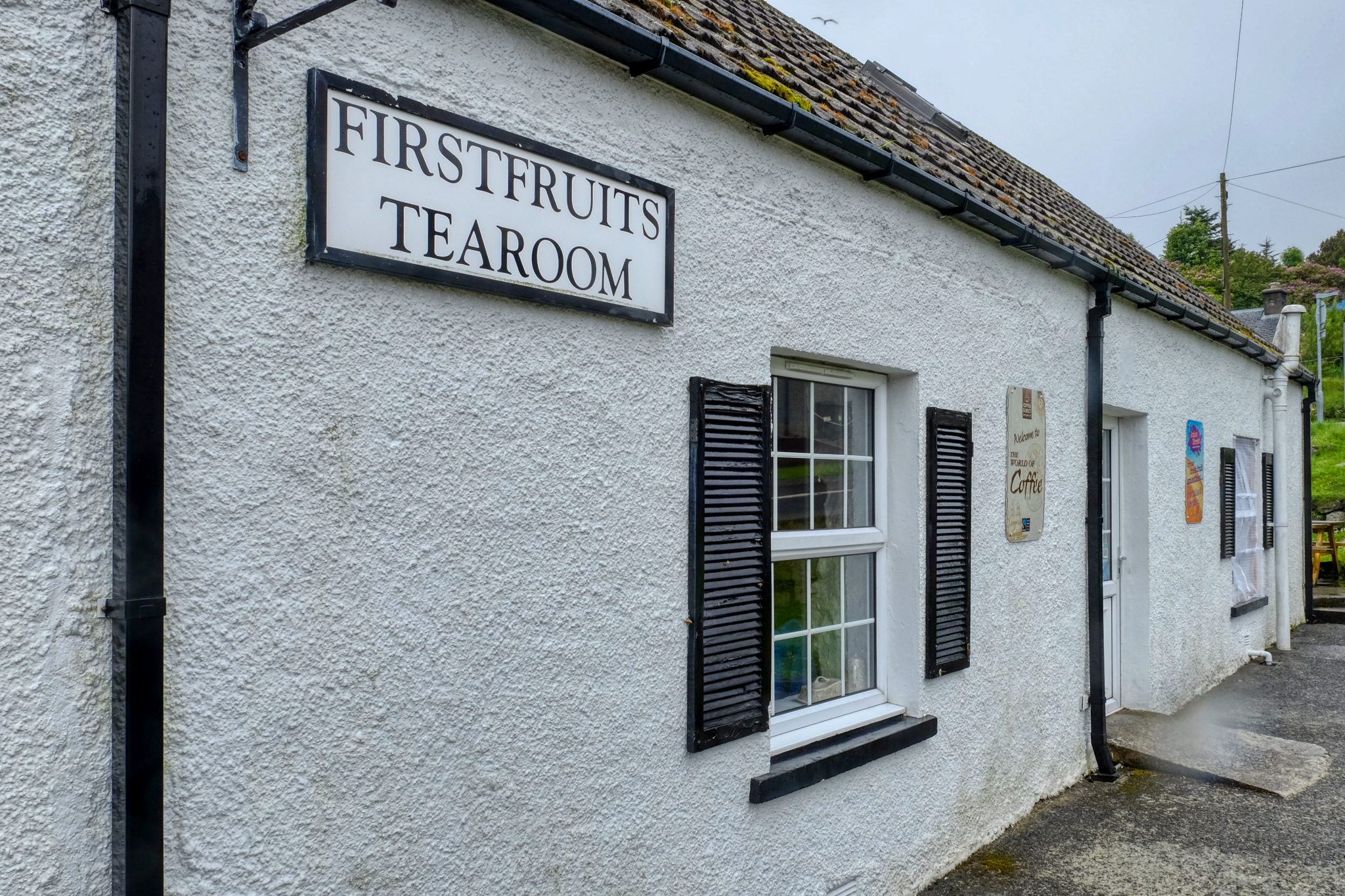 We eagerly explored the few small villages out on the islands. A nice cup of coffee and scones was very welcome.
We eagerly explored the few small villages out on the islands. A nice cup of coffee and scones was very welcome.
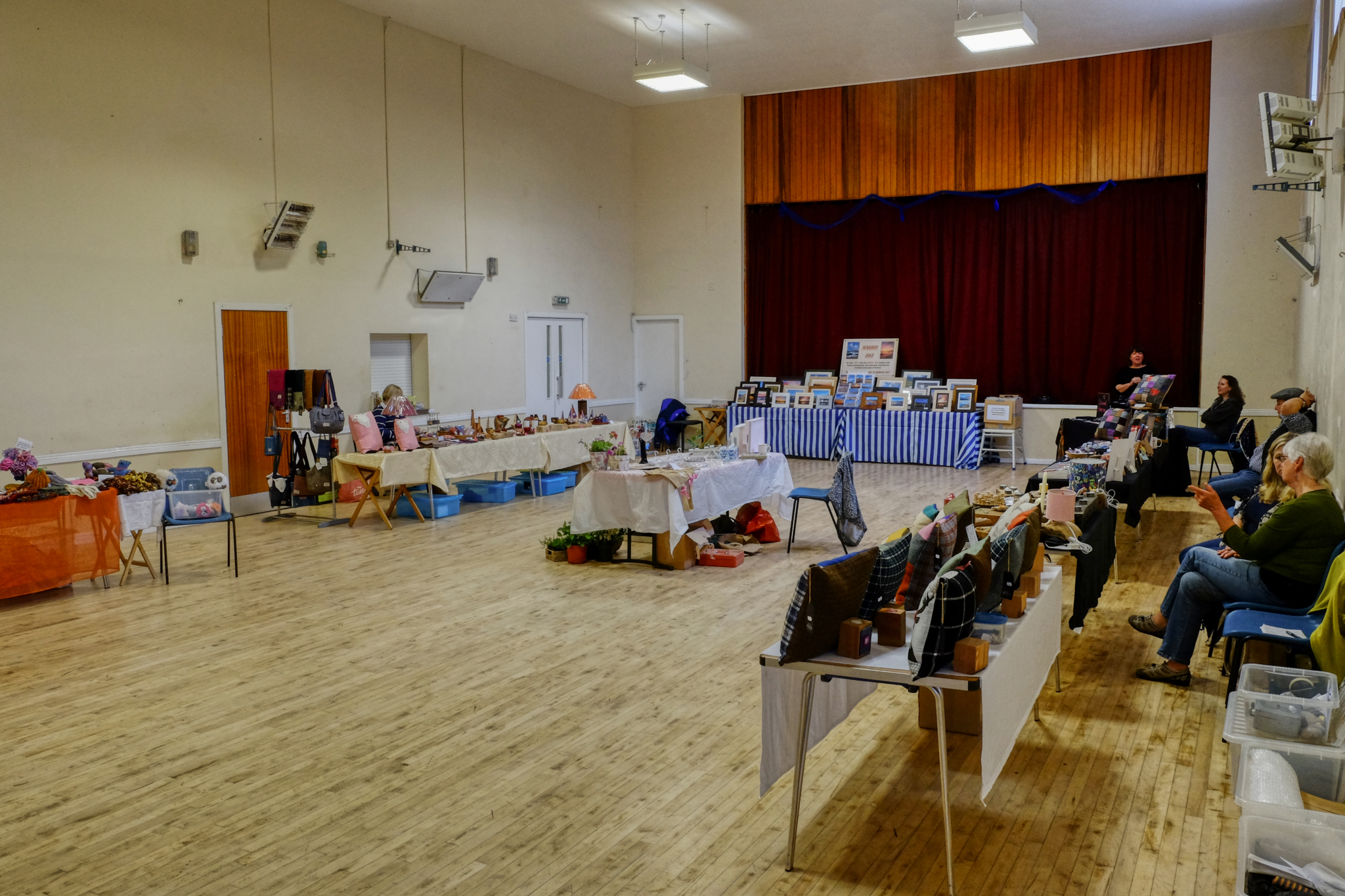 We always stop whenever we see a "craft sale" sign. You never know what amazing things you might find . . . and we have found and purchased many fantastic things on our world travels in these kinds of places . . . but not at this place. We always try to buy something, but could not find a thing we wanted here. Sorry ladies.
We always stop whenever we see a "craft sale" sign. You never know what amazing things you might find . . . and we have found and purchased many fantastic things on our world travels in these kinds of places . . . but not at this place. We always try to buy something, but could not find a thing we wanted here. Sorry ladies.
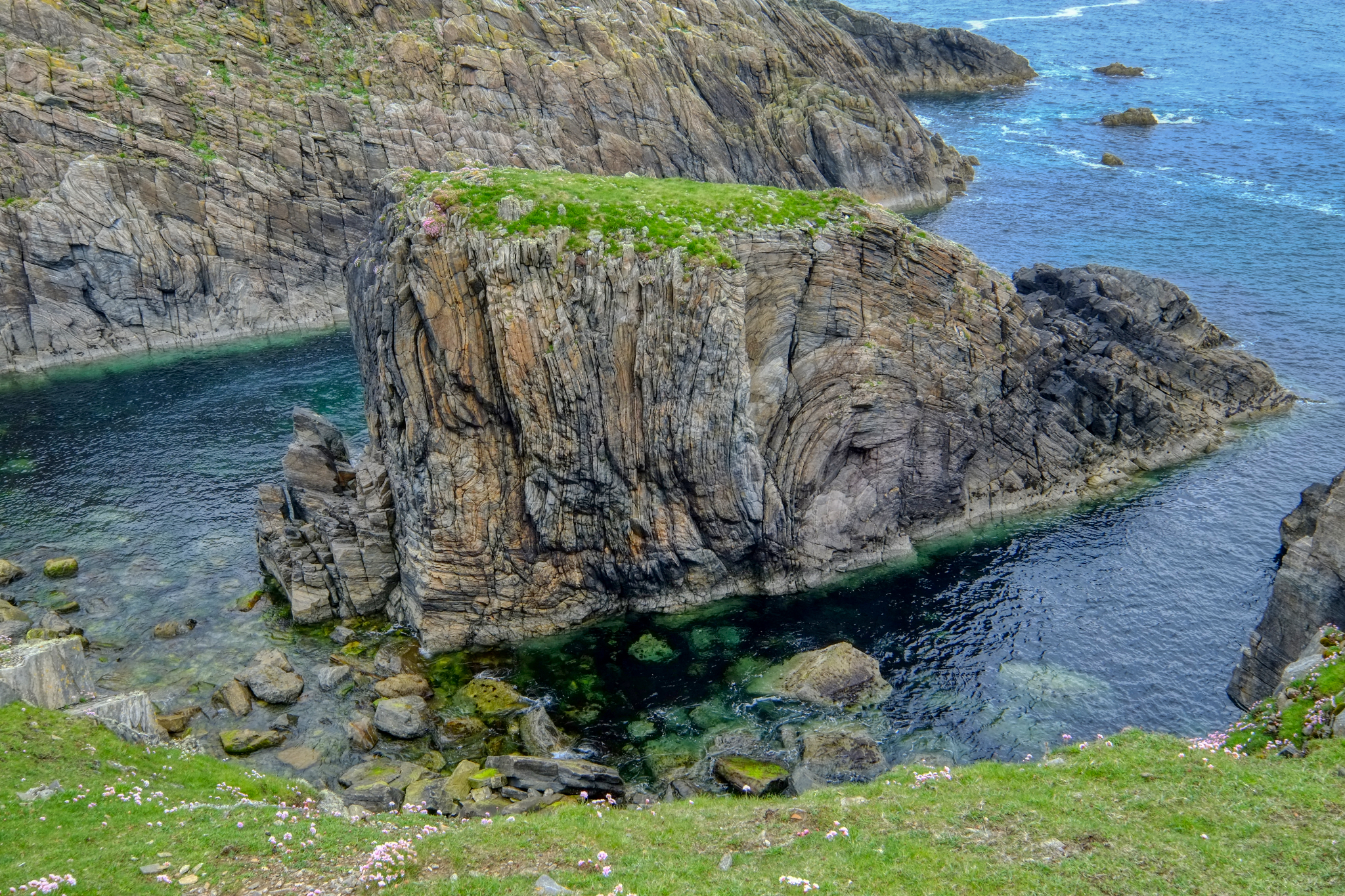
After five days on the small roads, we eventually made it to the very tip top of the chain of islands that make up the Outer Hebrides. And we were not disappointed!
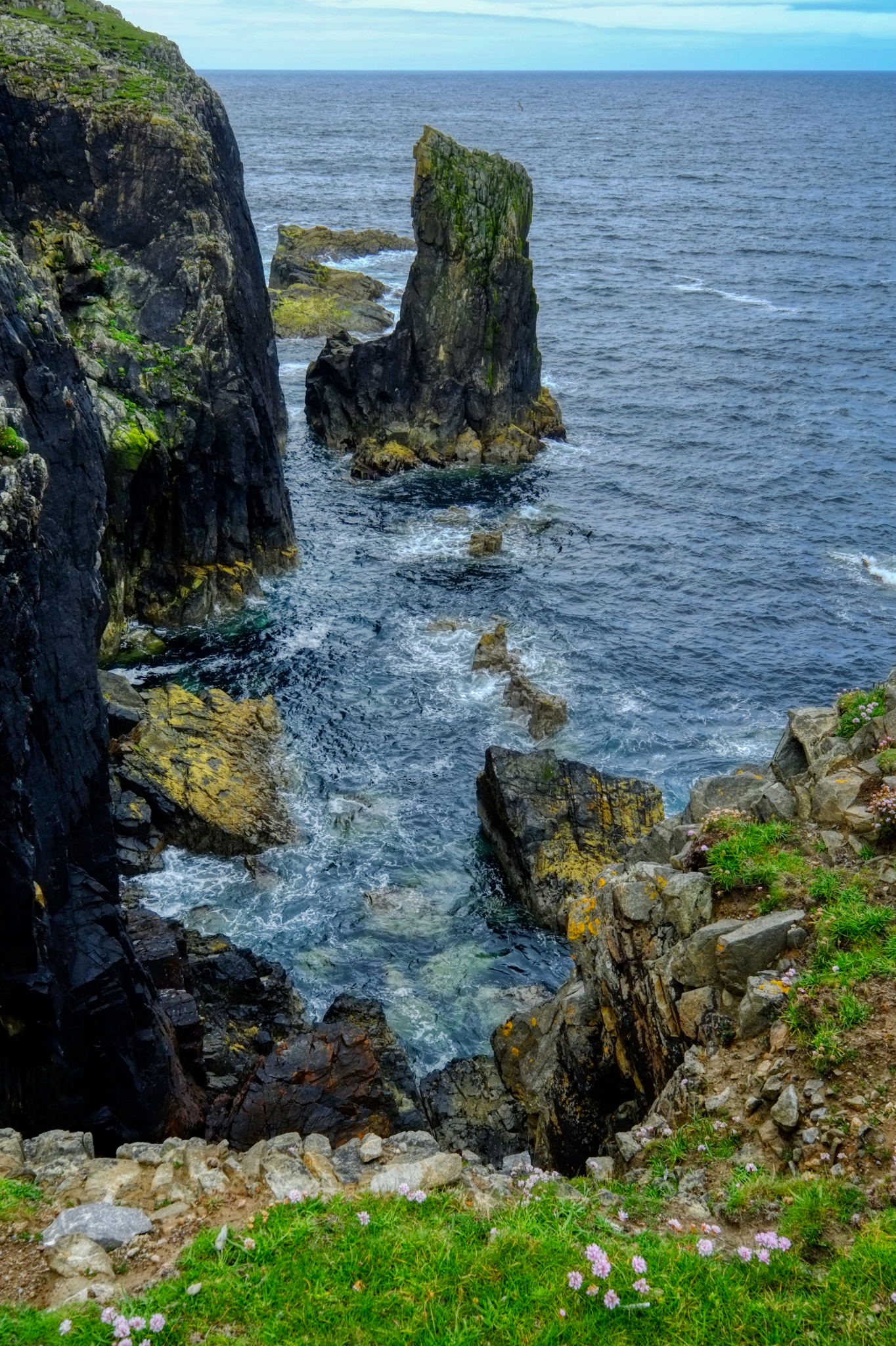 Fantastic cliff top views at the northernmost tip of the Hebrides.
Fantastic cliff top views at the northernmost tip of the Hebrides.
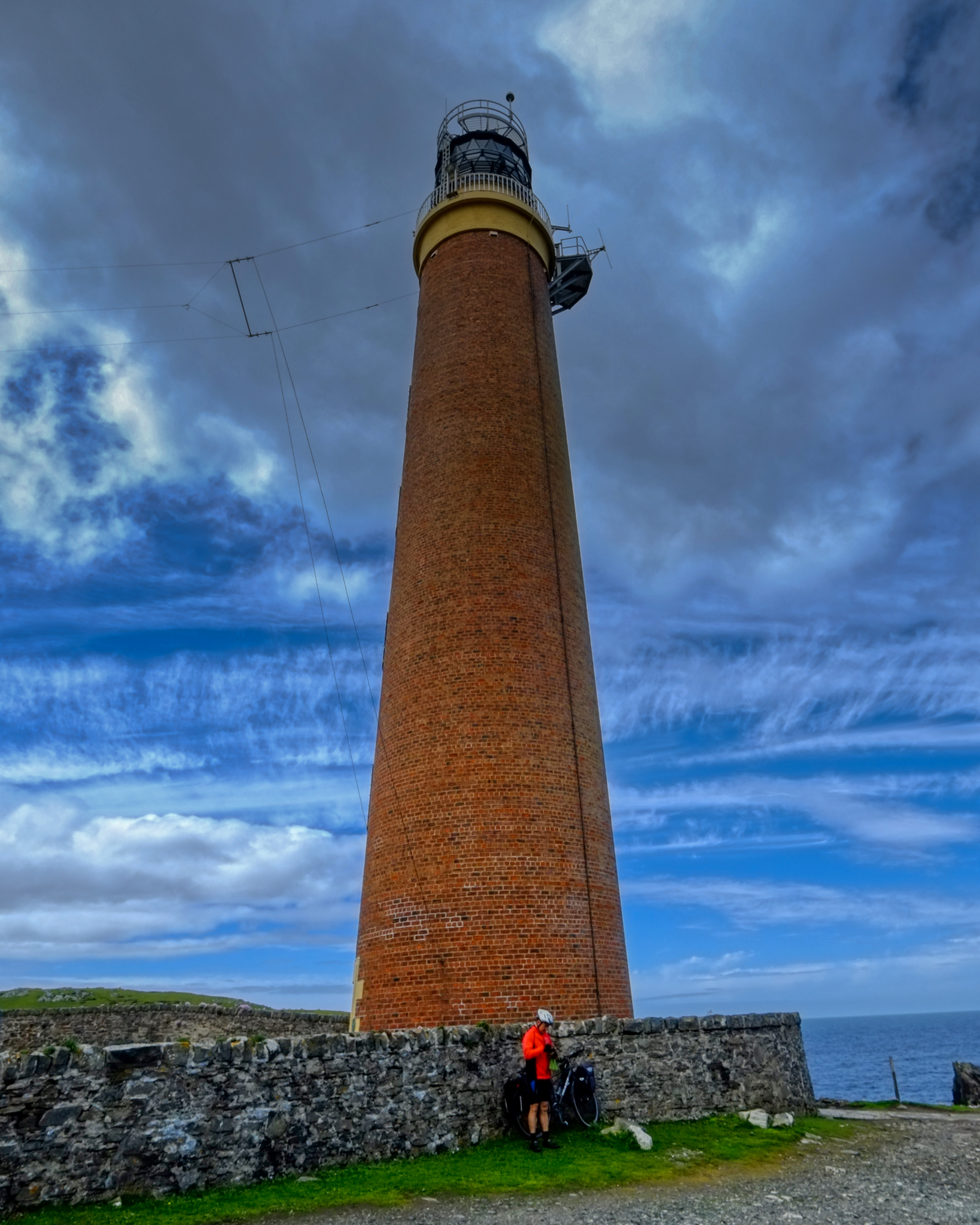 A lighthouse sits at the tip of the Isle of Lewis and Harris. This man rode his bicycle all the way from his home in London, England. He was going to turn around here and ride back down the east coast to get home.
A lighthouse sits at the tip of the Isle of Lewis and Harris. This man rode his bicycle all the way from his home in London, England. He was going to turn around here and ride back down the east coast to get home.
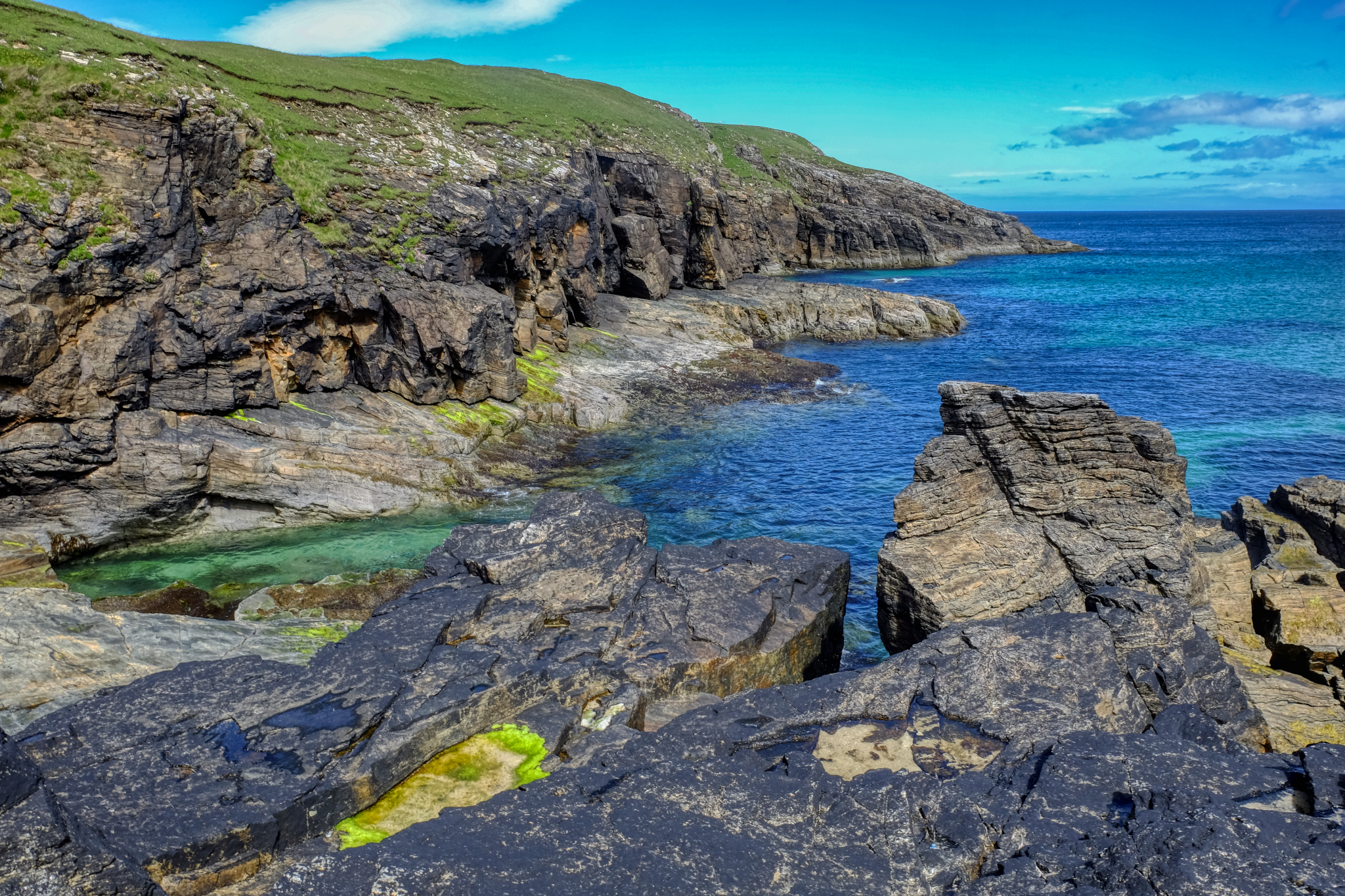 We drove back along the north coast as much as possible toward Stornaway and our ferry back to the mainland of Scotland.
We drove back along the north coast as much as possible toward Stornaway and our ferry back to the mainland of Scotland.
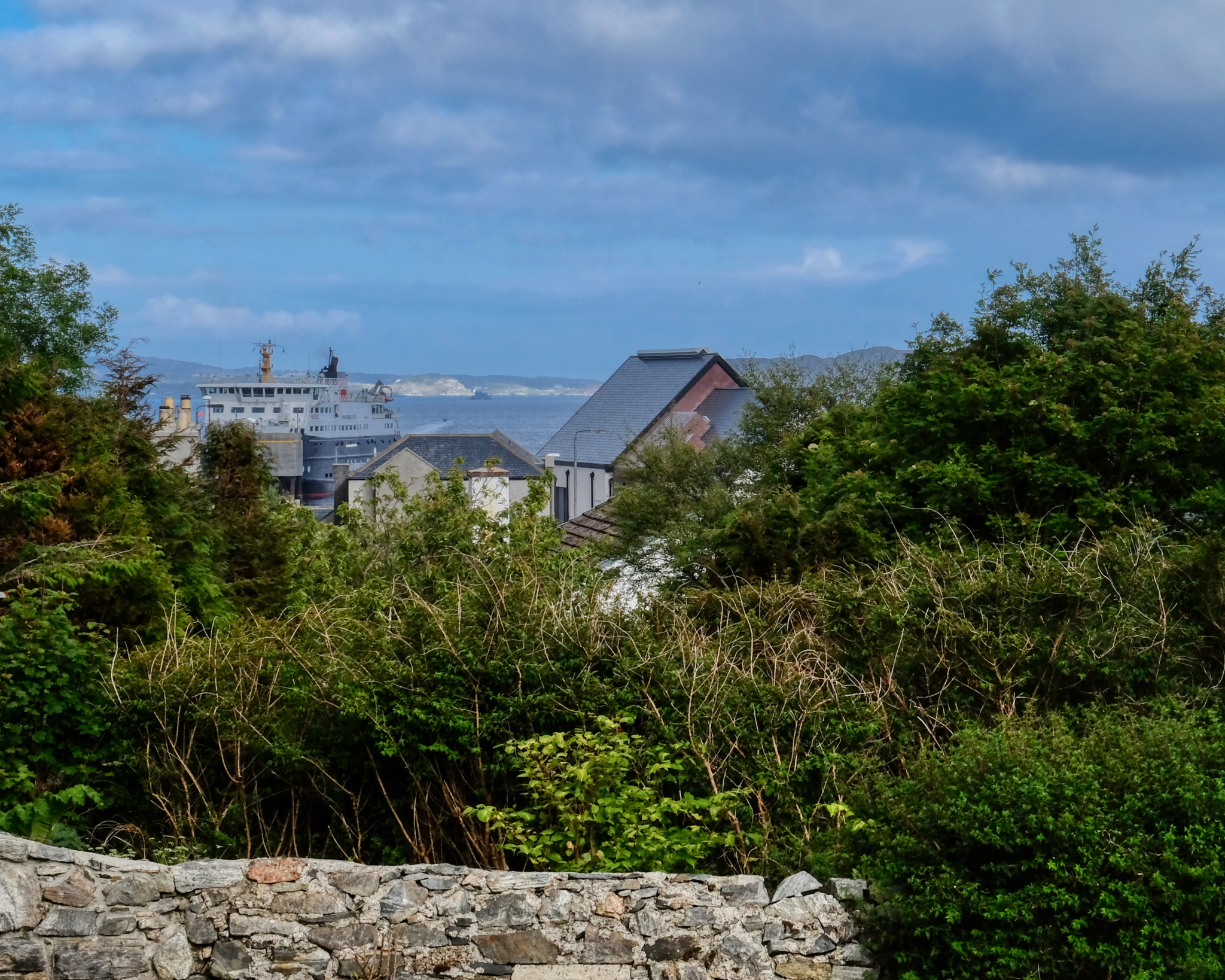 In Stornoway with our waiting ferry . . . but not until morning of the next day.
In Stornoway with our waiting ferry . . . but not until morning of the next day.
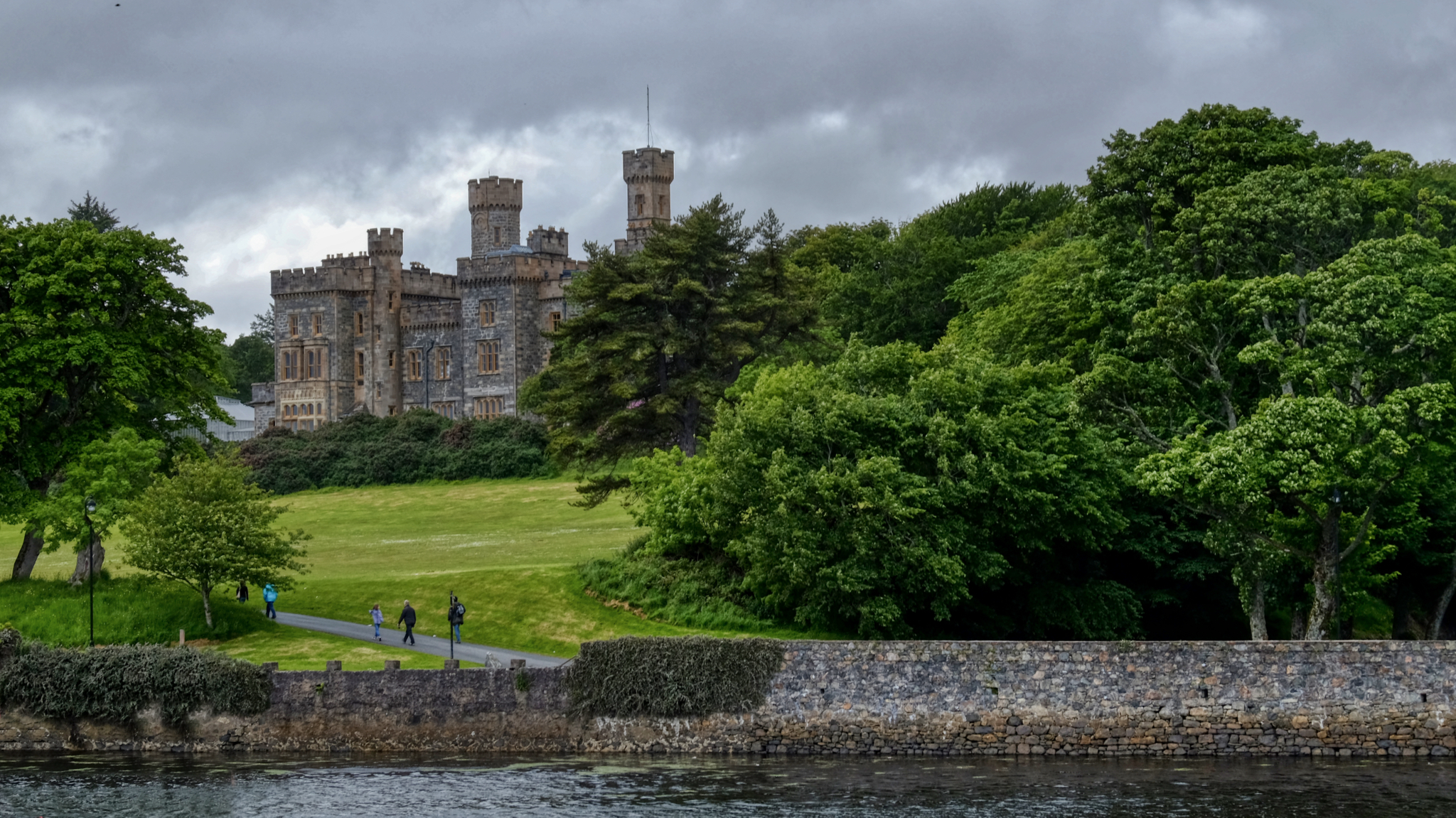 Lews Castle on Stornoway yacht harbour.
Lews Castle on Stornoway yacht harbour.
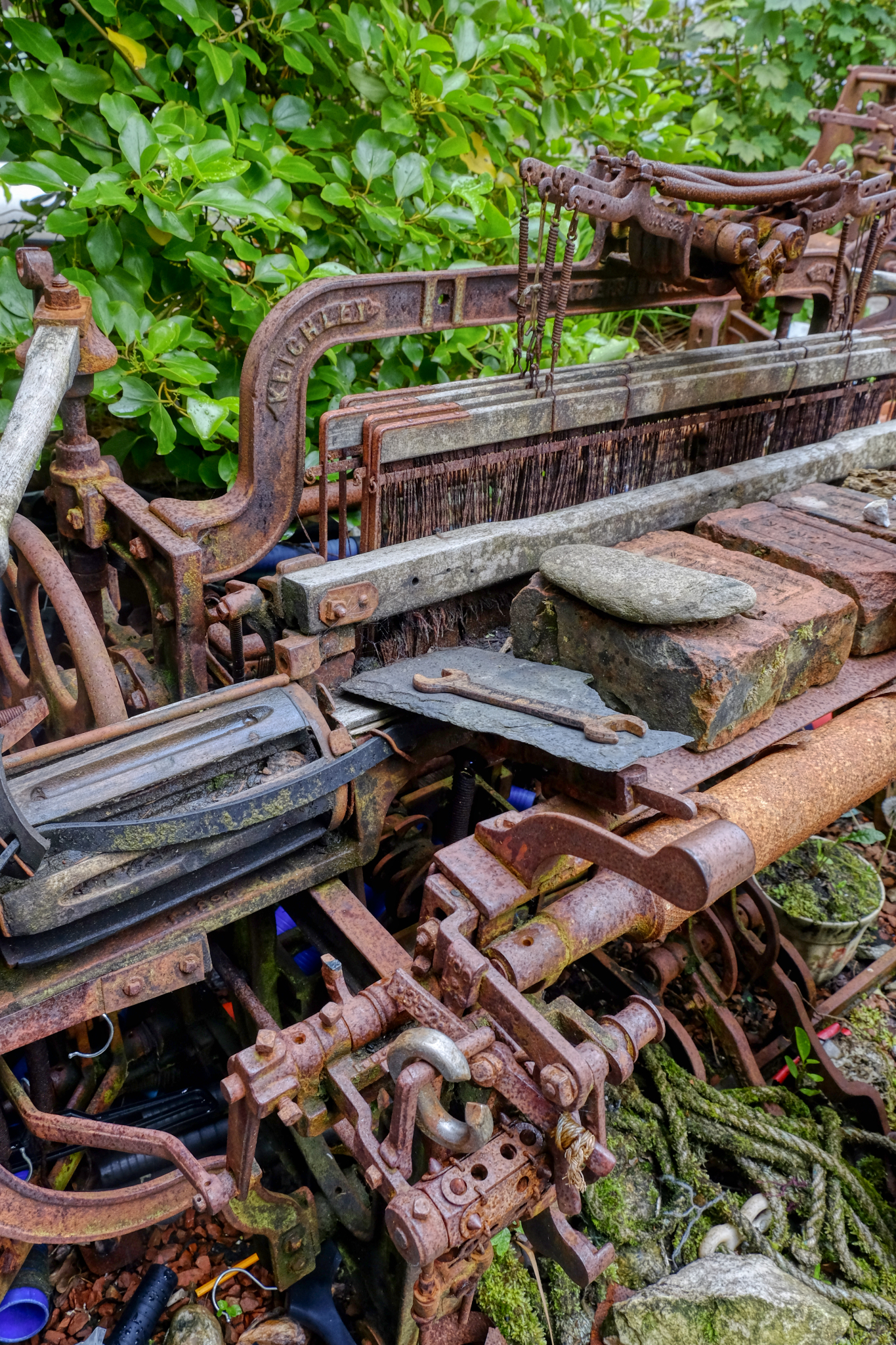 We explored the small town of Stornoway. I loved this old weathered rusty loom sitting outside a tweed museum.
We explored the small town of Stornoway. I loved this old weathered rusty loom sitting outside a tweed museum.
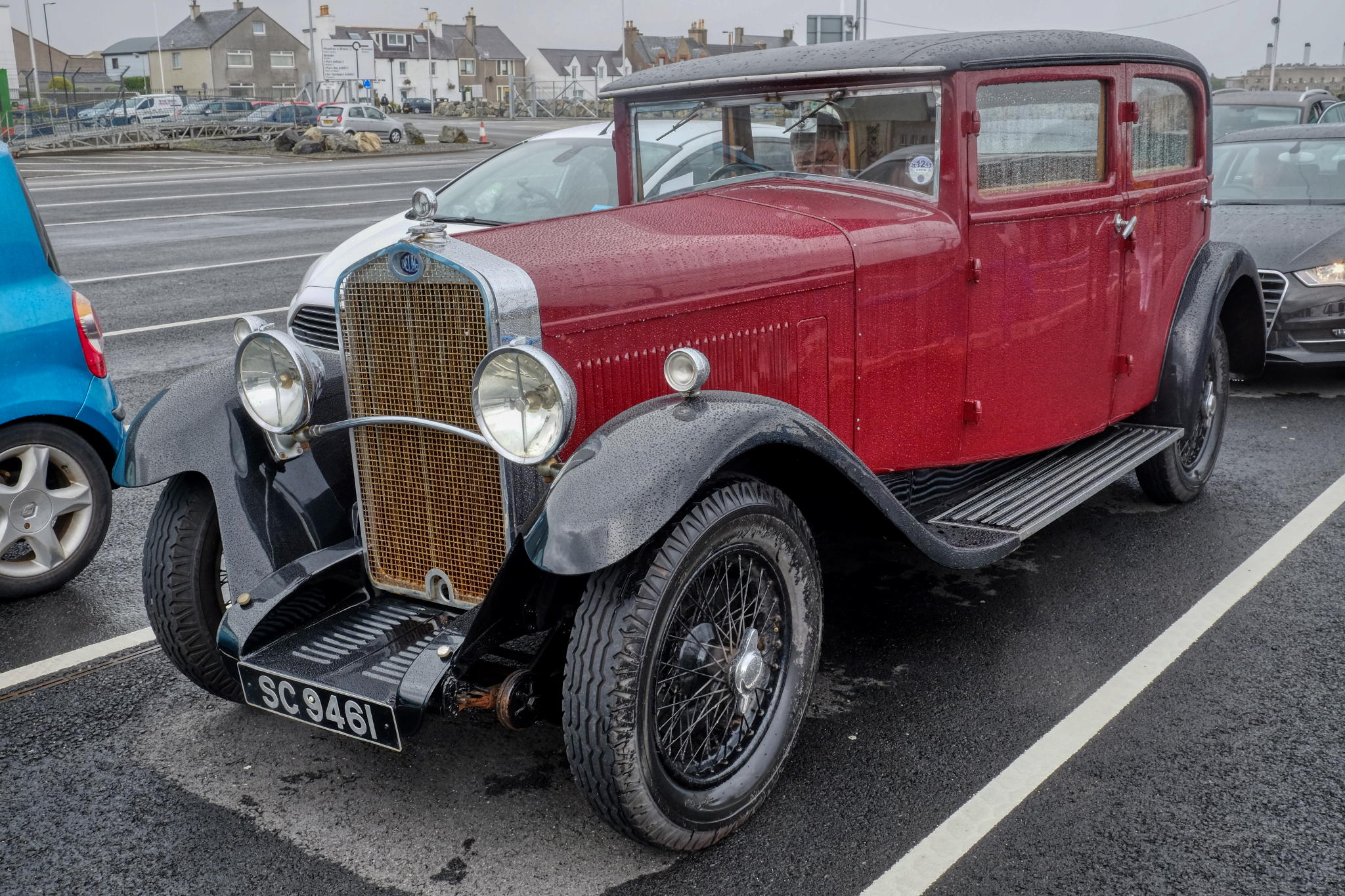 The next morning we joined the line-up at the ferry terminal for our passage home. Again, in the rain, there were many old classic cars waiting, including this Delage.
The next morning we joined the line-up at the ferry terminal for our passage home. Again, in the rain, there were many old classic cars waiting, including this Delage.
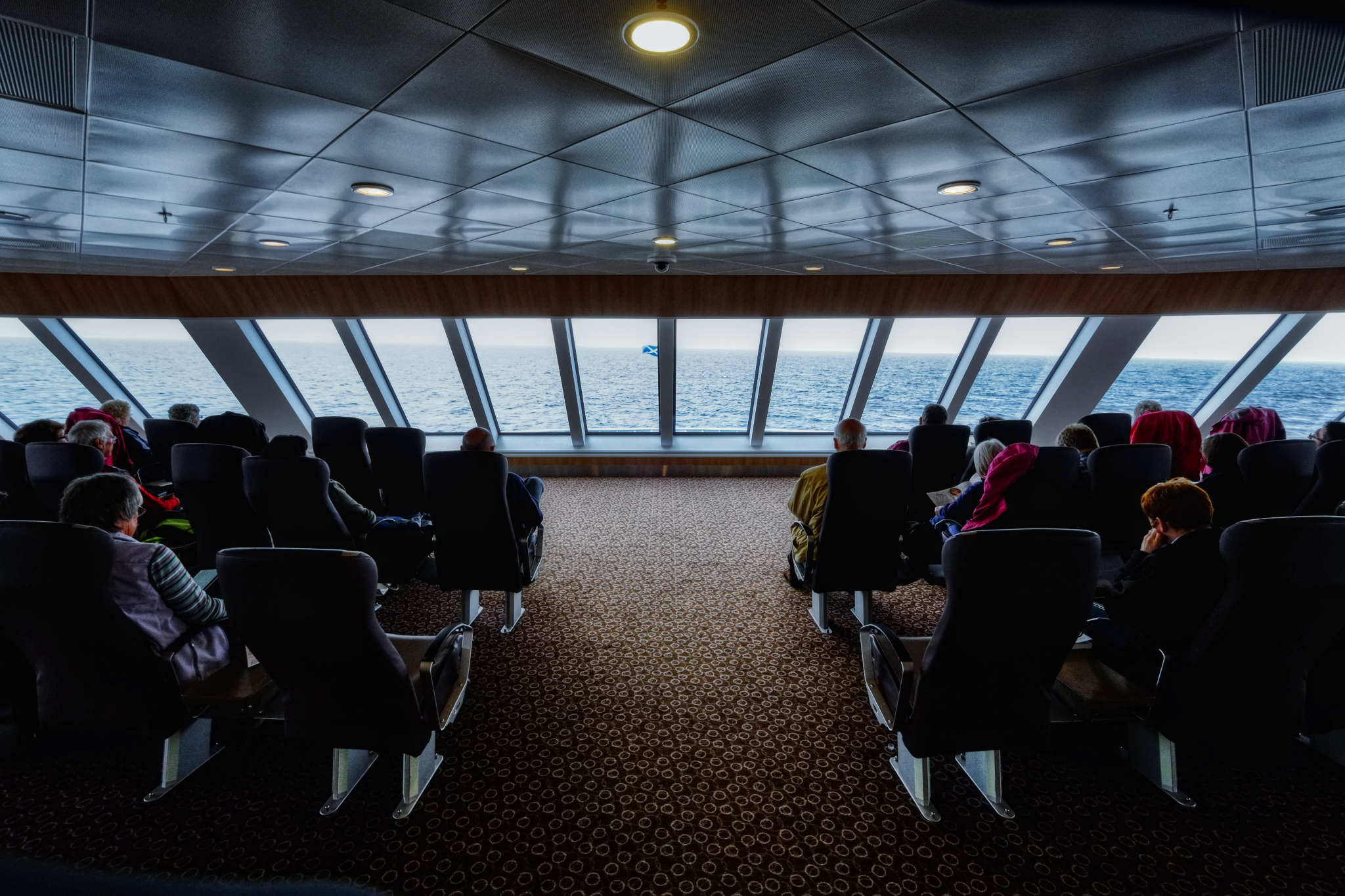 Heading home on the big ferry.
Heading home on the big ferry.
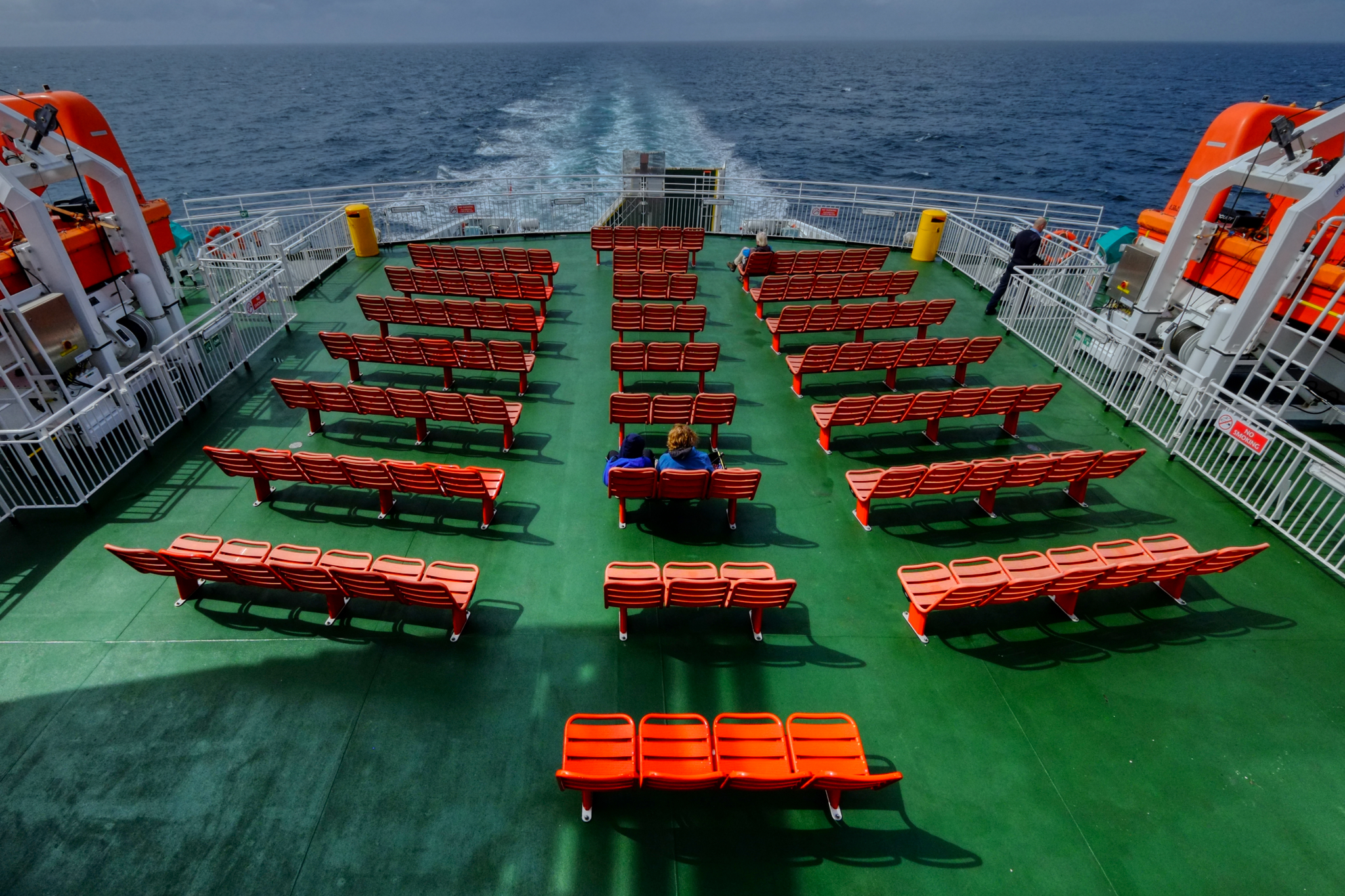 I spent most of my time on the return ferry trip sitting out n the wind on the aft deck. Glorious.
I spent most of my time on the return ferry trip sitting out n the wind on the aft deck. Glorious.
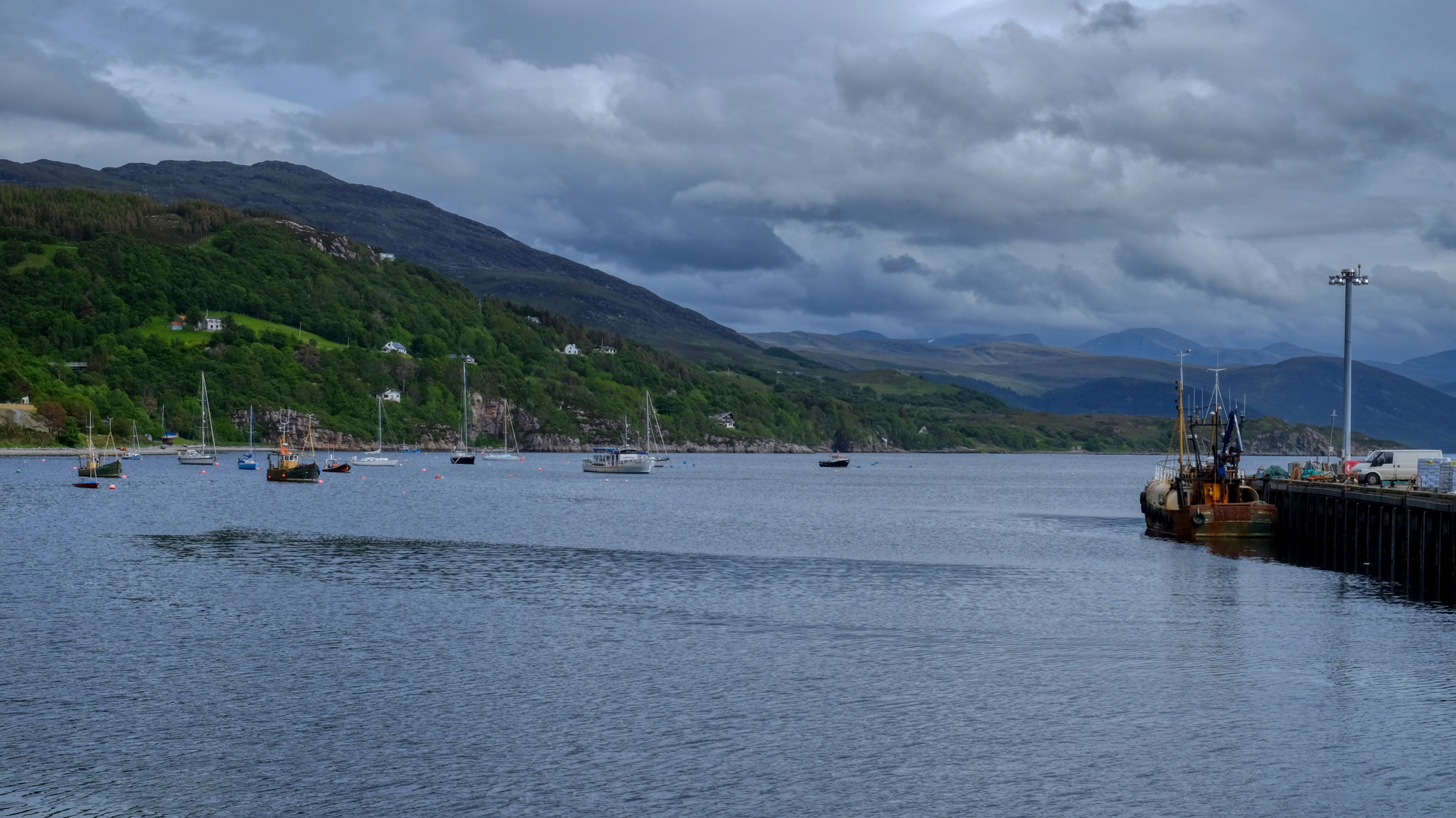 Arriving in Ullapool Harbour after a 3 hour cruise.
Arriving in Ullapool Harbour after a 3 hour cruise.
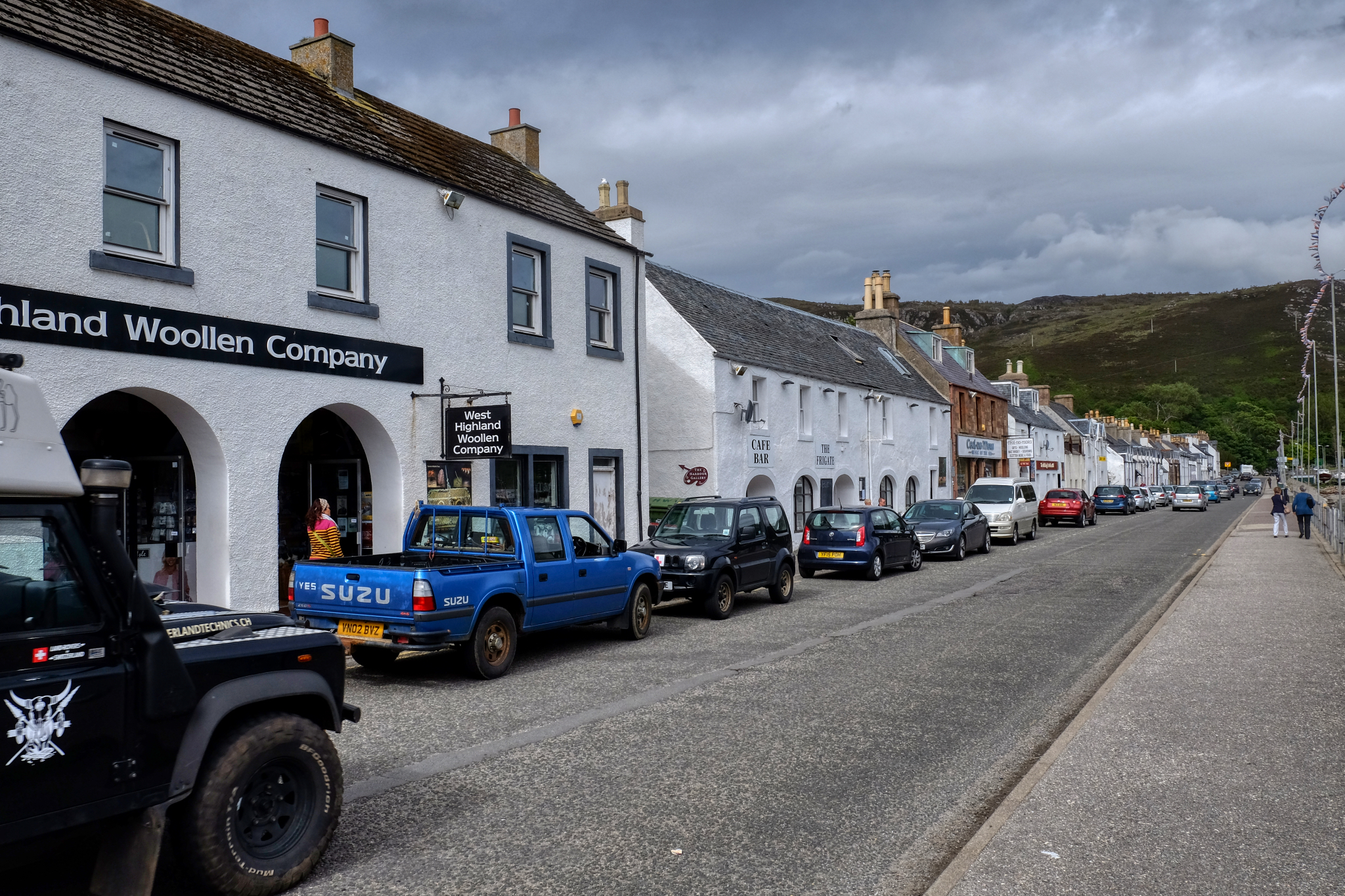 Harbour Street Ullapool.
Harbour Street Ullapool.
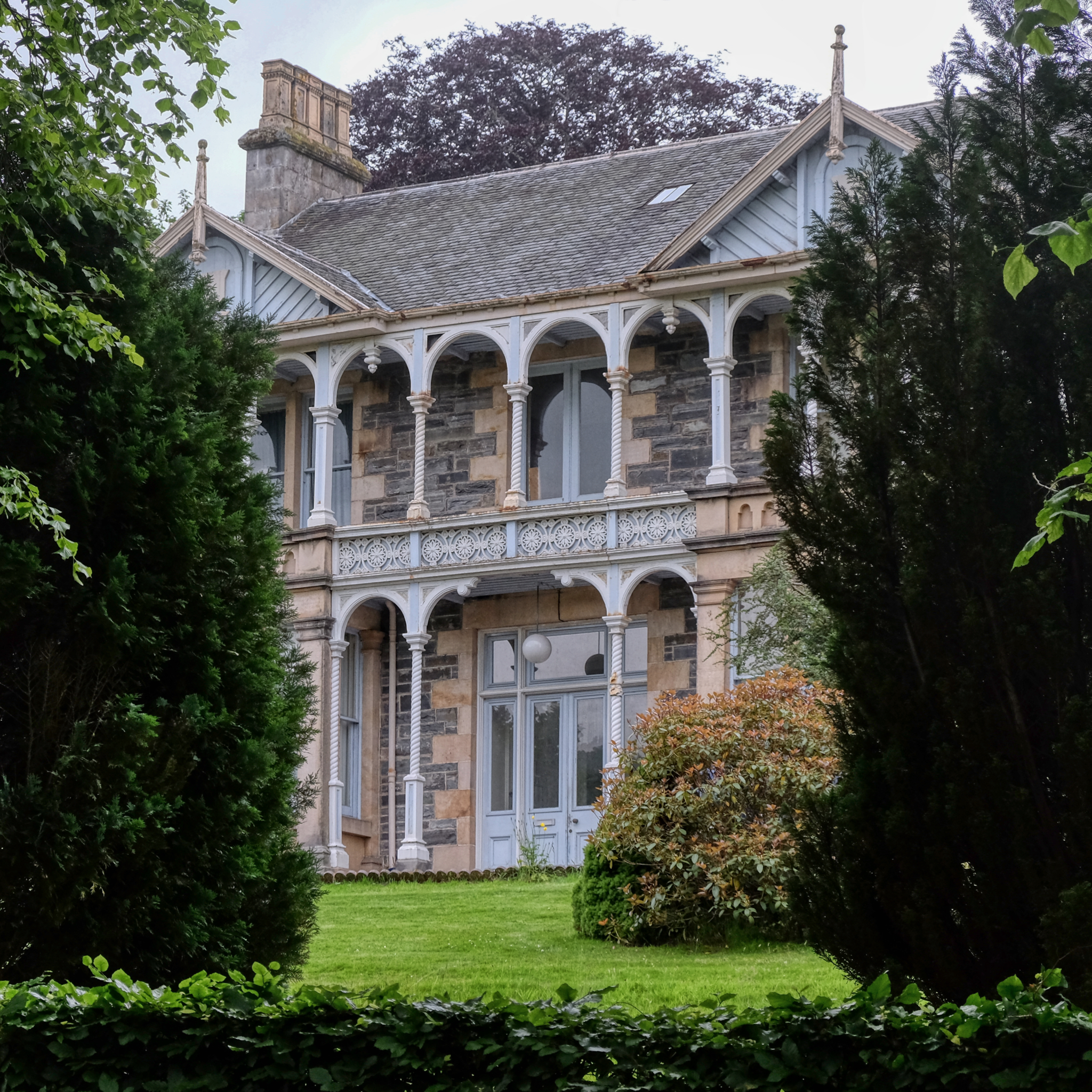 We stopped halfway home between Ullapool and Aberdeen at a rural hotel that turned out to be on a tour bus company hotel with a HUGE dining room full of French and Hungarian bus tourists. It was loud and fun!
We stopped halfway home between Ullapool and Aberdeen at a rural hotel that turned out to be on a tour bus company hotel with a HUGE dining room full of French and Hungarian bus tourists. It was loud and fun!
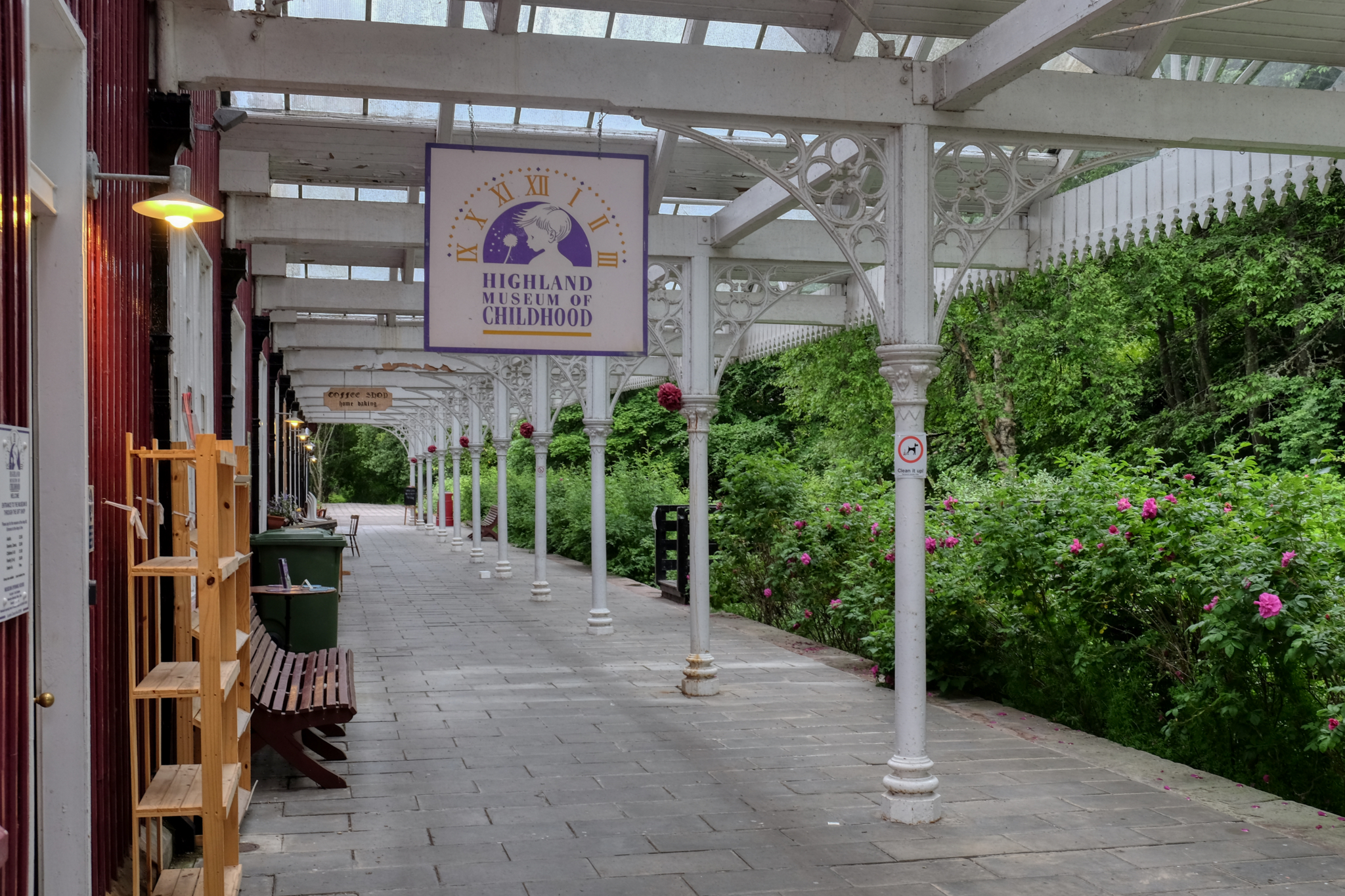 We walked around the small village near the tourist hotel and discovered the Highland Museum of Childhood . . . an interesting name. It was closed . . . like my childhood.
We walked around the small village near the tourist hotel and discovered the Highland Museum of Childhood . . . an interesting name. It was closed . . . like my childhood.
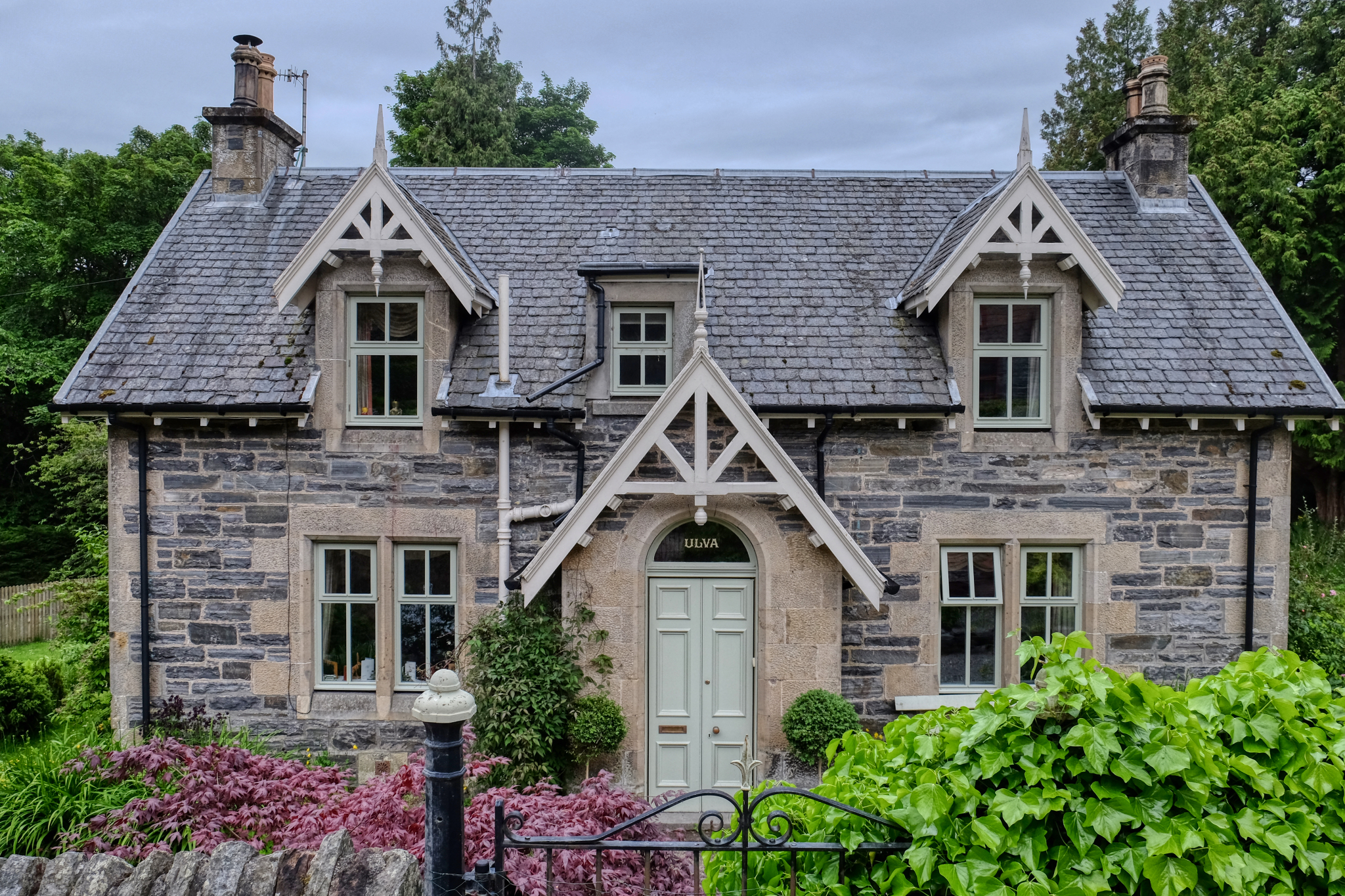 All the houses in the village were named. Ulva . . . named after an island in the Inner Hebrides of Scotland, off the west coast of the Isle of Mull.
All the houses in the village were named. Ulva . . . named after an island in the Inner Hebrides of Scotland, off the west coast of the Isle of Mull.
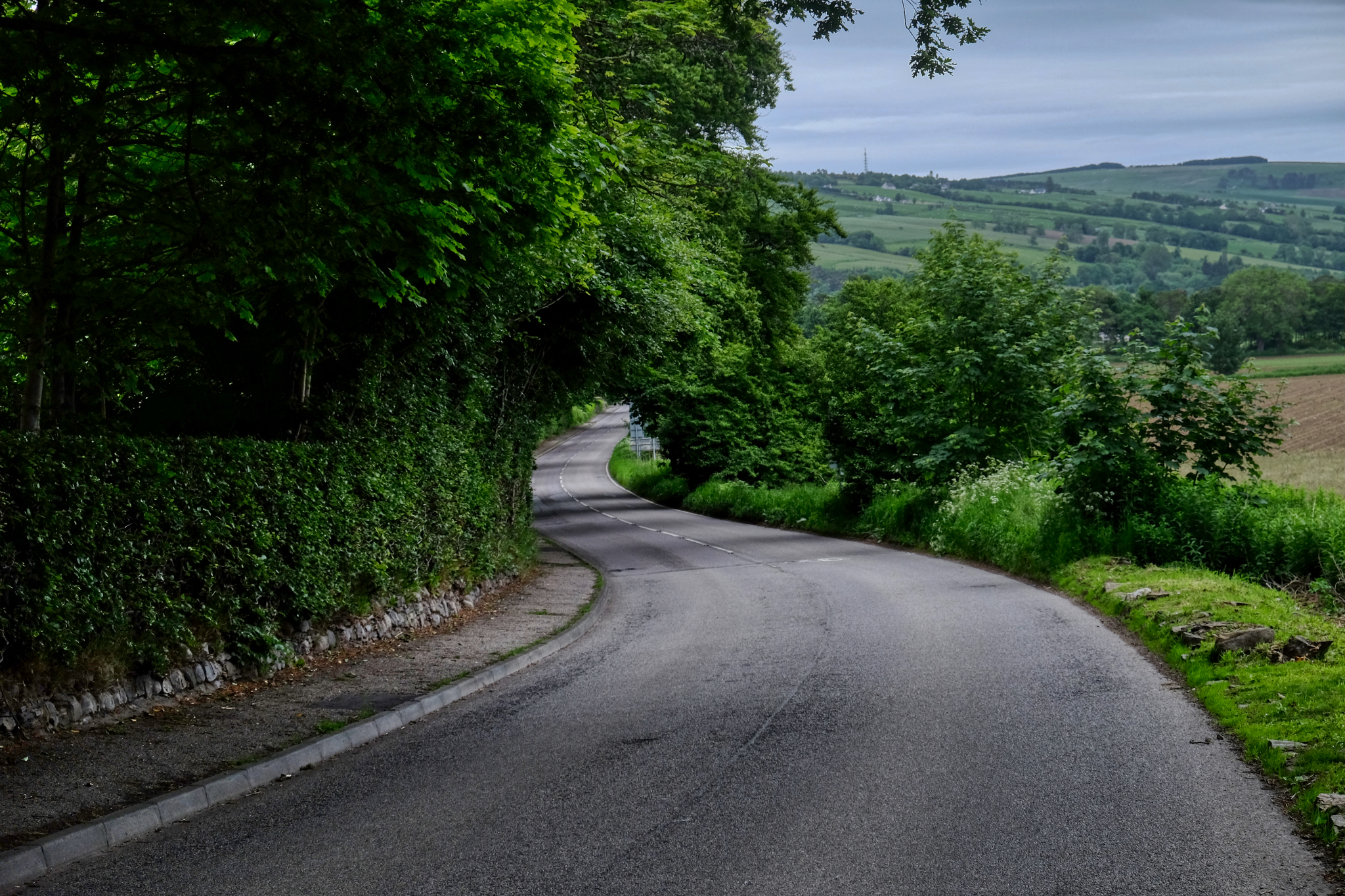 The next morning we were off down the Scottish country roads toward our home in Aberdeen.
The next morning we were off down the Scottish country roads toward our home in Aberdeen.
